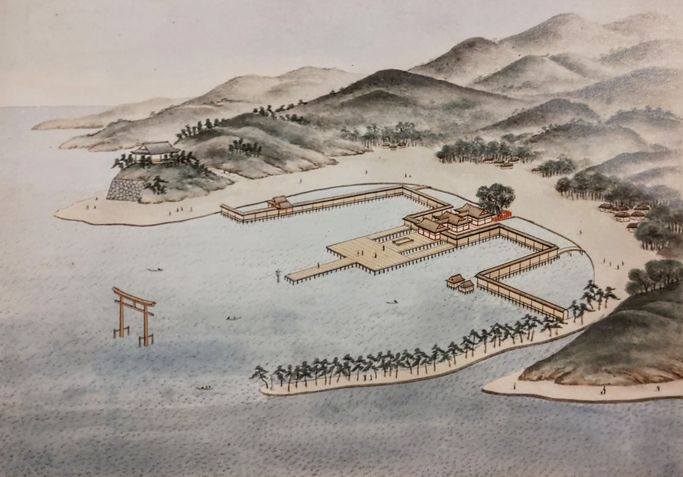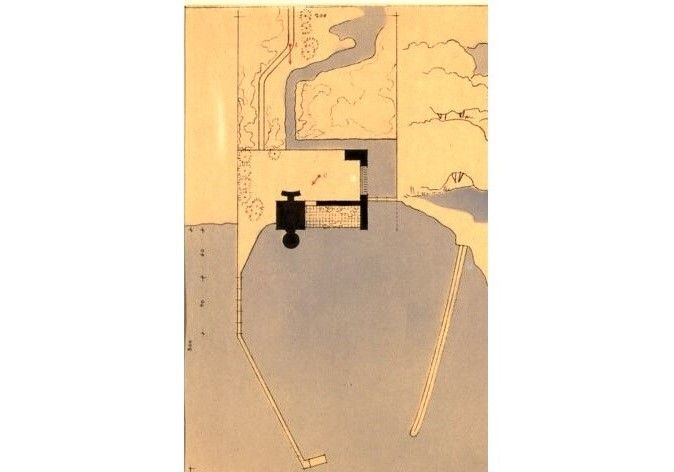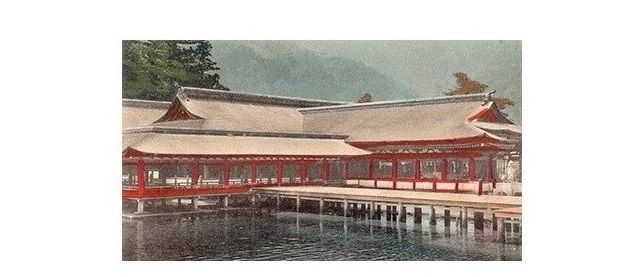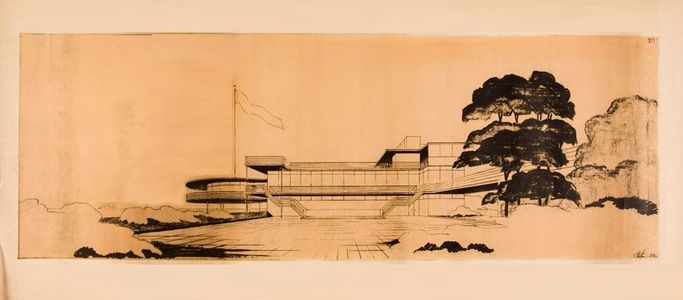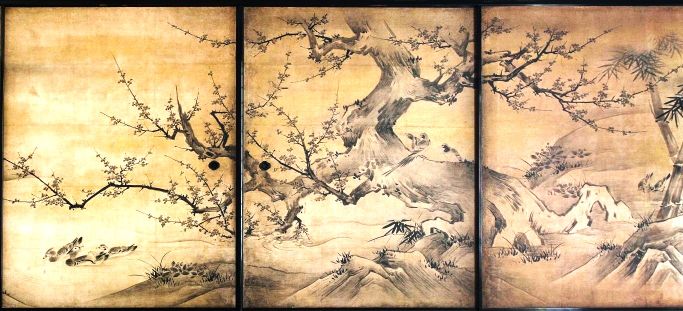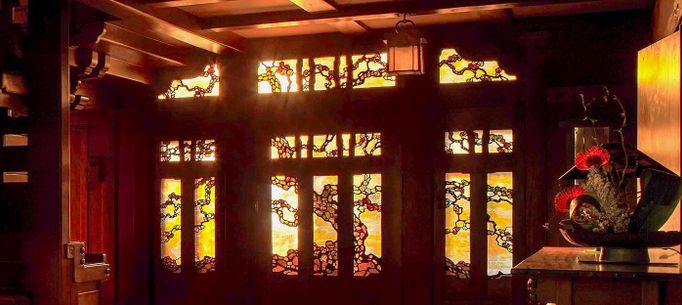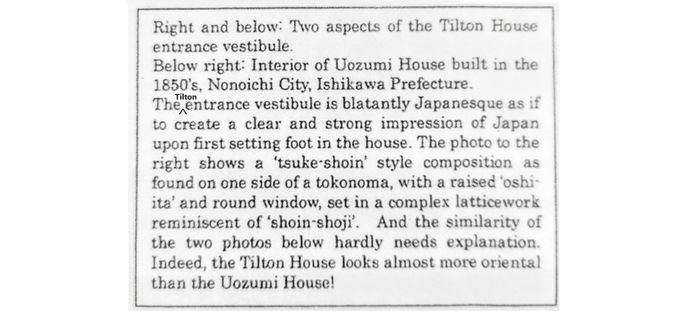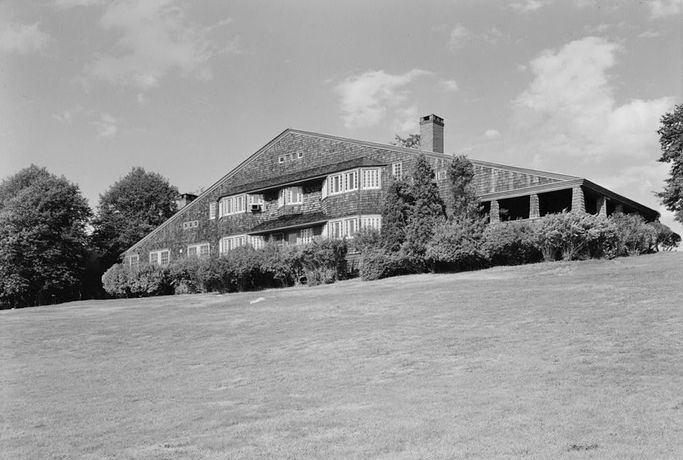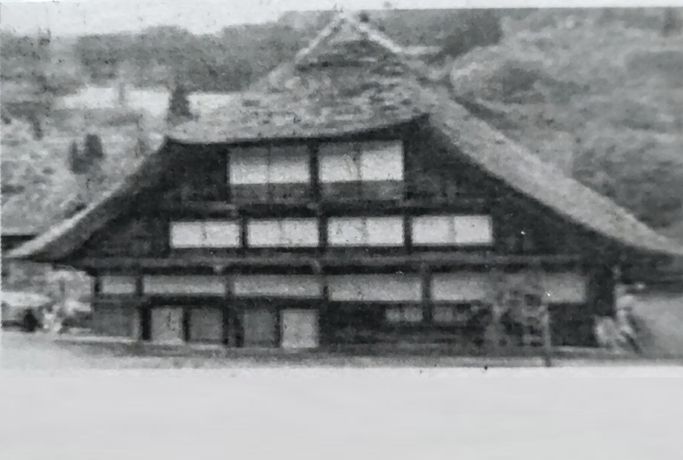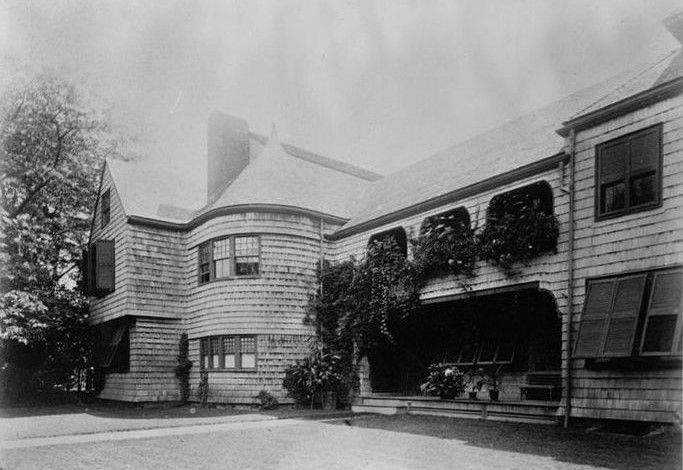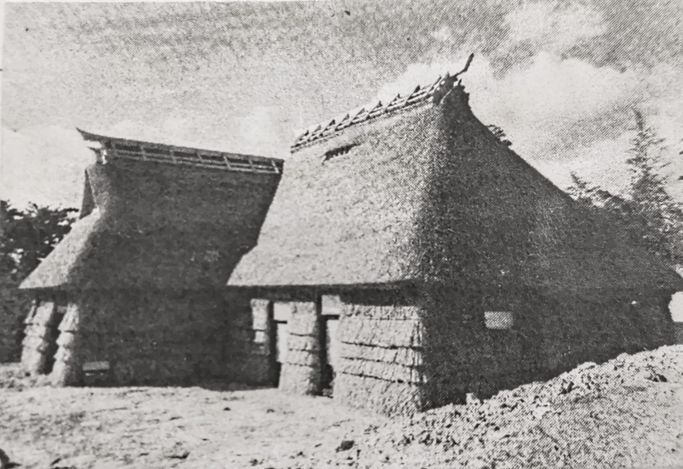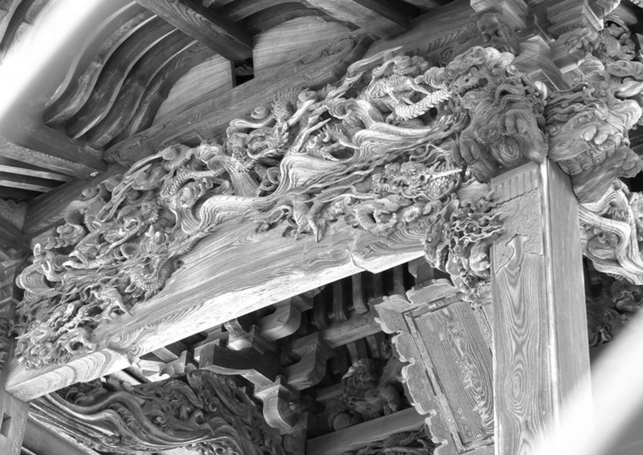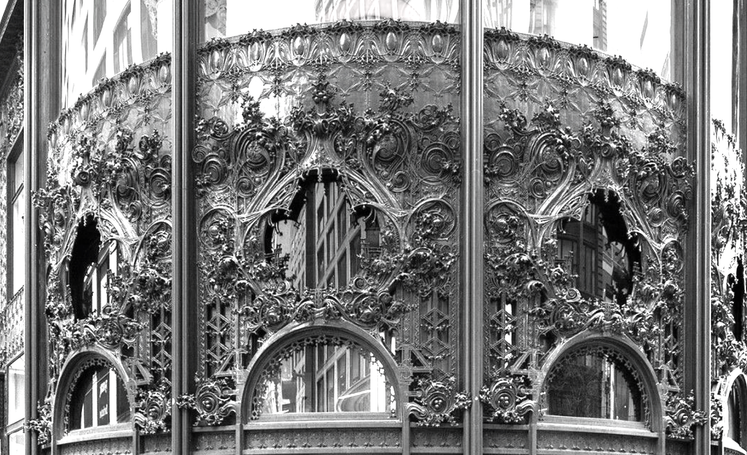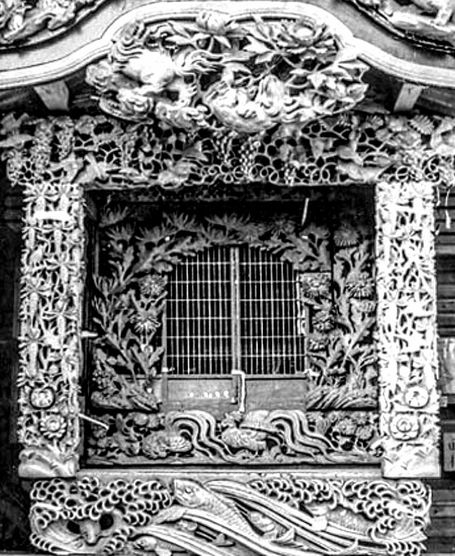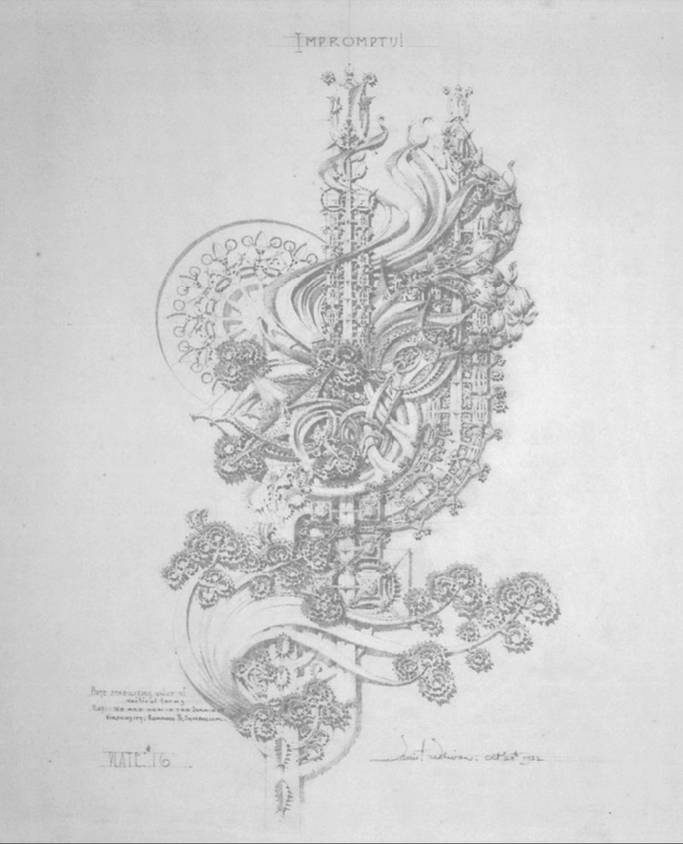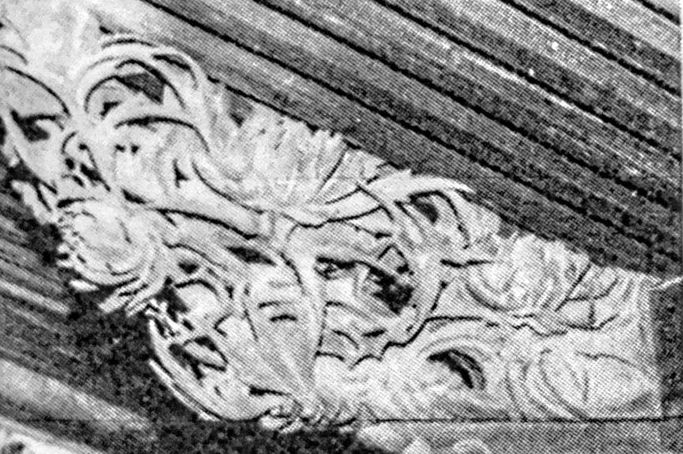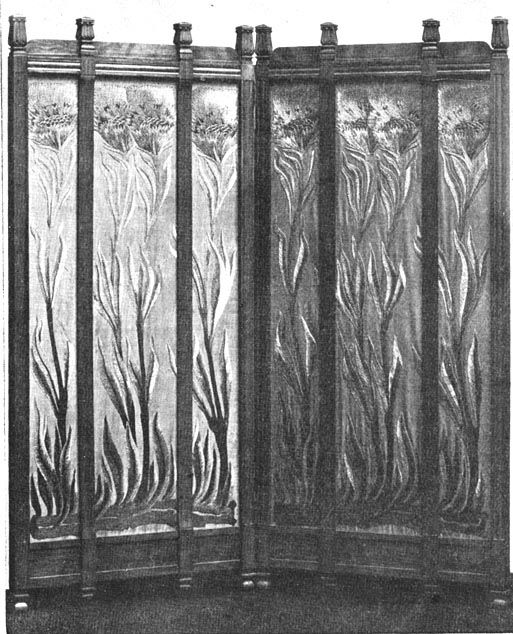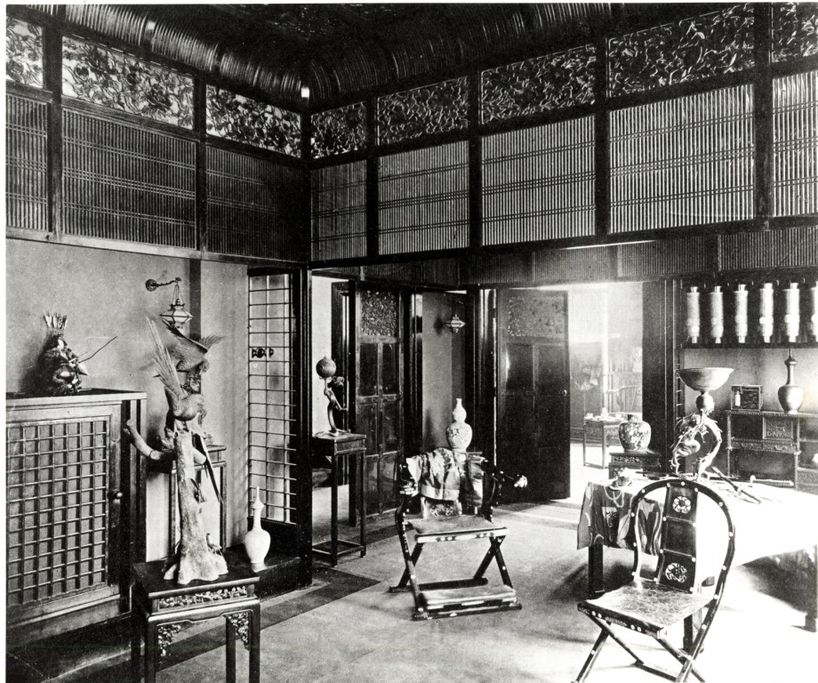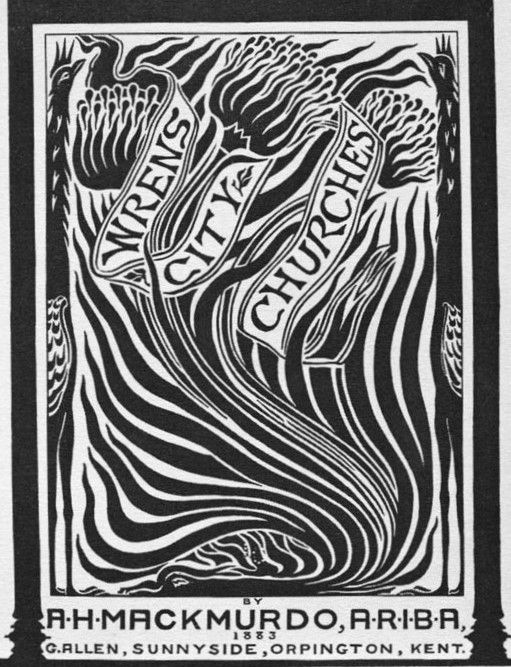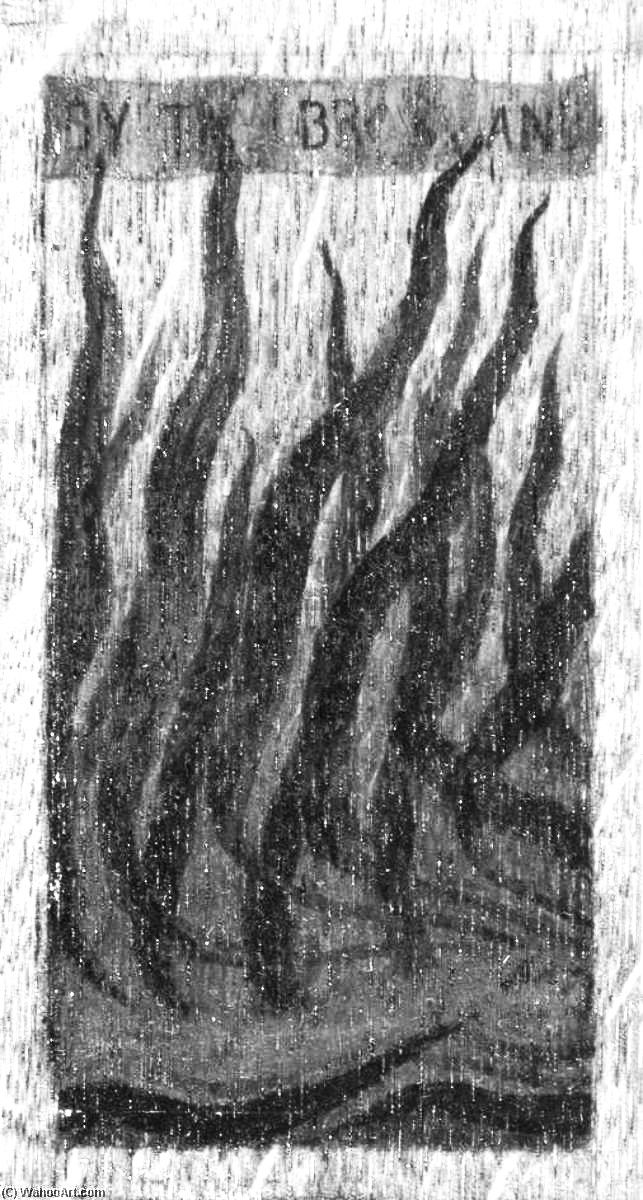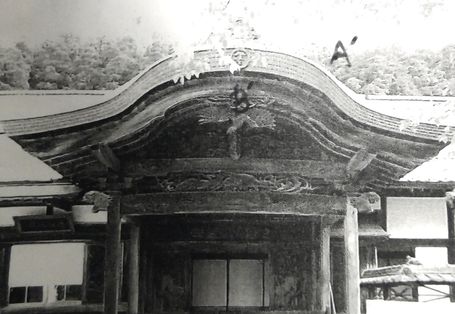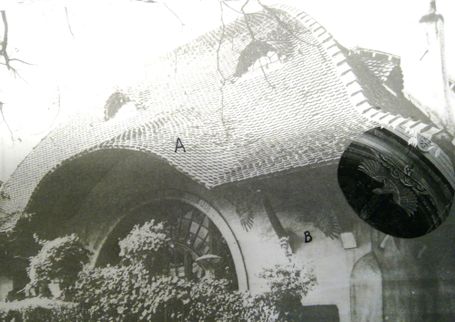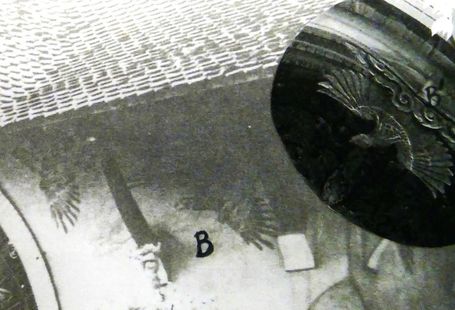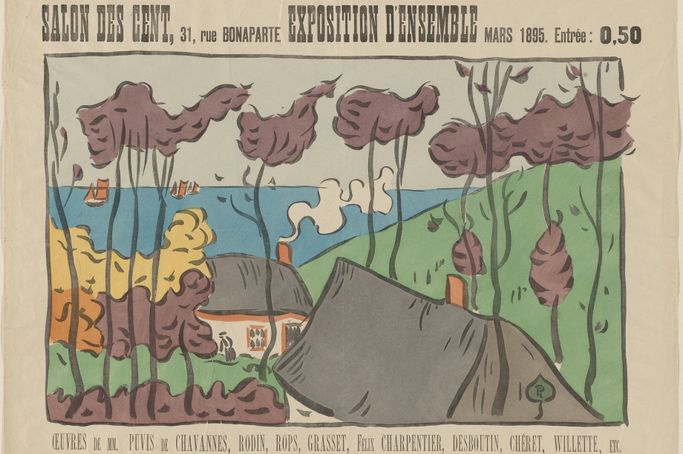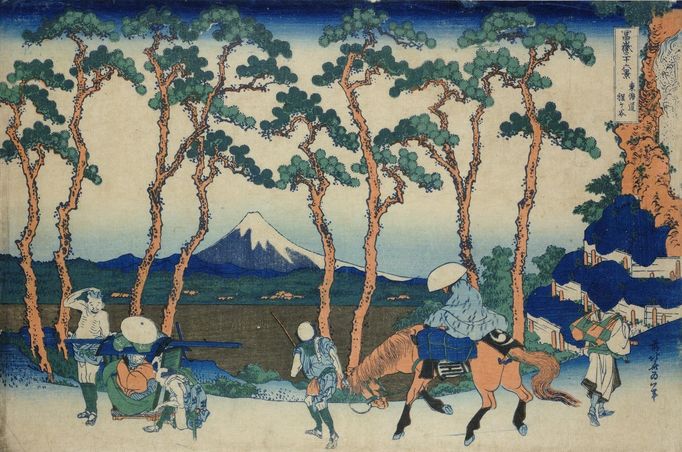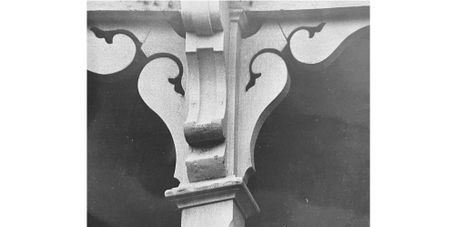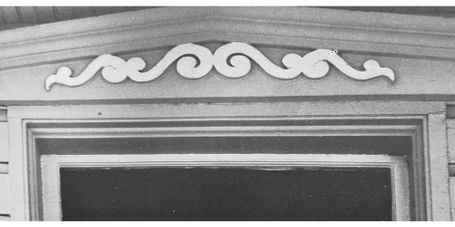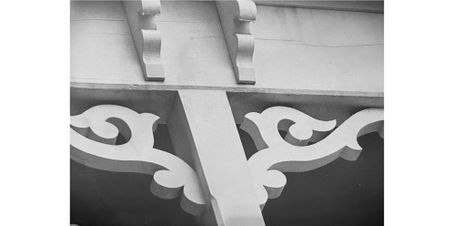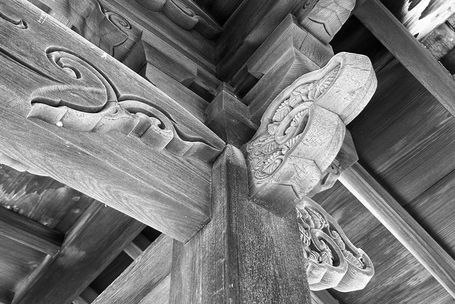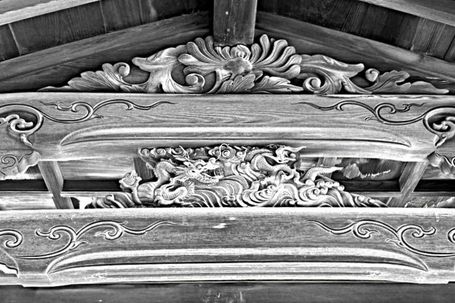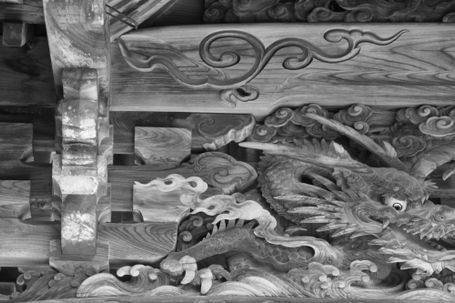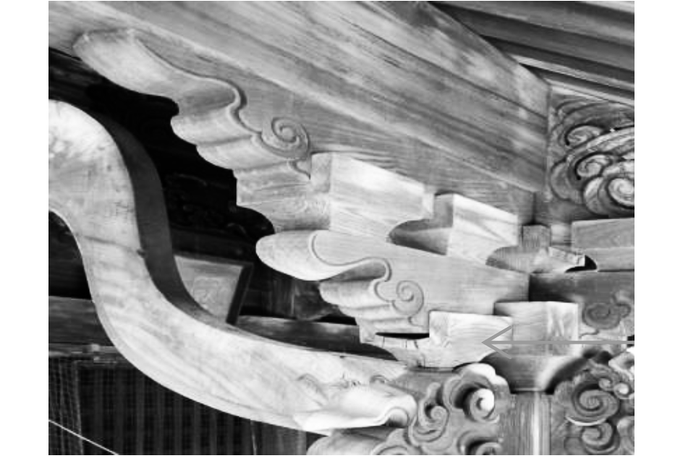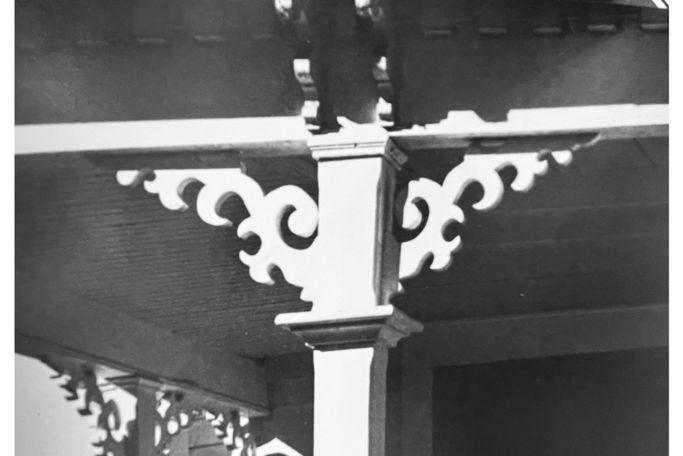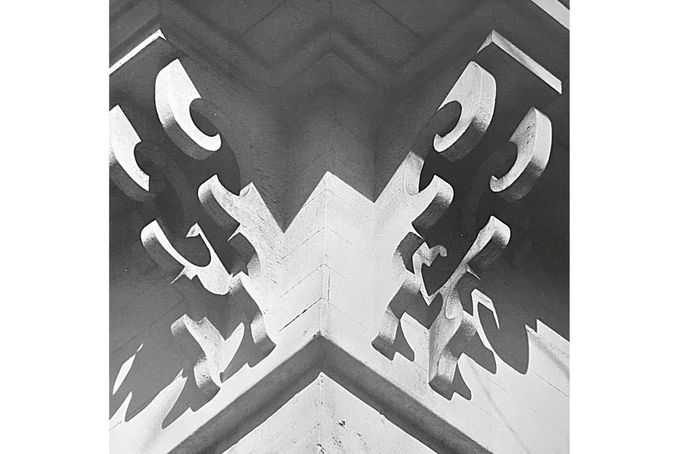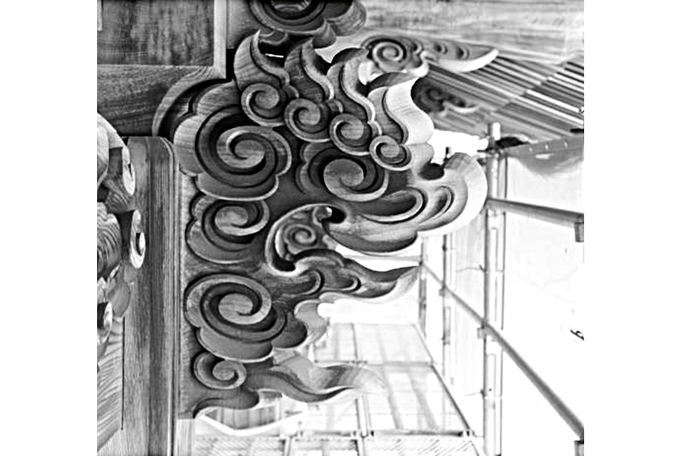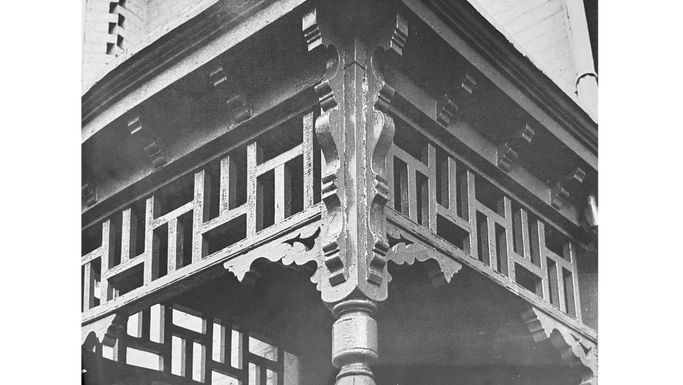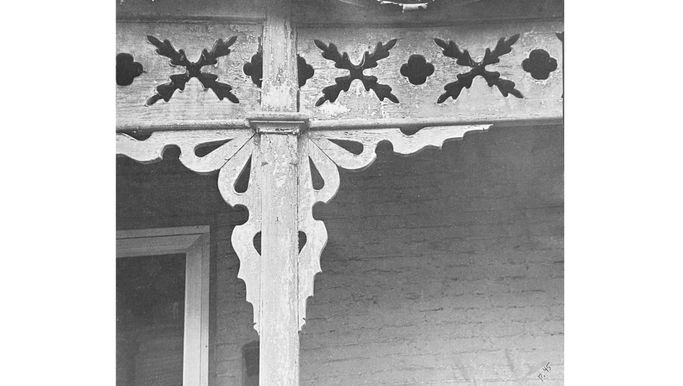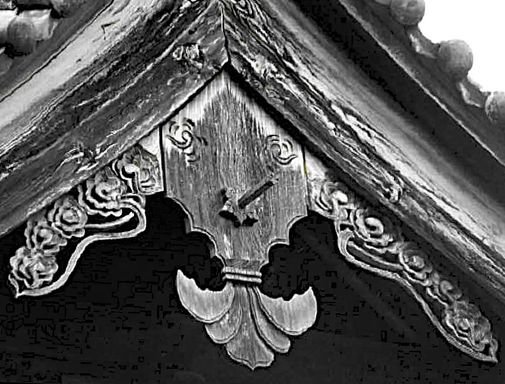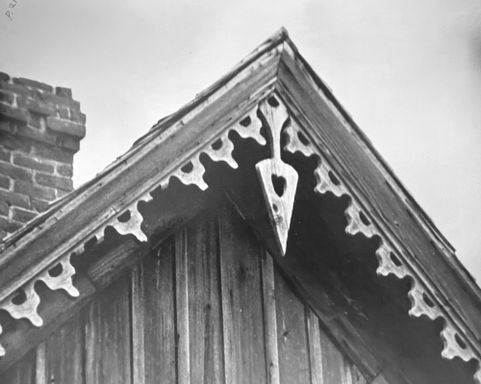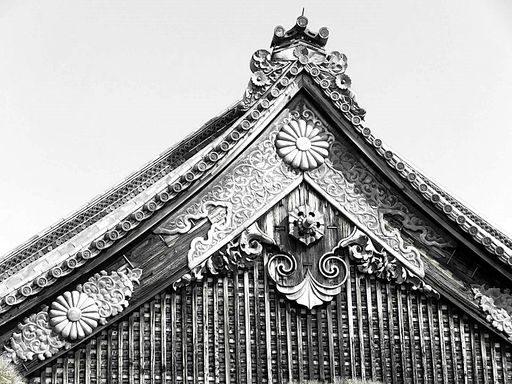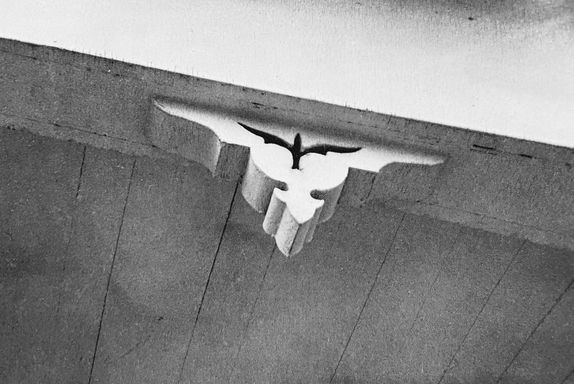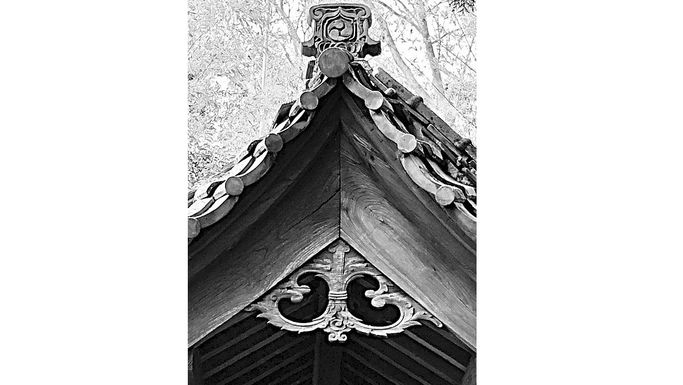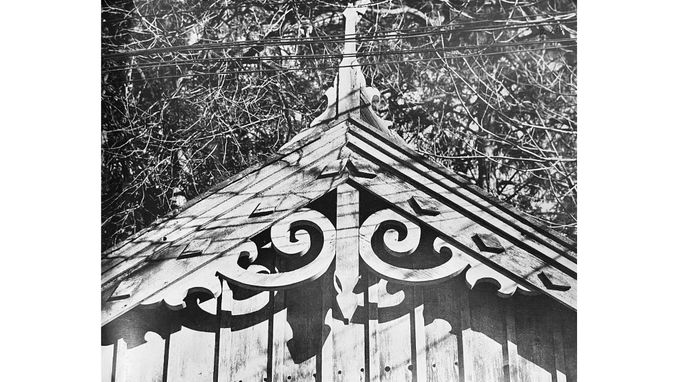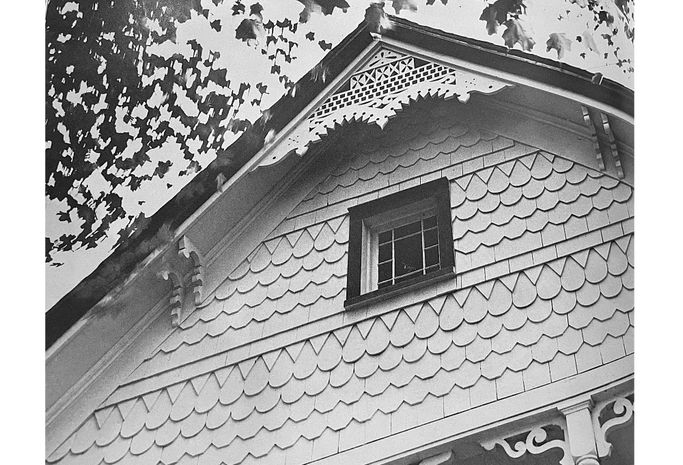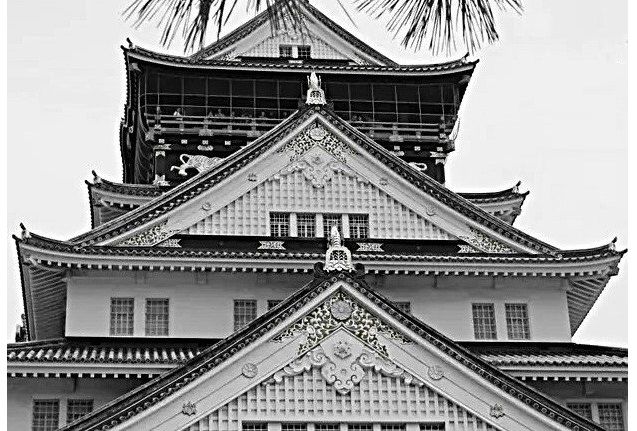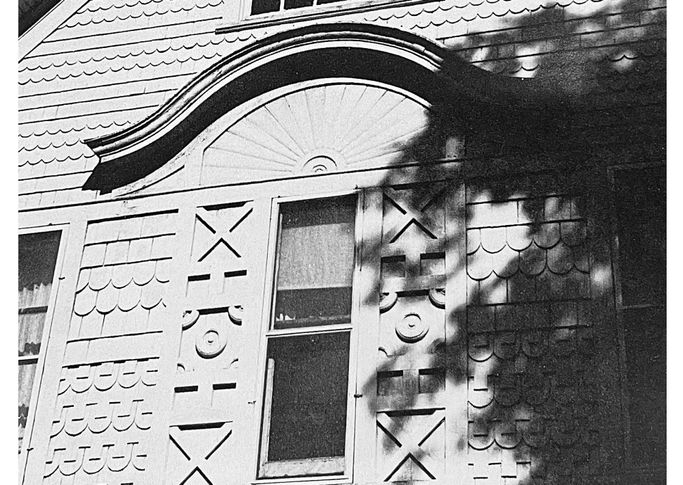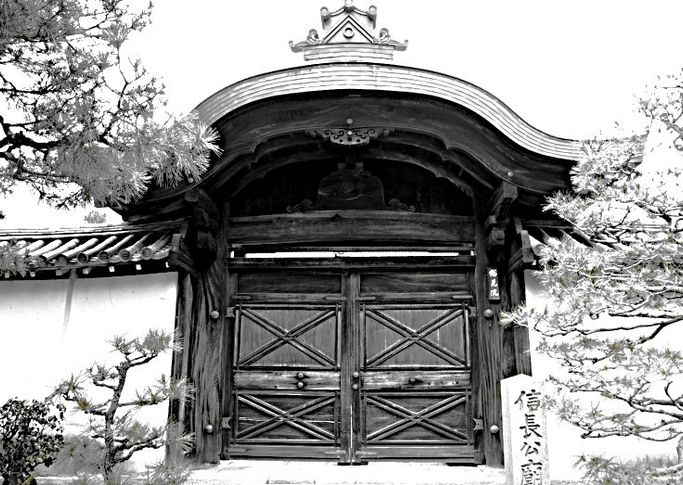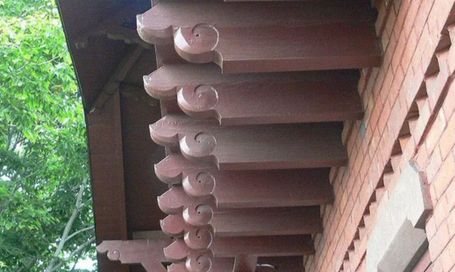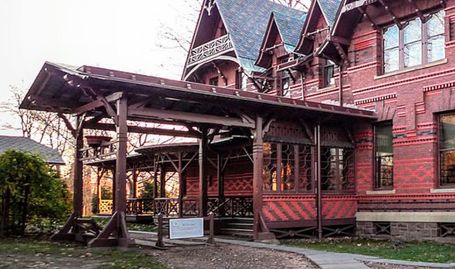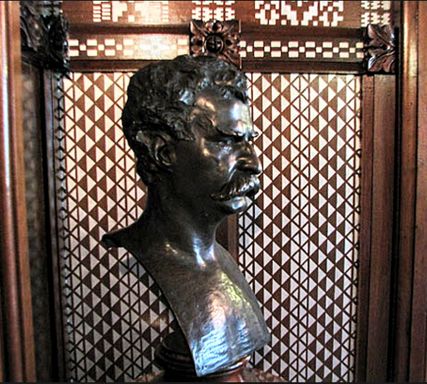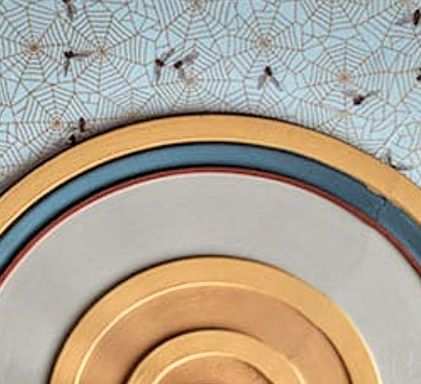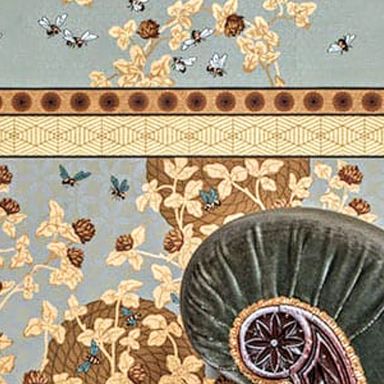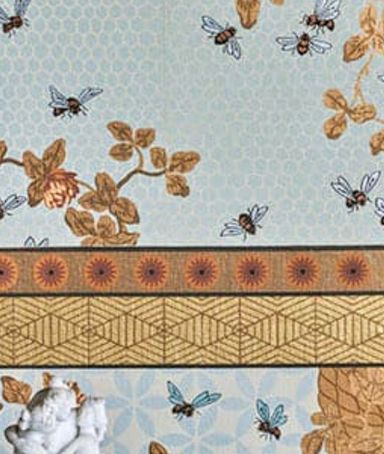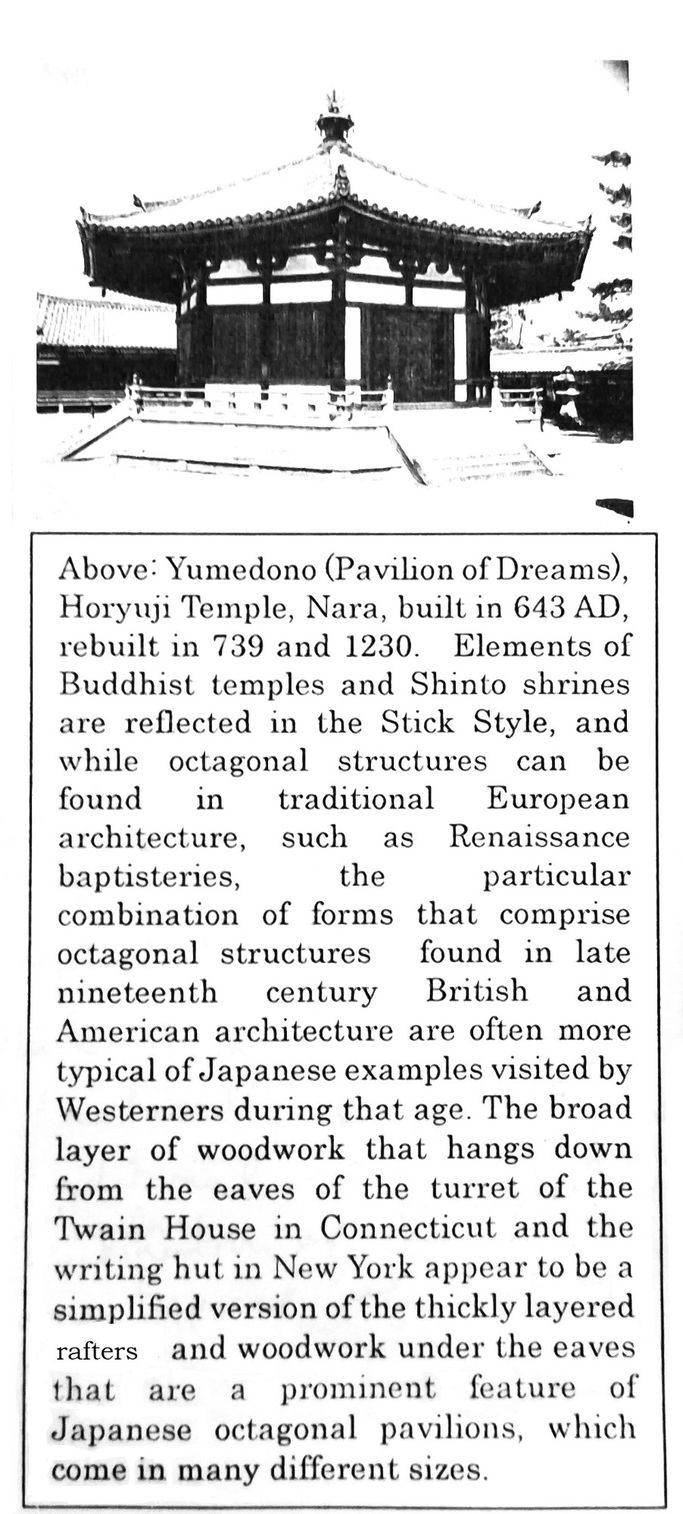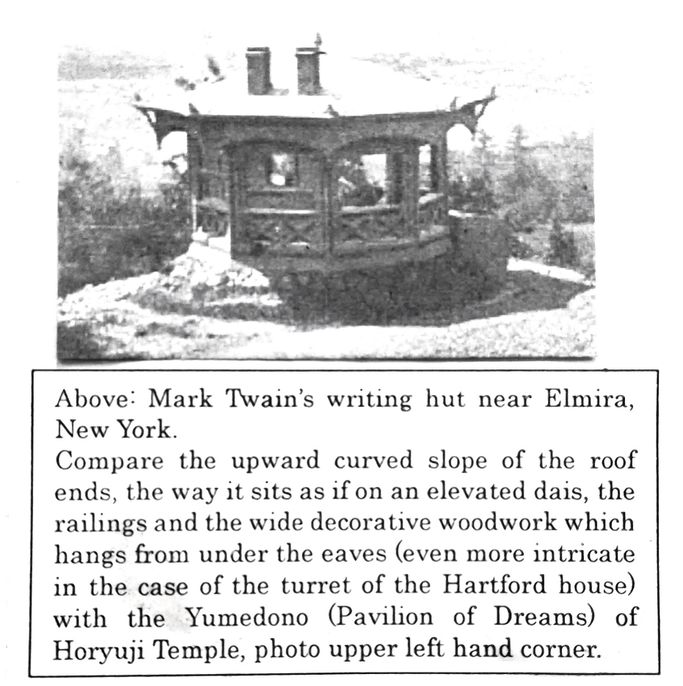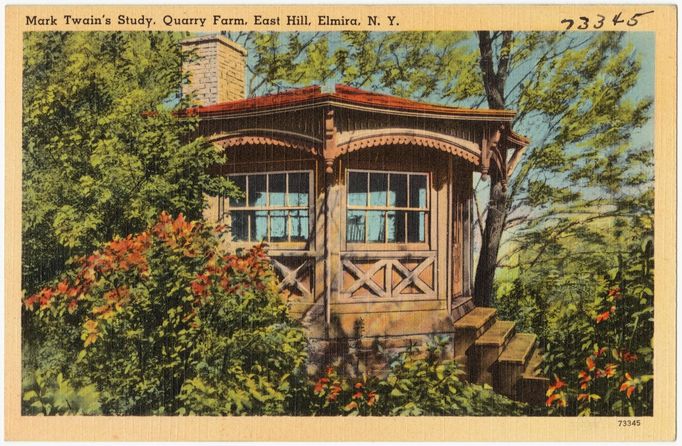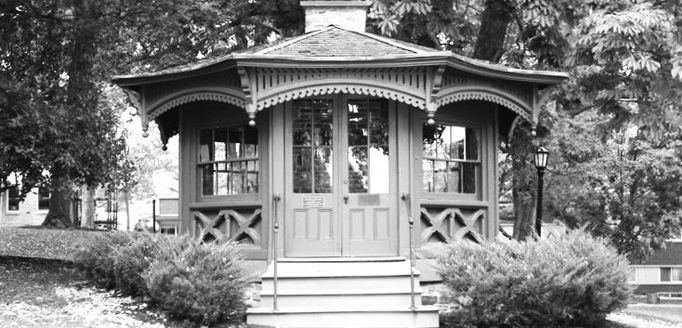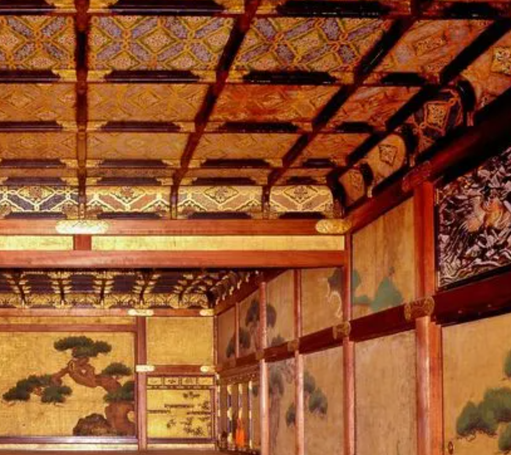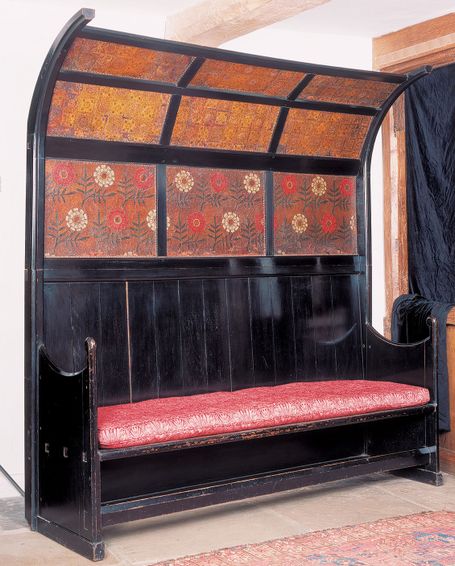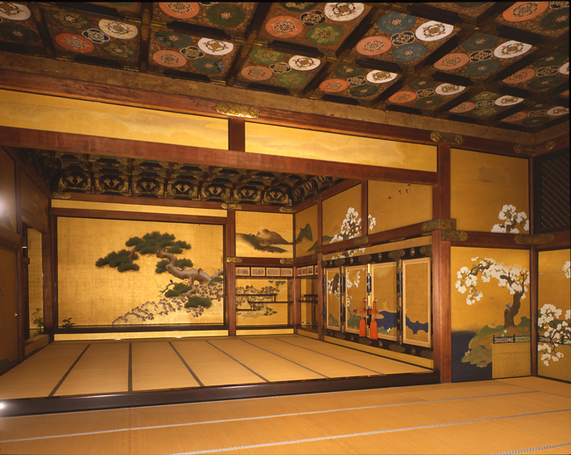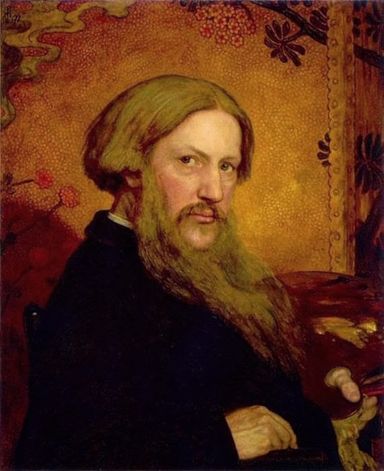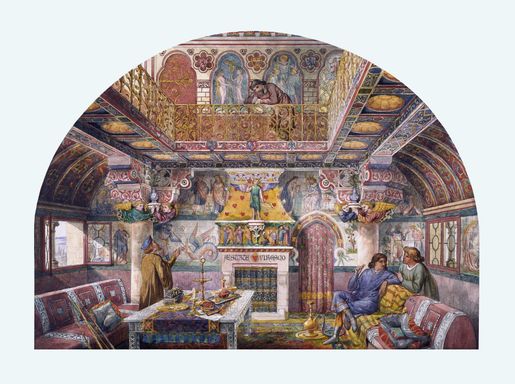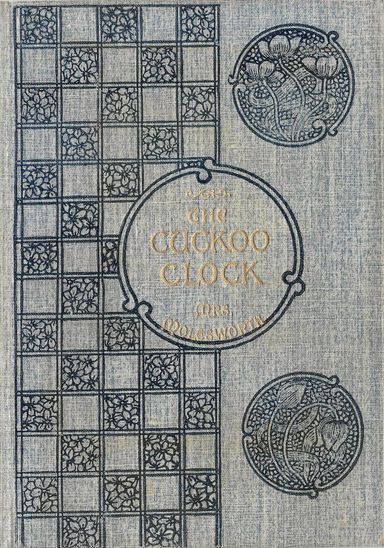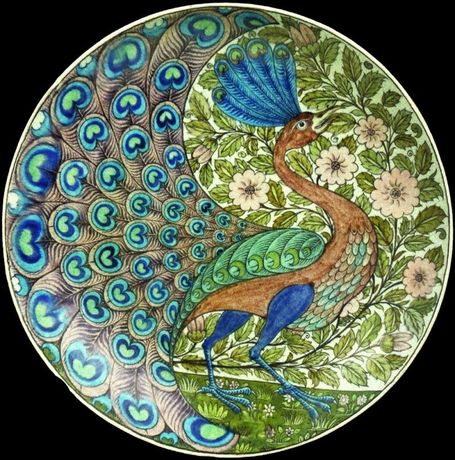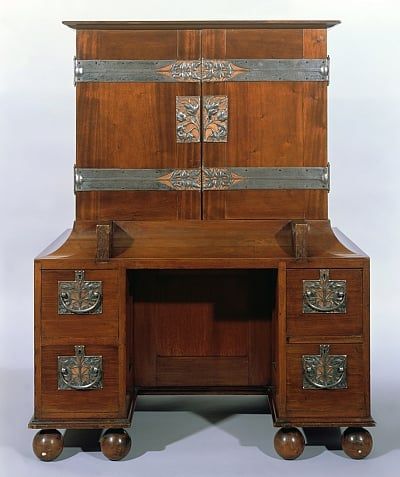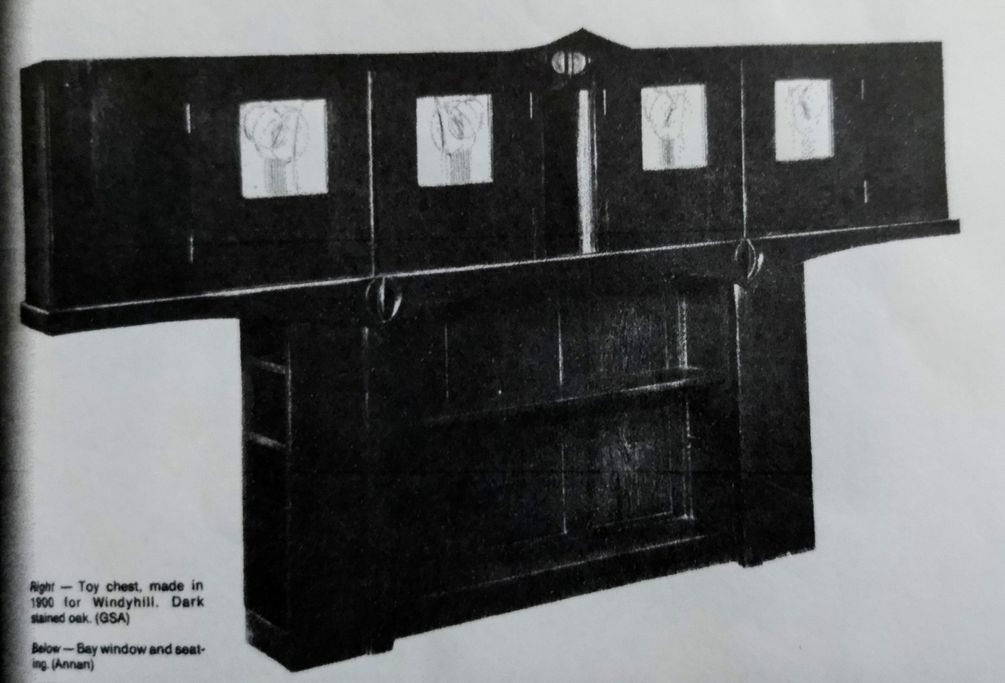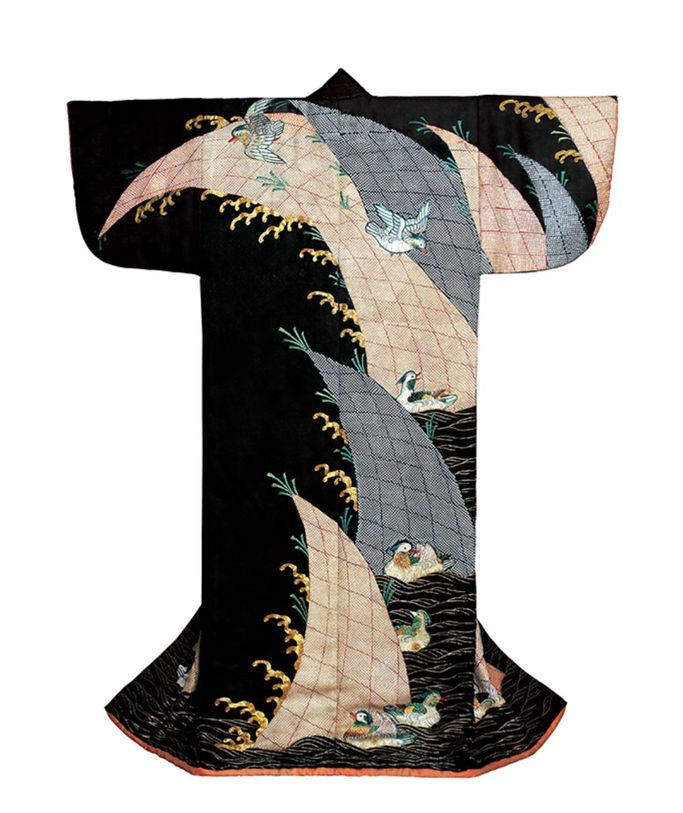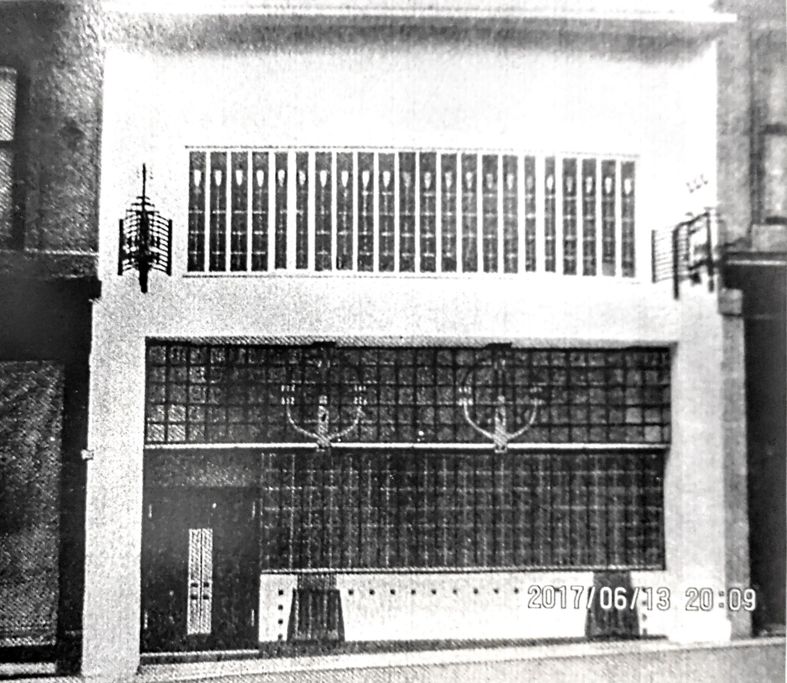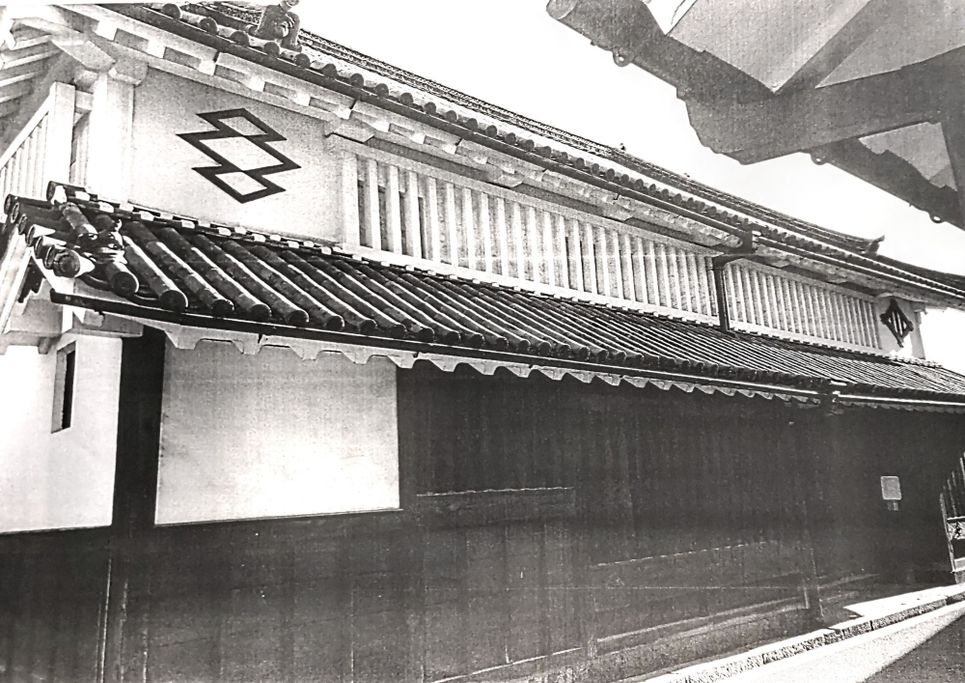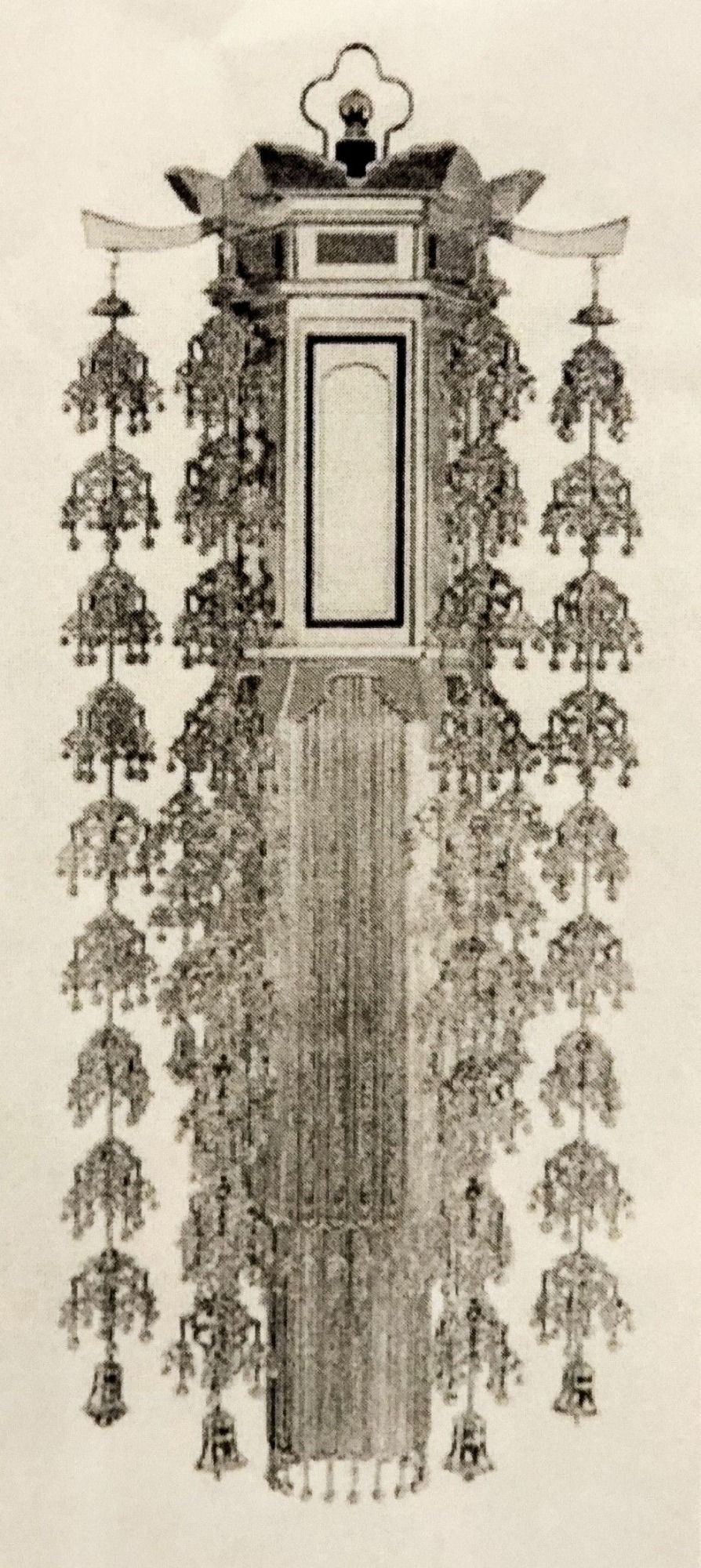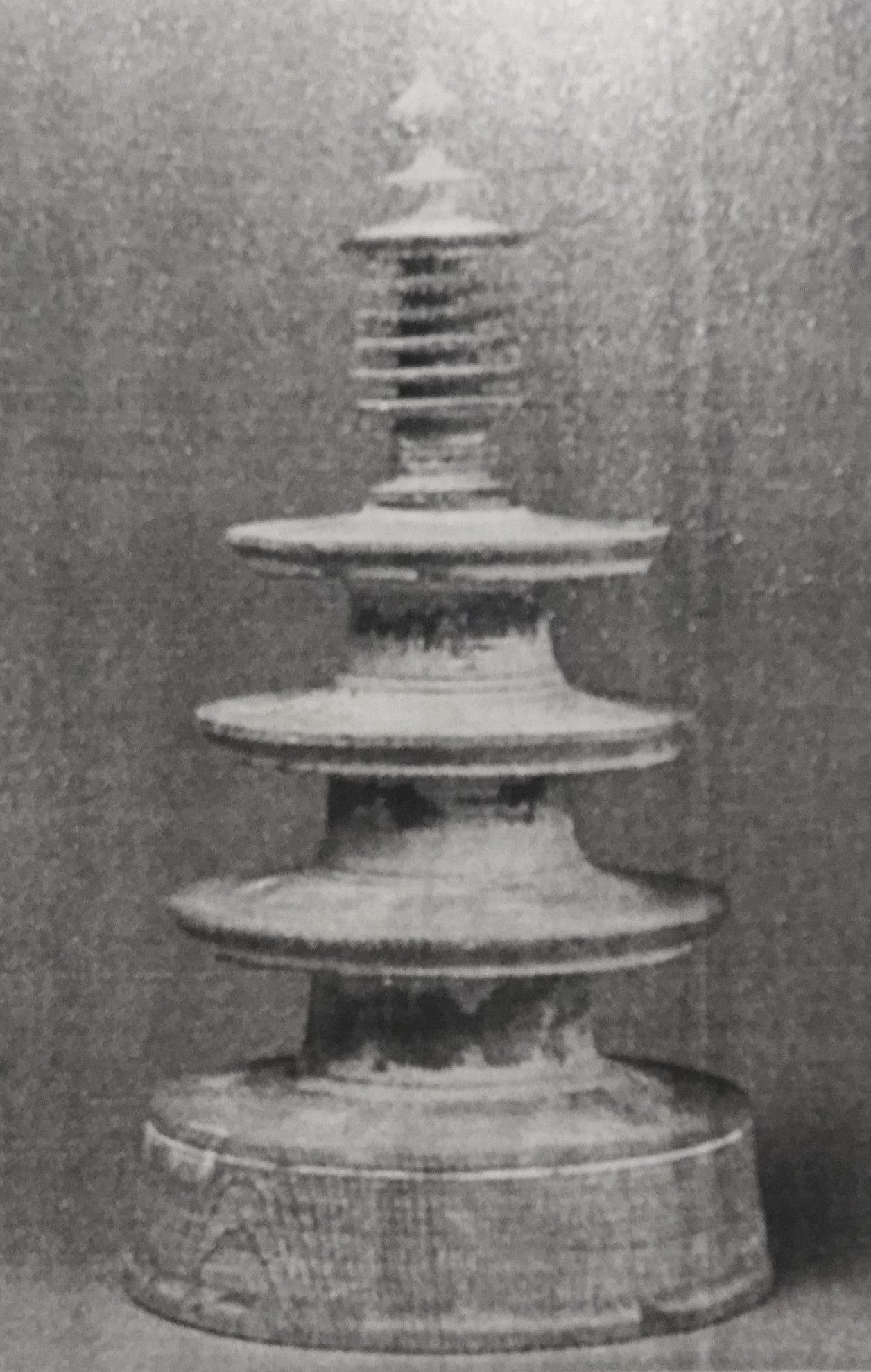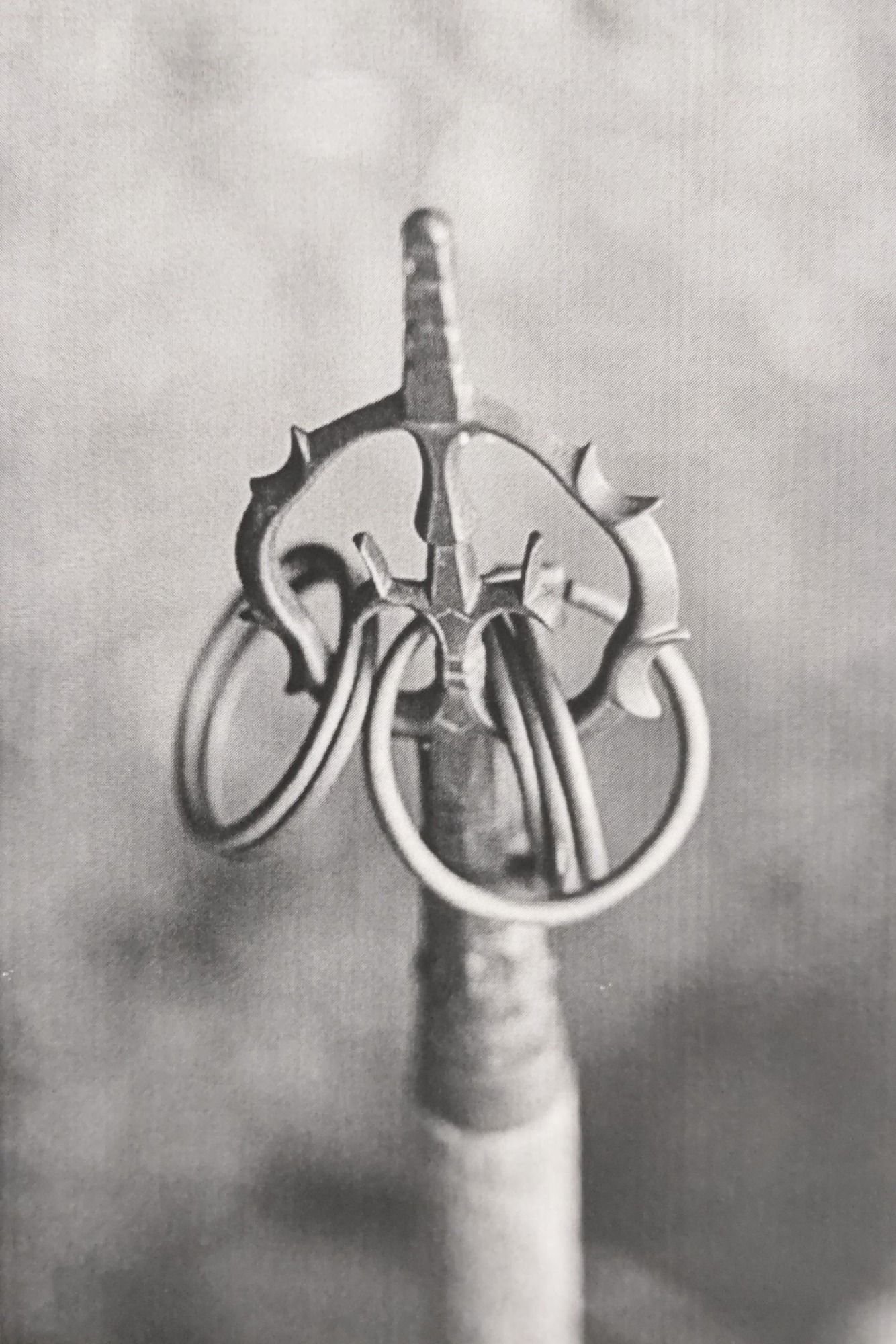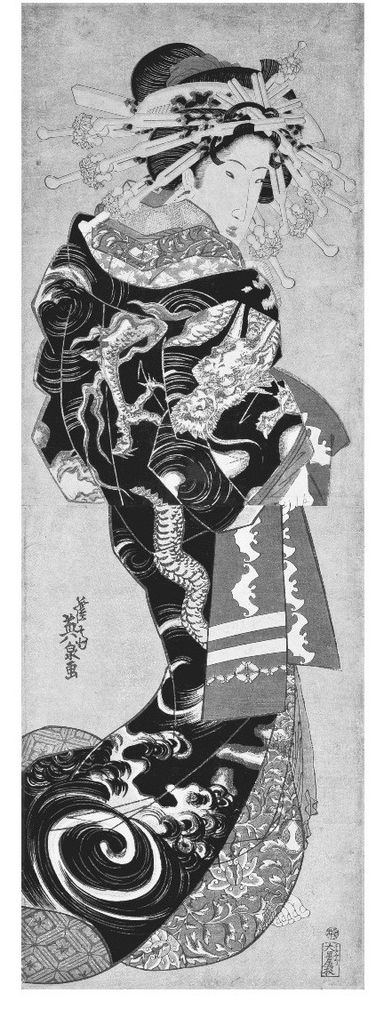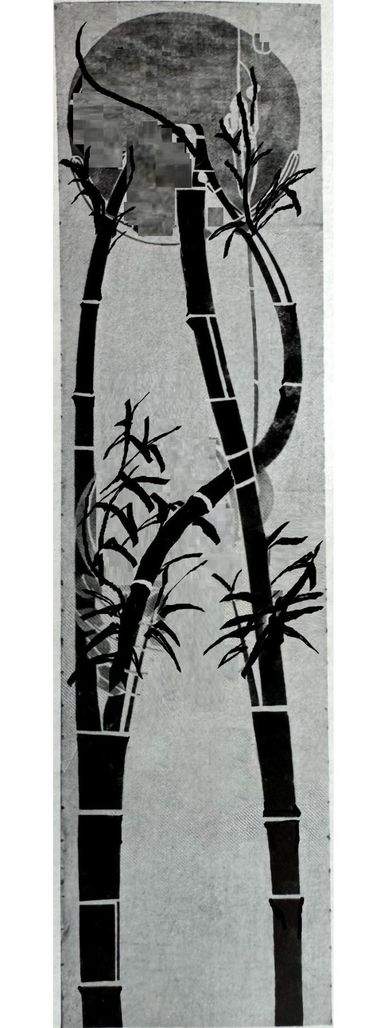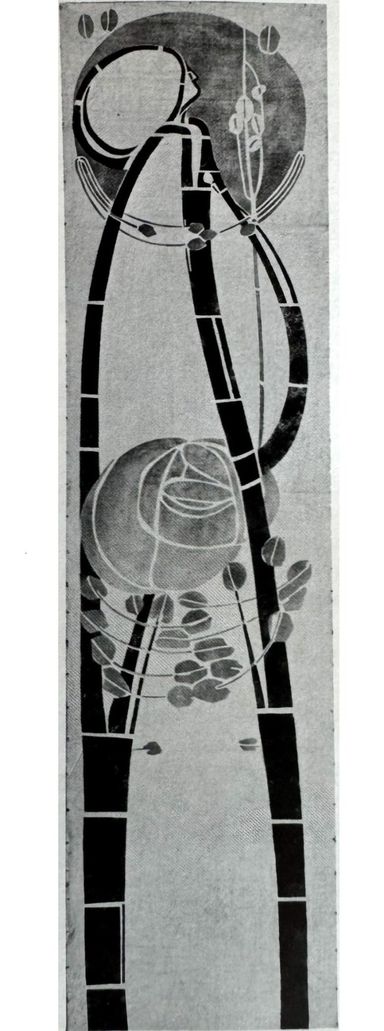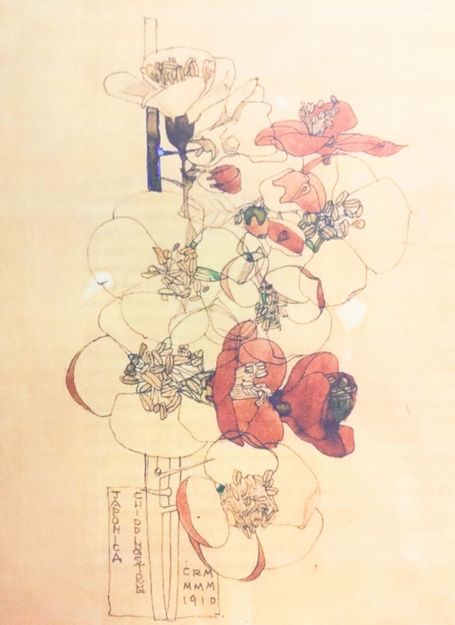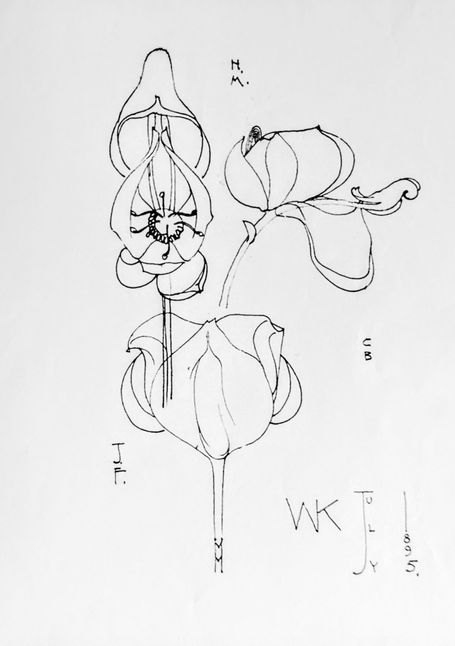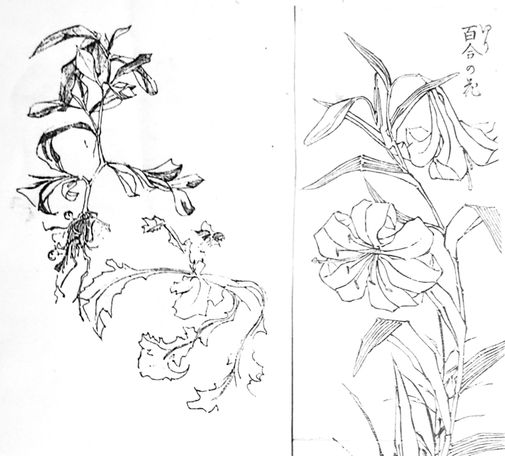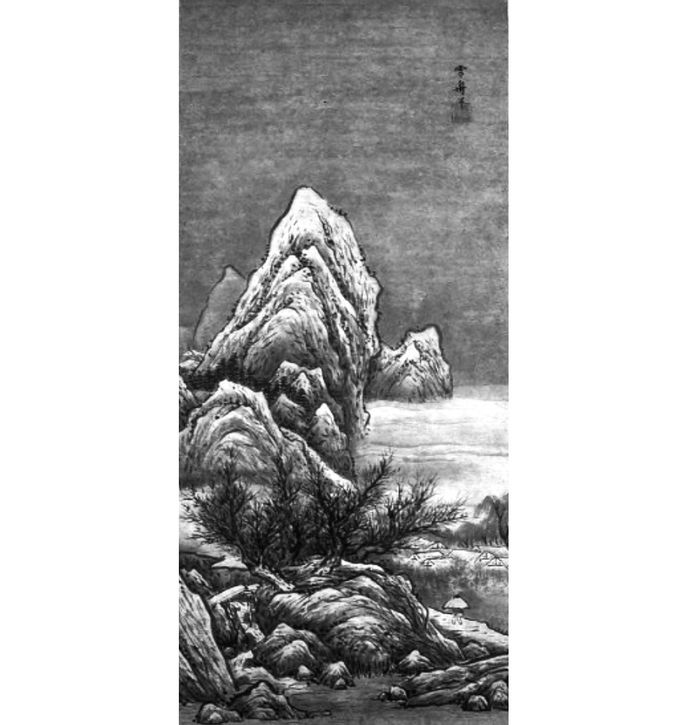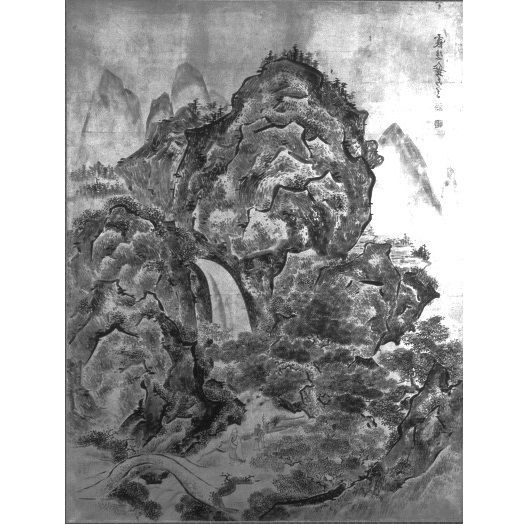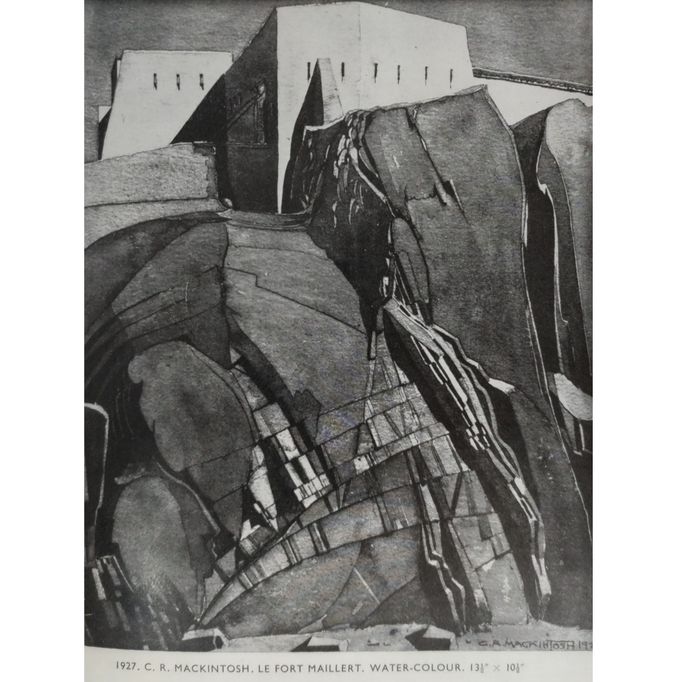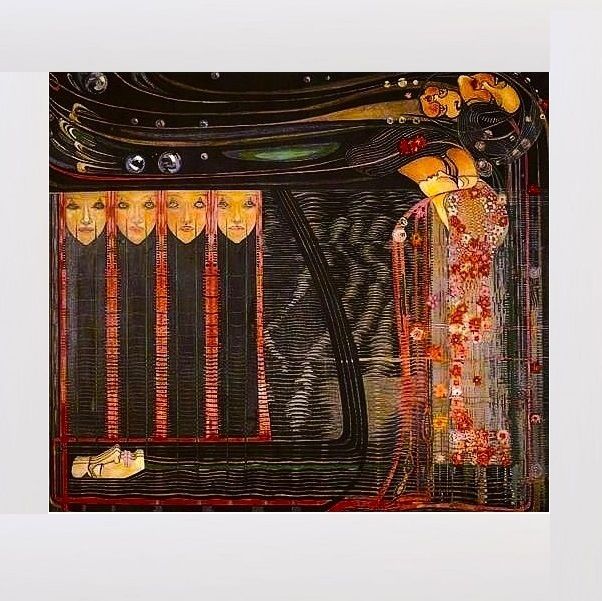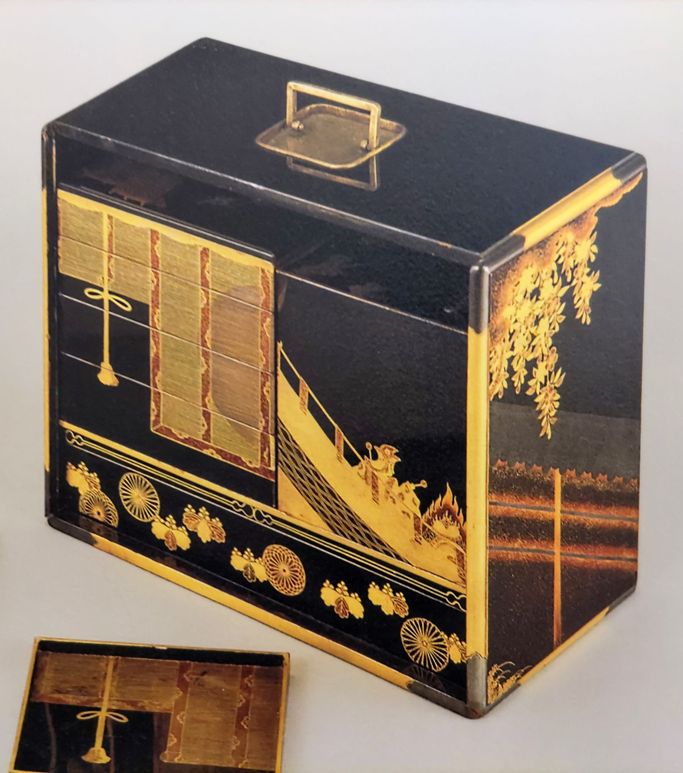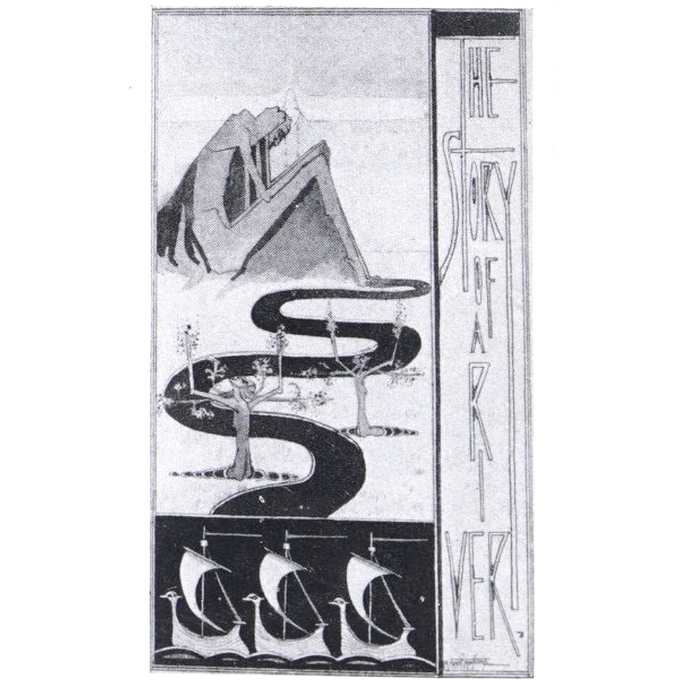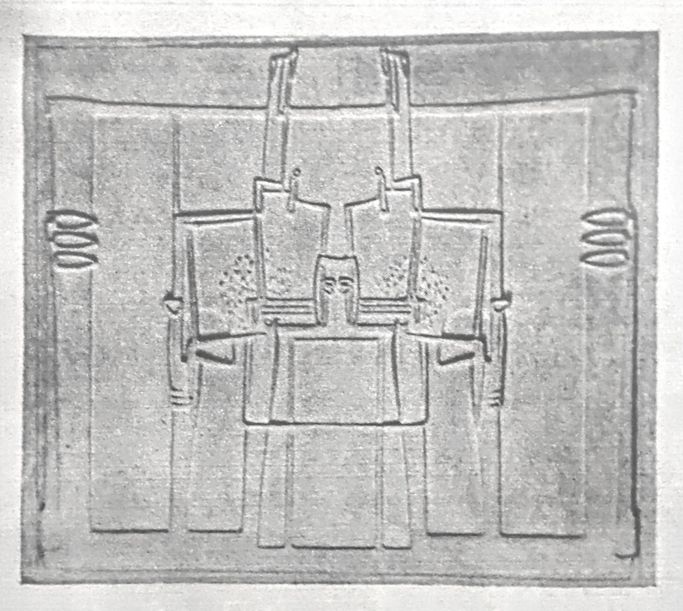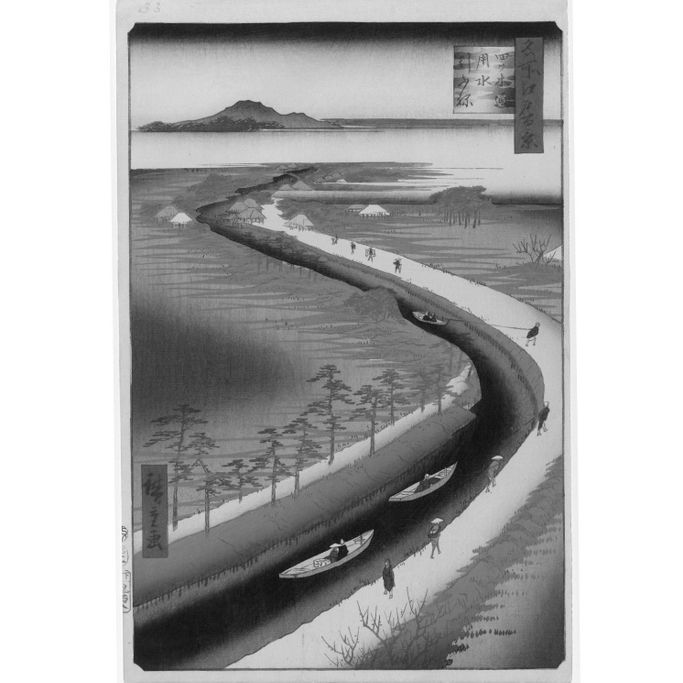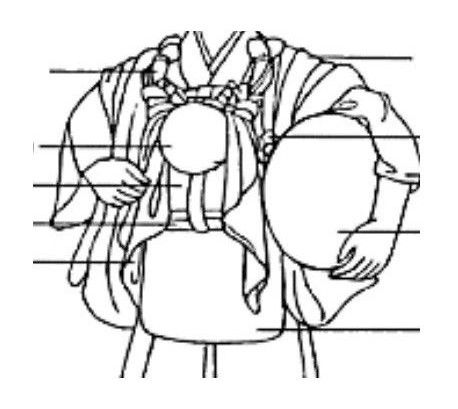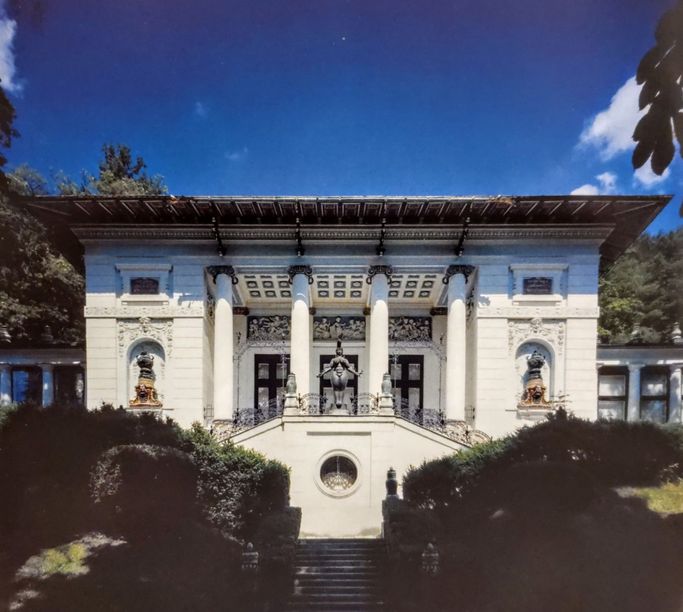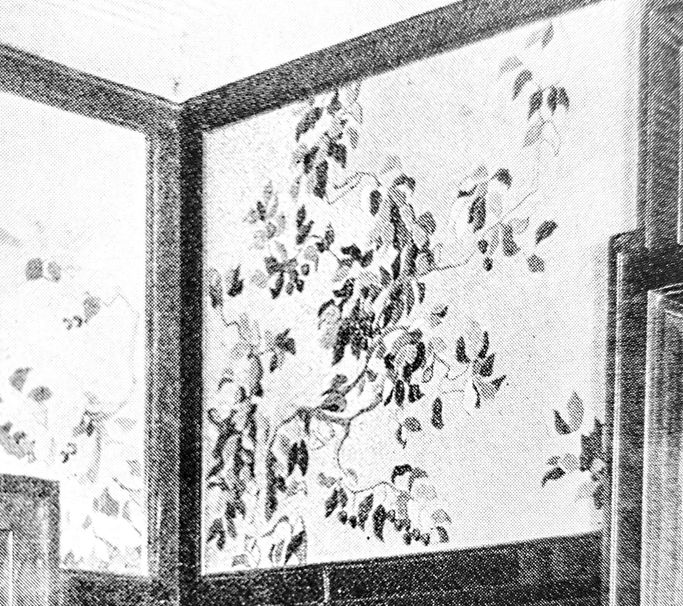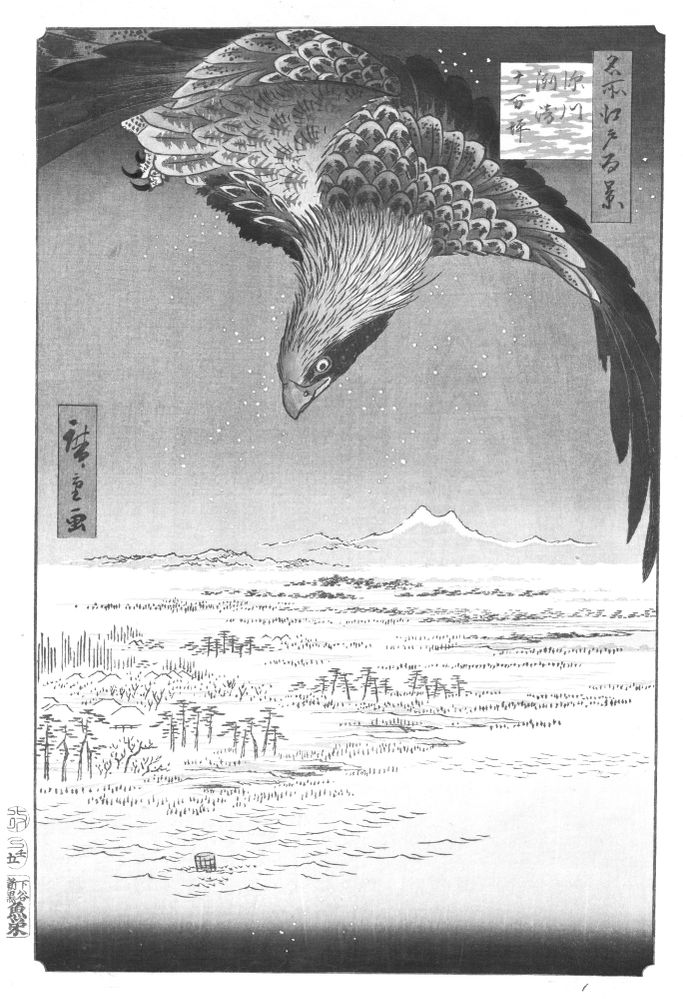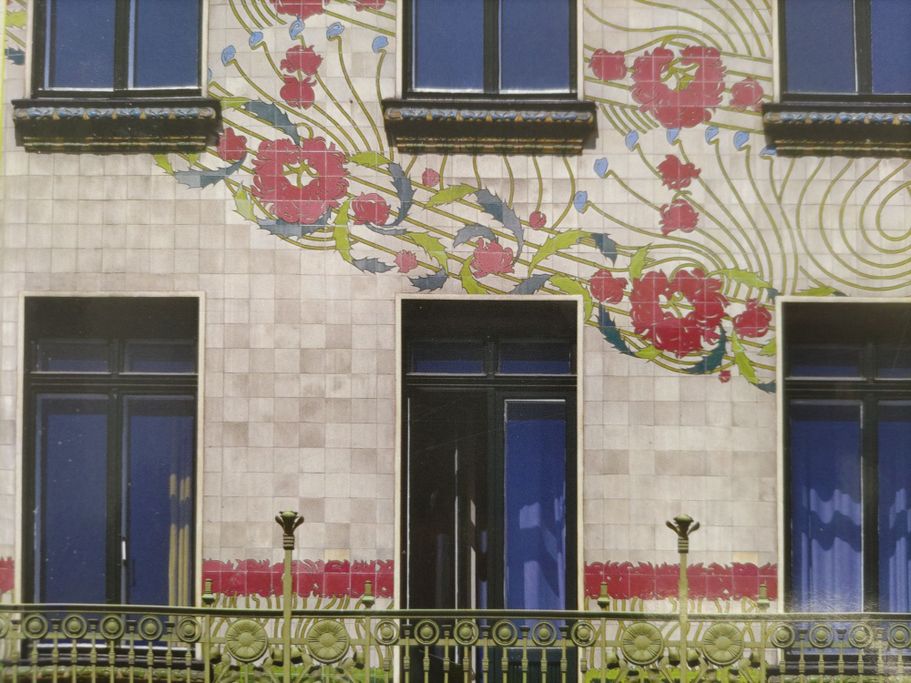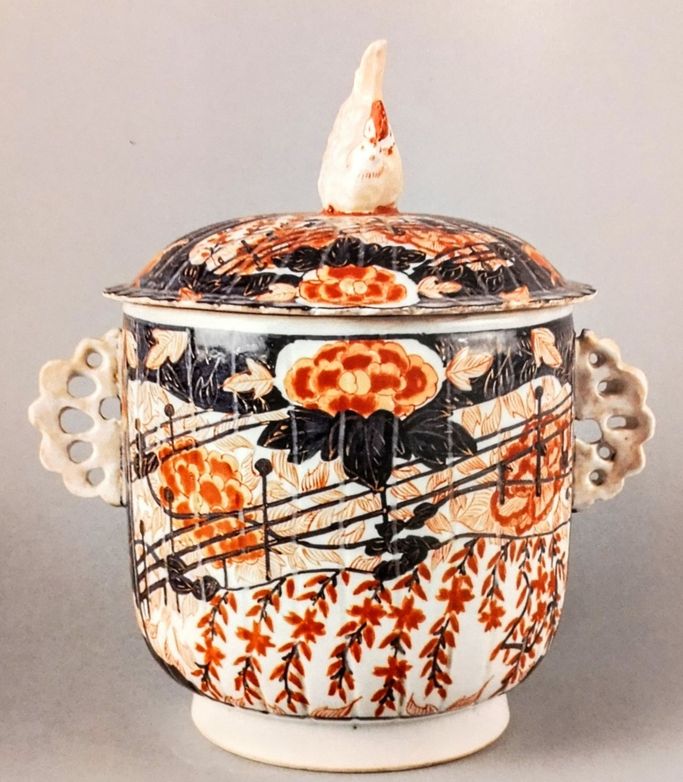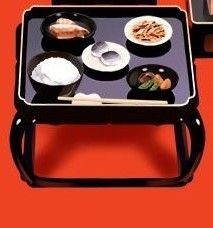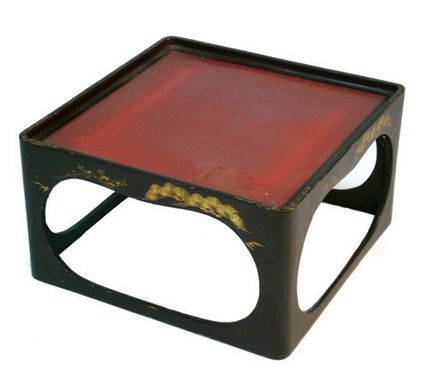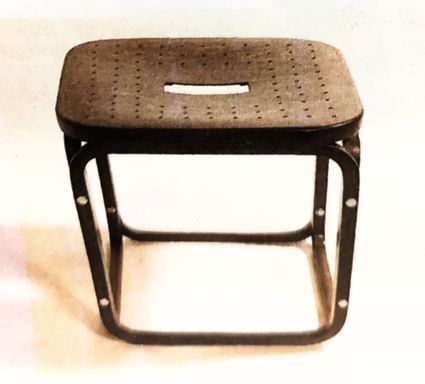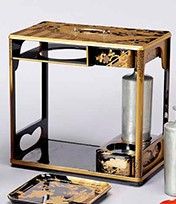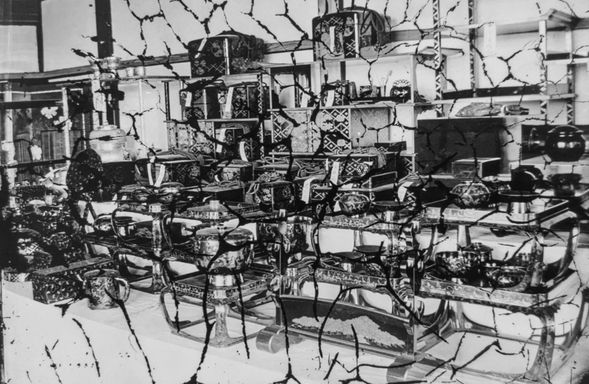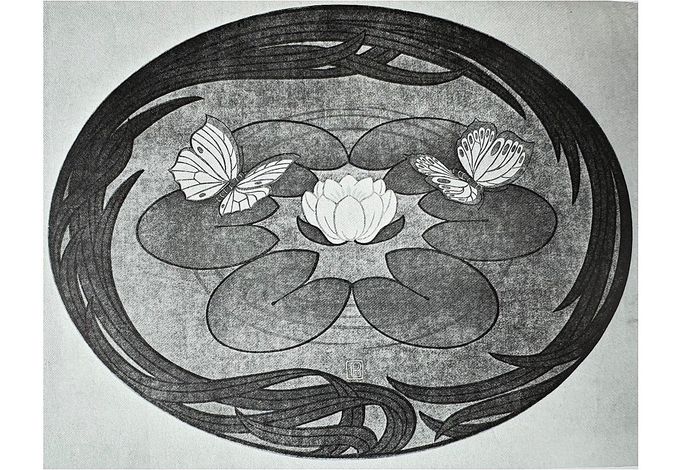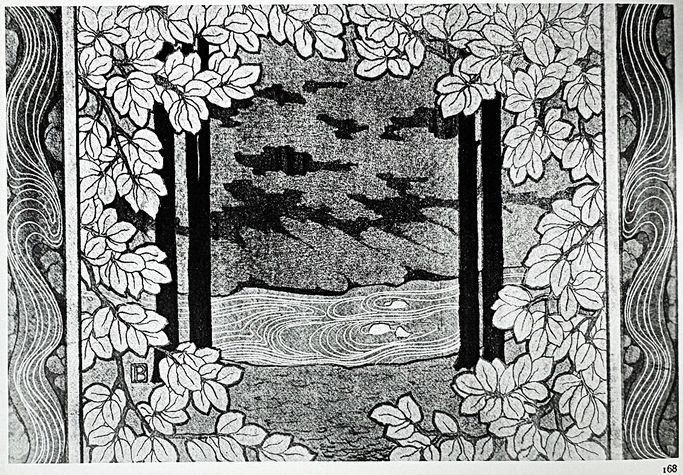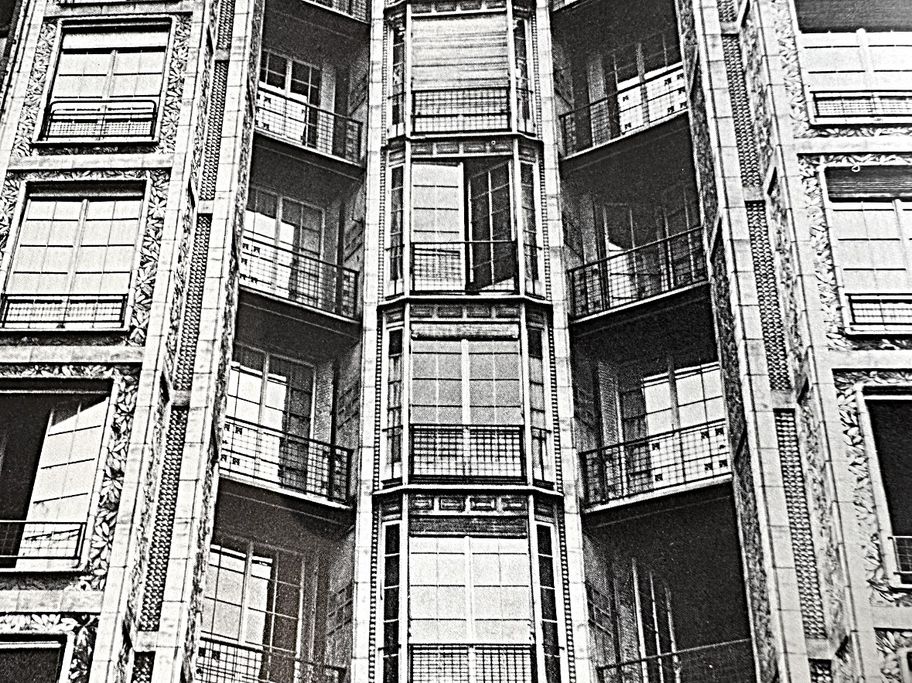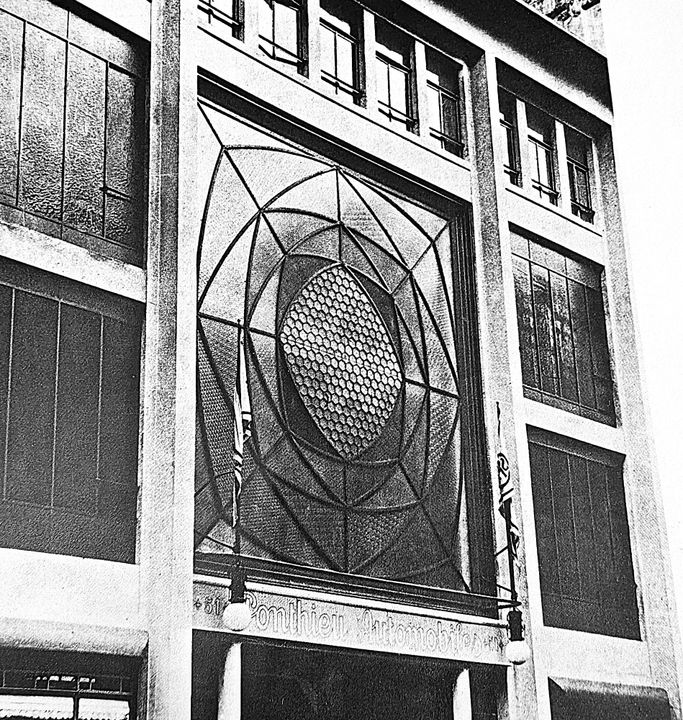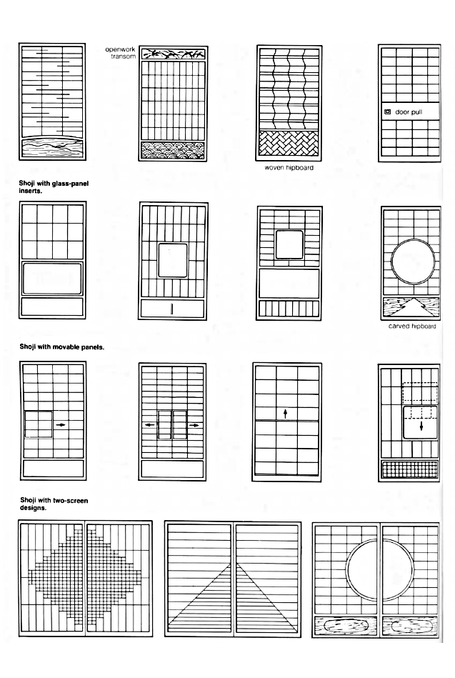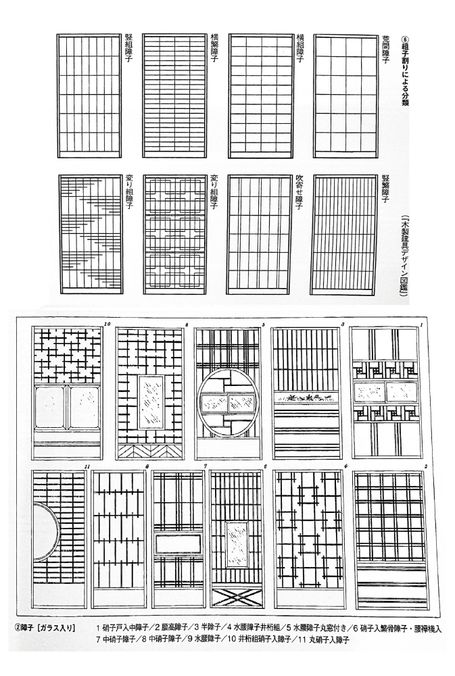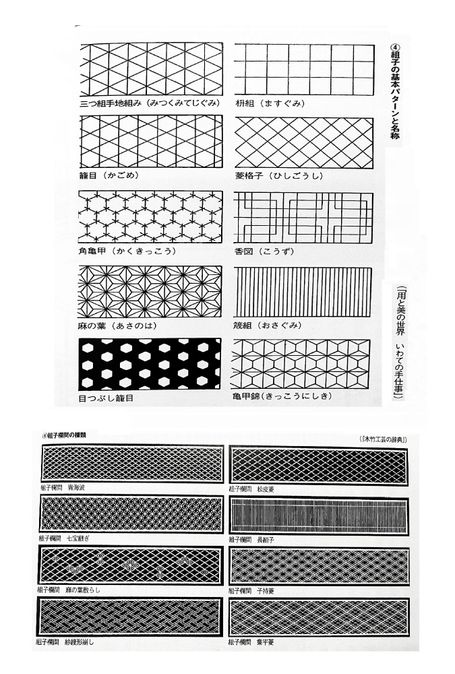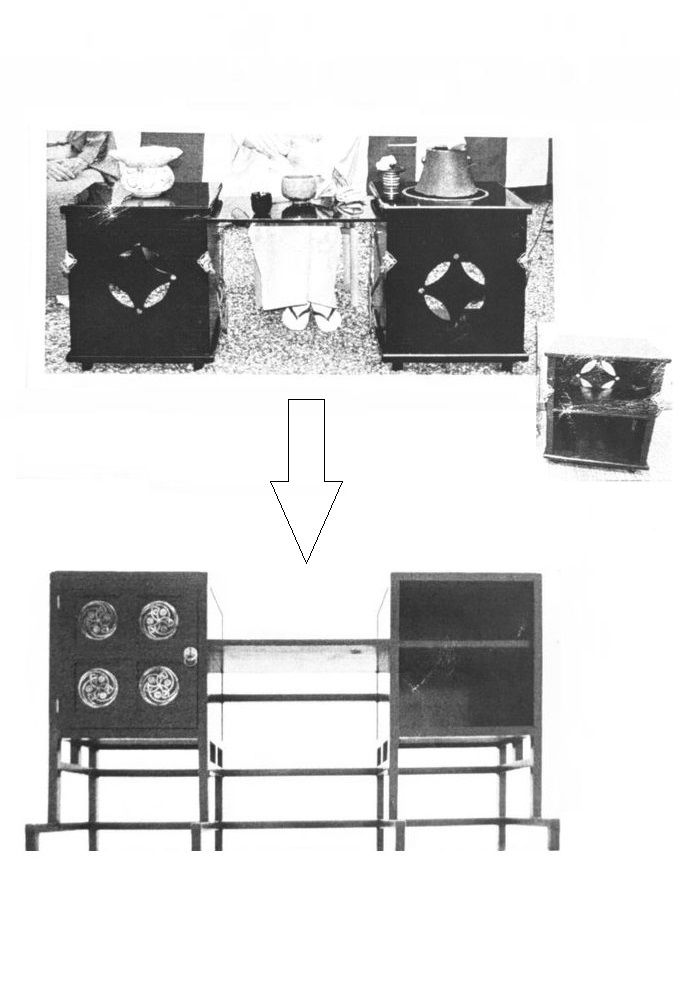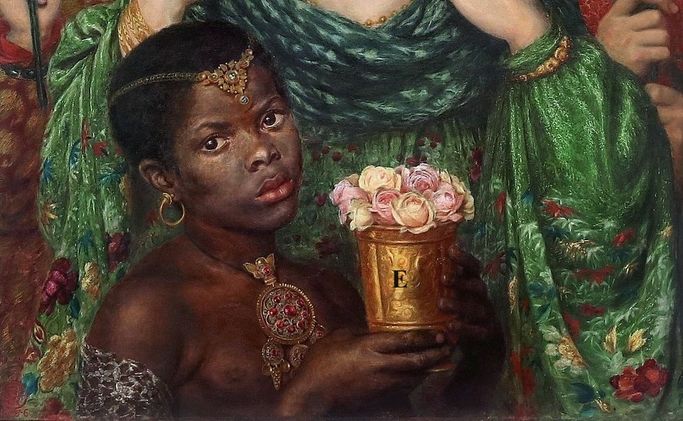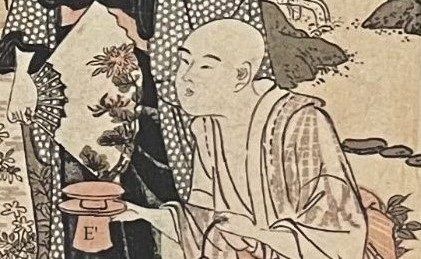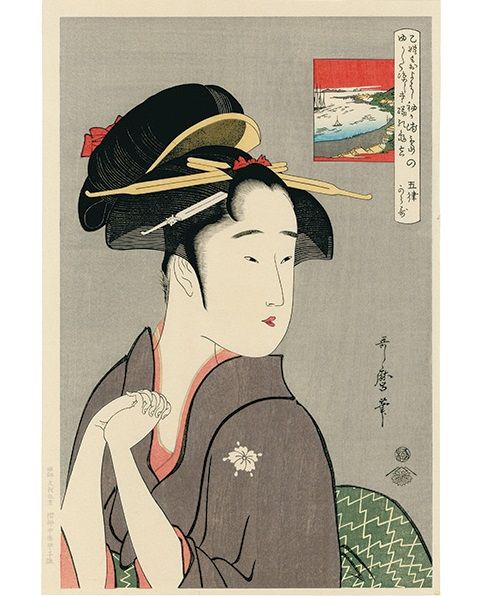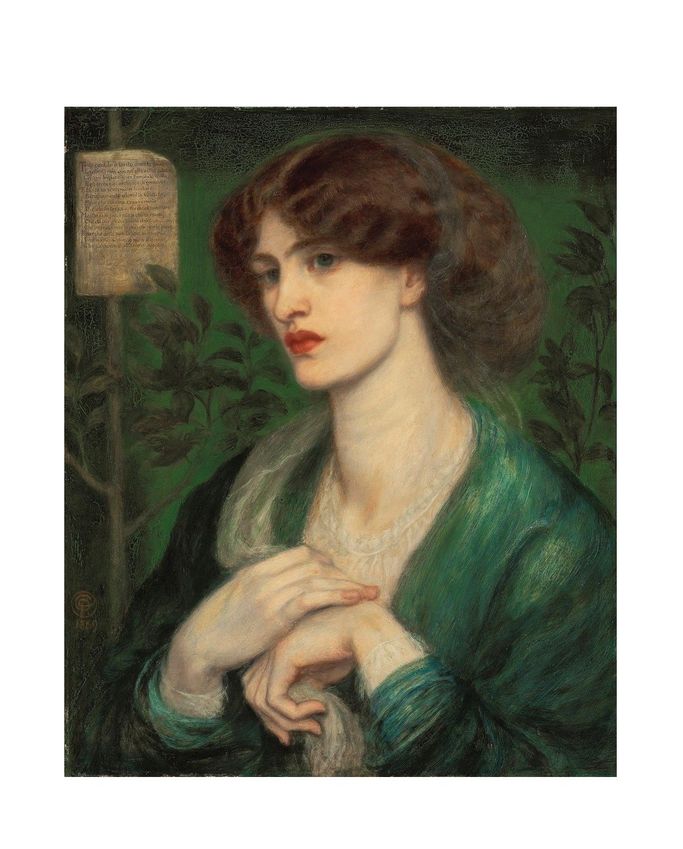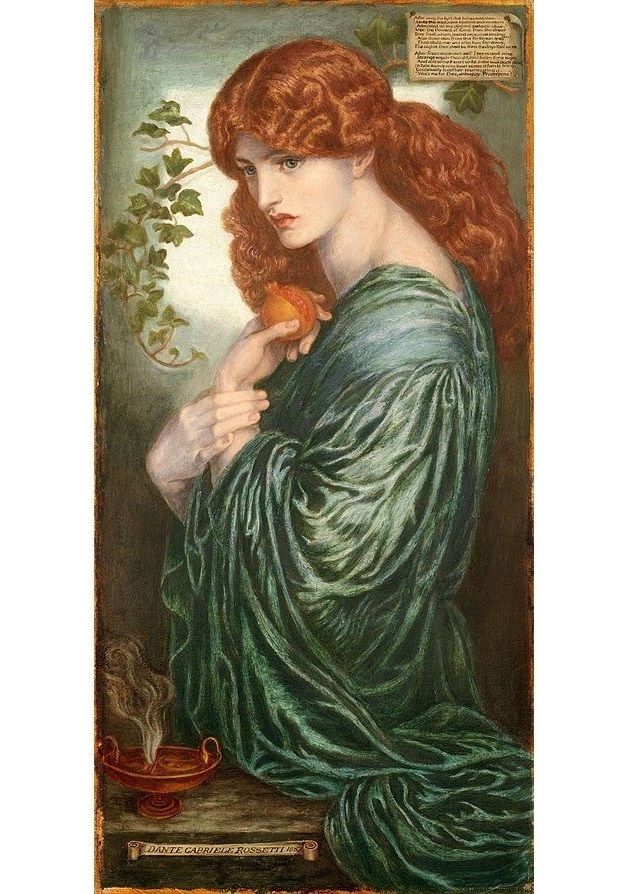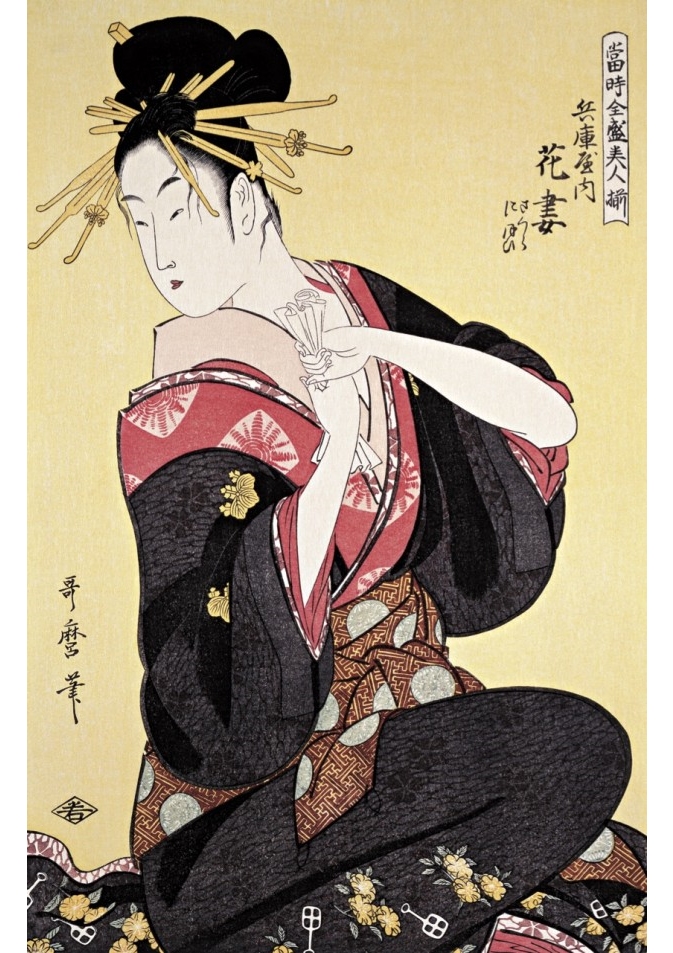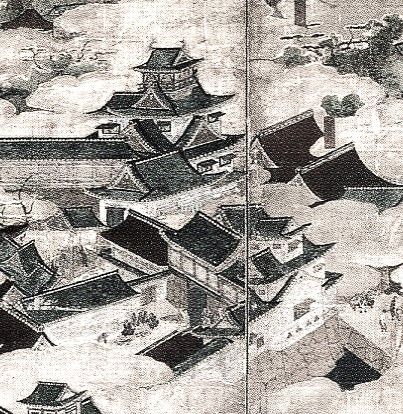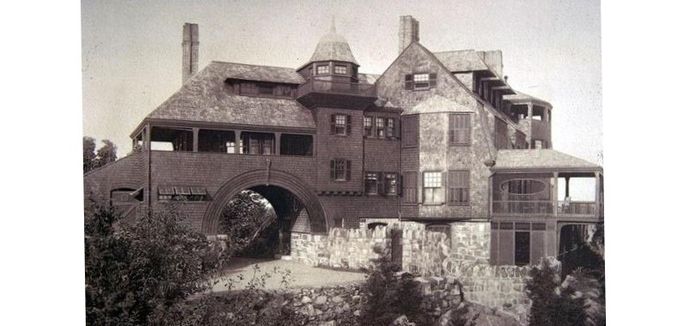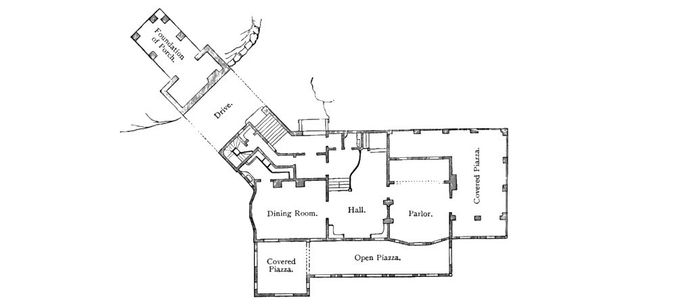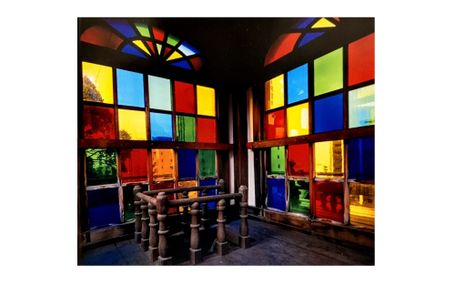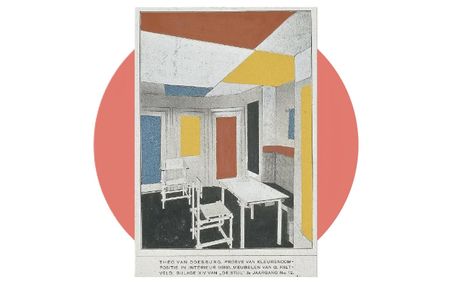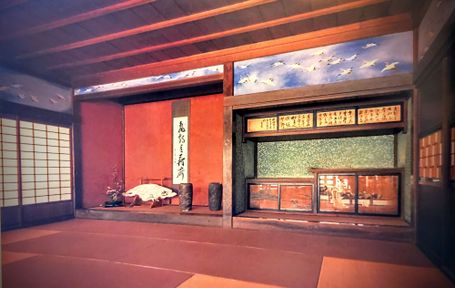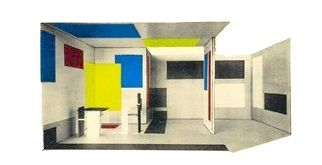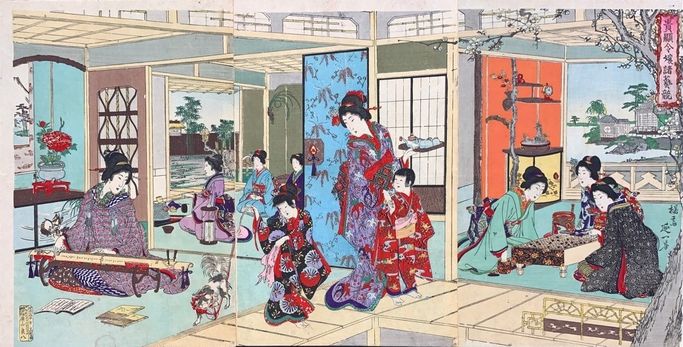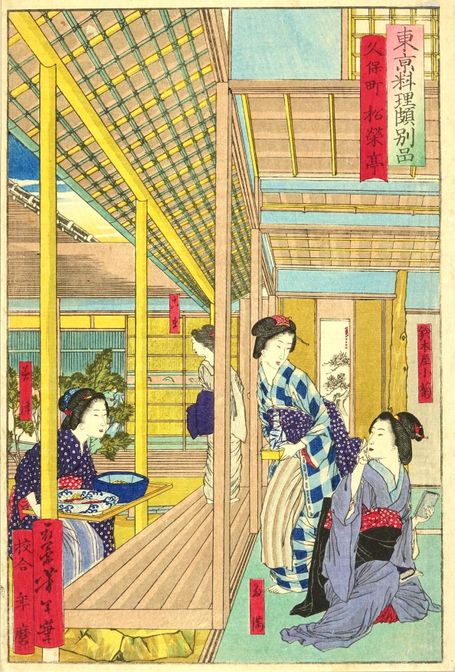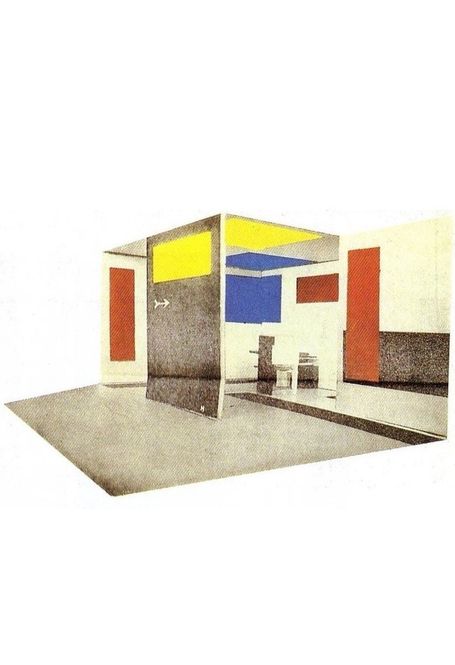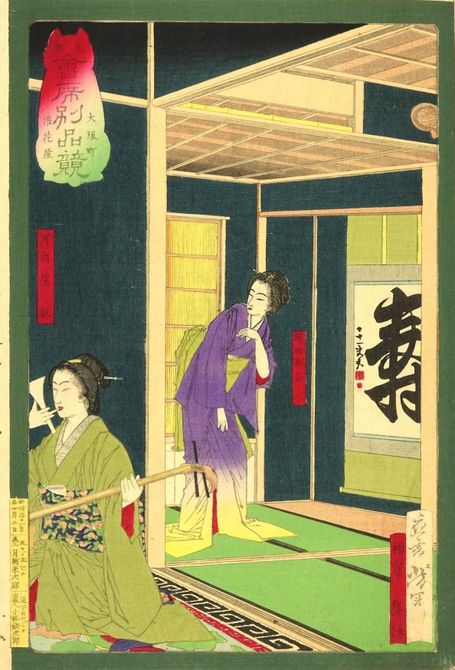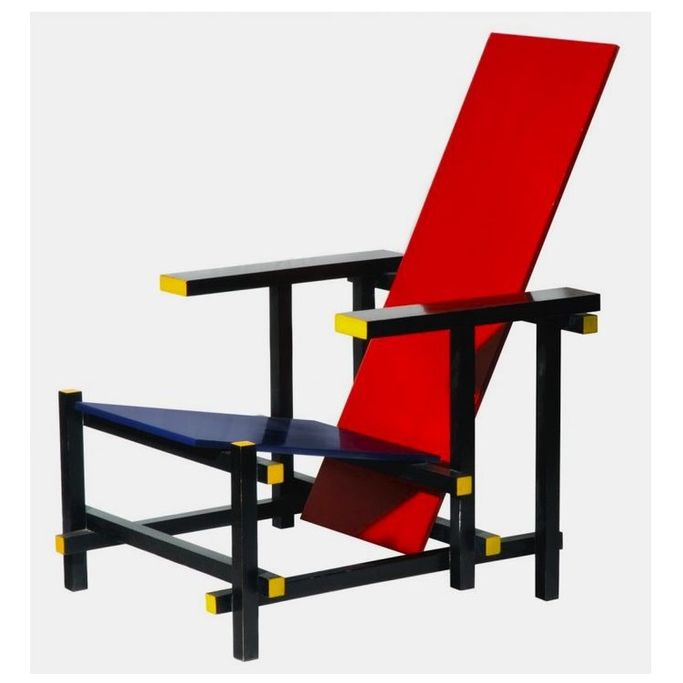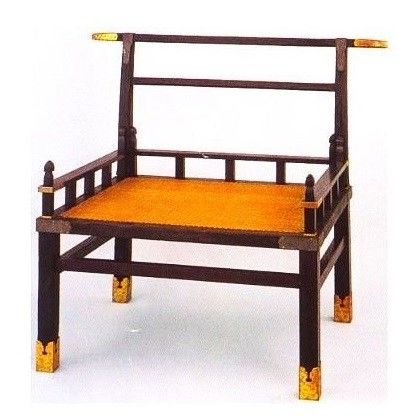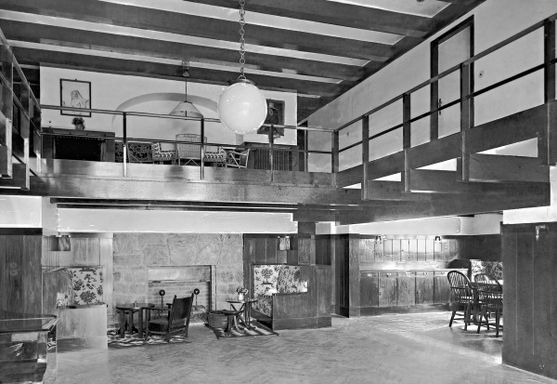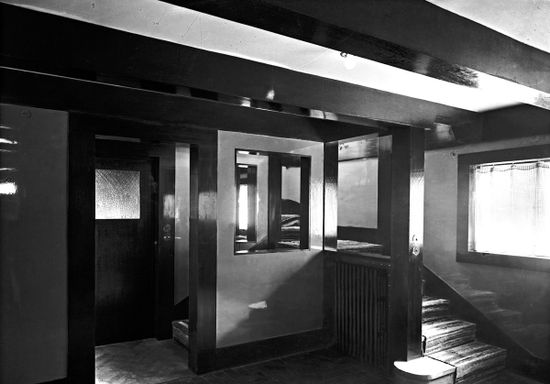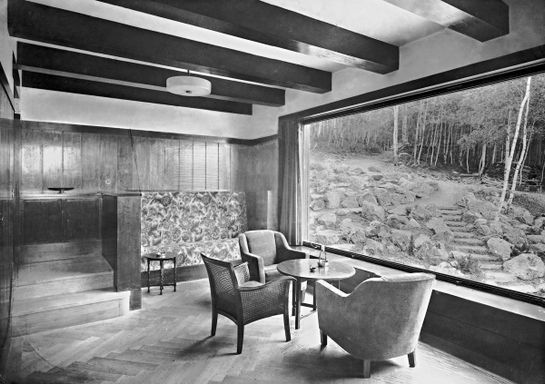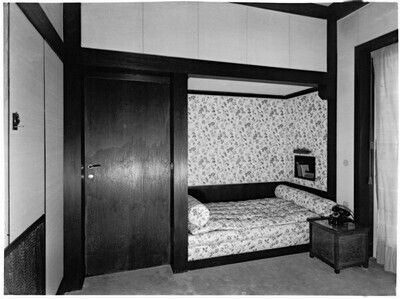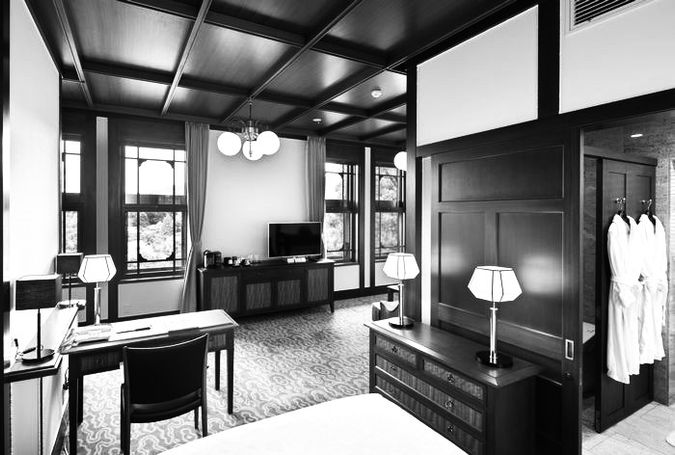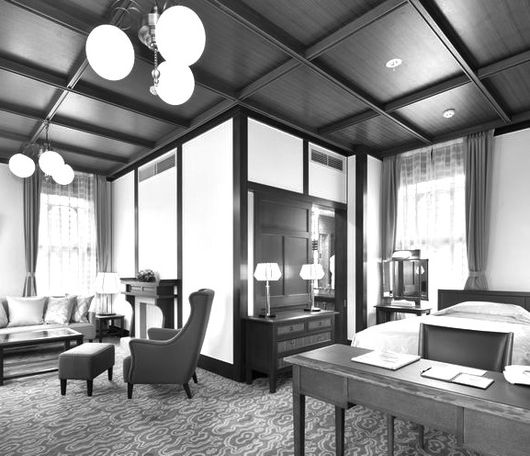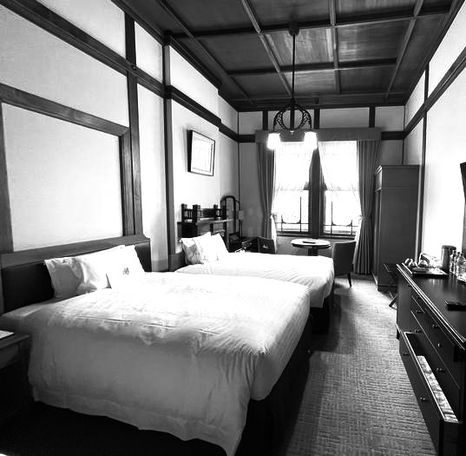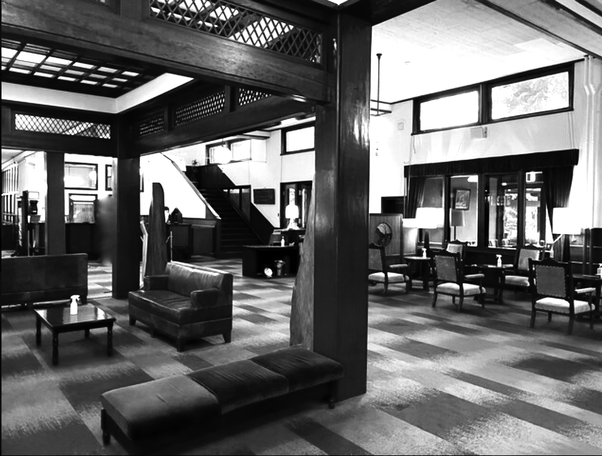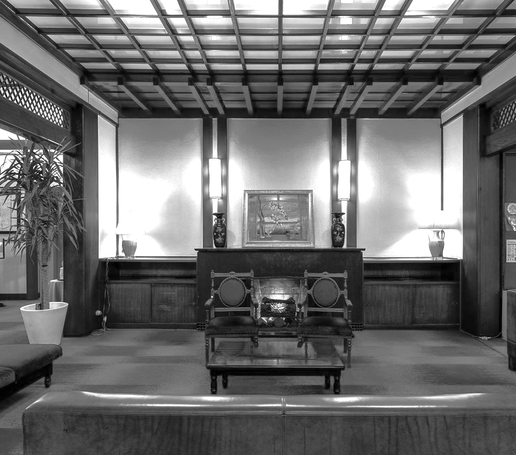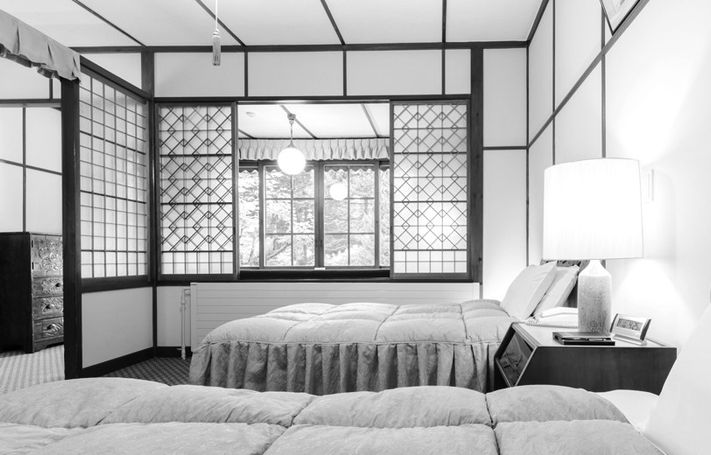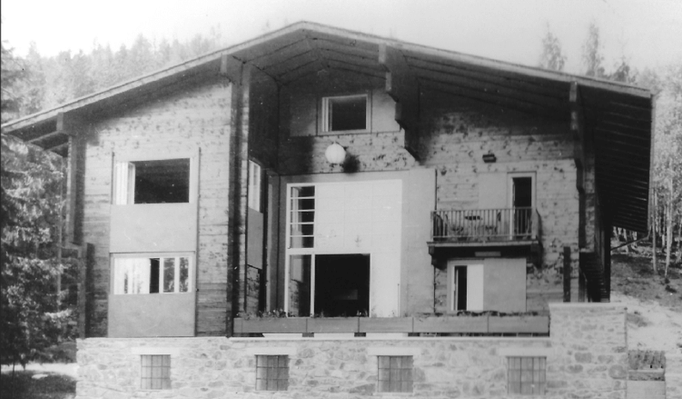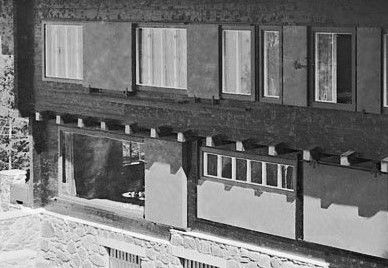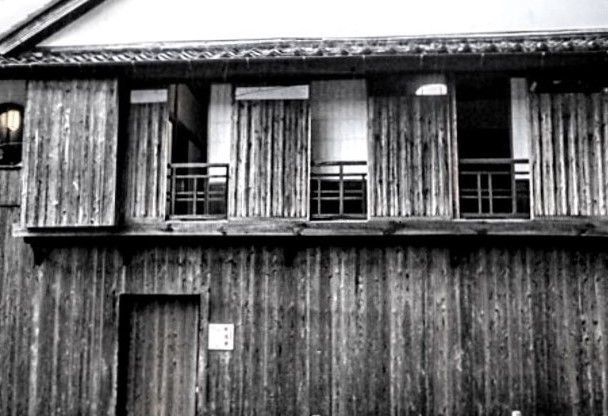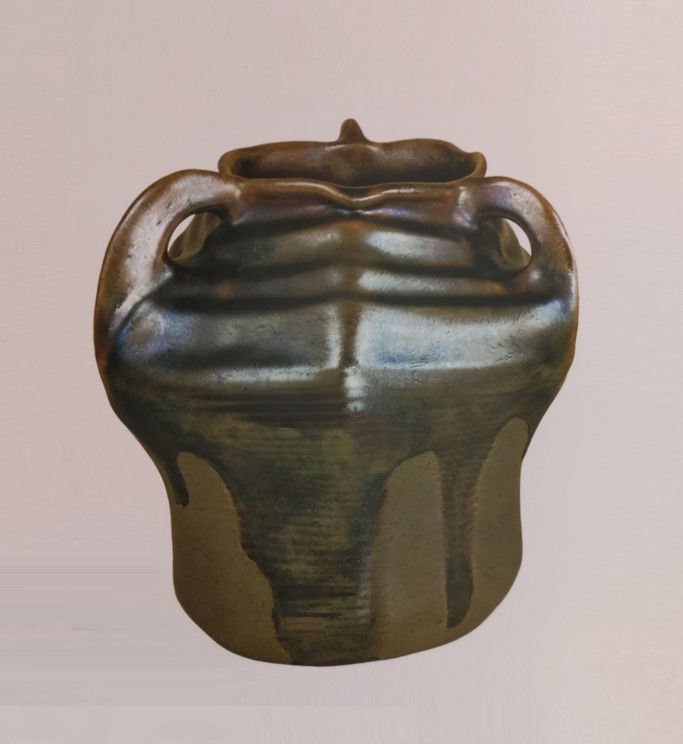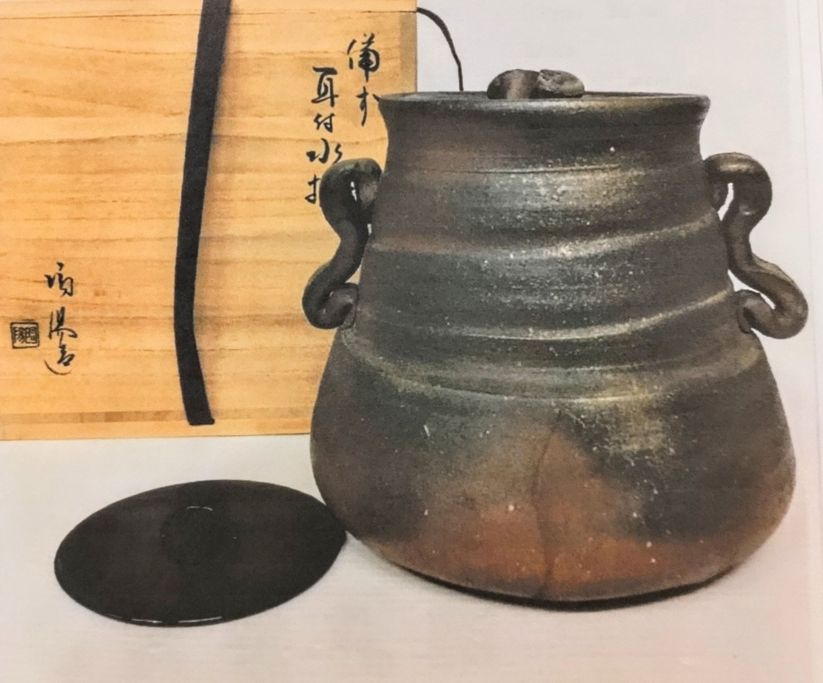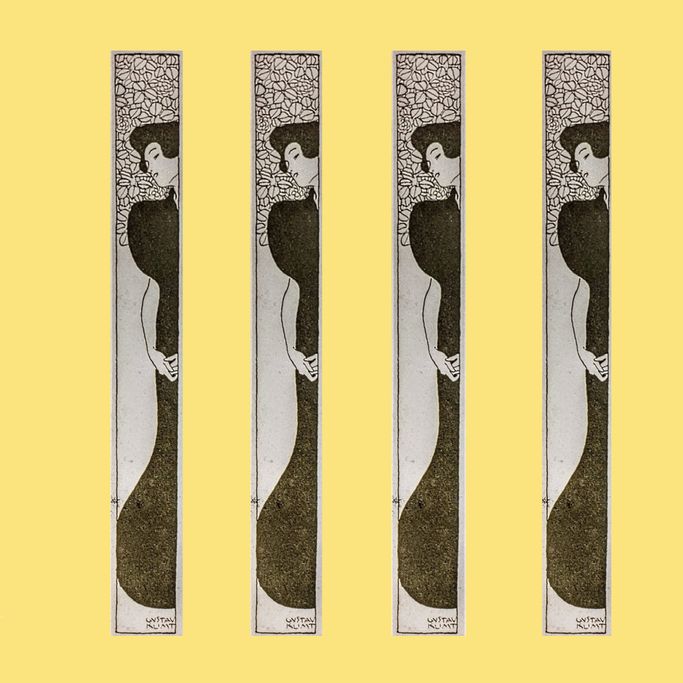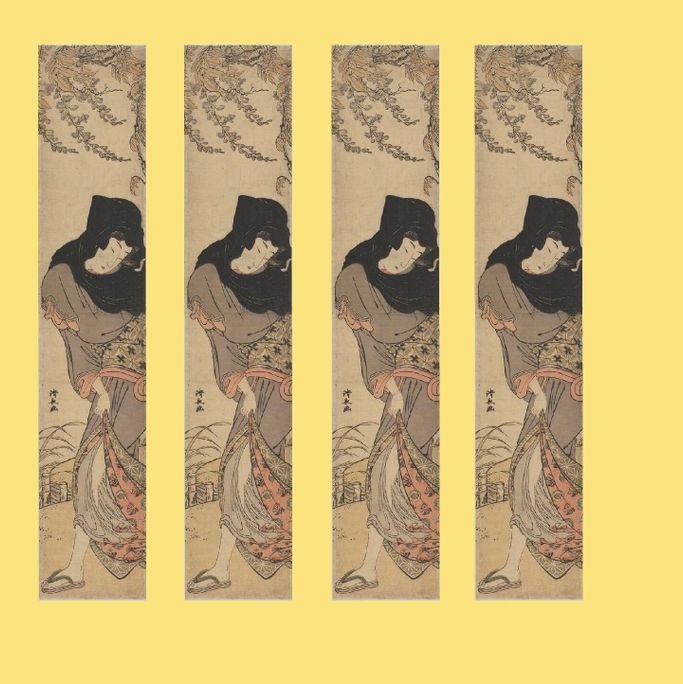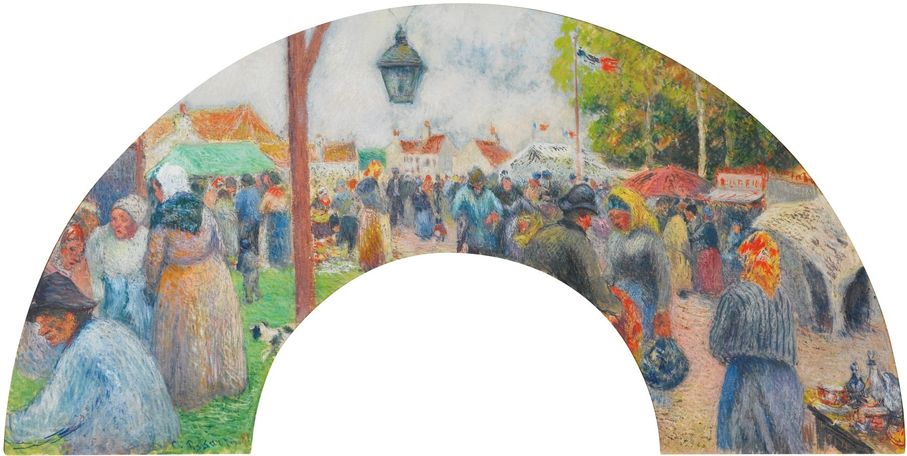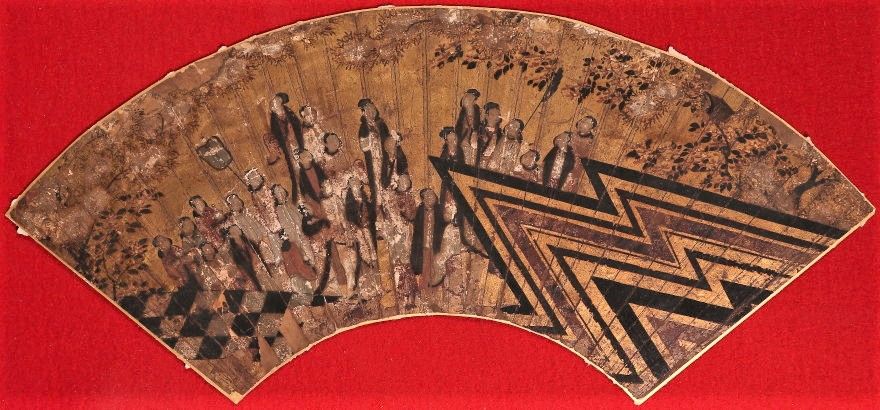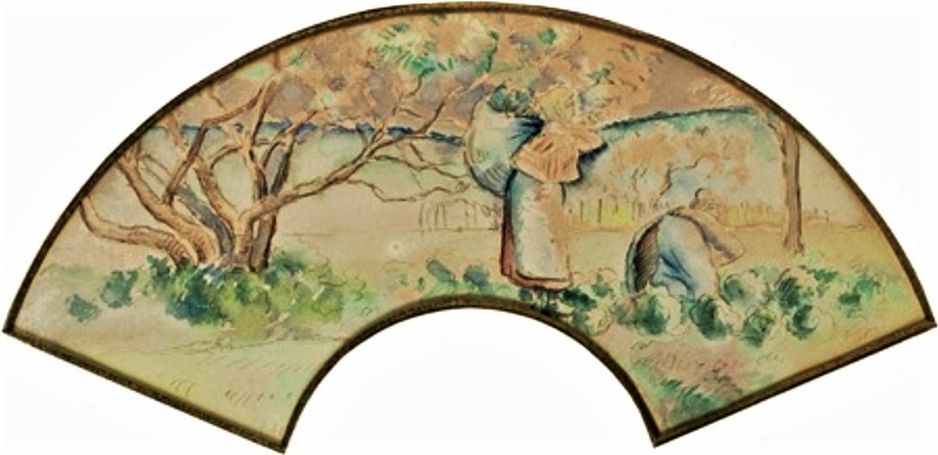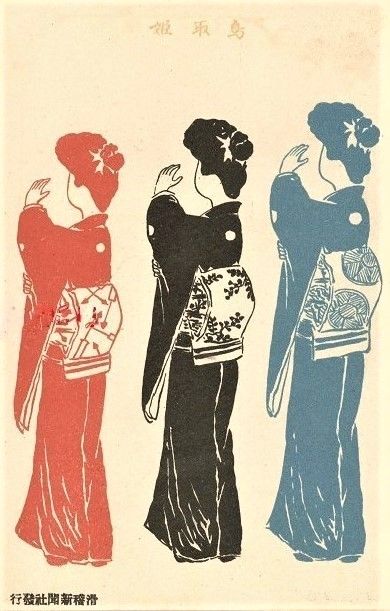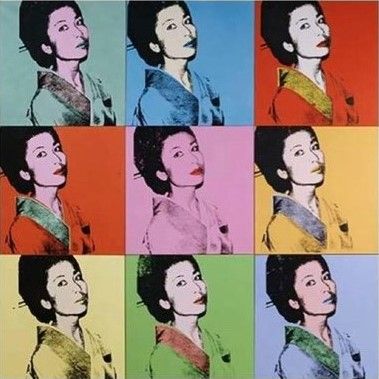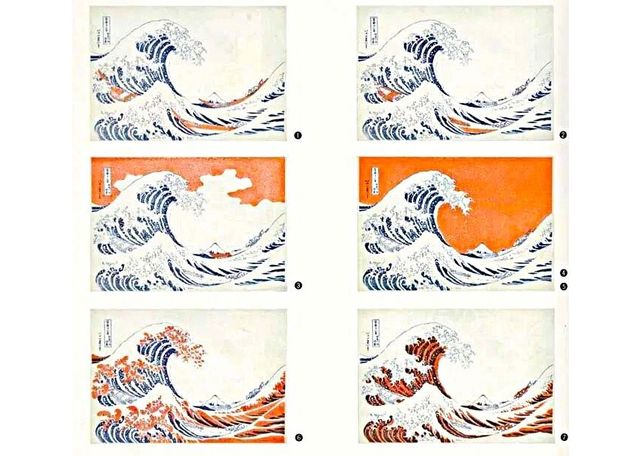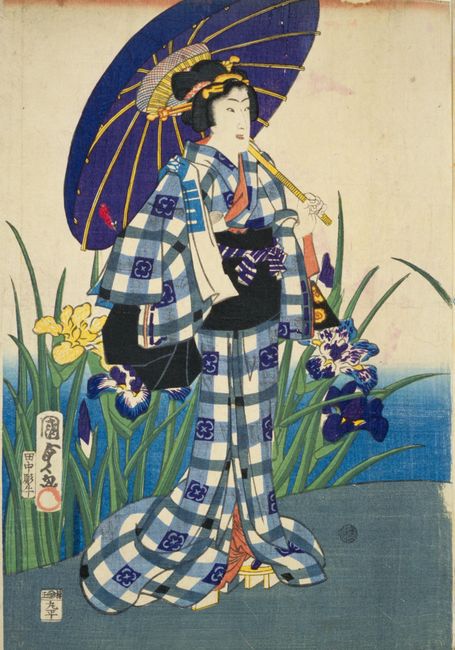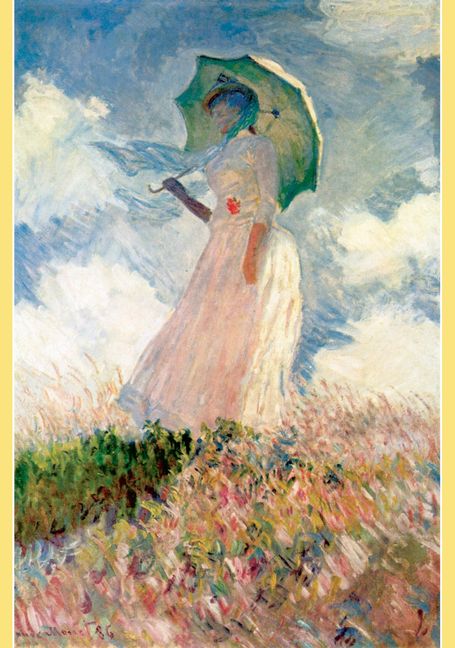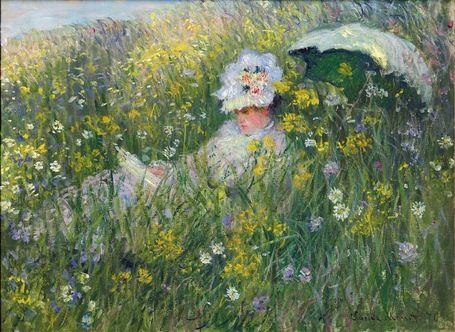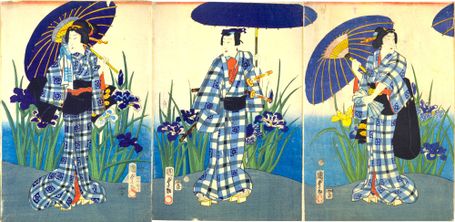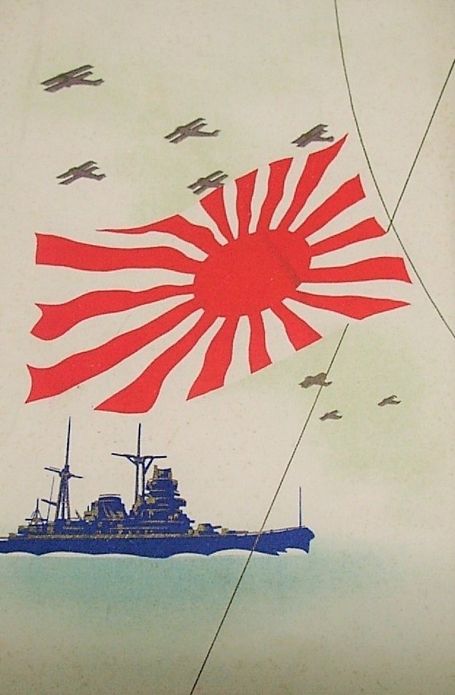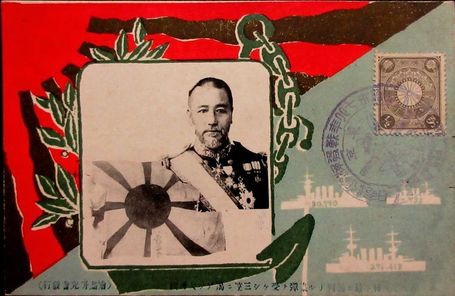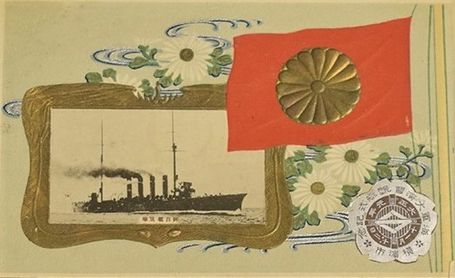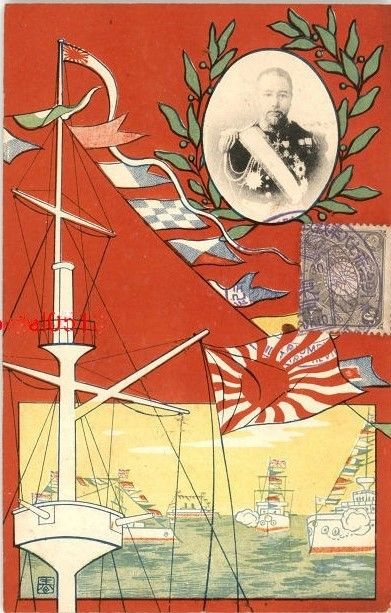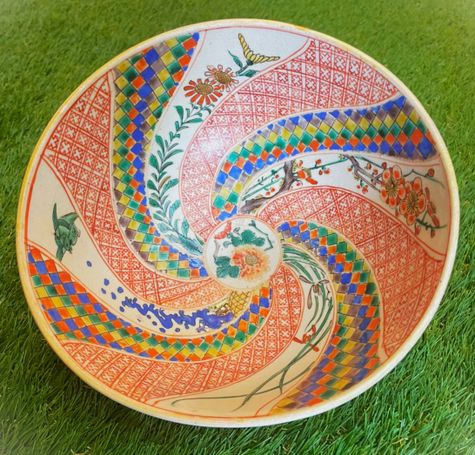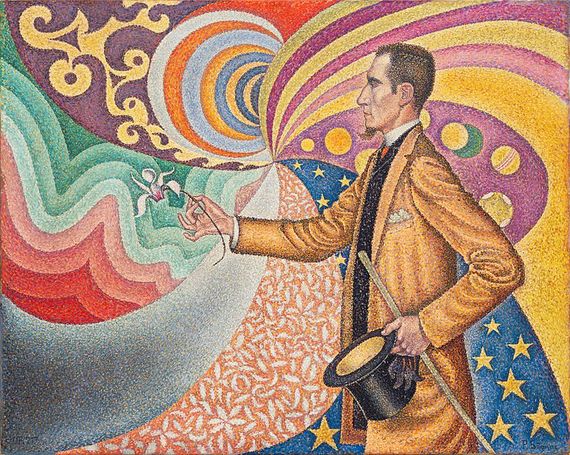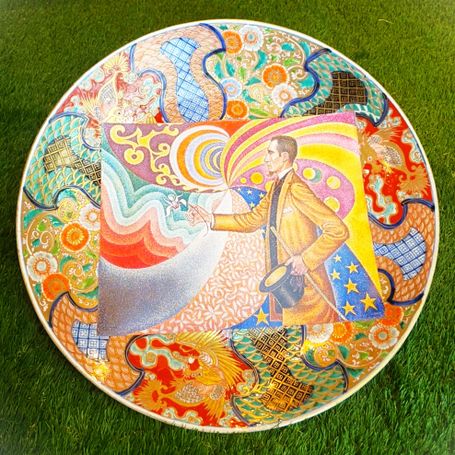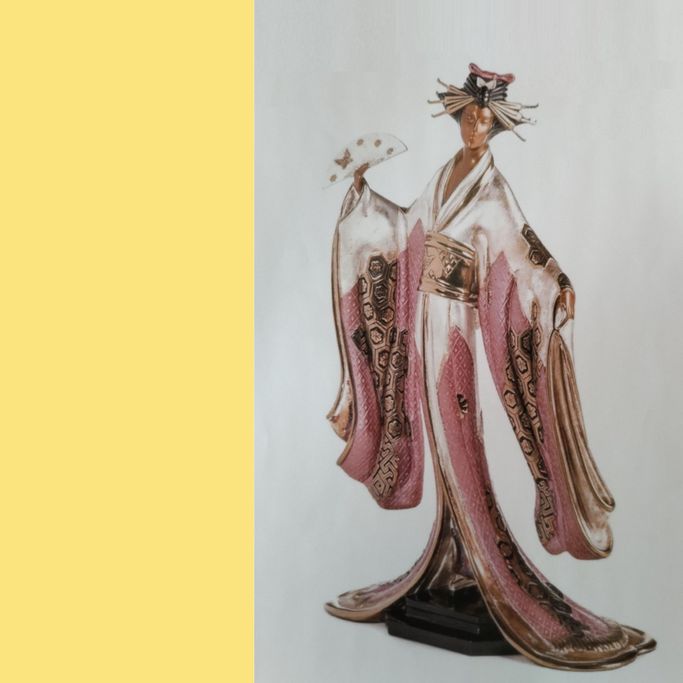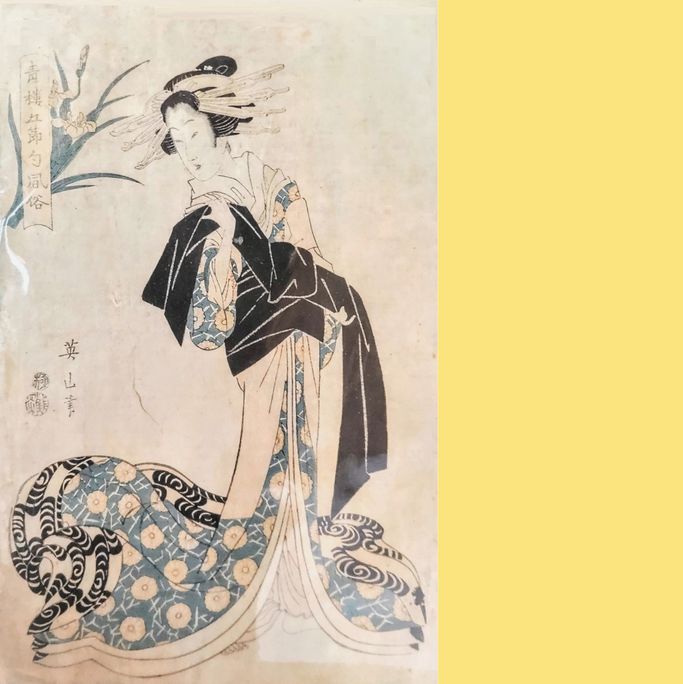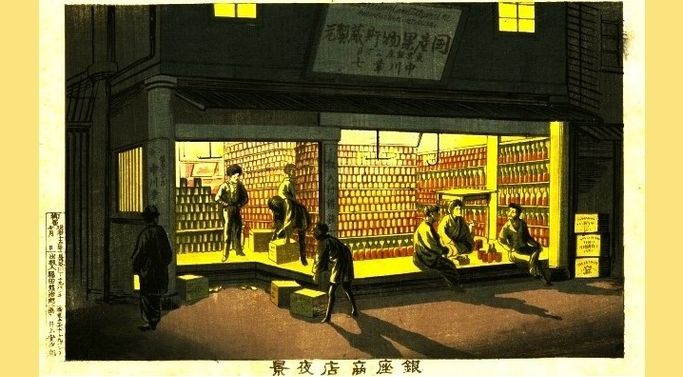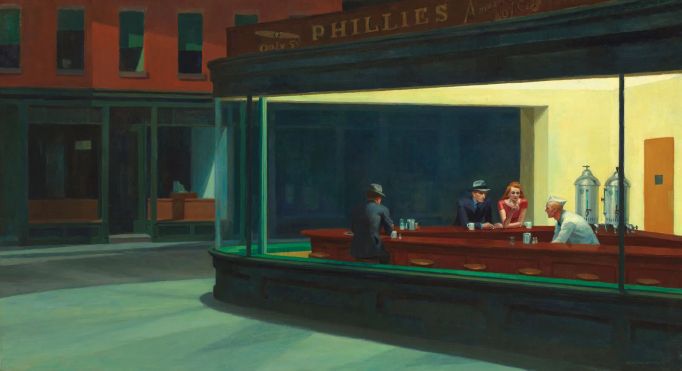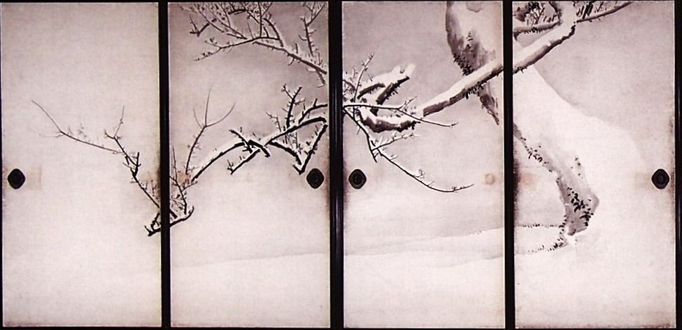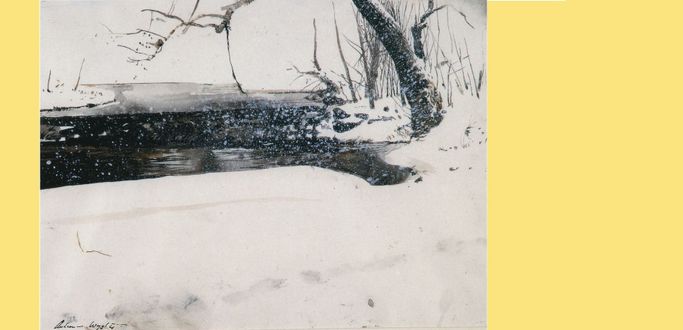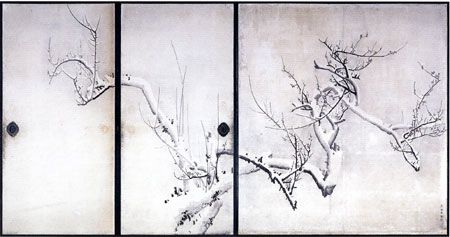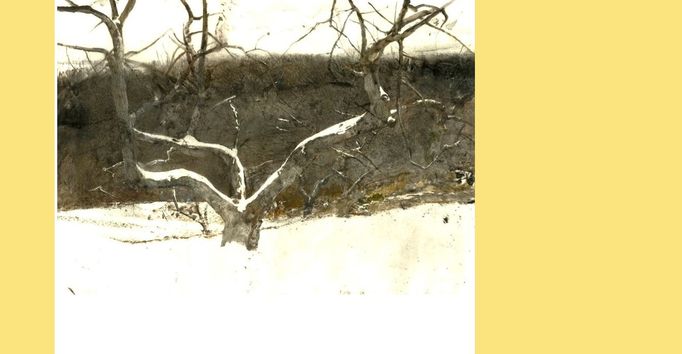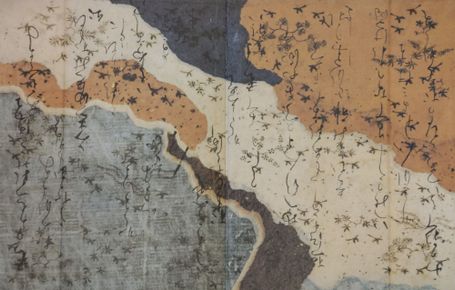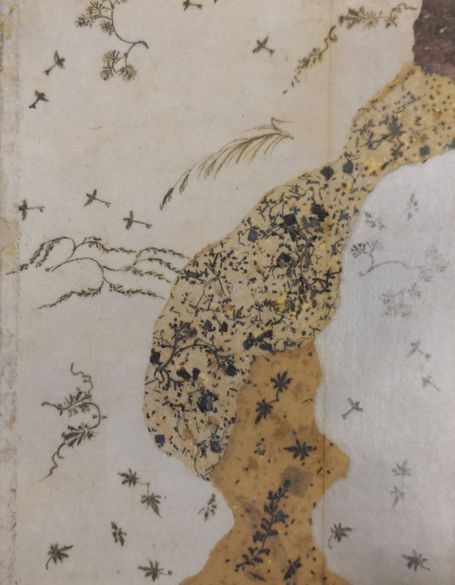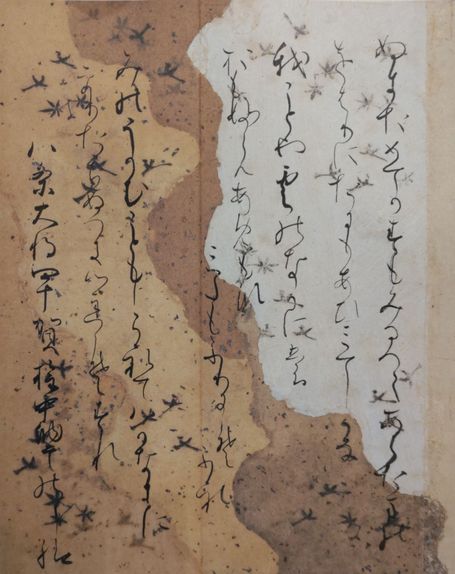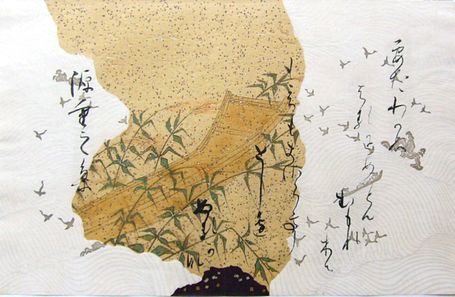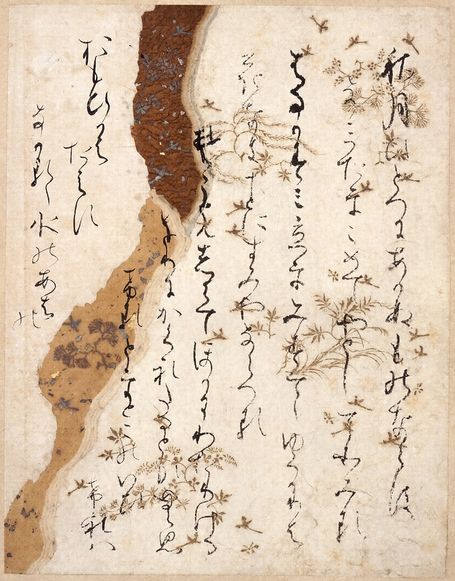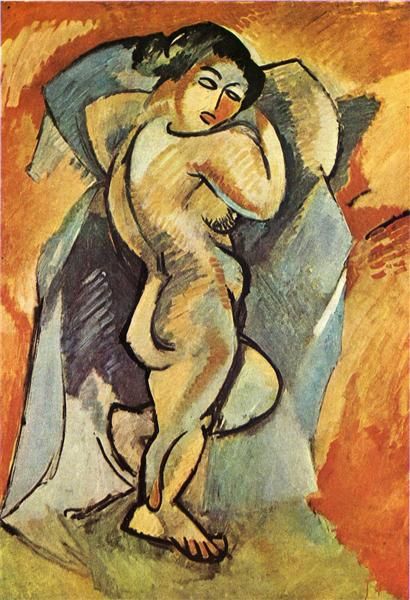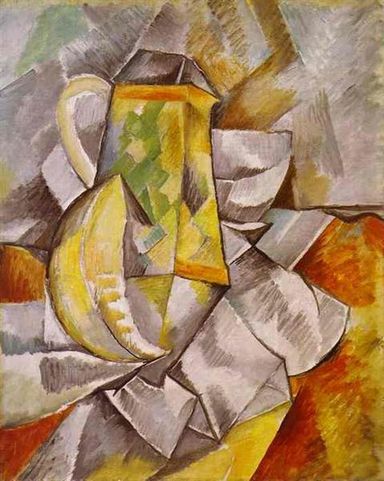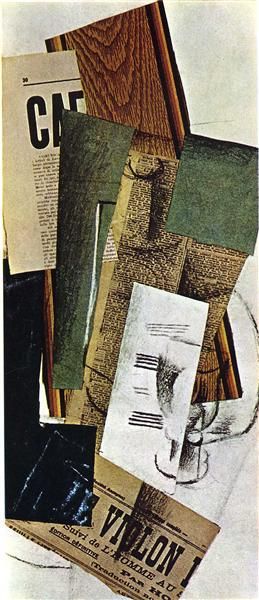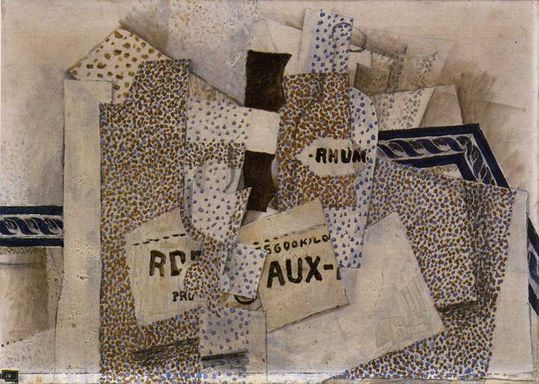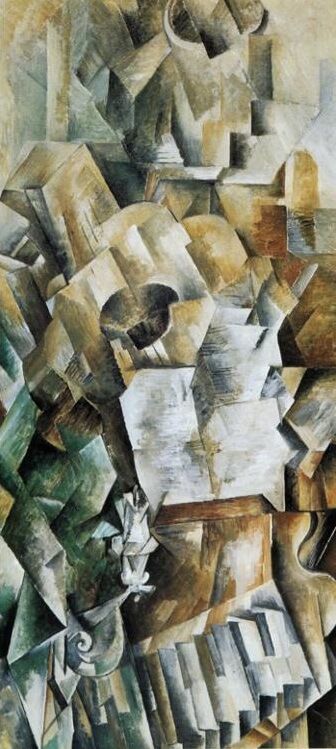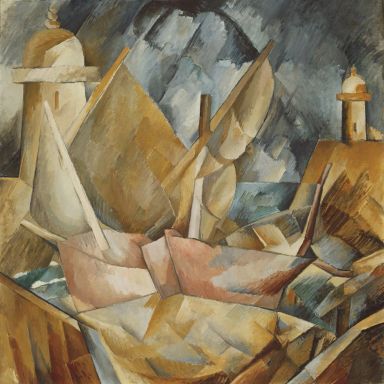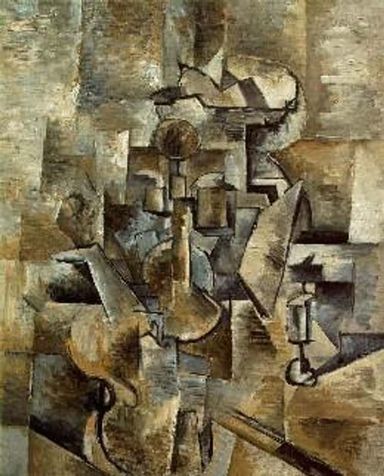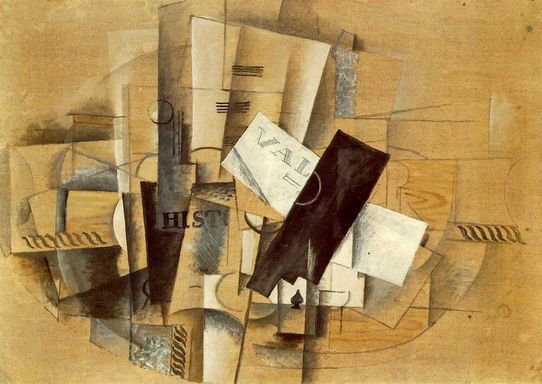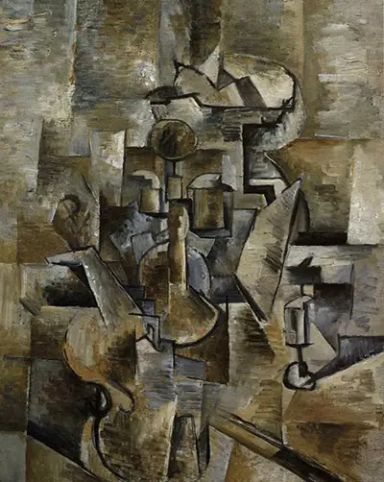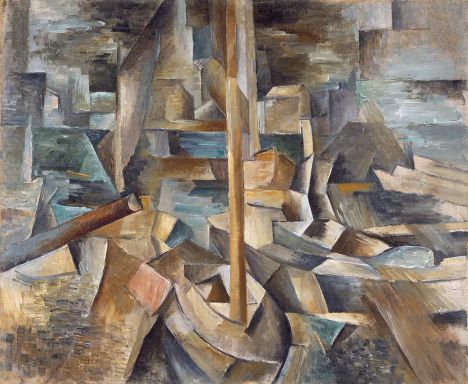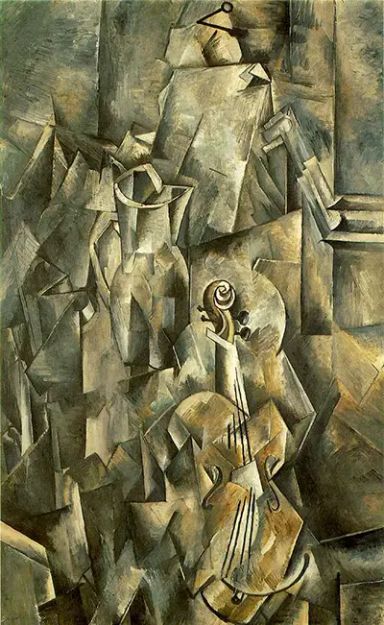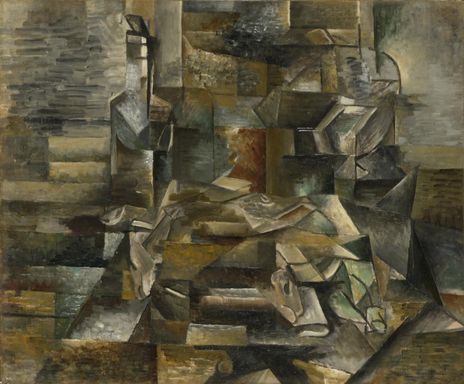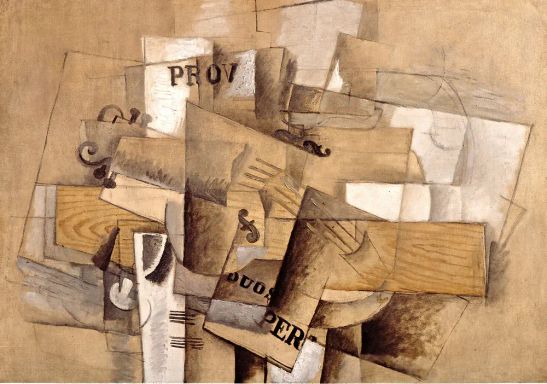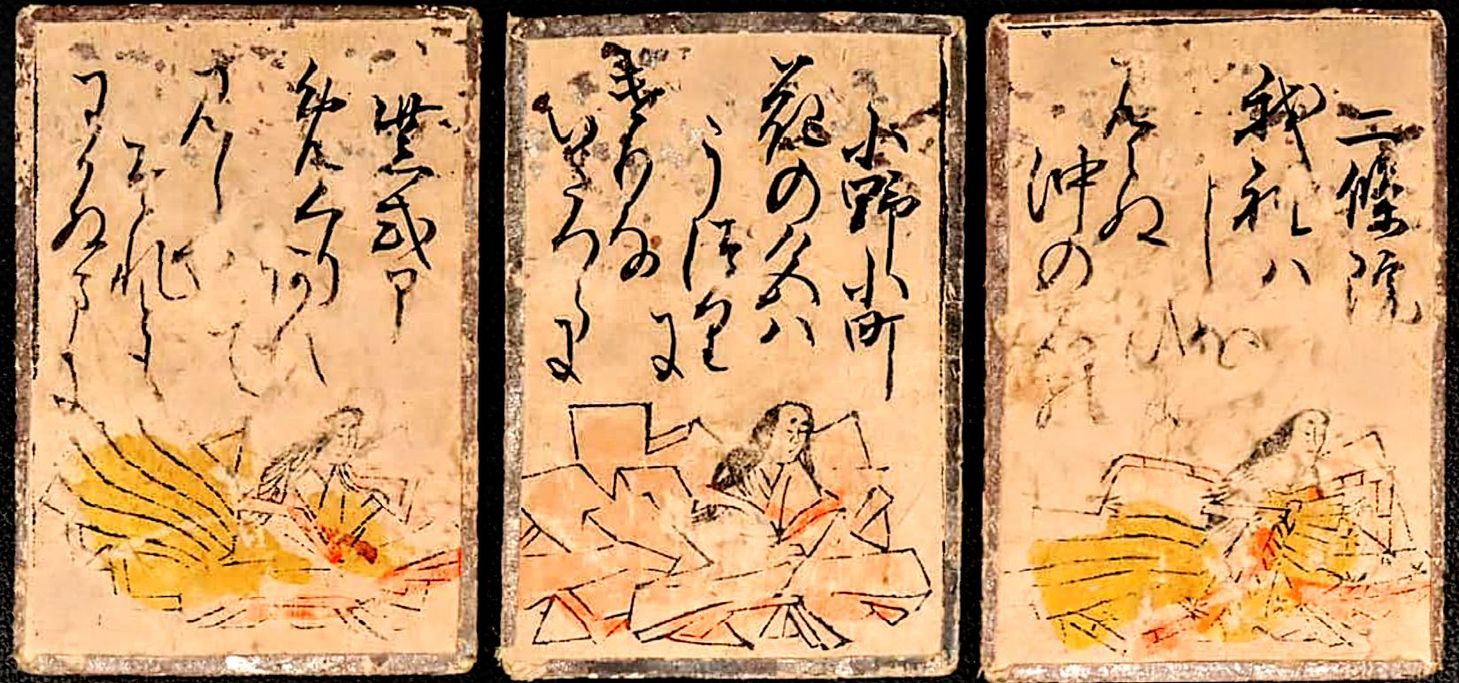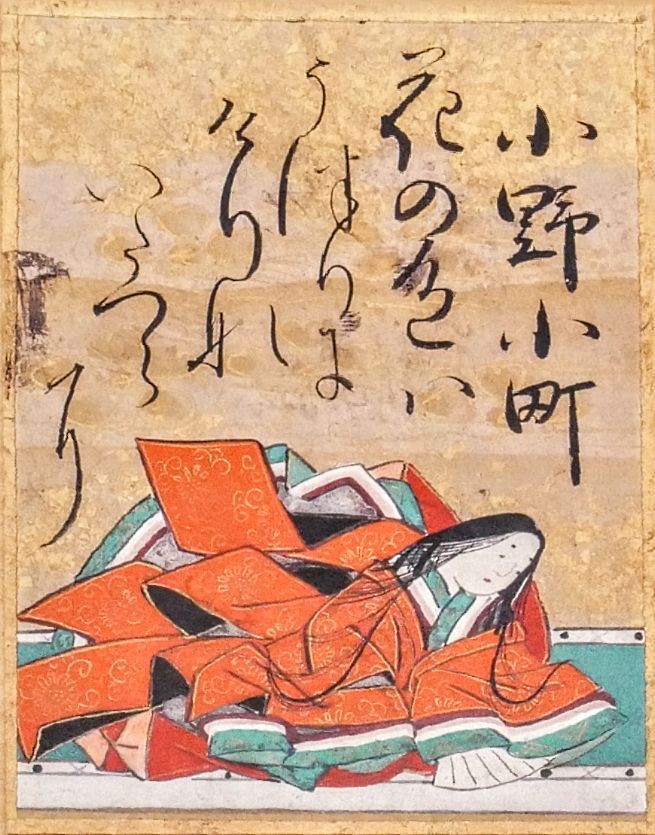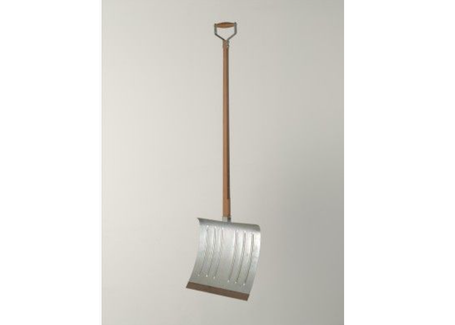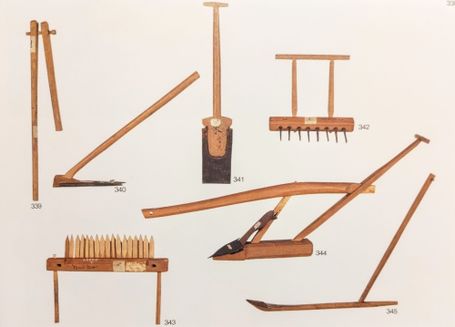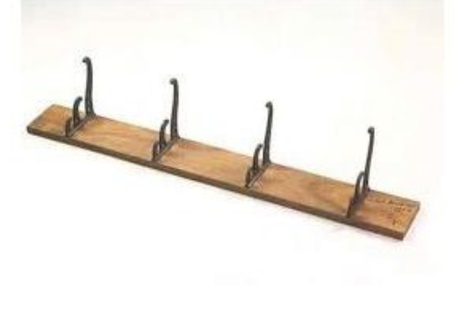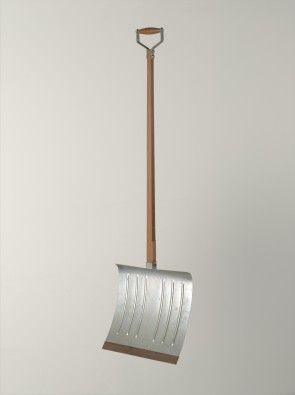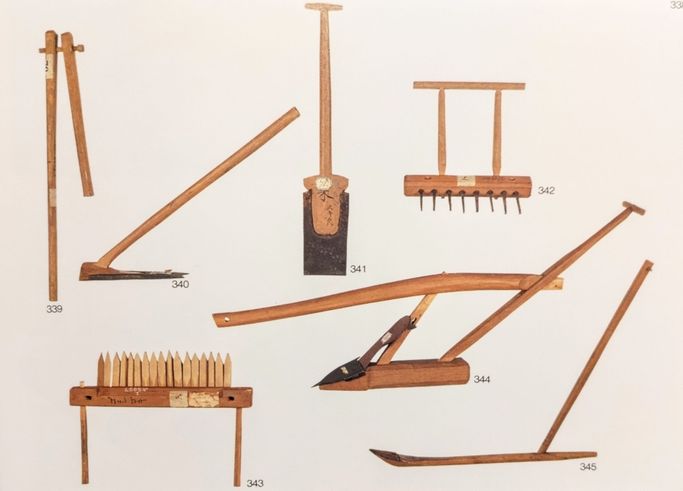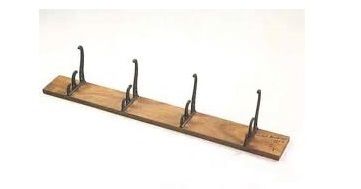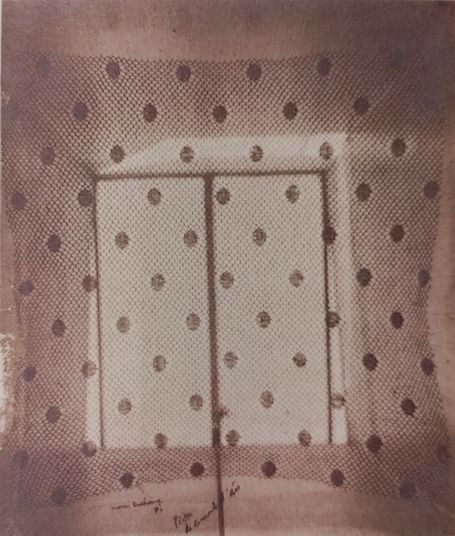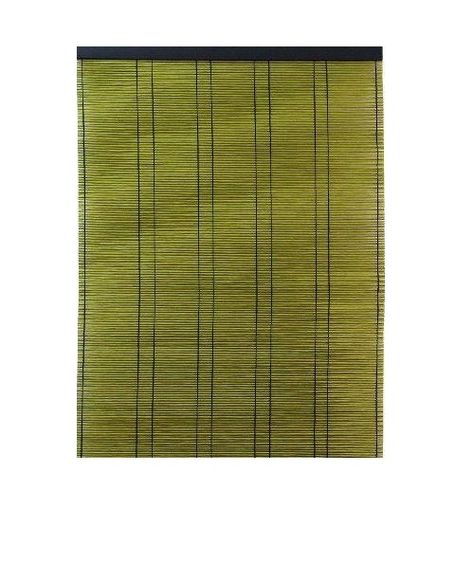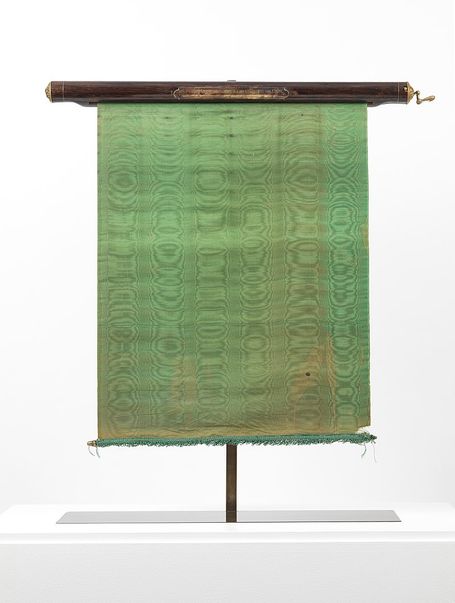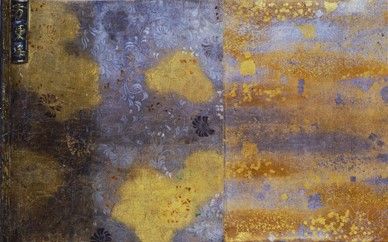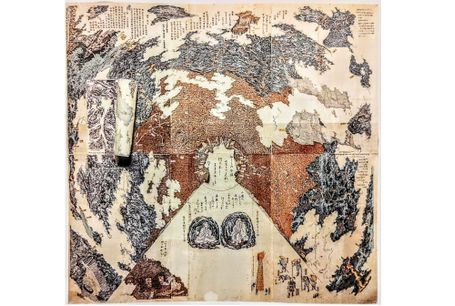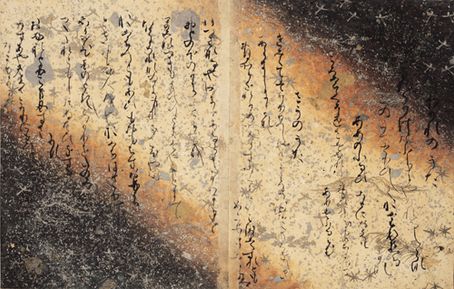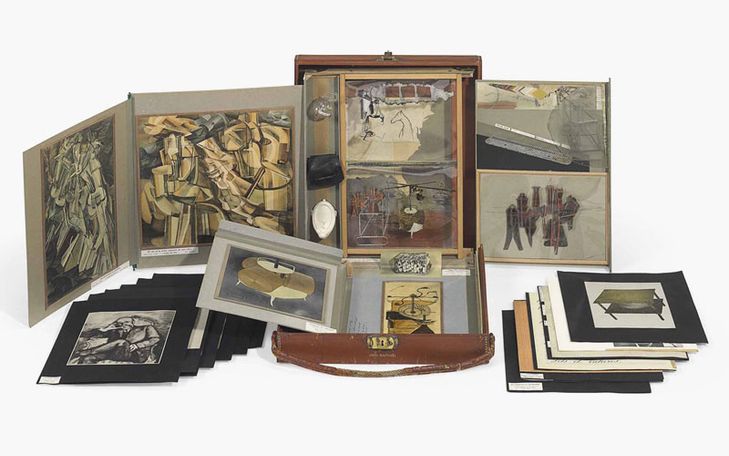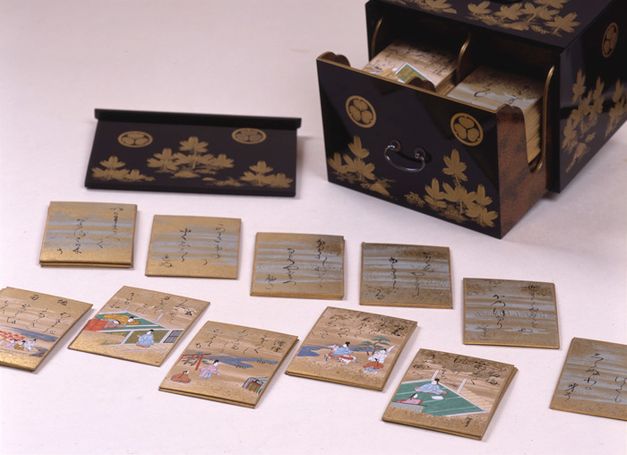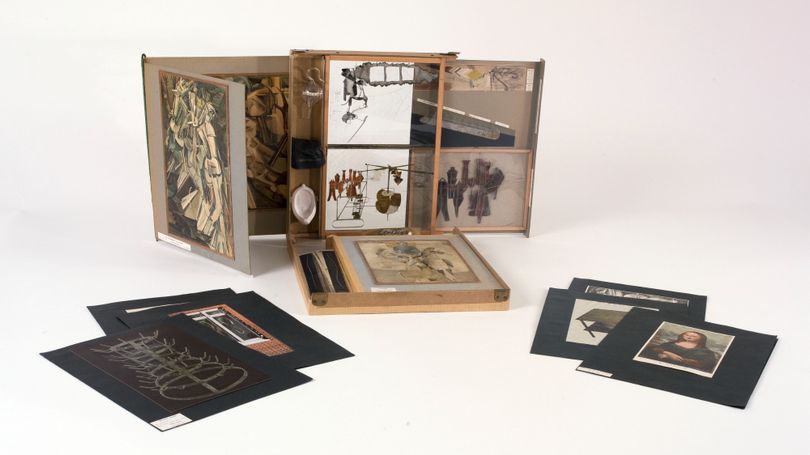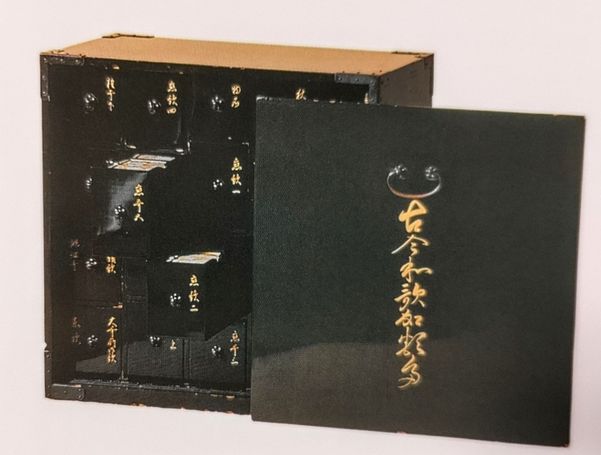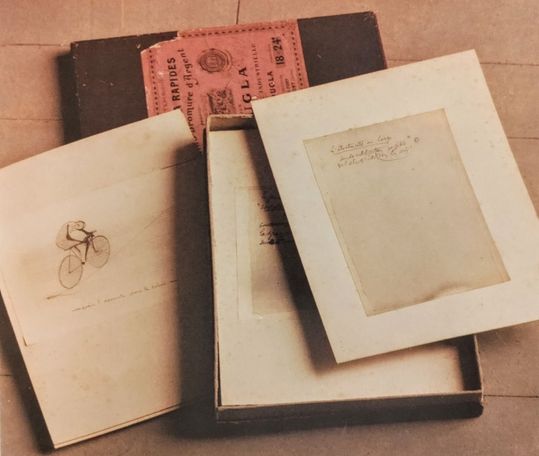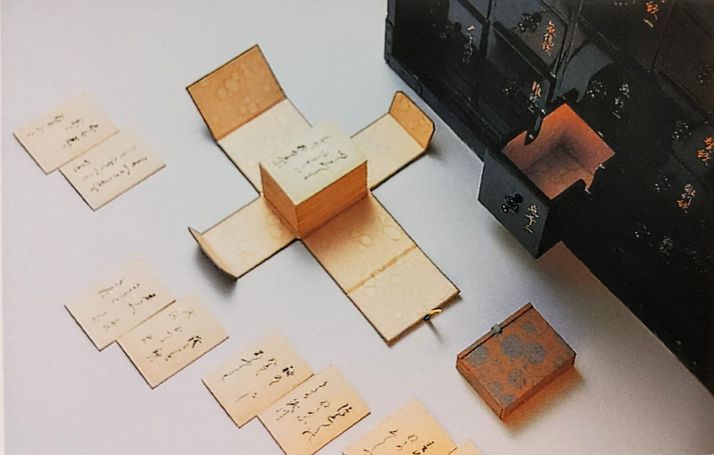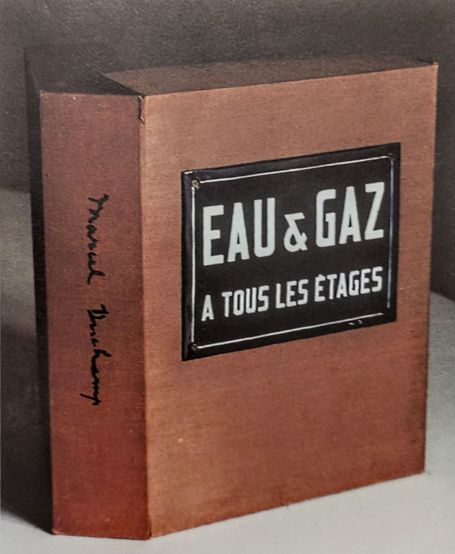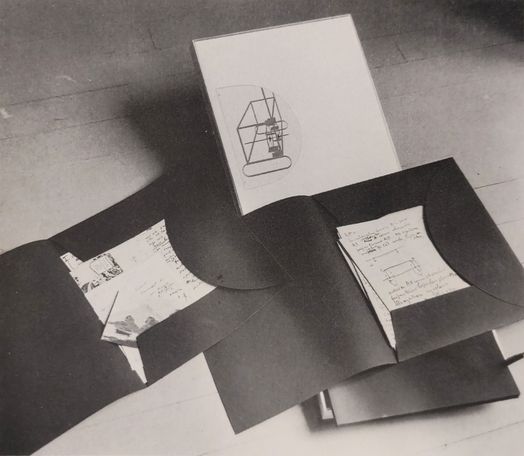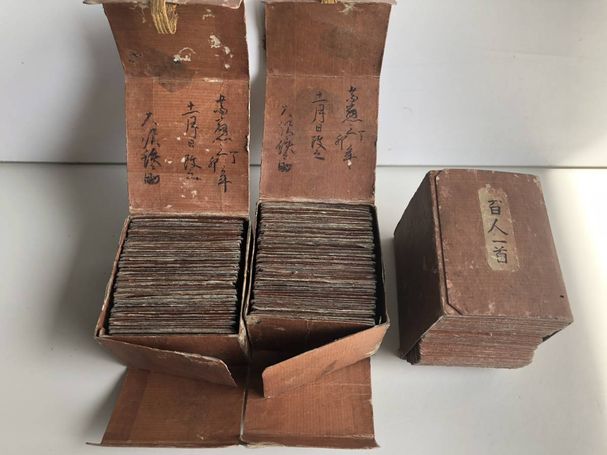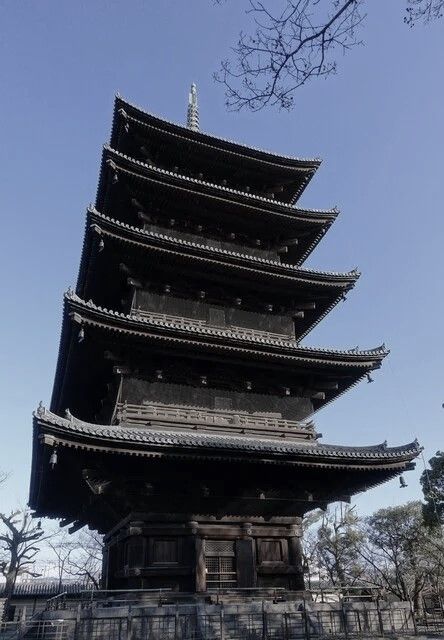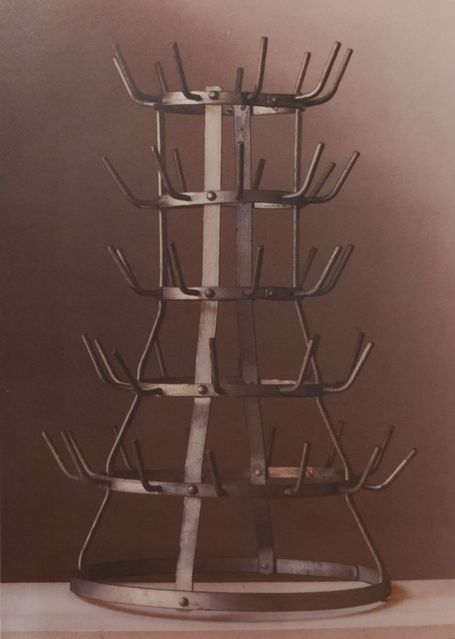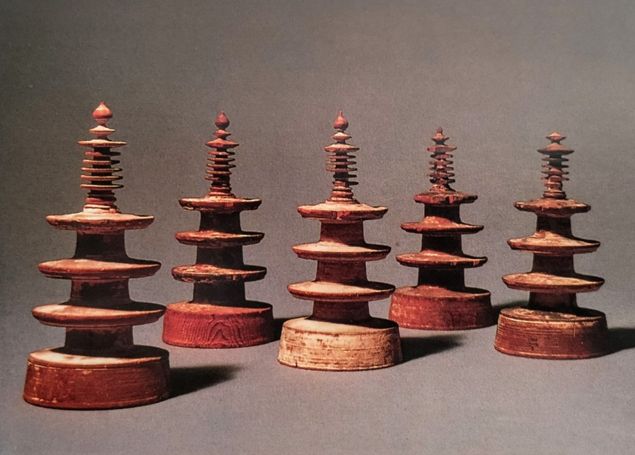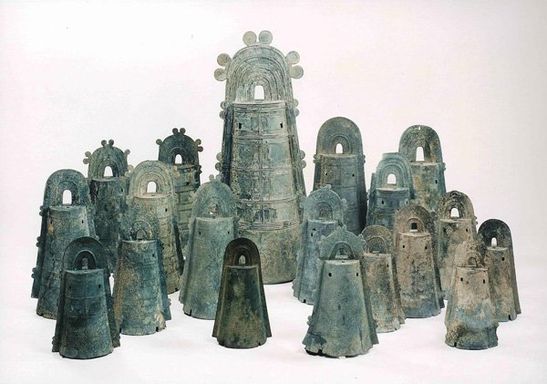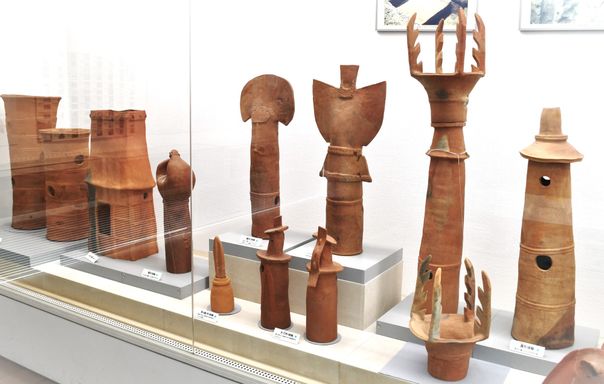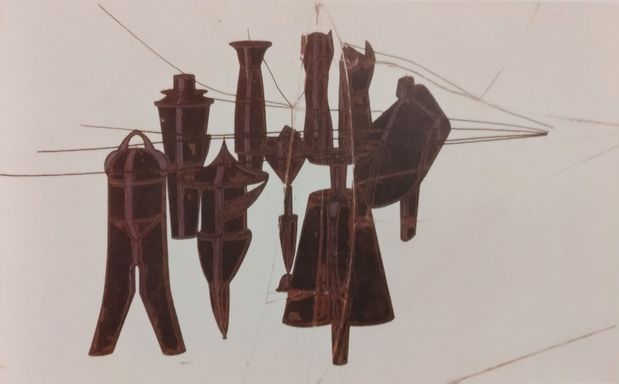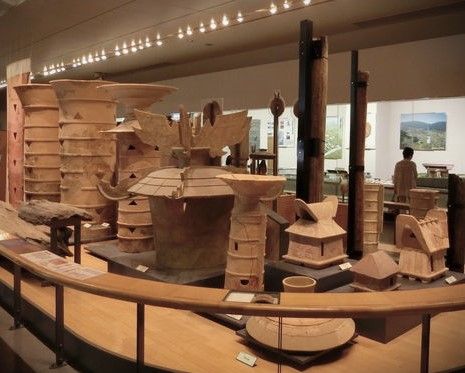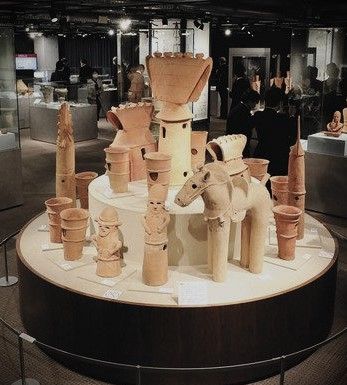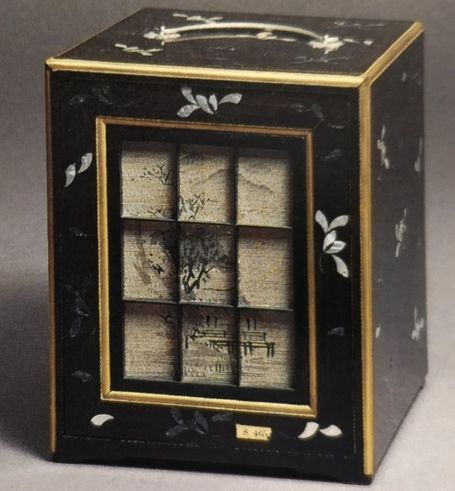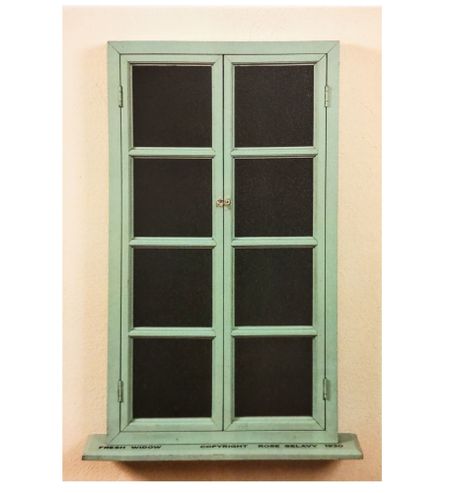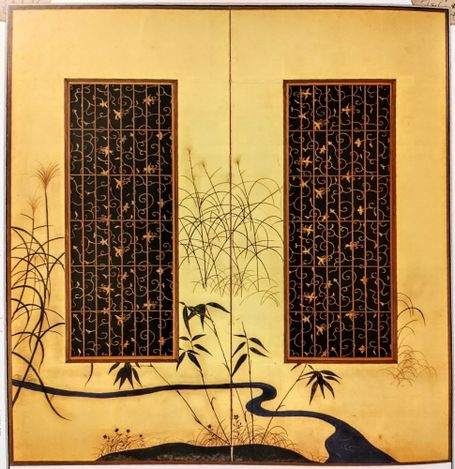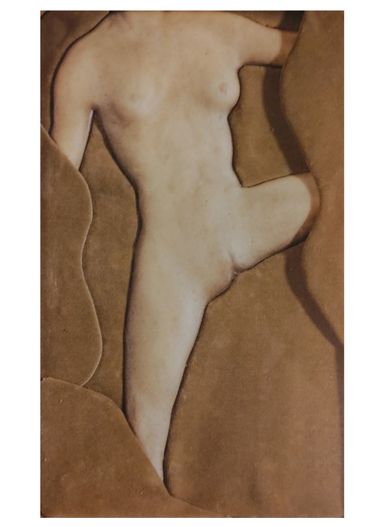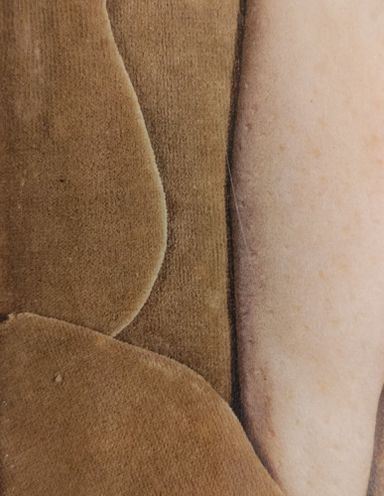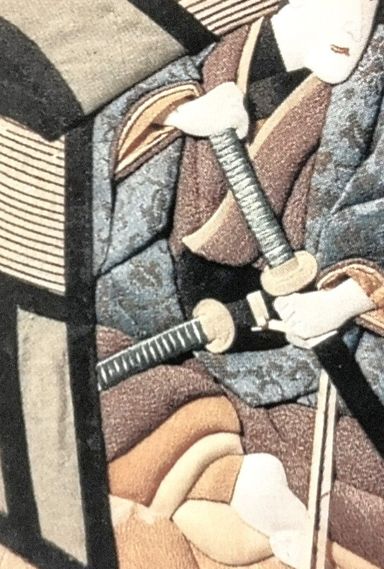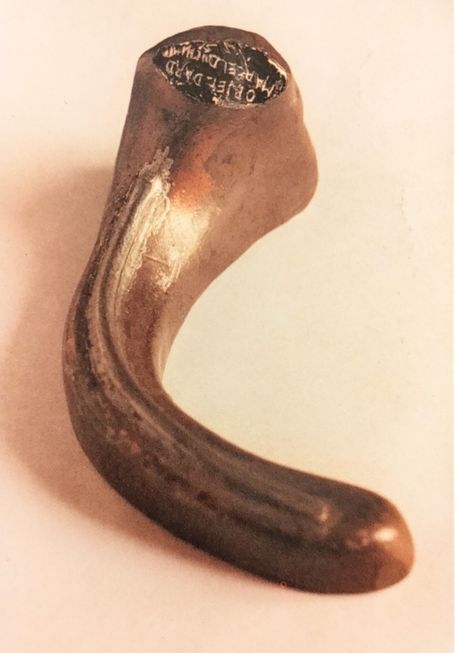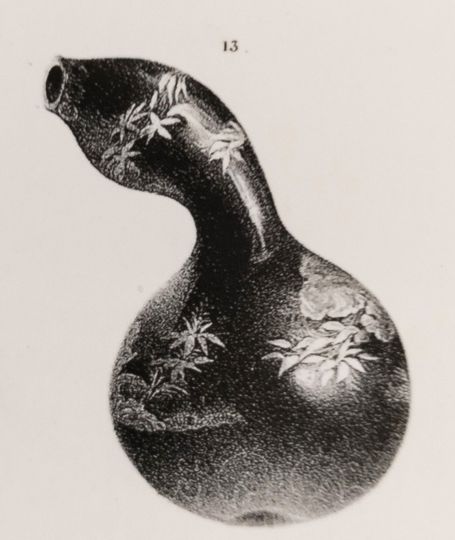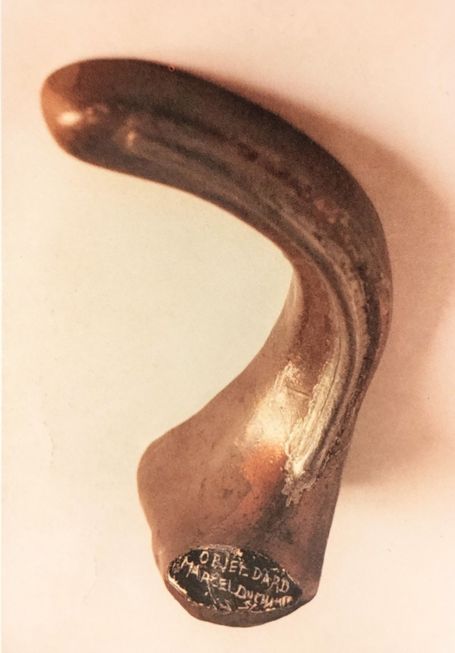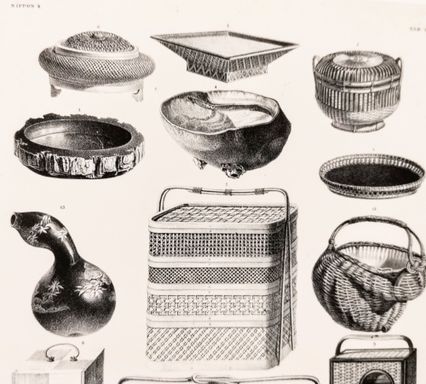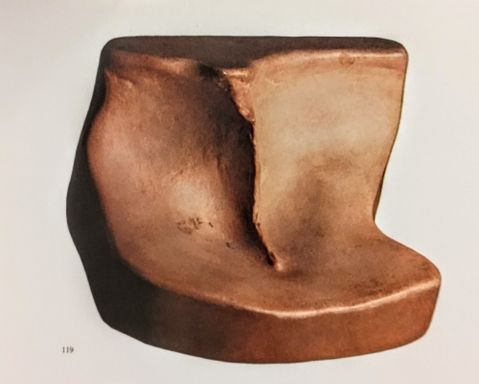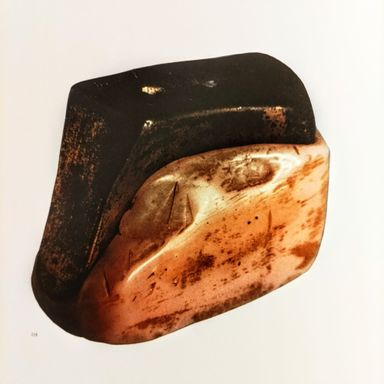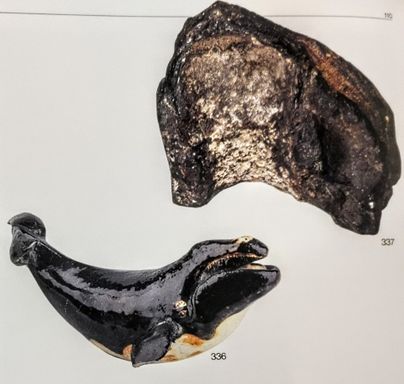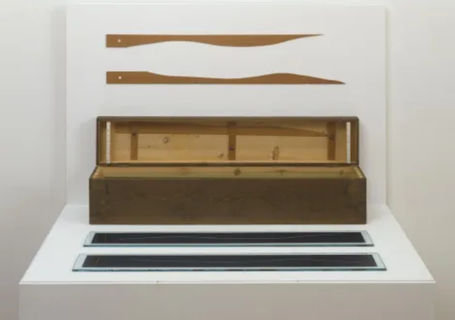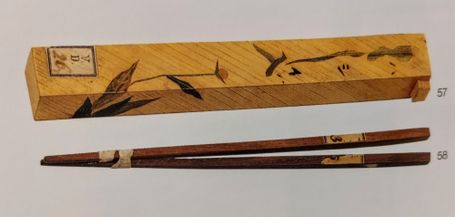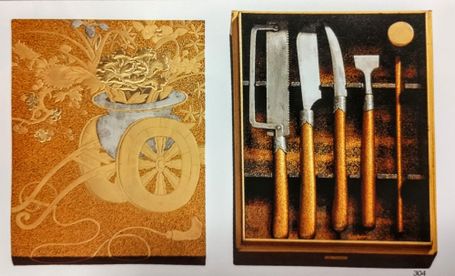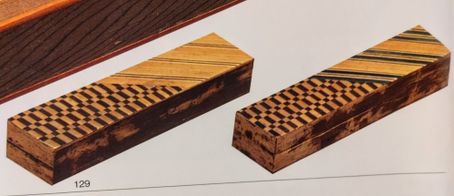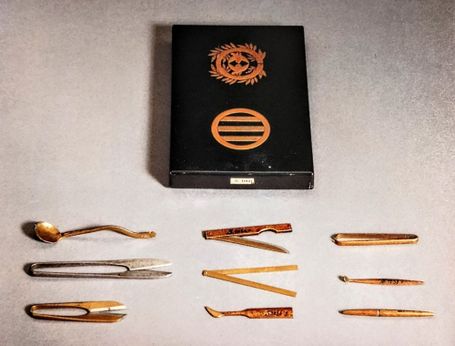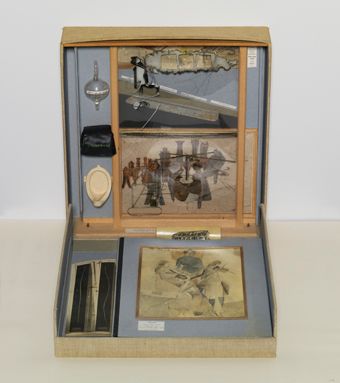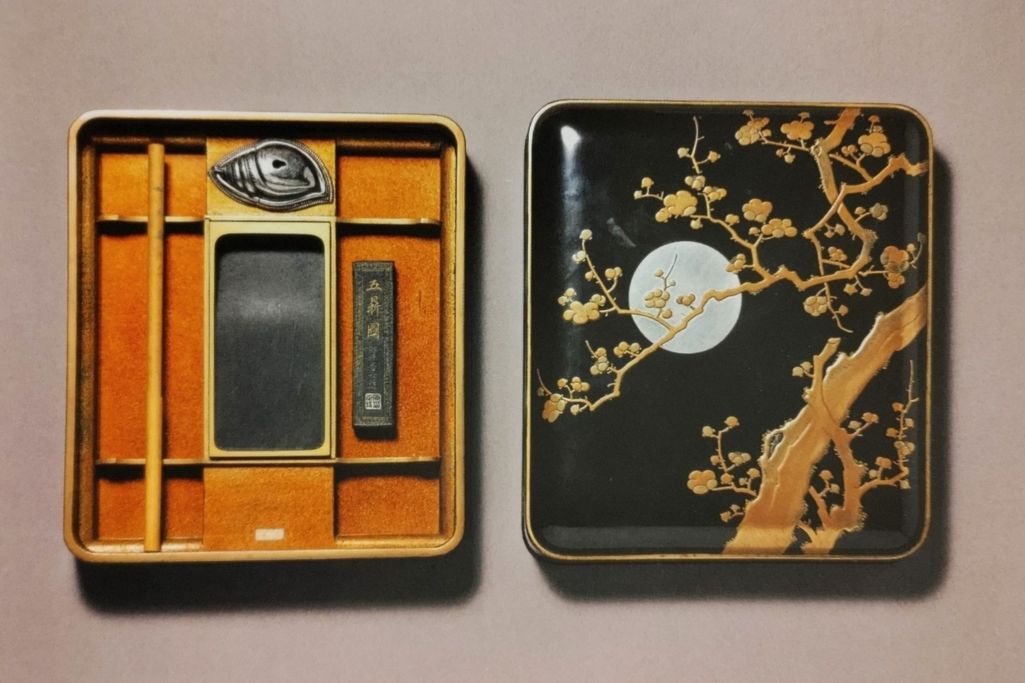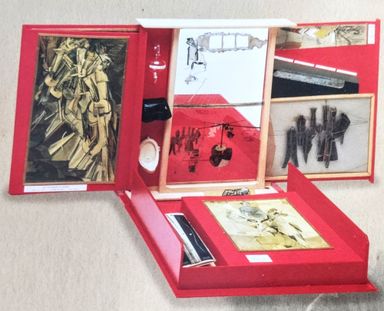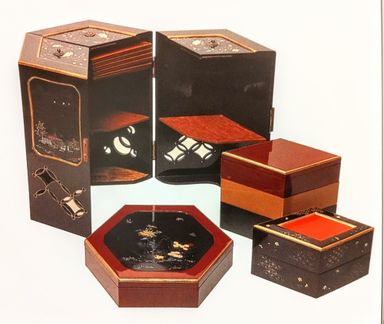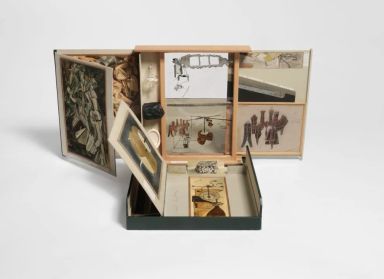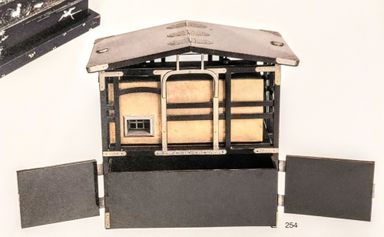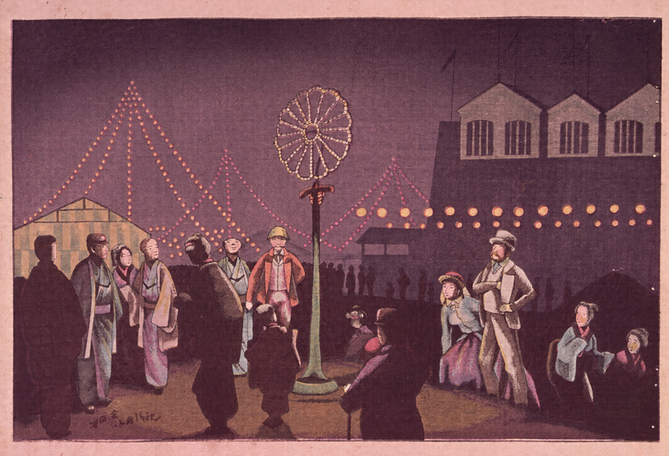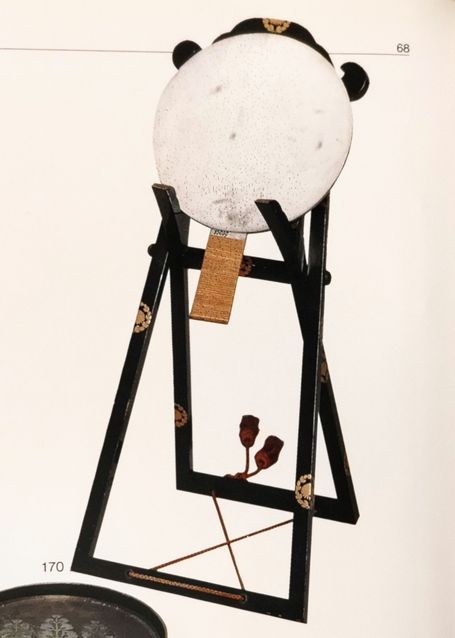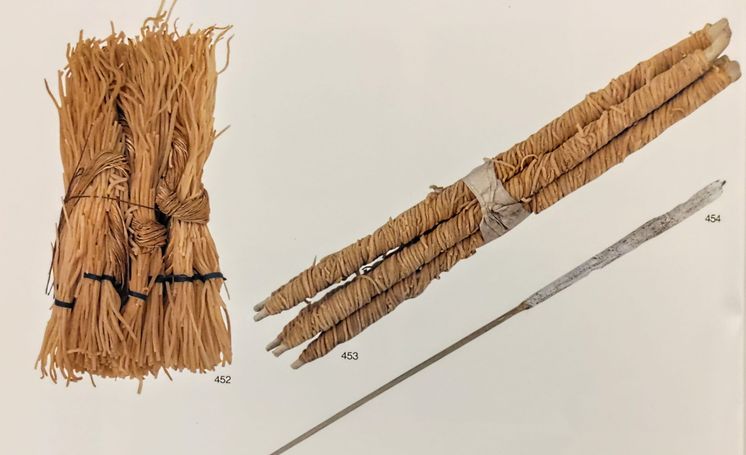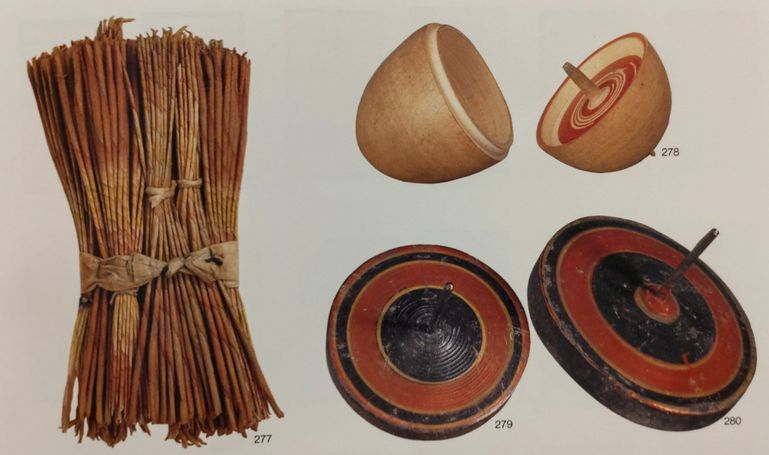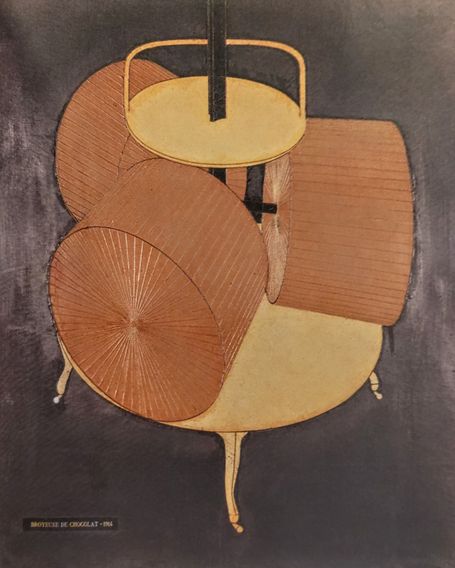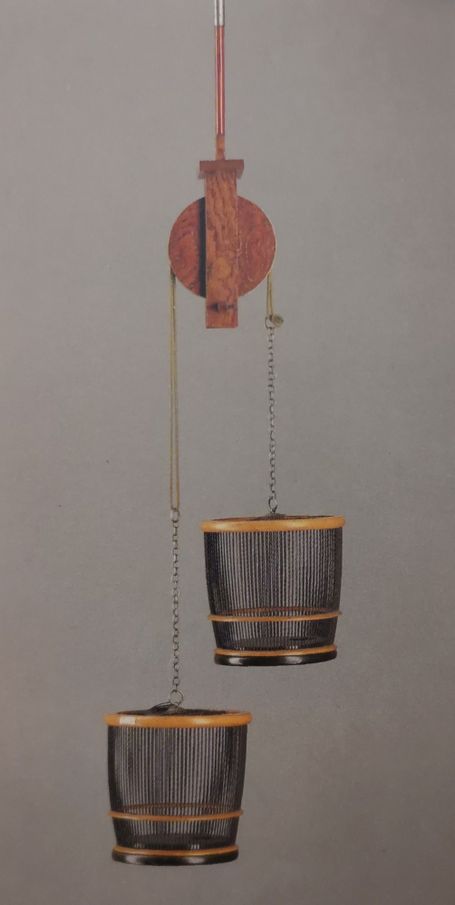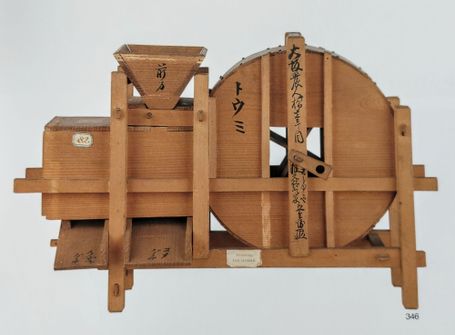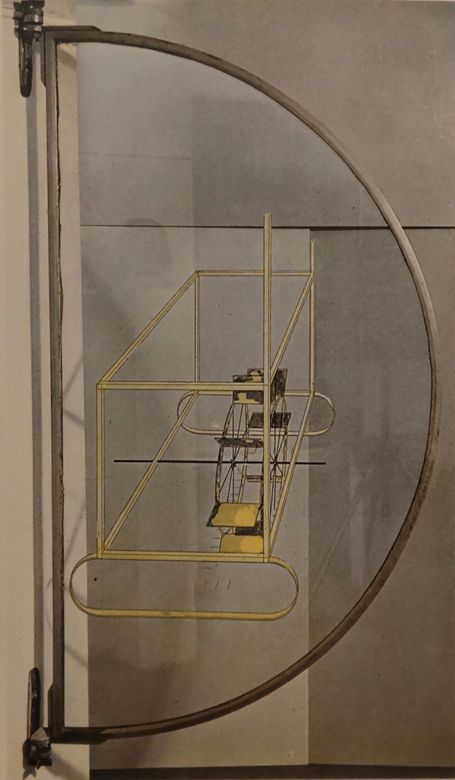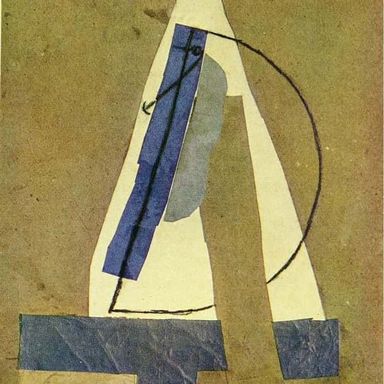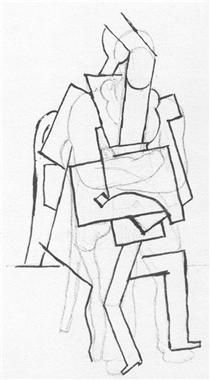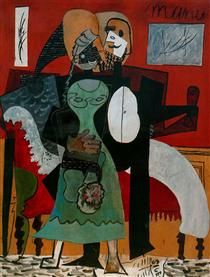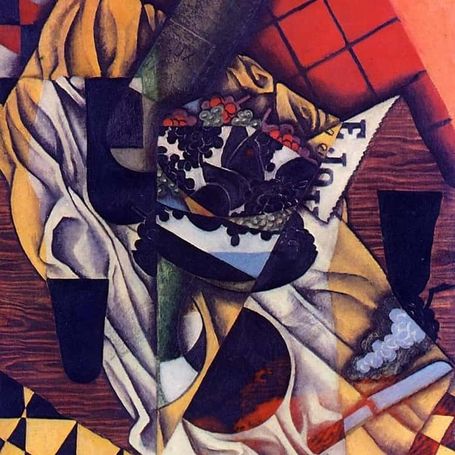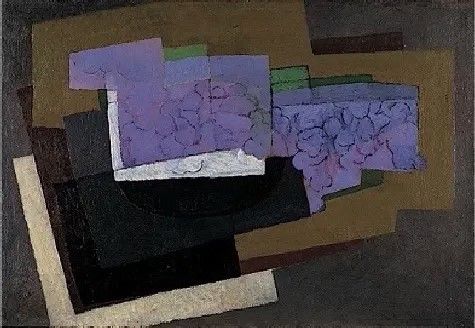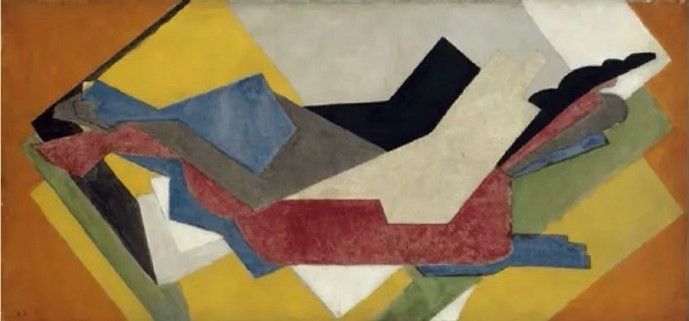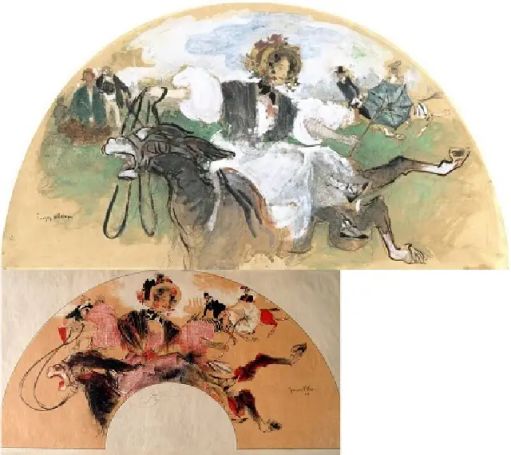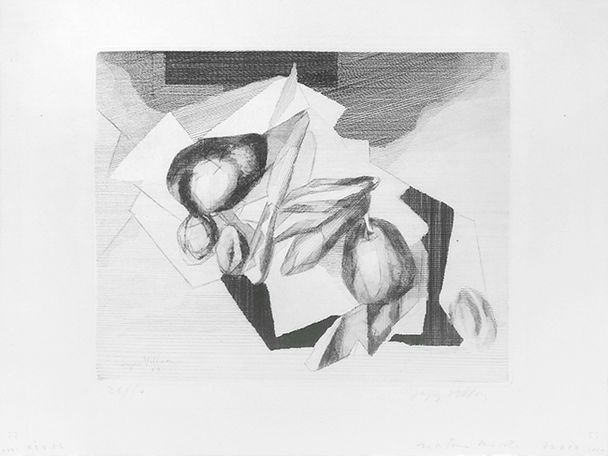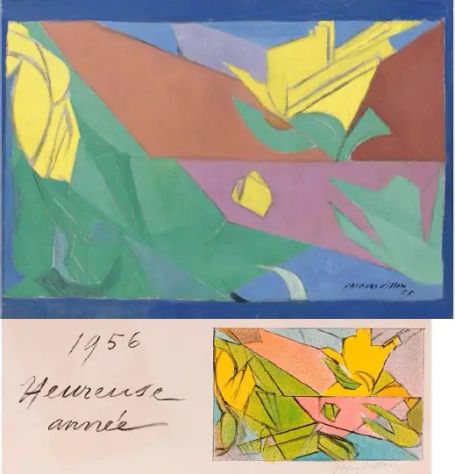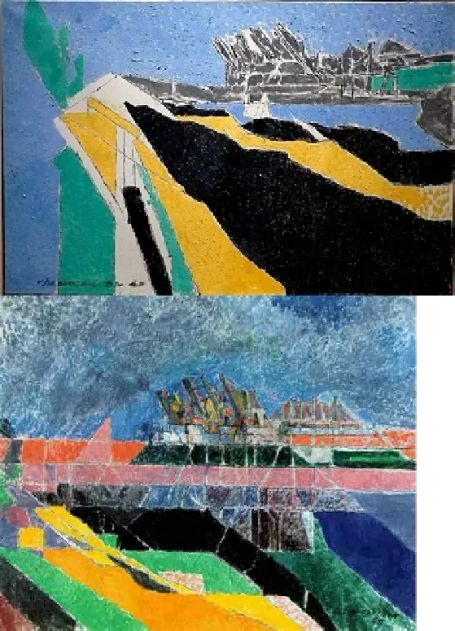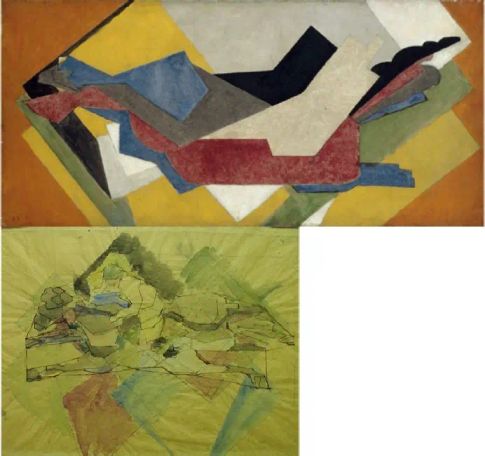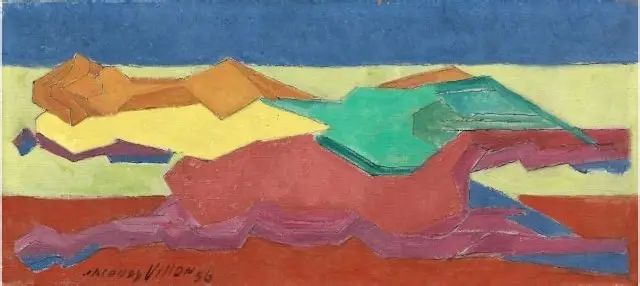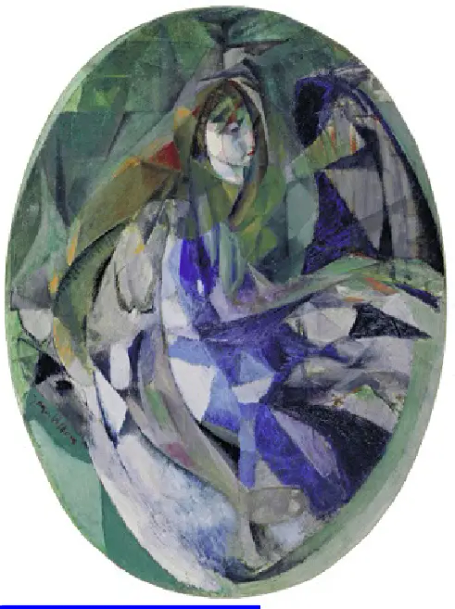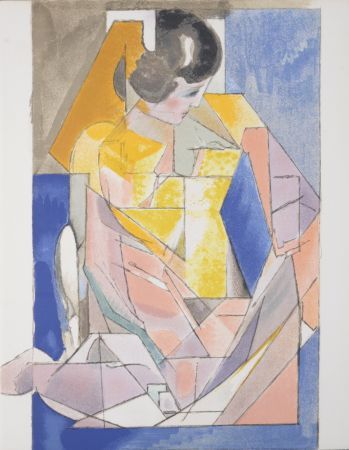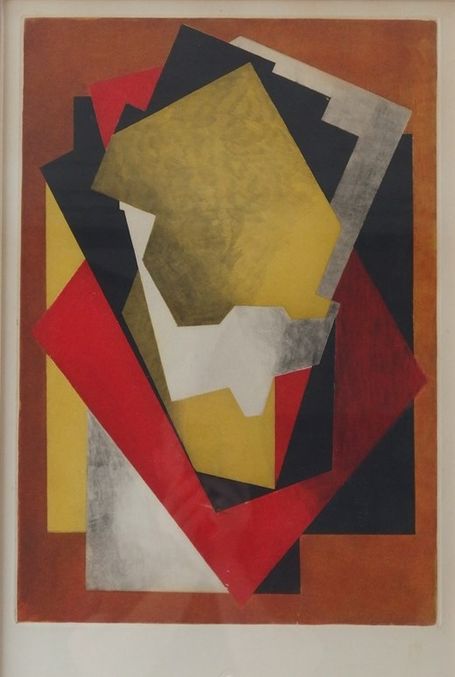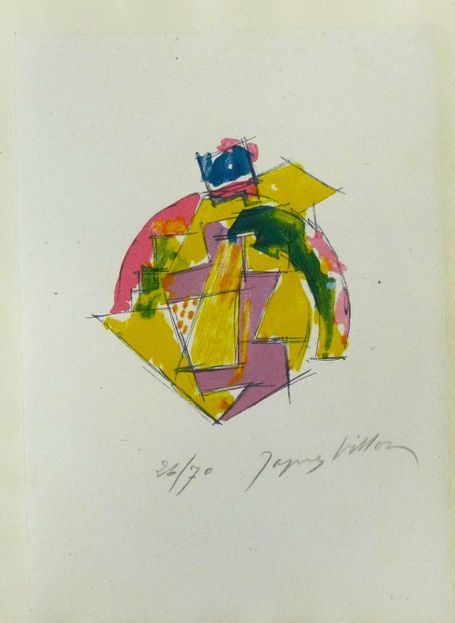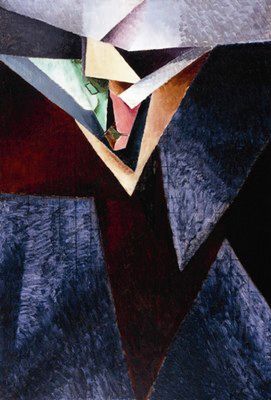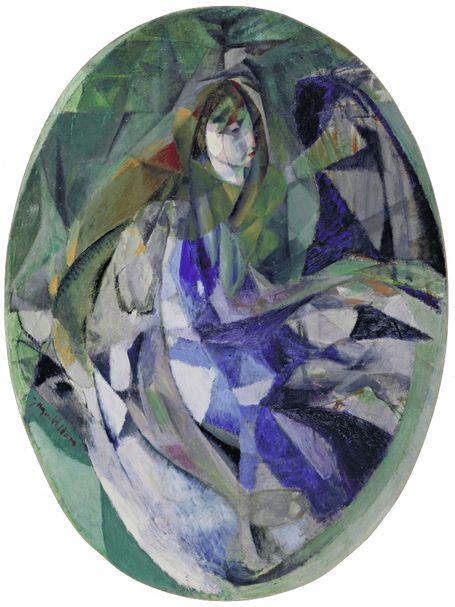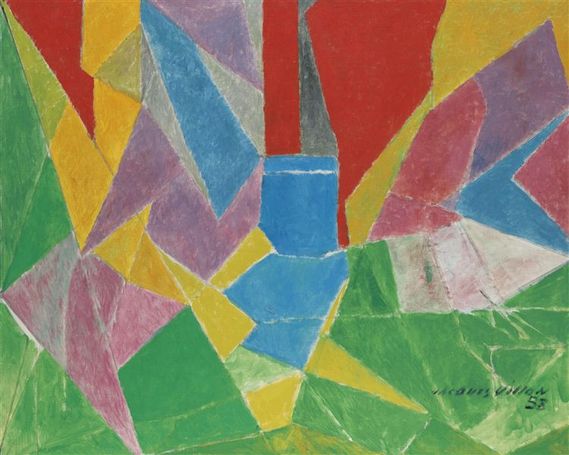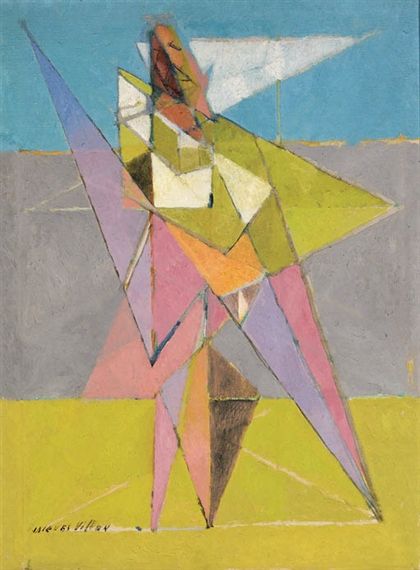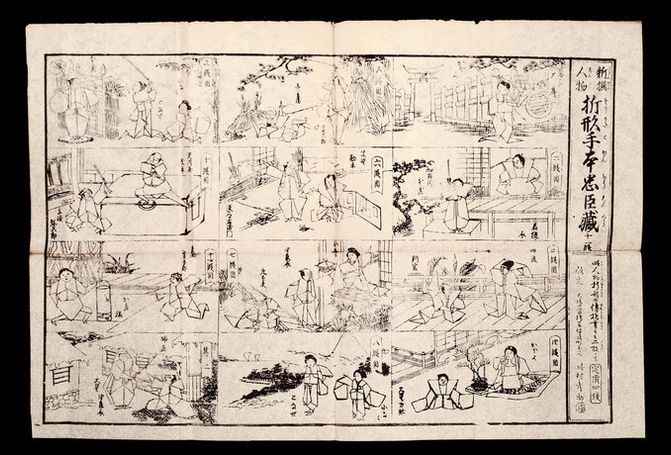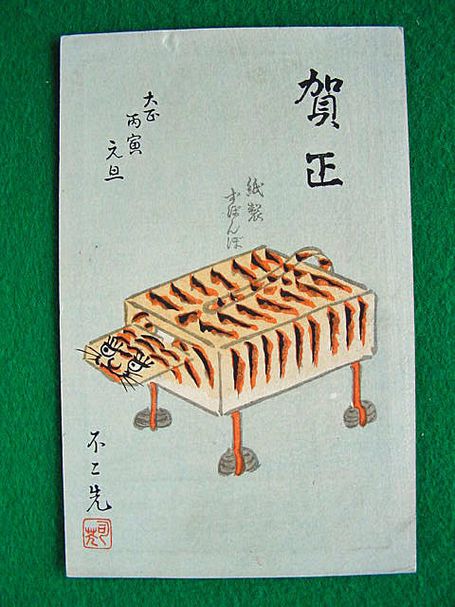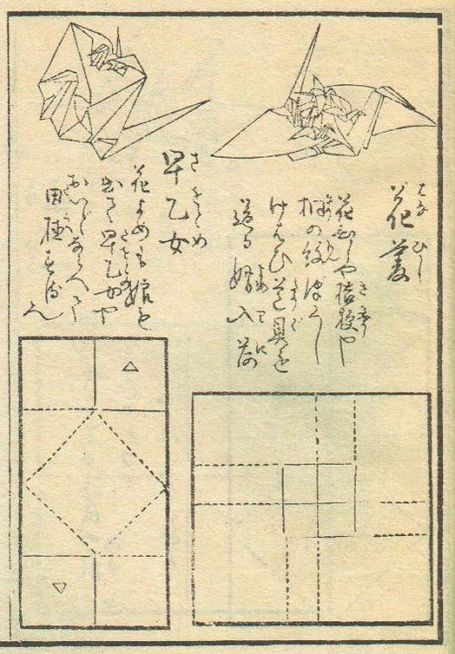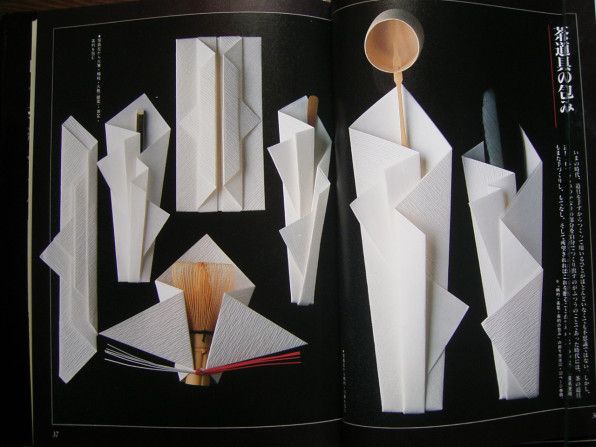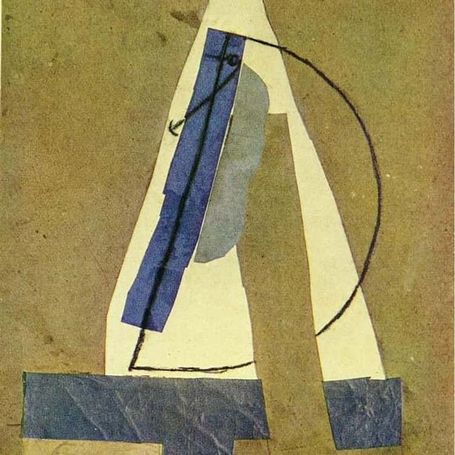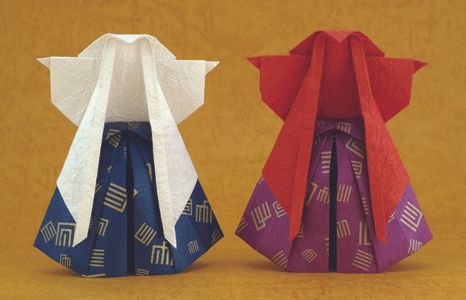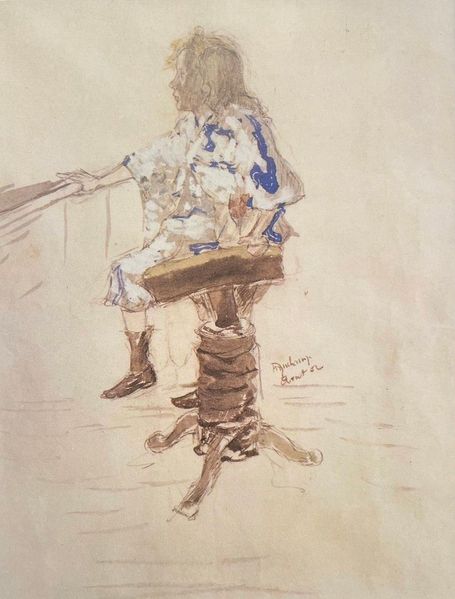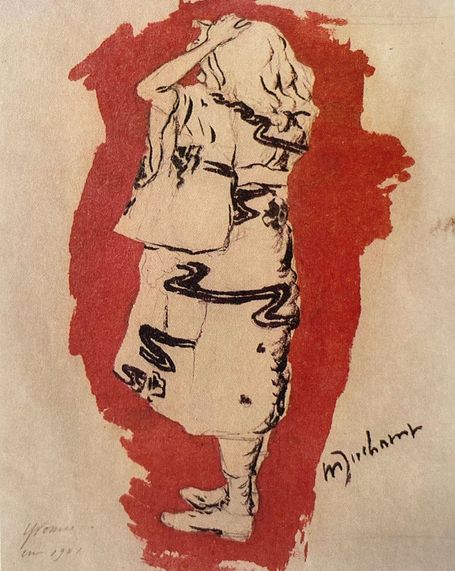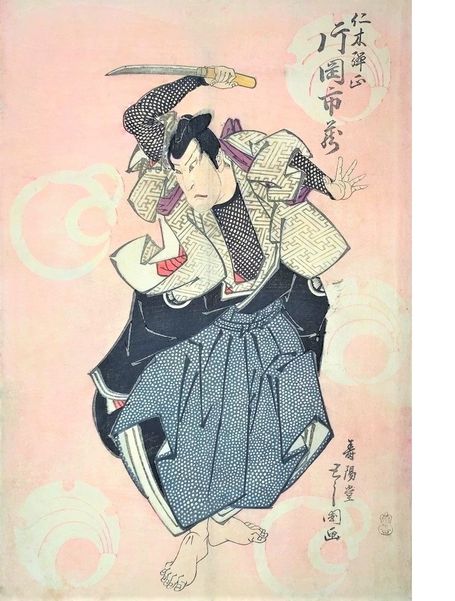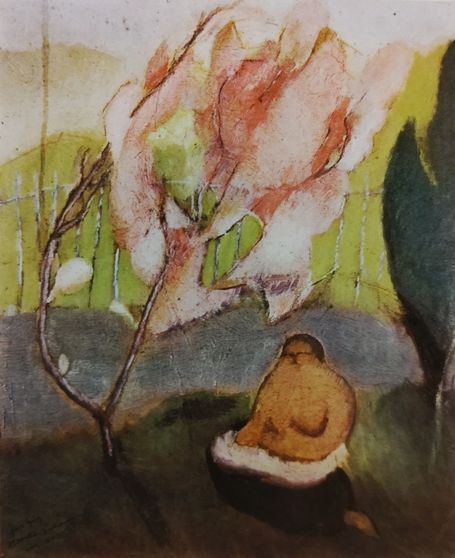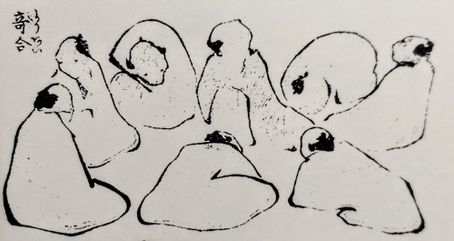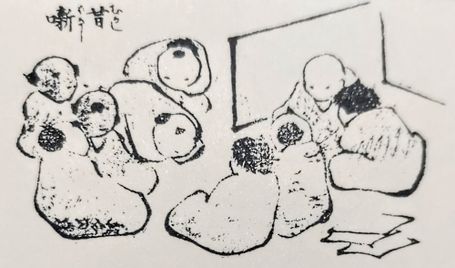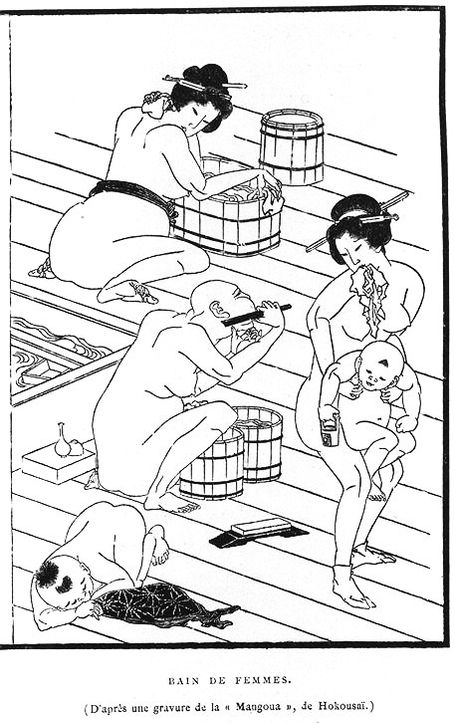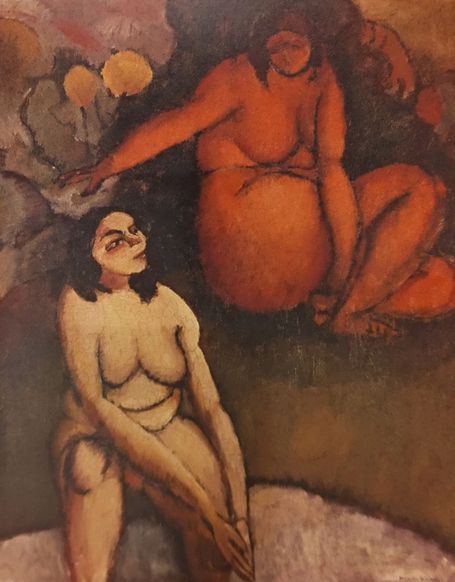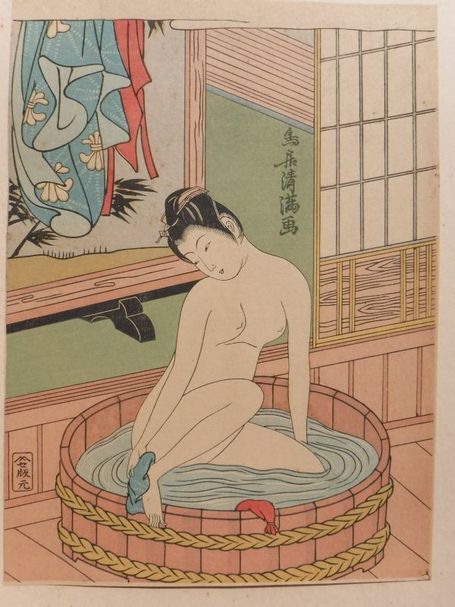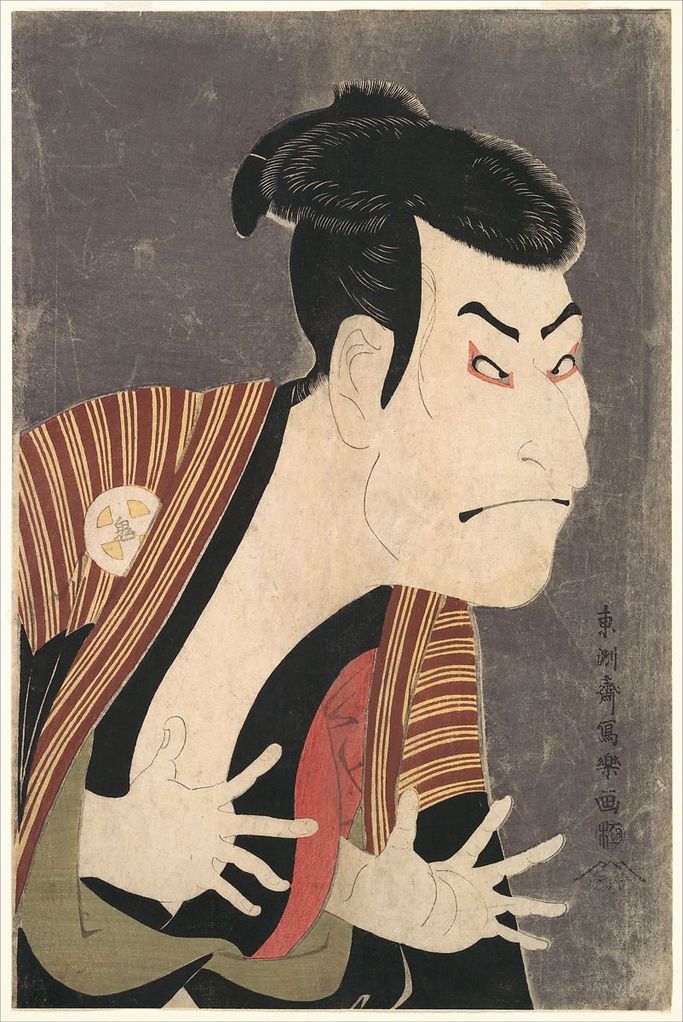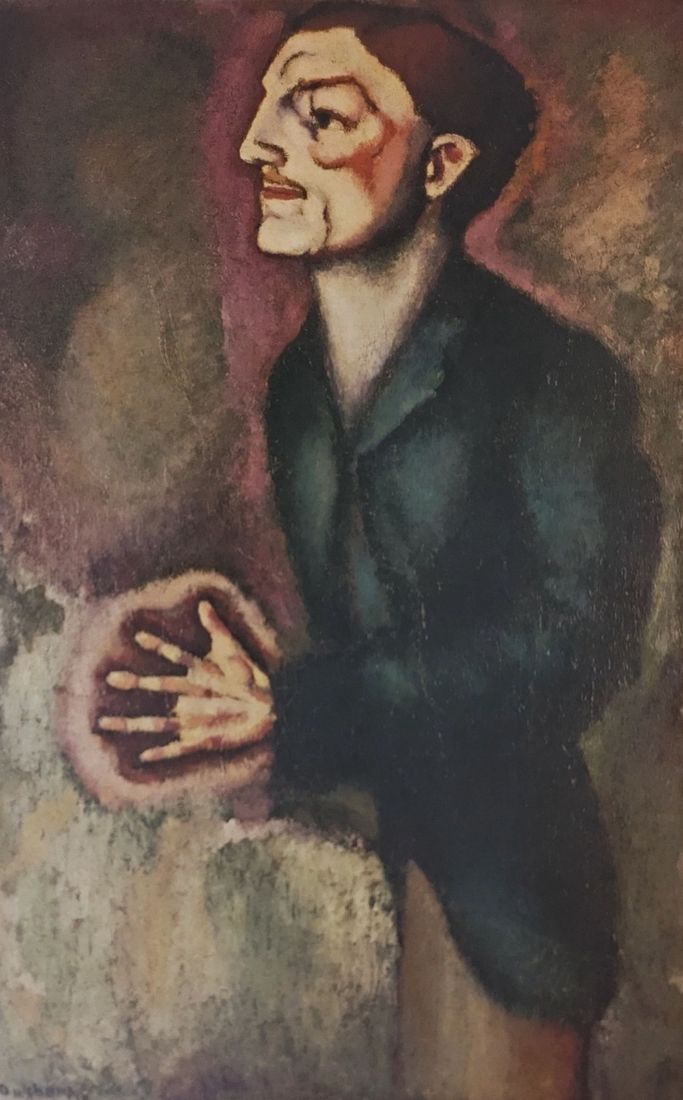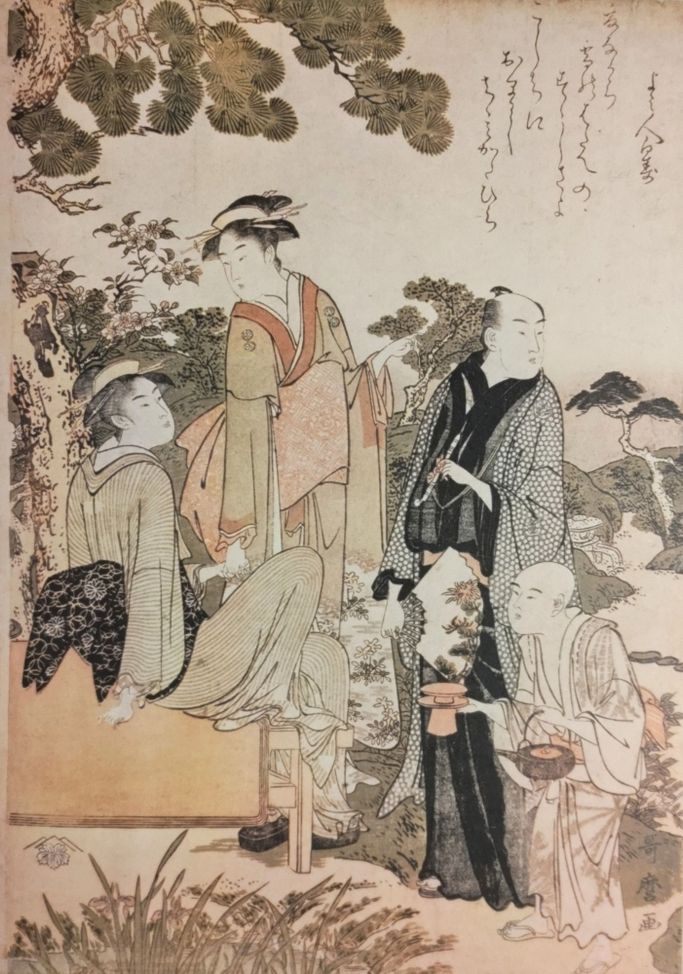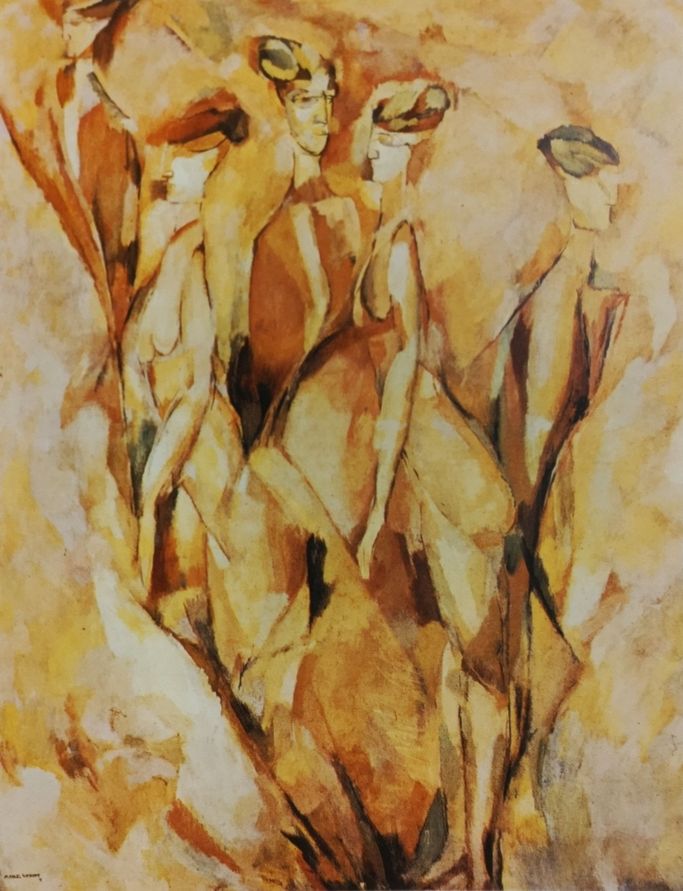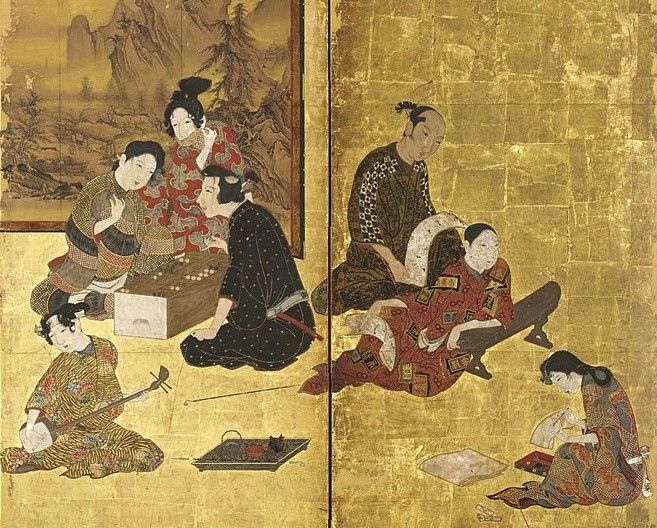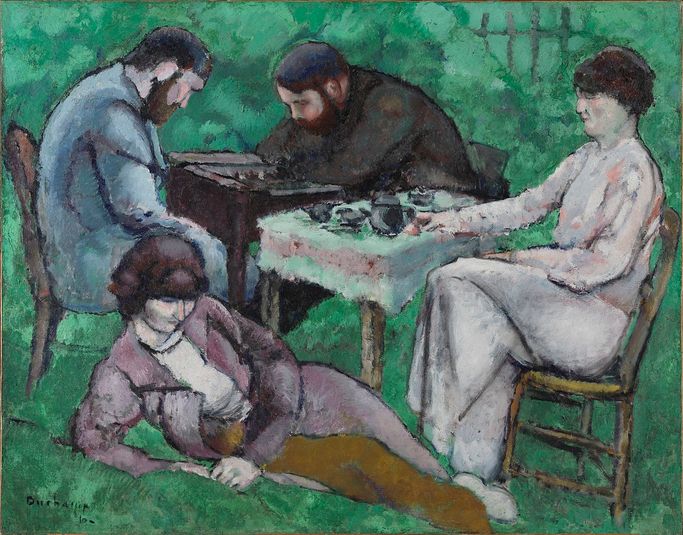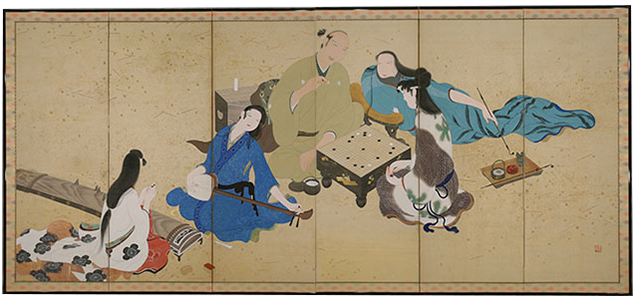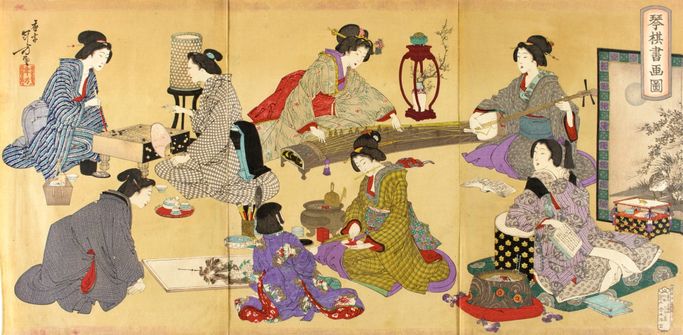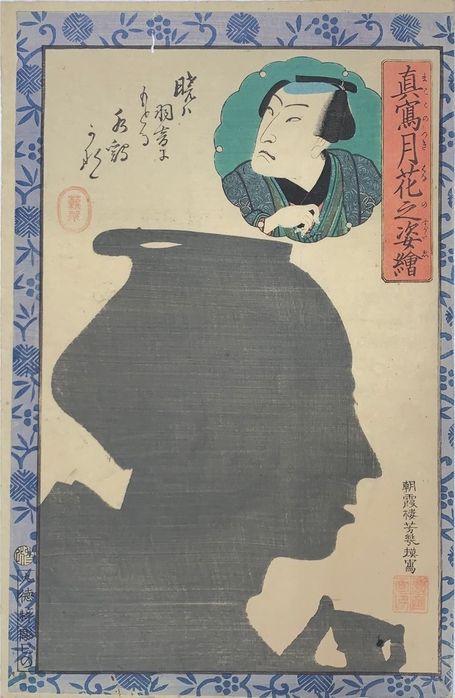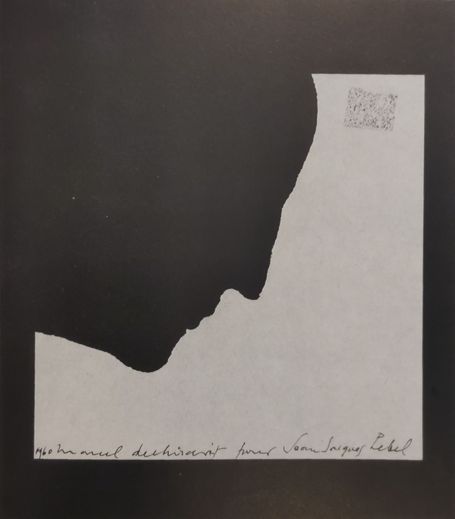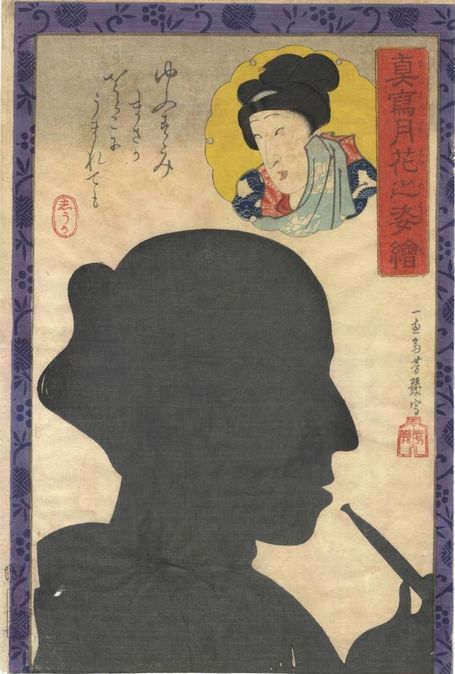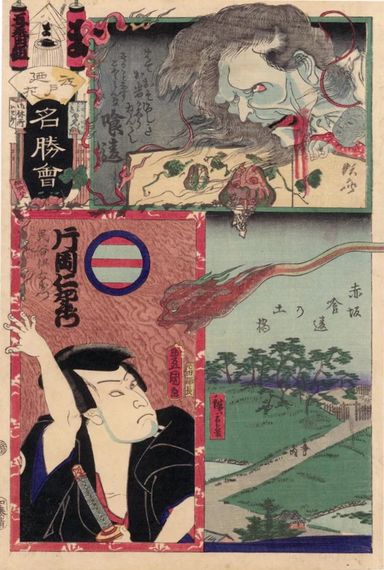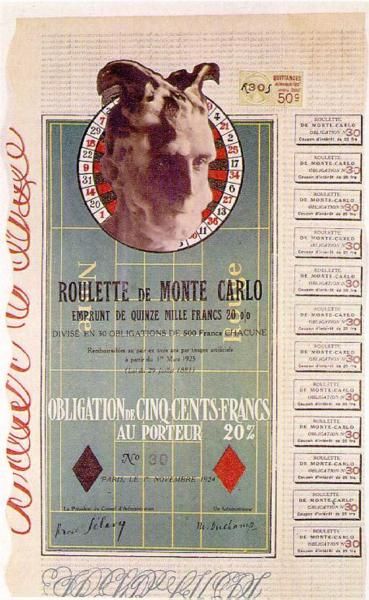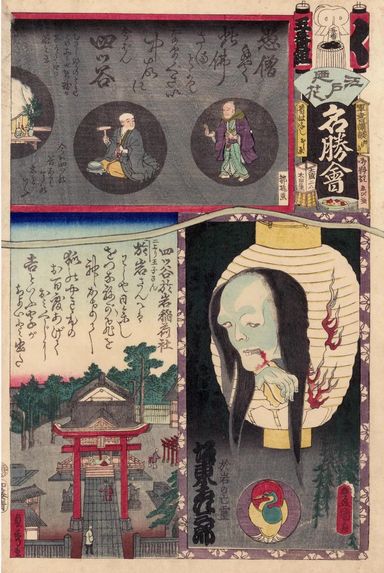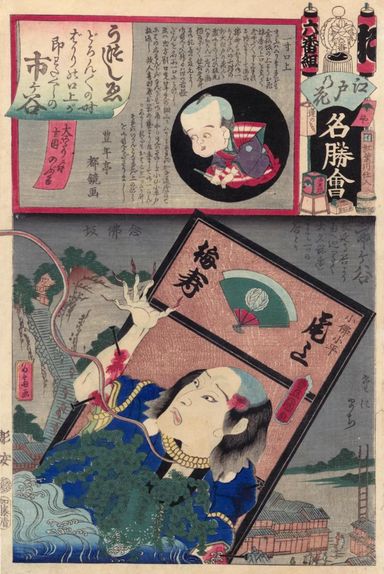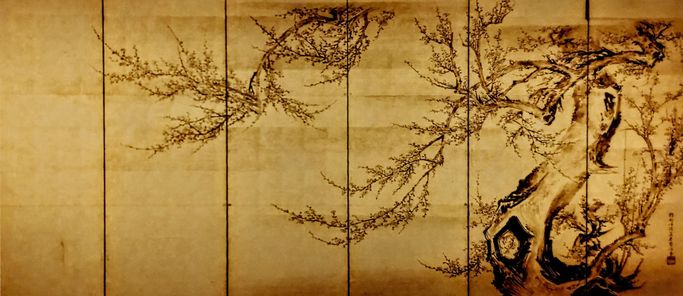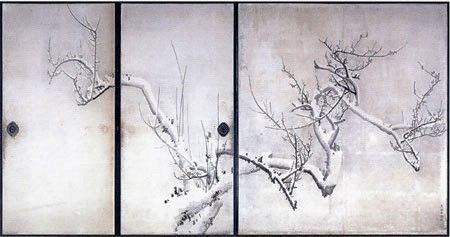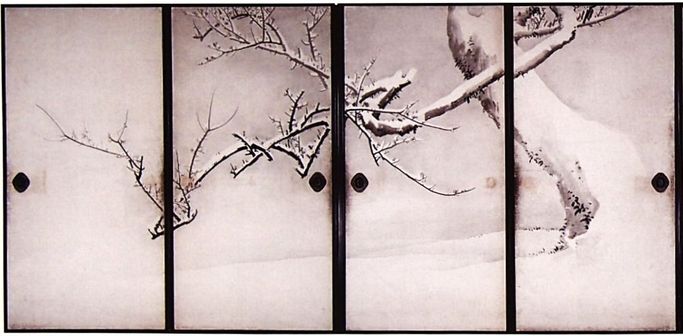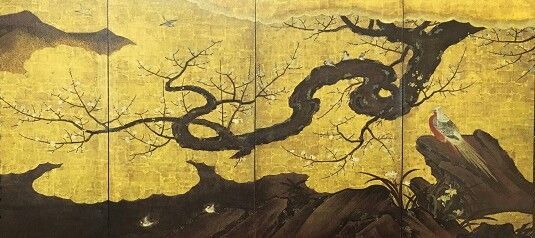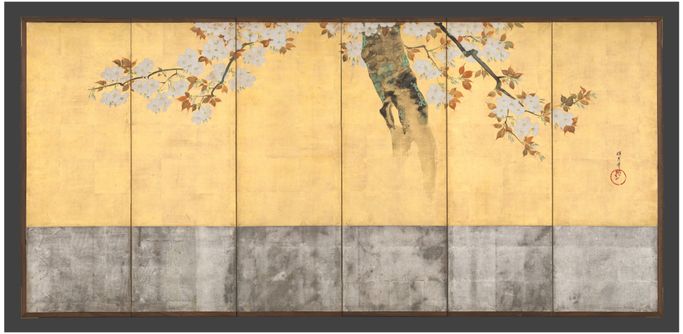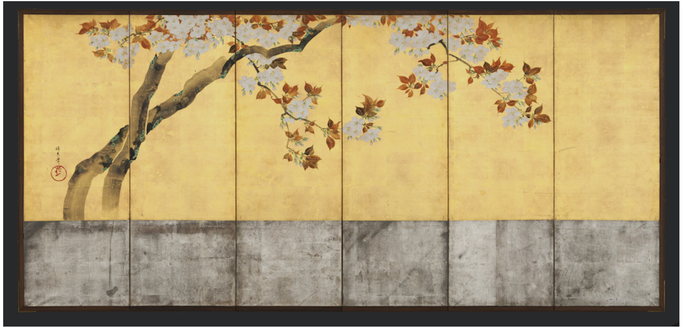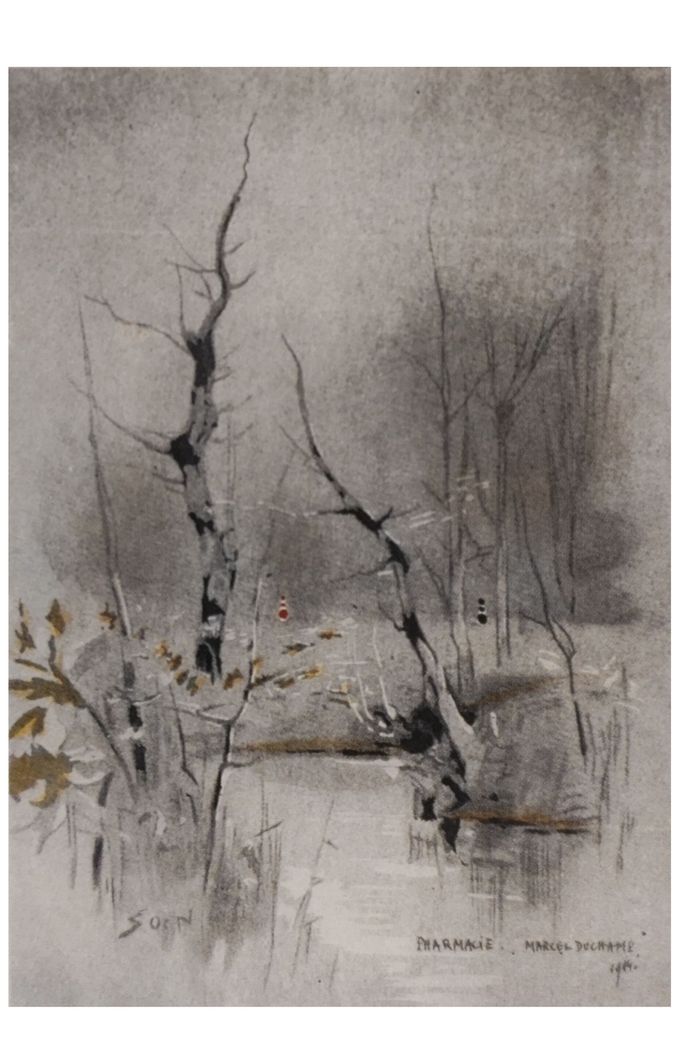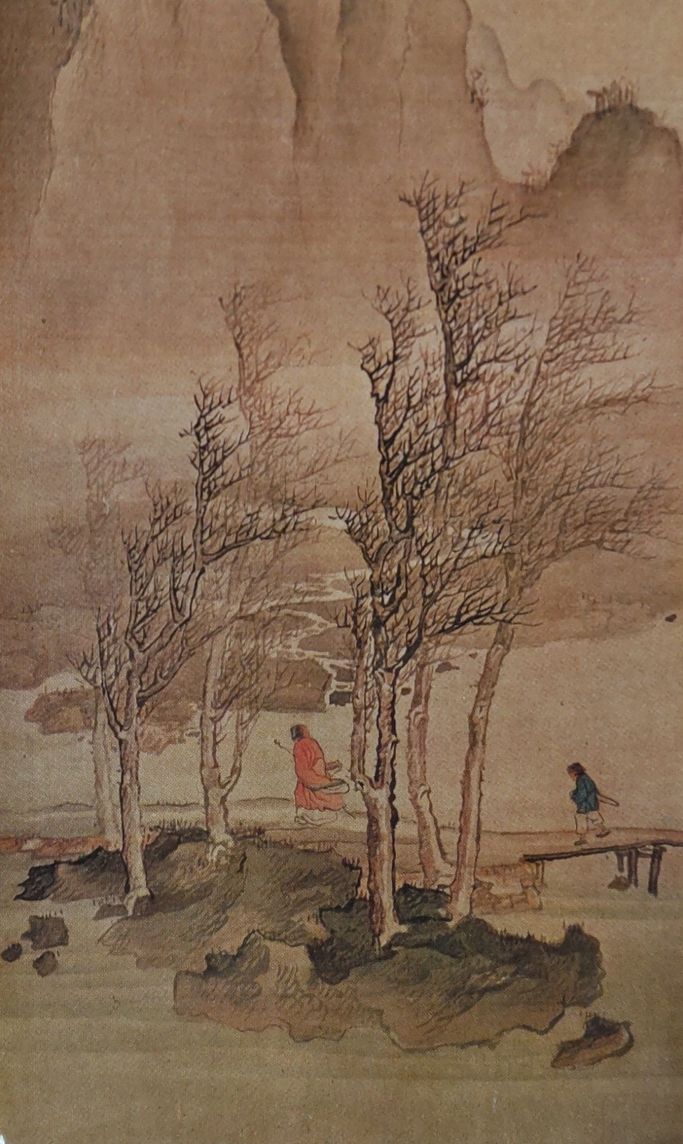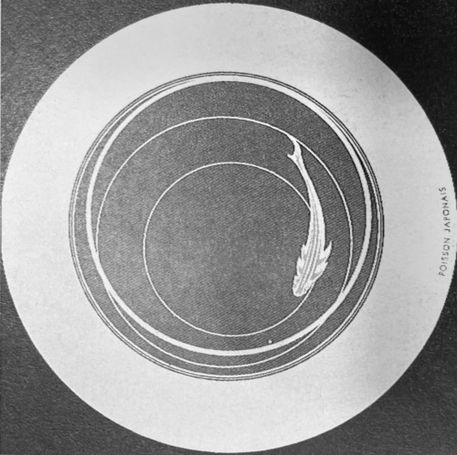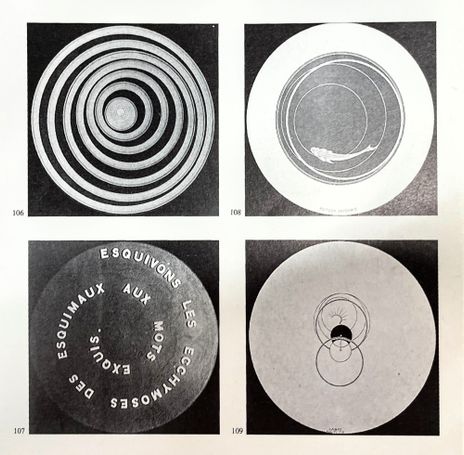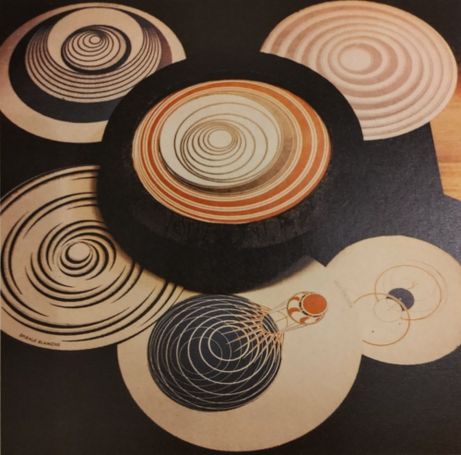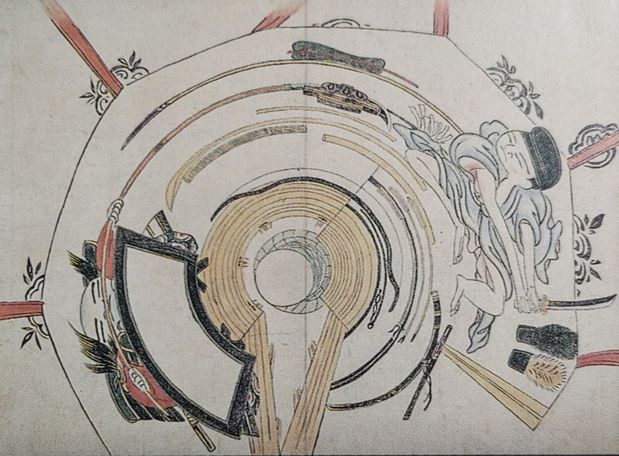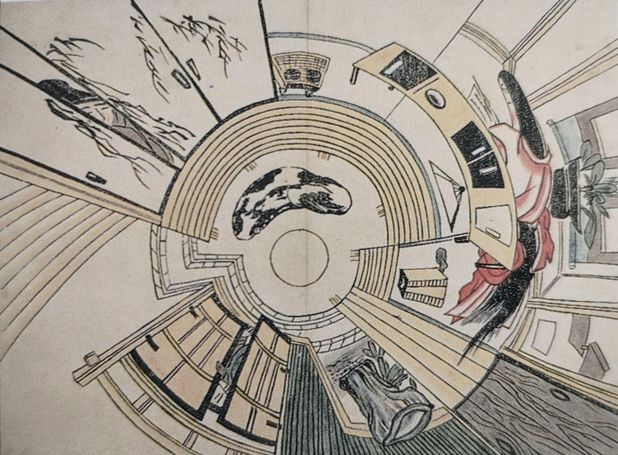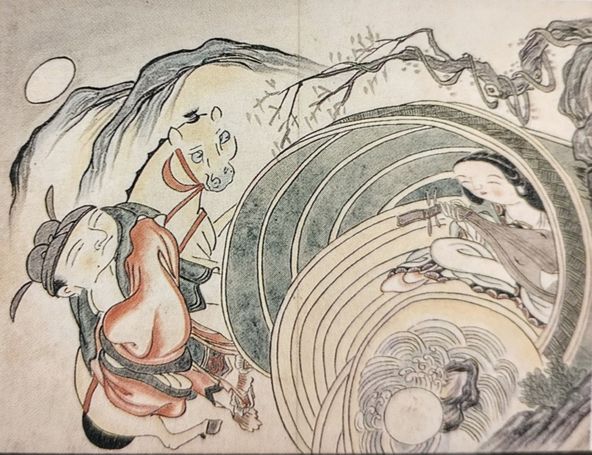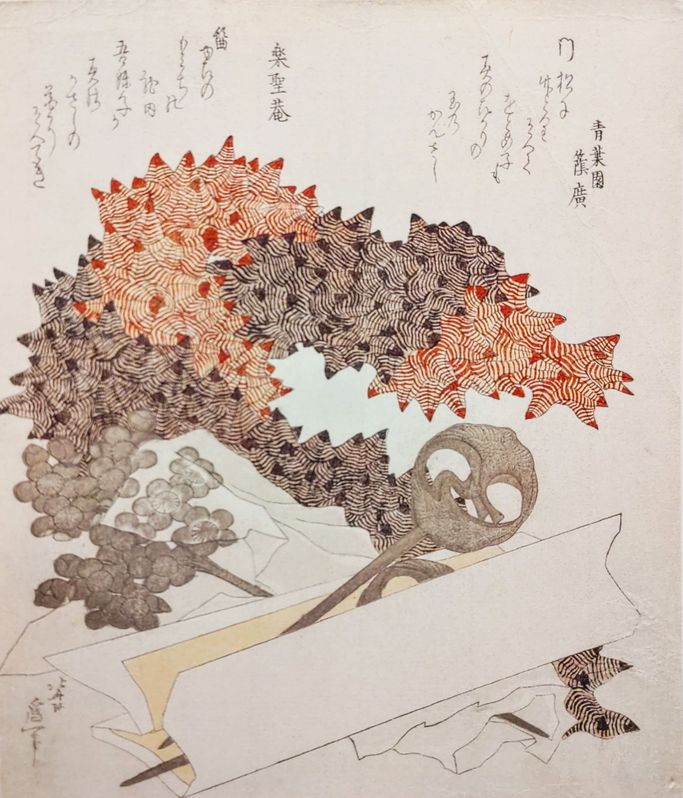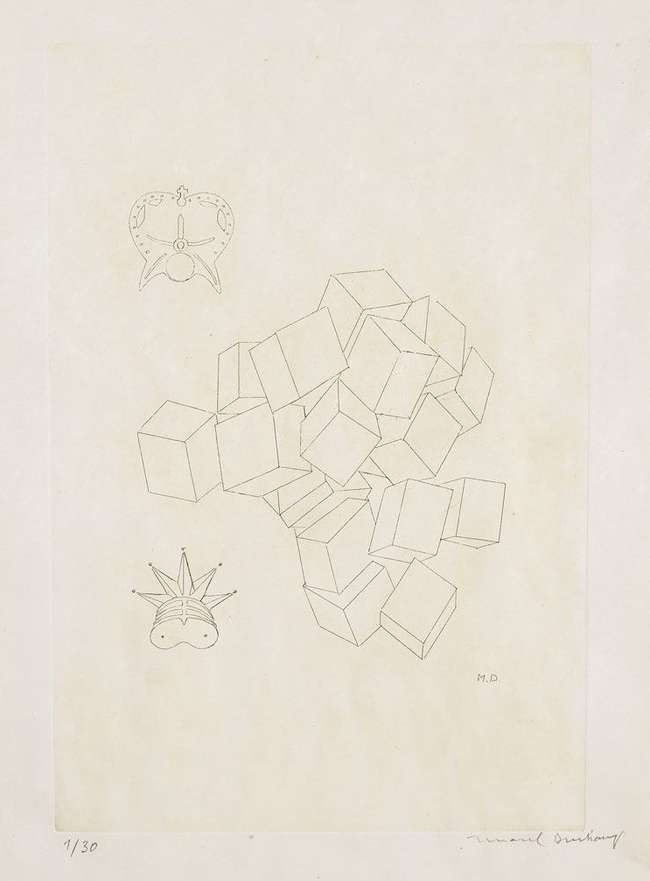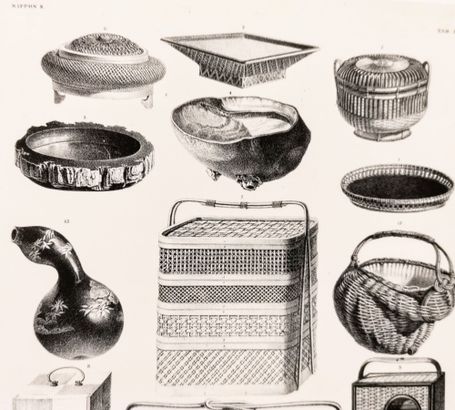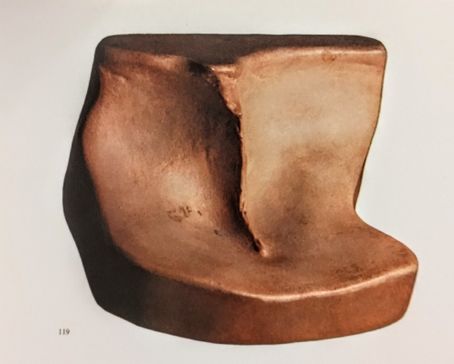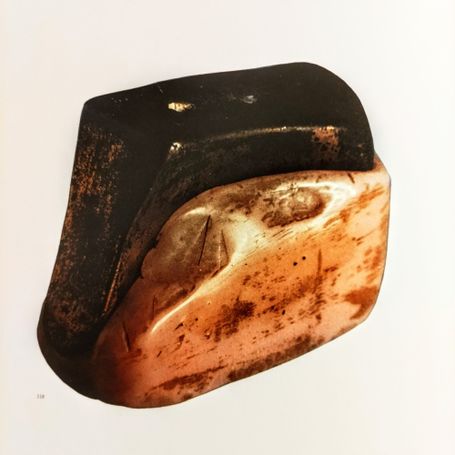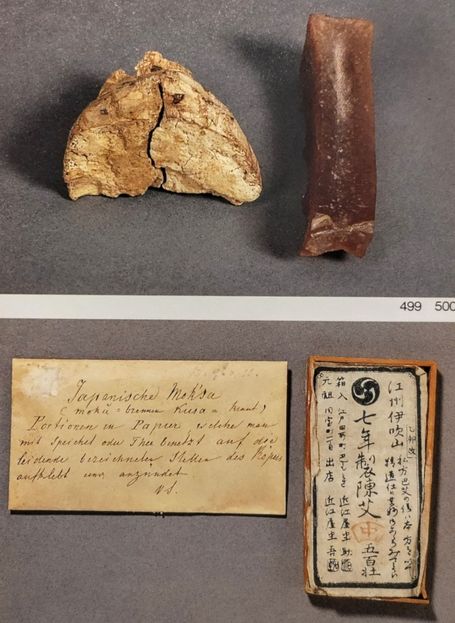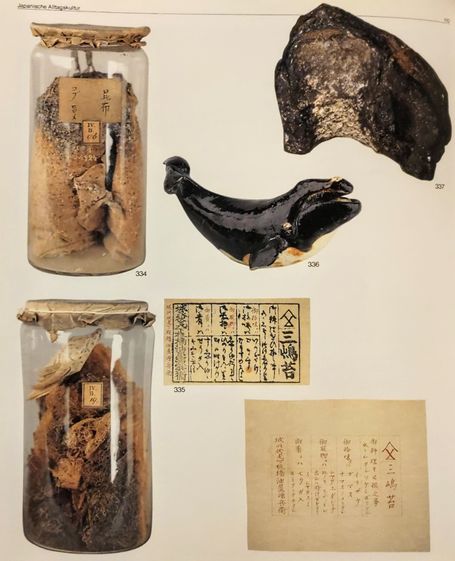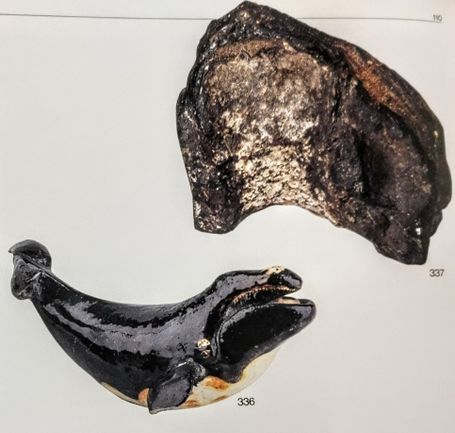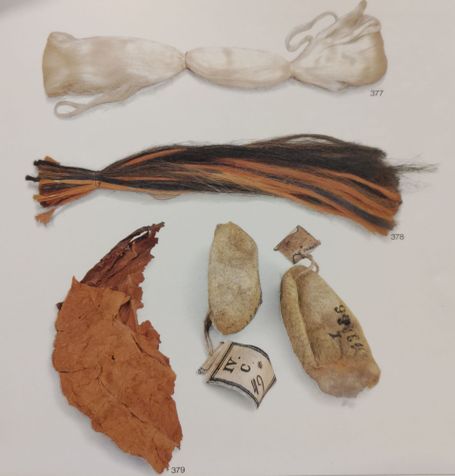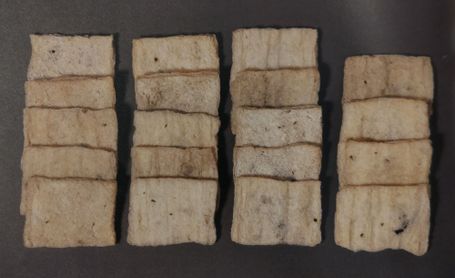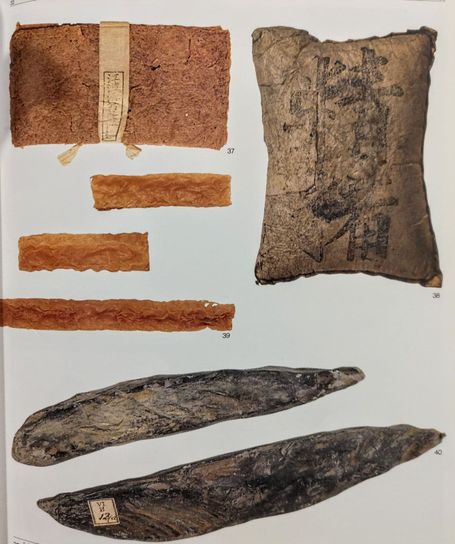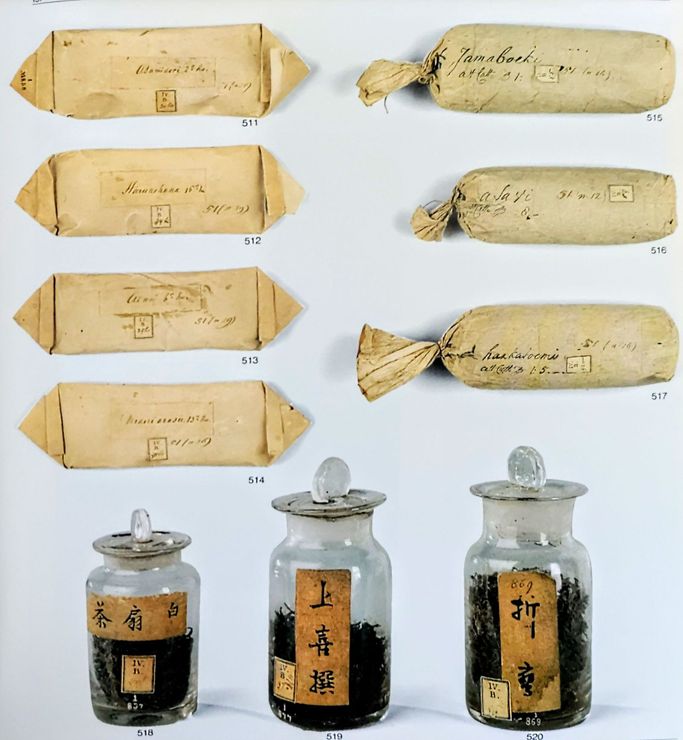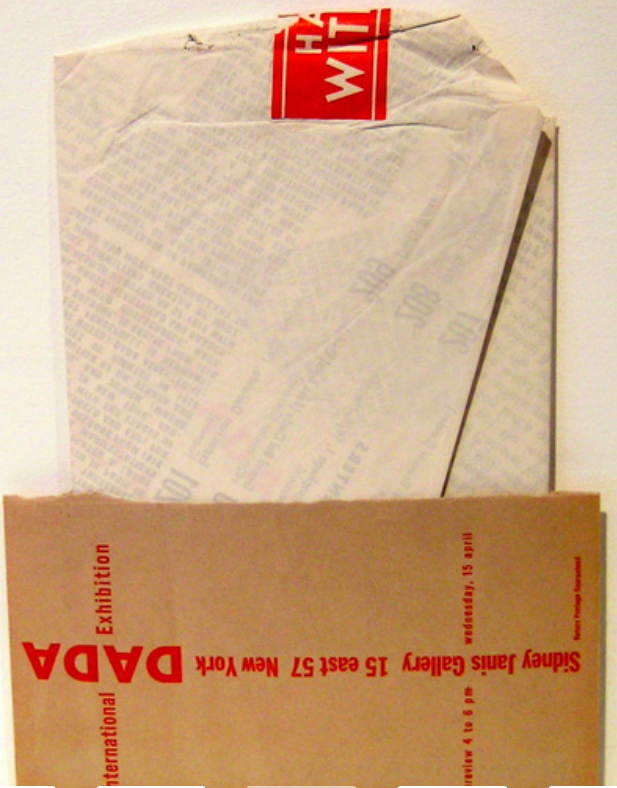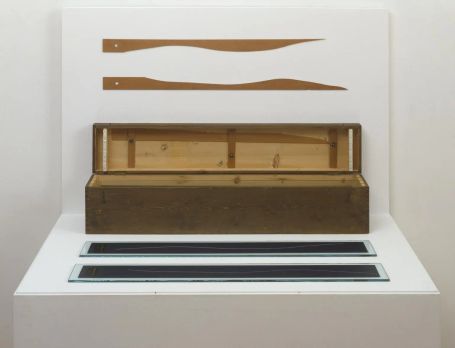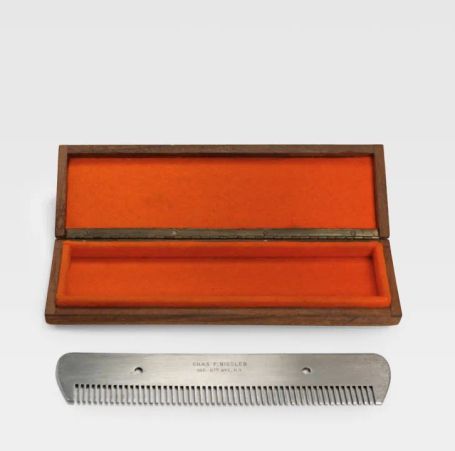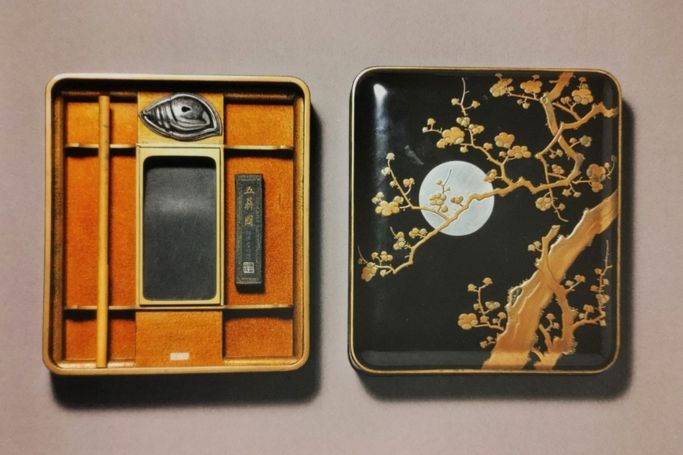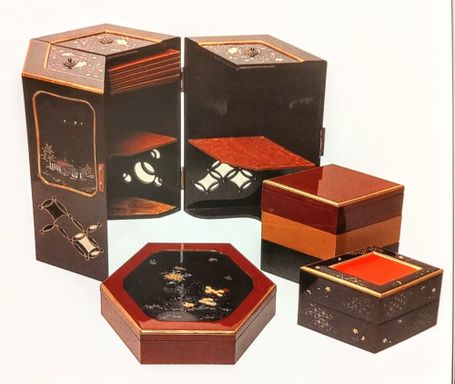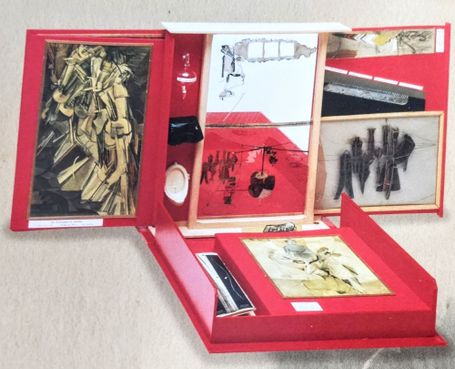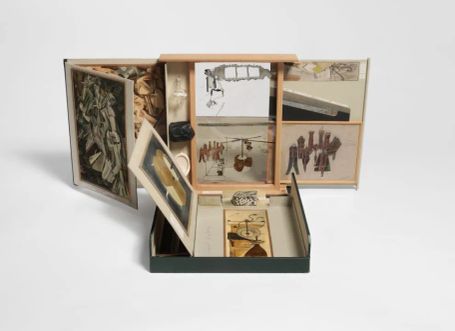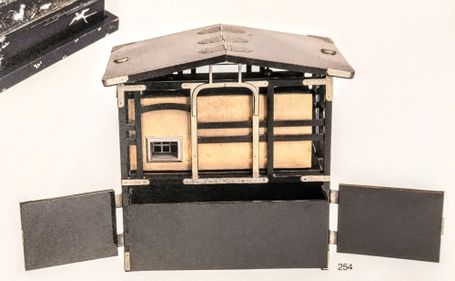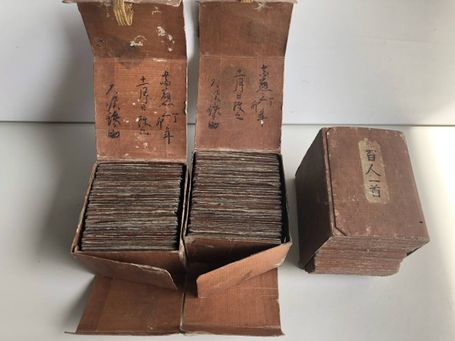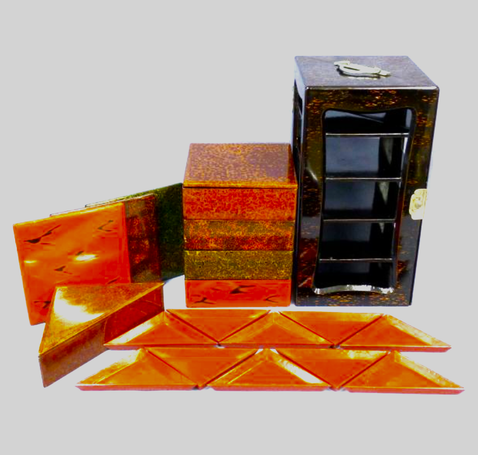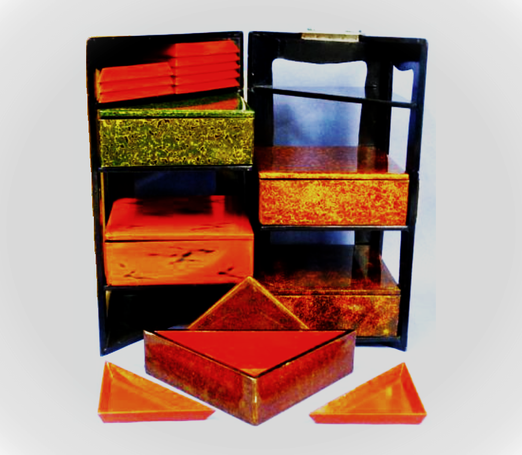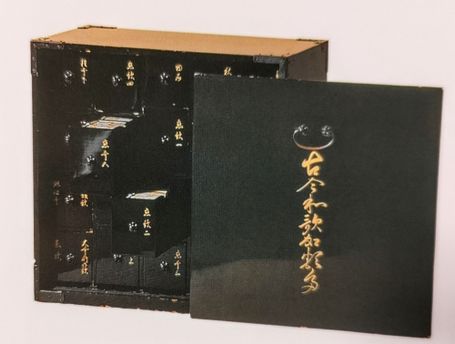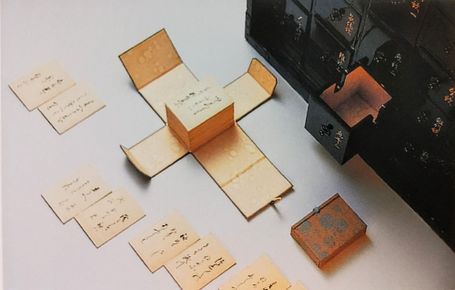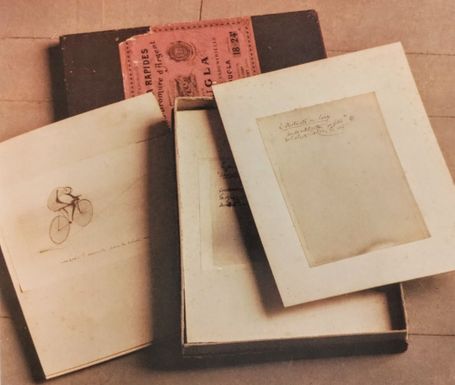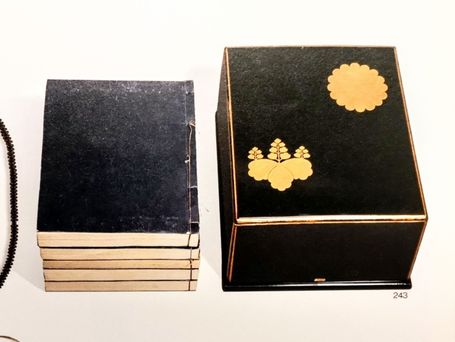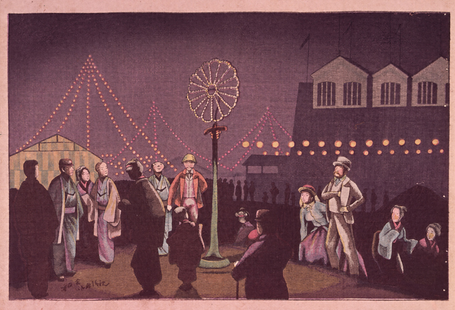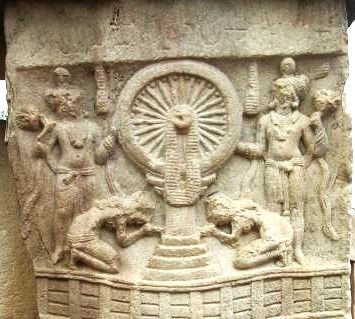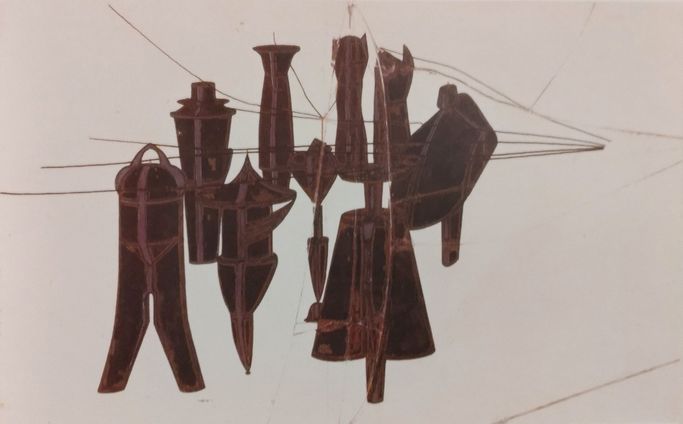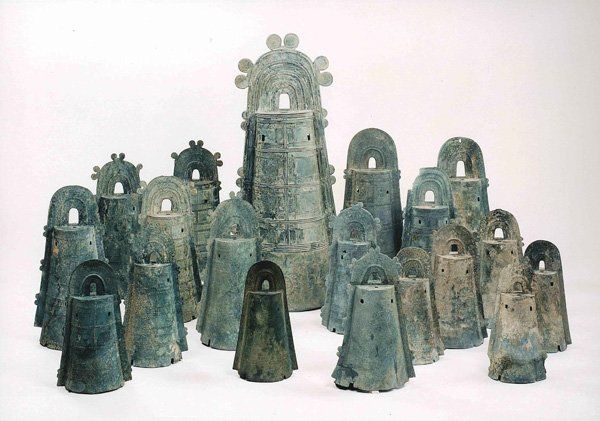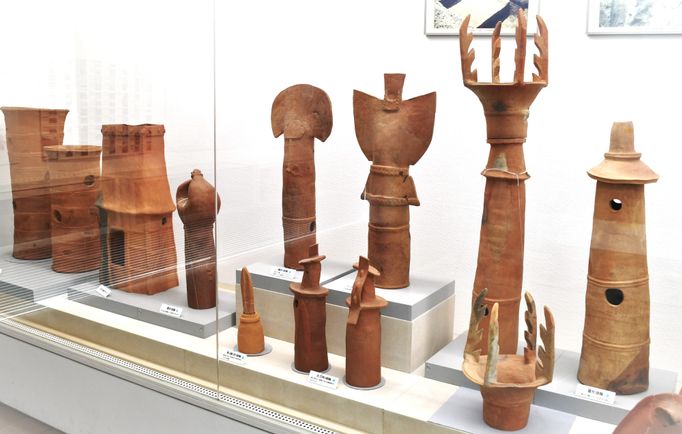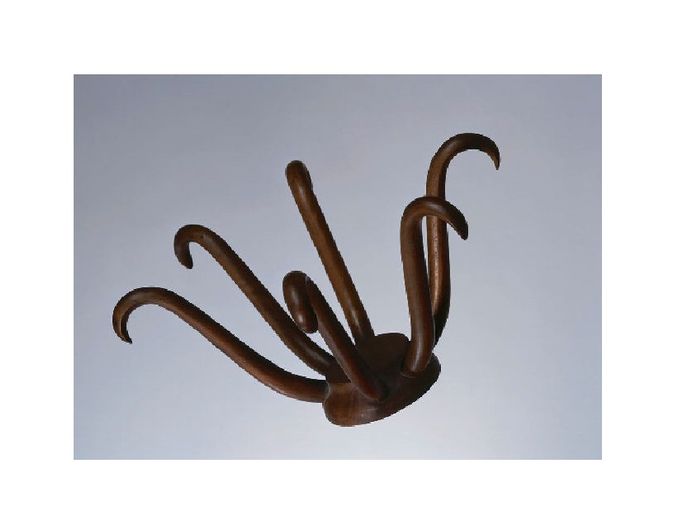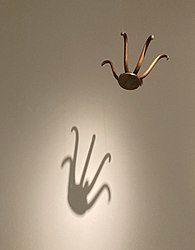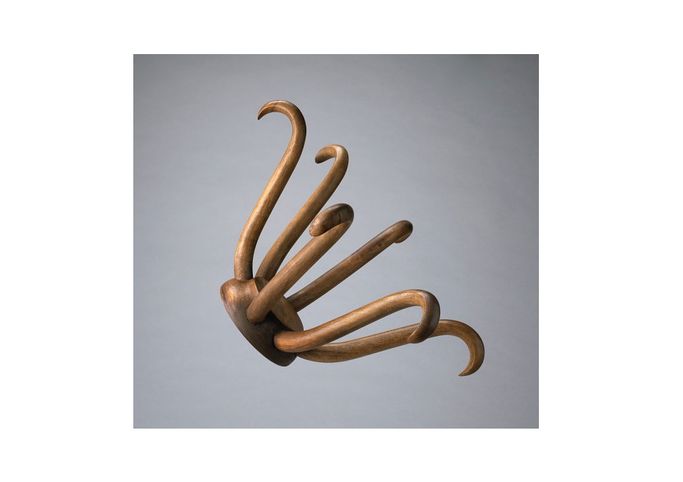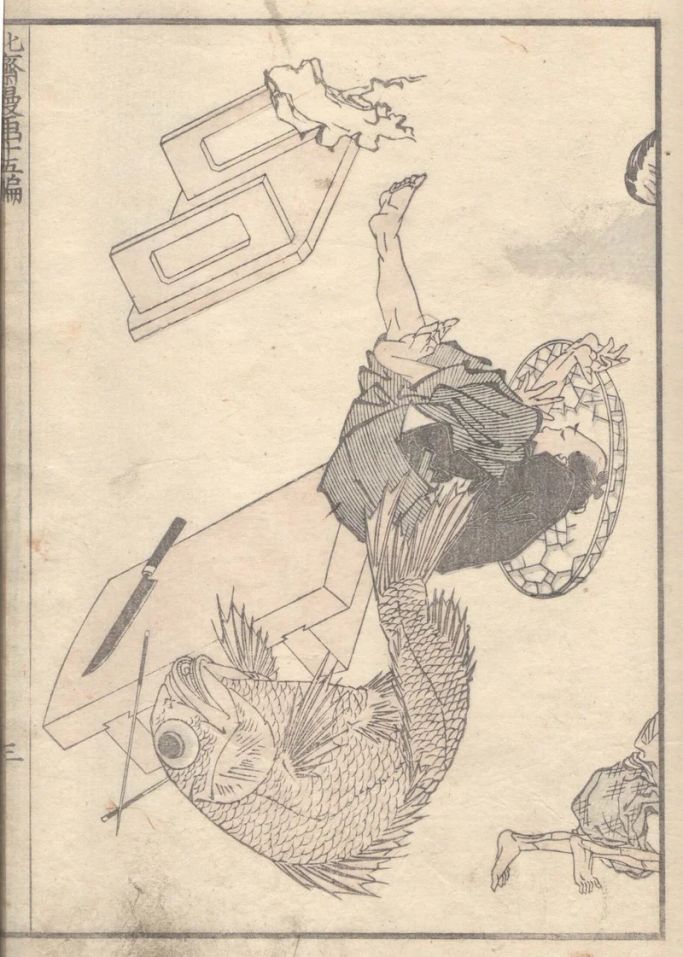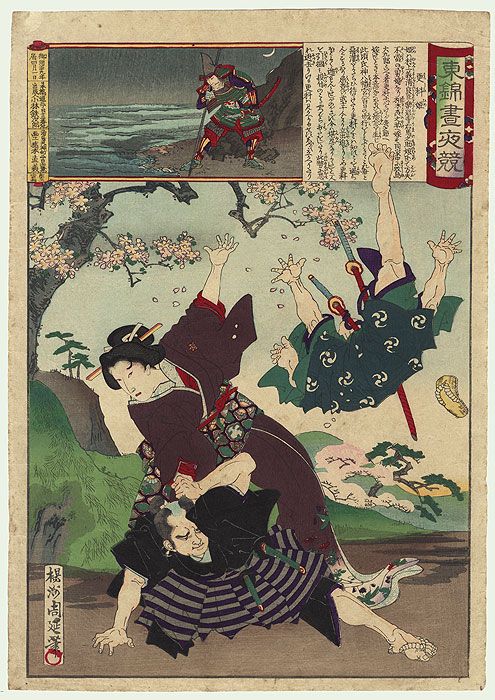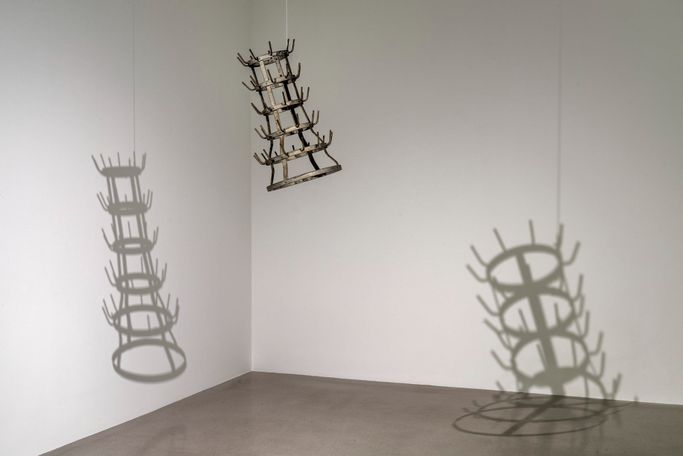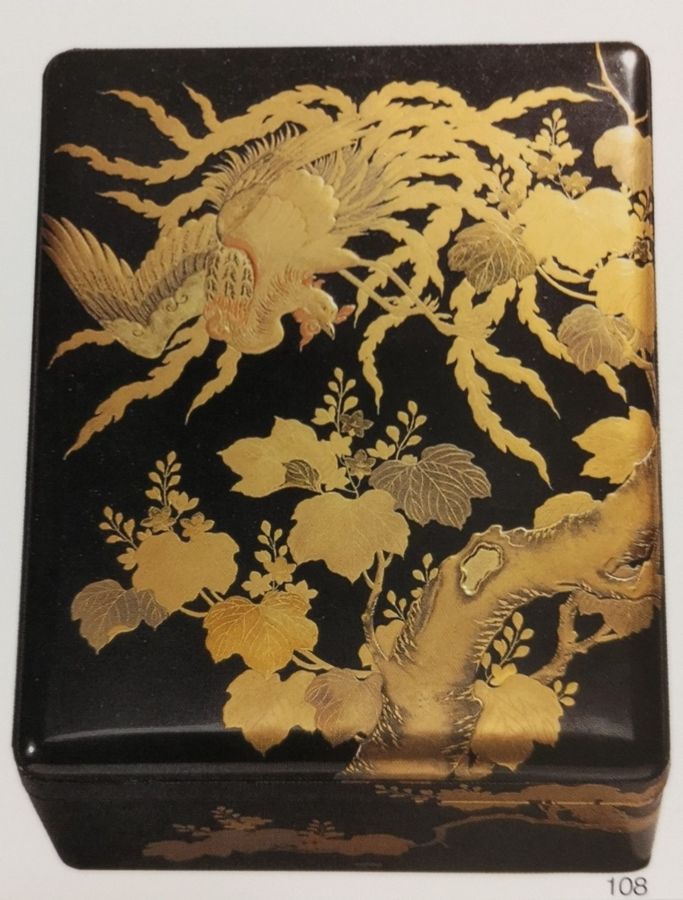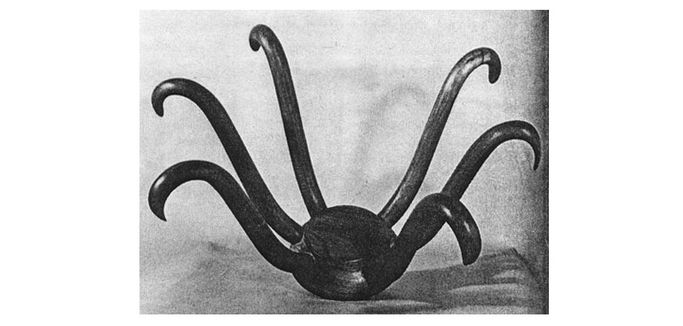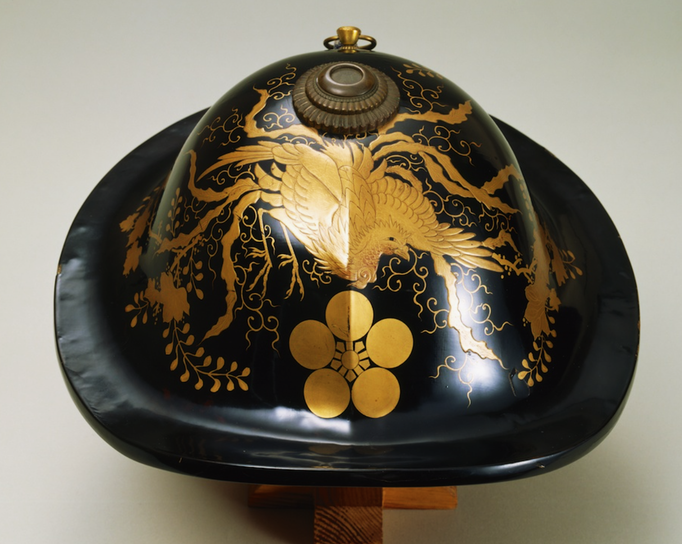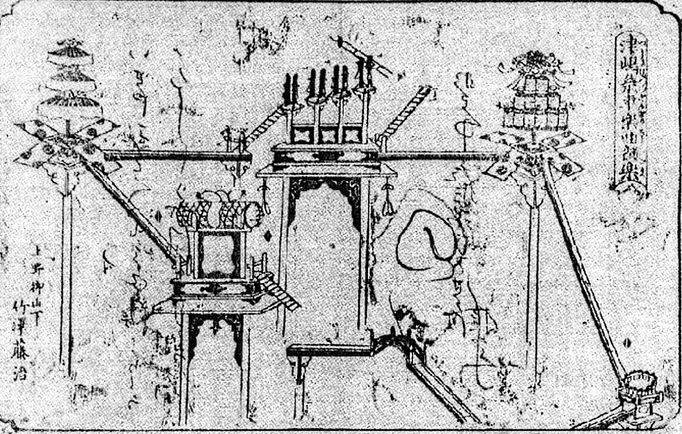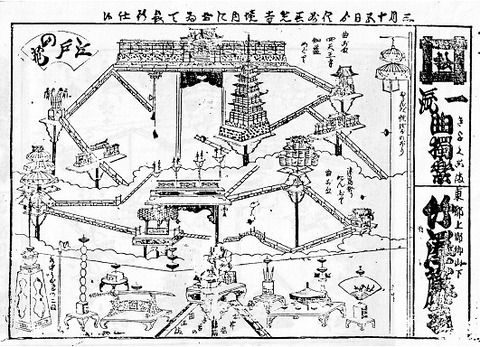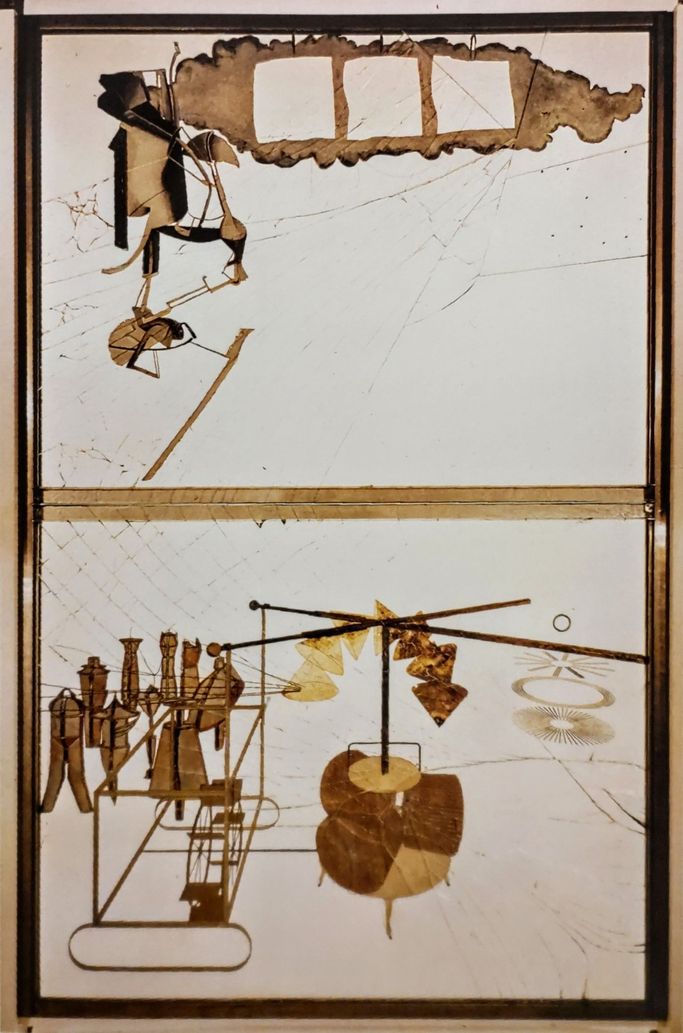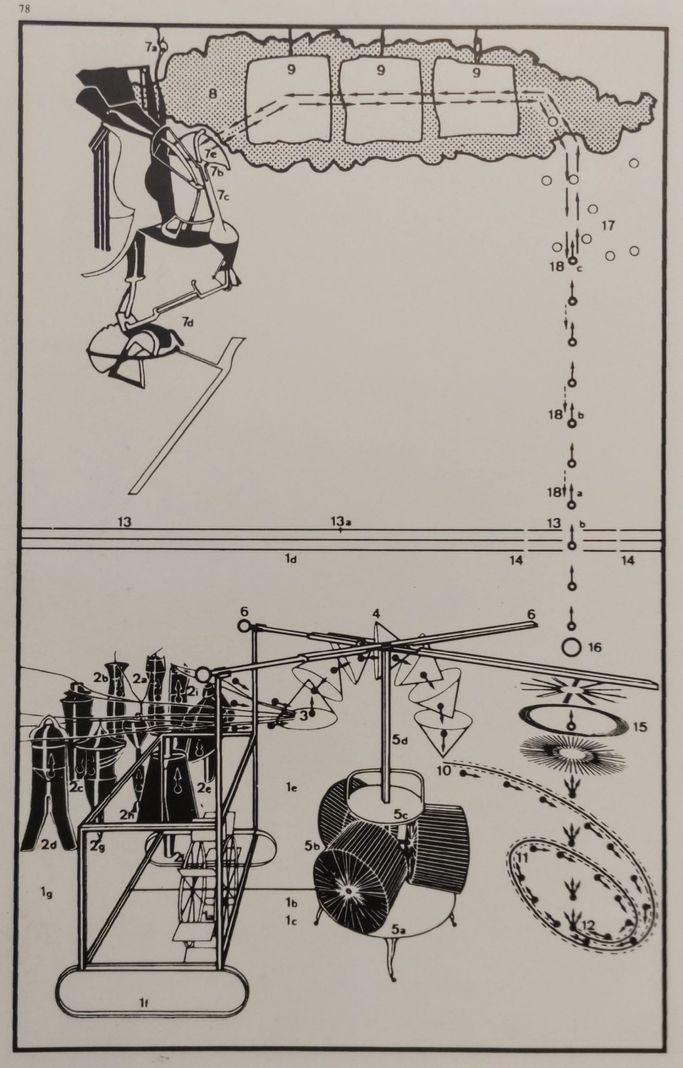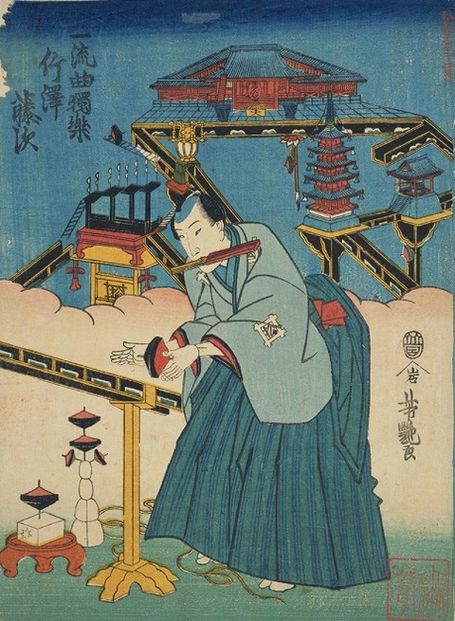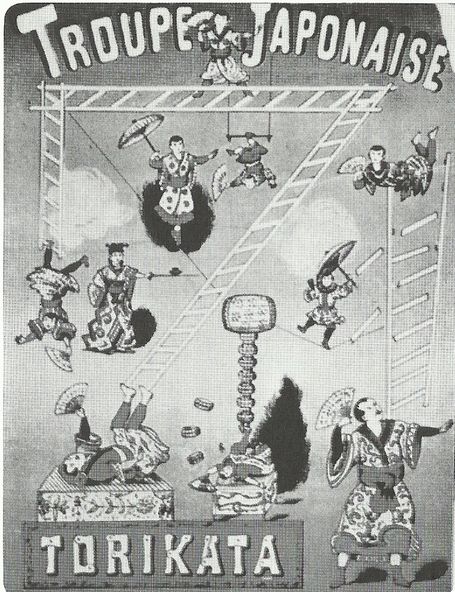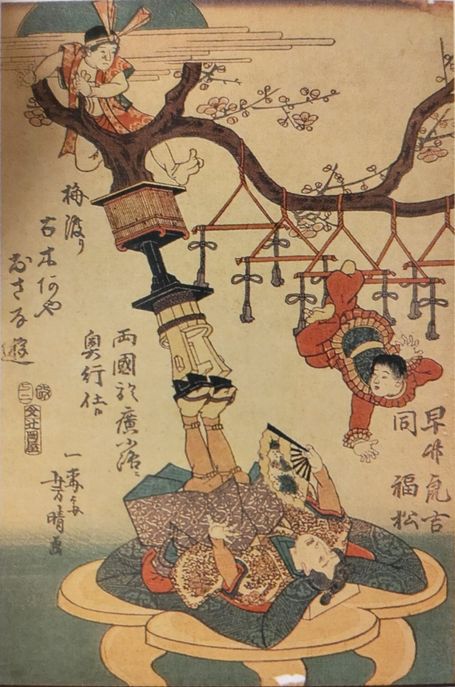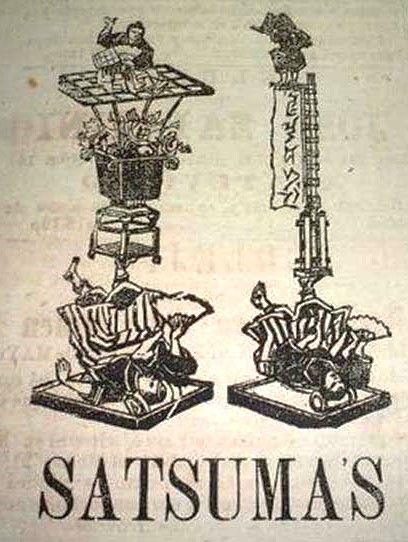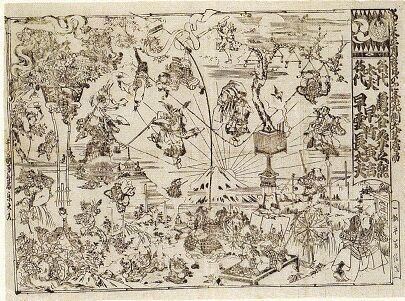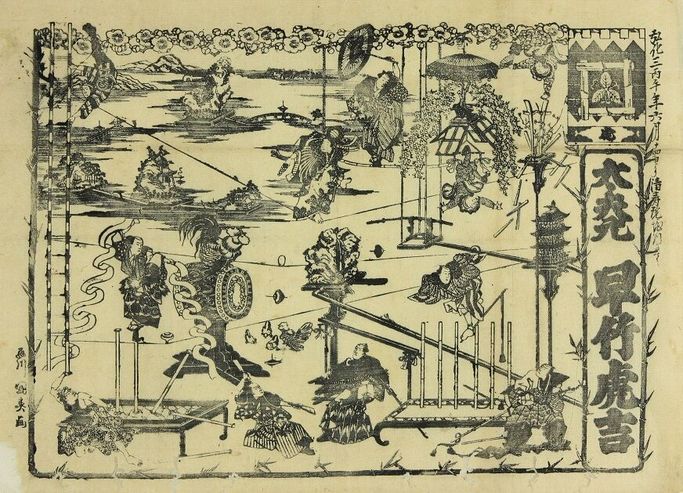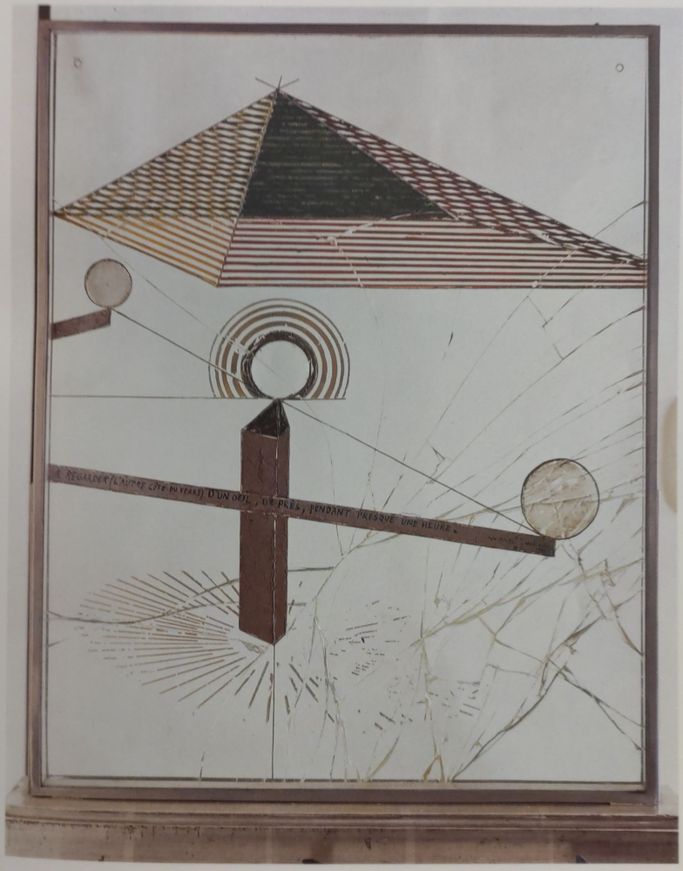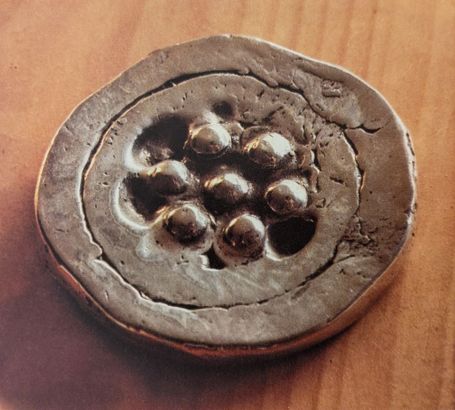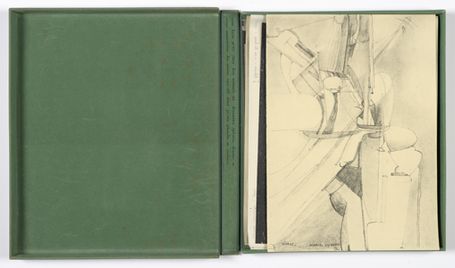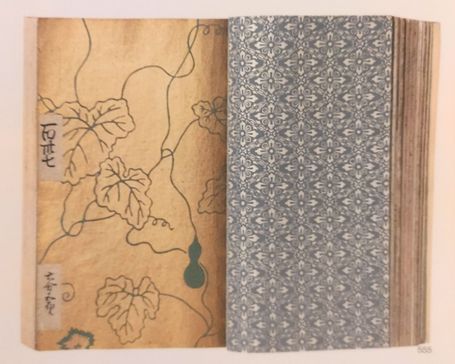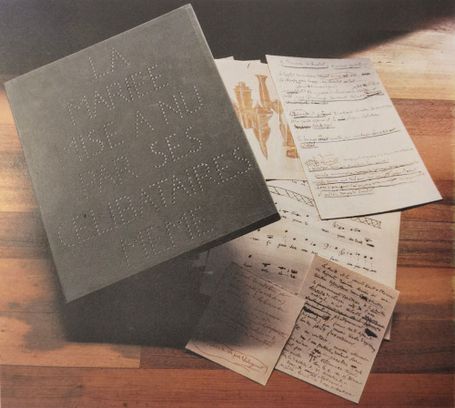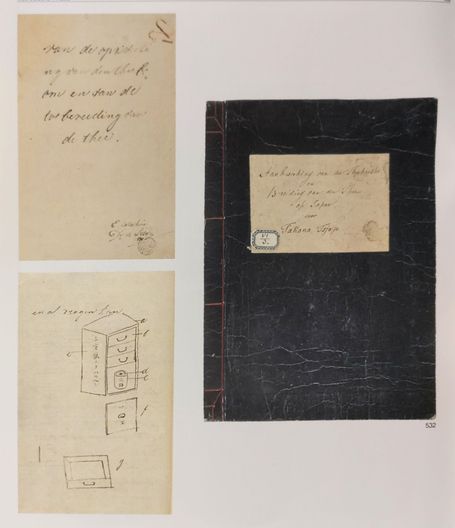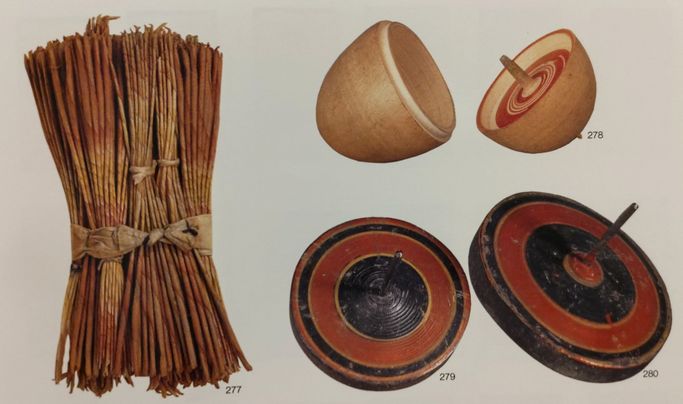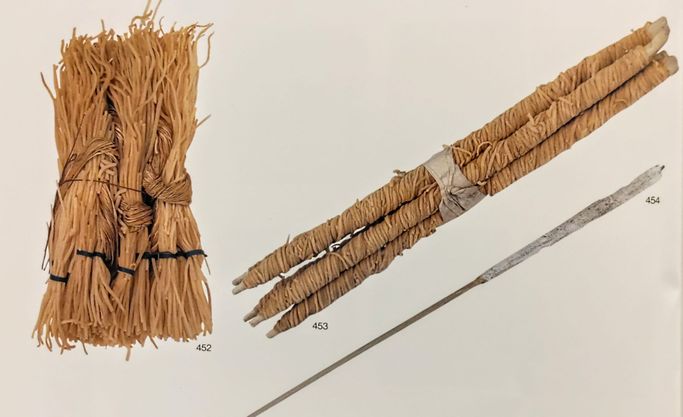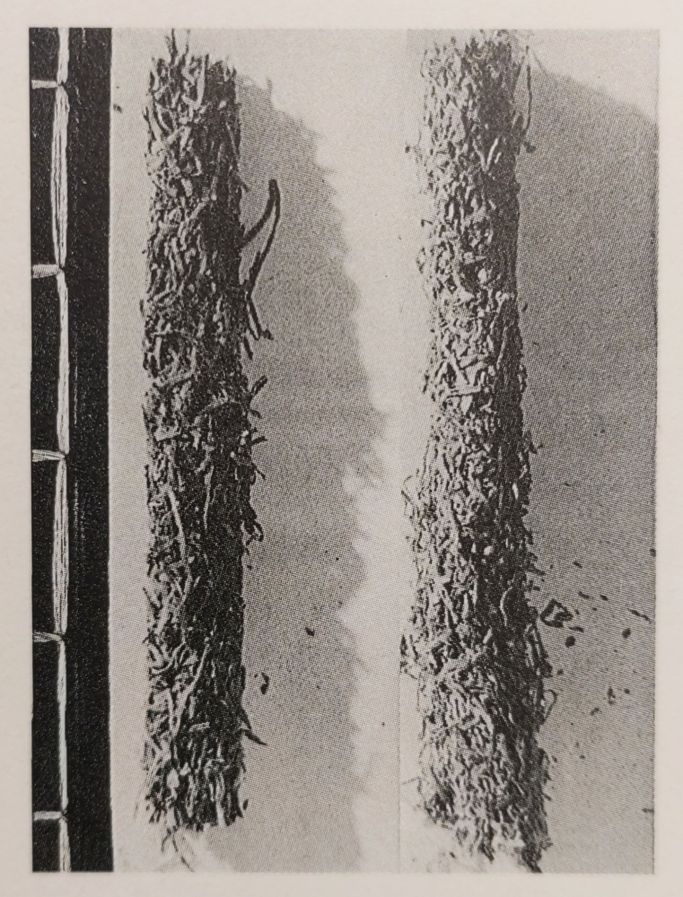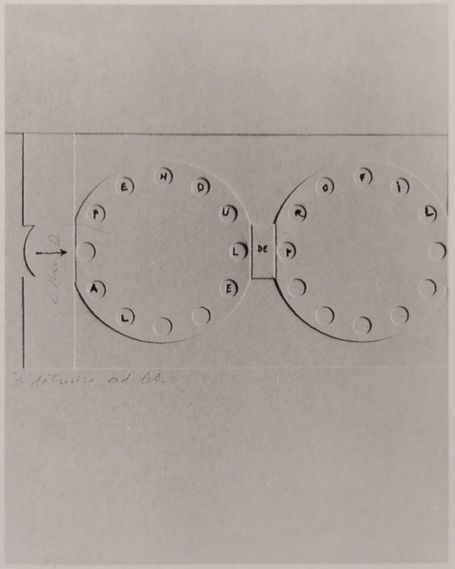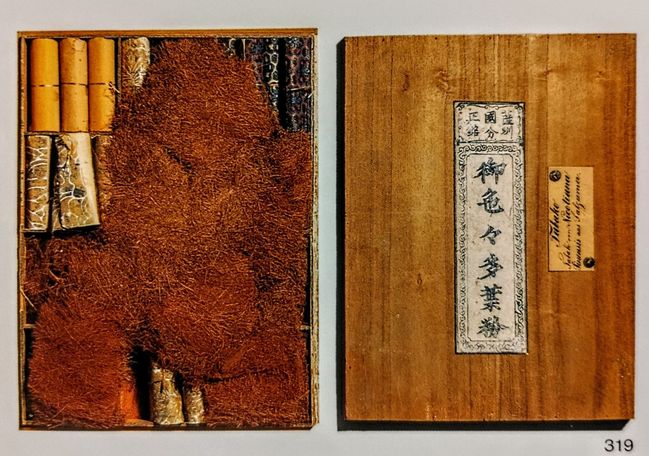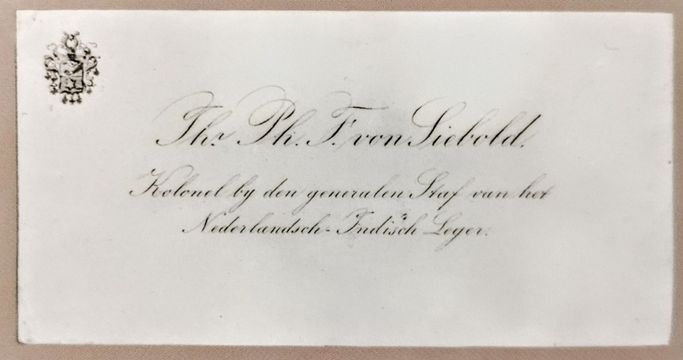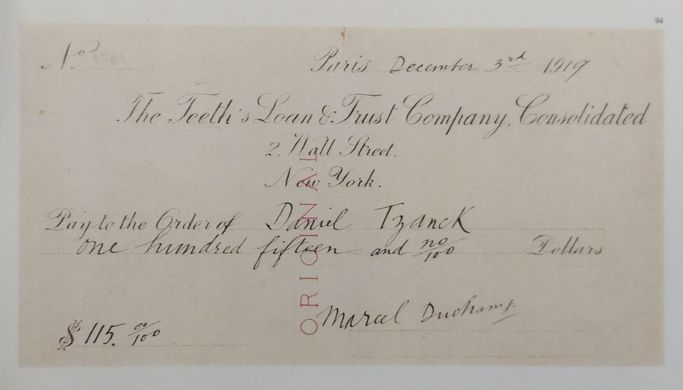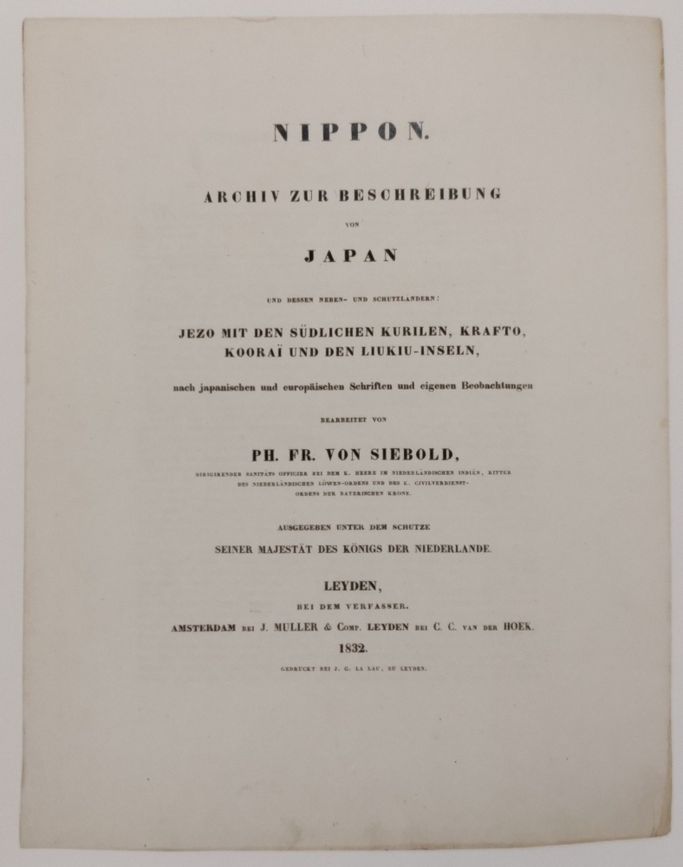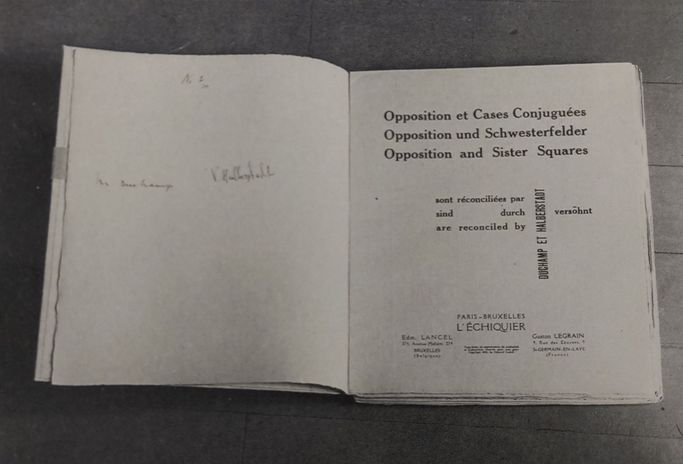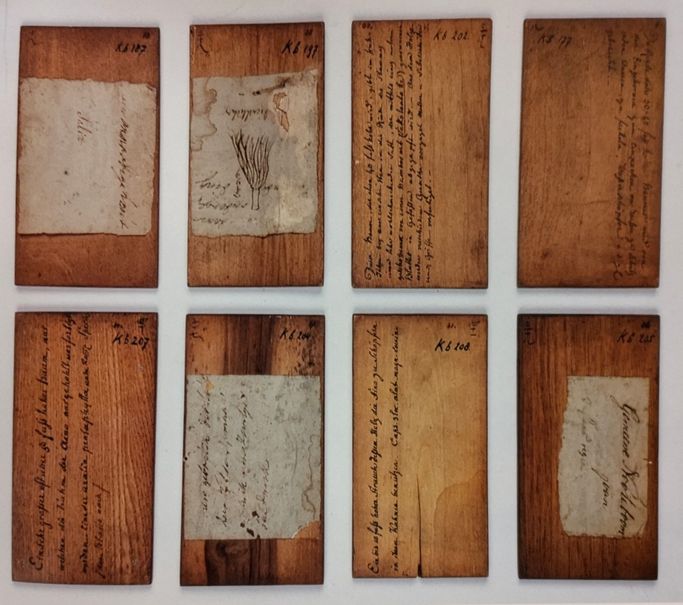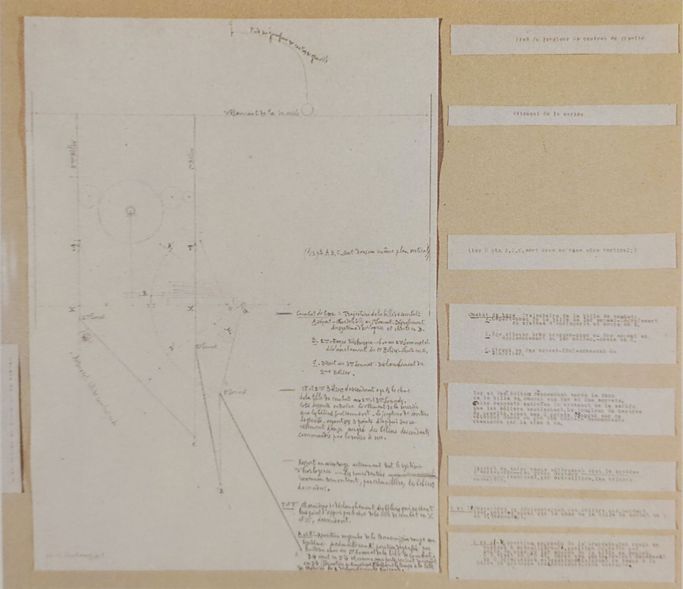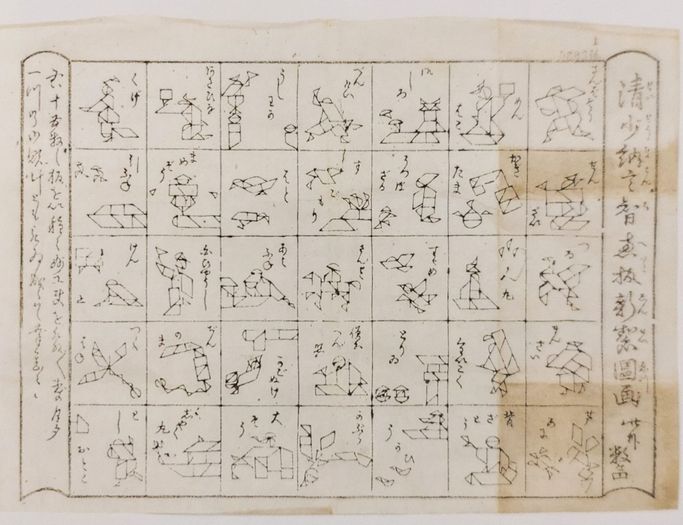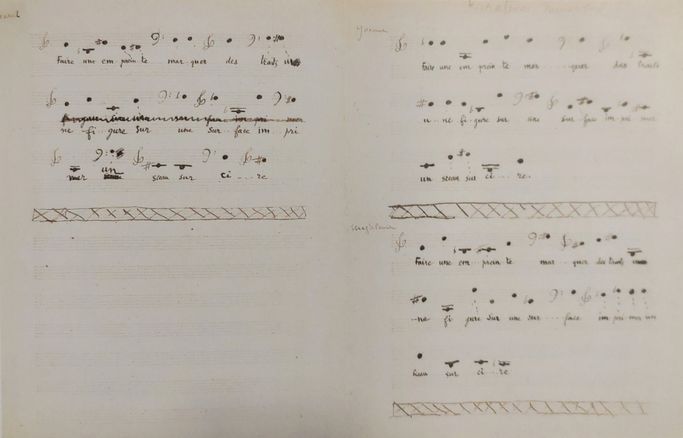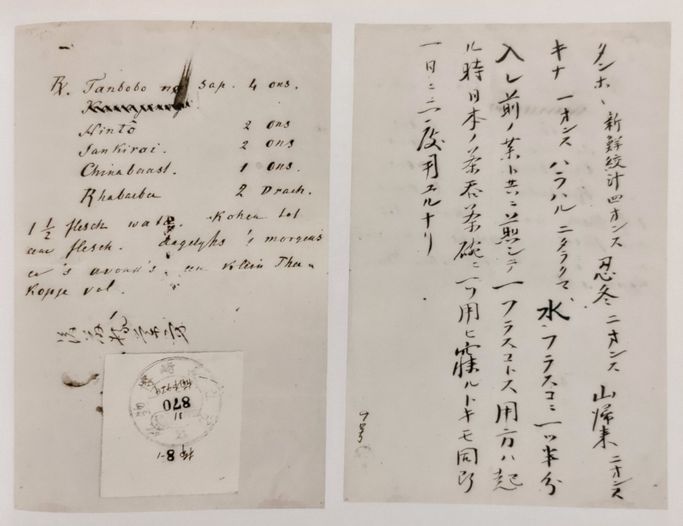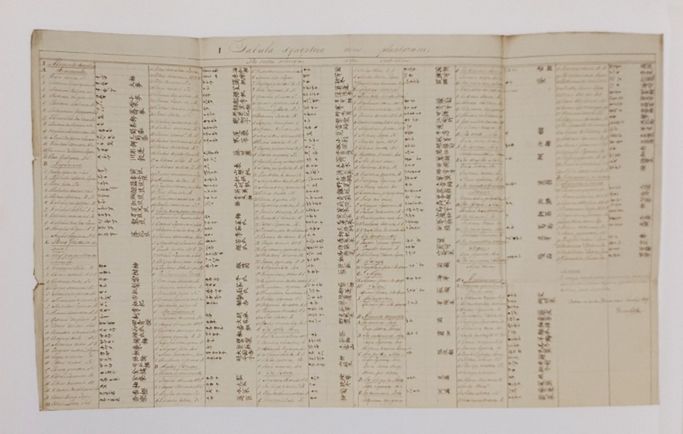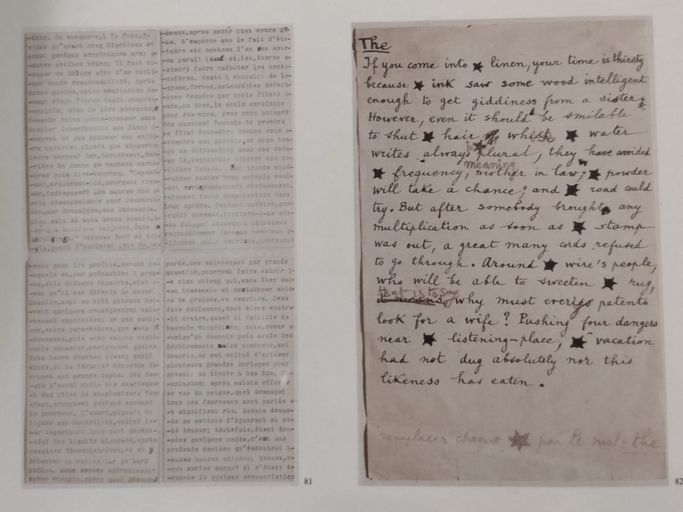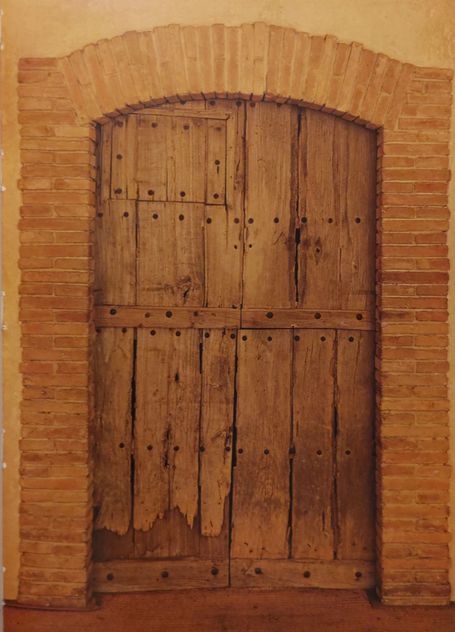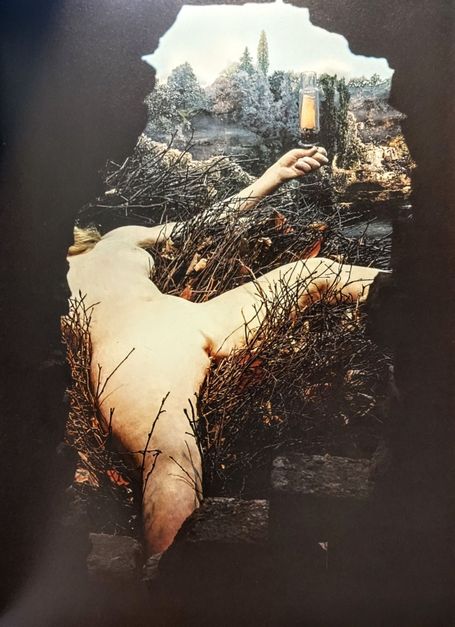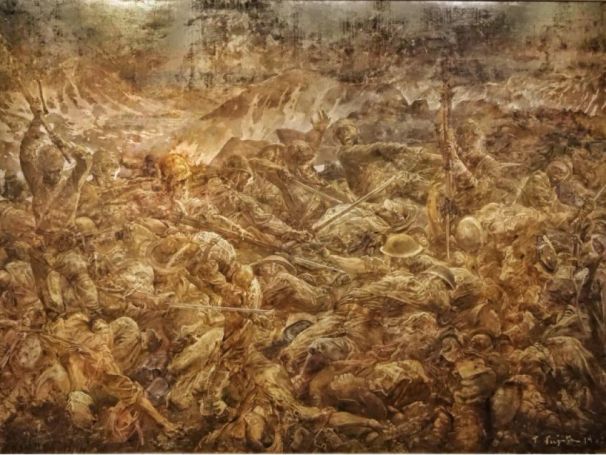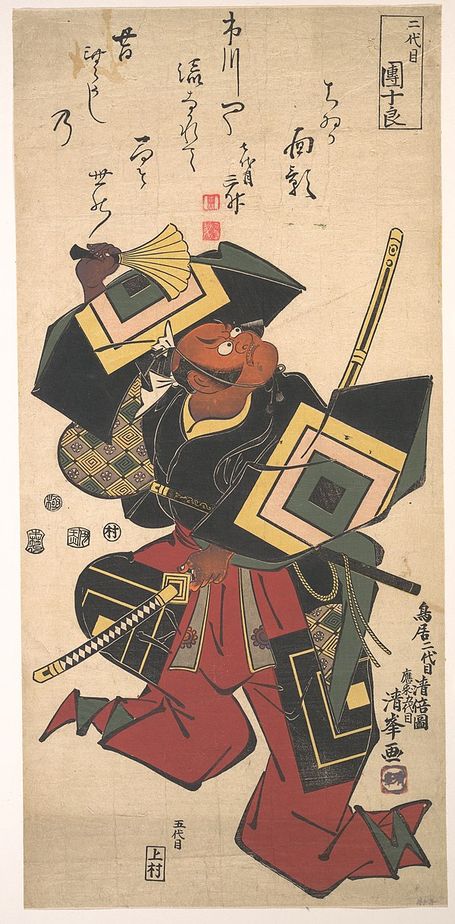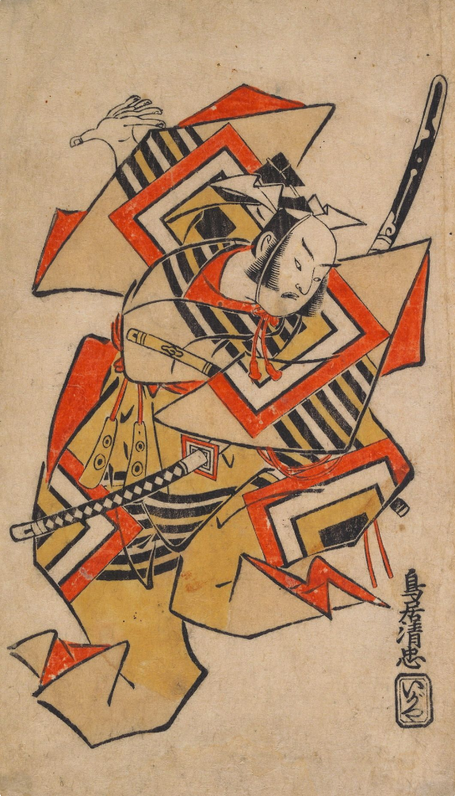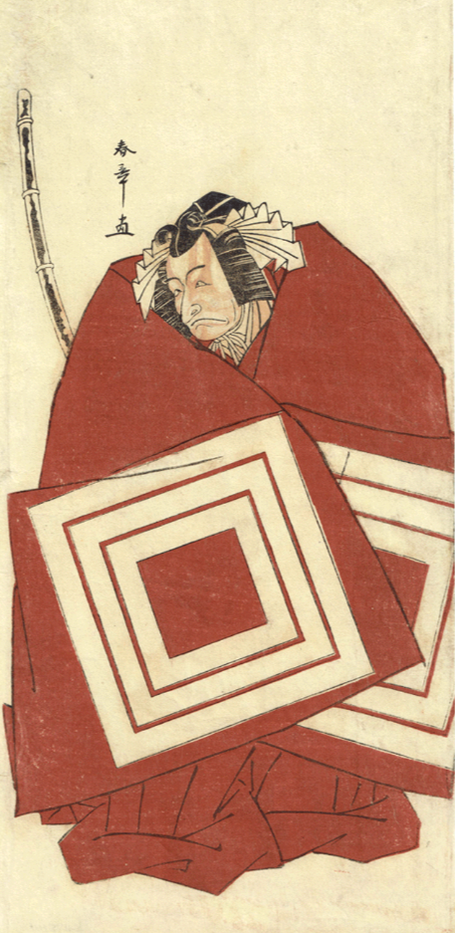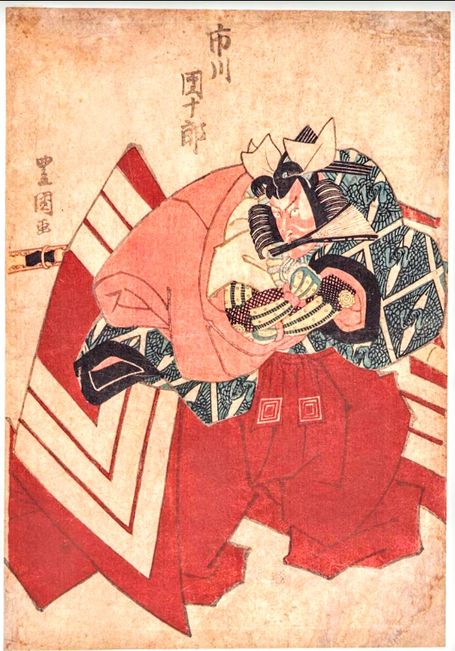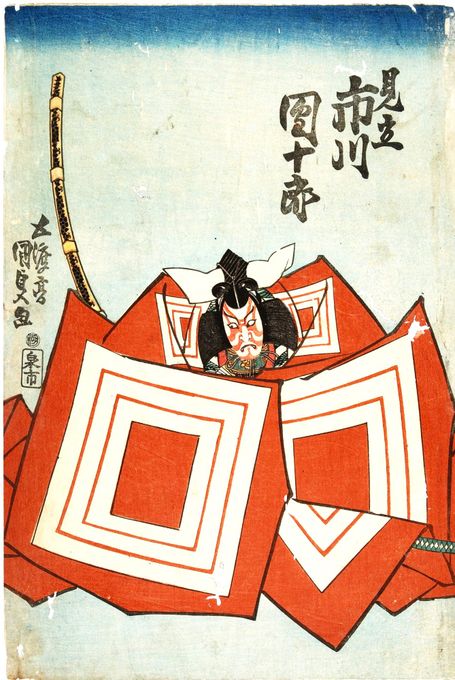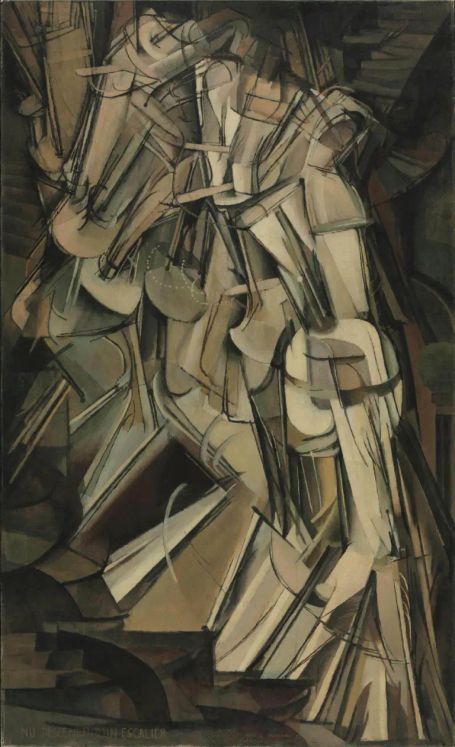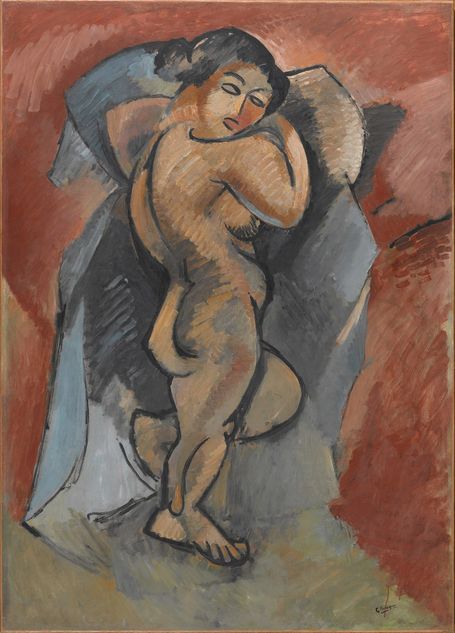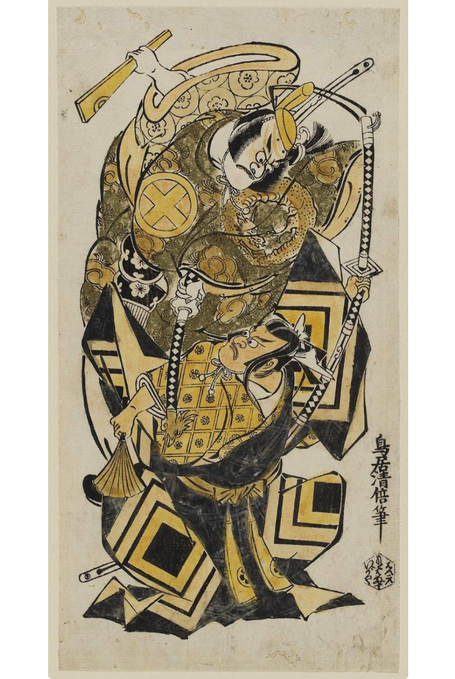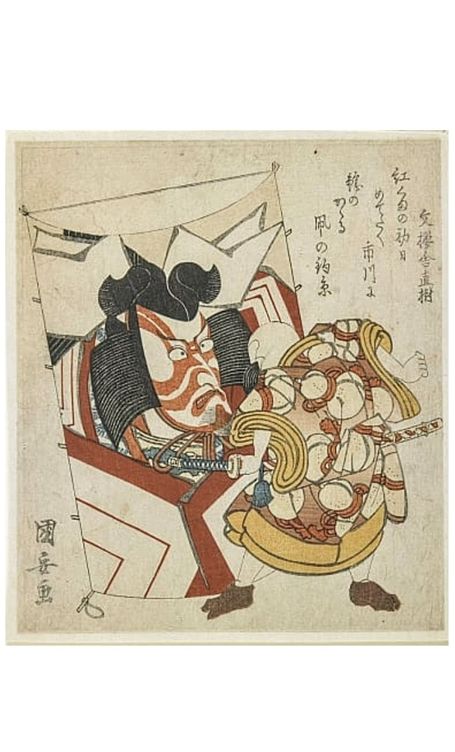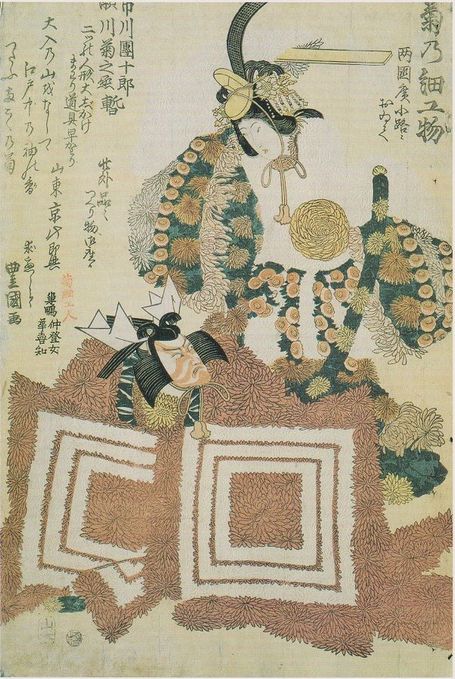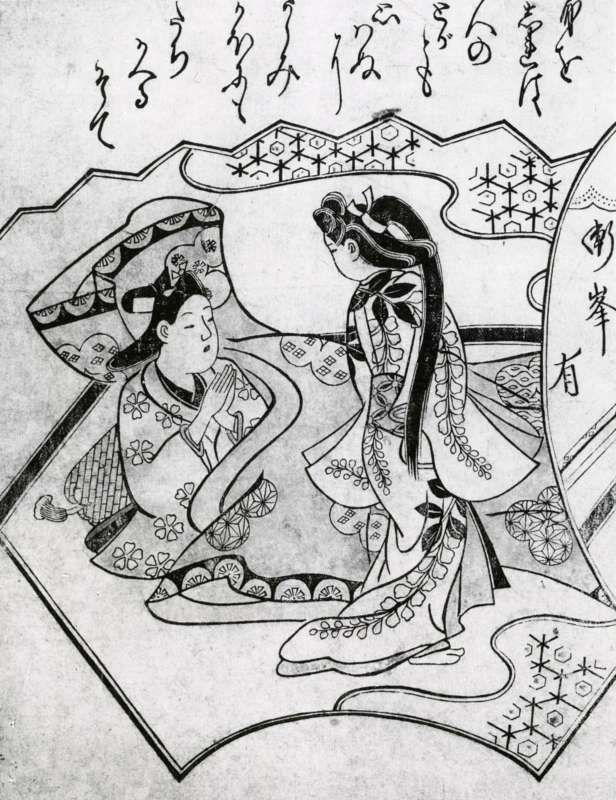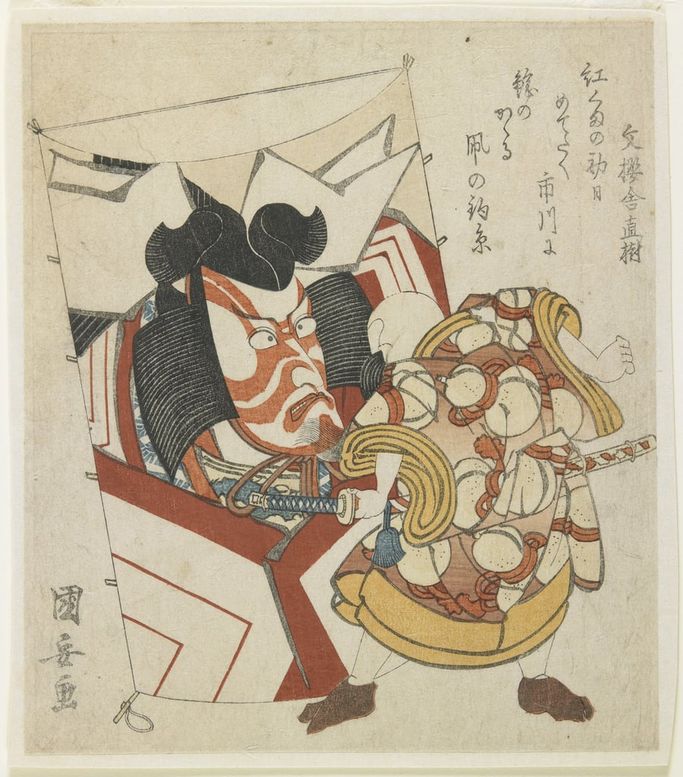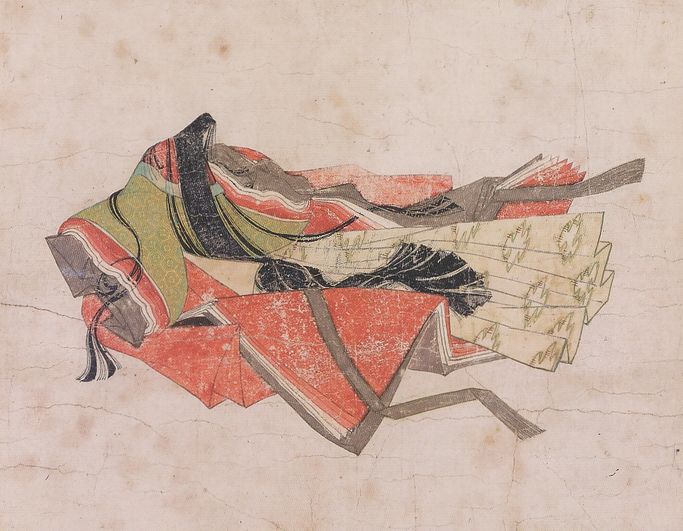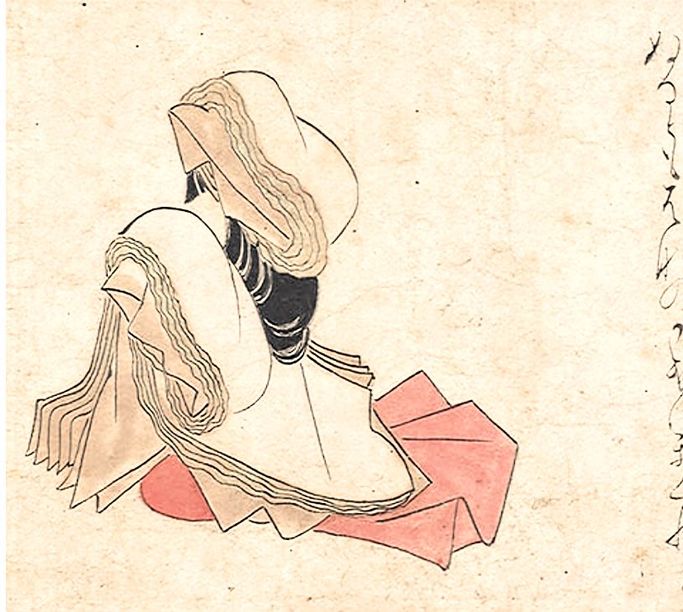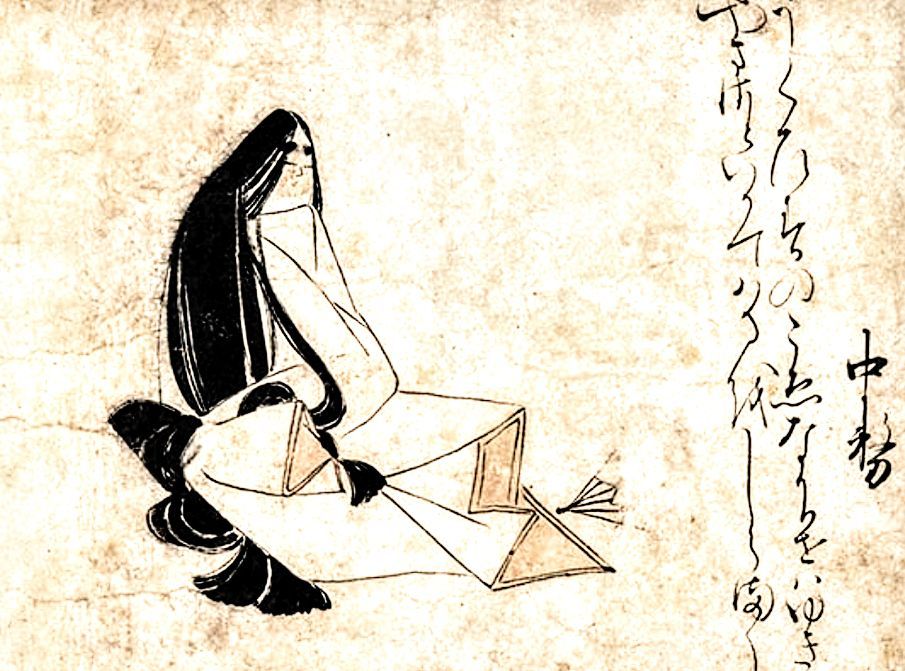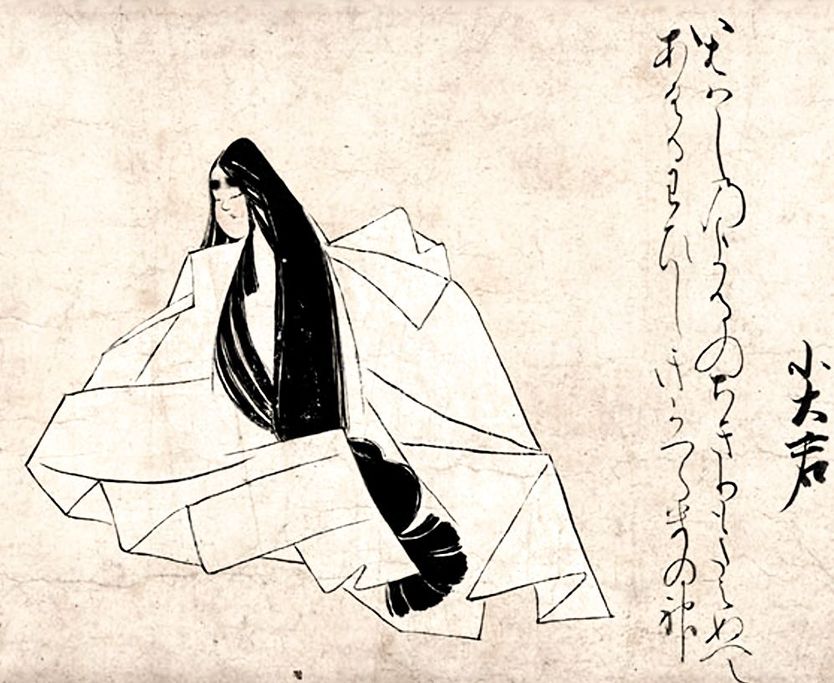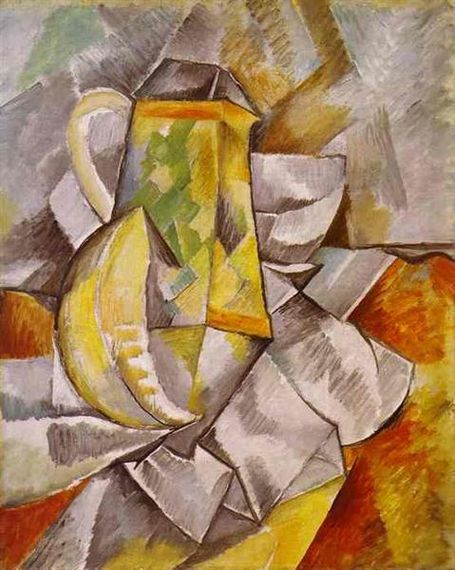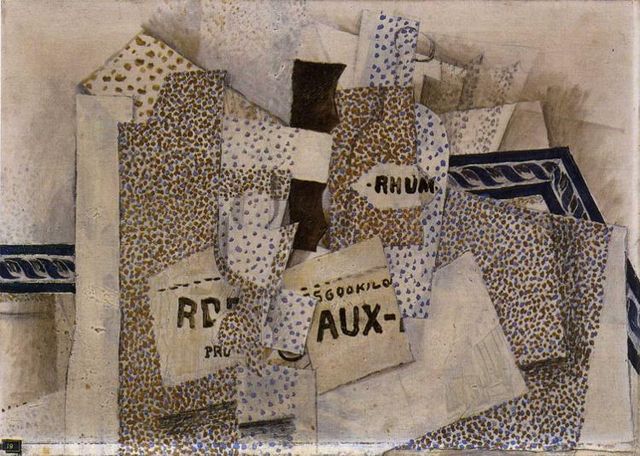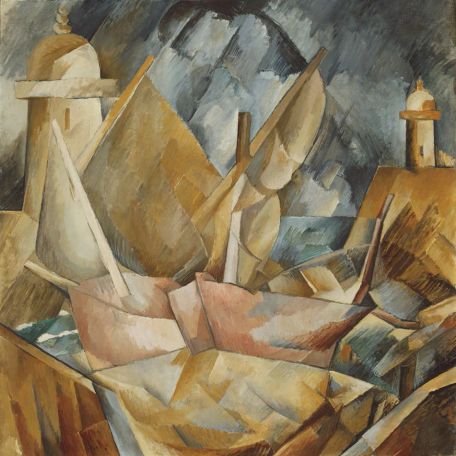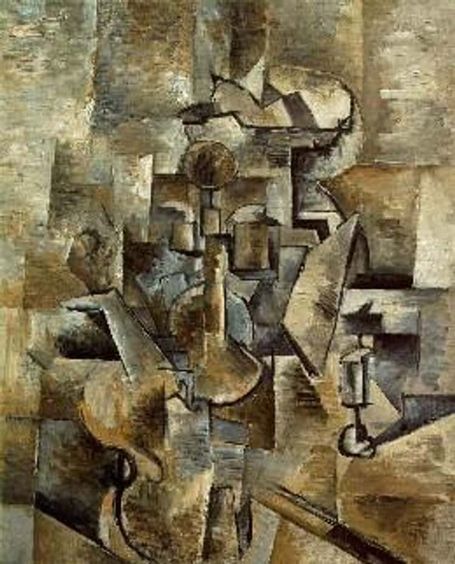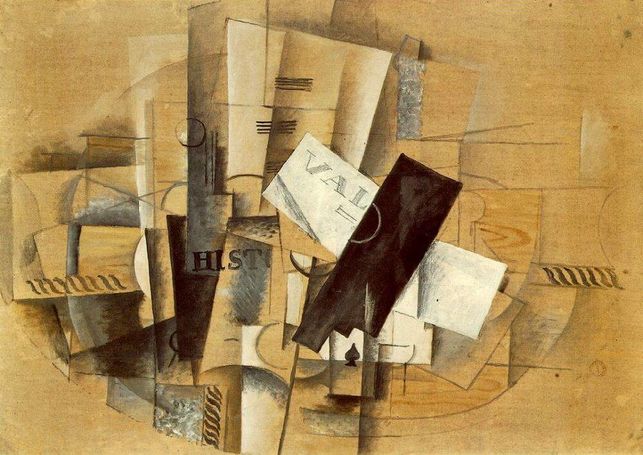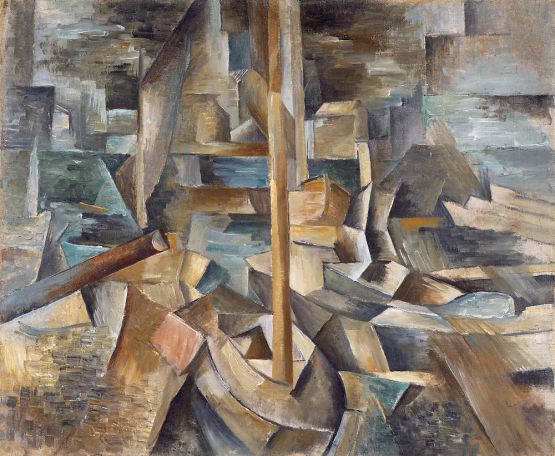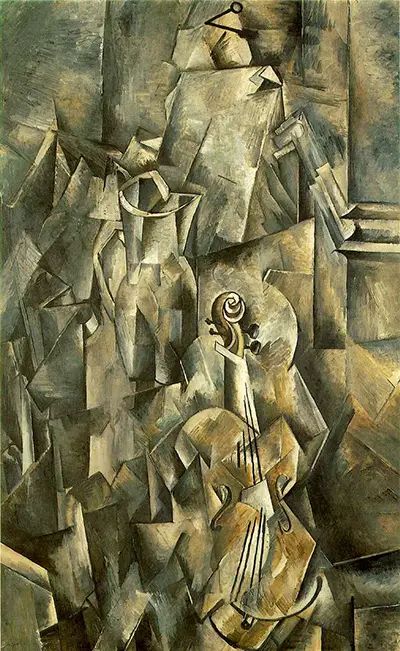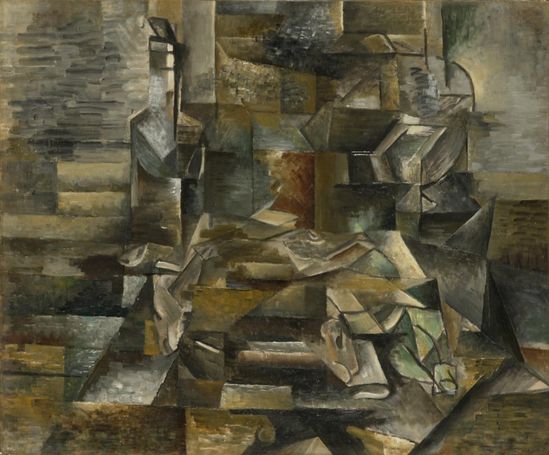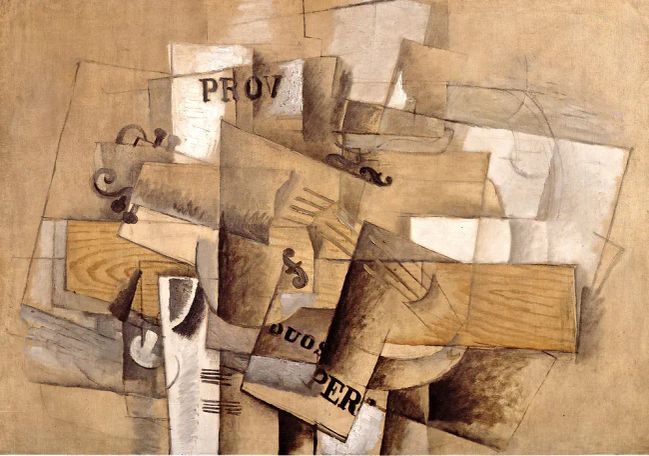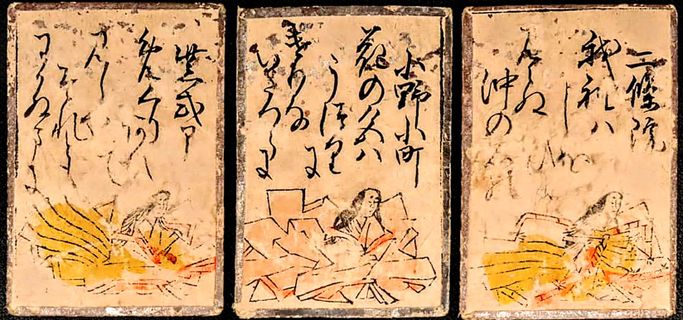________________________
Walter Gropius (1883-1969)
Japan as Another Rome (or Greece), Part I
Lecture handout 2015.12.12, Architectural Juxtapositions, p.17
Yasutaka Aoyama
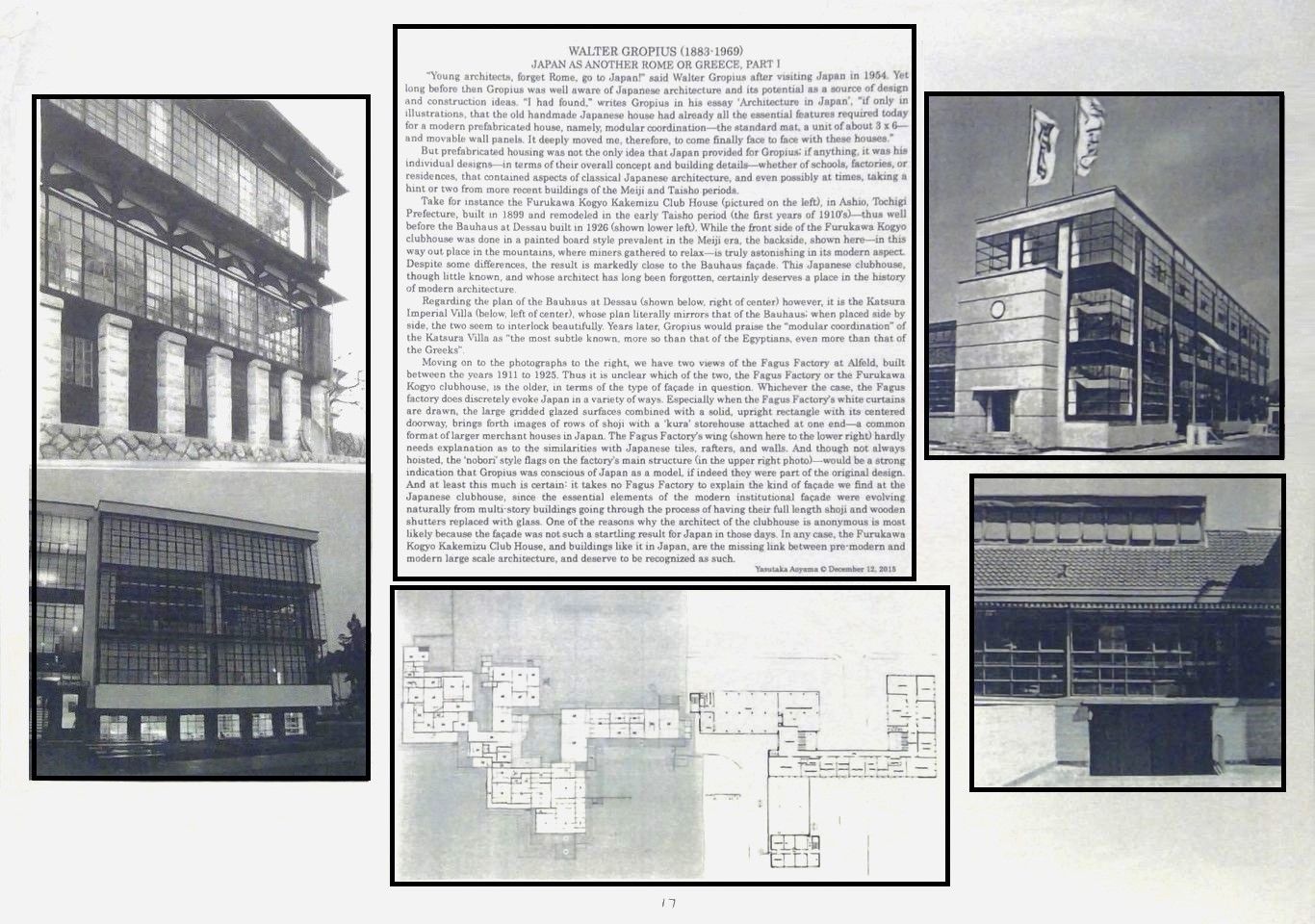
Walter Gropius
Japan as Another Rome (or Greece), Part II
Lecture handout 2015.12.12, Architectural Juxtapositions, p.18
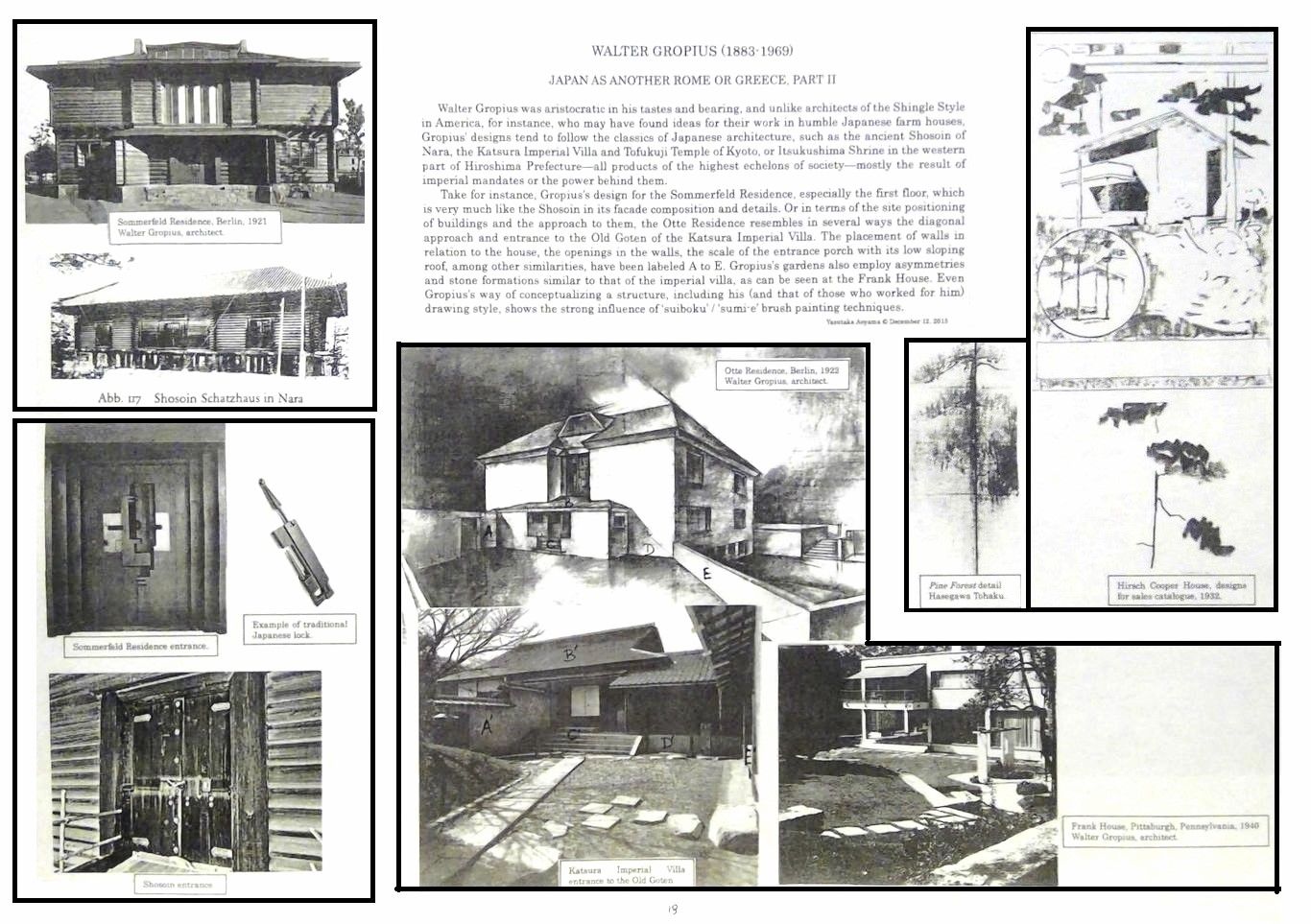
Walter Gropius
Japan as Another Rome (or Greece), Part III
Lecture handout 2015.12.12, Architectural Juxtapositions, p.19
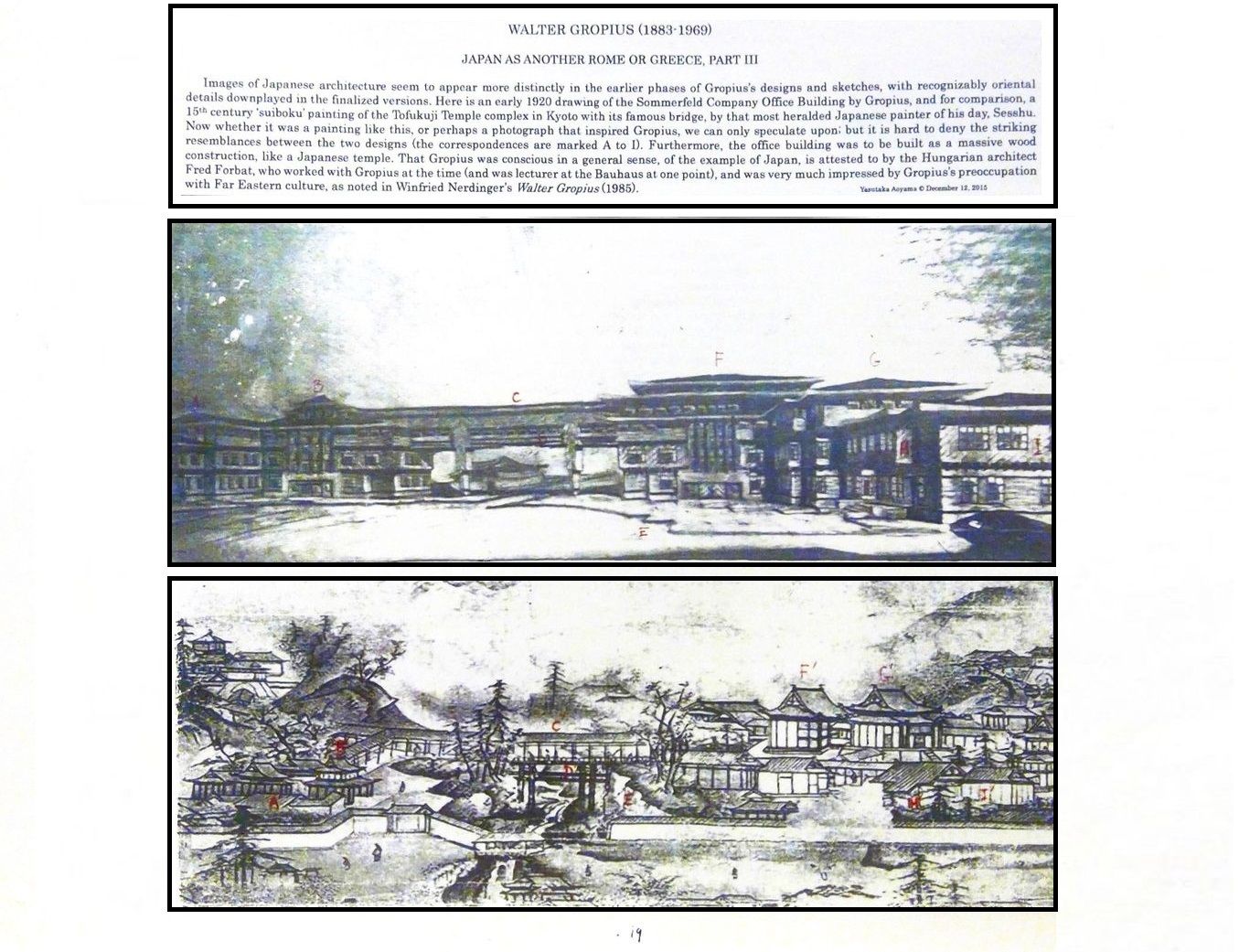
Walter Gropius
Excerpts from his essay 'Architecture in Japan'
Additional class reading material, Kyoto University, 2015.12.12
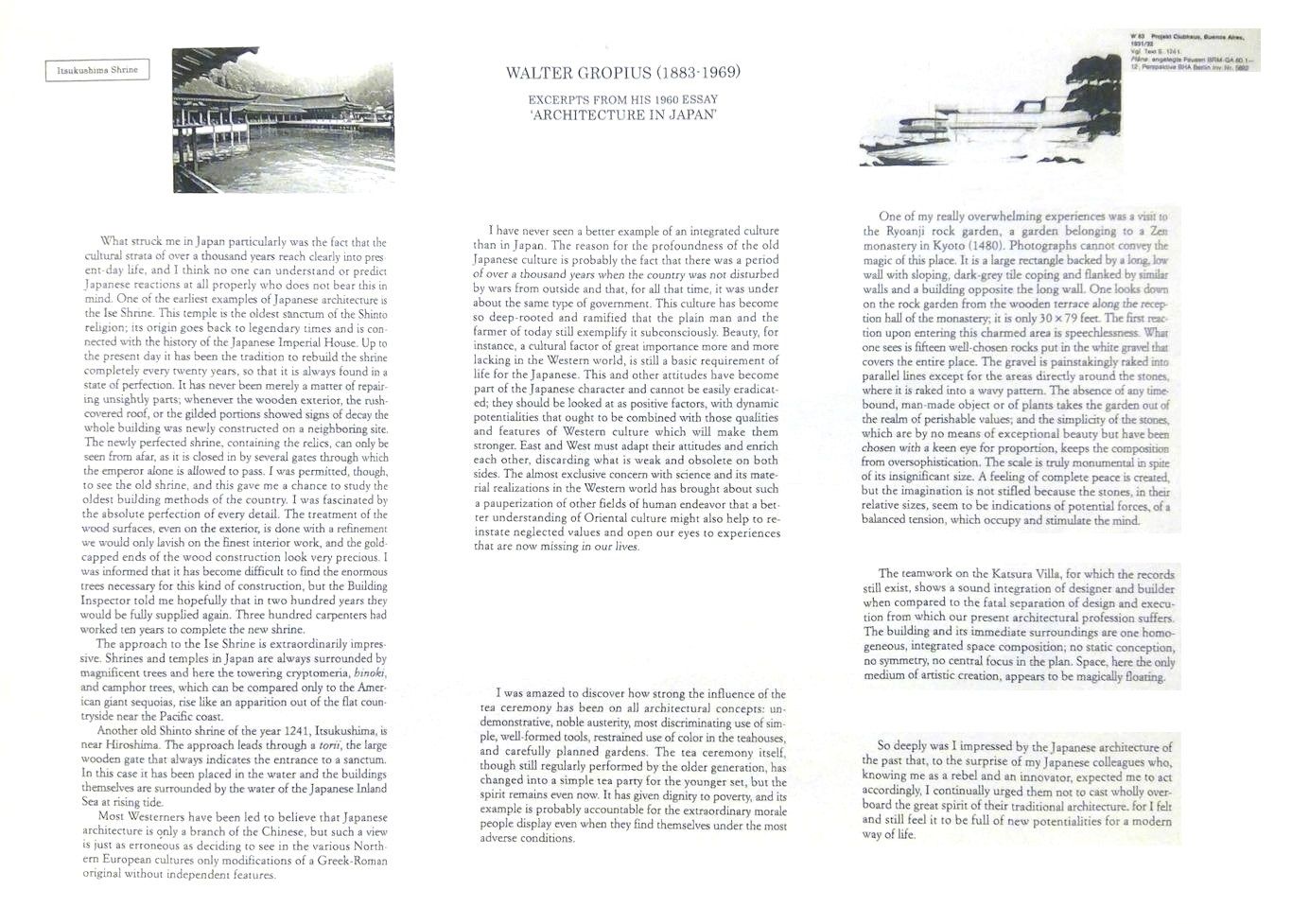
Walter Gropius
Japan as another Rome (or Greece), Part IV
Project Clubhouse, Buenos Aires, Argentina (1931–1932)
Originally uploaded 2023, revised 2024.5.31

Above: Walter Gropius (with Hanns Dustmann and Franz Möller), Project Clubhouse sketch, for a Buenos Aires resort, with Japanesque gridded geometric facades, thin and long extending wings along or out onto the water, and curved, extending roofs. Japanese architecture, when sketched in outline form, often yields similar impressions, as with the example of by Kawahara Keiga of Kiyomizu-dera Temple, shown below.

Kawahara Keiga, Kiyozumi-dera, Siebold Collection
Gropius' sketches of the Buenos Aires Clubhouse project---the concepts contained within the plans and elevations echo in various ways the architectonics of Itsukushima Shrine, Hiroshima Prefecture, including a monument placed far out in the water, for viewing from the building.
Photos from Tokyo National Museum et al., Von Siebold and Japan (1988) and Harvard Art Museums, 'Displaying Latin America' (2019).
________________________
Johannes Itten (1888-1967)
of the Bauhaus
Japan in his Art and Pedagogy, Part I
Lecture handout 2016.1.7, Architectural Juxtapositions, p. 20
Yasutaka Aoyama
No history of early 20th century architecture or art education be complete, nor as colorful in more senses than one---without mentioning Johannes Itten from Switzerland, a central figure at the Bauhaus in Germany, and founder of his own school nearby, the Itten Schule. A photo of him dressed in the robes of a neo-Zoroastrian cult, or quotes from his book on art and color asserting that the most profound chromatic truth reveals itself only to 'devotees' wth the proper spiritual preparation, add spice to otherwise turgid textbooks of architectural theory.
But such talk diverts us from more important influences from the East that had a meaningful impact on the content of art production at the Bauhaus, at the Itten Schule, and that by Itten himself. The 'Mazdazan' cult he adhered to was more of a health and dietary lifestyle program than an ancient religion possessing a concomitant artistic tradition, and the actual role model for his approach to art was more East Asian than Persian, more Daoist and Zen than Zoroastrian. He was interested in the writings of Lao-tse and Buddhism since his youth; and as he would write in his latter years, as it it is so in Chinese painting, "heart and hand must be one" and that to study Japanese panting is to "master the perception of objects to the heart and from the heart to the hand" (Mein Vokurs am Bauhaus, 1963). In fact, the Nanga style Japanese painter Shonan Mizukoshi and Yumeiji Takehisa, a pioneer of modern watercolor painting in Japan, both taught at Itten's school---Mizukoshi in 1931 and Takehisa in 1934. "Brush drawing with sumi-ink" for instance, became part of the Itten Schule curriculum by 1932. During the morning, a 30 minute gymnastic and singing session, (reminiscent too of 20th century Japanese custom), was followed by 30 minutes of free drawing with sumi-ink and brush. Yoshimasa Kaneko of Kochi University has written valuable papers on the subject, and Eva Streit (2015) has followed with a section on Yumeji in her book on the Itten School.
Shown below, together with plausible Japanese artistic models, are a few examples out of many that reflect Japanese influence in Itten's own work (and his art instruction, included is a student work done in his class)---some of which he even signed in Japanese "一天", phonettically equivalent to "Itten", which translated means "One Heaven".
Note: The two lower illustrations with Japanese captions are: left, a section of a painting of the goddess Kichijoten (8th century), and right, a section of the painting 'Yashokurodaizu' (18th century) by Yosa Buson, depicting Kyoto's Higashi-yama area, both from the The Art Museum of Japan published by Shogakukan.
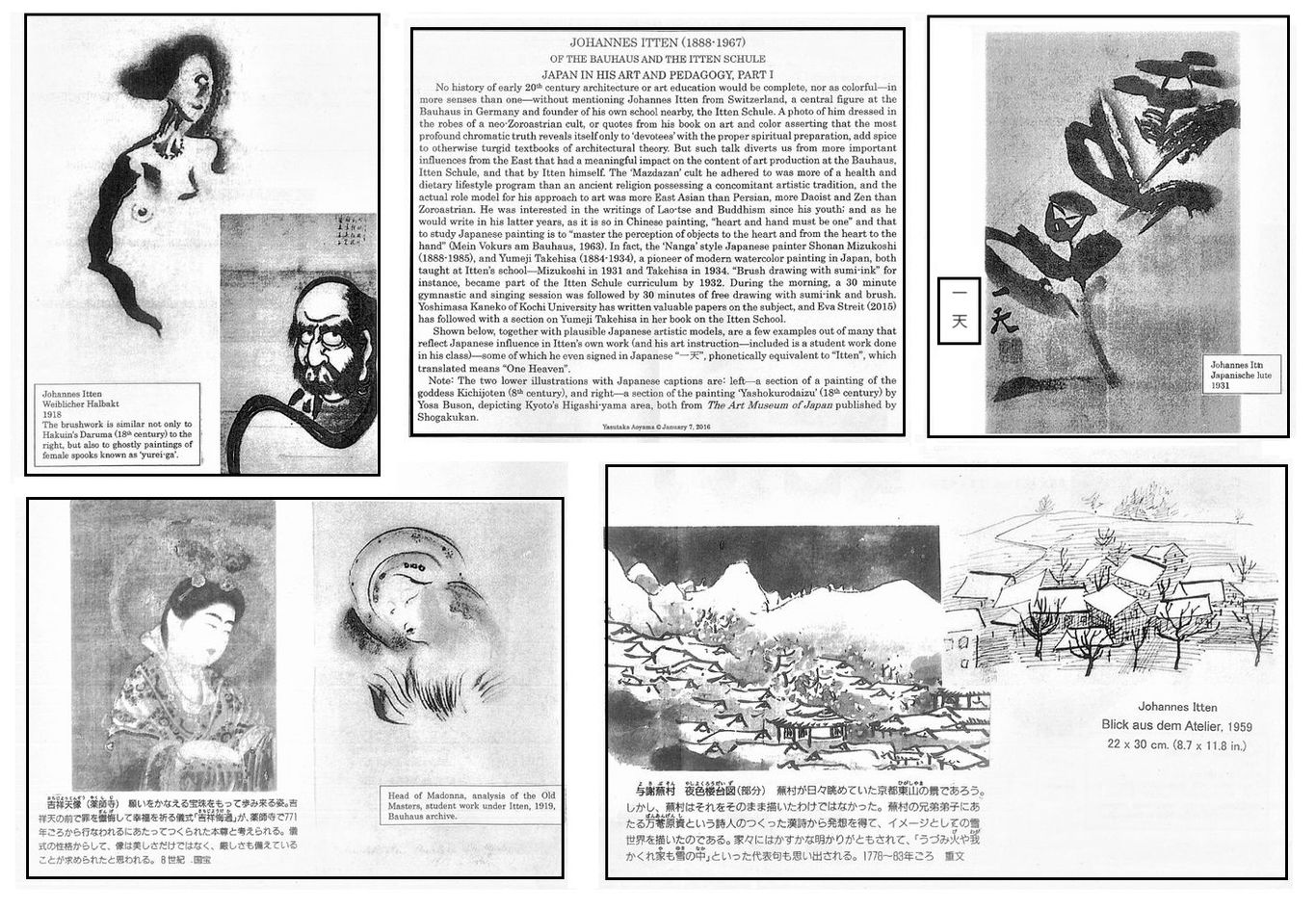
Johannes Itten
Japan in his Art and Pedagogy, Part II
Lecture handout 2016.1.7, Architectural Juxtapositions, p. 21
The Japanese influence seems to come from a variety of sources, not infrequently from the north-western seaboard of Japan, where a rich tradtion of arts and crafts thrives in the prefectures of Niigata and Yamagata. Sometimes Itten's work follows the Japanese model closely, such as in the case of his hammered brass bowl, dating back to 1914, which is almost identical to octagonal bowls and pots of Tsubame beaten copperware ('Tsubame-tsuiki doki'). At other times, he has transferred the design of a certain medium, such as that of a kimono textile, to a different artistic medium---for instance, to a watercolor painting.
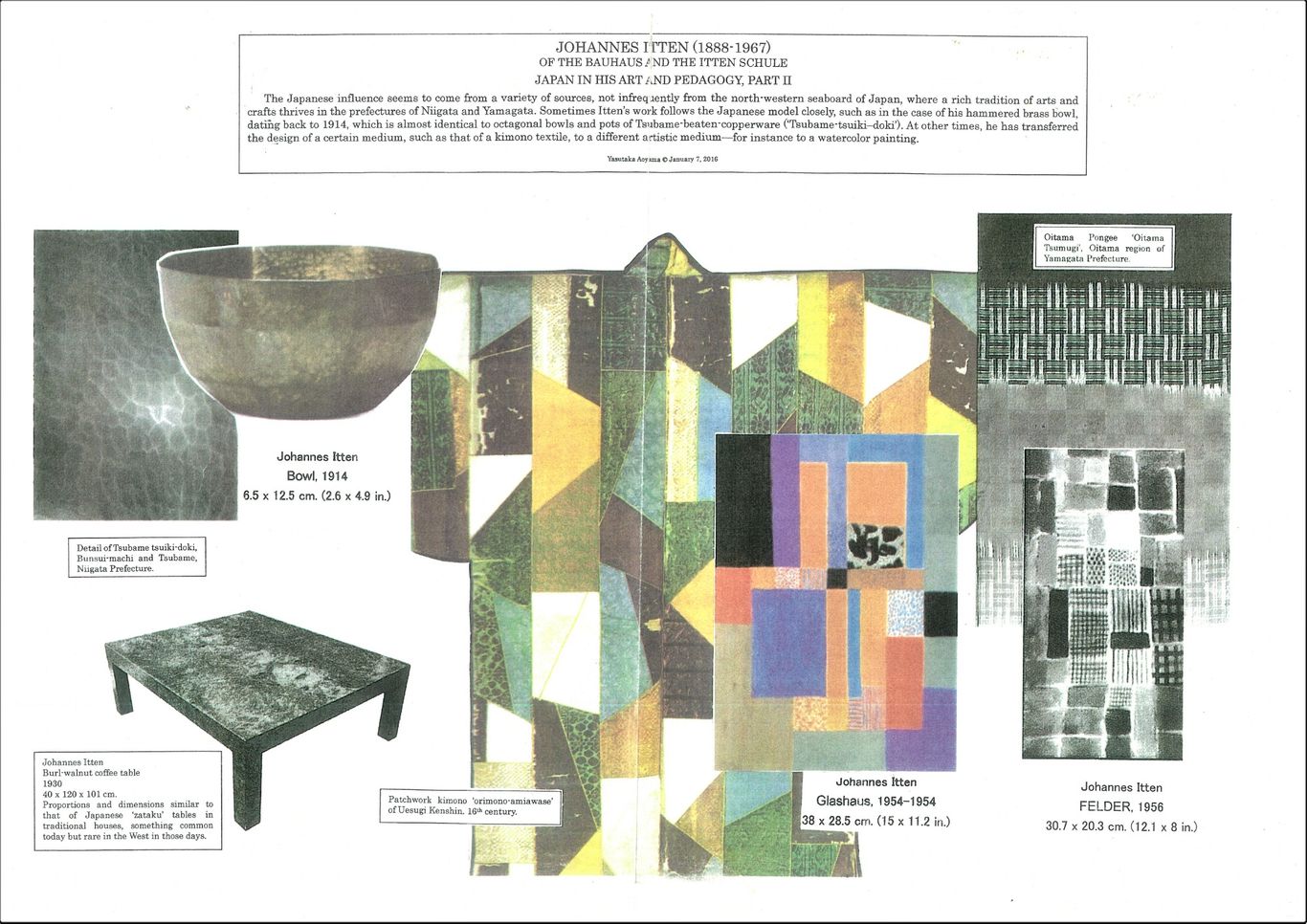
An article on the Bauhaus and Japan: Keshav Anand, 'How Japan’s Imperial Architecture Influenced The Bauhaus', Something Curated at somethingcurated.com. Visited May, 2024.
________________________
C. F. A. Voysey (1857-1941)
Part I: Exteriors
Perhaps Best Described as a 'Tibeto-Japanese' Melange
Architectural Juxtapositions, p. 22
Yasutaka Aoyama
Voysey's creative sources have not been sufficiently investigated. While his interiors can be evaluated within the context of the general trend of japonisme, his exteriors, while exhibiting elements of Japanese architecture, also exhibit commonalities with Tibetan, or more widely, Himalayan architectural forms, available, for instance, in the 1783 paintings of Bhutan dzongs by Samuel Davis.
The Tibeto-Bhutan parallels aside, circumstances and relationships of Voysey point to a link with Japanese art. For instance, Voysey, on the recommendation of his friend Arthur Heygate Mackmurdo (known for his involvement with Japanese interiors most notably that of the Mortimer Mempes House discussed later in this section), tried his hand at designing wallpaper, carpets, and textile designs, often using motifs which were very likely taken from katagami designs, an example of which is shown in Katagami Style (2012, supervised by Mabuchi Akiko, Director of the National Museum of Modern Art, Tokyo) of a poppy flower motif for a decorative fabric (c. 1894, exhibit #2033). The 1890's was a time when publications on Japanese design became readily available, and the astonishing diversity and dramatic visual impact of katagami attracted designers in all fields, including architects.
The following added 2024.9.14
Robert Schmutzler, a leading historian of Art Nouveau in the English-speaking world, in his classic Art Nouveau (1962,1977), after commenting on how Voysey was influenced by Arthur Heygate Mackmurdo, writes:
“However, for Voysey as an architect, Japanese influences were perhaps even more important, though they are scarcely recognizable as such in his work. One of his most interesting works, the tower-like house in Bedford Park [shown below, center] that he finished in 1891, is an exception. The light roof with its low gradient, the concave curved roofing of the oriels, the thin metal supports that seem to raise the roof over the body of the building, the unusually small windows, and the one stressed bull’s-eye window are not outright Japanese forms; but the graphic, abstractly ornamental, and asymmetrical character of the surfaces, the contrast in black and white between the apertures and the white-washed walls, not to mention the frieze-like disposition of various groups of windows under the thin horizontal ledges, all clearly reveal the relationship to Japanese architecture, easily recalling Japanese teahouses and small temples, as for example Voysey’s similar but lower and longer country houses, which are a particular national achievement of English art.” ---Schmutzler, Art Nouveau, 1977 abridged edition, pp. 128-9.
Yet we should add that those elements which Schmutzler categorizes as not obviously Japanese forms, as a low gradient roof, concave curved roofing, thin supports that raise the roof over the body of the building; or the bull’s-eye window---are in fact common features of traditional Japanese architecture, though not necessarily found together in one building. Even the small windows could be considered so, if we think of Japanese castle architecture. Indeed, the whole structure resembles a Japanese castle in various respects, including the frieze-like disposition of various groups of windows under the horizontal ledges, the white washed walls and their thick appearing aspect, and the contrast of black and white, though this is shared with Tibetan and Bhutanese architecture as well.
As to which inspired Voysey, Japan or Tibet/Bhutan in this case, either or both are possible; but as so much of his other architectural work reflects Japanese elements, both in his exteriors and interiors, as well as in his other designs, with hints such as “Tokyo” (wallpaper, 1893), the former seems more likely. Furthermore, models of Japanese castles were exhibited in Britain and on the Continent in world expositions and privately collected, and paintings and prints of castles abounded in England by the time of Voysey’s designing the Bedford Park house. On the other hand, Tibetan/Bhutanese models were scarcer though existing in sketches and paintings by a few, but we would not like to close the door on the possibility. It is an intriguing parallel, and at the very least it deserves mention as enriching our global perspective on modern architecture, even if there is no causative connection.
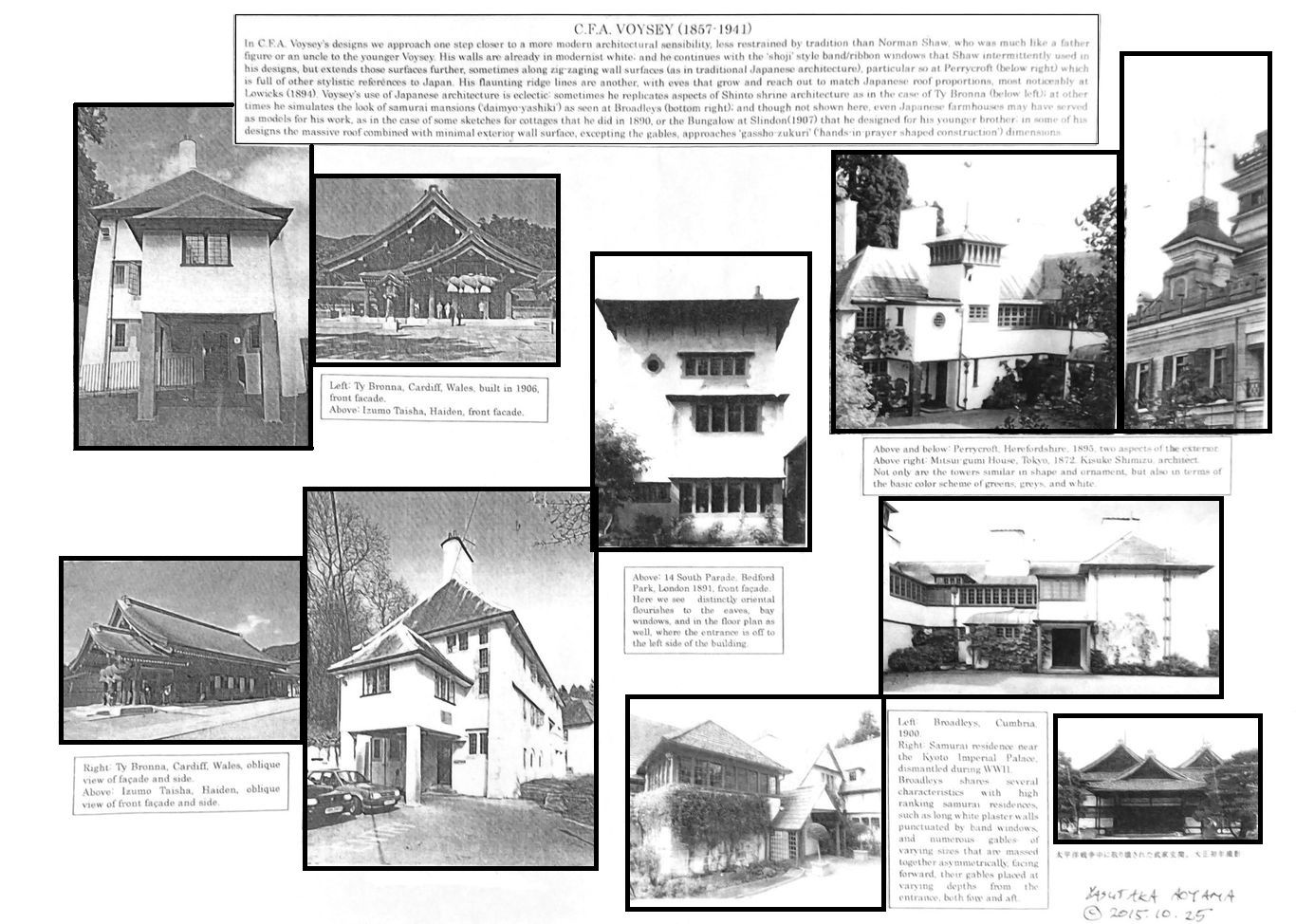
Below: An example of early Meiji era architecture, the Tsukiji Hotel, Tokyo, 1868. This was a hotel built for Western visitors. There are aspects of its design reminiscent of Voysey. Novel architectural forms were being produced in abundance in Japan from the late 1860's onward to the early 20th century, that precede the appearance of similar forms in the West. It might be said that much of the reputation for originality of certain architects in Europe or America in those days depends on an ignorance of the building activity going on in Japan at the time.

Below: Photos pasted side by side from the author's scrapbook, on the left is a Voysey designed house, on the right a Japanese castle 'yagura' (a corner tower and storehouse/sentinel quarters combination). Despite obvious differences, there is an affinity of general conceptualizations between Japan's and Voyseys' architecture.

C. F. A. Voysey (1857-1941)
Part II: Interiors
Architectural Juxtapositions, p. 23
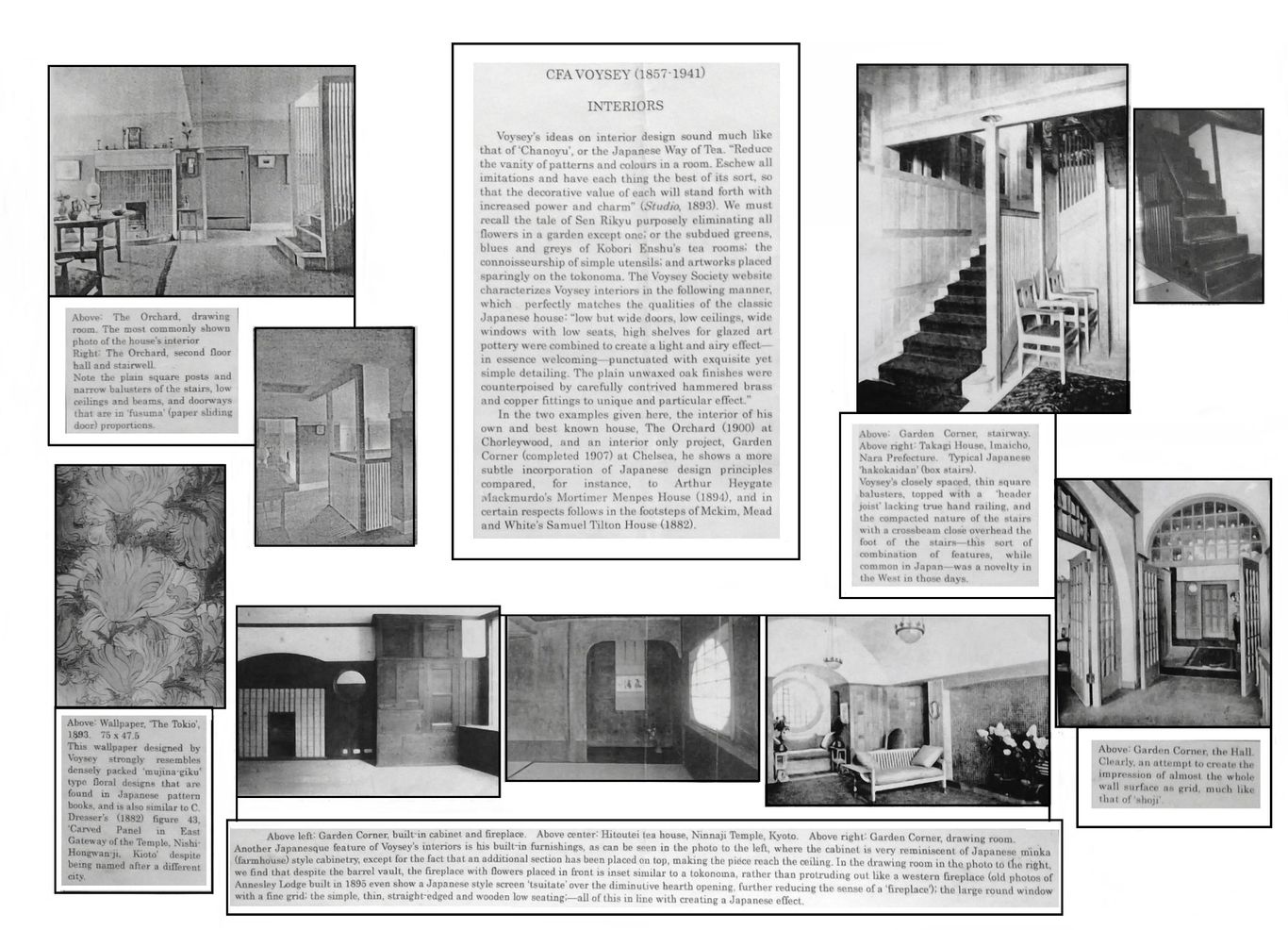
________________________
Greene and Greene
Charles Sumner (1868–1957) & Henry Mather (1870–1954)
Part I: The Physical and Spiritual Presence of Japan
Lecture handout 2015.11.5, Architectural Juxtapositions, p. 24
Yasutaka Aoyama
The Greene brothers, Charles Sumner and Henry Mather, are considered the primary representatives of the American Arts and Crafts Movement of the early 20th century, with Charles Sumner, the elder brother, being the principal creative force behind their work; and it was Japan in turn, more than any other artistic source, that fed his creative imagination.
In the words of Charles Robert Ashbee, of English Arts and Crafts renown, "I think C. Sumner Greene's work beautiful; among the best there is in this country (meaning the USA). Like Lloyd Wright the spell of Japan is on him, he feels the beauty and makes magic out of the horizontal line, but there is in his work more tenderness, more subtlety, more self-effacement than in Wright's work."
Vincent Scully, the pre-eminent historian of 19th century American architecture wrote: "Their use of materials---rough wood, cedar shakes, and cobblestones---also grows out of the use of natural materials of the shingle style [a Japanese influenced style according to Scully] but in a sense exaggerates it, insisting obsessively upon the total articulation of each element. Also significant in their work is a strong oriental influence, the apotheosis of that insistent relationship with Japanese framing and spatial techniques which had been important since the 70's [1870's]." (The Shingle Style and The Stick Style, Revised Edition, 1971, p.157)
While Henry-Russell Hitchcock, usually sparing in his comments regarding the role of Japan in his Architecture: Nineteenth and Twentieth Centuries (The Pelican History of Art), considers the Greene's houses "most interesting for their successful assimilation of oriental influences", writing: "Shingled walls, low-pitched and wide-spreading gables, and extensive porte-cocheres and verandas of stick-work surpassing in virtuosity those of the Stick Style, were combined by the Greenes in rather loosely organized compositions. Less formal and regular than Wright's Prairie Houses, theirs are executed throughout with a craftsmanship in wood rivalling that of the Japanese, whom they, like Wright, so much admired." (1977, p. 452)
Other architectural historians have characterized it in various ways; but whether it be the 'structural expressionism' of their designs which derives from English half-timbering and Japanese 'cage' construction; the roofs which are said to be based on Swiss chalet and Japanese prototypes; the Italian and Japanese conceptions of gardens deriving from their love of the outdoors; or the philosophy of craftsmanship and materials;---in all of this and more, in plan, elevation, and spatial progression---the one constant thread which weaves and binds it all together into something new---is Japan; and without that (but with all the rest) we would be not missing the soul of what makes Greene and Greene's work special?
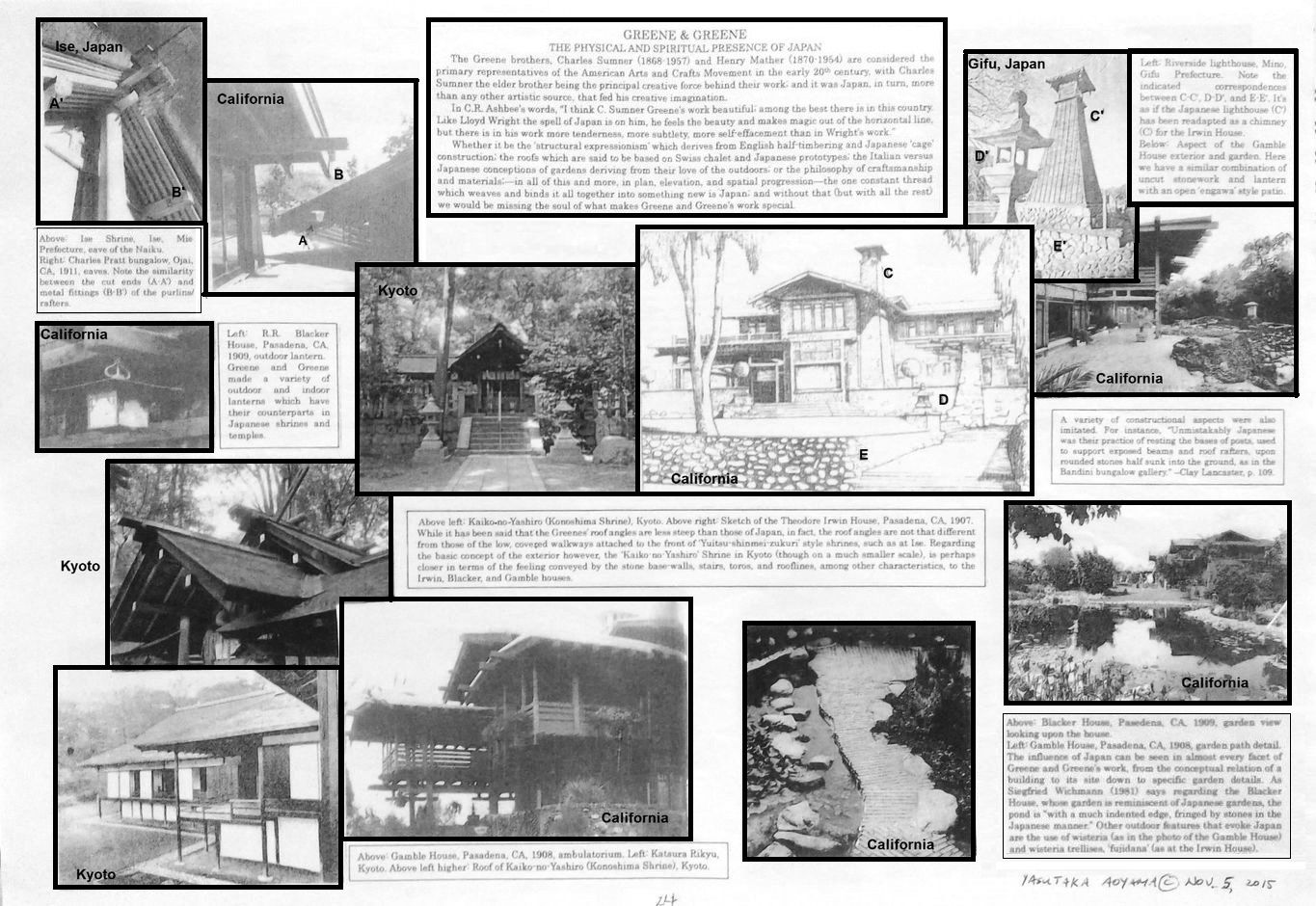
Greene and Greene
Part II: Interiors
An Eclectic Adaptation of Manifold Japanese Arts
Lecture handout 2015.11.5, Architectural Juxtapositions, p. 25
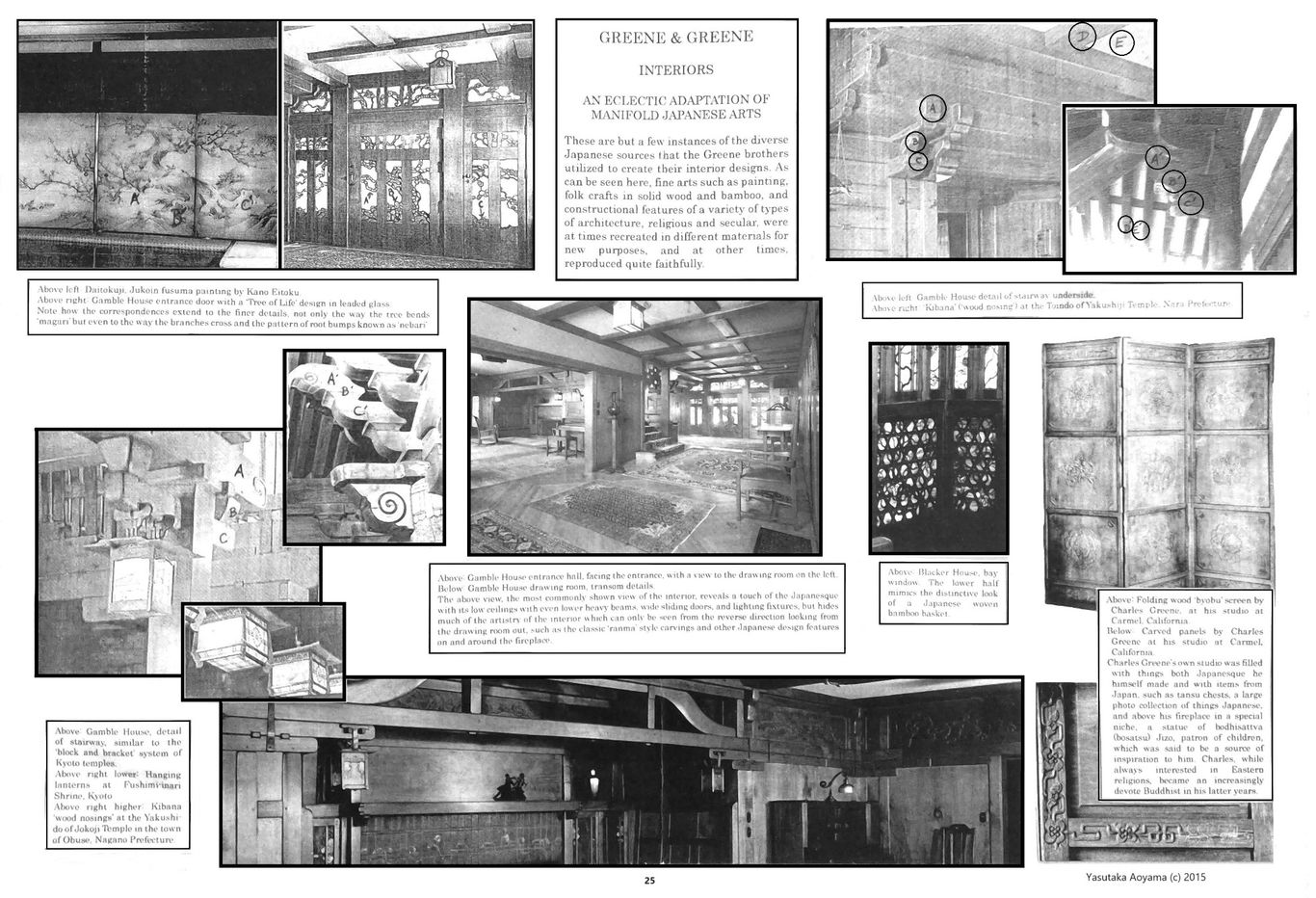
Below: Close up of the Daitokuji Temple Jukoin fusuma (sliding door panel) by Kano Eitoku (left) and the Gamble House entrance door with the 'Tree of Life' design in leaded glass (right). Note how the correspondences extend to the finer details (e.g. A=A', B=B', C=C') not only in the pronounced way in which the tree bends and extends horizontally known as 'magari' but even to the way the branches cross and the pattern of root bumps know as 'nebari'. In Japan the aesthetic appreciation of the details of garden tree shape, like bonsai, especially their sideways extension was a matter of high connoisseurship.

Bottom two photos from Wikipedia.
________________________
McKim, Mead and White
Charles Follen McKim (1847–1909), William Rutherford Mead (1846–1928) and Stanford White (1853–1906)
The Samuel Tilton House, American 'Minka Style'
Lecture handout 2015.10.30, Architectural Juxtapositions, p. 27
Yasutaka Aoyama
The work of McKim, Mead and White falls into basically two distinct categories: thoroughly classical, European based designs vs. Japanese influenced ones---or to be more specific, Japanese residential architecture ('shoin', 'sukiya' and 'minka') influenced designs. And it is with the later, such as the Isaac Bell House, the Newport Casino, the Casino at Narragansett Pier, the H. Victor Newcomb Hall (Elberon, NJ), and especially the Samuel Tilton House (Sunnyside Place, Newport, RI), where we find some of their most modern expressions of architectural form.
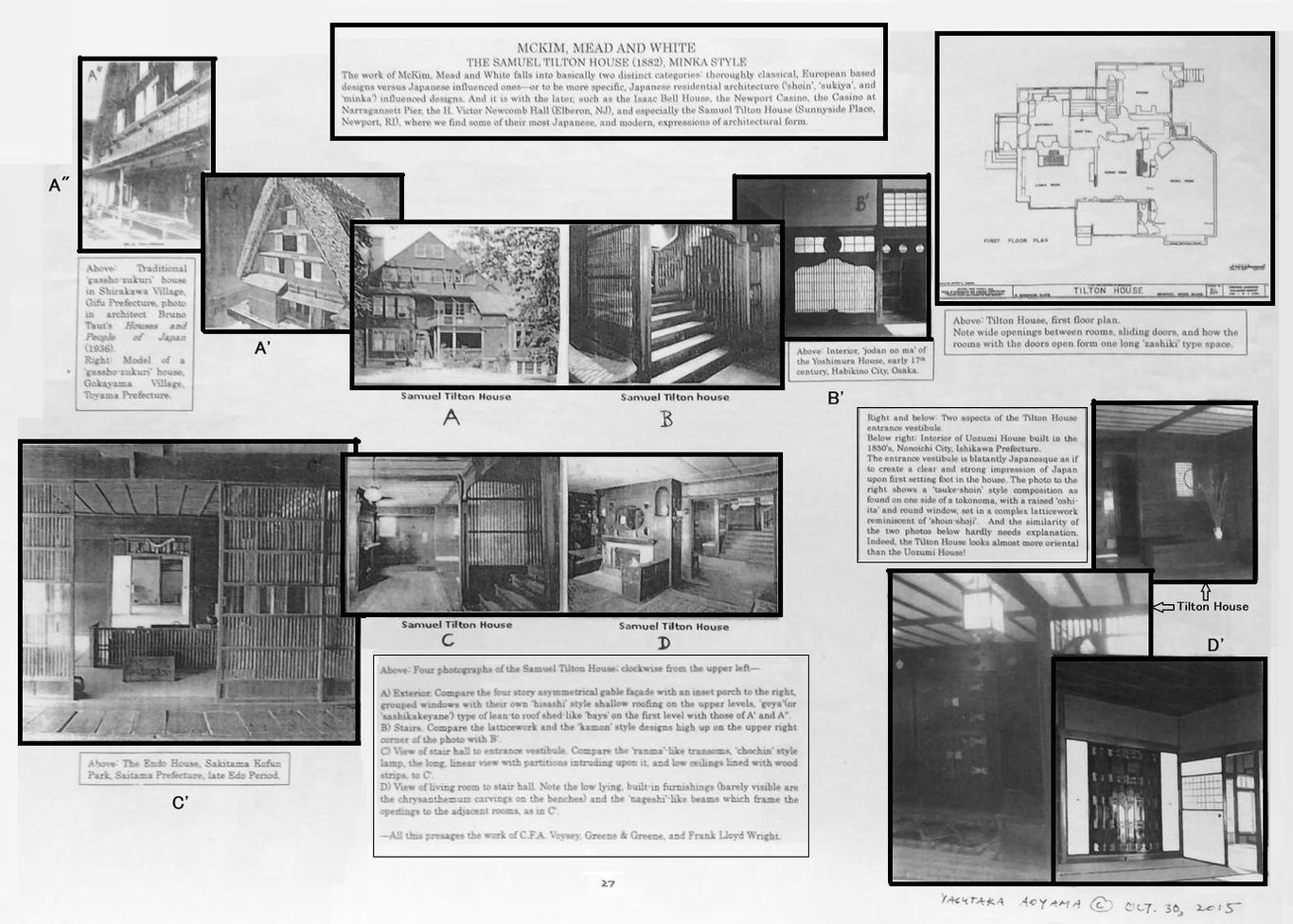
The text for two of the caption boxes (center bottom and right side middle) have been reproduced below for better legibility.
McKim, Mead and White
The Isaac Bell House and Japan in the Shingle Style (1880's -1900's)
Lecture handout 2015.10.5, Architectural Juxtapositions, p. 26
Yasutaka Aoyama
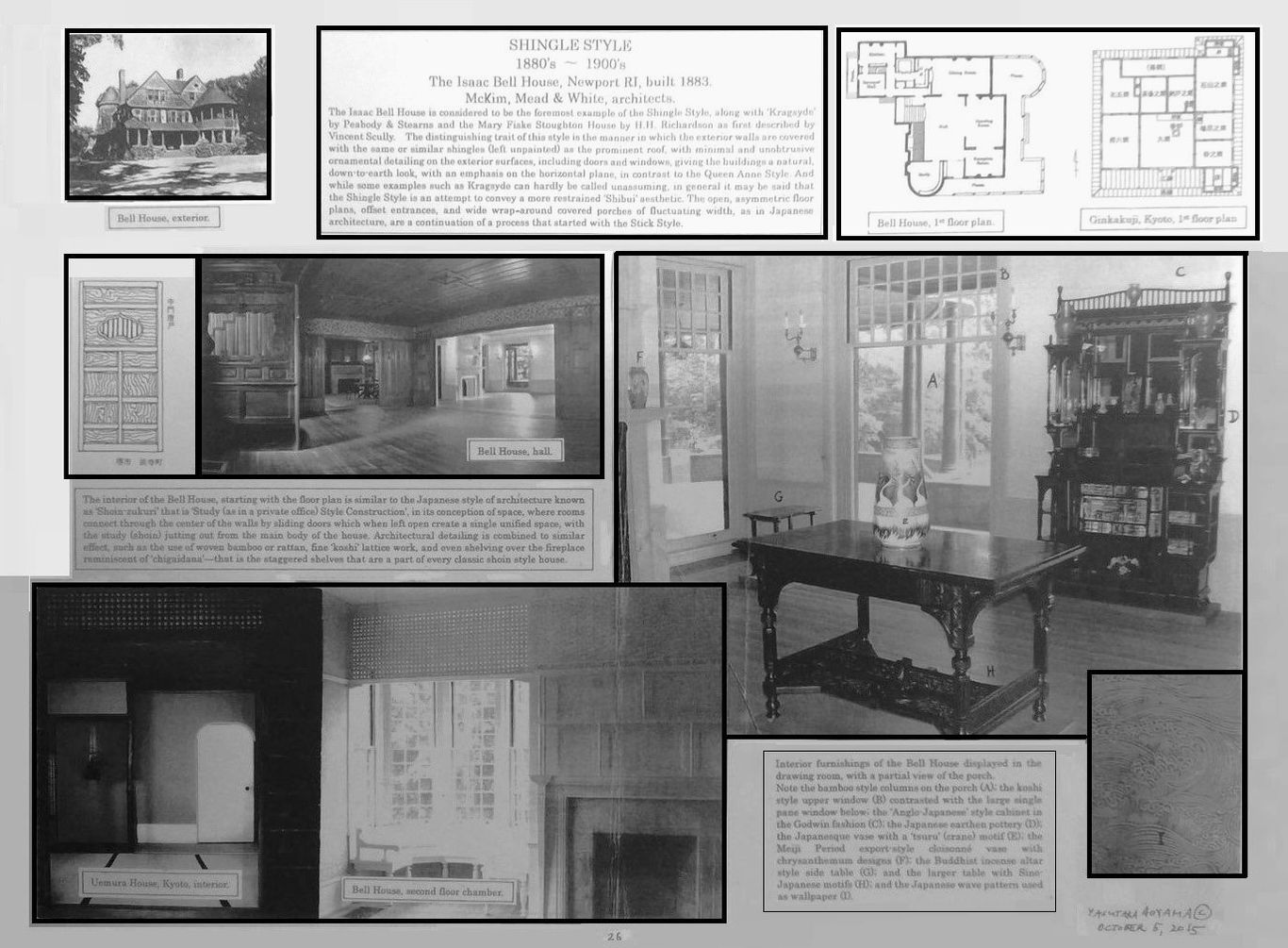
The following text added 2024.6.18:
The above are but a sampling of the Japanese influences seen in McKim, Mead and White, and various other designs could be raised as examples:
Regarding the "remarkable" Casino at Newport, Rhode Island (1879-81), Vincent Scully writes: "The differentiation in scale here between the framing members and the grilled panels between them recalls Japanese wooden architecture---with the post, the kamoi, and the ramma---and reveals McKim, Mead and White's important amalgamation of influences from that source with indigenous American framing habits. ... It combines a sense of order by no means academic with a variety of experiments in picturesque massing and spatial articulation. More over, it combines Japanese and American stick-style sensitivities with that sweep of design which is typical of the shingle style." (The Shingle Style and Stick Style, revised edition, 1971, pp. 132-133) Even the "experiments in picturesque massing and spatial articulation", as well as the "sweep of design", however, have their precedents in Japanese architecture, which perhaps Scully is not fully aware of.
As for the Victor Newcomb House at Elberon, New Jersey (1880-81), "a building which exhibits qualities more peculiar to McKim, Mead, and White at their original best", we will quote Scully at some length, for it contains some very important observations:
"The hall is paneled in vertical wood siding, with battens, up to door height, where a strip molding passes around the wall. This molding is continuous above the dorrway openings. It is a decorative and nonstructural derivation from the Japanese kamoi, the bracing beam below which the screens slide in a Japanese interior. The space between molding and celing in the Newcomb House is filled by a latticework screen, derived from the Japanese ramma; this creates a continous flow of space, partially screened, between the hall and the other rooms, as well as a constant sense of scale. The Japanese use of the continuous beam or molding with open work above had been clearly described in the American Architect in 1876... As a concession to American living McKim, Mead and White eliminate here the movable screens, but they are obviously experimenting with the continuous frame and open work to give an impression of movability and spatial continuity. ... The elegantly rectangular floor pattern, probably derived from the Japanese mat and looking much like 20th century De Stijl work, also functions to enforce scale and spatial direction. ... The architecture itself is straightforward and decisively interwoven. The ceiling overhead, emphasized by the subtly varied exposed timbers---which are crisscrossed in patterns a little like a Japanese mat system---slides visually through from room to room; the continuity of human scale is kept by the molding. The spaces do not merely open widely into each other they actually penetrate each other; and the whole space thereby expands horizontally with absolute, not relative, continuity. While the toal space thus expands, each unit of space continues to keep its own individuality through the passage of molding and screen. Consequently, space is at once integrated and articulated. This spatial concept, representing a creative assimilation of Japanese influences, appears as a basic principle in the work of Wright; indeed it has been erroneously believed that Wright was the first to achieve it in America." (1971, pp. 134-136).
Concerning the Cyrus McCormick House at Richfield Springs, New York (1881-82), which Scully rates as "their best cottage building in the early 80's" thanks to its "lightness of scale and its creative combination of gable front, porch pavilions, and structural and textural vitality" with "its interwoven basketry of skeletal elements" he says: "Here again there is much of the Japanese and much of the later Wright." And adds that rooms in the house, "are equally distinguished and use delicately scaled details partly colonial, partly Japanese, and wholly proto-Art Nouveau." (p. 137)
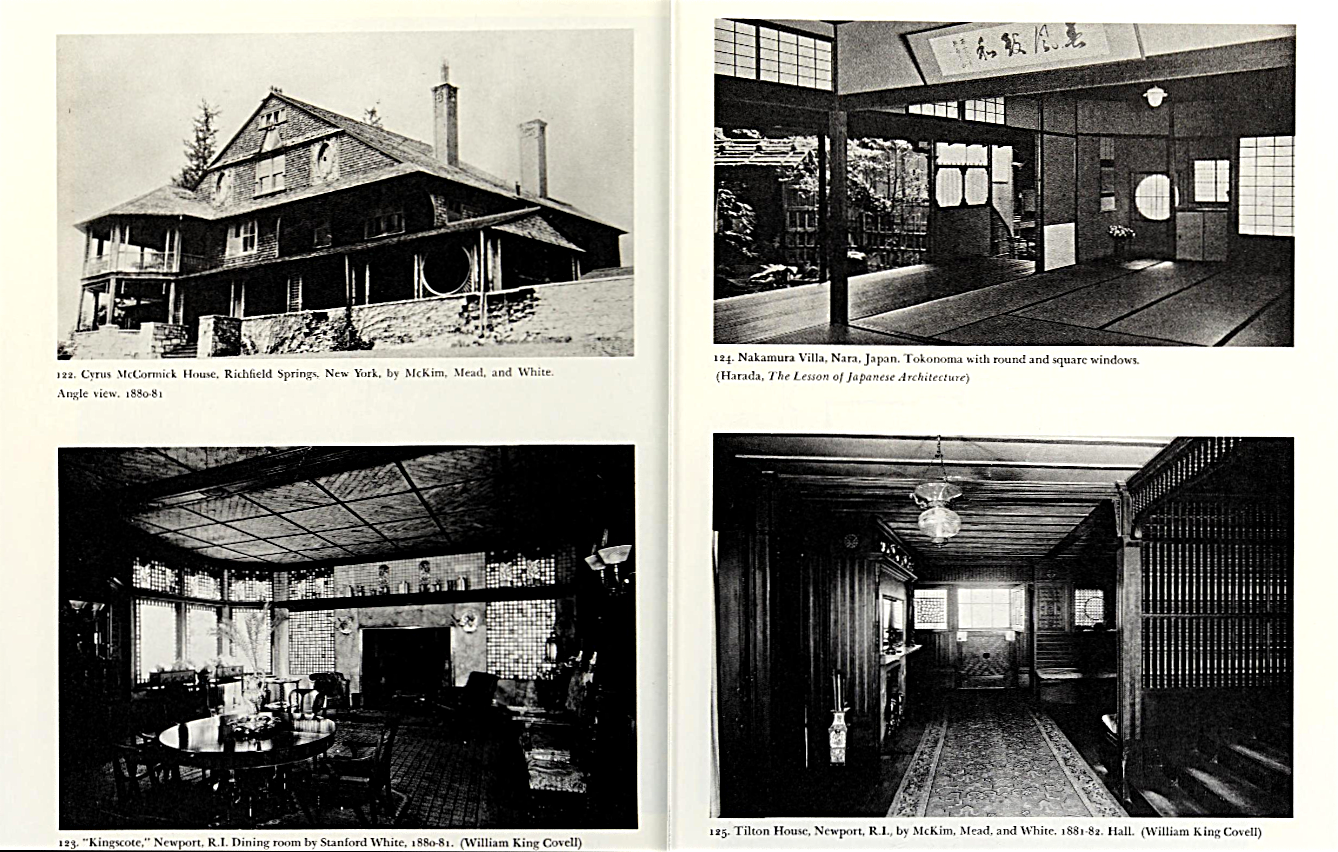
From Vincent Scully, The Shingle Style and the Stick Style, Revised Edition (1971), where he includes a photo of the Nakamura Villa of Nara for comparison with various shingle style houses.
Further Examples of the Shingle Style
and
Diversity in Japanese Regional Farmhouse Architecture
The Japanese influence upon the Shingle Style has been discussed by Vincent Scully in his classic work of the same name; we should add here that within the Japanese influenced exterior elements, not uncommonly the original interiors had rooms also of a Japan-conscious style.
Note below how the shingles of the Stroughton House resemble the overlapping, down to earth effect of the straw-like fiber walls of the Japanese farmhouse, and how the rounded house corners and staggered walls of the latter are also recreated in the former by the roundish turret and house extensions which likewise are made to blend together without sharp corners.
________________________
Queen Anne Style in America (1870's to 1890's)
The Japonisme of Unpredictable Complexity and Full-Color Ornateness
Lecture handout 2015.10.5, Architectural Juxtapositions, p.30
Yasutaka Aoyama
"The style of architecture dubbed Queen Anne was Japanesque in a different way. Here the move away from the traditional rectangular box, a standard of Western housing for centuries, was finally taken to its logical extreme. ... Think of the controlled-accident effect in the design of Japanese ceramics or the conspicuous avoidance of repetition in most Japanese arts, and you can see how the Japan idea relates to American Queen Anne architecture. It is especially apparent in the work of the architect Stanford White and the firm of Peabody and Stearns. The Opera House built in Norfolk, Connecticut, in 1883 and the Goodwin Building, a mix-use office and apartment complex built for Francis and James Goodwin in Hartford, Connecticut, in 1881... are rich in Japaneseque detail. ... The Japan craze affected the look of rural villages throughout New England through the growing popularity of new architectural forms, such as libraries, opera houses, and town halls."
William Hosley, The Japan Idea: Art and Life in Victorian America (1990, p. 105)
The Queen Anne style in the United States is often characterized as an eclectic mix of cultural styles--which it is, and the Japanese element is blended into that mix so that it often goes unrecognized. But many of the features of the style--the bold exterior coloring, the ornamental pattern details, the prominent roofs and complex intersecting rooflines, the asymmetric floor plans, the bay windows and other protrusions from the exterior wall surface--are prominent features of Japanese architecture. Of particular importance in the Queen Anne style seems to be Japanese shrine architecture, such as the Nikko Toshogu shrine-masoleum, dedicated to the Tokugawa Shogun Ieyasu, in Tochigi, Japan. Nikko was an extremely popular site for western tourists and visiting artists in the late 19th century, and many praises and depictions of it followed. It has not however, been sufficiently recognized as an inspiration for the Queen Anne style in discussions of Japonisme.
It is certainly at least possible that it did have an influence upon the Queen Anne style; there is no question that Japanese architecture in general did, as Vincent Scully, in his classic The Shingle Style and the Stick Style, wrote, regarding the formation of the Queen Anne style and the general direction of American architecture in the late 19th century: "other sources of inspiration and direction also began to be explored; Japanese architecture, for instance, had an important influence." (revised edition, Yale University Press, 1971, p. 4)
Below is an example of that influence in the work of the architect Francis Kimball.
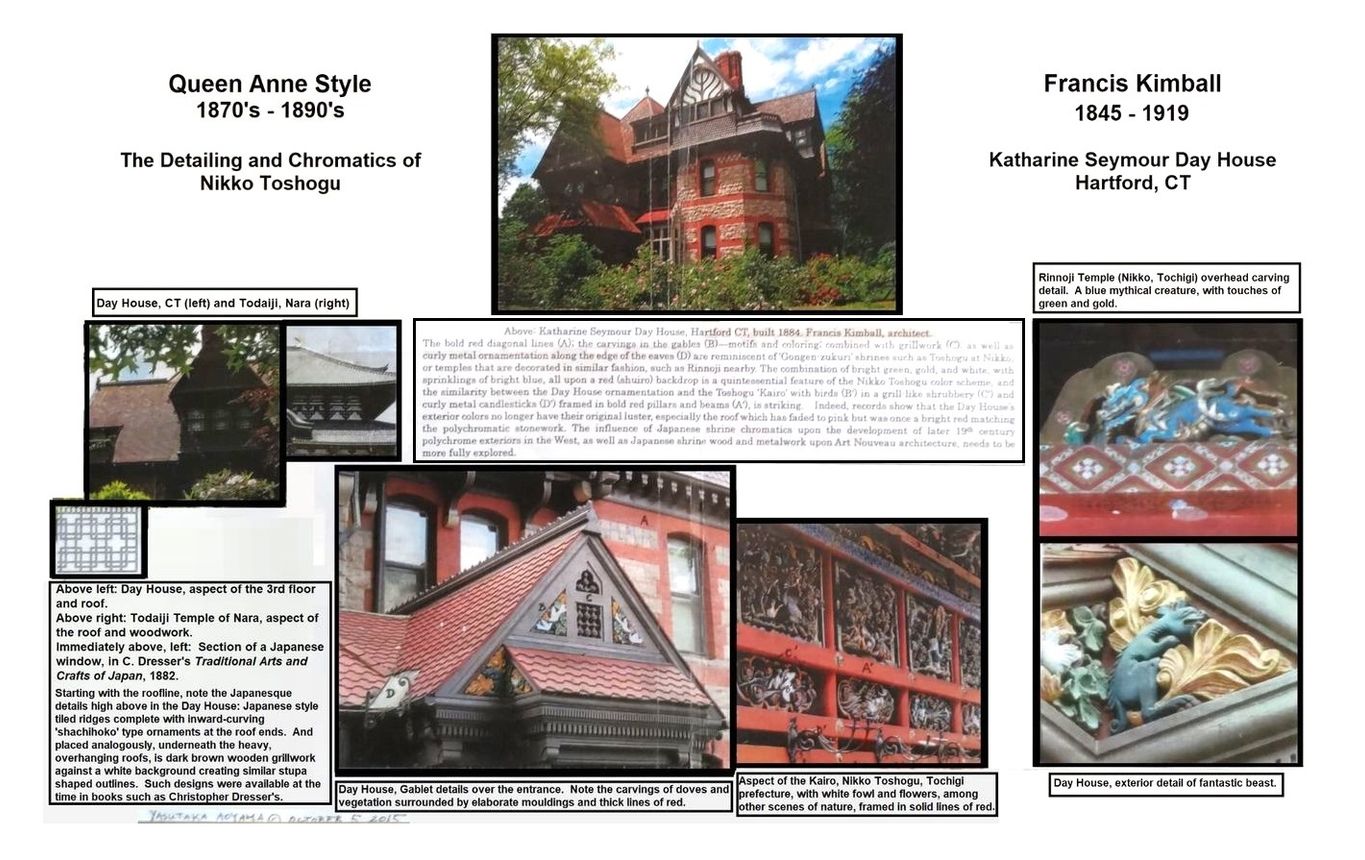
Regarding these kinds of carved or plaster moulded exteror decorations and panel work, Vincent Scully writes: "Queen Anne shingles, panel work, and open interior space were reinforced by the architectural influence of another country represented by wooden buildings at the Centennial: that is, Japan. The Japanese buildings, a 'Bazaar' and a 'Dwelling' were of frame construction with overhanging eaves, and their structural articulation in some ways recalled the American stick style. The American Architect wrote of the 'Dwelling,' 'A bird is handsomely carve in bas-relief on the wooden panel between the top of the front door and the overhanging porch.' This feature relates to Queen Anne decorative motifs, as, for example, to its carved barge boards and plaster panels." (The Shingle Style and the Stick Style, Revised Edition, 1971, p. 21)
Here we have focused upon the ornamental aspects of the Queen Anne style; we must add as a concluding note that this does not preclude other fundamental Japanese influences.
That influence extended to Queen Anne interiors, and is more apparent in contemporary writings of the 19th century. Take George Sheldon's description in his Artistic Country Seats---Types of Recent American Villa and Cottage Architecture (1886) of the Millbank House at Greenich, Connecticut, designed by architects Lamb and Rich---whose other designs, by the way, also exhibit Japanesque qualities: "The parlor, twenty by forty-four feet, is in Japanese style, in a deep-red lacquer, with a bamboo ceiling, and walls covered with Japanese embroidery. A semicircular bay-window is at one end of the room and an octagonal at the other. Standing at the mantel, which faces the entrance to the hall and is Japanese in spirit, you look across the parlor, across the hall, across the library, and across the dining-room, out of the latter's bay-window, and on to the lawn---an unusually extensive view." (p. 65)
This leads us to an even more critical point: the influence of the Japanese free and flexible floor plan. As Scully comments on this topic, "More importantly, of Japanese interior spatial organization, the Architect stated: 'Thus at any moment any partition can be taken down, and two or more rooms, or the whole house, be thrown into one large apartment, broken only by the posts which marked the corners of the rooms. Doors and windows, as we use them, there are none.' Consequently, Queen Anne materials and general spatial direction received, by 1876, the support of influences from similar aspects of Japanese domestic architecture. These had already been allied, through comparable---though in Japanese hands more sensitive and integral---handling of the wooden frame, to the American stick style itself." (1971, p. 22)
________________________
Louis Sullivan (1856-1924)
Selected Aspects of his Japonisme:
Perhaps more Japanese than Islamic in Style
Lecture handout 2015.10.12, Architectural Juxtapositions, p. 28
Yasutaka Aoyama
There are definitely Islamic decorative elements in Louis Sullivan's designs, such as his National Farmers Bank (Owatonna, MI) interior, or his Garrick Theater (Chicago, IL) or his Prudential Building (Buffalo, NY) exteriors, among other works, as pointed out by biographers and architectural historians in terms of geometry, color, motif, and level of intricacy. But a key characteristic of most Islamic art, even floral art, is symmetry and a sense of perfect balance. However there are less tame and more wildly asymmetric lines in Sullivan's designs, and also a great amount of near full sculptural relief, that is alien to the Islamic tradition and much closer in spirit to the type of ornate Shinto religious architecture (with carvings by master sculptors such as Ishikawa Uncho), that was to be found flourishing in every region of Japan from the 18th century onward.
Therefore, given his blend of Islamic and Japanese aesthetic qualities, his ornamental style, might be described as 'Islamo-Japanese', though leaning more heavily toward the Japanese in form and spirit. That Sullivan was interested in Japanese design is testified by the fact that he had several books on Japan and Japanese art, and that furthermore, he occasionally asked Frank Lloyd Wright, who worked for him, to bid at auctions on his behalf for Japanese art objects (Sullivan bio by Yamabana Nami, in Katagami Style, 2012, edited by Mitsubishi Ichigokan Museum et. al., supervised by Mabuchi A, et. al.)
A few further comparisons between Sullivan's designs and those of Japan (and China) follow the lecture handout immediately below.
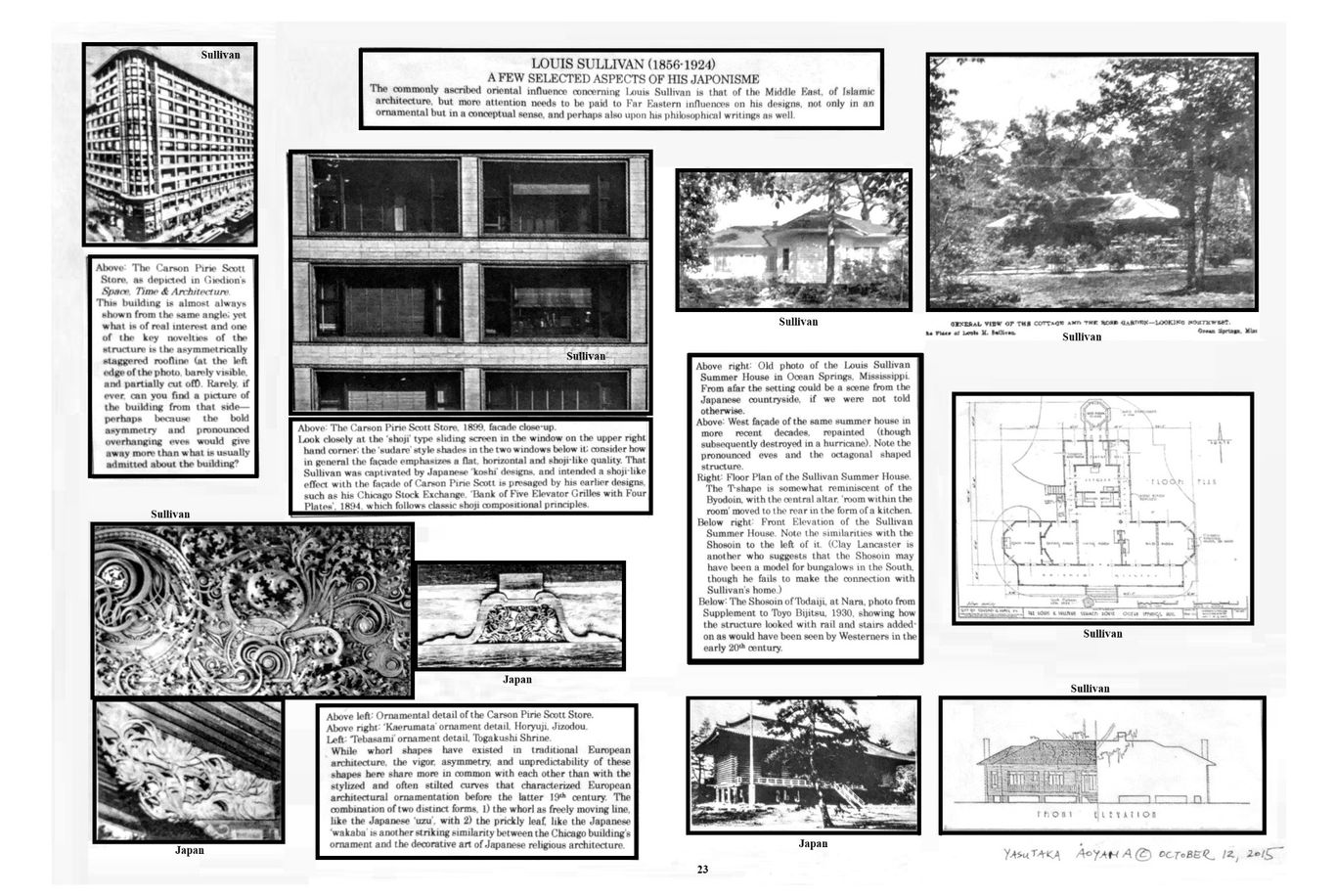
Below: Japanese shrine and festival wagon carvings compared with exterior detail of Sullivan Center, Chicago (center)
Below left: Louis Sullivan sketch 16 of 'Impromptu' (1922). Right: Japanese eave carvings (19th century)
Below left: Louis Sullivan sketch 14 from 'Impromptu'. Right: Chinese style ivory carving, Japanese private collection, 19th or 20th century. Done in a style well developed by the mid 19th century, these intricate balls are known as a form of Chinese craftsmanship, but numerous pieces of the most elaborate kind are held in Japanese collections. Those at the National Palace Museum of Taiwan are the best known.
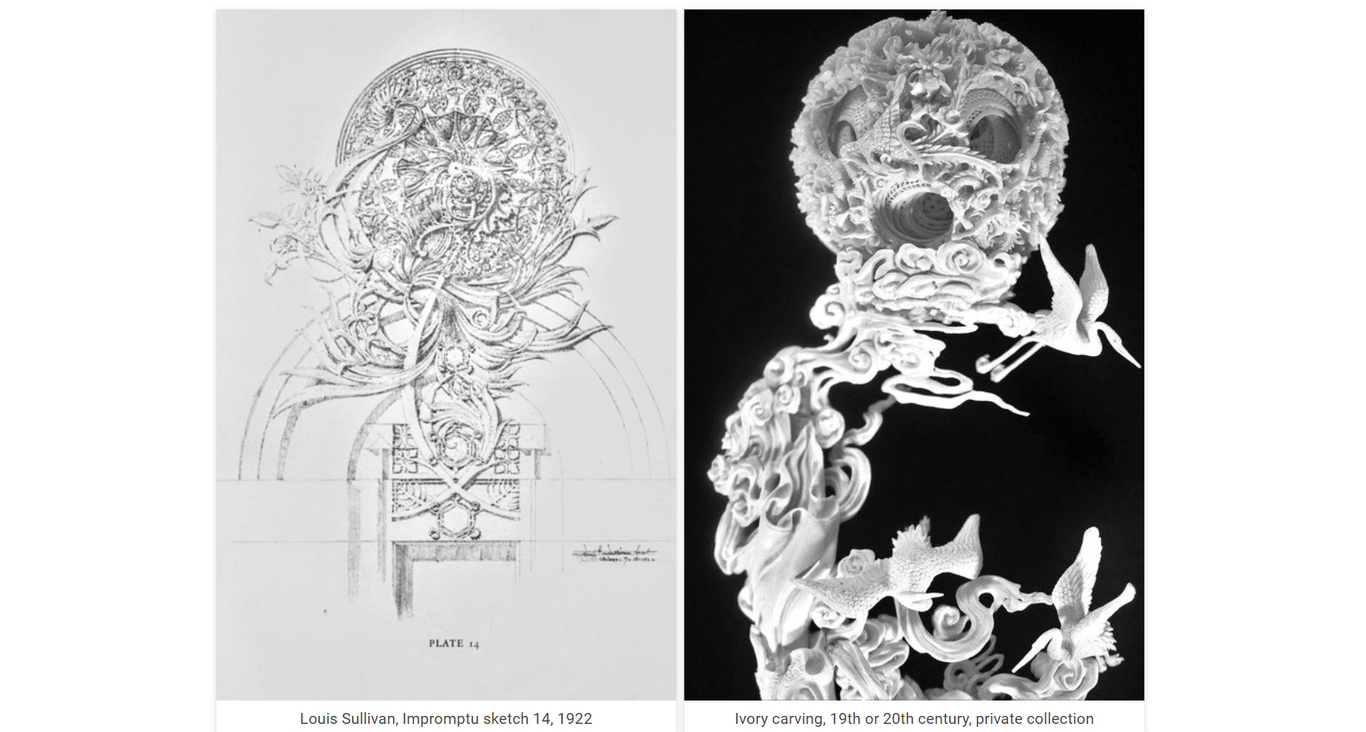
________________________
Arthur Heygate Mackmurdo (1851-1942)
Japonisme in a Pioneer of Art Nouveau
Architectural Juxtapositions, p. 29
Yasutaka Aoyama
Arthur Mackmurdo's early designs such as his cover for Wren City Churches or Hobby Horse are considered precursors to the 'Art Nouveau' style. His characteristic thick wavy lines are of a type very much characteristic of ukiyo-e use of line found in woodblock prints. In Japan, from the earliest of times, reaching back to Jomon prehistory and carried on into the Edo period up to the 19th century, the bold and unpredictably curving line, whether representing water, fire, tree branch, wood grain or smoke has been a favorite theme for artists, cherished for its qualities of 'iki (stylish verve) and 'ikioi' (lively momentum).
Robert Schmutzler, one of the foremost historians of Art Nouveau, writes of the web of relationships that existed among artists involved with that movement, and the thread of Japanese design that was woven into it:
“Just as between Whistler and Rossetti, there also existed a relationship between Mackmurdo and Whistler and the Japanese style, and another one between Mackmurdo and Morris and the Pre-Raphaelites.” ---Schmutzler, Art Nouveau, 1977 abridged edition, p. 40.
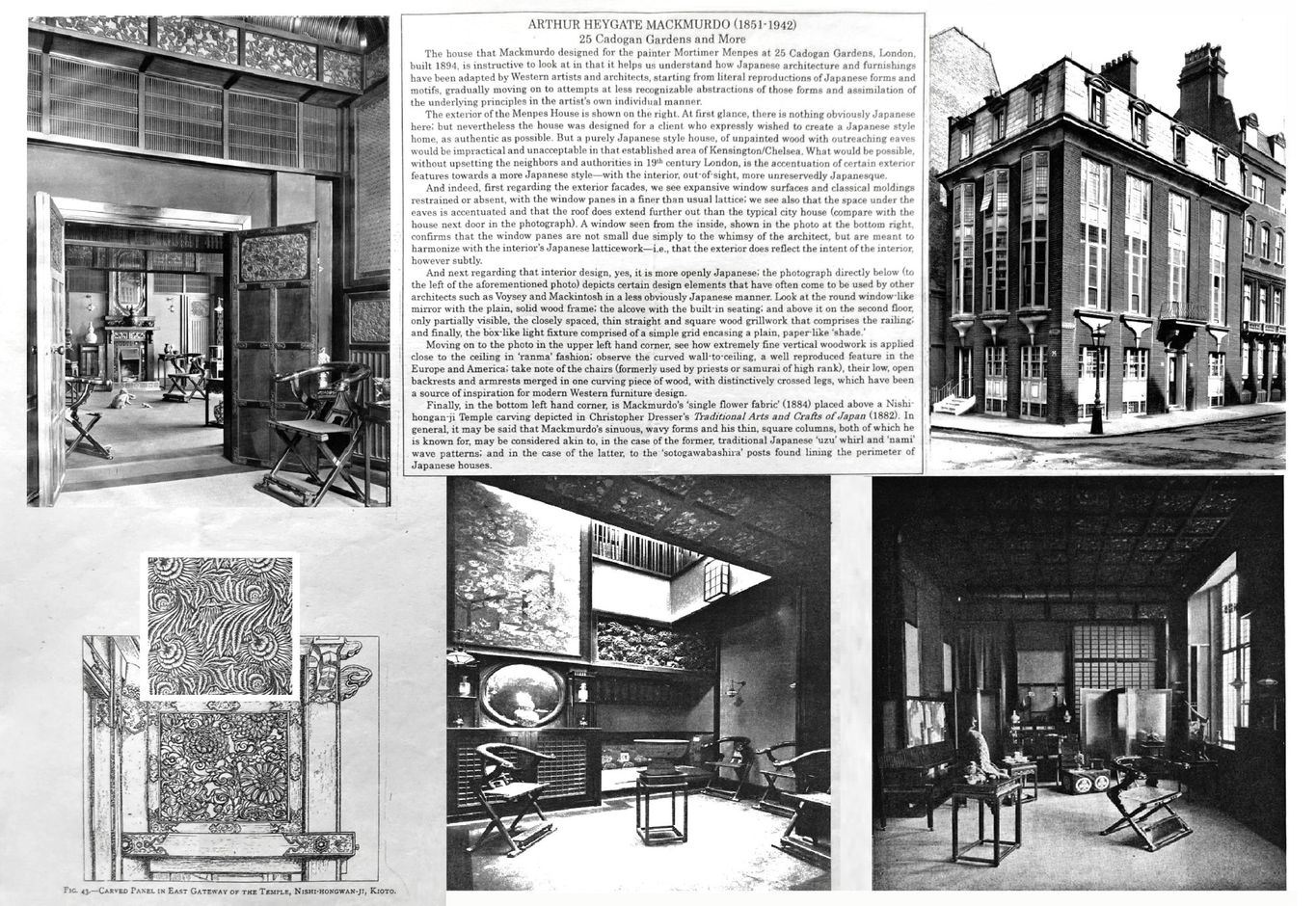
.
Below left, a Japanesque folding screen by Mackmurdo, 1884, and right, another image of the Mackmurdo designed Mempes house. Scanned images by George P. Landow, at victorianweb.org and The Royal Borough of Kensington and Chelsea, at rbkclocalstudies.wordpress.com.
Below, 1st row: Mackmurdo's cover for the book Wrens City Churches with waving vegetation filling the picture from end to end (left), and a tryptych center panel of Mackmurdo's depicting wavy flames (right).
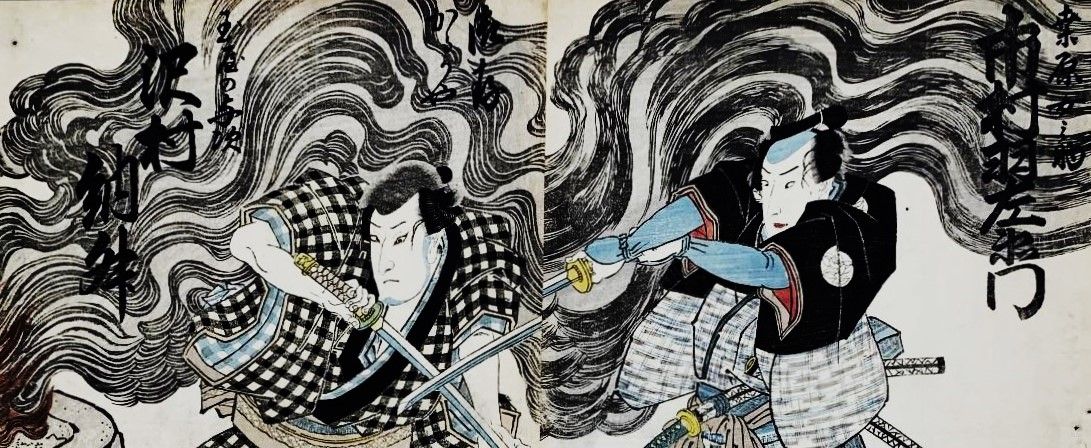
An Utagawa Kuniyoshi woodblock print of kabuki actors. The dynamic waves of billowing smoke are the real interest of the print, rather than the actors in front, which rise up and transform into Mackmurdo's wavy lines. This print is but one example of the Japanese genre depicting a variety of forceful waves and lively curves.
________________________
Hector Guimard (1867-1942)
Émile André (1871-1933)
Followed by brief comments on Henri Sauvage (1873- 1932),
Lucien Weissenberger (1860-1929), and Paul Charbonnier (1865-1953)
Art Noveau as Japonisme in Paris and Nancy
Lecture handout 2015, Architectural Juxtapositions, p. 31, comments added 2023 August
Yasutaka Aoyama
Hector Guimard is well-known for his Paris metro entrances, of which the Metropolitan Station, Porte Dauphine, built in 1900 (shown top right) and the Metropolitan Station Place de la Bastille, built in the same year (center top) are fine examples of his work showing clear indications of Japanese influence.
His use of case iron was masterful, and "...it was in this field that Guimard was to realise his most startling imaginative work---the natural world suggested fantastic forms of animals or human masks, akin to those of Japanese art, of a disquieting strangeness..." (Frank Russell, ed. Art Nouveau Architecture, 1979, p. 114).
And regarding one of Guimard’s celebrated architectural designs, the Castel Béranger, Robert Schmutzler, perhaps the foremost authority on Art Nouveau, writes that it was clearly Japanese art that was the driving force behind it:
“The most remarkable detail of the Castel Béranger consists in the surprisingly freely conceived asymmetrical ironwork of the main entrance, where Rococo blends with flamboyant Gothic. However, the decisive force, the stimulus that sets everything in motion, again springs from the flowing lines of the curves of Japanese woodcuts in particular and Japanese surface ornamentation in general. In the application of the characteristic features of these smooth and gliding lines, Guimard outshines even Horta, whose furniture basically appears knotted and cramped as if riveted together.” (Schmutzler, Art Nouveau, 1977 abridged edition, p. 100)
The Place de la Bastille station's 'karahafu' style shaped entrance, with its roof extending from a closely layered, multilevel roof, and the flat band of windows whose lines are integrated into the clearly demarcated rectangular sections of the wall, are reminiscent of Japanese temples (though the design seems to incorporate aspects of Nepalese religious architecture as well). Guimard was interested in a variety of Japanese art forms, which he transformed from paper or wood into metal and glass, thus incorporated them into his designs, as can be seen with the metal frame encasing a Japanese ukiyo-e print (top left), and the 'uchiwa' fan style roof, made of metal and glass jutting out over the Porte Dauphine station entrance (top right).
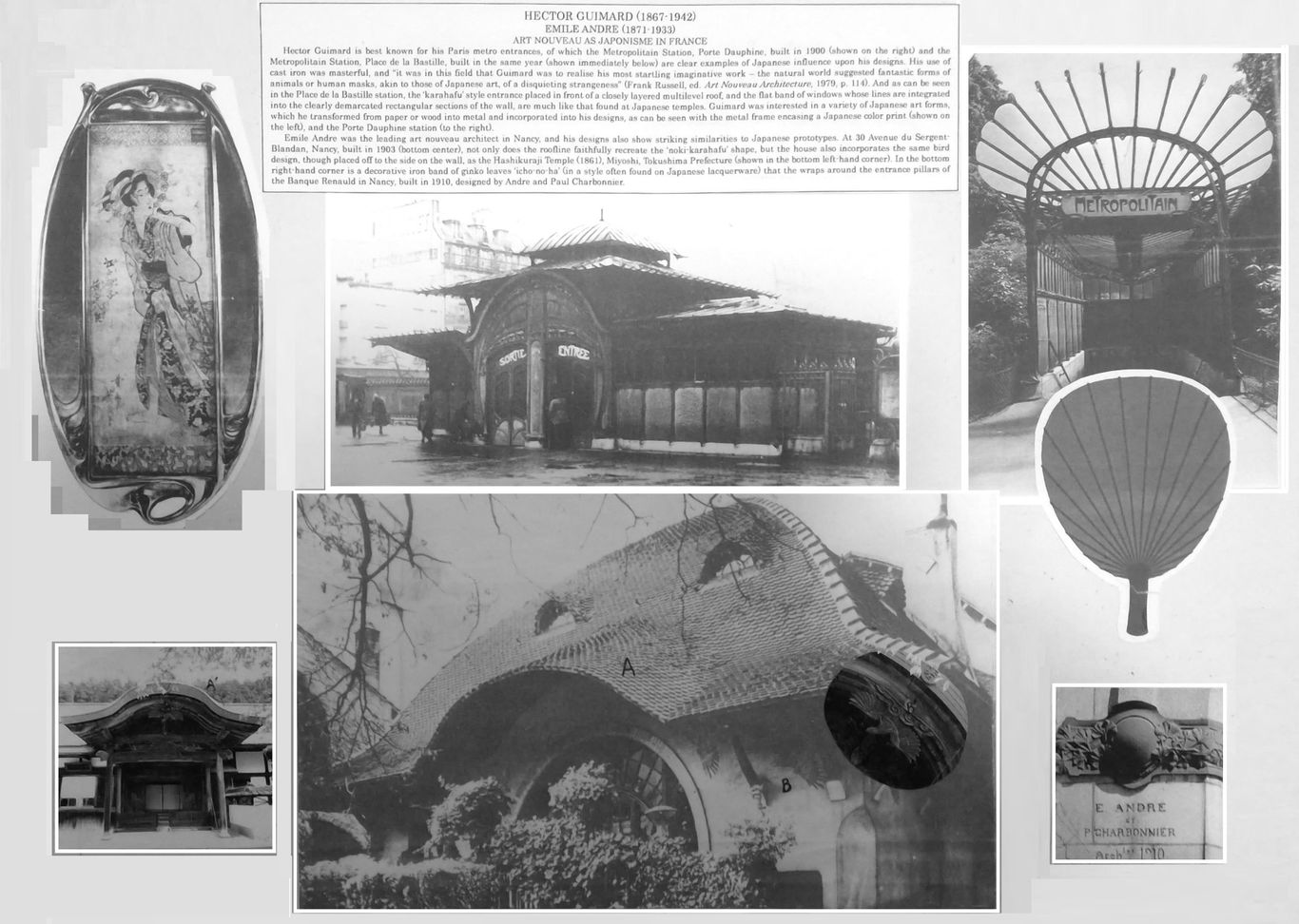
Below: Close up of Hashikuraji Temple in Tokushima prefecture with a typical carved bird with wide spread wings under a karahafu entrance (left) and the Emile Andre designed house in Nancy with an extremely similar painted bird under a karahafu style arched entrance roof (middle), with a close up of Andre's bird design with the Japanese example inset (right). Unfortunately, Andre's lovely japoniste bird design has disappeared--white washed--simply painted over. As in so many cases of famous works of architecture, traces of Japanese influence are eradicated by later generations, less cosmopolitan.
Nancy as a Center of Japonisme
(The following text and illustrations added August 2023)
It seems Nancy was a particularly active center of japonisme, especially among the architectural community there. The famous Henri Sauvage (1873-1932), also an architect at Nancy during this time, reveals an underlying Eastern inspiration in various aspects of his design for Villa Majorelle (1902). His prominent and multiform gables, and the loggia on the west facade for instance, suggest Japanese influences that had already been at work in the Stick Style in America decades earlier (see the following section on the Stick Style).
Japanese forms can also be seen in Lucien Weissenberger (1860-1929), who collaborated with Sauvage on the Villa Majorelle, and designed a detached stone garden kiosk-like structure, which is topped with what distinctly looks like a Japanese-type parasol.
In the case of Paul Charbonnier, while his architectural designs show less prominent indications of Japanese influence, his other artwork, such as the poster below, is clearly in the japonisme style, following the example of Hokusai's famous print.
Paul Charbonnier's 'Salon des Cent, Exposition d'ensemble' (1895) Hokusai's 'Hodogaya on the Tokaido Road' (1832).
The following added 2024.9.15
That there was in Nancy a general and keen interest in Japanese art among those involved with design is suggested by the activity of those in other fields besides, but related to, architecture and interior design. As Robert Schmutzler writes:
“It was not in Paris but in Nancy that French Art Nouveau achieved its greatest independence, reaching the highest quality in the glassware of Emile Galle (1846-1904)). … In the South Kensington Museum [London], he was fascinated most of all by Japanese glassware displayed there after the World Exposition of 1862. Chinese and Japanese glassware, above all the coloring techniques used in and complicated method of production and inspired his artistic style. In Nancy (where he settled in 1874 and founded his own glassworks) Gallé later became acquainted with a Japanese student, who had come there in 1885 to study botany. …
... It is difficult to establish a chronology of the productions of his own workshop, so that we cannot distinguish with any certainty when his Art Nouveau period started and when he actually arrived at High Art Nouveau. But a Far Eastern touch can always more or less be felt and must certainly have already been noticeable in the works he sent in 1889 to the World Exposition in Paris. E. de Vogue writes about Gallé in his Remarques sur l’Exposition de 1889, 'Let us praise the whims of fate for having allowed a Japanese to be born in Nancy.' " (Art Nouveau, 1977 abridged edition, p. 97)
---Reflecting, by the way, not only the strong influence of Japan upon Gallé, but also just how much good design was associated with Japan by the aesthetically inclined readership in France at the time.
Unfortunately, as in many such cases, we are not given the name of the Japanese student who seems to have been instrumental in Gallé’s endeavors. Schmutzler writes also of Gallé‘s collaboration with Prouvé in Nancy, creating furniture pieces of elaborate marquetry; these too show aspects of Japanese marquetry and lacquerware design which Schmutzler seems unaware of, which he attributes solely to a Rococo resurgence. That aside, it seems clear that the example of Japan loomed large in the hearts of those at the forefront of design innovation in Nancy, in architecture, and the crafts which furnished it.
________________________
Stick Style, Part I
Incorporating Japanese Jinja (Shrine) Woodwork in American Style
Lecture handout 2015.10.5, Architectural Juxtapositions, p. 32
Yasutaka Aoyama

"The Japanese pavilion in Philadelphia (at the 1876 Centennial Exposition) helped to stimulate a popular craze for things Japanese... At a deeper level its influence soon appeared in the American house in a predilection for the open plan, latticework, extended eaves, a craftsmanlike assembly of parts, and the integration of the building with its landscaped setting ... "
Frederick Koeper, American Architecture, Vol. 2: 1860 to 1976, MIT Press, 1983.
"Japanese influence in Victorian American architecture is demonstrated in the content of specific styles and in subordinate ornament, both inside and out. Most of all it was communicated through moveable furnishings and wall and window treatments, without which the architecture appears barren and confusing. One of the most intriguing arguments in favor of Japanese influence in American architecture is Scully's stick style, the most radical, modern, and explicitly American of the reform styles."
William Hosley, The Japan Idea: Art and LIfe in Victorian America, Wadsworth Atheneum, 1990.
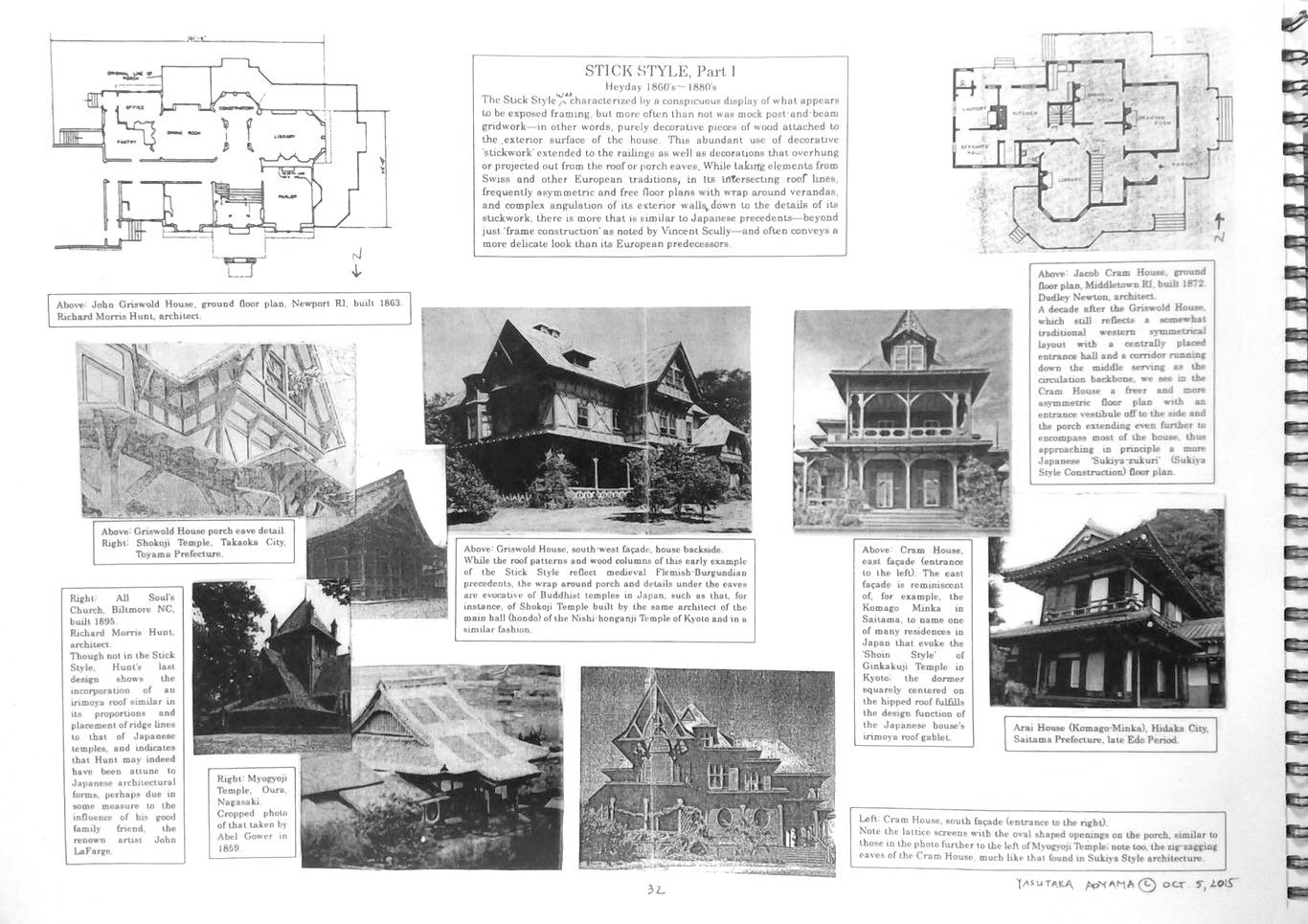
Uploaded 2024.6.19
Japanese Motifs in Stick Style Ornament
The following photos of stick style ornament are from Ben Karp's Wood Motifs in American Domestic Architecture (1966), of exteriors dating from 1850-1900, from primarily the east coast of the United States, centered on New York State, though examples can be found across the United States. As Vincent Scully, one of the foremost authorities on the Stick Style wrote, ''the builders of the stick style broke with the grand styles of the past and absorbed influences from the comparable wooden styles of Switzerland and Japan.'' (The Shingle Style and the Stick Style, Revised Edition, 1971, p. 3)
True, Switzerland was a factor; but a look at the fine details of the more distinctive design characteristics of American stickwork points to the influence of Japan. Just as Japanese ukiyo-e awakened English artists and artisans to find comparable inspirational sources in gothic traditions closer to home but nevertheless mirroring Japanese designs and taste, so too, did American architects claim precedents in Swiss architecture, while in fact often incorporating specific patterns and decorative conceptions from Japan.
Text be added and individual photos to be captioned.
The Uzu and Wakaba Motif in the Stick Style
Examples of the Uzu Wakaba Motif in Japanese Shrine Eaves and Archways
Juxtapositions of the Stick Style and the Japanese Uzu Wakaba Motif
Stick Style Ranma-type Woodwork
Stick Style and Japanese Gegyo-type Gable Ornaments
Stick Style Design Elements from Japanese Temple/Palace Doorways to Eaves
The stick style reproduced various Japanese architectural forms freely on its exteriors; even gates and doors might be replicated on the facade of a building as in the example below left. The Daitokuji Temple karahafu-roofed mon (gate) is shown to the right for comparison. Sometimes there is a chrysanthemum emblem in the center panel of the temple gate doors, corresponding to the roundrel on the stick style facade, though not on the Daitokuji gate doors shown here. Nevertheless, the similarity is still quite apparent. The stick style facade includes other details of mon doors, such as the 'I' bar bracing boards situated between the three panels on each side.
Stick Style, Part II
Incorporating Japanese Style Symmetry and Asymmetry into American Design
Lecture handout 2015.10.5, Architectural Juxtapositions, p. 33
Asymmetry is a common but not a necessary condition of the Stick Style, no more so than in Japanese architecture, where some of the most renown shrines and temples exhibit a marvelously proportioned symmetry, not only of elevation and plan, but multiplanar in its complex woodwork. In fact Japanese influence can be found in the Stick Style's use of both symmetry and asymmetry. In its symmetry it often follows that of various Japanese shrines, and in its asymmetry that of the 'Sukiya Style' which evolved from tea houses; though we frequently find a very eclectic mix of architectural principles, Japanese and otherwise in Stick Style designs.
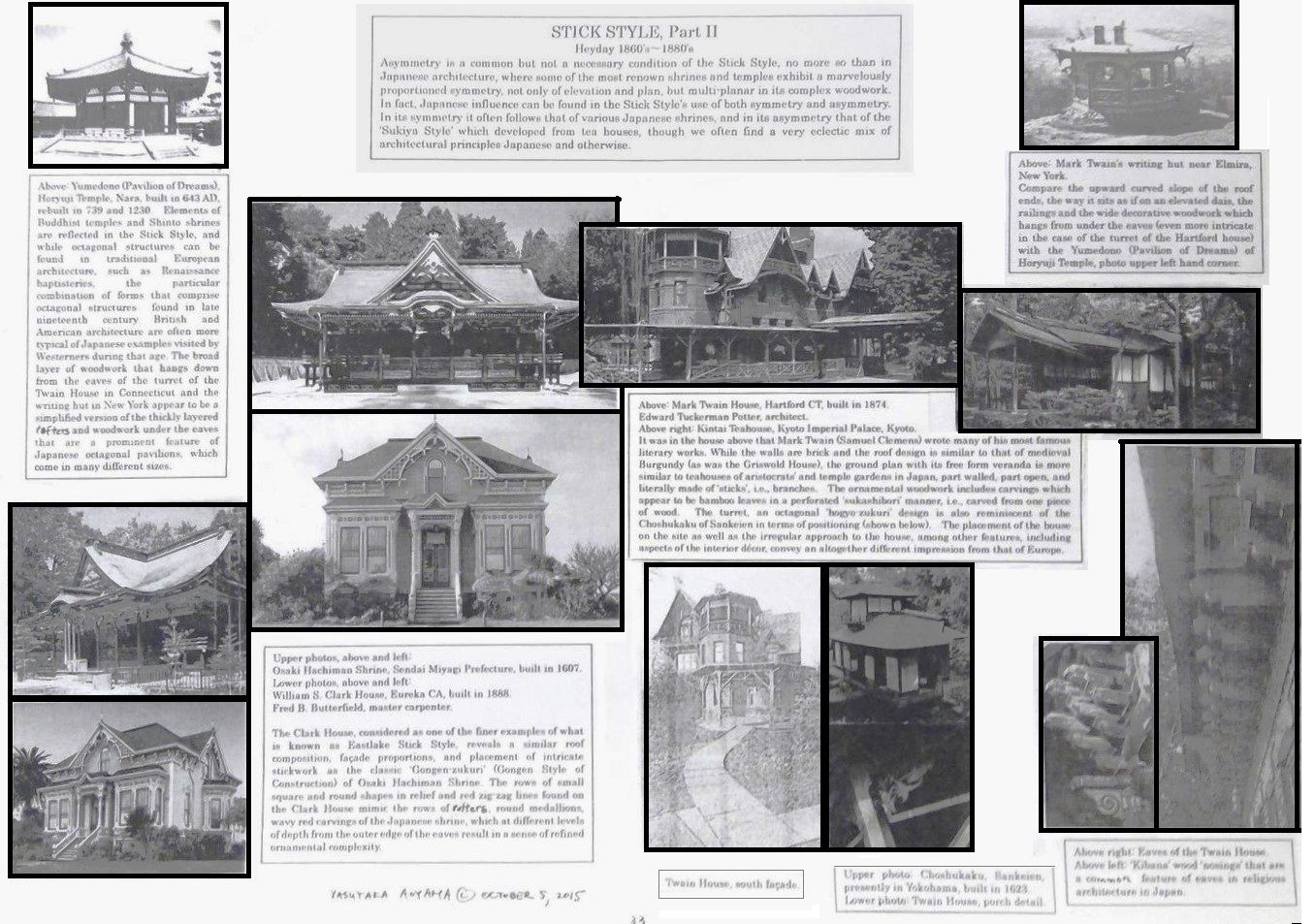
Sections on Mark Twain from Stick Style, Part II
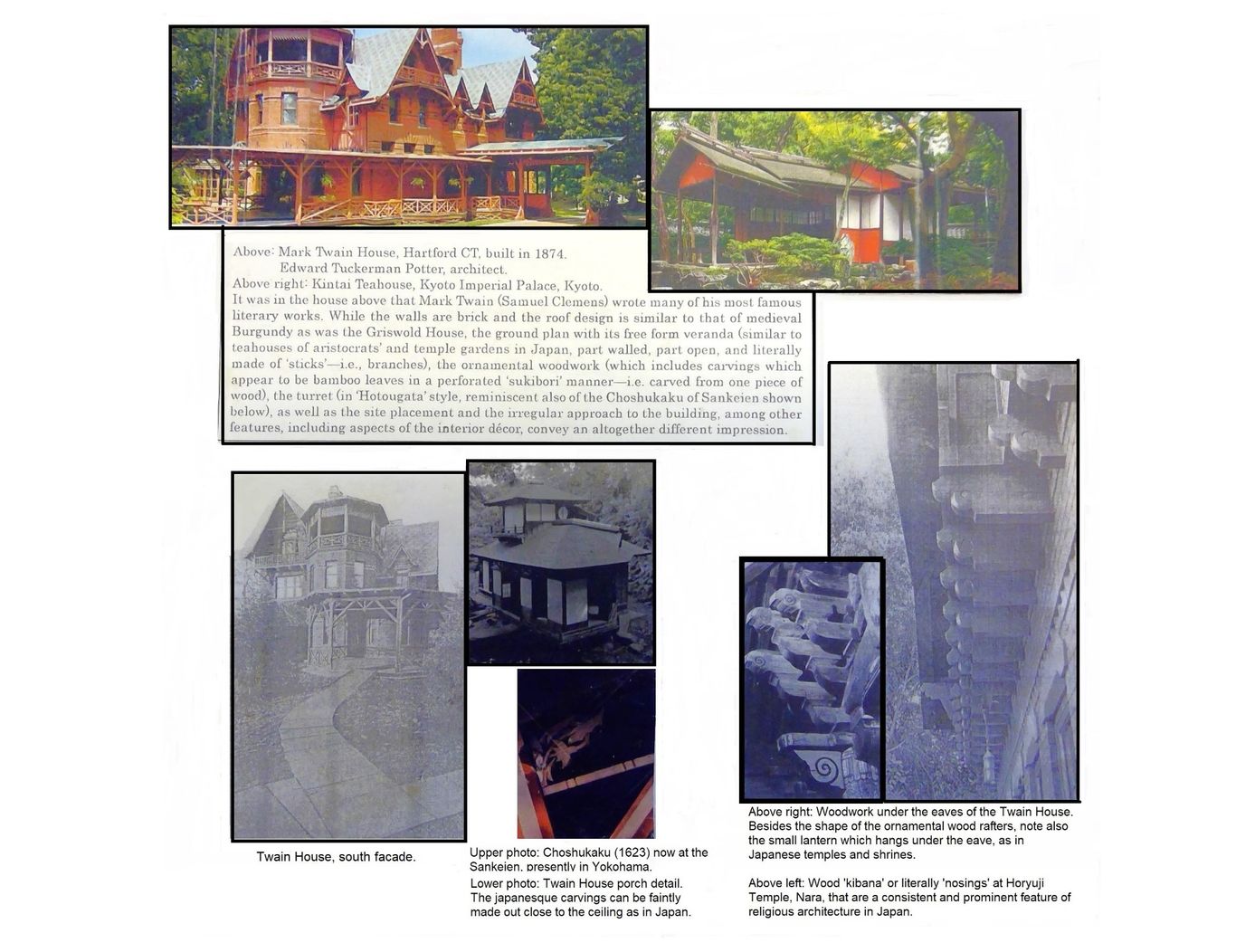
Twain House Eave Details

Low sloped, extended eaves with taruki-like boards, ranma-like woodwork on wide open engawa or tsukimi type porches.
Katagami Patterns and Traditional Japanese Motifs throughout the Twain House
Restoration of the original wallpaper clearly shows the Japanesque influence in the decorative approach at the Twain House.
Japonaiserie objects scattered throughout the Twain House
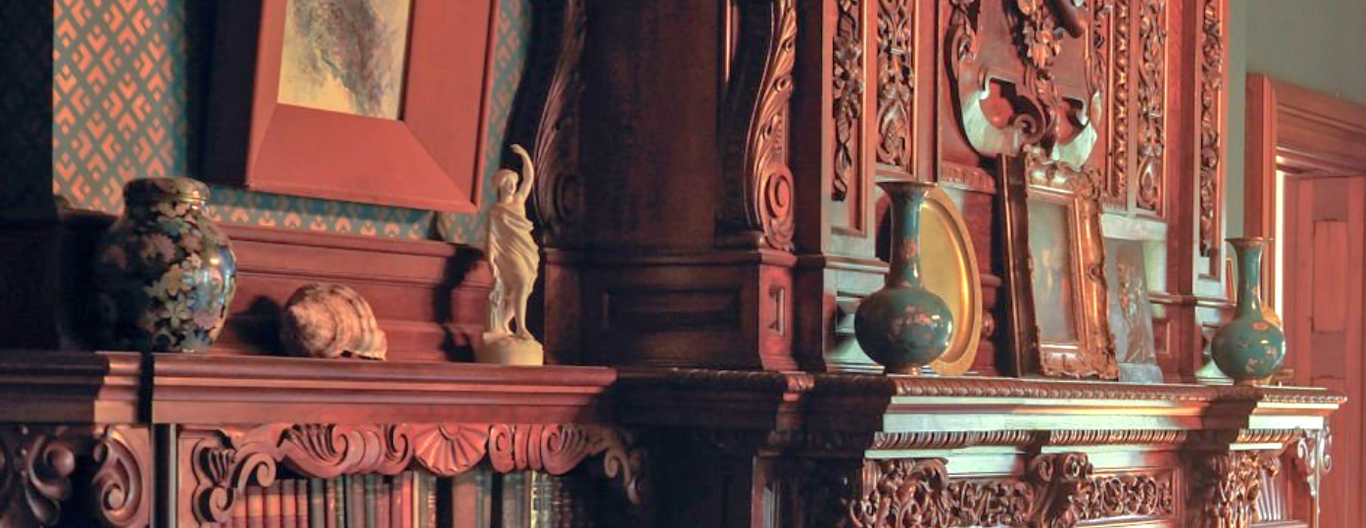
Typical mid-19th century style Japanese cloisonné and wallpaper designs as well as Japanese temple-reminiscent carvings of the fireplace mantle, blend with classical figures, paintings and books.
Japonaiserie in the Indoor Garden/Greenhouse of the Twain House
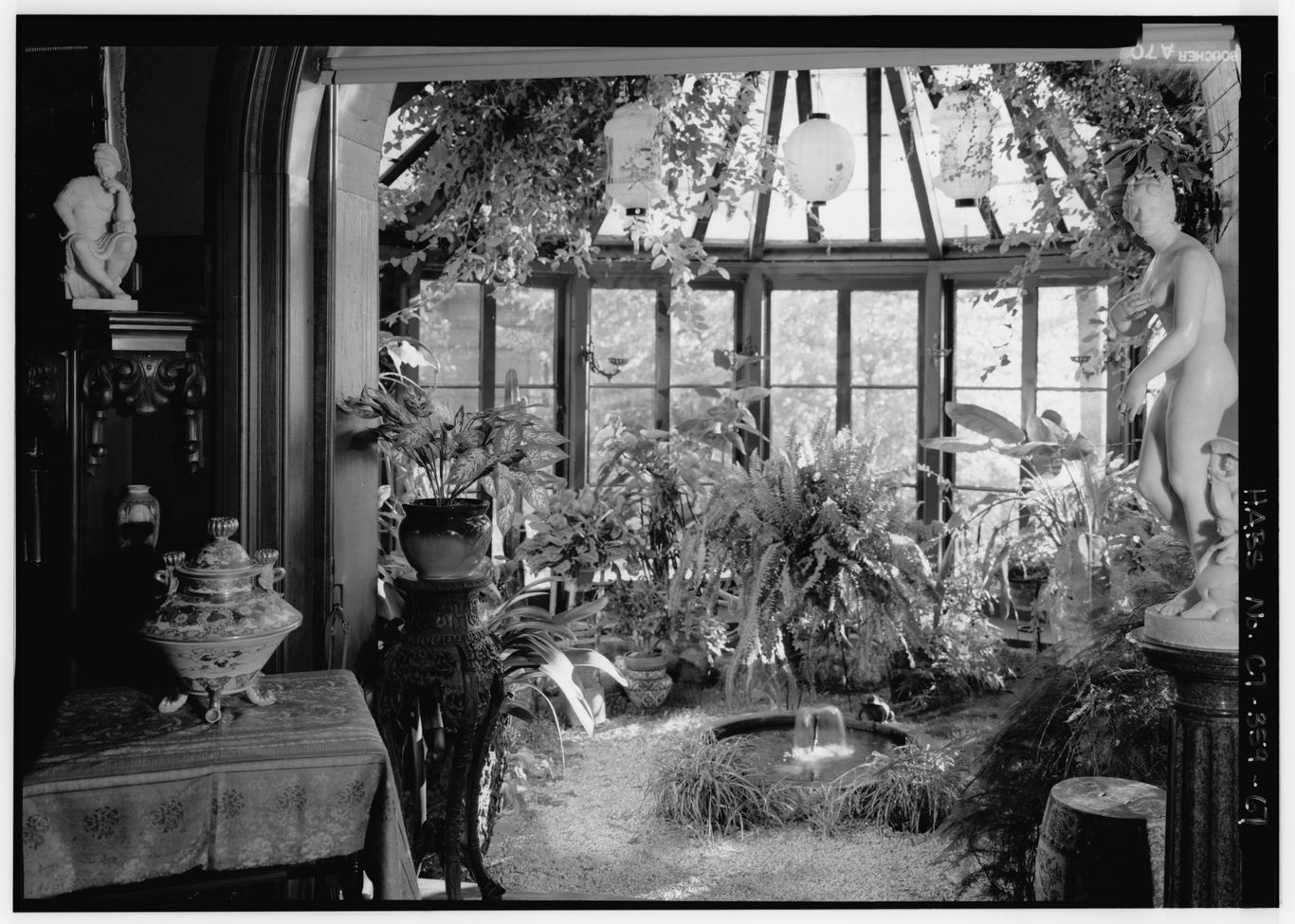
Note in this old photo how numerous oriental objects some Japanese and others possibly Chinese, were nonchalantly placed here and there in a very eclectic style: Japanese chochin lanterns above, and a frog on the rim of the indoor pond below, porcelains in cabinets and on a Chinese style displaying stand, mixed with classical Greco-Roman style sculptures. Among the indoor plants, it looks as if there are some of Japanese origin, such as the morning glory (朝顔)and aspidistra (ハラン). Alongside the japonisme of Japanese visual and plastic arts, was a well-documented interest and importation of Japanese plant varieties and gardening ideas, including philosophical / poetic concepts associated with them. See for instance, Hashimoto Yorimitsu, 'Asagao wo meguru eigoken no japonisumu---gadeningu kara zen made' [The japonisme of the morning glory in anglophone countries---from gardening to Zen] in The Japonisme Association edited Japonisme Reconsidered: The Other and the Self in Representations of Japanese Culture, Tokyo: Shibunkaku Publishing, 2022.
This caption uploaded 2024/3/17.
The Yumedono of Horyuji Temple, Nara, and Twain's writing hut in Elmira, New York
The top and middle (postcard) photos on the right show the hut in its original location on Quarry Farm in Elmira, New York, with splendid views of the surrounding countryside. The last photo shows it in its present location on the campus of Elmira College in Elmira, New York.
________________________
Henry Hobson Richardson (1838-1886)
Part I: Beyond those Thick Romanesque Walls
Lecture handout 2015.11.5, Architectural Juxtapositions, p. 34
Yasutaka Aoyama
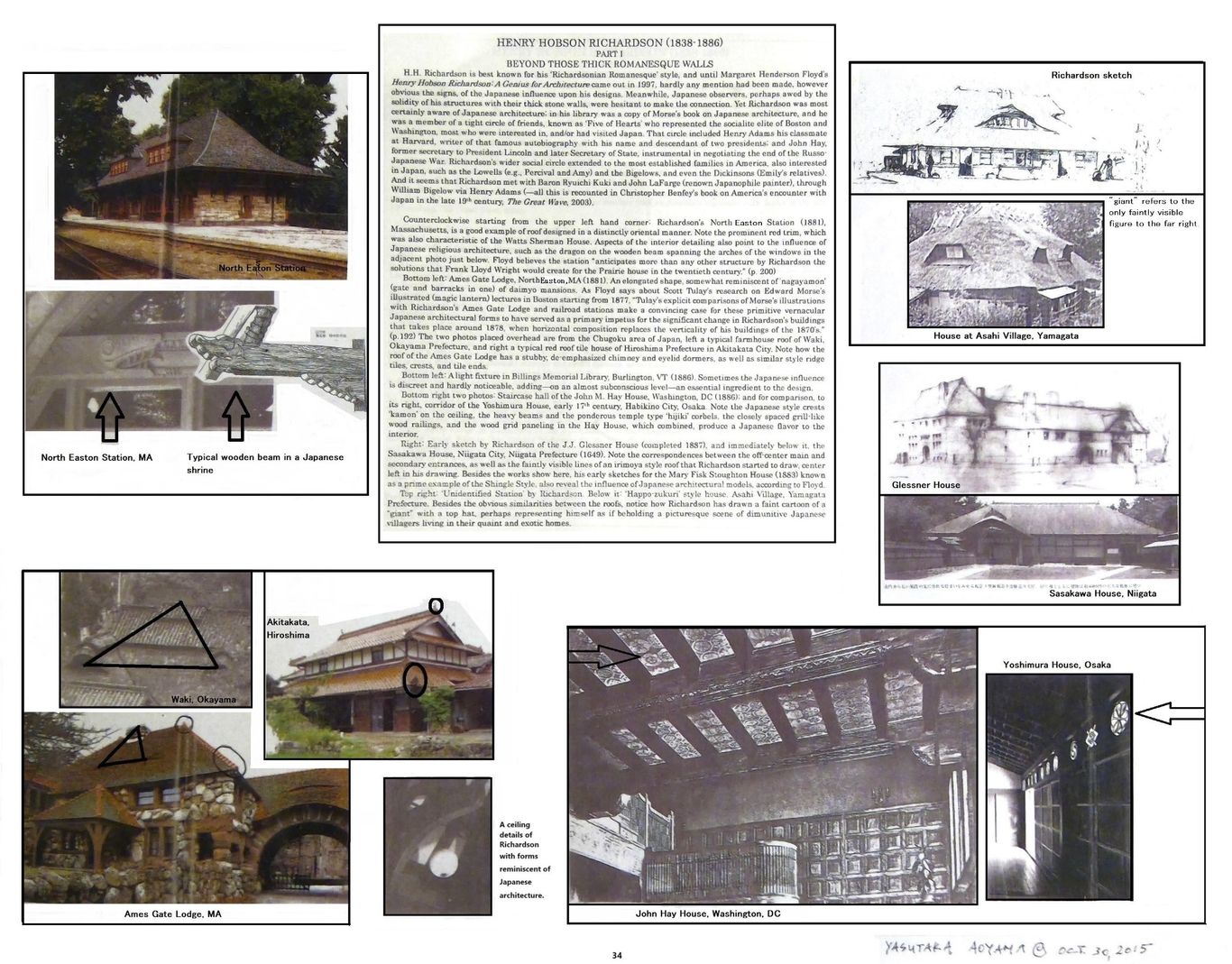
Henry Hobson Richardson, Part II
The Robert Treat Paine House, 'Stonehurst' (Waltham, MA)
Lecture handout 2015.11.5, Architectural Juxtapositions, p. 35
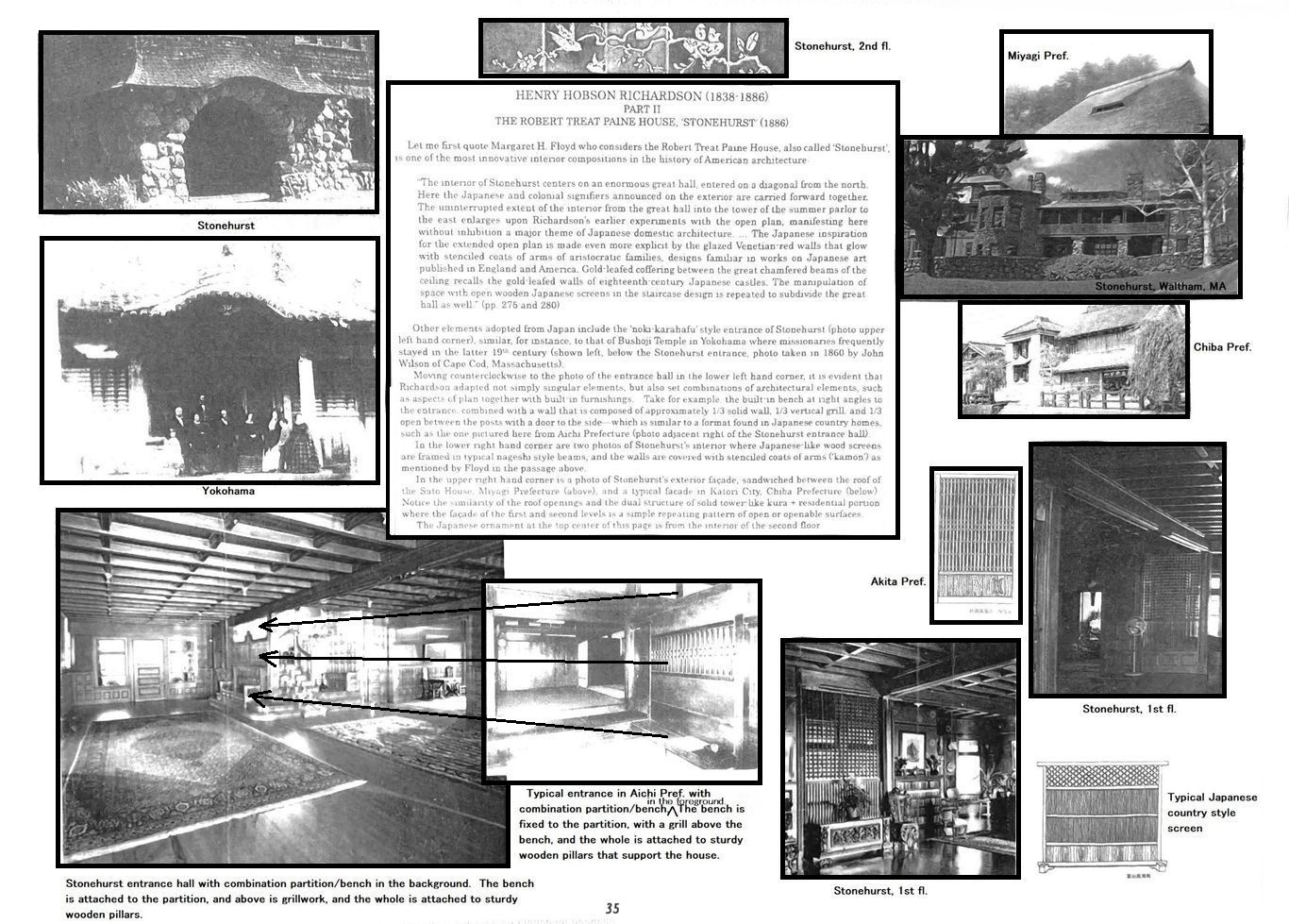
________________________
Philip Speakman Webb (1831-1915)
The Red House and the Arts and Crafts Movement in England
Lecture handout, 2015.3.17, revised 2015.10.12, Architectural Juxtapositions, p. 37, with added material, 2023
Yasutaka Aoyama
Above center is a settee designed by Philip Webb at Kelmscott Manor (but originally made for the Red House), that is remarkably similar in impression to the form and designs on 'gotenjo' (格天井) ceilings found in temples, shrines, palaces and castles in Japan, such as in Nijojo Castle, Kyoto, shown on both sides of Webb's settee.
The Arts and Crafts Movement is often discussed--strangely enough--in isolation from other contemporary artistic movements, such as the Aesthetic Movement at the time, and certainly not in relation to japonisme. Perhaps because William Morris (1834 – 96), its leading spokesman, never admitted to any Japanese influence. Yet in so many respects, the Arts and Crafts Movement--from the espousal of a general raising of the level of artistry in British craftsmanship, down to the specific textile designs Morris himself produced, show a strong affinity to the ideas and designs of Japan. A variety of Japanese artwork, artifacts, depictions, and accounts had been trickling into Britain particularly after Commodore Perry's expedition to Japan in 1853 and the Anglo-Japanese Treaty of Amity and Commerce in 1858. Such plausible influences however, are often met with disbelief, due in part to modern surveys of western civilization and art history which tend to minimize certain trends--even if they were once an incontrovertible part of everyday life. This holds especially true in the case of Japanese influence. As Elizabeth Aslin in The Aesthetic Movement: Prelude to Art Nouveau (1969, p. 79) writes:
"The impact of Japan on the decorative arts in England in the second half of the nineteenth century has never been fully explained though the influence itself passed through three clear phases each of which conveniently falls into a decade. In the eighteen-sixties it was a matter for individual collectors and enthusiasts, both in England and in France, and in that period Whistler produced his earliest Japanese-inspired paintings, Rossetti designed a Japanese bookbinding and a few amateurs began to collect lacquer, porcelain, glass and prints. In the 'seventies, the fashion was in full swing amongst informed people and Japanism and the Aesthetic Movement were virtually synonymous, while the Philistines scoffed. Interior decoration and furniture design were based on what were believed to be Japanese principles, rather than on the superficial forms and ornament which were the hallmark of the 'eighties when what had been a movement became a mania. Every mantelpiece in very enlightened household bore at least one Japanese fan, parasols were used a summer firescreens, popular magazines and ball programmes were printed in asymmetrical semi-Japanese style and asymmetry of form and ornament spread to pottery, porcelain, silver and furniture."
The Japanese artistic influence upon those associated with Morris or his wider circle, such as Edward Burne-Jones, Ford Madox Brown, Dante Gabriel Rossetti, and William Burges has been repeatedly documented. If William Morris himself did not admit to a general Japanese influence, those intimately associated with him did. Even Warrington Taylor, Morris’ business manager, in a letter to the architect Edward Robert Robson (1835–1917) who associated with the Pre-Raphaelites, clearly recognized Japan as a major force in shaping English art, architecture, and crafts, writing in praise of Japanese styles: "Japanese spirit of early Worcester china is good" and the "painted cabinets in Japanese style of Queen Anne time are good" and he considered English Gothic as being "Japanese" in its small, picturesque, and homely nature. (Warrington Taylor to E. R. Robson, in Mark Girouard, Sweetness and Light: The “Queen Anne” Movement, 1860– 1900. Oxford: Clarendon, 1977, p. 15.) One only has to dig a little below the surface, and around Morris, to find Japan firmly intertwined in the roots of the Arts and Crafts Movement.
The Red House below designed by Webb is a solid example of the early phase of japonisme in Britain.
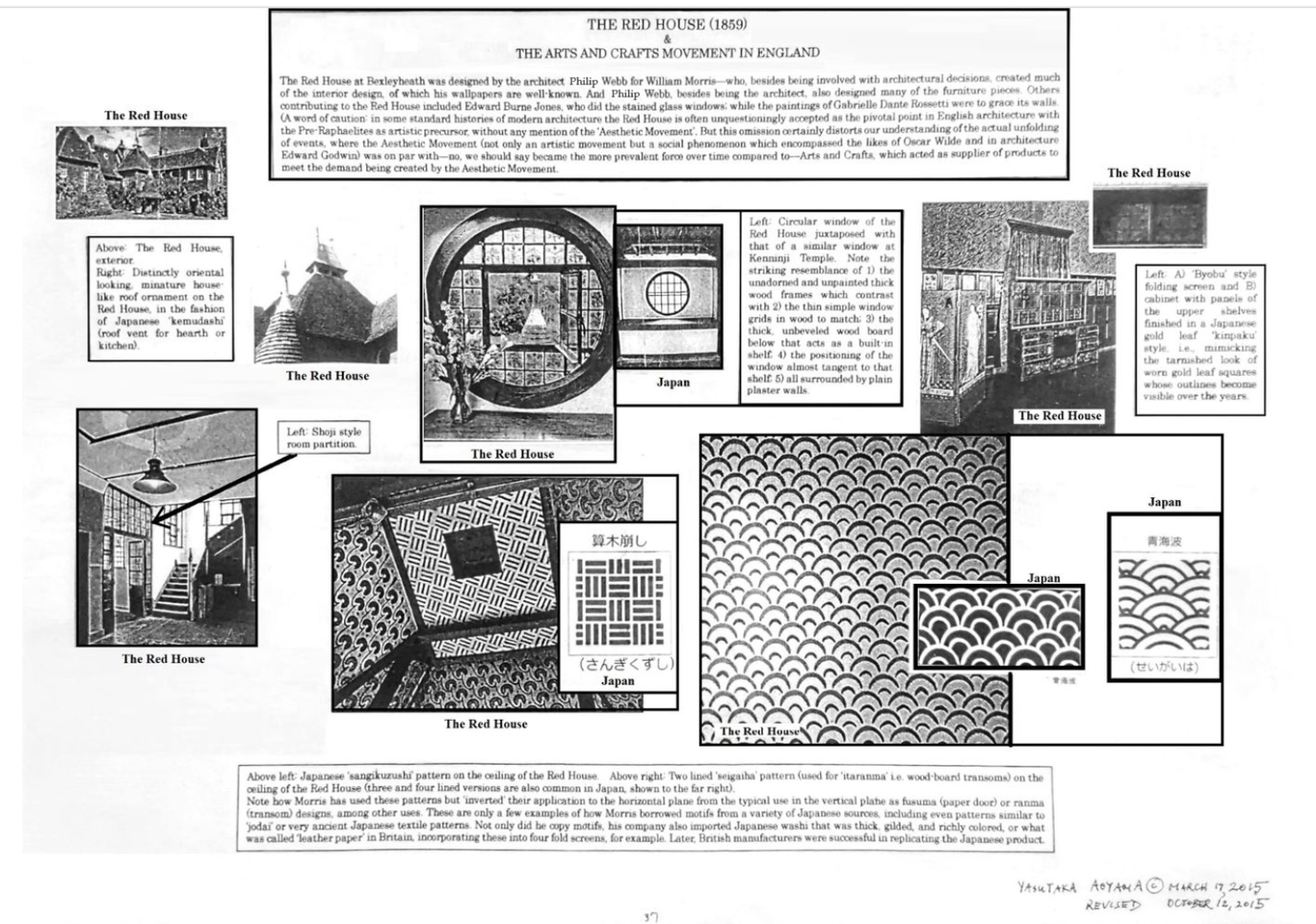
Below: Close-up of cabinet detail in the upper right hand corner of the lecture handout above. Note the squarish shaped indistinct pattern, very much like 'kinpaku' or gold leaf coverings pasted in similar squares, on Japanese walls/ceilings and byobu screens, whose divisions gradually become apparent and grow sullied over time. The main part of the cabinet, though not show here, is also very much in the style of Japanese box-like lacquer cabinets, adopted for Western style use, in vogue from the 17th century onward among elites in Holland and Germany.

Japonisme added color, verve, refinement, and diversity to English arts and crafts. Below, from left to right: Ford Madox Brown chooses to paint himself in front of a Japanese, or Japanesque screen (1877). Using Gothic motifs, William Burges has all but re-created the Nikko Shrine of the Tokugawa Shogun in his 'Summer Smoking Room' design for Cardiff Castle (1870). Recall that Burges, upon seeing the Japanese Court at the International Exhibition of 1862, declared "if the visitor wishes to the see the Middle Ages, he must visit the Japanese Court" (Ashmolean Museum, www.ashmolean.org/article/east-meets-west-in-the-victorian-colour-revolution). Walter Crane, well researched for his Japanese design proclivities, here creates a book binding (1901) that without the English words might easily be mistaken by anyone familiar with traditional Japanese patterns as being from that country. Edward Byrne-Jones, inspired by Japan to advance English aesthetics based on home grown sources, merges Japanese lacquer case and vegetal design into a discoidal object in 'Days of Creation--The Third Day' (1870-1876).
Though we will not delve deeply here, ceramic dishes by William de Morgan, while many are clearly influenced by Persian and Turkish ceramics, an equal number of other pieces are likely to have been influenced by Japanese Kutani ware, such as his blue, green and yellow colored plates with dragon or beast motifs (corresponding to 'ryu' and 'shishi' / 'komainu') or his all red on white ceramics reminiscent of red Kutani plates (some with fish motifs corresponding to swimming carp and jumping 'tai' sea breams), while his richly multicolored peacock plates (one shown below) may be considered part of the same stream coming from Japan that gave birth to Whistler's Japanesque peacock room. Besides being a common traditional motif in 'kacho-zu' (bird combined with flower designs), peacocks have been drawn and sculpted in painstaking detail for approximately a millenium as the vehicle of the Buddhist deity, 'Kujaku Myo-o'. Regarding furniture, Charles Robert Ashbee's designs at times shows similarities to those typical of Tohoku (northern) Japan, box-like with oversized drop-handle pulls against large back plates and elaborate escutcheons; while there are other pieces by him, more light and airy, that seem influenced by Edward Godwin's 'Anglo-Japanese' style or examples of thin, straight-legged laquered Japanese table and desks. And finally, some of William Morris's woodblocks at Kelmscott Manor for making prints on fabric, indicating the analogous nature of his approach to that of Japanese woodblock printmaking; and as in Japanese woodblock prints, it is said that sometimes a dozen or so blocks were used to complete one design.
________________________
Norman Richard Shaw (1831-1912)
A Confluence and Congruence of Japanese and English Taste
Furniture and Interiors
Lecture handout 2015.10.12, Architectural Juxtapositions, p. 39
Yasutaka Aoyama
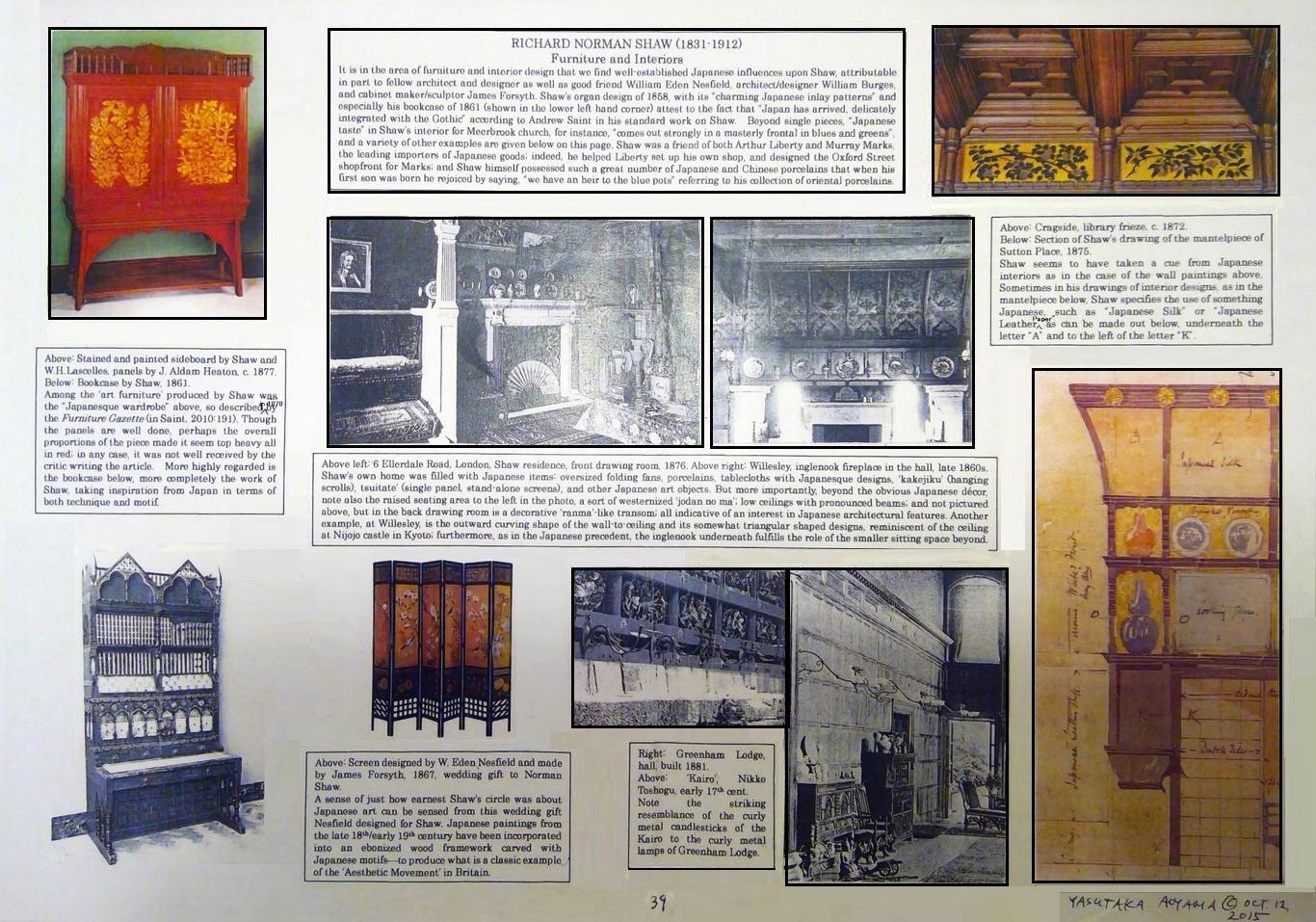
Regarding Cragside's interior design, Andrew Saint writes of the subtlety with which Shaw incorporates Japanese taste, before becoming obviously oriental looking in the years to come: "In the movable furniture weight and nimbleness respond to one another in fresh guise, llike the second subject in a symphony. Mass of table and density of carpet form a backdrop for a superb set of ebonized chairs made by Gillows, presumably from Shaw's own pencil though touched by the impact of the lighter early pieces made by the Morris firm. They stand for a moment of equilibrium in English furniture design, before the Japanese taste dissolves into the spindliness of aestheticism. Their neatly turned legs and cane seats are spiced up with discreetly exotic small back panels in gilt leather, parading pomegranates and picking up the tones of the frieze." (Richard Norman Shaw, revised edition, Yale Univ. Press, 2010, p. 84)
Regarding Shaw's designs for Meerbrook church in Staffordshire, Saint comments, after describing various decorative details and fittings of the chancel: "The Japanese taste, well subordinated in these fittings, comes out strongly in a masterly frontal in blues and greens, the first recorded piece to be worked by the ladies of the future Leek Embroidery Society." (2010, p. 303)
Richard Norman Shaw
A Confluence and Congruence of Japanese and English Taste
Architecture and Exteriors
Lecture handout 2015.10.12, Architectural Juxtapositions, p. 38
Yasutaka Aoyama
Text below added 2023.7.19
While the Japanese influence upon Shaw's interiors is straightforward, and of a decorative aspect, the influence of Japanese architecture upon his exteriors is likely to be met with greater skepticism. Yet the fact that the creators of the Queen Anne style, led by Norman Shaw and Edward Godwin, had a strong interest in Japanese art is undisputable, and and at times reveals itself in earlier proposals for houses, which are then modified to accustomed tastes (that might even be said of J.J. Stevenson, when one looks at his design for T.H. Green's house in Oxford, in its subtle asymmetric rendering of the exterior coloring).
Consider the basic concept and imagery of Bedford Park, as visualized in Shaw's sketches of the place, such as his 'St. Michael and All Angels' (1879). It has an unmistakable ukiyo-e feel to it, for one who is familiar with Japanese prints. The single, slender, dominating tree, which extends to the top of the picture, is somewhat reminiscent of the compositional technique that impressionists and post-impressionists are known to have adopted from Japanese prints. Colored expansively in consistent tones of light green and orange, with touches of yellow and pale violet in clear outlines, with certain areas left unpainted, and with hardly any shadowing (as if high noon were a device to minimize shadowing), it calls to mind mid-18th century ukiyo-e prints such as those of Suzuki Harunobu, sharing the same quiet softness of his images, despite the obvious difference of setting. The small child holding a Japanese style parasol in Shaw's watercolor---has she been placed there almost as if a reminder---to evoke the imagery of a far away land transposed to comfortable England?
Much the same can be said of other better known images of Bedford Park, such as the cherry blossom or the very cherry blossom-like apple blossom filtered lithograph 'Bedford Park' (1882) by Manfred Trautschold.
There is no insistence that each and every correspondence below be considered one of cause and effect. Rather, they are pointed out to show a growing congruence of Shaw's designs with Japanese architectural forms in many respects, and not substantially in another direction. And that as a whole such a convergence, whether conscious or unconscious, makes sense given the exposure to images of Japan in published photos or pictures as those in the Illustrated London News (see Japan and the Illustrated London News: Complete record of Reported Events 1853 - 1899, publ. 2006); and in ukiyo-e prints, inevitably filled with architectural forms, which were also to be found on porcelains, lacquerware, fans and the like, the sort of things Shaw collected and enjoyed. In Harunobu's ukiyo-e, just to take one example of devices reminiscent of what Shaw would come to employ with frequency, large round windows near gridded shoji panels (light passing and thus like translucent windows) are a favorite backdrop.
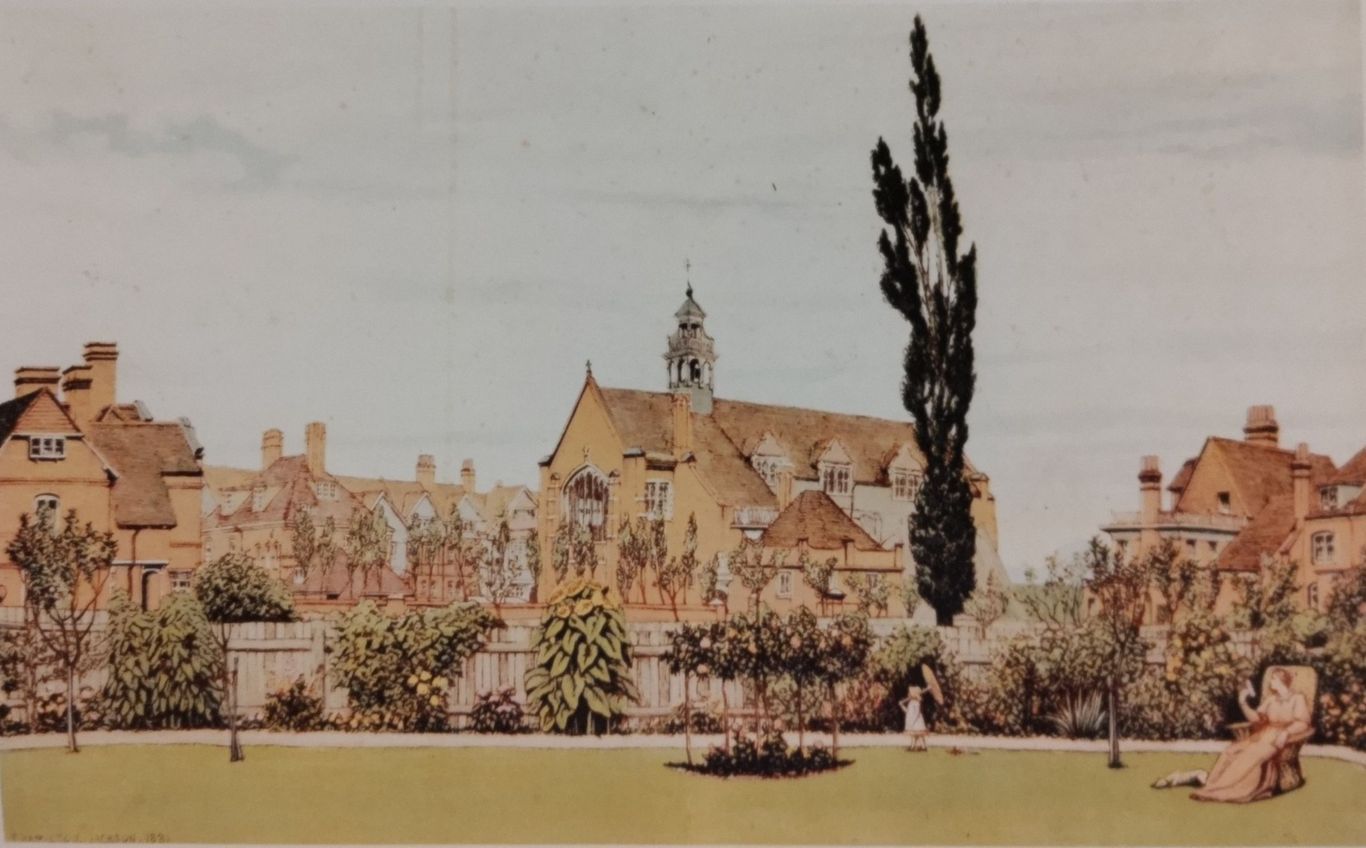
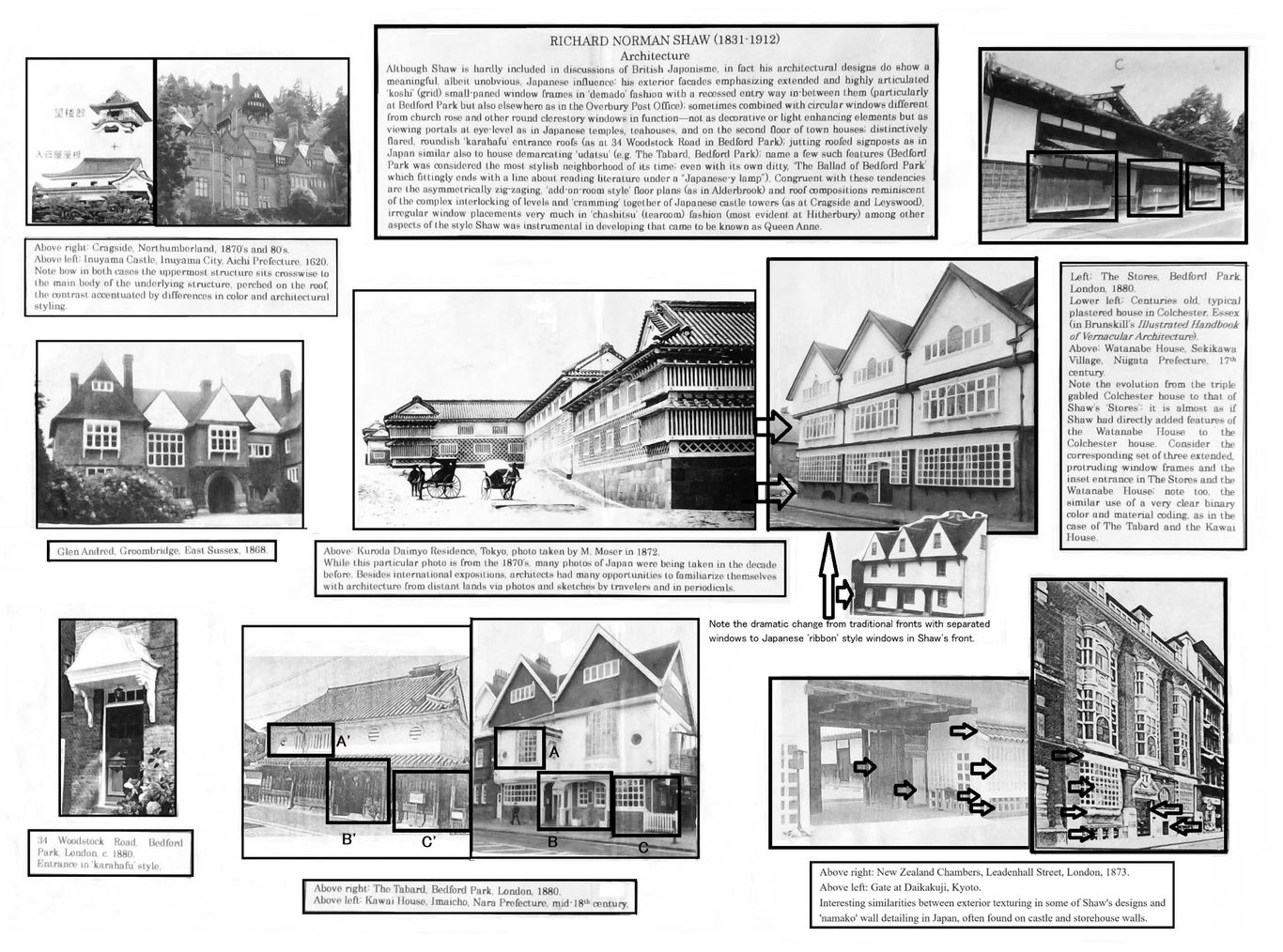
Below: From the author's scrapbook, the Shaw designed Hitherbury House (1882), Guildford, England on the right, next to an old Japanese teahouse 'chashitsu' on the left. Perhaps the most outstanding example of Shaw's incorporation of Japanese style architectural asymmetry, juxtaposition of elements of different scale, and textural variation for a facade.

For more on Shaw, see Architectural Japonisme II, 'William Eden Nesfield: An Unassuming Japonisme'.
________________________
Charles Rennie Mackintosh (1868-1928)
Part I: Functional Readaptations of Japanese Designs
(with Observations on an Interior by Sir William Reynolds-Stephens)
Lecture handout, scrapbook form 2015.6.30, Architectural Juxtapositions, p. 40, note on Reynolds-Stephens added 2024.9.17
Yasutaka Aoyama
"To those with eyes to see, however, and especially to Mackintosh, the Japanese house presented a new challenge. Could the delightful freedom and spaciousness of the open plan be translated into Western terms; could its remarkable flexibility and exciting aesthetic potentialities be exploited under the climatic conditions prevailing here? These questions Mackintosh attempted to answer in his own way by the use of openwork screens, balconies, and square post and lintel construction. The influence of Japan is evident throughout his work, especially in the Cranston Tea-Rooms, and in the library at the Glasgow School of Art--even the boldly cantilevered galleries of Queen's Cross Church have at least one counterpart in the Far East, the balcony of an old inn at Mishima, illustrated by Morse."
Thomas Howarth, Charles Rennie Mackintosh, p. 225.
Mackintosh's first major biographer, Thomas Howarth, pointed out early on in his 1952 award-winning book, Charles Rennie Mackintosh and the Modern Movement, the importance of Japan as an artistic influence on Mackintosh (see also Andrew MacMillan, 'Charles Rennie Mackintosh: A Mainstream Forerunner' Architectural Association Quarterly, vol. 12 no.3, 1980). There are many aspects of Mackintosh's Hill House, as well as his other creations such as the Willow Tea Rooms and his 78 Derngate house, that reveal an eclectic array of Japanese motifs. Those influences range from the kimono (e.g. his well-known 'kimono cabinet') and ikebana flower arrangement, to Buddhist temple design and ornament. Even his watercolor botanical sketches are reminiscent of sumi-ink painting, and are at times signed in a vertical, oriental fashion, with the words framed (boxed in) as in Japanese prints (e.g. his sketch 'Japonica'). That Mackintosh had an interest in Japanese art from his early days can be gleaned in a circa 1890 photo of Mackintosh's studio bedroom at Dennistoun, Glasgow, where an unidentified ukiyo-e print can be made out above the mantlepiece, though the Japanese lettering is indiscernible. Glasgow's relationship with Japan was closer than most might think in those years, thanks to the shipyards at the River Clyde where there was much contact with those related to shipbuilding, such as Japanese navy engineers.
Below are some examples of Mackintosh's 'functional re-adaptations' of Japanese, especially Buddhist, architecture and ornament. A temple for instance becomes a library or a shoji window the back rest of a chair, for instance.
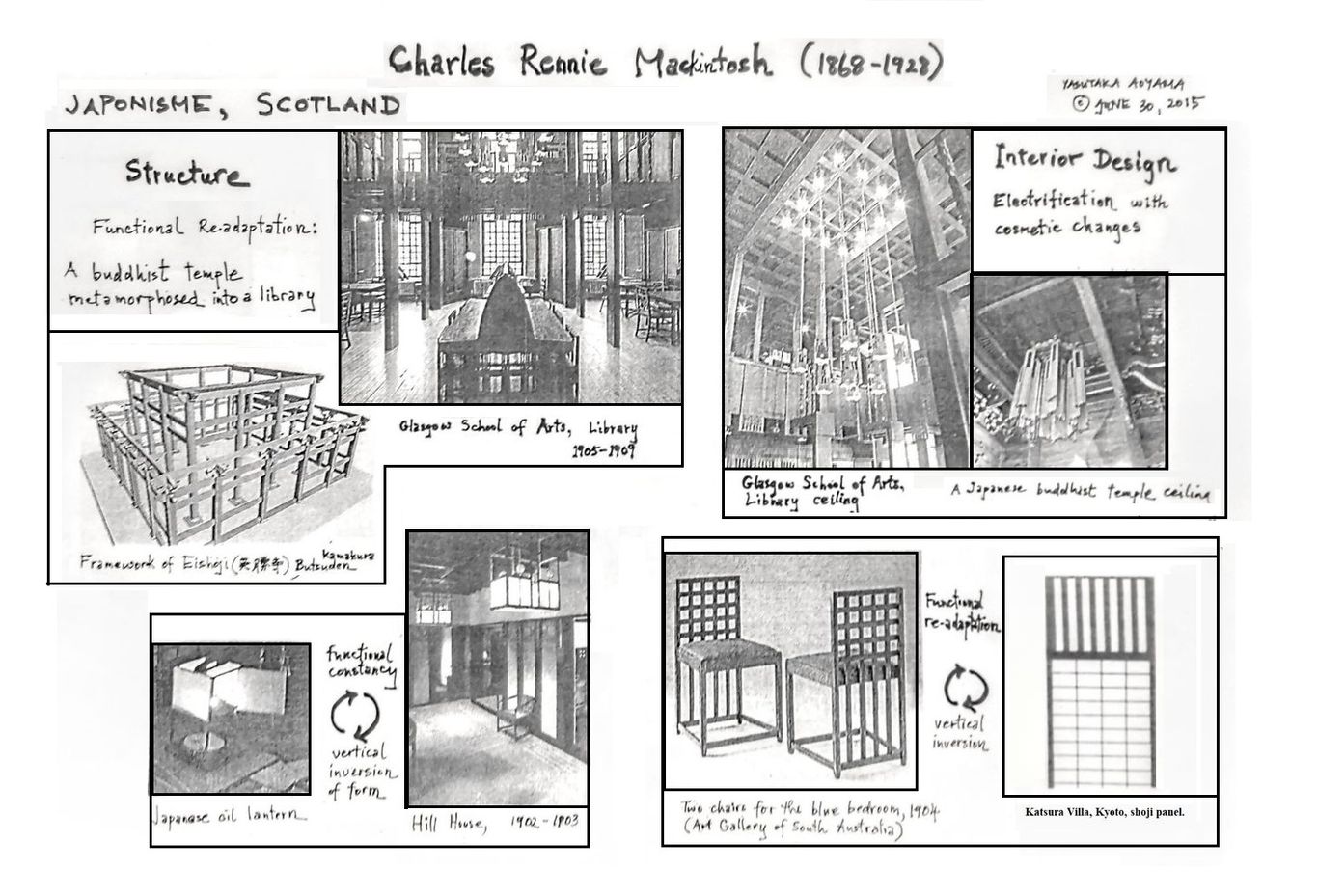
Below left: the Willow Tea Rooms, first two floors. Right: typical Japanese merchant house of the Edo period, with the 2nd floor walls in white with the quintessentially Japanese grilled window and first floor in dark wood, also with continuous windows with the lower half cut out towards the end.
Below: Comparisons of various aspects of Mackintosh's interiors and exterior decor to the left, vis-a-vis elements of Japanese Buddhist temples and other buddhist paraphernalia to the right. Note the prominent use of black lacquer furnishings and hanging golden ceiling ornaments, and white silk panels or white plaster walls, abstracted in Mackintosh's 78 Derngate, Northhampton house, but still recognizable. These are but a few examples; not shown for instance, is a comparison of the large metal, somewhat bean-shaped ornaments that hang from Jodoshinshu sect temples of which an almost exact duplicate existed in Mackintosh's Willow Tea Rooms.
We might note as an aside that the interest in Japanese religious architecture was not limited to Mackintosh. Echoes of sacred Japanese architectural elements are found early on in the American Stick Style, discussed earlier, as well as elsewhere in Britain in Mackintosh's time. A good example is William Reynolds-Stephens' (1862-1942) design for the interior of St. Mary the Virgin, Great Warley, Essex (1904), shown below, which was completed just before the building of Mackintosh's Glasgow School of Arts Library (1905-1909). The elements blocked in red reflect various aspects of Buddhist temple or Shinto shrine structures and ornament.
In the foreground of the picture to the left is a minature tower-like structure, which looks as if made of metal, whose form is much like that of a temple or shrine 'toro' (stone or wood lantern). To the right is a close up of the upper part of the photograph (from R. Schmutzler, Art Nouveau, 1977). In it is a hanging, roofed, plaque-like object much like a 'zushi' (minature, portable reliquary) in form, and to the right of it running horizontally is a metal ornament with a floral design, reminiscent of temple or shrine eave decorations.

Charles Rennie Mackintosh & Margaret Macdonald Mackintosh
Part II: Transmutation, Intertwinement, and Overlay
Lecture handout, scapebook format, 2015.6.30, Architectural Juxtapositions, p. 41
Revisions, editing, and added commentary 2023.9.16 -28
It appears that the Mackintoshs took inspiration from a variety of Japanese art forms including ukiyo-e bijin-ga (pictures of beautiful women, often courtesans), sumi-e (charcoal painting) or suiboku-ga (landscape ink wash painting), and ikebana flower arrangement, especially its mixed use of flowers and edamono (tree branches) or tsuru (vines, e.g. fujizuru or kokuwazuru) in the traditional Japanese convoluted and whimsical manner. They may also have discovered the Japanese art of packet wrapping and decorative tying known as mizuhiki with its complex loops and long streaming threads. These sources were combined and 'transmuted' into art of different media, namely paintings and sculptures, their forms reflected in the strong and multitidinous lines found in their works, those lines often overlaid or fused with bijinga type figures.
The following is an attempt to illustrate the idea, taking a decorative wall hanging (1902) by Charles Rennie Mackintosh as an example, on the right. On the left is the ukiyo-e print 'Unryu Uchikake no Oiran' by Keisai Eisen (1790-1848), the courtesan print that Van Gogh modeled his painting 'The Courtesan' upon. She is in a classic ukiyo-e pose, depicting a female figure in flowing robes with her hair bunched up in the back, poised in a way where she is somewhat sideways with her shoulder accented, jutting towards us, her face at an angle partially hidden.
In the center, this author has taken the liberty of creating a quick, kakejiku (hanging scroll) type painting using Mackintosh's picture, making some modifications but relying very much on Mackintosh's original design. More bamboo twigs and leaves are needed, but enough is there to show how close Mackintosh's wall hanging is to sumi-e hanging scroll compositions, including aspects of detail (as the bamboo segmenting or leaves silhouetted by the moon). It seems highly probable that Mackintosh was inspired by sumi-e / suiboku-ga scroll imagery depicting bamboo in moonlight, a common motif in that type of painting. In Mackintosh's picture the bamboo trunks have become outlines of the woman's robe-like dress; a large rose or other flower-like shape sits where usually a mass of bamboo leaves would typically be painted; or otherwise where the bold, focal element of a kimono or uchikake (long overgarment) might be displayed in a bijinga---in Eisen's print it is the face of a dragon, but a large flower or other round shape would not be uncommon.
It is not difficult to see how Mackintosh's image is an amalgamation and entwining, or otherwise an overlaying of imagery, to create something new, which draws from the artistry and emotional content of those very disparate artworks.
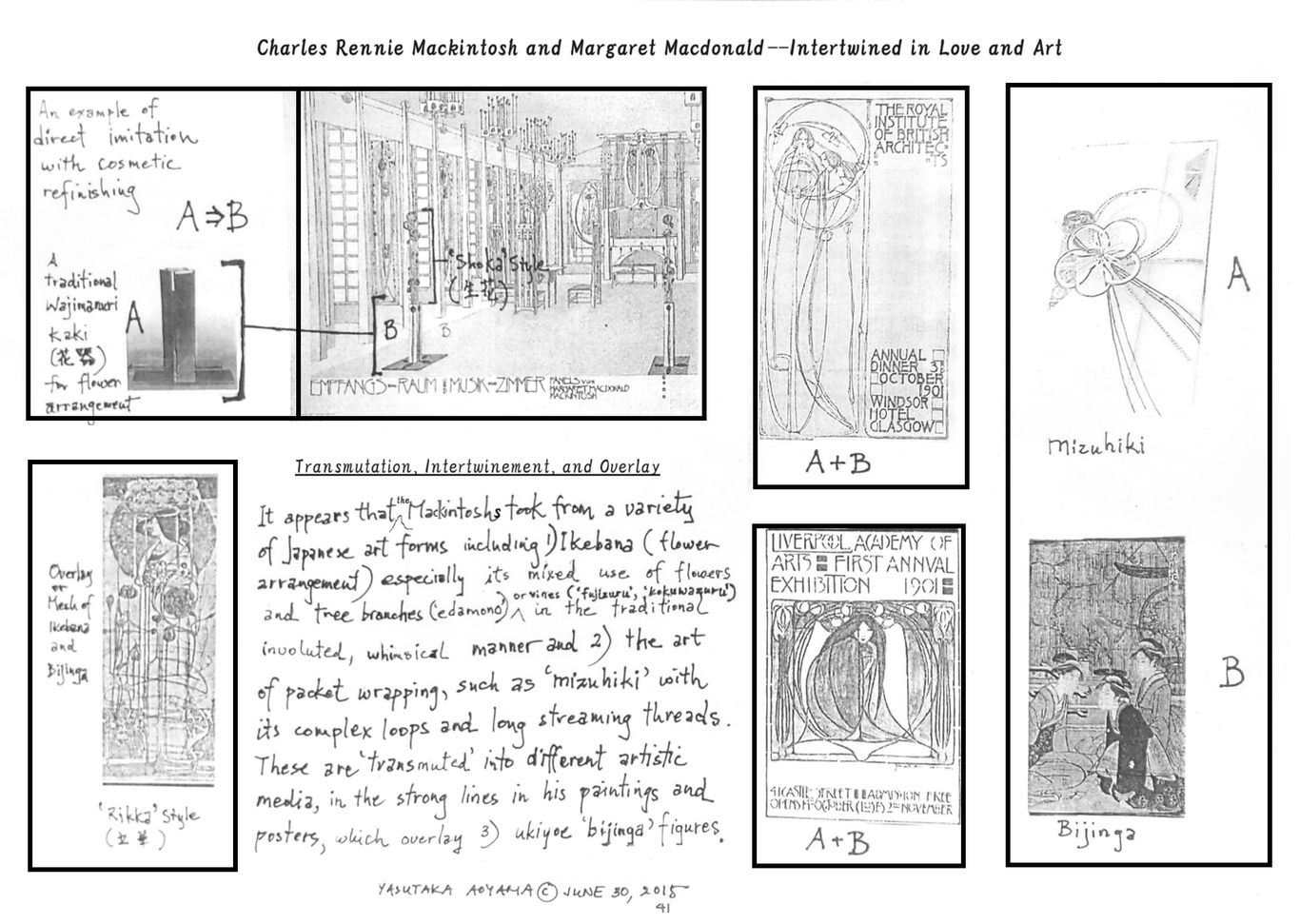
Though barely discernable in the bijinga image above (bottom right corner), in the background of the three women is a ikebana display of curving, interwined branches. In Japan flower arrangements have traditionally incorporated the branches, twigs, vines, and leafs of plants much more so than in the West (where flower arrangement until then was basically making a bouquets of flowers) and it was this more primal, vegetative aspect that must have caught the attention of the Mackintoshes, and the complex and convoluted formations that were actively pursued by ikebana artists.
Below: left--his watercolor 'Japonica'; center--a sketch signed a labeled horizontally in Japanese fashion; right--a juxtaposition of a Mackintosh sketch and a Japanese traditional sketch of lilies.
Living with ikebana
It seems ikebana was a heartfelt passion for the Mackintoshes, and not just a device for designs. The Mackintosh studio flat, 120 Mains Street, Glasgow (1900) was overflowing with multiple ikebana-type flower arrangements it seems, as captured in the photo below (from Howarth, 1952). Note the tall, rectangular 'kaki' (flower arrangement container) style vases, peculiar to ikebana in Japan. On the mantlepiece, not visible here, were ukiyo-e prints (See Erin McQuarrie, 'Ma, Mon, Tori-i: The Influence of Japanese art and design on Charles Rennie Mackintosh's masterwork, The Glasgow School of Art'. Glasgow School of Art dissertation.)
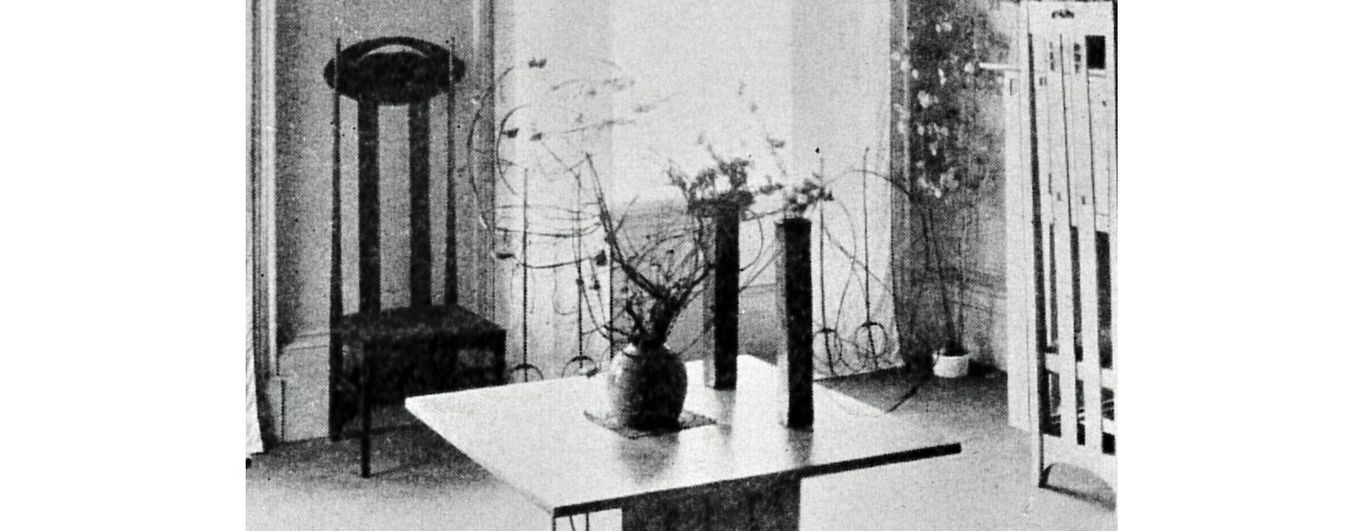
The influence of suiboku-ga, or Chinese style ink wash painting in Mackintosh
Below: 1) Sesshu, 'Winter Landscape',15th century (Univ. of Michigan); 2) Mackintosh, 'The Rocks', 1927 (in Howarth); 3) Mackintosh, 'Le Fort Maillert', 1927 (in Howarth); and 4) Ike no Taiga, 'Mountain Landscape and a Waterfall', between 1750-1776 (Univ. of Michigan).
Regard the striking similarities, particularly between the first two images. Sesshu (1420-1506), the most renown of Japan's suiboku artists (acclaimed as the greatest painter alive during his stay in China by his contemporary Chinese painters), was prominently featured in books on Japanese art by the early 20th century in Europe and America, thanks to men like Ernest Fenollosa.
The idea that 'rocks' were a worthy subject of painting on their own, that they might be allowed to fill a canvas with little else, and that they were objects of immeasurable aesthetic value, in fact of religious veneration, was of course new to Western painters, and must have been a significant aesthetic revelation. The techniques of painting rock formations was an ancient and well-developed technique in China, and carried on by Japan, whose artists leaned towards either extremely soft (e.g., Uragami Gyokudo and Hasegawa Tohaku) or more sharply formed outlines (e.g., the Kano school and Hokusai's painted landscapes) as found in Mackintosh. The numerous suiboku techniques of painting rock formations, each with a name, and the manner in which Mackintosh has attempted to assimilate them, requires a paper of its own and will not be delved into here in depth; suffice it to say that even to an untrained eye, various aspects of form, shadowing emphasis, over all composition and detail, and what one might call 'directionality' and 'presence', take from suiboku models.
Just to point out a few specific points of interest, observe in Mackintosh's 'The Rocks' how 1) the smaller foreground rocks on a flatter ground surface paralleling those Sesshu, and 2) the creation of open spaces toward which the rocks lean, 3) the various similarities in the grouping of rocks, and of course 4) the similar layering technique of the rock surfaces.
The second pair is a comparison of Mackintosh and Ike no Taiga (1723-76), one of the great 'bujin-ga' (literati painting) painters of the Edo period along with Yosa Buson. While Mackintosh's 'Le Fort Maillert' rock textures might resemble other suiboku works better, the fundamental compositional equivalence of squat, massive, squarish rocky formations, filling up much of the picture space, one taller with a waterfall between them, is worth noting. In Mackintosh's work, the waterfall has been transformed into a vein of the rock itself, but its fluvial origins can be discerned. The classic example of this type of squarish rock formation is Fan Kuan's (late 10th to early 11th century) iconic scroll painting 'Travelers among Mountains and Streams' (谿山行旅図) at the National Palace Museum in Taipei, and which is also characterized by broad, flat rock surfaces.
Some further observations regarding Mackintosh's spouse, Margaret Macdonald
Mackintosh's wife Margaret also incorporated various Japanesque qualities into her art, as discussed earlier, and can also be seen in her painting 'The Opera of the Seas' (between 1903-15, whereabouts unverified) shown above. This may be fruitfully compared to the design of Edo period lacquer picnic boxes, such as the one at the Suntory Museum of Art (Tokyo) to the right, for instance. Note the parallels in bold contrapositions of rectangular sections and curving lines; and motifs such the use of bands of scattered flowers and hanging screen-like forms. Regarding the picnic box: "The tiered picnic box was a set of picnic utensils with a handle used on outdoor excursions such as flower viewing parties. ... The design is rich in allusions to Japan's aristocratic court culture including images of court screens used by aristocratic women, the bugaku dance and paulownia combined with phoenix motifs." (Suntory Museum of Art, Iwai: Arts of Celebration, 2007) Both Charles Rennie Mackintosh and Margaret Macdonald looked to Japan as a rich store of inspirational ideas, and as has been emphasized elsewhere on this site, from the early 20th century onward Western artists utilized an increasingly diverse array of Japanese arts and crafts in their work.
Two other examples of her use of Japanese imagery and the possible Japanese sources are offered below. Left to right: 1) Margaret Macdonald's 'The Story of a River'. 2) Ando Hiroshige's 'Yotsugi dori yosui hikifune' from his series 'Meisho Edo Hyakkei' (hundred views of Edo). Hiroshige's Mount Fuji afar in the background, represented as one higher peak and a lower peak to its right, is transmuted by Macdonald into an enormous resting giant, with bent knee; but the schema is still recognizable as that of Hiroshige's. The title of Macdonald's work is prominently displayed within the picture to the right in a vertical box, a la japonaise. 3) Macdonald's wall plasters for the Willow dinning area look very much like 4) the outfit of a traveling Buddhist monk, to the far right (there are more precisely paralleling priestly outfits, but of which no images were available).
________________________
Otto Wagner (1841-1918)
Japonisme as the Epitome of Elegance in a Pioneer of Modern Architecture
Lecture handout scrapbook format 2015.6.30, Architectural Juxtapositions, p. 36
Yasutaka Aoyama
"...our sense must already tell us that the lines of load and suppport, the panel-like treatment of surfaces, the greatest simplicity, and an energetic emphasis on construction and material will thoroughly dominate the newly emerging art-form of the future."
Otto Wagner, 'Concluding Remarks' in Modern Architecture, 1896
Otto Wagner's Modern Architecture was a prophetic statement of modernist ideas, and would be echoed in the writings of Adolf Loos and Le Corbusier and in other proclamatory tracts on modern architecture. In Wagner's lines above, it is clear to anyone with a knowledge of Japanese architectonic and constructional principles that those comments are also a perfect description of the fundamentals of traditional architecture in Japan. Otto Wagner was immersed in the japonisme influenced milieu of the Vienna Secession, and his works reflect, albeit in a a masterfully subtle way, the aesthetics of Japanese art and architecture.
As curator of the MAK (Austrian Museum of Applied Arts) Johannes Wieninger writes (in the superbly organized Japonisme in Vienna, 1994), regarding the impetus away from classical styles in Viennese design in the late 19th century, Wagner "is most likely to have been the first one to aim a pointer in the direction of Japanese art. Indications of an artistic nature exist to document this. In his first villa in Hutteldorf, built in 1886, Otto Wagner used Imari vases for the exterior, and put heavy, Meiji-period bronze vases in two large facade niches, which had in fact been intended for sculptures. ... To see in Otto Wagner the first great Japoniste is certainly to exaggerate. But his freer treatment of the European historical vocabulary of forms brought about a drastic atmospheric change, which instilled the young generation of artists in his vicinity with their creativity." ("A Europeanised Japan" Reflections on "Japonisme in Vienna" in Japonisme in Vienna, p. 205.) We might add that to see Otto Wagner as the first great Japoniste is to exaggerate; but to see him simply as a great Japoniste is not at all---and quite apropos.
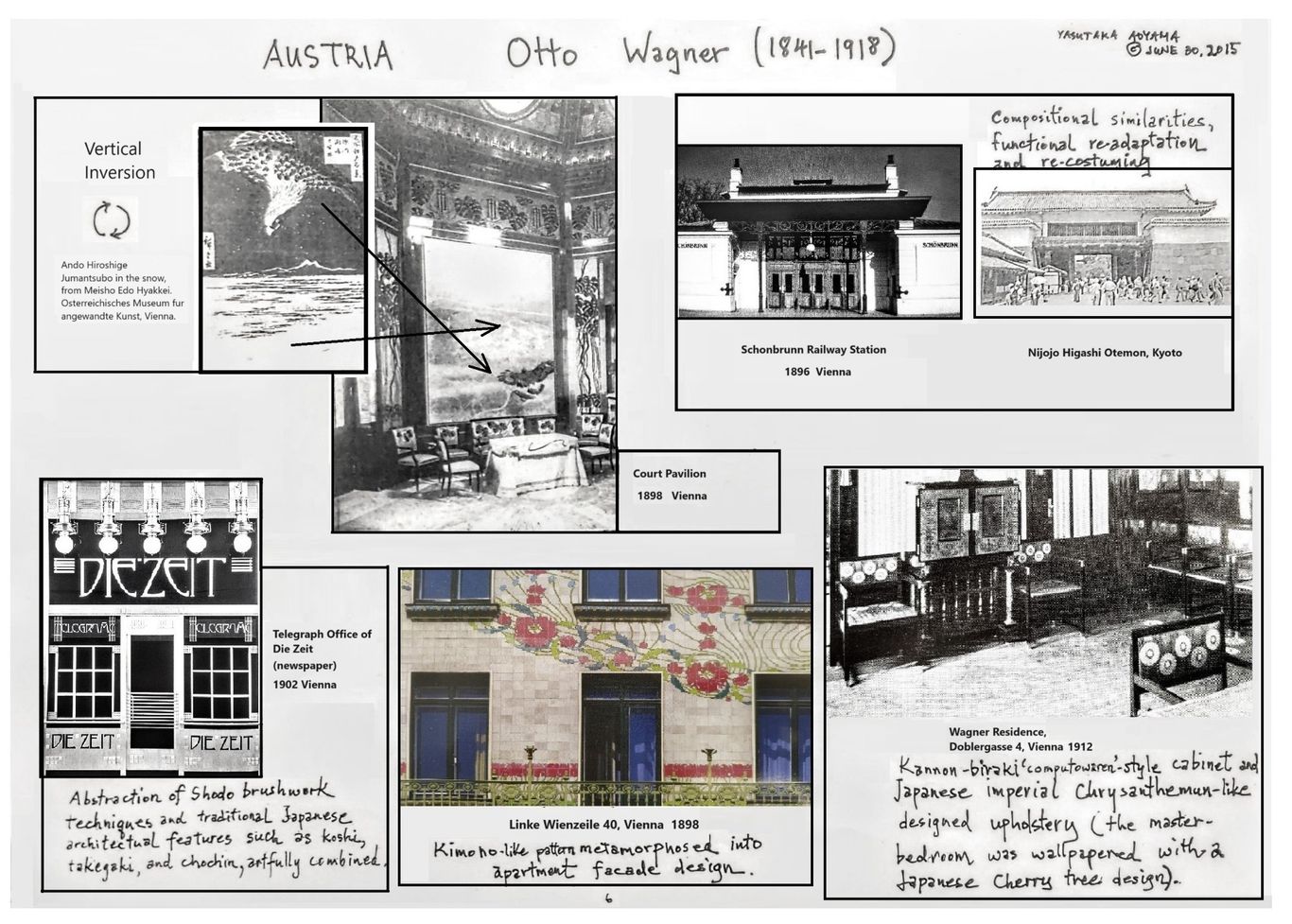
Postal Savings Bank
The Postal Savings Bank (1903-1912) conference hall. Here Wagner artfully blends 'japanned' built-in cabinets with a byobu screen style painting of Emperor Franz Joseph wearing an almost kimono-like robe in rich golds and starkly contrasting red and black.
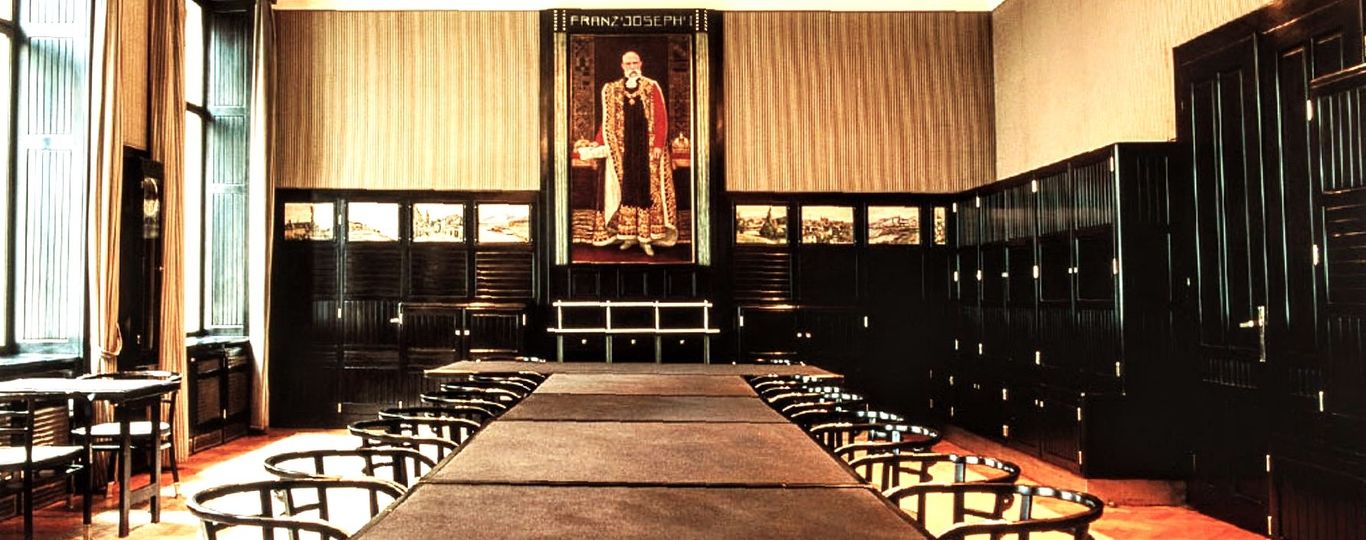
Let us recall that connected, extended cabinetry, part and parcel of the walls, was an adoption of Japanese interior ideas, and that lacquering furniture black was, like the practice of creating jet black lacquered pianos, also a result of the study of urushi techniques. That influence extends back to the 17th and 18th centuries, when lacquered cabinets were imported into Europe and graced the halls of the German speaking aristocratic and wealthy, as elsewhere in Europe.
Villa Wagner I and Wagner's Kostlergasse Residence
Other aspects of what we might call the 'discreet japonisme' of Otto Wagner. Left: Villa Wagner I (1886) with its shallow sloping and extended eaves with painted undersides characteristic of Japanese Edo period buddhist temple architecture. The four ornamental roof supports over the entrance area also echo Japanese religious architecture. Right: Wagner's city residence, Kostlergasse 3, bedroom wall paper, in classic Japanese style outward 'groping' twigs with ample empty spaces between them. Wagner may be said to be one of the most successful architects in creating an elegant blend of Japanese and Western (and at times Persian) architectural elements.
Shown below is Villa Wagner, extended and painted eave undersides with the four ornamental supports, followed by the painted eaves and four ornamented supports of the 'sanjunoto' (3 level pagoda) of Shinshoji Temple, Chiba prefecture (1712). The style became popular in Japan from the early 18th century, as Buddhist temples sought ways to attract more believer visitations as state patronage waned. This kind of decor was called the 'nokimiage', or literally 'looking up at the eaves'. Wagner also followed the concept in making sure that the visitor would naturally look up at the eaves as he approached, climbing the relatively steep stairs facing the house, making sure the visitor would repeatedly view the painted eaves by angling the next set of stairs parallel to them.

Above Villa Wagner, below Shinshoji Temple.

Vienna Osterriechisches Museum fur angewandte Kunst
Left: one of Ando Hiroshige's most famous prints, also at the Vienna Osterriechisches Museum fur angewandte Kunst. Right: Court Pavilion interior, Vienna. A possible case of image 'inversion', a standard technique of modifying the original image by European japoniste artists.
Majolikahaus
Left, Majolikahaus, Vienna, 1898. Right, Old Imari porcelain, Drick-Messing Collection, c. 1700. Note the extending floral design guided by diagonal lines and smaller budded stems extending diagonally outward (in Wagner upward, in the Imari downward) from the larger flower blossoms, and even the interspaced 'railing poles' ending in bulbs (in Wagner it takes the form of a real rail beneath the wall design) in both. Such patterns were typical of both kimonos and porcelains from Japan, prized by German princes in the first half of the 18th century.
Wagner designed stool
left to right: Two examples of traditional Japanese 'taka-ashi zen' or 'ai-seki zen', followed by a Wagner designed stool, an opened up Japanese picnic box. These sorts of items were often displayed at the world expositions of the 19th century. A photo by M. Moser of one of the Japanese exhibits at the Vienna Exposition of 1872 is shown last extreme right. Though the photo is rather damaged, one can clearly make out the same kind of taka-ashi zen upfront, centrally placed.
The method of connecting the legs and lacquering them black is standard Japanese furniture construction, prevalent because eating, sleeping, etc. was on raised, clean floors, as opposed to Europe, where furniture was raised high away from the ground, and minimal furniture contact with the floor preferred. A classic case of what I call 'functional re-adaptation', from table to stool (just as chopsticks have been used as a hair pin in the West), one of the standard techniques employed by japonisme influenced artists.
________________________
Peter Behrens (1868-1940)
Early 20th Century Japonisme in Architecture and Industrial Design in Germany
Lecture handout 2015.6.30, Architectural Juxtapositions, p. 43
Yasutaka Aoyama
”Peter Behrens (1868-1940) was another of the more important Munich artists to draw inspiration from Japanese objects. The founder of the Vereinigten Werkstätten (United Workshops) in 1897, Behrens, like Eckmann, had also started his career as a painter and designer, then turned to the applied arts, where he chiefly designed carpets and furniture, and at last arrived at architecture, a field in which his work carried him far beyond Jugendstil into the realms of what can be called the modern art of building. His earliest works in Jugendstil are ornamental drawings like the delicate sketch of butterflies alighting on lily pads framed by rushes [shown below left], and in this design his affinity with Japanese art is obvious. ... The color lithograph, The Brook [shown below right], shows a highly abstract stream in the flat Japanese style flowing between tree trunks and framed by large leaves.”
---Robert Schmutzler, Art Nouveau, 1962, 1977 abridged edition, p. 153
Photos from R. Schmutzler, Art Nouveau, 1962, 1977.
Note also the signing in the Japanese ukiyo-e print style of lettering within a block, barely visible in the lower center of the water lilies sketch, and more distinct in The Brook, found in the lower left of the lithograph, nestled among the leaves. The butterfly sketch looks very much like it was based on a Japanese lacquer 'o-bon' tray; while one of the brook appears to be a melange of katagami-type patterns and a central image that once again is reminiscent of lacquerware iconography.
Peter Behrens surely must be included among those German architects influenced by Japanese design including that of lacquerware, but especially monsho crests, katagami patterns, and metal crafts. His interest in Japanese arts and crafts was especially strong in the 1890's during his years in Munich, and he himself owned ukiyo-e prints. (Behrens bio in Katagami Style, 2012, Mitsubishi Ichigokan Museum, eds., supervised by Mabuchi A.)
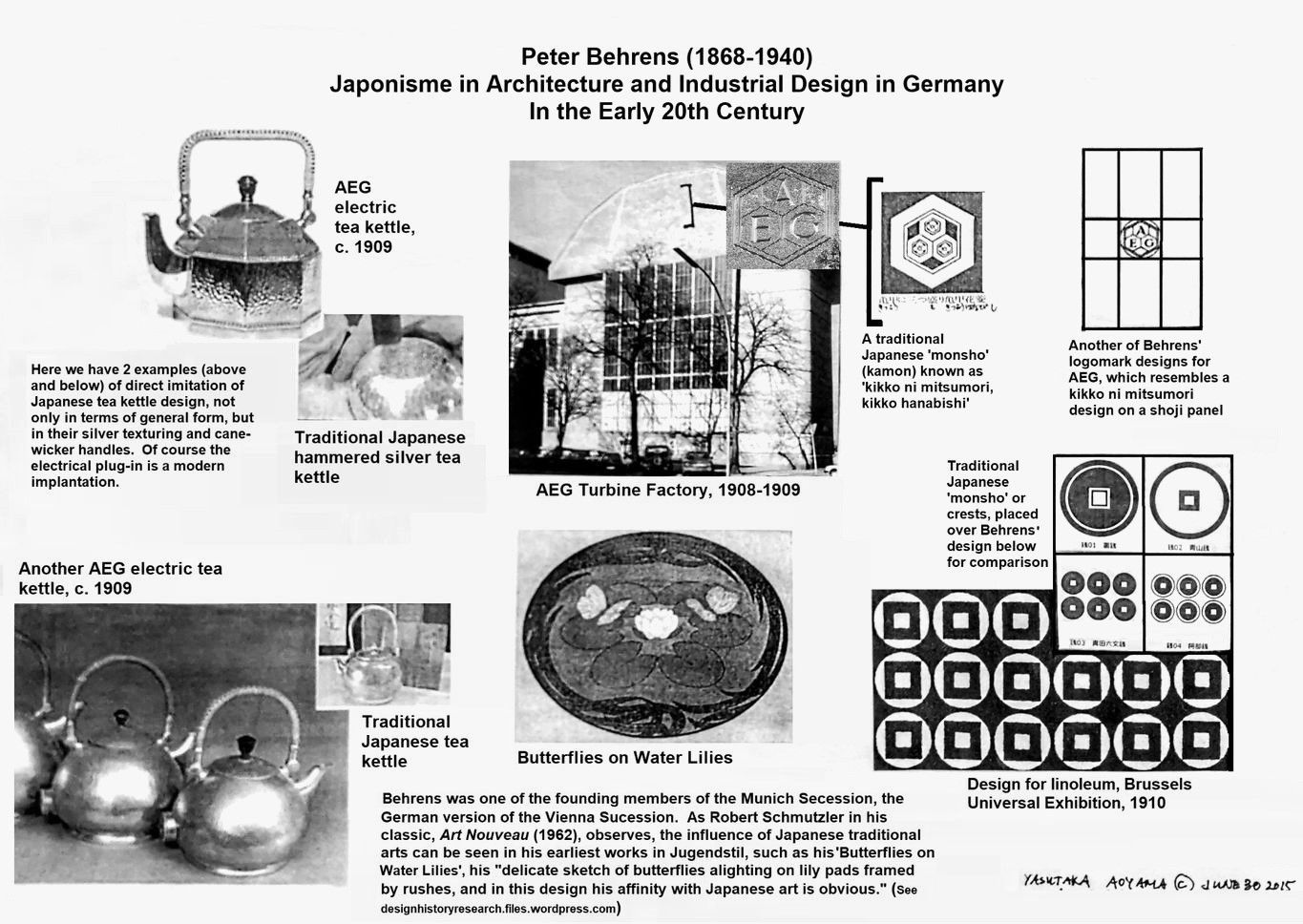
_______________________
Auguste Perret (1874-1954)
Lecture handout 2015.6.30, Architectural Juxtapositions, p. 44, revised 2024.5.23
Yasutaka Aoyama
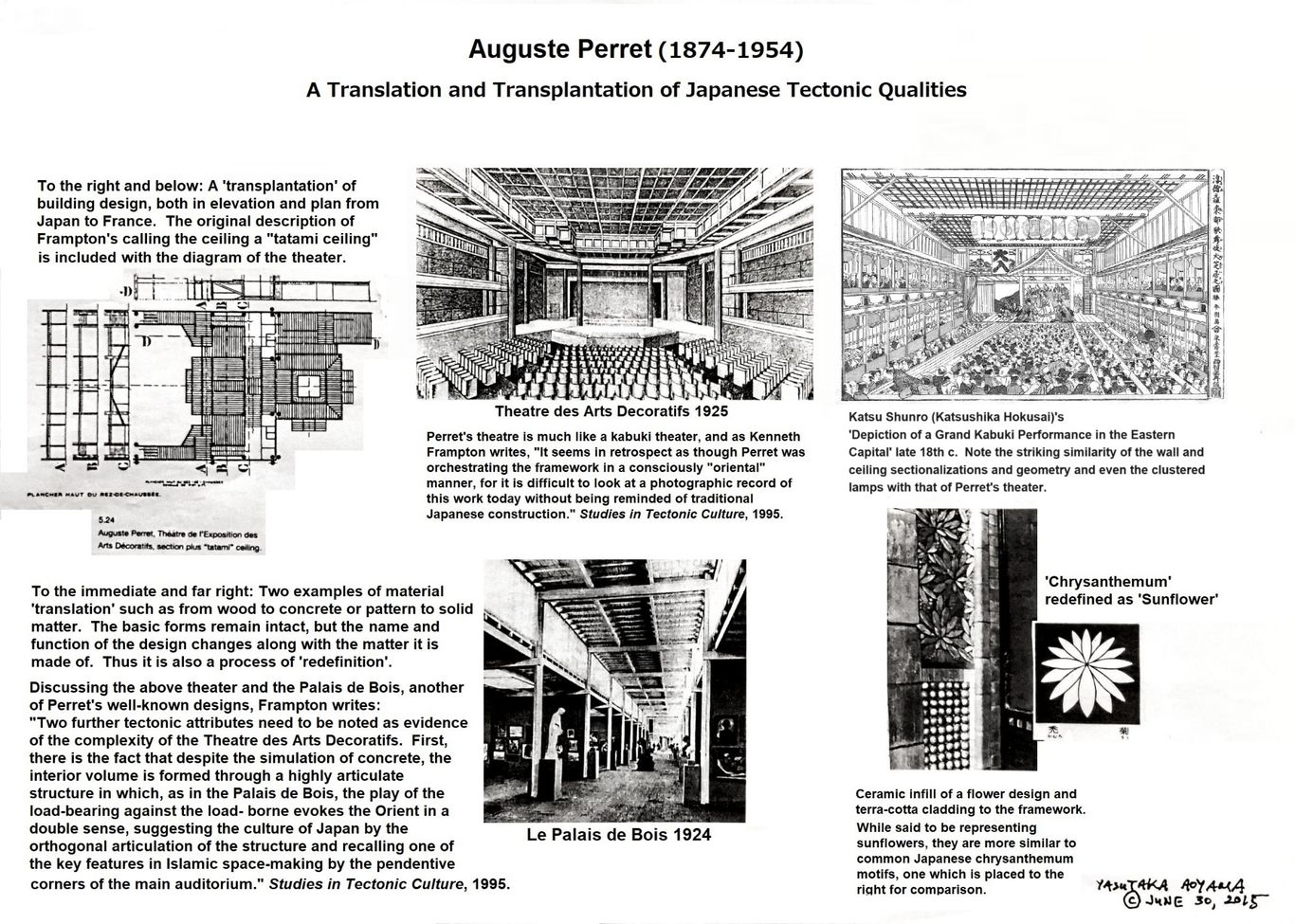
The following text added 2024.9.17.
The same kind of Japanese architectural characteristics of the repeating grid, whether reminiscent of the shoji (the gridded sliding screen door) or gotenjo (ceiling with gridded with interlocking framed square panels) or tatami (interlocking rectangular floor mats), in combination with finer inconspicuous Japanese decorative elements, is seen also in his façade design for the Garage rue Ponthieu, Paris (1905), one of his best-known buildings.
At first glance, from a distance, the large, dominating central cathedral rosette-like window does not give a Japanesque impression to the viewer. But that is the same with his apartment house on rue Franklin, Paris (1903) as well; it is only when one looks at the details of it close up that one sees distinctly Japanese decorative motifs embedded into the design (e.g. the example above of the sunflower/chrysanthemum motif that is distributed on the exterior of the rue Franklin apartment). The central rosette-like window glass panels of the rue Ponthieu facade, on closer examination, each section varying in the glass texturing, is analogous to Japanese kumiko (extremely intricate geometrically patterned wood fretwork) that is fitted into shoji screens, where the larger, thicker koshi (framing wood pieces) section off different types of kumiko patterns.
In other words, the whole front façade design is analogous to a giant shoji screen in which one fourth or so is often devoted to complex kumiko. Particularly in the early Meiji period, shoji designs started to veer off in varied directions in terms of composition and patterns though these are unfamiliar to most Westerners as well as to present day Japanese. Shoji came to be designed with a variety of whimsical motifs or shapes such as spiderweb designs, more centrally placed in the screen. While the intricate design of Perret's stained-glass windows of his Notre-Dame du Raincy may seem more Islamic or Indian in its ornamental style, and either may have been the greater influence there, for the works discussed here, and in his other works besides the church of Raincy, the composition of the gridwork along with other aspects of his designs are more akin to that of Japanese architecture.
Below is a limited sampling of shoji and ranma designs. These sorts of grids and patterns covered extensive 'wall' surfaces, with a wrap-around effect reminiscent of Perret's designs. Note that these pattern variations, numbering in the hundreds, if not thousands, usually had established names. This is something that indicates the traditional and widespread nature of this type of designing in Japan; what was commonplace in one culture may be celebrated by its novelty and rarity in another as modern and avant-garde.

Photo captions and sources to be added.
________________________
Edward William Godwin (1833-1886)
Anglo-Japanese Precursor to De Stijl
Prepared 2015.11.23, Architectural Juxtapositions, p. 45
Yasutaka Aoyama
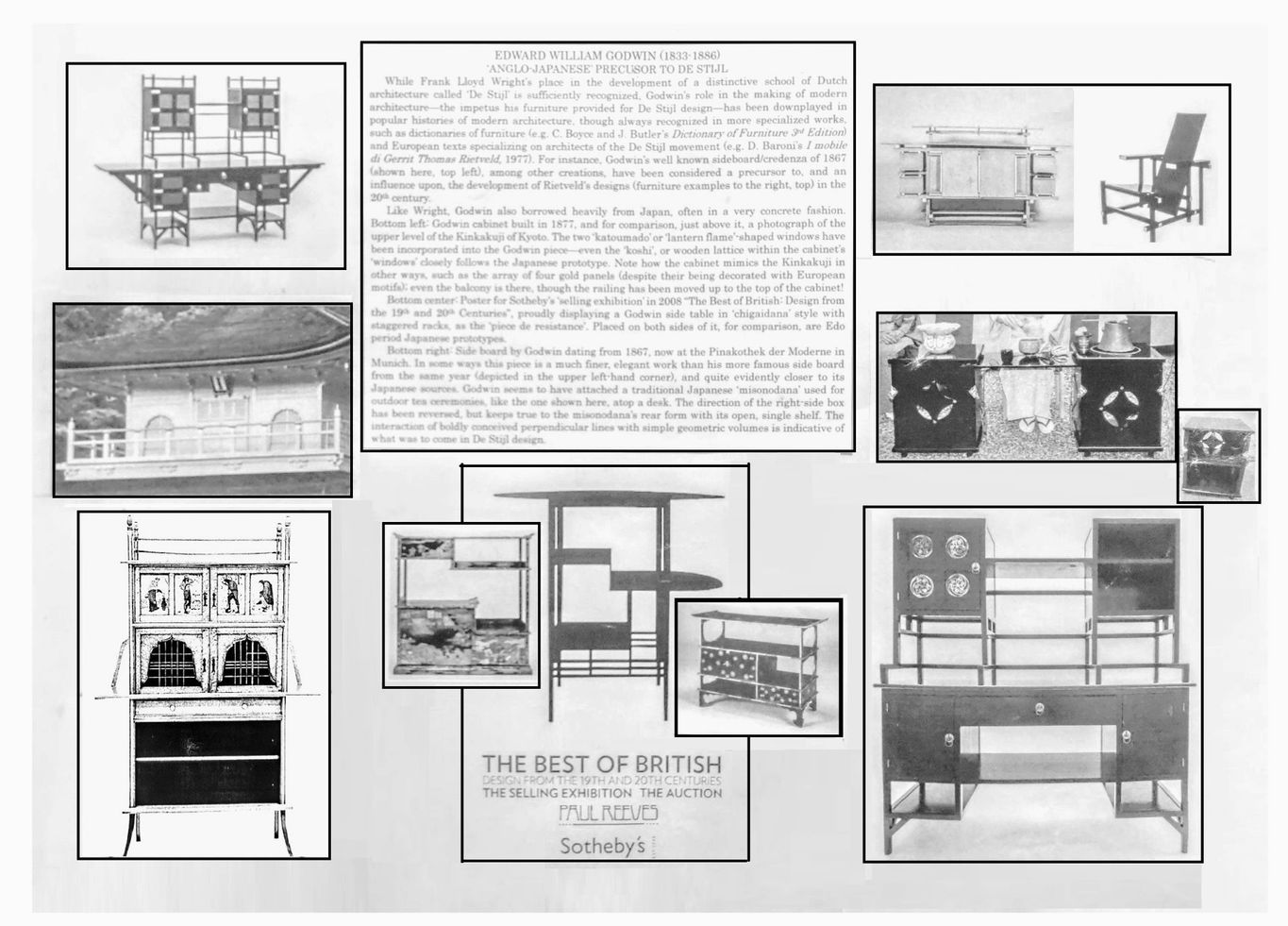
Key Points of Comparison
Left: Japanese traditional furniture, with 'chigaidana'. Right: Godwin furniture, in chigaidana style.
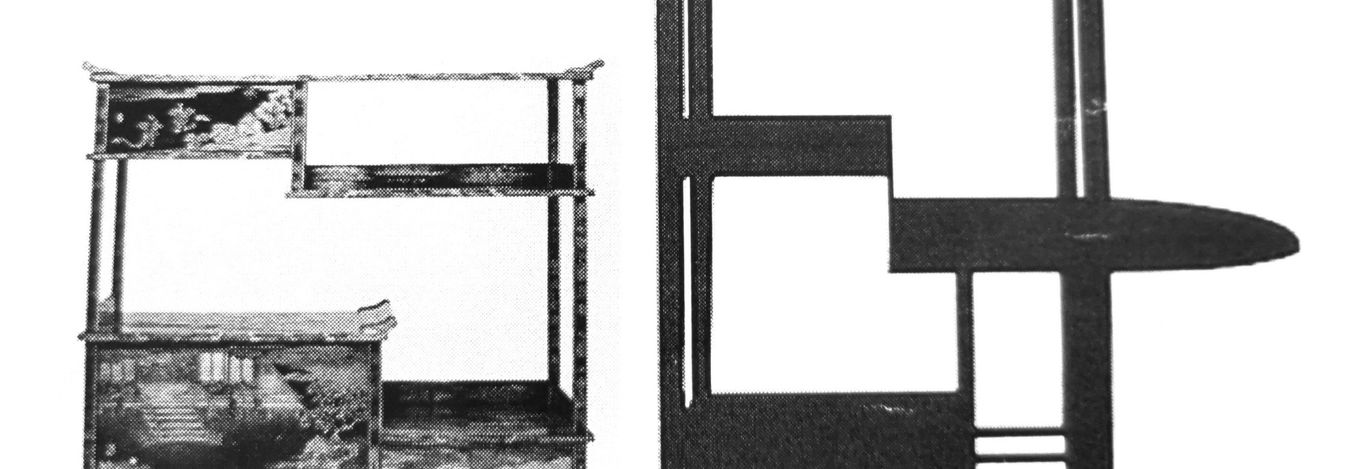
Below left: Kinkakuji upper level vs.top section of Godwin cabinet. Right: Japanese outdoor tea furniture with top section of Godwin desk.
Godwin's Art Furniture Designed by Edward W. Godwin
Title page of Art Furniture Designed by Edward W. Godwin, second edition, 1878. Note on the left (the back cover) the lady in the kimono, the chochin lamp from the ceiling, the 'koshi' gridwork high above, the 'karahafu' style arch, the thin 'hikido'-like walls (next to the kimono clad woman) and the gradations of floor height as at the Katsura Villa of Kyoto. To the right (the front cover) Japanese fans, cranes, and bamboo branches create a japonaiserie effect.
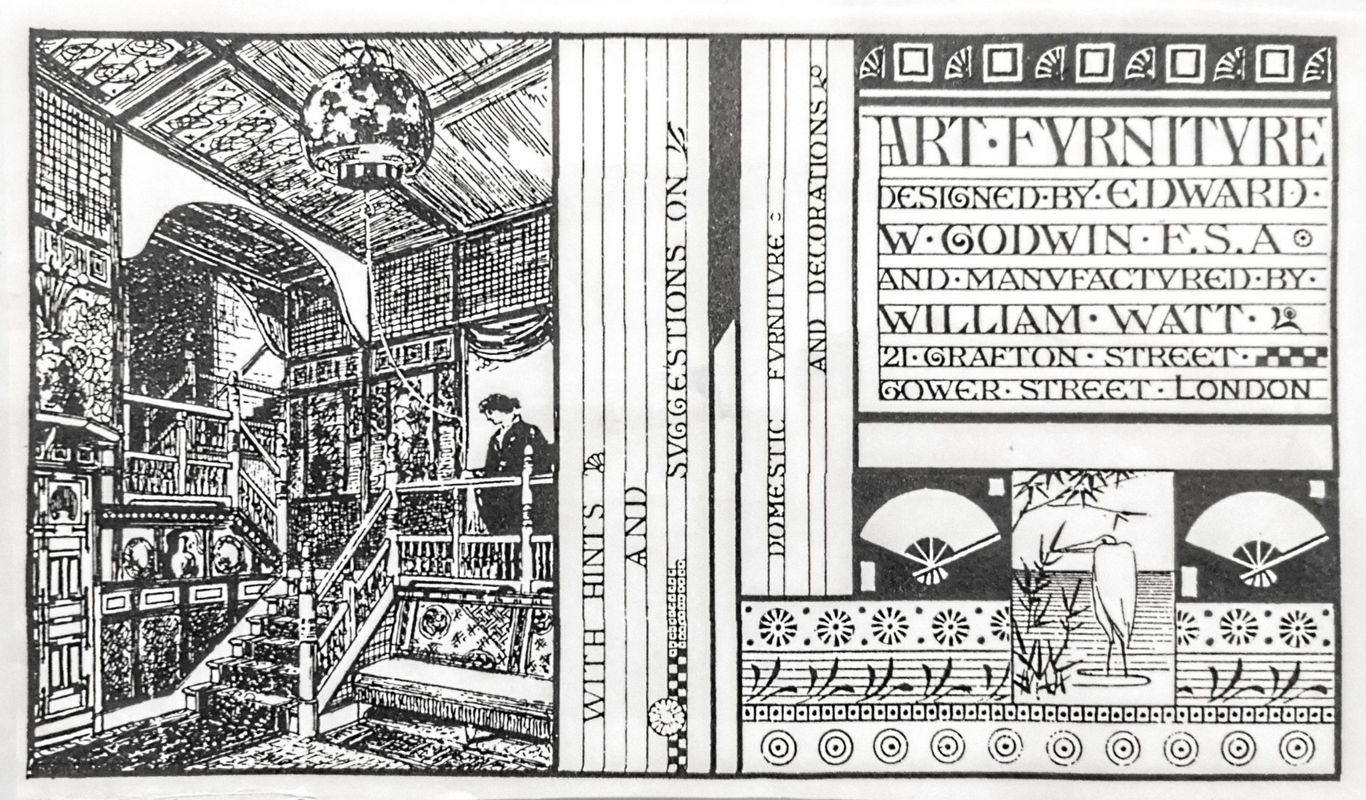
________________________
Uploaded 2023/5/10
Dante Gabriel Rossetti (1828-1882)
Kitagawa Utamaro (1753-1806) and the Pre-Raphaelite Discovery of a New Feminine Ideal
(The Wider Aesthetic Context of Architectural Japonisme)
Lecture handout 2015.10.12, and in Architectural Juxtapositions p. 36, site material added 2023 May, and 2024.5.26
Yasutaka Aoyama
"Rossetti was equally astonished and delighted with Japanese designs; their enormous energy, their instinct for whatever savours of life and movement, their exquisite superiority to symmetry in decorative form, their magic of touch and impeccability of the execution, carried him away."
William Michael Rossetti (Dante Gabriel's brother, in Some Reminiscences, vol. 1, London 1906, pp. 276-7)
While it is well-known that Dante Gabriel Rossetti and his circle of fellow aesthetes were keenly interested in Japanese art, in exactly what manner they incorporated those artistic principles is often left unmentioned. Indeed, British and Japanese discussions of Rossetti's japonisme usual conclude that the influence of Japan was limited to merely superficial aspects of his work, such as depictions of kimono fabrics in "The Beloved" or his Japanese style book bindings. Part of the reason is due to his brother William Michael, who, after recounting his brother's passion for Japanese art, was quick to add detracting comments and deny any serious Japanese influence:
"Assuredly, he did not suppose that the facial angle of the 'eternal feminine' of Japan, as represented (and very untruthfully represented) by her admiring countrymen, is to be accepted as the line of beauty; nor were his previous impressions revised as to how a human leg or arm or torso is constructed...Upon the colouring of the prints he looked with great satisfaction, as having qualities of force and saliency which no other nation could bring into play with equal effect; he said, however that the colouring is somewhat harsh -- which is true of a large number of Japanese works, though not of all."
William Michael Rossetti, Some Reminiscences, pp. 276-7)
Let us take a more considered look at that seemingly knowledgeable appraisal, which in fact is rather rhetorical in tone and somewhat contrived (if one knows a thing or two about ukiyo-e prints). Does not one receive the distinct impression he is trying to make light of any Japanese influence, even mocking what he calls "very untruthfully represented" female faces drawn by Japan's own "admiring countrymen"?
His point about Gabriel Rossetti's ideas of how to construct a human leg, arm, or torso being unaffected by Japan--yes this is most likely true--but how relevant is it? What about the emphasis on the neck and especially the female hand--which he leaves out--that came to play a prominent role in Rossetti's paintings? As for the rest of the body, since his figures were often richly draped, thus hiding (as in ukiyo-e prints) those other bodily constructions anyway, why bother to mention what doesn't really matter? And as for the harsh coloring, that is also misleading. The darker and brighter coloring was a latter trend of ukiyo-e art, from the mid-19th century onward due in good part to the introduction of European inks. In any case, everything indicates that Rossetti was interested in earlier prints, especially those of Utamaro, whose colors are softer and subdued--indeed, it might be said more so than those of Rossetti himself.
Thus there seems to be something of a mismatch here: on the one hand, unrestrained enthusiasm for Japanese art expressed by Dante Gabriel Rossetti and conveyed to us by his brother William Michael, an admiration so exuberant as to be still fresh in his brother's memory; and on the other hand, attempts, now many years later, at subtle mockery and contrived arguments against that object of admiration, with the effect of casting cold water on any notion of possibly meaningful influence.
Utamaro's 'Yoshiwara Suzume' (c. 1793-94) and Rossetti's 'Il Ramoscello' (or The Twig, 1865)
A prolonged look at the two pictures below should dispel any doubts as to whether Rossetti's enthusiasm for Japanese prints extended to their compositional features as well as to the expression of aesthetic ideals. Quite clearly it did. Regard first the peculiar, soft, languid depiction of the crossed hands, not only the pose and the fingers, but in the fleshy lengthened palms relative to the fingers, and without much surface detail. Just as important is what cannot be seen--the cutting out of view of the elbows and arms in the same manner and at the same locations in typical ukiyo-e fashion. Next note the delicate, intricate flower patterns in yellow-gold emphasized on the left shoulders, one on a fan, the other in a filagree ornament. Chromatically, it is clear how the schema of olive greens, golden yellow, black, and orange-reds in Utamaro are shared with Rossetti, if in different proportions for different features. (In fact, olive green, yellow, orange-red and black were the standard colors used in the earlier benizuri woodblock prints.) Both figures fill much of the picture in ukiyo-e style, with near monochrome backgrounds which enhance a sense of singularity and closeness of presence. Even small details have their parallels; Rossetti has a Japanese 'inkan' style stamp in the upper left-hand corner, and writing on both edges of the picture;--it was not until the introduction of Japanese art that Western artists would conceive of signing or labeling their paintings in that way, boldly at the top of the canvas. There is even something of Utamaro (as found in his other 'bijinga' pictures) in the manner of Rossetti's lips here. The keen observer will note further parallels. The fan has been replaced by a twig, but one wonders, why a twig? It does seem somewhat odd does it not (that perhaps, an infrared scan of the painting might reveal traces of a folded fan sketched, but then considered too much of a give away and painted over as a twig)?
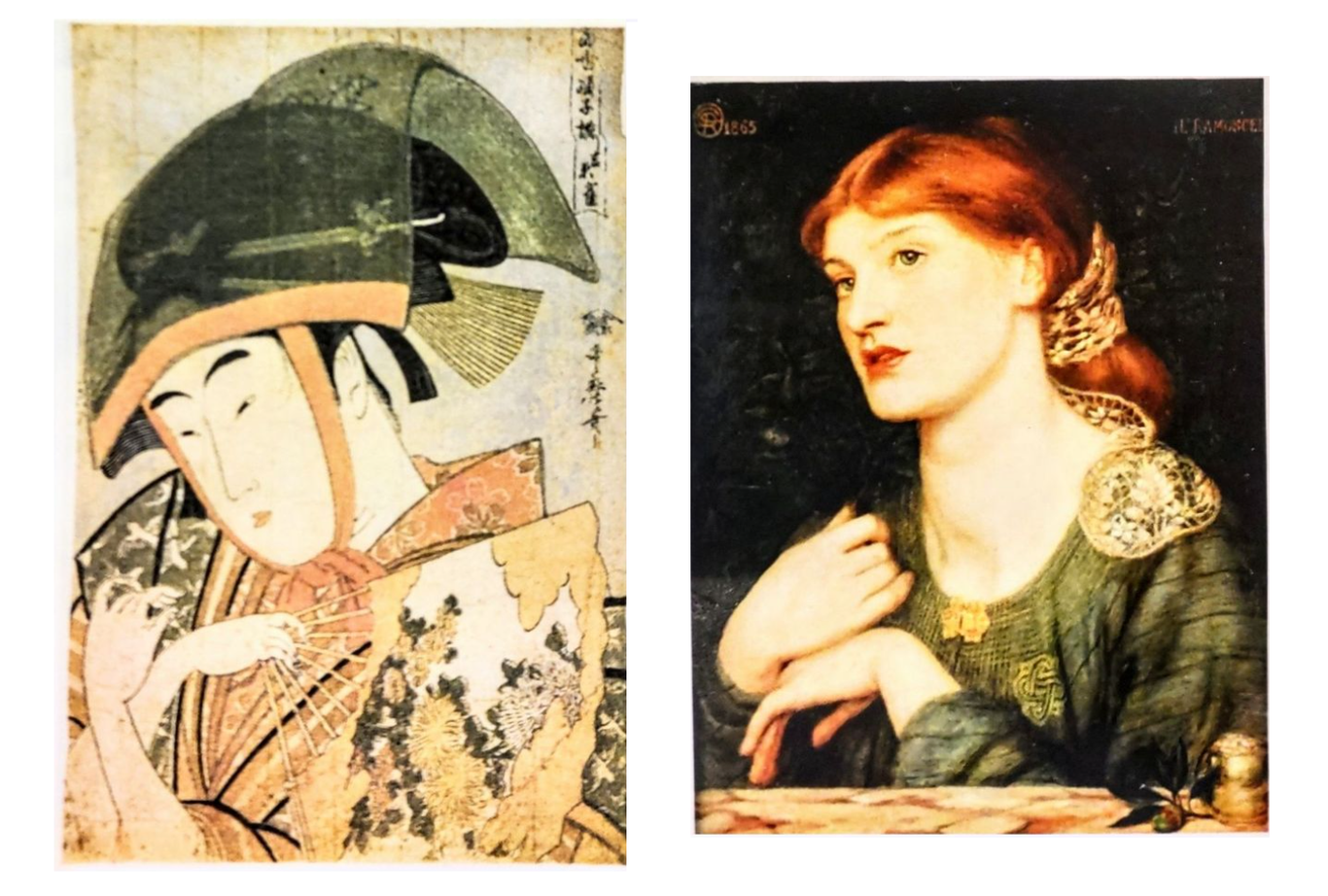
Utamaro's 'Tosei-odoriko-zoroe: Yoshiwara Suzume' (当世踊子揃: 吉原雀) and Rossetti's 'Il Ramoscello' (The Twig)
There are affinities between Rossetti's woman and those of other Utamaro bijin as well. His picture is in one sense, though relying fundamentally on the Suzume above, a composite of Utamaro style femininity. Note, for example, in the comparison below the similar loose hold of the lips and the hands, both conveying a peculiar lack of muscle tension and strength...
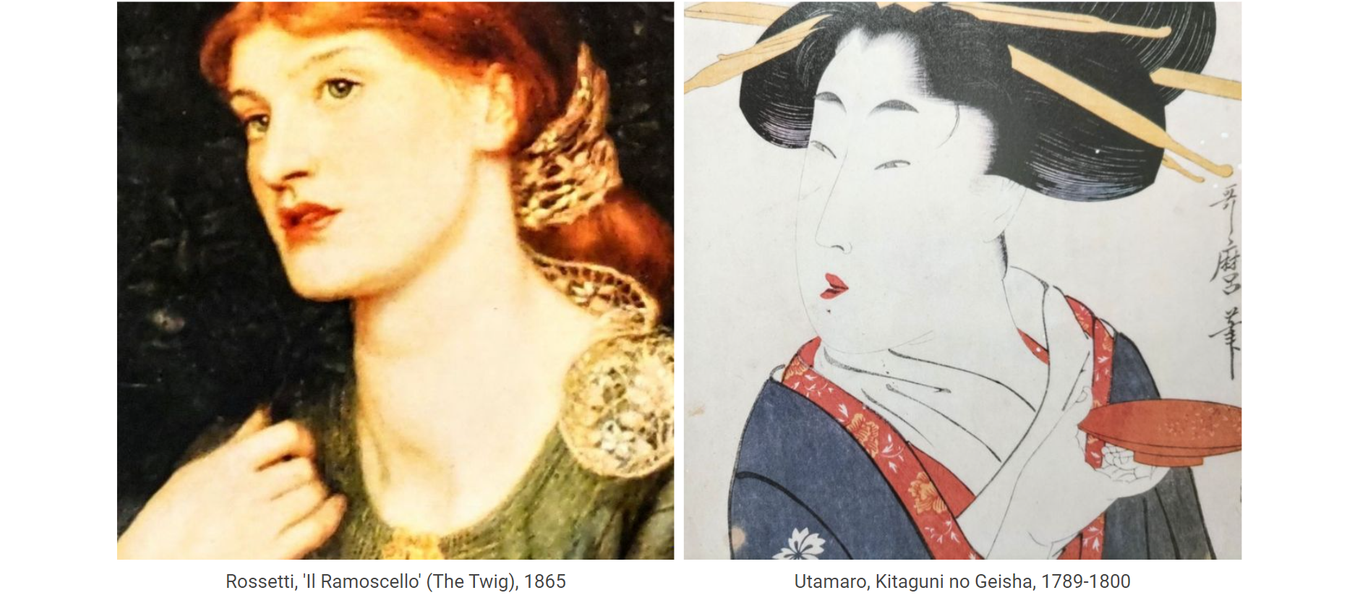
Utamaro's 'Hyakkaen Suzumi' (late 1780's), other Bijinga, and Rossetti's 'The Beloved' (1865-6)
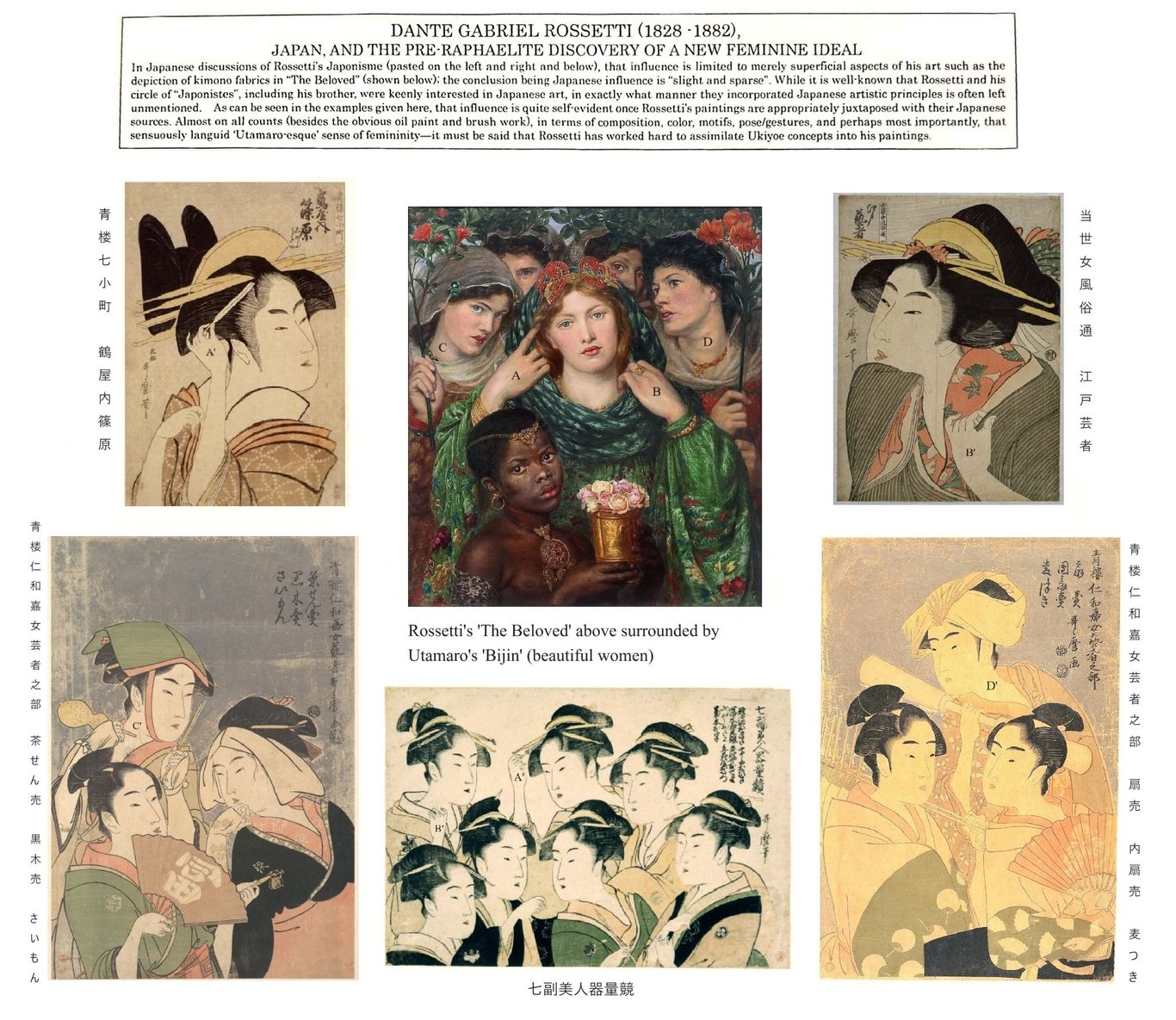
Rossetti's 'The Beloved', surrounded by various Utamaro bijinga prints for comparison of hand and neck poses. Clockwise from the upper right hand corner: 1) Toseijo Fuzokutsu, Edo Geisha (当世女風俗通, 江戸芸者); 2) Seiro-niwakaonna Geisha-no-bu: Ogiuri, Uchiwauri, Mugitsuki (青楼仁和嘉女芸者之・ 扇売, 内扇売, 麦つき); 3) Shichifuku Bijin Kiryokurabe (七副美人器量競); 4) Seiro-niwakaonna Geisha-no-bu, Chasenuri, Kurokiuri, Saimon (青楼仁和嘉女芸者之部: 茶せん売, 黒木売, さいもん); 5) Seiro-nanakomachi, Tsuruyauchi-shinohara (青楼七小町・鶴屋内篠原).
Compare A to those marked A'; B to those marked B'; and so forth. Note how Utamaro often has, among his clusters of beauties, one woman slightly to the back with an angled neck holding some object as in C' and D' just as Rossetti has his beauties C and D, standing similar placed a shoulder behind, each holding a stem of flowers. Dozens of other examples could be provided of Utamaro poses analogous to those of Rosetti's. The Twig and The Beloved are simply two examples of what can be found in other Rossetti portraits of women, where parallels like the ones discussed here, as well as other correspondences with Utamaro are to be found. There are other aspects of japonisme in his work, and even the original picture frames for Rossetti's pictures often have monsho (Japanese crest)-like patterns on them.
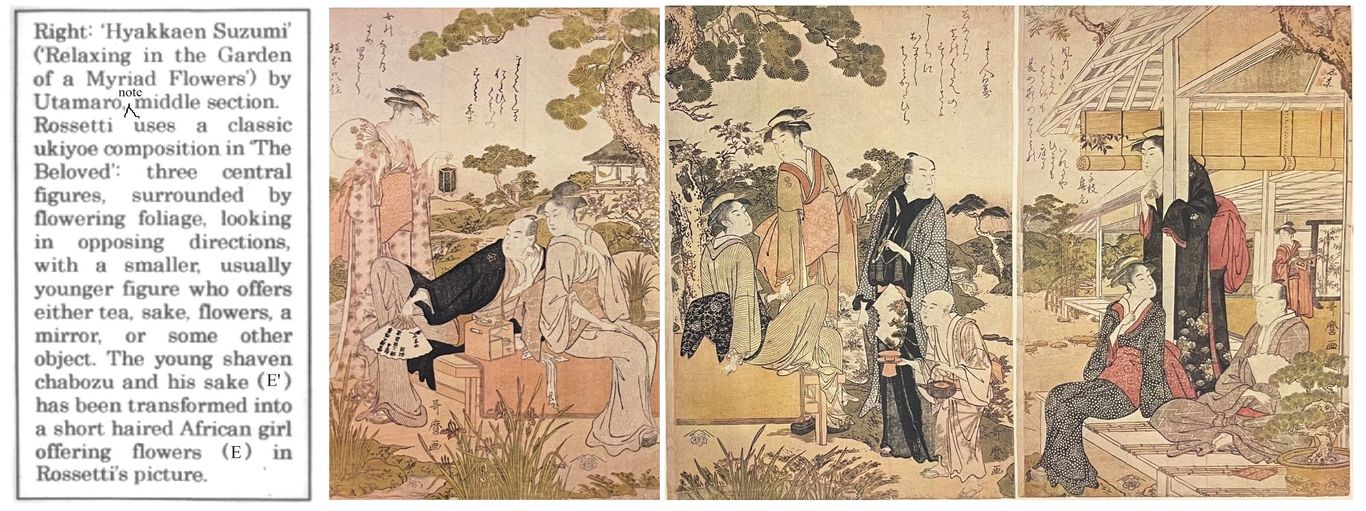
Utamaro's 'Hyakkaen Suzumi', again in greens, yellows, orange-reds and black, with some brown in the branches; necks bent in various directions; a boy presenting them with tea on a tray, his head at a much lower level (sections and illustrations modified from Aoyama, Architectural Juxtapositions, 2016). While the figures in the Hyakkaen Suzumi are distributed along three panels of a triptych, the various figures often mirror the kind of hand and neck poses that we have been highlighting in this discussion. Both paintings are of floral gardens, though only plucked flowers and stems are visible in Rossetti. Other Utamaro prints may be of interest when considering 'The Beloved', such as 'Furyu-uta-no-kayu Hagidera (late 18th century).
Below: Close-up of the corresponding section of 'Hyakkaen Suzumi' and 'The Beloved' pointed out above.
Like the green kimono which The Beloved wears, the Japanese element has been sufficiently modified so as not to be readily recognized. Yet like the kimono, those elements can be discerned, if scrutinized carefully.
Text to be added.
The following added 2024.9.14
In his section 'The Japanese Style from Rossetti to Beardsley', speaking first of Whistler, Robert Schmutzler, well-known historian of Art Nouveau, writes:
“Rossetti’s interest in Japanese art, not being quite so one-sided, attracted less attention. Yet, in 1865, Rossetti also dressed one of his voluptuous feminine figures, The Beloved, in a rich gown embroidered with Japanese bamboo leaves; moreover, this fair and utterly English bride illustrating the Song of Songs wears in her hair a fantastic Chinese ornament made of gold and red enamel. Stimulated by Whistler, Rossetti, in the sixties, also began to collect Chinese porcelain and Japanese woodcuts. Long before Whistler and Morris thought of illustrating books, Rossetti thus designed in 1865 the binding for Swinburne’s drama, Atalanta in Calydon, in Japanese style, so that by virtue of its striking binding alone the book would attract the attention so greatly needed by the still unknown poet.
The balance of this design, its effective use of space, the circular ornaments arranged near its edges, the theme of the two disks partly covering each other, and of the peacock feathers with their contrasted curves, are all inspired by Japanese lacquerware.
Did this bookbinding have an immediate influence? It strikes one as too alien to its period, though not to Rossetti’s art. With the frame for Ecce Ancilla Domini, Rossetti had indeed come surprisingly close to the Japanese style on his own, even though the specific flavor of the latter was still lacking. But this binding design has such a flavor, as well as the delicately worldly elegance that belongs to all English creations in the Japanese style which later influenced the more cosmopolitan or metropolitan style of Art Nouveau.”
---Robert Schmutzler, Art Nouveau, 1977, pp. 25-26
Anyone with lingering doubts about Rossetti's japonisme should also read Tanita Hiroyuki's papers: 'A Note on Rossetti's "Hoxai", ' The Journal of Pre-Raphaelite Studies, Nov. 1985, vol. 6, no. 1; 'An Introduction to the Study of Japanism in Great Britain, 1851-1862' (Japanese), Hikaku bungaku nenshi (Waseda Univerisity), 1986, no. 22; and 'Ancient Greece and Japan---An Aspect of Japanism in Great Britain' (Japanese), Sansai, 1988, no. 494.
________________________
Transferred 2024.3.20 to '17th and 18th Century Japonisme'
Observations on the River Wye
by William Gilpin
The Case for the 18th Century Sino-Japanese Origins of the 'Picturesque'
The End
Of delivered lectures and Architectural Juxtapositions I
________________________
________________________
Undelivered Lectures
&
Material for Architectural Juxtapositions, Vol. II
Uploaded 2023.5.6, transferred 2024.3.20 to '17th and 18th Century Japonisme'
Constantijn Huygens and William Temple
The 17th Century Japanese Origins of the Picturesque in Garden Design
________________________
Undelivered lecture handout, Kyoto University, prepared 2016.6.17, web presentation under construction
The Japanese Origins of Axonometric Projection
in the Fukinuki-yatai Depiction Technique
Yasutaka Aoyama
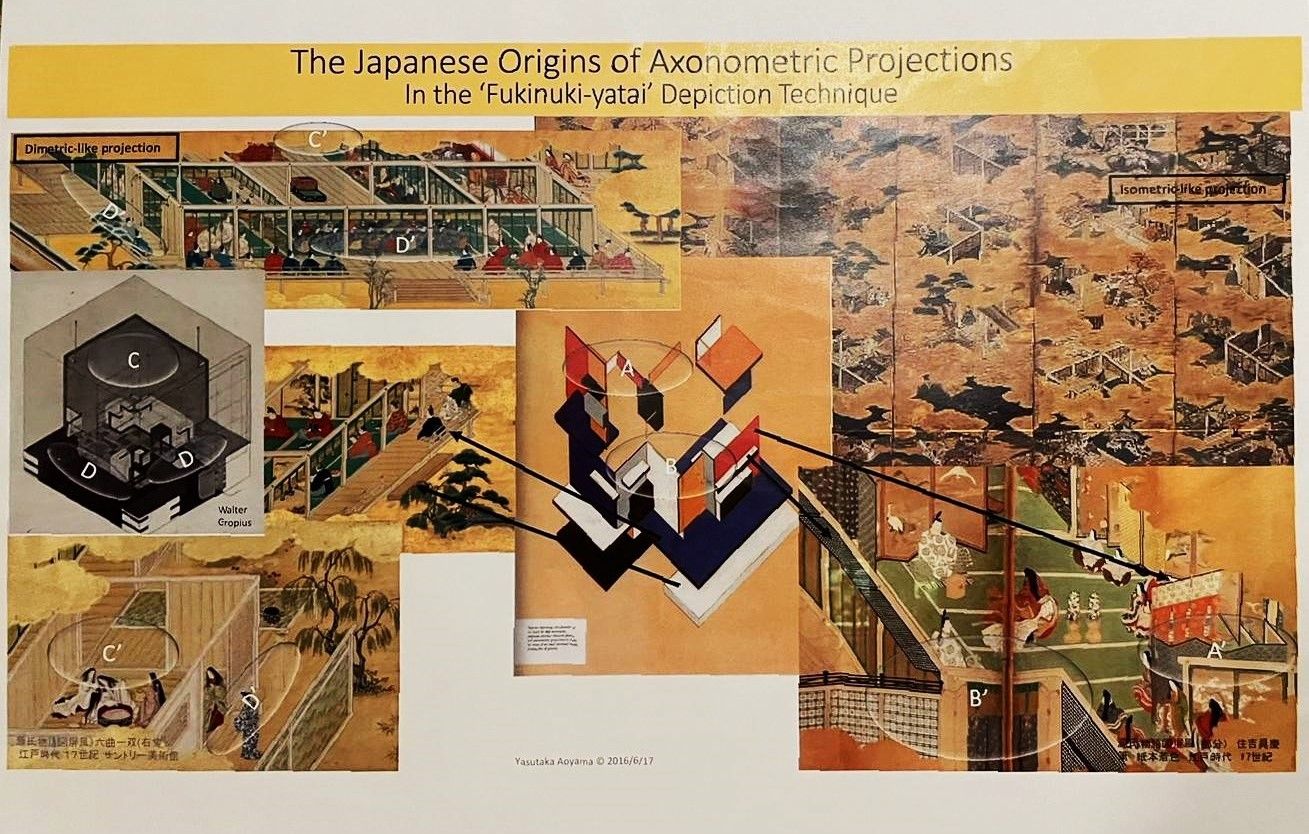
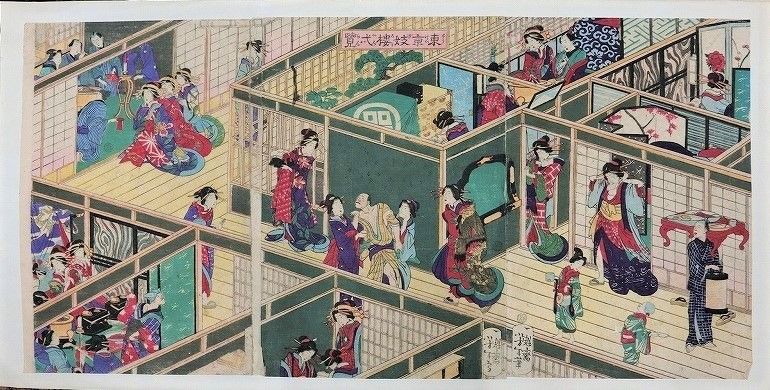
________________________
Uploaded 2023/5/5, under construction
Peabody and Stearns
Shingle Style 'Castles' and Byobu Painted 'Castles in the Sky'
Kragsyde vs. Jurakudai
Probing the Possible Sources of Architectural Whimsy
With Additional Examples from W. R. Emerson, Lamb and Rich, and John Rex
Yasutaka Aoyama
Idyllic Japanese farmhouses were probably not the only Japanese inspiration for the American Shingle Style. A fine comb comparison of Peabody and Stearns' 'Kragsyde' mansion (1883-1885) with byobu screen depictions of the 'Jurakudai' palace/castle of 16th century Osaka reveals intriguing correspondences adds spice to our appreciation of architectonics across space and time.
Besides the Isaac Bell House by McKim, Mead, and White and the Mary Fiske Stoughton House by H. H. Richardson, Kragsyde, by Peabody and Stearns (the leading architectural firm of its day alongside the aforementioned), is one of the most well-known examples of what Vincent Scully of Yale University coined 'The Shingle Style'. The growing freedom of plans and sometimes exaggerated asymmetry not only in plan but in elevation, with offset entrances, wide covered porches or walkways ('engawa' or 'fukinuki roka') was a continuation of a process that started with Stick Style homes, also influenced by Japanese architecture. And once again, as in the Isaac Bell House, we find the use of paired sliding doors ('hikido') which when retracted allow the rooms to become unified llarger spaces following the age old principle of entertaining in Japanese reception rooms ('zashiki'). In the case of Kragsyde, the abundant parallels in terms of conceptions and detail with Toyotomi Hideyoshi's 'Jurakudai', a combination of palace and castle, makes for great food for thought.
Robert S. Peabody, of Peabody and Stearns, once read what Vincent Scully called "a revealing paper" at the Boston Society of Architects entitled 'A Talk about Queen Anne’ but which was really meant to be about the broader movement of American architecture at the time. The paper ends with a paragraph of which we will quote the first sentence: "Thus I have meant to show that this movement is very strong and well established in England, and consequently of importance to our designers; that bric-a-brac, and Japan, and India, and classic mythology, and odds and ends, inspire it quite as much as Queen Anne; and that after all it is a curious support to our American eclectic notions." (in The Shingle Style and the Stick Style, revised edition, 1971, p. 42). Scully's footnote regarding this statement starts with: "The 'Japanese' reference is also important, as indicated earlier."
Among the various architectural sources of Peabody and Stearns, it is the Japanese element which Scully singles out for re-emphasis. For while India (not without reason 'the crown jewel of the British Empire'), was of influence in England, as seen in Brighton Pavilion, Japan loomed larger in the American architectural imagination, the land which America was the most instrumental in opening to Western nations. As for 'classic mythology', of course familiar, and thus lacking in stimulative power as a novel design source, except in combination with other things different. And 'bric-a-brac' was simply a catch-all phrase for a miscellaneous array of ornamentation, like 'odds and ends' which supplied little in terms of motivating inspiration; it was a term to characterize the look of things after they had been completed, rather than a wellspring source of design ideas.
It was thus Japan in particular that provided a truely new aesthetic ideal in architecture, as it did for the rest of the arts at the time. And in the case of Kragsyde, that impression is not limited just to the 1) Japanesque helter-skelter of intersecting roof lines or 2) the general 'bending' of the plan, but also 3) the large diagonally placed 'double-decker' roofed bridge-like feature on a solid stone wall formation; 4) the existence of another extending, but more lighter raised walkway, at an off-angle to the more ponderous arched edifice, with also 5) a major and minor protruding bays situated in-between the two bridge-like extensions; as well as various minor details, such as 6) the castle window shutters jutting straight out above the windows; ---all are repeated with similar effect to a Japanese castle by somewhat different means in Kragsyde---excepting (speaking only somewhat tongue in cheek) 7) Kragsyde's 'tenshukaku' or high tower, while also rimed with a balcony, takes a polygonal, rather rectangular form.
For perspective on this idea, it may be of help to compare Kragsyde with other American houses with Japanese castle-like designs of the same period.
Perhaps closest to Kragsyde in many respects of plan, elevation, construction material, and site, is William Ralph Emerson's W. B. Howard House (1883-84) on Mount Desert, an island in the state of Maine. As Scully describes it, "High on one of the wooded hills of that island, it echoed with its light, shingled masses and pointed gables the forms of the mountains and pine trees around it. Eminently pictorial, it was a 19th-century romantic landscape painter's ideal of an upland dwelling, perched lightly above misty valleys, its rough texture and warm colors in harmony with the colors and textures of its terrain. ... As many of the best houses under consideration, there was a great sense of openness to the vista, of a plunge into the voids of space. In this the Howard House is similar to Peabody and Stearns' Kragsyde, but looser, less Richardsonian. It is playful in such features as the porch above the billiard room section, covered by an open gable roof supported on shingled piers and with lattice work in the open gable. The undercurrent of influence from Japanese frame construction, which had been present ever since the midcentury, gave this porch a vaguely Oriental aspect." (The Shingle Style and the Stick Style, Revised Edition, 1971, pp. 110-111) The Howard House also shares with Kragsyde the Japanese castle-like qualities in its 'stacking' of structures of different shape one on top of the other at different angles, on a base of stone; and the open gable roof with its lattice work plays the counterpart to a tenshukaku.
Just to mention one more example, Lamb and Rich's House at Navesink Park, NJ (1882) is also reminiscent of Japanese castle architecture, with its solid, sloping stone base and gables of different sizes facing in various directions and its extensive, outward extending porchways and extensive latticework. Japanese castles were also distinguished by extremely solid, sloping stone bases upon which more delicate structures were built, unlike traditional European castles where stonework of similar nature rose from bottom to top. Most castles in Japan had free plan, sprawling wooden palaces on the massive stone platform as well plastered keeps with grilled windows and latticework, crowned by a relatively small tenshukaku.
Text to be added.
John Rex (with unidentified Japanese architect), Wyle House, Madera County, CA, 1961
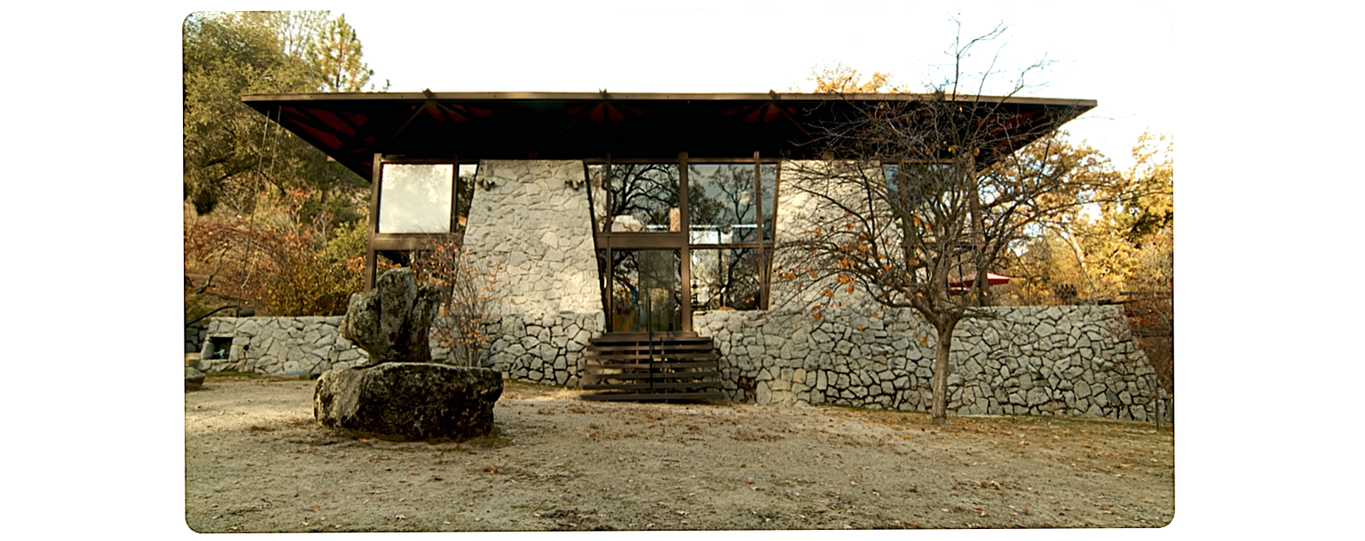
"The Modernist design of the house, tinged with a Japanese-esque influence possibly from one of John Rex's draftsmen, features expansive floor-to-ceiling windows and a distinctive umbrella-shaped roof." (Open Space, 'Mid-Century Modern Glass House on a 3,000-Acre Ranch | House Tour', Premiered Jan 18, 2024, Youtube). While cut off in this image, the Japanese castle style curving of the stone wall can still be made out on the extreme right. Even without it, the stacking of irregular stonework, the use of it as a platform for a structure with extending eaves gives it a recognizably Japanese look. The stone sculpture to the left in the foreground is also reminiscent of stone monuments placed on castle grounds; also cut off from view to the left are more rock formations recalling zen rock gardens. There is much about the interior which also echoes Japanese architecture, such as the exposed wood framing of the ceiling combined with round chochin like lamps, for example.
Text to be added.
Undelivered Lectures and Material for Architectural Juxtapositions II continued in Architectural Japonisme II - V.
________________________
De Stijl Japonisme from Doesburg to Rietveld
Piet Mondrian (1872-1944)
Japan within the Artistic Foundations of De Stijl
Lecture handout 215.11.23, Architectural Juxtapositions, p.12
Yasutaka Aoyama
"...the true prehistory of Mondrian after 1919 must be sought in the traditional architecture of Japan. Structure, division of space, mood, certainly; but also the precision with which the wall unfolds like a musical score..."
Decio Gioseffi, eminent Italian art historian, quoted in Maria Grazia Ottolenghi, L'opera completa di Mondrian, 1974
"Mondrian's works after his breakthrough to abstraction suggest a new kind of Japanese reference, unconscious on Mondrian's part: it does not relate to woodcuts but to the basic idea of Japanese domestic architecture. The rhythmic use of standard components--squares, vertical or horizontal rectangles, narrow and wide proportions, standardized floor mats related to wall surfaces, the black 'sticks', vertical and horizontal, in 'suspended equilibrium' (Piet Mondrian, Neue Gestaltung, Bauhausbucher no. 5, Munich, 1925), and the avoidance of curves and ornament: all these are already present in the Bosen Tea-Room (Daitokuji Temple) in Kyoto..."
Klaus Berger, Japonisme in Western Painting from Whistler to Matisse (1980, translation 1992)
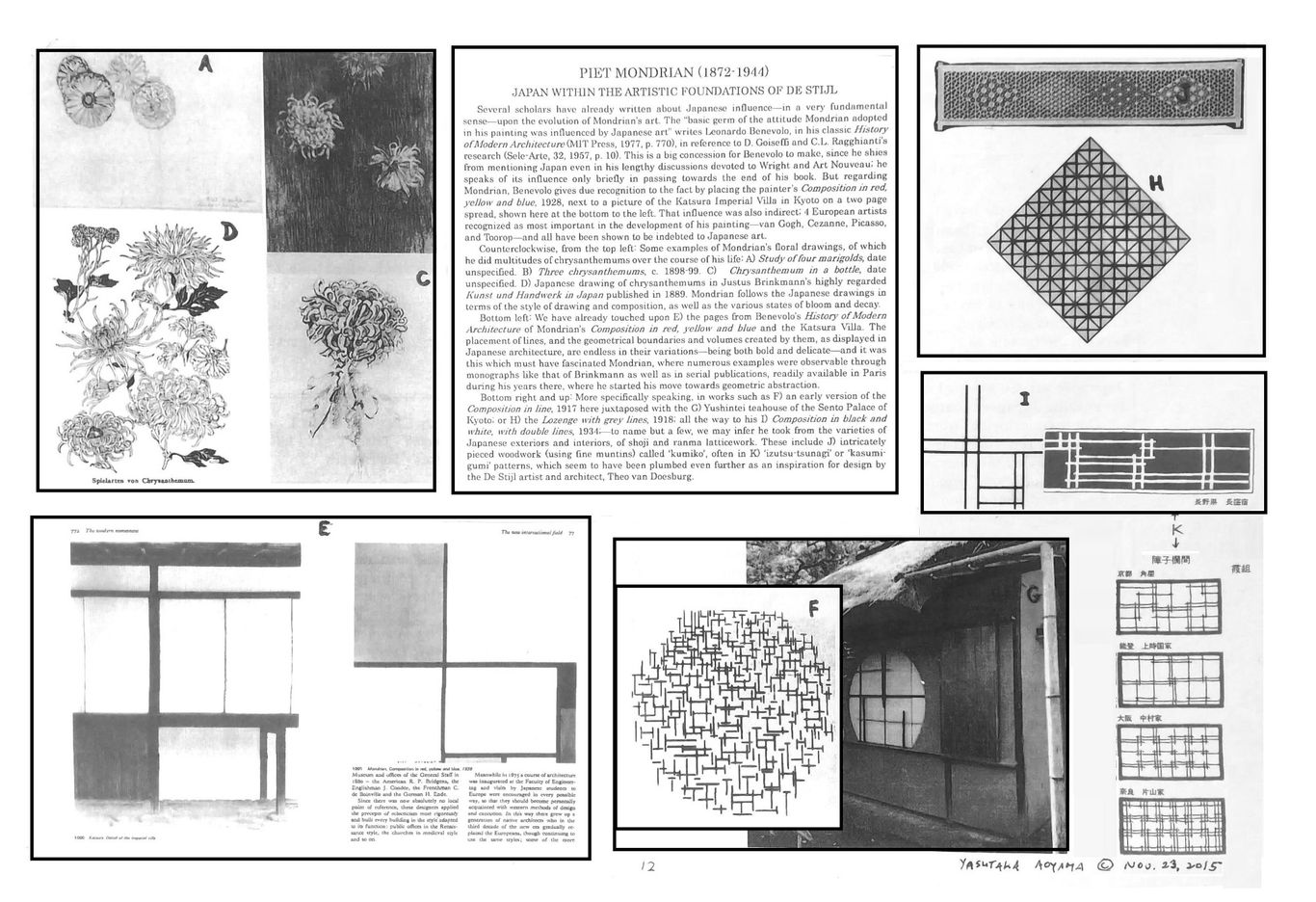
Japanese designs from Kawashima Choji, Nihon Minka Design Shusei. Tokyo: Nihon Tosho Center, 2013.
Theo van Doesburg (1883-1931)
Vilmos Huszar (1884-1960)
Frederick Kiesler (1890-1965)
De Stijl and Japan as the 'Empire of Lines'
Lecture handout 2015.12.5, Architectural Juxtapositions, p.13
Yasutaka Aoyama
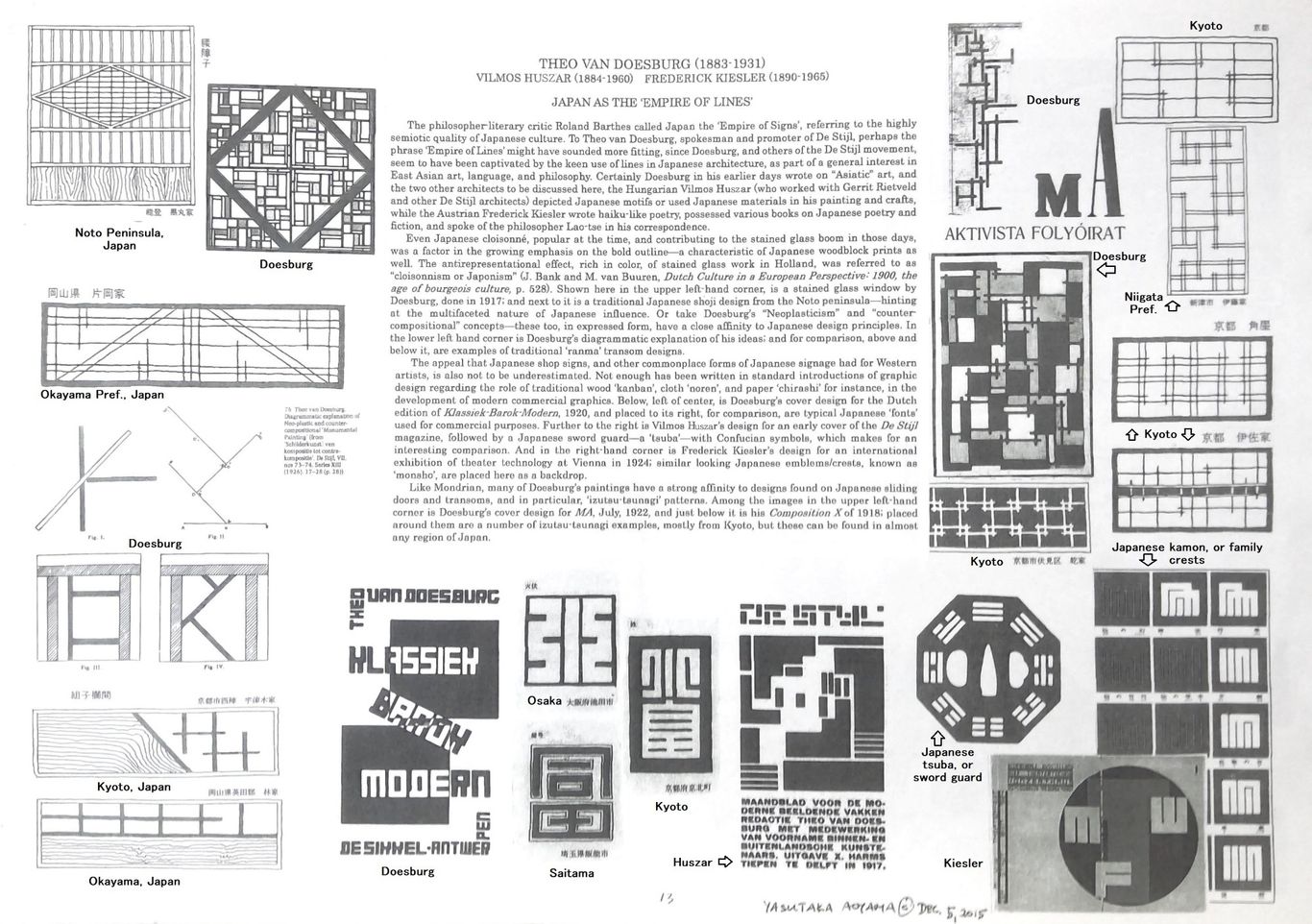
Japanese designs primarily from Kawashima Choji, Nihon Minka Design Shusei. Tokyo: Nihon Tosho Center, 2013.
Gerrit Thomas Rietveld (1888-1964)
Part I: The Schroder House and the Okoshi-e Design Process
(Lecture handout 2015.12.5, Architectural Juxtapositions, p.14)
Yasutaka Aoyama
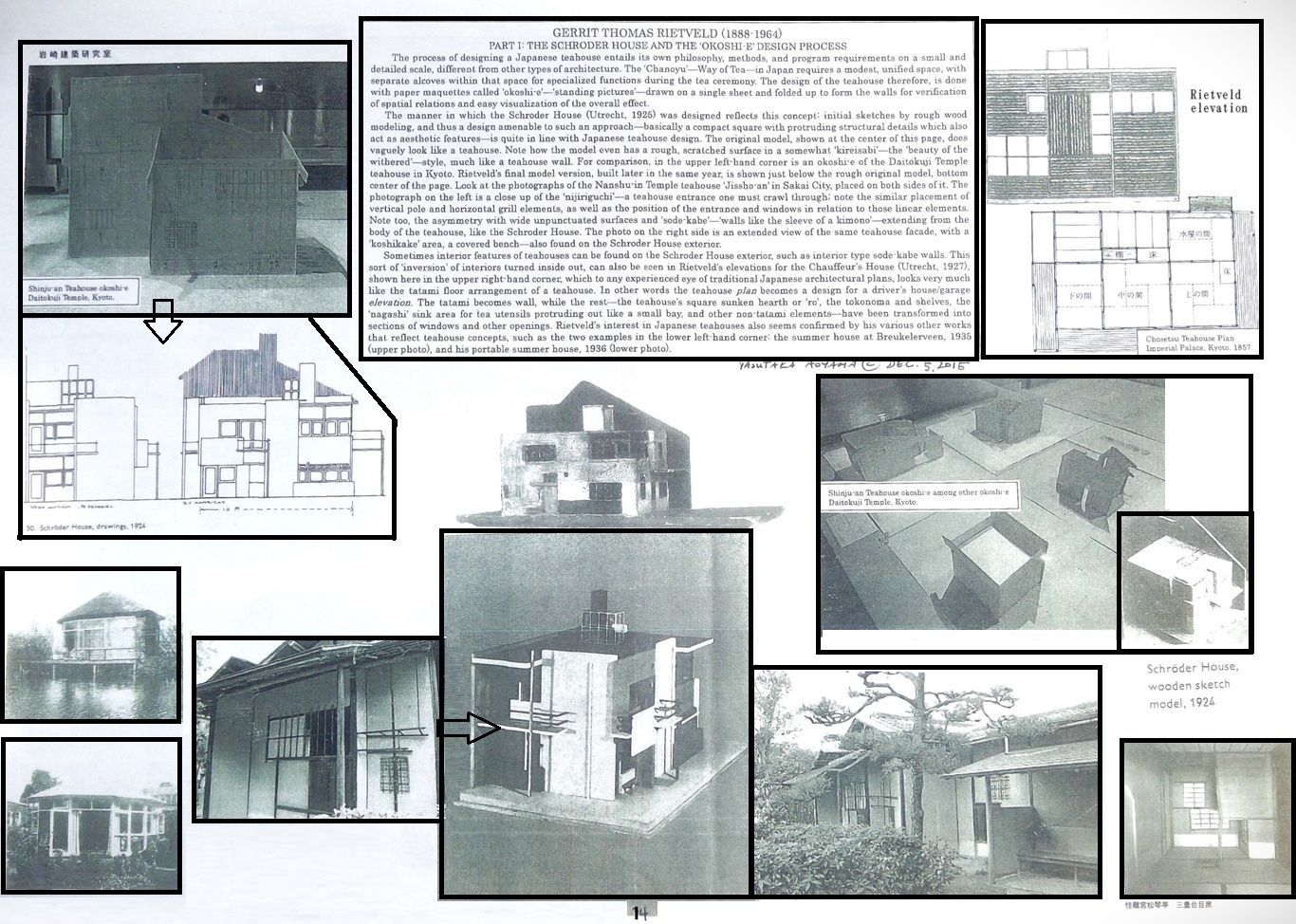
Gerrit Thomas Rietveld, Part II
De Stijl Composition, Color, Detail--and the Japanese House
Lecture handout 2015.12.5, Architectural Juxtapositions, p.15
Yasutaka Aoyama
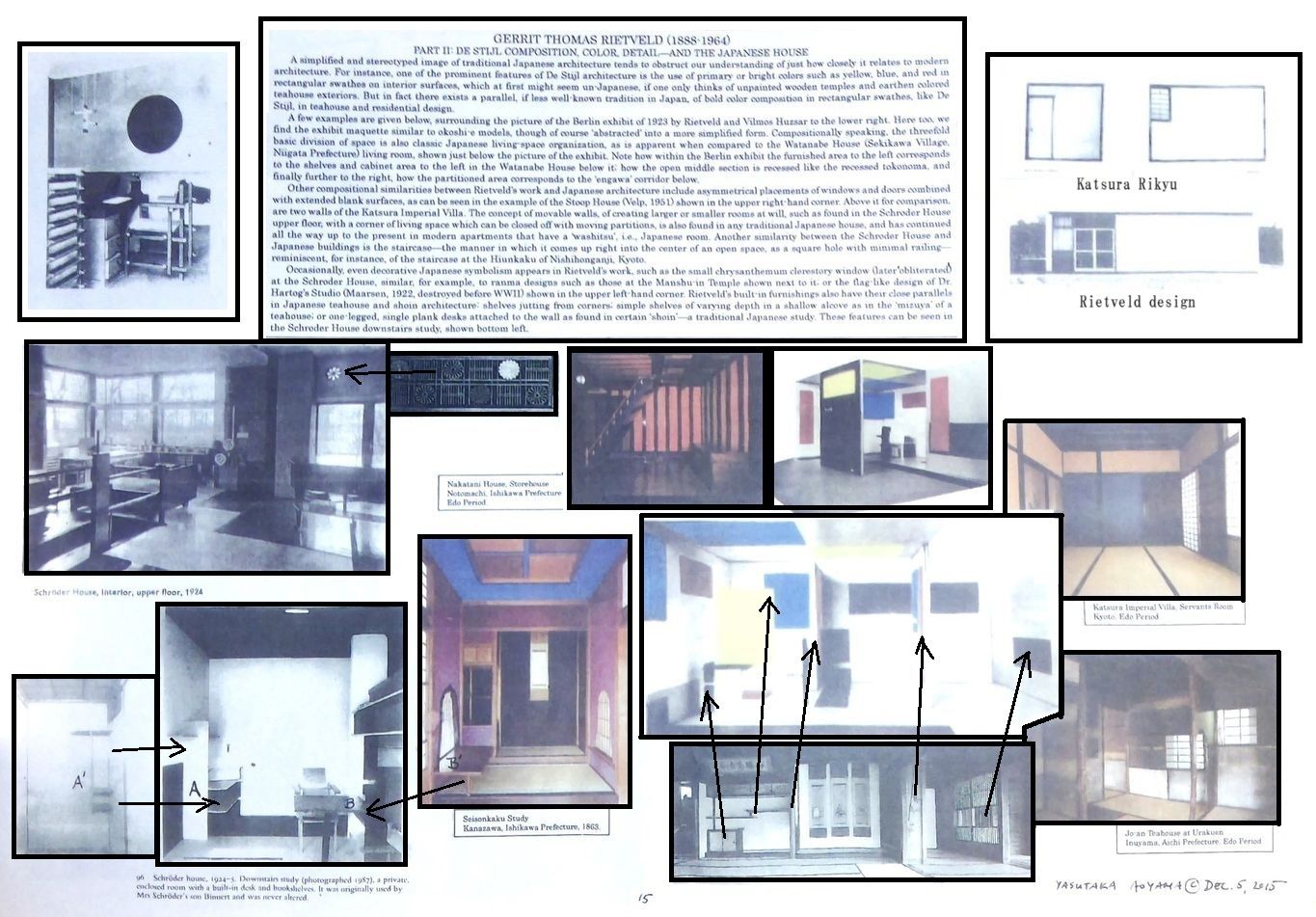
Below are some more Japanese interiors done in the latter 19th century, juxtaposed with a De Stijl style interior. As already shown in the examples above and another offered below right (Iwashina School, Matsuzakicho, Shizuoka, 1880), traditional room interiors often had surface sections that were contrastingly colored, which was made easy by the fact that wall and ceiling surfaces were never continuous, but always clearly demarcated by thick exposed wooden pillars and beams, and often of varying depth. This was not so easily done in traditional Western interiors, where walls, ceilings, and floors were often continuous and uninterrupted across wide surfaces. In Japan, all six surfaces of a room were clearly divided into sections, whether by sliding partitions, walls, cabinets, and tokonoma; the ceiling in exposed wood panels or squares with crosswise beams; and the floor too of course, in tatami mats. And with the coming of the Meiji period, there was a trend towards incorporating glass windows into architecture, at times colored, sometimes in bright geometrical patterns, often covering extensive surface areas, as they took the place of shoji sliding panels, as the example shown below left (Oyama Shrine, Shinmon third floor, Kanazawa, Ishikawa, 1875). In the center is an illustration of a Doesburg (interior) and Rietveld (furnishing) collaboration, from De Stijl, 3e Jaargang (3rd Year), No. 12., Bijlage (Appendix/Supplement) XIV.
An accessible source of Japanese interior designs were ukiyoe prints of such interiors. Most of the Meiji era print artists produced scenes of rooms with bright, clearly sectionalized multi-colored walls and thin partitions/sliding panels, and these were especially popular from the 1870's to the 90's, among whom Tsukioka Yoshitoshi was particularly adept at illustrating (discussed in Architectural Japonisme III), though many other artists drew such pictures including Toyohara Kunichika and Yosai Nobukazu. Below are examples from Nobukazu and Yoshitoshi, juxtaposed with the 'Spatial Color Composition' by Gerrit Rietveld and Vilmos Huszar at the Juryfreie Kunstschau (Unjuried Art Show), Berlin, 1923.
As the japonisme researcher Anna Basham notes, "The similarity between Japanese architecture and modernist Dutch architecture is noted in Balbus, or the future of architecture (1926) in which the author and architect, Christian Barman discusses a modern Dutch house which has no fixed internal walls; rooms are created by the use of movable screens and compares this to the Japanese house: 'This is, of course, how houses are mostly constructed in Japan, but it should be remembered that, though the Japanese house is built entirely without walls, whether internal or external, it yet exhibits the utmost complexity and formal refinement in the general lines of its design. The plan is there, though only its skeleton is permanent, and wall-divisions are made movable ...' " (From Victorian to Modernist: the changing perceptions of Japanese architecture encapsulated in Wells Coates' Japonisme dovetailing East and West, doctoral thesis, University of the Arts London, 2007, pp. 196-7).
Left: chair in black lacquer with gold-yellow painted flat cut ends, by Gerrit Rietveld, 1917; right: chair in black lacquer with gold finished flat cut ends, the 'Sekishitsu Tsukinokinokosho' of the Shosoin storehouse in Nara, 8th century. While the Shosoin chair does not use red, other such Nara and Heian period chairs did; the more recent (but according to ancient tradition) Emperor's chair in the Shishinden, Kyoto Imperial Palace, for instance, does. Black, red, and gold are a classic color combination in Japanese lacquered furnishings.
J. J. P. Oud (1890-1963)
Jan Wils (1891-1972)
Vilmos Huszar
Frederick Kiesler
De Stijl: The Wider Circle and Eclectic Japonisme
Lecture handout 2015.12.5, Architectural Juxtapositions, p.16
Yasutaka Aoyama
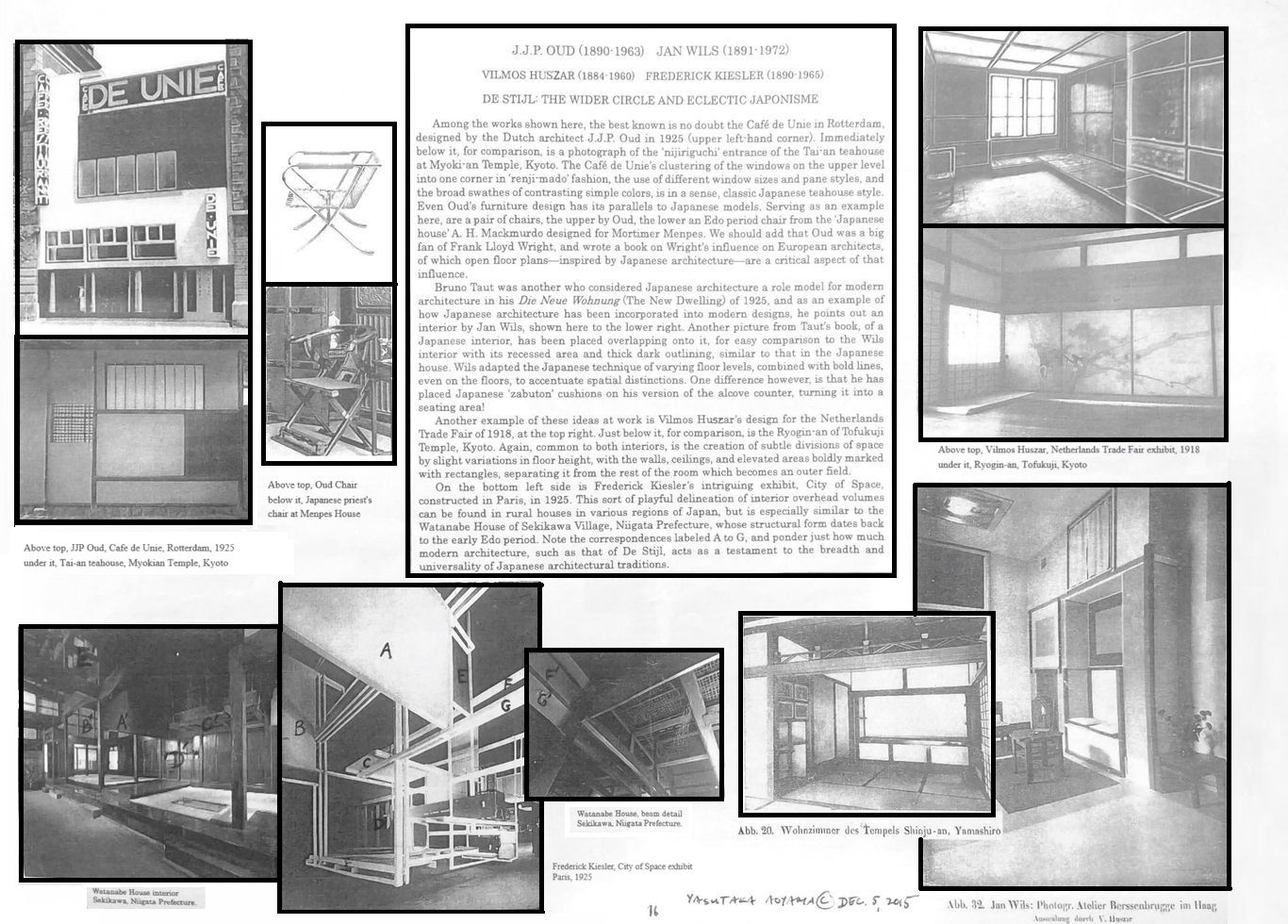
________________________
Walter Gropius (1883-1969)
Japan as Another Rome (or Greece), Part I
Lecture handout 2015.12.12, Architectural Juxtapositions, p.17
Yasutaka Aoyama

Walter Gropius
Japan as Another Rome (or Greece), Part II
Lecture handout 2015.12.12, Architectural Juxtapositions, p.18

Walter Gropius
Japan as Another Rome (or Greece), Part III
Lecture handout 2015.12.12, Architectural Juxtapositions, p.19

Walter Gropius
Excerpts from his essay 'Architecture in Japan'
Additional class reading material, Kyoto University, 2015.12.12

Walter Gropius
Japan as another Rome (or Greece), Part IV
Project Clubhouse, Buenos Aires, Argentina (1931–1932)
Originally uploaded 2023, revised 2024.5.31

Above: Walter Gropius (with Hanns Dustmann and Franz Möller), Project Clubhouse sketch, for a Buenos Aires resort, with Japanesque gridded geometric facades, thin and long extending wings along or out onto the water, and curved, extending roofs. Japanese architecture, when sketched in outline form, often yields similar impressions, as with the example of by Kawahara Keiga of Kiyomizu-dera Temple, shown below.

Kawahara Keiga, Kiyozumi-dera, Siebold Collection
Gropius' sketches of the Buenos Aires Clubhouse project---the concepts contained within the plans and elevations echo in various ways the architectonics of Itsukushima Shrine, Hiroshima Prefecture, including a monument placed far out in the water, for viewing from the building.
Photos from Tokyo National Museum et al., Von Siebold and Japan (1988) and Harvard Art Museums, 'Displaying Latin America' (2019).
________________________
Johannes Itten (1888-1967)
of the Bauhaus
Japan in his Art and Pedagogy, Part I
Lecture handout 2016.1.7, Architectural Juxtapositions, p. 20
Yasutaka Aoyama
No history of early 20th century architecture or art education be complete, nor as colorful in more senses than one---without mentioning Johannes Itten from Switzerland, a central figure at the Bauhaus in Germany, and founder of his own school nearby, the Itten Schule. A photo of him dressed in the robes of a neo-Zoroastrian cult, or quotes from his book on art and color asserting that the most profound chromatic truth reveals itself only to 'devotees' wth the proper spiritual preparation, add spice to otherwise turgid textbooks of architectural theory.
But such talk diverts us from more important influences from the East that had a meaningful impact on the content of art production at the Bauhaus, at the Itten Schule, and that by Itten himself. The 'Mazdazan' cult he adhered to was more of a health and dietary lifestyle program than an ancient religion possessing a concomitant artistic tradition, and the actual role model for his approach to art was more East Asian than Persian, more Daoist and Zen than Zoroastrian. He was interested in the writings of Lao-tse and Buddhism since his youth; and as he would write in his latter years, as it it is so in Chinese painting, "heart and hand must be one" and that to study Japanese panting is to "master the perception of objects to the heart and from the heart to the hand" (Mein Vokurs am Bauhaus, 1963). In fact, the Nanga style Japanese painter Shonan Mizukoshi and Yumeiji Takehisa, a pioneer of modern watercolor painting in Japan, both taught at Itten's school---Mizukoshi in 1931 and Takehisa in 1934. "Brush drawing with sumi-ink" for instance, became part of the Itten Schule curriculum by 1932. During the morning, a 30 minute gymnastic and singing session, (reminiscent too of 20th century Japanese custom), was followed by 30 minutes of free drawing with sumi-ink and brush. Yoshimasa Kaneko of Kochi University has written valuable papers on the subject, and Eva Streit (2015) has followed with a section on Yumeji in her book on the Itten School.
Shown below, together with plausible Japanese artistic models, are a few examples out of many that reflect Japanese influence in Itten's own work (and his art instruction, included is a student work done in his class)---some of which he even signed in Japanese "一天", phonettically equivalent to "Itten", which translated means "One Heaven".
Note: The two lower illustrations with Japanese captions are: left, a section of a painting of the goddess Kichijoten (8th century), and right, a section of the painting 'Yashokurodaizu' (18th century) by Yosa Buson, depicting Kyoto's Higashi-yama area, both from the The Art Museum of Japan published by Shogakukan.

Johannes Itten
Japan in his Art and Pedagogy, Part II
Lecture handout 2016.1.7, Architectural Juxtapositions, p. 21
The Japanese influence seems to come from a variety of sources, not infrequently from the north-western seaboard of Japan, where a rich tradtion of arts and crafts thrives in the prefectures of Niigata and Yamagata. Sometimes Itten's work follows the Japanese model closely, such as in the case of his hammered brass bowl, dating back to 1914, which is almost identical to octagonal bowls and pots of Tsubame beaten copperware ('Tsubame-tsuiki doki'). At other times, he has transferred the design of a certain medium, such as that of a kimono textile, to a different artistic medium---for instance, to a watercolor painting.

An article on the Bauhaus and Japan: Keshav Anand, 'How Japan’s Imperial Architecture Influenced The Bauhaus', Something Curated at somethingcurated.com. Visited May, 2024.
________________________
C. F. A. Voysey (1857-1941)
Part I: Exteriors
Perhaps Best Described as a 'Tibeto-Japanese' Melange
Architectural Juxtapositions, p. 22
Yasutaka Aoyama
Voysey's creative sources have not been sufficiently investigated. While his interiors can be evaluated within the context of the general trend of japonisme, his exteriors, while exhibiting elements of Japanese architecture, also exhibit commonalities with Tibetan, or more widely, Himalayan architectural forms, available, for instance, in the 1783 paintings of Bhutan dzongs by Samuel Davis.
The Tibeto-Bhutan parallels aside, circumstances and relationships of Voysey point to a link with Japanese art. For instance, Voysey, on the recommendation of his friend Arthur Heygate Mackmurdo (known for his involvement with Japanese interiors most notably that of the Mortimer Mempes House discussed later in this section), tried his hand at designing wallpaper, carpets, and textile designs, often using motifs which were very likely taken from katagami designs, an example of which is shown in Katagami Style (2012, supervised by Mabuchi Akiko, Director of the National Museum of Modern Art, Tokyo) of a poppy flower motif for a decorative fabric (c. 1894, exhibit #2033). The 1890's was a time when publications on Japanese design became readily available, and the astonishing diversity and dramatic visual impact of katagami attracted designers in all fields, including architects.
The following added 2024.9.14
Robert Schmutzler, a leading historian of Art Nouveau in the English-speaking world, in his classic Art Nouveau (1962,1977), after commenting on how Voysey was influenced by Arthur Heygate Mackmurdo, writes:
“However, for Voysey as an architect, Japanese influences were perhaps even more important, though they are scarcely recognizable as such in his work. One of his most interesting works, the tower-like house in Bedford Park [shown below, center] that he finished in 1891, is an exception. The light roof with its low gradient, the concave curved roofing of the oriels, the thin metal supports that seem to raise the roof over the body of the building, the unusually small windows, and the one stressed bull’s-eye window are not outright Japanese forms; but the graphic, abstractly ornamental, and asymmetrical character of the surfaces, the contrast in black and white between the apertures and the white-washed walls, not to mention the frieze-like disposition of various groups of windows under the thin horizontal ledges, all clearly reveal the relationship to Japanese architecture, easily recalling Japanese teahouses and small temples, as for example Voysey’s similar but lower and longer country houses, which are a particular national achievement of English art.” ---Schmutzler, Art Nouveau, 1977 abridged edition, pp. 128-9.
Yet we should add that those elements which Schmutzler categorizes as not obviously Japanese forms, as a low gradient roof, concave curved roofing, thin supports that raise the roof over the body of the building; or the bull’s-eye window---are in fact common features of traditional Japanese architecture, though not necessarily found together in one building. Even the small windows could be considered so, if we think of Japanese castle architecture. Indeed, the whole structure resembles a Japanese castle in various respects, including the frieze-like disposition of various groups of windows under the horizontal ledges, the white washed walls and their thick appearing aspect, and the contrast of black and white, though this is shared with Tibetan and Bhutanese architecture as well.
As to which inspired Voysey, Japan or Tibet/Bhutan in this case, either or both are possible; but as so much of his other architectural work reflects Japanese elements, both in his exteriors and interiors, as well as in his other designs, with hints such as “Tokyo” (wallpaper, 1893), the former seems more likely. Furthermore, models of Japanese castles were exhibited in Britain and on the Continent in world expositions and privately collected, and paintings and prints of castles abounded in England by the time of Voysey’s designing the Bedford Park house. On the other hand, Tibetan/Bhutanese models were scarcer though existing in sketches and paintings by a few, but we would not like to close the door on the possibility. It is an intriguing parallel, and at the very least it deserves mention as enriching our global perspective on modern architecture, even if there is no causative connection.

Below: An example of early Meiji era architecture, the Tsukiji Hotel, Tokyo, 1868. This was a hotel built for Western visitors. There are aspects of its design reminiscent of Voysey. Novel architectural forms were being produced in abundance in Japan from the late 1860's onward to the early 20th century, that precede the appearance of similar forms in the West. It might be said that much of the reputation for originality of certain architects in Europe or America in those days depends on an ignorance of the building activity going on in Japan at the time.

Below: Photos pasted side by side from the author's scrapbook, on the left is a Voysey designed house, on the right a Japanese castle 'yagura' (a corner tower and storehouse/sentinel quarters combination). Despite obvious differences, there is an affinity of general conceptualizations between Japan's and Voyseys' architecture.

C. F. A. Voysey (1857-1941)
Part II: Interiors
Architectural Juxtapositions, p. 23

________________________
Greene and Greene
Charles Sumner (1868–1957) & Henry Mather (1870–1954)
Part I: The Physical and Spiritual Presence of Japan
Lecture handout 2015.11.5, Architectural Juxtapositions, p. 24
Yasutaka Aoyama
The Greene brothers, Charles Sumner and Henry Mather, are considered the primary representatives of the American Arts and Crafts Movement of the early 20th century, with Charles Sumner, the elder brother, being the principal creative force behind their work; and it was Japan in turn, more than any other artistic source, that fed his creative imagination.
In the words of Charles Robert Ashbee, of English Arts and Crafts renown, "I think C. Sumner Greene's work beautiful; among the best there is in this country (meaning the USA). Like Lloyd Wright the spell of Japan is on him, he feels the beauty and makes magic out of the horizontal line, but there is in his work more tenderness, more subtlety, more self-effacement than in Wright's work."
Vincent Scully, the pre-eminent historian of 19th century American architecture wrote: "Their use of materials---rough wood, cedar shakes, and cobblestones---also grows out of the use of natural materials of the shingle style [a Japanese influenced style according to Scully] but in a sense exaggerates it, insisting obsessively upon the total articulation of each element. Also significant in their work is a strong oriental influence, the apotheosis of that insistent relationship with Japanese framing and spatial techniques which had been important since the 70's [1870's]." (The Shingle Style and The Stick Style, Revised Edition, 1971, p.157)
While Henry-Russell Hitchcock, usually sparing in his comments regarding the role of Japan in his Architecture: Nineteenth and Twentieth Centuries (The Pelican History of Art), considers the Greene's houses "most interesting for their successful assimilation of oriental influences", writing: "Shingled walls, low-pitched and wide-spreading gables, and extensive porte-cocheres and verandas of stick-work surpassing in virtuosity those of the Stick Style, were combined by the Greenes in rather loosely organized compositions. Less formal and regular than Wright's Prairie Houses, theirs are executed throughout with a craftsmanship in wood rivalling that of the Japanese, whom they, like Wright, so much admired." (1977, p. 452)
Other architectural historians have characterized it in various ways; but whether it be the 'structural expressionism' of their designs which derives from English half-timbering and Japanese 'cage' construction; the roofs which are said to be based on Swiss chalet and Japanese prototypes; the Italian and Japanese conceptions of gardens deriving from their love of the outdoors; or the philosophy of craftsmanship and materials;---in all of this and more, in plan, elevation, and spatial progression---the one constant thread which weaves and binds it all together into something new---is Japan; and without that (but with all the rest) we would be not missing the soul of what makes Greene and Greene's work special?

Greene and Greene
Part II: Interiors
An Eclectic Adaptation of Manifold Japanese Arts
Lecture handout 2015.11.5, Architectural Juxtapositions, p. 25

Below: Close up of the Daitokuji Temple Jukoin fusuma (sliding door panel) by Kano Eitoku (left) and the Gamble House entrance door with the 'Tree of Life' design in leaded glass (right). Note how the correspondences extend to the finer details (e.g. A=A', B=B', C=C') not only in the pronounced way in which the tree bends and extends horizontally known as 'magari' but even to the way the branches cross and the pattern of root bumps know as 'nebari'. In Japan the aesthetic appreciation of the details of garden tree shape, like bonsai, especially their sideways extension was a matter of high connoisseurship.

Bottom two photos from Wikipedia.
________________________
McKim, Mead and White
Charles Follen McKim (1847–1909), William Rutherford Mead (1846–1928) and Stanford White (1853–1906)
The Samuel Tilton House, American 'Minka Style'
Lecture handout 2015.10.30, Architectural Juxtapositions, p. 27
Yasutaka Aoyama
The work of McKim, Mead and White falls into basically two distinct categories: thoroughly classical, European based designs vs. Japanese influenced ones---or to be more specific, Japanese residential architecture ('shoin', 'sukiya' and 'minka') influenced designs. And it is with the later, such as the Isaac Bell House, the Newport Casino, the Casino at Narragansett Pier, the H. Victor Newcomb Hall (Elberon, NJ), and especially the Samuel Tilton House (Sunnyside Place, Newport, RI), where we find some of their most modern expressions of architectural form.

The text for two of the caption boxes (center bottom and right side middle) have been reproduced below for better legibility.
McKim, Mead and White
The Isaac Bell House and Japan in the Shingle Style (1880's -1900's)
Lecture handout 2015.10.5, Architectural Juxtapositions, p. 26
Yasutaka Aoyama

The following text added 2024.6.18:
The above are but a sampling of the Japanese influences seen in McKim, Mead and White, and various other designs could be raised as examples:
Regarding the "remarkable" Casino at Newport, Rhode Island (1879-81), Vincent Scully writes: "The differentiation in scale here between the framing members and the grilled panels between them recalls Japanese wooden architecture---with the post, the kamoi, and the ramma---and reveals McKim, Mead and White's important amalgamation of influences from that source with indigenous American framing habits. ... It combines a sense of order by no means academic with a variety of experiments in picturesque massing and spatial articulation. More over, it combines Japanese and American stick-style sensitivities with that sweep of design which is typical of the shingle style." (The Shingle Style and Stick Style, revised edition, 1971, pp. 132-133) Even the "experiments in picturesque massing and spatial articulation", as well as the "sweep of design", however, have their precedents in Japanese architecture, which perhaps Scully is not fully aware of.
As for the Victor Newcomb House at Elberon, New Jersey (1880-81), "a building which exhibits qualities more peculiar to McKim, Mead, and White at their original best", we will quote Scully at some length, for it contains some very important observations:
"The hall is paneled in vertical wood siding, with battens, up to door height, where a strip molding passes around the wall. This molding is continuous above the dorrway openings. It is a decorative and nonstructural derivation from the Japanese kamoi, the bracing beam below which the screens slide in a Japanese interior. The space between molding and celing in the Newcomb House is filled by a latticework screen, derived from the Japanese ramma; this creates a continous flow of space, partially screened, between the hall and the other rooms, as well as a constant sense of scale. The Japanese use of the continuous beam or molding with open work above had been clearly described in the American Architect in 1876... As a concession to American living McKim, Mead and White eliminate here the movable screens, but they are obviously experimenting with the continuous frame and open work to give an impression of movability and spatial continuity. ... The elegantly rectangular floor pattern, probably derived from the Japanese mat and looking much like 20th century De Stijl work, also functions to enforce scale and spatial direction. ... The architecture itself is straightforward and decisively interwoven. The ceiling overhead, emphasized by the subtly varied exposed timbers---which are crisscrossed in patterns a little like a Japanese mat system---slides visually through from room to room; the continuity of human scale is kept by the molding. The spaces do not merely open widely into each other they actually penetrate each other; and the whole space thereby expands horizontally with absolute, not relative, continuity. While the toal space thus expands, each unit of space continues to keep its own individuality through the passage of molding and screen. Consequently, space is at once integrated and articulated. This spatial concept, representing a creative assimilation of Japanese influences, appears as a basic principle in the work of Wright; indeed it has been erroneously believed that Wright was the first to achieve it in America." (1971, pp. 134-136).
Concerning the Cyrus McCormick House at Richfield Springs, New York (1881-82), which Scully rates as "their best cottage building in the early 80's" thanks to its "lightness of scale and its creative combination of gable front, porch pavilions, and structural and textural vitality" with "its interwoven basketry of skeletal elements" he says: "Here again there is much of the Japanese and much of the later Wright." And adds that rooms in the house, "are equally distinguished and use delicately scaled details partly colonial, partly Japanese, and wholly proto-Art Nouveau." (p. 137)

From Vincent Scully, The Shingle Style and the Stick Style, Revised Edition (1971), where he includes a photo of the Nakamura Villa of Nara for comparison with various shingle style houses.
Further Examples of the Shingle Style
and
Diversity in Japanese Regional Farmhouse Architecture
The Japanese influence upon the Shingle Style has been discussed by Vincent Scully in his classic work of the same name; we should add here that within the Japanese influenced exterior elements, not uncommonly the original interiors had rooms also of a Japan-conscious style.
Note below how the shingles of the Stroughton House resemble the overlapping, down to earth effect of the straw-like fiber walls of the Japanese farmhouse, and how the rounded house corners and staggered walls of the latter are also recreated in the former by the roundish turret and house extensions which likewise are made to blend together without sharp corners.
________________________
Queen Anne Style in America (1870's to 1890's)
The Japonisme of Unpredictable Complexity and Full-Color Ornateness
Lecture handout 2015.10.5, Architectural Juxtapositions, p.30
Yasutaka Aoyama
"The style of architecture dubbed Queen Anne was Japanesque in a different way. Here the move away from the traditional rectangular box, a standard of Western housing for centuries, was finally taken to its logical extreme. ... Think of the controlled-accident effect in the design of Japanese ceramics or the conspicuous avoidance of repetition in most Japanese arts, and you can see how the Japan idea relates to American Queen Anne architecture. It is especially apparent in the work of the architect Stanford White and the firm of Peabody and Stearns. The Opera House built in Norfolk, Connecticut, in 1883 and the Goodwin Building, a mix-use office and apartment complex built for Francis and James Goodwin in Hartford, Connecticut, in 1881... are rich in Japaneseque detail. ... The Japan craze affected the look of rural villages throughout New England through the growing popularity of new architectural forms, such as libraries, opera houses, and town halls."
William Hosley, The Japan Idea: Art and Life in Victorian America (1990, p. 105)
The Queen Anne style in the United States is often characterized as an eclectic mix of cultural styles--which it is, and the Japanese element is blended into that mix so that it often goes unrecognized. But many of the features of the style--the bold exterior coloring, the ornamental pattern details, the prominent roofs and complex intersecting rooflines, the asymmetric floor plans, the bay windows and other protrusions from the exterior wall surface--are prominent features of Japanese architecture. Of particular importance in the Queen Anne style seems to be Japanese shrine architecture, such as the Nikko Toshogu shrine-masoleum, dedicated to the Tokugawa Shogun Ieyasu, in Tochigi, Japan. Nikko was an extremely popular site for western tourists and visiting artists in the late 19th century, and many praises and depictions of it followed. It has not however, been sufficiently recognized as an inspiration for the Queen Anne style in discussions of Japonisme.
It is certainly at least possible that it did have an influence upon the Queen Anne style; there is no question that Japanese architecture in general did, as Vincent Scully, in his classic The Shingle Style and the Stick Style, wrote, regarding the formation of the Queen Anne style and the general direction of American architecture in the late 19th century: "other sources of inspiration and direction also began to be explored; Japanese architecture, for instance, had an important influence." (revised edition, Yale University Press, 1971, p. 4)
Below is an example of that influence in the work of the architect Francis Kimball.

Regarding these kinds of carved or plaster moulded exteror decorations and panel work, Vincent Scully writes: "Queen Anne shingles, panel work, and open interior space were reinforced by the architectural influence of another country represented by wooden buildings at the Centennial: that is, Japan. The Japanese buildings, a 'Bazaar' and a 'Dwelling' were of frame construction with overhanging eaves, and their structural articulation in some ways recalled the American stick style. The American Architect wrote of the 'Dwelling,' 'A bird is handsomely carve in bas-relief on the wooden panel between the top of the front door and the overhanging porch.' This feature relates to Queen Anne decorative motifs, as, for example, to its carved barge boards and plaster panels." (The Shingle Style and the Stick Style, Revised Edition, 1971, p. 21)
Here we have focused upon the ornamental aspects of the Queen Anne style; we must add as a concluding note that this does not preclude other fundamental Japanese influences.
That influence extended to Queen Anne interiors, and is more apparent in contemporary writings of the 19th century. Take George Sheldon's description in his Artistic Country Seats---Types of Recent American Villa and Cottage Architecture (1886) of the Millbank House at Greenich, Connecticut, designed by architects Lamb and Rich---whose other designs, by the way, also exhibit Japanesque qualities: "The parlor, twenty by forty-four feet, is in Japanese style, in a deep-red lacquer, with a bamboo ceiling, and walls covered with Japanese embroidery. A semicircular bay-window is at one end of the room and an octagonal at the other. Standing at the mantel, which faces the entrance to the hall and is Japanese in spirit, you look across the parlor, across the hall, across the library, and across the dining-room, out of the latter's bay-window, and on to the lawn---an unusually extensive view." (p. 65)
This leads us to an even more critical point: the influence of the Japanese free and flexible floor plan. As Scully comments on this topic, "More importantly, of Japanese interior spatial organization, the Architect stated: 'Thus at any moment any partition can be taken down, and two or more rooms, or the whole house, be thrown into one large apartment, broken only by the posts which marked the corners of the rooms. Doors and windows, as we use them, there are none.' Consequently, Queen Anne materials and general spatial direction received, by 1876, the support of influences from similar aspects of Japanese domestic architecture. These had already been allied, through comparable---though in Japanese hands more sensitive and integral---handling of the wooden frame, to the American stick style itself." (1971, p. 22)
________________________
Louis Sullivan (1856-1924)
Selected Aspects of his Japonisme:
Perhaps more Japanese than Islamic in Style
Lecture handout 2015.10.12, Architectural Juxtapositions, p. 28
Yasutaka Aoyama
There are definitely Islamic decorative elements in Louis Sullivan's designs, such as his National Farmers Bank (Owatonna, MI) interior, or his Garrick Theater (Chicago, IL) or his Prudential Building (Buffalo, NY) exteriors, among other works, as pointed out by biographers and architectural historians in terms of geometry, color, motif, and level of intricacy. But a key characteristic of most Islamic art, even floral art, is symmetry and a sense of perfect balance. However there are less tame and more wildly asymmetric lines in Sullivan's designs, and also a great amount of near full sculptural relief, that is alien to the Islamic tradition and much closer in spirit to the type of ornate Shinto religious architecture (with carvings by master sculptors such as Ishikawa Uncho), that was to be found flourishing in every region of Japan from the 18th century onward.
Therefore, given his blend of Islamic and Japanese aesthetic qualities, his ornamental style, might be described as 'Islamo-Japanese', though leaning more heavily toward the Japanese in form and spirit. That Sullivan was interested in Japanese design is testified by the fact that he had several books on Japan and Japanese art, and that furthermore, he occasionally asked Frank Lloyd Wright, who worked for him, to bid at auctions on his behalf for Japanese art objects (Sullivan bio by Yamabana Nami, in Katagami Style, 2012, edited by Mitsubishi Ichigokan Museum et. al., supervised by Mabuchi A, et. al.)
A few further comparisons between Sullivan's designs and those of Japan (and China) follow the lecture handout immediately below.

Below: Japanese shrine and festival wagon carvings compared with exterior detail of Sullivan Center, Chicago (center)
Below left: Louis Sullivan sketch 16 of 'Impromptu' (1922). Right: Japanese eave carvings (19th century)
Below left: Louis Sullivan sketch 14 from 'Impromptu'. Right: Chinese style ivory carving, Japanese private collection, 19th or 20th century. Done in a style well developed by the mid 19th century, these intricate balls are known as a form of Chinese craftsmanship, but numerous pieces of the most elaborate kind are held in Japanese collections. Those at the National Palace Museum of Taiwan are the best known.

________________________
Arthur Heygate Mackmurdo (1851-1942)
Japonisme in a Pioneer of Art Nouveau
Architectural Juxtapositions, p. 29
Yasutaka Aoyama
Arthur Mackmurdo's early designs such as his cover for Wren City Churches or Hobby Horse are considered precursors to the 'Art Nouveau' style. His characteristic thick wavy lines are of a type very much characteristic of ukiyo-e use of line found in woodblock prints. In Japan, from the earliest of times, reaching back to Jomon prehistory and carried on into the Edo period up to the 19th century, the bold and unpredictably curving line, whether representing water, fire, tree branch, wood grain or smoke has been a favorite theme for artists, cherished for its qualities of 'iki (stylish verve) and 'ikioi' (lively momentum).
Robert Schmutzler, one of the foremost historians of Art Nouveau, writes of the web of relationships that existed among artists involved with that movement, and the thread of Japanese design that was woven into it:
“Just as between Whistler and Rossetti, there also existed a relationship between Mackmurdo and Whistler and the Japanese style, and another one between Mackmurdo and Morris and the Pre-Raphaelites.” ---Schmutzler, Art Nouveau, 1977 abridged edition, p. 40.

.
Below left, a Japanesque folding screen by Mackmurdo, 1884, and right, another image of the Mackmurdo designed Mempes house. Scanned images by George P. Landow, at victorianweb.org and The Royal Borough of Kensington and Chelsea, at rbkclocalstudies.wordpress.com.
Below, 1st row: Mackmurdo's cover for the book Wrens City Churches with waving vegetation filling the picture from end to end (left), and a tryptych center panel of Mackmurdo's depicting wavy flames (right).

An Utagawa Kuniyoshi woodblock print of kabuki actors. The dynamic waves of billowing smoke are the real interest of the print, rather than the actors in front, which rise up and transform into Mackmurdo's wavy lines. This print is but one example of the Japanese genre depicting a variety of forceful waves and lively curves.
________________________
Hector Guimard (1867-1942)
Émile André (1871-1933)
Followed by brief comments on Henri Sauvage (1873- 1932),
Lucien Weissenberger (1860-1929), and Paul Charbonnier (1865-1953)
Art Noveau as Japonisme in Paris and Nancy
Lecture handout 2015, Architectural Juxtapositions, p. 31, comments added 2023 August
Yasutaka Aoyama
Hector Guimard is well-known for his Paris metro entrances, of which the Metropolitan Station, Porte Dauphine, built in 1900 (shown top right) and the Metropolitan Station Place de la Bastille, built in the same year (center top) are fine examples of his work showing clear indications of Japanese influence.
His use of case iron was masterful, and "...it was in this field that Guimard was to realise his most startling imaginative work---the natural world suggested fantastic forms of animals or human masks, akin to those of Japanese art, of a disquieting strangeness..." (Frank Russell, ed. Art Nouveau Architecture, 1979, p. 114).
And regarding one of Guimard’s celebrated architectural designs, the Castel Béranger, Robert Schmutzler, perhaps the foremost authority on Art Nouveau, writes that it was clearly Japanese art that was the driving force behind it:
“The most remarkable detail of the Castel Béranger consists in the surprisingly freely conceived asymmetrical ironwork of the main entrance, where Rococo blends with flamboyant Gothic. However, the decisive force, the stimulus that sets everything in motion, again springs from the flowing lines of the curves of Japanese woodcuts in particular and Japanese surface ornamentation in general. In the application of the characteristic features of these smooth and gliding lines, Guimard outshines even Horta, whose furniture basically appears knotted and cramped as if riveted together.” (Schmutzler, Art Nouveau, 1977 abridged edition, p. 100)
The Place de la Bastille station's 'karahafu' style shaped entrance, with its roof extending from a closely layered, multilevel roof, and the flat band of windows whose lines are integrated into the clearly demarcated rectangular sections of the wall, are reminiscent of Japanese temples (though the design seems to incorporate aspects of Nepalese religious architecture as well). Guimard was interested in a variety of Japanese art forms, which he transformed from paper or wood into metal and glass, thus incorporated them into his designs, as can be seen with the metal frame encasing a Japanese ukiyo-e print (top left), and the 'uchiwa' fan style roof, made of metal and glass jutting out over the Porte Dauphine station entrance (top right).

Below: Close up of Hashikuraji Temple in Tokushima prefecture with a typical carved bird with wide spread wings under a karahafu entrance (left) and the Emile Andre designed house in Nancy with an extremely similar painted bird under a karahafu style arched entrance roof (middle), with a close up of Andre's bird design with the Japanese example inset (right). Unfortunately, Andre's lovely japoniste bird design has disappeared--white washed--simply painted over. As in so many cases of famous works of architecture, traces of Japanese influence are eradicated by later generations, less cosmopolitan.
Nancy as a Center of Japonisme
(The following text and illustrations added August 2023)
It seems Nancy was a particularly active center of japonisme, especially among the architectural community there. The famous Henri Sauvage (1873-1932), also an architect at Nancy during this time, reveals an underlying Eastern inspiration in various aspects of his design for Villa Majorelle (1902). His prominent and multiform gables, and the loggia on the west facade for instance, suggest Japanese influences that had already been at work in the Stick Style in America decades earlier (see the following section on the Stick Style).
Japanese forms can also be seen in Lucien Weissenberger (1860-1929), who collaborated with Sauvage on the Villa Majorelle, and designed a detached stone garden kiosk-like structure, which is topped with what distinctly looks like a Japanese-type parasol.
In the case of Paul Charbonnier, while his architectural designs show less prominent indications of Japanese influence, his other artwork, such as the poster below, is clearly in the japonisme style, following the example of Hokusai's famous print.
Paul Charbonnier's 'Salon des Cent, Exposition d'ensemble' (1895) Hokusai's 'Hodogaya on the Tokaido Road' (1832).
The following added 2024.9.15
That there was in Nancy a general and keen interest in Japanese art among those involved with design is suggested by the activity of those in other fields besides, but related to, architecture and interior design. As Robert Schmutzler writes:
“It was not in Paris but in Nancy that French Art Nouveau achieved its greatest independence, reaching the highest quality in the glassware of Emile Galle (1846-1904)). … In the South Kensington Museum [London], he was fascinated most of all by Japanese glassware displayed there after the World Exposition of 1862. Chinese and Japanese glassware, above all the coloring techniques used in and complicated method of production and inspired his artistic style. In Nancy (where he settled in 1874 and founded his own glassworks) Gallé later became acquainted with a Japanese student, who had come there in 1885 to study botany. …
... It is difficult to establish a chronology of the productions of his own workshop, so that we cannot distinguish with any certainty when his Art Nouveau period started and when he actually arrived at High Art Nouveau. But a Far Eastern touch can always more or less be felt and must certainly have already been noticeable in the works he sent in 1889 to the World Exposition in Paris. E. de Vogue writes about Gallé in his Remarques sur l’Exposition de 1889, 'Let us praise the whims of fate for having allowed a Japanese to be born in Nancy.' " (Art Nouveau, 1977 abridged edition, p. 97)
---Reflecting, by the way, not only the strong influence of Japan upon Gallé, but also just how much good design was associated with Japan by the aesthetically inclined readership in France at the time.
Unfortunately, as in many such cases, we are not given the name of the Japanese student who seems to have been instrumental in Gallé’s endeavors. Schmutzler writes also of Gallé‘s collaboration with Prouvé in Nancy, creating furniture pieces of elaborate marquetry; these too show aspects of Japanese marquetry and lacquerware design which Schmutzler seems unaware of, which he attributes solely to a Rococo resurgence. That aside, it seems clear that the example of Japan loomed large in the hearts of those at the forefront of design innovation in Nancy, in architecture, and the crafts which furnished it.
________________________
Stick Style, Part I
Incorporating Japanese Jinja (Shrine) Woodwork in American Style
Lecture handout 2015.10.5, Architectural Juxtapositions, p. 32
Yasutaka Aoyama

"The Japanese pavilion in Philadelphia (at the 1876 Centennial Exposition) helped to stimulate a popular craze for things Japanese... At a deeper level its influence soon appeared in the American house in a predilection for the open plan, latticework, extended eaves, a craftsmanlike assembly of parts, and the integration of the building with its landscaped setting ... "
Frederick Koeper, American Architecture, Vol. 2: 1860 to 1976, MIT Press, 1983.
"Japanese influence in Victorian American architecture is demonstrated in the content of specific styles and in subordinate ornament, both inside and out. Most of all it was communicated through moveable furnishings and wall and window treatments, without which the architecture appears barren and confusing. One of the most intriguing arguments in favor of Japanese influence in American architecture is Scully's stick style, the most radical, modern, and explicitly American of the reform styles."
William Hosley, The Japan Idea: Art and LIfe in Victorian America, Wadsworth Atheneum, 1990.

Uploaded 2024.6.19
Japanese Motifs in Stick Style Ornament
The following photos of stick style ornament are from Ben Karp's Wood Motifs in American Domestic Architecture (1966), of exteriors dating from 1850-1900, from primarily the east coast of the United States, centered on New York State, though examples can be found across the United States. As Vincent Scully, one of the foremost authorities on the Stick Style wrote, ''the builders of the stick style broke with the grand styles of the past and absorbed influences from the comparable wooden styles of Switzerland and Japan.'' (The Shingle Style and the Stick Style, Revised Edition, 1971, p. 3)
True, Switzerland was a factor; but a look at the fine details of the more distinctive design characteristics of American stickwork points to the influence of Japan. Just as Japanese ukiyo-e awakened English artists and artisans to find comparable inspirational sources in gothic traditions closer to home but nevertheless mirroring Japanese designs and taste, so too, did American architects claim precedents in Swiss architecture, while in fact often incorporating specific patterns and decorative conceptions from Japan.
Text be added and individual photos to be captioned.
The Uzu and Wakaba Motif in the Stick Style
Examples of the Uzu Wakaba Motif in Japanese Shrine Eaves and Archways
Juxtapositions of the Stick Style and the Japanese Uzu Wakaba Motif
Stick Style Ranma-type Woodwork
Stick Style and Japanese Gegyo-type Gable Ornaments
Stick Style Design Elements from Japanese Temple/Palace Doorways to Eaves
The stick style reproduced various Japanese architectural forms freely on its exteriors; even gates and doors might be replicated on the facade of a building as in the example below left. The Daitokuji Temple karahafu-roofed mon (gate) is shown to the right for comparison. Sometimes there is a chrysanthemum emblem in the center panel of the temple gate doors, corresponding to the roundrel on the stick style facade, though not on the Daitokuji gate doors shown here. Nevertheless, the similarity is still quite apparent. The stick style facade includes other details of mon doors, such as the 'I' bar bracing boards situated between the three panels on each side.
Stick Style, Part II
Incorporating Japanese Style Symmetry and Asymmetry into American Design
Lecture handout 2015.10.5, Architectural Juxtapositions, p. 33
Asymmetry is a common but not a necessary condition of the Stick Style, no more so than in Japanese architecture, where some of the most renown shrines and temples exhibit a marvelously proportioned symmetry, not only of elevation and plan, but multiplanar in its complex woodwork. In fact Japanese influence can be found in the Stick Style's use of both symmetry and asymmetry. In its symmetry it often follows that of various Japanese shrines, and in its asymmetry that of the 'Sukiya Style' which evolved from tea houses; though we frequently find a very eclectic mix of architectural principles, Japanese and otherwise in Stick Style designs.

Sections on Mark Twain from Stick Style, Part II

Twain House Eave Details

Low sloped, extended eaves with taruki-like boards, ranma-like woodwork on wide open engawa or tsukimi type porches.
Katagami Patterns and Traditional Japanese Motifs throughout the Twain House
Restoration of the original wallpaper clearly shows the Japanesque influence in the decorative approach at the Twain House.
Japonaiserie objects scattered throughout the Twain House

Typical mid-19th century style Japanese cloisonné and wallpaper designs as well as Japanese temple-reminiscent carvings of the fireplace mantle, blend with classical figures, paintings and books.
Japonaiserie in the Indoor Garden/Greenhouse of the Twain House

Note in this old photo how numerous oriental objects some Japanese and others possibly Chinese, were nonchalantly placed here and there in a very eclectic style: Japanese chochin lanterns above, and a frog on the rim of the indoor pond below, porcelains in cabinets and on a Chinese style displaying stand, mixed with classical Greco-Roman style sculptures. Among the indoor plants, it looks as if there are some of Japanese origin, such as the morning glory (朝顔)and aspidistra (ハラン). Alongside the japonisme of Japanese visual and plastic arts, was a well-documented interest and importation of Japanese plant varieties and gardening ideas, including philosophical / poetic concepts associated with them. See for instance, Hashimoto Yorimitsu, 'Asagao wo meguru eigoken no japonisumu---gadeningu kara zen made' [The japonisme of the morning glory in anglophone countries---from gardening to Zen] in The Japonisme Association edited Japonisme Reconsidered: The Other and the Self in Representations of Japanese Culture, Tokyo: Shibunkaku Publishing, 2022.
This caption uploaded 2024/3/17.
The Yumedono of Horyuji Temple, Nara, and Twain's writing hut in Elmira, New York
The top and middle (postcard) photos on the right show the hut in its original location on Quarry Farm in Elmira, New York, with splendid views of the surrounding countryside. The last photo shows it in its present location on the campus of Elmira College in Elmira, New York.
________________________
Henry Hobson Richardson (1838-1886)
Part I: Beyond those Thick Romanesque Walls
Lecture handout 2015.11.5, Architectural Juxtapositions, p. 34
Yasutaka Aoyama

Henry Hobson Richardson, Part II
The Robert Treat Paine House, 'Stonehurst' (Waltham, MA)
Lecture handout 2015.11.5, Architectural Juxtapositions, p. 35

________________________
Philip Speakman Webb (1831-1915)
The Red House and the Arts and Crafts Movement in England
Lecture handout, 2015.3.17, revised 2015.10.12, Architectural Juxtapositions, p. 37, with added material, 2023
Yasutaka Aoyama
Above center is a settee designed by Philip Webb at Kelmscott Manor (but originally made for the Red House), that is remarkably similar in impression to the form and designs on 'gotenjo' (格天井) ceilings found in temples, shrines, palaces and castles in Japan, such as in Nijojo Castle, Kyoto, shown on both sides of Webb's settee.
The Arts and Crafts Movement is often discussed--strangely enough--in isolation from other contemporary artistic movements, such as the Aesthetic Movement at the time, and certainly not in relation to japonisme. Perhaps because William Morris (1834 – 96), its leading spokesman, never admitted to any Japanese influence. Yet in so many respects, the Arts and Crafts Movement--from the espousal of a general raising of the level of artistry in British craftsmanship, down to the specific textile designs Morris himself produced, show a strong affinity to the ideas and designs of Japan. A variety of Japanese artwork, artifacts, depictions, and accounts had been trickling into Britain particularly after Commodore Perry's expedition to Japan in 1853 and the Anglo-Japanese Treaty of Amity and Commerce in 1858. Such plausible influences however, are often met with disbelief, due in part to modern surveys of western civilization and art history which tend to minimize certain trends--even if they were once an incontrovertible part of everyday life. This holds especially true in the case of Japanese influence. As Elizabeth Aslin in The Aesthetic Movement: Prelude to Art Nouveau (1969, p. 79) writes:
"The impact of Japan on the decorative arts in England in the second half of the nineteenth century has never been fully explained though the influence itself passed through three clear phases each of which conveniently falls into a decade. In the eighteen-sixties it was a matter for individual collectors and enthusiasts, both in England and in France, and in that period Whistler produced his earliest Japanese-inspired paintings, Rossetti designed a Japanese bookbinding and a few amateurs began to collect lacquer, porcelain, glass and prints. In the 'seventies, the fashion was in full swing amongst informed people and Japanism and the Aesthetic Movement were virtually synonymous, while the Philistines scoffed. Interior decoration and furniture design were based on what were believed to be Japanese principles, rather than on the superficial forms and ornament which were the hallmark of the 'eighties when what had been a movement became a mania. Every mantelpiece in very enlightened household bore at least one Japanese fan, parasols were used a summer firescreens, popular magazines and ball programmes were printed in asymmetrical semi-Japanese style and asymmetry of form and ornament spread to pottery, porcelain, silver and furniture."
The Japanese artistic influence upon those associated with Morris or his wider circle, such as Edward Burne-Jones, Ford Madox Brown, Dante Gabriel Rossetti, and William Burges has been repeatedly documented. If William Morris himself did not admit to a general Japanese influence, those intimately associated with him did. Even Warrington Taylor, Morris’ business manager, in a letter to the architect Edward Robert Robson (1835–1917) who associated with the Pre-Raphaelites, clearly recognized Japan as a major force in shaping English art, architecture, and crafts, writing in praise of Japanese styles: "Japanese spirit of early Worcester china is good" and the "painted cabinets in Japanese style of Queen Anne time are good" and he considered English Gothic as being "Japanese" in its small, picturesque, and homely nature. (Warrington Taylor to E. R. Robson, in Mark Girouard, Sweetness and Light: The “Queen Anne” Movement, 1860– 1900. Oxford: Clarendon, 1977, p. 15.) One only has to dig a little below the surface, and around Morris, to find Japan firmly intertwined in the roots of the Arts and Crafts Movement.
The Red House below designed by Webb is a solid example of the early phase of japonisme in Britain.

Below: Close-up of cabinet detail in the upper right hand corner of the lecture handout above. Note the squarish shaped indistinct pattern, very much like 'kinpaku' or gold leaf coverings pasted in similar squares, on Japanese walls/ceilings and byobu screens, whose divisions gradually become apparent and grow sullied over time. The main part of the cabinet, though not show here, is also very much in the style of Japanese box-like lacquer cabinets, adopted for Western style use, in vogue from the 17th century onward among elites in Holland and Germany.

Japonisme added color, verve, refinement, and diversity to English arts and crafts. Below, from left to right: Ford Madox Brown chooses to paint himself in front of a Japanese, or Japanesque screen (1877). Using Gothic motifs, William Burges has all but re-created the Nikko Shrine of the Tokugawa Shogun in his 'Summer Smoking Room' design for Cardiff Castle (1870). Recall that Burges, upon seeing the Japanese Court at the International Exhibition of 1862, declared "if the visitor wishes to the see the Middle Ages, he must visit the Japanese Court" (Ashmolean Museum, www.ashmolean.org/article/east-meets-west-in-the-victorian-colour-revolution). Walter Crane, well researched for his Japanese design proclivities, here creates a book binding (1901) that without the English words might easily be mistaken by anyone familiar with traditional Japanese patterns as being from that country. Edward Byrne-Jones, inspired by Japan to advance English aesthetics based on home grown sources, merges Japanese lacquer case and vegetal design into a discoidal object in 'Days of Creation--The Third Day' (1870-1876).
Though we will not delve deeply here, ceramic dishes by William de Morgan, while many are clearly influenced by Persian and Turkish ceramics, an equal number of other pieces are likely to have been influenced by Japanese Kutani ware, such as his blue, green and yellow colored plates with dragon or beast motifs (corresponding to 'ryu' and 'shishi' / 'komainu') or his all red on white ceramics reminiscent of red Kutani plates (some with fish motifs corresponding to swimming carp and jumping 'tai' sea breams), while his richly multicolored peacock plates (one shown below) may be considered part of the same stream coming from Japan that gave birth to Whistler's Japanesque peacock room. Besides being a common traditional motif in 'kacho-zu' (bird combined with flower designs), peacocks have been drawn and sculpted in painstaking detail for approximately a millenium as the vehicle of the Buddhist deity, 'Kujaku Myo-o'. Regarding furniture, Charles Robert Ashbee's designs at times shows similarities to those typical of Tohoku (northern) Japan, box-like with oversized drop-handle pulls against large back plates and elaborate escutcheons; while there are other pieces by him, more light and airy, that seem influenced by Edward Godwin's 'Anglo-Japanese' style or examples of thin, straight-legged laquered Japanese table and desks. And finally, some of William Morris's woodblocks at Kelmscott Manor for making prints on fabric, indicating the analogous nature of his approach to that of Japanese woodblock printmaking; and as in Japanese woodblock prints, it is said that sometimes a dozen or so blocks were used to complete one design.
________________________
Norman Richard Shaw (1831-1912)
A Confluence and Congruence of Japanese and English Taste
Furniture and Interiors
Lecture handout 2015.10.12, Architectural Juxtapositions, p. 39
Yasutaka Aoyama

Regarding Cragside's interior design, Andrew Saint writes of the subtlety with which Shaw incorporates Japanese taste, before becoming obviously oriental looking in the years to come: "In the movable furniture weight and nimbleness respond to one another in fresh guise, llike the second subject in a symphony. Mass of table and density of carpet form a backdrop for a superb set of ebonized chairs made by Gillows, presumably from Shaw's own pencil though touched by the impact of the lighter early pieces made by the Morris firm. They stand for a moment of equilibrium in English furniture design, before the Japanese taste dissolves into the spindliness of aestheticism. Their neatly turned legs and cane seats are spiced up with discreetly exotic small back panels in gilt leather, parading pomegranates and picking up the tones of the frieze." (Richard Norman Shaw, revised edition, Yale Univ. Press, 2010, p. 84)
Regarding Shaw's designs for Meerbrook church in Staffordshire, Saint comments, after describing various decorative details and fittings of the chancel: "The Japanese taste, well subordinated in these fittings, comes out strongly in a masterly frontal in blues and greens, the first recorded piece to be worked by the ladies of the future Leek Embroidery Society." (2010, p. 303)
Richard Norman Shaw
A Confluence and Congruence of Japanese and English Taste
Architecture and Exteriors
Lecture handout 2015.10.12, Architectural Juxtapositions, p. 38
Yasutaka Aoyama
Text below added 2023.7.19
While the Japanese influence upon Shaw's interiors is straightforward, and of a decorative aspect, the influence of Japanese architecture upon his exteriors is likely to be met with greater skepticism. Yet the fact that the creators of the Queen Anne style, led by Norman Shaw and Edward Godwin, had a strong interest in Japanese art is undisputable, and and at times reveals itself in earlier proposals for houses, which are then modified to accustomed tastes (that might even be said of J.J. Stevenson, when one looks at his design for T.H. Green's house in Oxford, in its subtle asymmetric rendering of the exterior coloring).
Consider the basic concept and imagery of Bedford Park, as visualized in Shaw's sketches of the place, such as his 'St. Michael and All Angels' (1879). It has an unmistakable ukiyo-e feel to it, for one who is familiar with Japanese prints. The single, slender, dominating tree, which extends to the top of the picture, is somewhat reminiscent of the compositional technique that impressionists and post-impressionists are known to have adopted from Japanese prints. Colored expansively in consistent tones of light green and orange, with touches of yellow and pale violet in clear outlines, with certain areas left unpainted, and with hardly any shadowing (as if high noon were a device to minimize shadowing), it calls to mind mid-18th century ukiyo-e prints such as those of Suzuki Harunobu, sharing the same quiet softness of his images, despite the obvious difference of setting. The small child holding a Japanese style parasol in Shaw's watercolor---has she been placed there almost as if a reminder---to evoke the imagery of a far away land transposed to comfortable England?
Much the same can be said of other better known images of Bedford Park, such as the cherry blossom or the very cherry blossom-like apple blossom filtered lithograph 'Bedford Park' (1882) by Manfred Trautschold.
There is no insistence that each and every correspondence below be considered one of cause and effect. Rather, they are pointed out to show a growing congruence of Shaw's designs with Japanese architectural forms in many respects, and not substantially in another direction. And that as a whole such a convergence, whether conscious or unconscious, makes sense given the exposure to images of Japan in published photos or pictures as those in the Illustrated London News (see Japan and the Illustrated London News: Complete record of Reported Events 1853 - 1899, publ. 2006); and in ukiyo-e prints, inevitably filled with architectural forms, which were also to be found on porcelains, lacquerware, fans and the like, the sort of things Shaw collected and enjoyed. In Harunobu's ukiyo-e, just to take one example of devices reminiscent of what Shaw would come to employ with frequency, large round windows near gridded shoji panels (light passing and thus like translucent windows) are a favorite backdrop.


Below: From the author's scrapbook, the Shaw designed Hitherbury House (1882), Guildford, England on the right, next to an old Japanese teahouse 'chashitsu' on the left. Perhaps the most outstanding example of Shaw's incorporation of Japanese style architectural asymmetry, juxtaposition of elements of different scale, and textural variation for a facade.

For more on Shaw, see Architectural Japonisme II, 'William Eden Nesfield: An Unassuming Japonisme'.
________________________
Charles Rennie Mackintosh (1868-1928)
Part I: Functional Readaptations of Japanese Designs
(with Observations on an Interior by Sir William Reynolds-Stephens)
Lecture handout, scrapbook form 2015.6.30, Architectural Juxtapositions, p. 40, note on Reynolds-Stephens added 2024.9.17
Yasutaka Aoyama
"To those with eyes to see, however, and especially to Mackintosh, the Japanese house presented a new challenge. Could the delightful freedom and spaciousness of the open plan be translated into Western terms; could its remarkable flexibility and exciting aesthetic potentialities be exploited under the climatic conditions prevailing here? These questions Mackintosh attempted to answer in his own way by the use of openwork screens, balconies, and square post and lintel construction. The influence of Japan is evident throughout his work, especially in the Cranston Tea-Rooms, and in the library at the Glasgow School of Art--even the boldly cantilevered galleries of Queen's Cross Church have at least one counterpart in the Far East, the balcony of an old inn at Mishima, illustrated by Morse."
Thomas Howarth, Charles Rennie Mackintosh, p. 225.
Mackintosh's first major biographer, Thomas Howarth, pointed out early on in his 1952 award-winning book, Charles Rennie Mackintosh and the Modern Movement, the importance of Japan as an artistic influence on Mackintosh (see also Andrew MacMillan, 'Charles Rennie Mackintosh: A Mainstream Forerunner' Architectural Association Quarterly, vol. 12 no.3, 1980). There are many aspects of Mackintosh's Hill House, as well as his other creations such as the Willow Tea Rooms and his 78 Derngate house, that reveal an eclectic array of Japanese motifs. Those influences range from the kimono (e.g. his well-known 'kimono cabinet') and ikebana flower arrangement, to Buddhist temple design and ornament. Even his watercolor botanical sketches are reminiscent of sumi-ink painting, and are at times signed in a vertical, oriental fashion, with the words framed (boxed in) as in Japanese prints (e.g. his sketch 'Japonica'). That Mackintosh had an interest in Japanese art from his early days can be gleaned in a circa 1890 photo of Mackintosh's studio bedroom at Dennistoun, Glasgow, where an unidentified ukiyo-e print can be made out above the mantlepiece, though the Japanese lettering is indiscernible. Glasgow's relationship with Japan was closer than most might think in those years, thanks to the shipyards at the River Clyde where there was much contact with those related to shipbuilding, such as Japanese navy engineers.
Below are some examples of Mackintosh's 'functional re-adaptations' of Japanese, especially Buddhist, architecture and ornament. A temple for instance becomes a library or a shoji window the back rest of a chair, for instance.

Below left: the Willow Tea Rooms, first two floors. Right: typical Japanese merchant house of the Edo period, with the 2nd floor walls in white with the quintessentially Japanese grilled window and first floor in dark wood, also with continuous windows with the lower half cut out towards the end.
Below: Comparisons of various aspects of Mackintosh's interiors and exterior decor to the left, vis-a-vis elements of Japanese Buddhist temples and other buddhist paraphernalia to the right. Note the prominent use of black lacquer furnishings and hanging golden ceiling ornaments, and white silk panels or white plaster walls, abstracted in Mackintosh's 78 Derngate, Northhampton house, but still recognizable. These are but a few examples; not shown for instance, is a comparison of the large metal, somewhat bean-shaped ornaments that hang from Jodoshinshu sect temples of which an almost exact duplicate existed in Mackintosh's Willow Tea Rooms.
We might note as an aside that the interest in Japanese religious architecture was not limited to Mackintosh. Echoes of sacred Japanese architectural elements are found early on in the American Stick Style, discussed earlier, as well as elsewhere in Britain in Mackintosh's time. A good example is William Reynolds-Stephens' (1862-1942) design for the interior of St. Mary the Virgin, Great Warley, Essex (1904), shown below, which was completed just before the building of Mackintosh's Glasgow School of Arts Library (1905-1909). The elements blocked in red reflect various aspects of Buddhist temple or Shinto shrine structures and ornament.
In the foreground of the picture to the left is a minature tower-like structure, which looks as if made of metal, whose form is much like that of a temple or shrine 'toro' (stone or wood lantern). To the right is a close up of the upper part of the photograph (from R. Schmutzler, Art Nouveau, 1977). In it is a hanging, roofed, plaque-like object much like a 'zushi' (minature, portable reliquary) in form, and to the right of it running horizontally is a metal ornament with a floral design, reminiscent of temple or shrine eave decorations.

Charles Rennie Mackintosh & Margaret Macdonald Mackintosh
Part II: Transmutation, Intertwinement, and Overlay
Lecture handout, scapebook format, 2015.6.30, Architectural Juxtapositions, p. 41
Revisions, editing, and added commentary 2023.9.16 -28
It appears that the Mackintoshs took inspiration from a variety of Japanese art forms including ukiyo-e bijin-ga (pictures of beautiful women, often courtesans), sumi-e (charcoal painting) or suiboku-ga (landscape ink wash painting), and ikebana flower arrangement, especially its mixed use of flowers and edamono (tree branches) or tsuru (vines, e.g. fujizuru or kokuwazuru) in the traditional Japanese convoluted and whimsical manner. They may also have discovered the Japanese art of packet wrapping and decorative tying known as mizuhiki with its complex loops and long streaming threads. These sources were combined and 'transmuted' into art of different media, namely paintings and sculptures, their forms reflected in the strong and multitidinous lines found in their works, those lines often overlaid or fused with bijinga type figures.
The following is an attempt to illustrate the idea, taking a decorative wall hanging (1902) by Charles Rennie Mackintosh as an example, on the right. On the left is the ukiyo-e print 'Unryu Uchikake no Oiran' by Keisai Eisen (1790-1848), the courtesan print that Van Gogh modeled his painting 'The Courtesan' upon. She is in a classic ukiyo-e pose, depicting a female figure in flowing robes with her hair bunched up in the back, poised in a way where she is somewhat sideways with her shoulder accented, jutting towards us, her face at an angle partially hidden.
In the center, this author has taken the liberty of creating a quick, kakejiku (hanging scroll) type painting using Mackintosh's picture, making some modifications but relying very much on Mackintosh's original design. More bamboo twigs and leaves are needed, but enough is there to show how close Mackintosh's wall hanging is to sumi-e hanging scroll compositions, including aspects of detail (as the bamboo segmenting or leaves silhouetted by the moon). It seems highly probable that Mackintosh was inspired by sumi-e / suiboku-ga scroll imagery depicting bamboo in moonlight, a common motif in that type of painting. In Mackintosh's picture the bamboo trunks have become outlines of the woman's robe-like dress; a large rose or other flower-like shape sits where usually a mass of bamboo leaves would typically be painted; or otherwise where the bold, focal element of a kimono or uchikake (long overgarment) might be displayed in a bijinga---in Eisen's print it is the face of a dragon, but a large flower or other round shape would not be uncommon.
It is not difficult to see how Mackintosh's image is an amalgamation and entwining, or otherwise an overlaying of imagery, to create something new, which draws from the artistry and emotional content of those very disparate artworks.

Though barely discernable in the bijinga image above (bottom right corner), in the background of the three women is a ikebana display of curving, interwined branches. In Japan flower arrangements have traditionally incorporated the branches, twigs, vines, and leafs of plants much more so than in the West (where flower arrangement until then was basically making a bouquets of flowers) and it was this more primal, vegetative aspect that must have caught the attention of the Mackintoshes, and the complex and convoluted formations that were actively pursued by ikebana artists.
Below: left--his watercolor 'Japonica'; center--a sketch signed a labeled horizontally in Japanese fashion; right--a juxtaposition of a Mackintosh sketch and a Japanese traditional sketch of lilies.
Living with ikebana
It seems ikebana was a heartfelt passion for the Mackintoshes, and not just a device for designs. The Mackintosh studio flat, 120 Mains Street, Glasgow (1900) was overflowing with multiple ikebana-type flower arrangements it seems, as captured in the photo below (from Howarth, 1952). Note the tall, rectangular 'kaki' (flower arrangement container) style vases, peculiar to ikebana in Japan. On the mantlepiece, not visible here, were ukiyo-e prints (See Erin McQuarrie, 'Ma, Mon, Tori-i: The Influence of Japanese art and design on Charles Rennie Mackintosh's masterwork, The Glasgow School of Art'. Glasgow School of Art dissertation.)

The influence of suiboku-ga, or Chinese style ink wash painting in Mackintosh
Below: 1) Sesshu, 'Winter Landscape',15th century (Univ. of Michigan); 2) Mackintosh, 'The Rocks', 1927 (in Howarth); 3) Mackintosh, 'Le Fort Maillert', 1927 (in Howarth); and 4) Ike no Taiga, 'Mountain Landscape and a Waterfall', between 1750-1776 (Univ. of Michigan).
Regard the striking similarities, particularly between the first two images. Sesshu (1420-1506), the most renown of Japan's suiboku artists (acclaimed as the greatest painter alive during his stay in China by his contemporary Chinese painters), was prominently featured in books on Japanese art by the early 20th century in Europe and America, thanks to men like Ernest Fenollosa.
The idea that 'rocks' were a worthy subject of painting on their own, that they might be allowed to fill a canvas with little else, and that they were objects of immeasurable aesthetic value, in fact of religious veneration, was of course new to Western painters, and must have been a significant aesthetic revelation. The techniques of painting rock formations was an ancient and well-developed technique in China, and carried on by Japan, whose artists leaned towards either extremely soft (e.g., Uragami Gyokudo and Hasegawa Tohaku) or more sharply formed outlines (e.g., the Kano school and Hokusai's painted landscapes) as found in Mackintosh. The numerous suiboku techniques of painting rock formations, each with a name, and the manner in which Mackintosh has attempted to assimilate them, requires a paper of its own and will not be delved into here in depth; suffice it to say that even to an untrained eye, various aspects of form, shadowing emphasis, over all composition and detail, and what one might call 'directionality' and 'presence', take from suiboku models.
Just to point out a few specific points of interest, observe in Mackintosh's 'The Rocks' how 1) the smaller foreground rocks on a flatter ground surface paralleling those Sesshu, and 2) the creation of open spaces toward which the rocks lean, 3) the various similarities in the grouping of rocks, and of course 4) the similar layering technique of the rock surfaces.
The second pair is a comparison of Mackintosh and Ike no Taiga (1723-76), one of the great 'bujin-ga' (literati painting) painters of the Edo period along with Yosa Buson. While Mackintosh's 'Le Fort Maillert' rock textures might resemble other suiboku works better, the fundamental compositional equivalence of squat, massive, squarish rocky formations, filling up much of the picture space, one taller with a waterfall between them, is worth noting. In Mackintosh's work, the waterfall has been transformed into a vein of the rock itself, but its fluvial origins can be discerned. The classic example of this type of squarish rock formation is Fan Kuan's (late 10th to early 11th century) iconic scroll painting 'Travelers among Mountains and Streams' (谿山行旅図) at the National Palace Museum in Taipei, and which is also characterized by broad, flat rock surfaces.
Some further observations regarding Mackintosh's spouse, Margaret Macdonald
Mackintosh's wife Margaret also incorporated various Japanesque qualities into her art, as discussed earlier, and can also be seen in her painting 'The Opera of the Seas' (between 1903-15, whereabouts unverified) shown above. This may be fruitfully compared to the design of Edo period lacquer picnic boxes, such as the one at the Suntory Museum of Art (Tokyo) to the right, for instance. Note the parallels in bold contrapositions of rectangular sections and curving lines; and motifs such the use of bands of scattered flowers and hanging screen-like forms. Regarding the picnic box: "The tiered picnic box was a set of picnic utensils with a handle used on outdoor excursions such as flower viewing parties. ... The design is rich in allusions to Japan's aristocratic court culture including images of court screens used by aristocratic women, the bugaku dance and paulownia combined with phoenix motifs." (Suntory Museum of Art, Iwai: Arts of Celebration, 2007) Both Charles Rennie Mackintosh and Margaret Macdonald looked to Japan as a rich store of inspirational ideas, and as has been emphasized elsewhere on this site, from the early 20th century onward Western artists utilized an increasingly diverse array of Japanese arts and crafts in their work.
Two other examples of her use of Japanese imagery and the possible Japanese sources are offered below. Left to right: 1) Margaret Macdonald's 'The Story of a River'. 2) Ando Hiroshige's 'Yotsugi dori yosui hikifune' from his series 'Meisho Edo Hyakkei' (hundred views of Edo). Hiroshige's Mount Fuji afar in the background, represented as one higher peak and a lower peak to its right, is transmuted by Macdonald into an enormous resting giant, with bent knee; but the schema is still recognizable as that of Hiroshige's. The title of Macdonald's work is prominently displayed within the picture to the right in a vertical box, a la japonaise. 3) Macdonald's wall plasters for the Willow dinning area look very much like 4) the outfit of a traveling Buddhist monk, to the far right (there are more precisely paralleling priestly outfits, but of which no images were available).
________________________
Otto Wagner (1841-1918)
Japonisme as the Epitome of Elegance in a Pioneer of Modern Architecture
Lecture handout scrapbook format 2015.6.30, Architectural Juxtapositions, p. 36
Yasutaka Aoyama
"...our sense must already tell us that the lines of load and suppport, the panel-like treatment of surfaces, the greatest simplicity, and an energetic emphasis on construction and material will thoroughly dominate the newly emerging art-form of the future."
Otto Wagner, 'Concluding Remarks' in Modern Architecture, 1896
Otto Wagner's Modern Architecture was a prophetic statement of modernist ideas, and would be echoed in the writings of Adolf Loos and Le Corbusier and in other proclamatory tracts on modern architecture. In Wagner's lines above, it is clear to anyone with a knowledge of Japanese architectonic and constructional principles that those comments are also a perfect description of the fundamentals of traditional architecture in Japan. Otto Wagner was immersed in the japonisme influenced milieu of the Vienna Secession, and his works reflect, albeit in a a masterfully subtle way, the aesthetics of Japanese art and architecture.
As curator of the MAK (Austrian Museum of Applied Arts) Johannes Wieninger writes (in the superbly organized Japonisme in Vienna, 1994), regarding the impetus away from classical styles in Viennese design in the late 19th century, Wagner "is most likely to have been the first one to aim a pointer in the direction of Japanese art. Indications of an artistic nature exist to document this. In his first villa in Hutteldorf, built in 1886, Otto Wagner used Imari vases for the exterior, and put heavy, Meiji-period bronze vases in two large facade niches, which had in fact been intended for sculptures. ... To see in Otto Wagner the first great Japoniste is certainly to exaggerate. But his freer treatment of the European historical vocabulary of forms brought about a drastic atmospheric change, which instilled the young generation of artists in his vicinity with their creativity." ("A Europeanised Japan" Reflections on "Japonisme in Vienna" in Japonisme in Vienna, p. 205.) We might add that to see Otto Wagner as the first great Japoniste is to exaggerate; but to see him simply as a great Japoniste is not at all---and quite apropos.

Postal Savings Bank
The Postal Savings Bank (1903-1912) conference hall. Here Wagner artfully blends 'japanned' built-in cabinets with a byobu screen style painting of Emperor Franz Joseph wearing an almost kimono-like robe in rich golds and starkly contrasting red and black.

Let us recall that connected, extended cabinetry, part and parcel of the walls, was an adoption of Japanese interior ideas, and that lacquering furniture black was, like the practice of creating jet black lacquered pianos, also a result of the study of urushi techniques. That influence extends back to the 17th and 18th centuries, when lacquered cabinets were imported into Europe and graced the halls of the German speaking aristocratic and wealthy, as elsewhere in Europe.
Villa Wagner I and Wagner's Kostlergasse Residence
Other aspects of what we might call the 'discreet japonisme' of Otto Wagner. Left: Villa Wagner I (1886) with its shallow sloping and extended eaves with painted undersides characteristic of Japanese Edo period buddhist temple architecture. The four ornamental roof supports over the entrance area also echo Japanese religious architecture. Right: Wagner's city residence, Kostlergasse 3, bedroom wall paper, in classic Japanese style outward 'groping' twigs with ample empty spaces between them. Wagner may be said to be one of the most successful architects in creating an elegant blend of Japanese and Western (and at times Persian) architectural elements.
Shown below is Villa Wagner, extended and painted eave undersides with the four ornamental supports, followed by the painted eaves and four ornamented supports of the 'sanjunoto' (3 level pagoda) of Shinshoji Temple, Chiba prefecture (1712). The style became popular in Japan from the early 18th century, as Buddhist temples sought ways to attract more believer visitations as state patronage waned. This kind of decor was called the 'nokimiage', or literally 'looking up at the eaves'. Wagner also followed the concept in making sure that the visitor would naturally look up at the eaves as he approached, climbing the relatively steep stairs facing the house, making sure the visitor would repeatedly view the painted eaves by angling the next set of stairs parallel to them.

Above Villa Wagner, below Shinshoji Temple.

Vienna Osterriechisches Museum fur angewandte Kunst
Left: one of Ando Hiroshige's most famous prints, also at the Vienna Osterriechisches Museum fur angewandte Kunst. Right: Court Pavilion interior, Vienna. A possible case of image 'inversion', a standard technique of modifying the original image by European japoniste artists.
Majolikahaus
Left, Majolikahaus, Vienna, 1898. Right, Old Imari porcelain, Drick-Messing Collection, c. 1700. Note the extending floral design guided by diagonal lines and smaller budded stems extending diagonally outward (in Wagner upward, in the Imari downward) from the larger flower blossoms, and even the interspaced 'railing poles' ending in bulbs (in Wagner it takes the form of a real rail beneath the wall design) in both. Such patterns were typical of both kimonos and porcelains from Japan, prized by German princes in the first half of the 18th century.
Wagner designed stool
left to right: Two examples of traditional Japanese 'taka-ashi zen' or 'ai-seki zen', followed by a Wagner designed stool, an opened up Japanese picnic box. These sorts of items were often displayed at the world expositions of the 19th century. A photo by M. Moser of one of the Japanese exhibits at the Vienna Exposition of 1872 is shown last extreme right. Though the photo is rather damaged, one can clearly make out the same kind of taka-ashi zen upfront, centrally placed.
The method of connecting the legs and lacquering them black is standard Japanese furniture construction, prevalent because eating, sleeping, etc. was on raised, clean floors, as opposed to Europe, where furniture was raised high away from the ground, and minimal furniture contact with the floor preferred. A classic case of what I call 'functional re-adaptation', from table to stool (just as chopsticks have been used as a hair pin in the West), one of the standard techniques employed by japonisme influenced artists.
________________________
Peter Behrens (1868-1940)
Early 20th Century Japonisme in Architecture and Industrial Design in Germany
Lecture handout 2015.6.30, Architectural Juxtapositions, p. 43
Yasutaka Aoyama
”Peter Behrens (1868-1940) was another of the more important Munich artists to draw inspiration from Japanese objects. The founder of the Vereinigten Werkstätten (United Workshops) in 1897, Behrens, like Eckmann, had also started his career as a painter and designer, then turned to the applied arts, where he chiefly designed carpets and furniture, and at last arrived at architecture, a field in which his work carried him far beyond Jugendstil into the realms of what can be called the modern art of building. His earliest works in Jugendstil are ornamental drawings like the delicate sketch of butterflies alighting on lily pads framed by rushes [shown below left], and in this design his affinity with Japanese art is obvious. ... The color lithograph, The Brook [shown below right], shows a highly abstract stream in the flat Japanese style flowing between tree trunks and framed by large leaves.”
---Robert Schmutzler, Art Nouveau, 1962, 1977 abridged edition, p. 153
Photos from R. Schmutzler, Art Nouveau, 1962, 1977.
Note also the signing in the Japanese ukiyo-e print style of lettering within a block, barely visible in the lower center of the water lilies sketch, and more distinct in The Brook, found in the lower left of the lithograph, nestled among the leaves. The butterfly sketch looks very much like it was based on a Japanese lacquer 'o-bon' tray; while one of the brook appears to be a melange of katagami-type patterns and a central image that once again is reminiscent of lacquerware iconography.
Peter Behrens surely must be included among those German architects influenced by Japanese design including that of lacquerware, but especially monsho crests, katagami patterns, and metal crafts. His interest in Japanese arts and crafts was especially strong in the 1890's during his years in Munich, and he himself owned ukiyo-e prints. (Behrens bio in Katagami Style, 2012, Mitsubishi Ichigokan Museum, eds., supervised by Mabuchi A.)

_______________________
Auguste Perret (1874-1954)
Lecture handout 2015.6.30, Architectural Juxtapositions, p. 44, revised 2024.5.23
Yasutaka Aoyama

The following text added 2024.9.17.
The same kind of Japanese architectural characteristics of the repeating grid, whether reminiscent of the shoji (the gridded sliding screen door) or gotenjo (ceiling with gridded with interlocking framed square panels) or tatami (interlocking rectangular floor mats), in combination with finer inconspicuous Japanese decorative elements, is seen also in his façade design for the Garage rue Ponthieu, Paris (1905), one of his best-known buildings.
At first glance, from a distance, the large, dominating central cathedral rosette-like window does not give a Japanesque impression to the viewer. But that is the same with his apartment house on rue Franklin, Paris (1903) as well; it is only when one looks at the details of it close up that one sees distinctly Japanese decorative motifs embedded into the design (e.g. the example above of the sunflower/chrysanthemum motif that is distributed on the exterior of the rue Franklin apartment). The central rosette-like window glass panels of the rue Ponthieu facade, on closer examination, each section varying in the glass texturing, is analogous to Japanese kumiko (extremely intricate geometrically patterned wood fretwork) that is fitted into shoji screens, where the larger, thicker koshi (framing wood pieces) section off different types of kumiko patterns.
In other words, the whole front façade design is analogous to a giant shoji screen in which one fourth or so is often devoted to complex kumiko. Particularly in the early Meiji period, shoji designs started to veer off in varied directions in terms of composition and patterns though these are unfamiliar to most Westerners as well as to present day Japanese. Shoji came to be designed with a variety of whimsical motifs or shapes such as spiderweb designs, more centrally placed in the screen. While the intricate design of Perret's stained-glass windows of his Notre-Dame du Raincy may seem more Islamic or Indian in its ornamental style, and either may have been the greater influence there, for the works discussed here, and in his other works besides the church of Raincy, the composition of the gridwork along with other aspects of his designs are more akin to that of Japanese architecture.
Below is a limited sampling of shoji and ranma designs. These sorts of grids and patterns covered extensive 'wall' surfaces, with a wrap-around effect reminiscent of Perret's designs. Note that these pattern variations, numbering in the hundreds, if not thousands, usually had established names. This is something that indicates the traditional and widespread nature of this type of designing in Japan; what was commonplace in one culture may be celebrated by its novelty and rarity in another as modern and avant-garde.

Photo captions and sources to be added.
________________________
Edward William Godwin (1833-1886)
Anglo-Japanese Precursor to De Stijl
Prepared 2015.11.23, Architectural Juxtapositions, p. 45
Yasutaka Aoyama

Key Points of Comparison
Left: Japanese traditional furniture, with 'chigaidana'. Right: Godwin furniture, in chigaidana style.

Below left: Kinkakuji upper level vs.top section of Godwin cabinet. Right: Japanese outdoor tea furniture with top section of Godwin desk.
Godwin's Art Furniture Designed by Edward W. Godwin
Title page of Art Furniture Designed by Edward W. Godwin, second edition, 1878. Note on the left (the back cover) the lady in the kimono, the chochin lamp from the ceiling, the 'koshi' gridwork high above, the 'karahafu' style arch, the thin 'hikido'-like walls (next to the kimono clad woman) and the gradations of floor height as at the Katsura Villa of Kyoto. To the right (the front cover) Japanese fans, cranes, and bamboo branches create a japonaiserie effect.

________________________
Uploaded 2023/5/10
Dante Gabriel Rossetti (1828-1882)
Kitagawa Utamaro (1753-1806) and the Pre-Raphaelite Discovery of a New Feminine Ideal
(The Wider Aesthetic Context of Architectural Japonisme)
Lecture handout 2015.10.12, and in Architectural Juxtapositions p. 36, site material added 2023 May, and 2024.5.26
Yasutaka Aoyama
"Rossetti was equally astonished and delighted with Japanese designs; their enormous energy, their instinct for whatever savours of life and movement, their exquisite superiority to symmetry in decorative form, their magic of touch and impeccability of the execution, carried him away."
William Michael Rossetti (Dante Gabriel's brother, in Some Reminiscences, vol. 1, London 1906, pp. 276-7)
While it is well-known that Dante Gabriel Rossetti and his circle of fellow aesthetes were keenly interested in Japanese art, in exactly what manner they incorporated those artistic principles is often left unmentioned. Indeed, British and Japanese discussions of Rossetti's japonisme usual conclude that the influence of Japan was limited to merely superficial aspects of his work, such as depictions of kimono fabrics in "The Beloved" or his Japanese style book bindings. Part of the reason is due to his brother William Michael, who, after recounting his brother's passion for Japanese art, was quick to add detracting comments and deny any serious Japanese influence:
"Assuredly, he did not suppose that the facial angle of the 'eternal feminine' of Japan, as represented (and very untruthfully represented) by her admiring countrymen, is to be accepted as the line of beauty; nor were his previous impressions revised as to how a human leg or arm or torso is constructed...Upon the colouring of the prints he looked with great satisfaction, as having qualities of force and saliency which no other nation could bring into play with equal effect; he said, however that the colouring is somewhat harsh -- which is true of a large number of Japanese works, though not of all."
William Michael Rossetti, Some Reminiscences, pp. 276-7)
Let us take a more considered look at that seemingly knowledgeable appraisal, which in fact is rather rhetorical in tone and somewhat contrived (if one knows a thing or two about ukiyo-e prints). Does not one receive the distinct impression he is trying to make light of any Japanese influence, even mocking what he calls "very untruthfully represented" female faces drawn by Japan's own "admiring countrymen"?
His point about Gabriel Rossetti's ideas of how to construct a human leg, arm, or torso being unaffected by Japan--yes this is most likely true--but how relevant is it? What about the emphasis on the neck and especially the female hand--which he leaves out--that came to play a prominent role in Rossetti's paintings? As for the rest of the body, since his figures were often richly draped, thus hiding (as in ukiyo-e prints) those other bodily constructions anyway, why bother to mention what doesn't really matter? And as for the harsh coloring, that is also misleading. The darker and brighter coloring was a latter trend of ukiyo-e art, from the mid-19th century onward due in good part to the introduction of European inks. In any case, everything indicates that Rossetti was interested in earlier prints, especially those of Utamaro, whose colors are softer and subdued--indeed, it might be said more so than those of Rossetti himself.
Thus there seems to be something of a mismatch here: on the one hand, unrestrained enthusiasm for Japanese art expressed by Dante Gabriel Rossetti and conveyed to us by his brother William Michael, an admiration so exuberant as to be still fresh in his brother's memory; and on the other hand, attempts, now many years later, at subtle mockery and contrived arguments against that object of admiration, with the effect of casting cold water on any notion of possibly meaningful influence.
Utamaro's 'Yoshiwara Suzume' (c. 1793-94) and Rossetti's 'Il Ramoscello' (or The Twig, 1865)
A prolonged look at the two pictures below should dispel any doubts as to whether Rossetti's enthusiasm for Japanese prints extended to their compositional features as well as to the expression of aesthetic ideals. Quite clearly it did. Regard first the peculiar, soft, languid depiction of the crossed hands, not only the pose and the fingers, but in the fleshy lengthened palms relative to the fingers, and without much surface detail. Just as important is what cannot be seen--the cutting out of view of the elbows and arms in the same manner and at the same locations in typical ukiyo-e fashion. Next note the delicate, intricate flower patterns in yellow-gold emphasized on the left shoulders, one on a fan, the other in a filagree ornament. Chromatically, it is clear how the schema of olive greens, golden yellow, black, and orange-reds in Utamaro are shared with Rossetti, if in different proportions for different features. (In fact, olive green, yellow, orange-red and black were the standard colors used in the earlier benizuri woodblock prints.) Both figures fill much of the picture in ukiyo-e style, with near monochrome backgrounds which enhance a sense of singularity and closeness of presence. Even small details have their parallels; Rossetti has a Japanese 'inkan' style stamp in the upper left-hand corner, and writing on both edges of the picture;--it was not until the introduction of Japanese art that Western artists would conceive of signing or labeling their paintings in that way, boldly at the top of the canvas. There is even something of Utamaro (as found in his other 'bijinga' pictures) in the manner of Rossetti's lips here. The keen observer will note further parallels. The fan has been replaced by a twig, but one wonders, why a twig? It does seem somewhat odd does it not (that perhaps, an infrared scan of the painting might reveal traces of a folded fan sketched, but then considered too much of a give away and painted over as a twig)?

Utamaro's 'Tosei-odoriko-zoroe: Yoshiwara Suzume' (当世踊子揃: 吉原雀) and Rossetti's 'Il Ramoscello' (The Twig)
There are affinities between Rossetti's woman and those of other Utamaro bijin as well. His picture is in one sense, though relying fundamentally on the Suzume above, a composite of Utamaro style femininity. Note, for example, in the comparison below the similar loose hold of the lips and the hands, both conveying a peculiar lack of muscle tension and strength...

Utamaro's 'Hyakkaen Suzumi' (late 1780's), other Bijinga, and Rossetti's 'The Beloved' (1865-6)

Rossetti's 'The Beloved', surrounded by various Utamaro bijinga prints for comparison of hand and neck poses. Clockwise from the upper right hand corner: 1) Toseijo Fuzokutsu, Edo Geisha (当世女風俗通, 江戸芸者); 2) Seiro-niwakaonna Geisha-no-bu: Ogiuri, Uchiwauri, Mugitsuki (青楼仁和嘉女芸者之・ 扇売, 内扇売, 麦つき); 3) Shichifuku Bijin Kiryokurabe (七副美人器量競); 4) Seiro-niwakaonna Geisha-no-bu, Chasenuri, Kurokiuri, Saimon (青楼仁和嘉女芸者之部: 茶せん売, 黒木売, さいもん); 5) Seiro-nanakomachi, Tsuruyauchi-shinohara (青楼七小町・鶴屋内篠原).
Compare A to those marked A'; B to those marked B'; and so forth. Note how Utamaro often has, among his clusters of beauties, one woman slightly to the back with an angled neck holding some object as in C' and D' just as Rossetti has his beauties C and D, standing similar placed a shoulder behind, each holding a stem of flowers. Dozens of other examples could be provided of Utamaro poses analogous to those of Rosetti's. The Twig and The Beloved are simply two examples of what can be found in other Rossetti portraits of women, where parallels like the ones discussed here, as well as other correspondences with Utamaro are to be found. There are other aspects of japonisme in his work, and even the original picture frames for Rossetti's pictures often have monsho (Japanese crest)-like patterns on them.

Utamaro's 'Hyakkaen Suzumi', again in greens, yellows, orange-reds and black, with some brown in the branches; necks bent in various directions; a boy presenting them with tea on a tray, his head at a much lower level (sections and illustrations modified from Aoyama, Architectural Juxtapositions, 2016). While the figures in the Hyakkaen Suzumi are distributed along three panels of a triptych, the various figures often mirror the kind of hand and neck poses that we have been highlighting in this discussion. Both paintings are of floral gardens, though only plucked flowers and stems are visible in Rossetti. Other Utamaro prints may be of interest when considering 'The Beloved', such as 'Furyu-uta-no-kayu Hagidera (late 18th century).
Below: Close-up of the corresponding section of 'Hyakkaen Suzumi' and 'The Beloved' pointed out above.
Like the green kimono which The Beloved wears, the Japanese element has been sufficiently modified so as not to be readily recognized. Yet like the kimono, those elements can be discerned, if scrutinized carefully.
Text to be added.
The following added 2024.9.14
In his section 'The Japanese Style from Rossetti to Beardsley', speaking first of Whistler, Robert Schmutzler, well-known historian of Art Nouveau, writes:
“Rossetti’s interest in Japanese art, not being quite so one-sided, attracted less attention. Yet, in 1865, Rossetti also dressed one of his voluptuous feminine figures, The Beloved, in a rich gown embroidered with Japanese bamboo leaves; moreover, this fair and utterly English bride illustrating the Song of Songs wears in her hair a fantastic Chinese ornament made of gold and red enamel. Stimulated by Whistler, Rossetti, in the sixties, also began to collect Chinese porcelain and Japanese woodcuts. Long before Whistler and Morris thought of illustrating books, Rossetti thus designed in 1865 the binding for Swinburne’s drama, Atalanta in Calydon, in Japanese style, so that by virtue of its striking binding alone the book would attract the attention so greatly needed by the still unknown poet.
The balance of this design, its effective use of space, the circular ornaments arranged near its edges, the theme of the two disks partly covering each other, and of the peacock feathers with their contrasted curves, are all inspired by Japanese lacquerware.
Did this bookbinding have an immediate influence? It strikes one as too alien to its period, though not to Rossetti’s art. With the frame for Ecce Ancilla Domini, Rossetti had indeed come surprisingly close to the Japanese style on his own, even though the specific flavor of the latter was still lacking. But this binding design has such a flavor, as well as the delicately worldly elegance that belongs to all English creations in the Japanese style which later influenced the more cosmopolitan or metropolitan style of Art Nouveau.”
---Robert Schmutzler, Art Nouveau, 1977, pp. 25-26
Anyone with lingering doubts about Rossetti's japonisme should also read Tanita Hiroyuki's papers: 'A Note on Rossetti's "Hoxai", ' The Journal of Pre-Raphaelite Studies, Nov. 1985, vol. 6, no. 1; 'An Introduction to the Study of Japanism in Great Britain, 1851-1862' (Japanese), Hikaku bungaku nenshi (Waseda Univerisity), 1986, no. 22; and 'Ancient Greece and Japan---An Aspect of Japanism in Great Britain' (Japanese), Sansai, 1988, no. 494.
________________________
Transferred 2024.3.20 to '17th and 18th Century Japonisme'
Observations on the River Wye
by William Gilpin
The Case for the 18th Century Sino-Japanese Origins of the 'Picturesque'
The End
Of delivered lectures and Architectural Juxtapositions I
________________________
________________________
Undelivered Lectures
&
Material for Architectural Juxtapositions, Vol. II
Uploaded 2023.5.6, transferred 2024.3.20 to '17th and 18th Century Japonisme'
Constantijn Huygens and William Temple
The 17th Century Japanese Origins of the Picturesque in Garden Design
________________________
Undelivered lecture handout, Kyoto University, prepared 2016.6.17, web presentation under construction
The Japanese Origins of Axonometric Projection
in the Fukinuki-yatai Depiction Technique
Yasutaka Aoyama


________________________
Uploaded 2023/5/5, under construction
Peabody and Stearns
Shingle Style 'Castles' and Byobu Painted 'Castles in the Sky'
Kragsyde vs. Jurakudai
Probing the Possible Sources of Architectural Whimsy
With Additional Examples from W. R. Emerson, Lamb and Rich, and John Rex
Yasutaka Aoyama
Idyllic Japanese farmhouses were probably not the only Japanese inspiration for the American Shingle Style. A fine comb comparison of Peabody and Stearns' 'Kragsyde' mansion (1883-1885) with byobu screen depictions of the 'Jurakudai' palace/castle of 16th century Osaka reveals intriguing correspondences adds spice to our appreciation of architectonics across space and time.
Besides the Isaac Bell House by McKim, Mead, and White and the Mary Fiske Stoughton House by H. H. Richardson, Kragsyde, by Peabody and Stearns (the leading architectural firm of its day alongside the aforementioned), is one of the most well-known examples of what Vincent Scully of Yale University coined 'The Shingle Style'. The growing freedom of plans and sometimes exaggerated asymmetry not only in plan but in elevation, with offset entrances, wide covered porches or walkways ('engawa' or 'fukinuki roka') was a continuation of a process that started with Stick Style homes, also influenced by Japanese architecture. And once again, as in the Isaac Bell House, we find the use of paired sliding doors ('hikido') which when retracted allow the rooms to become unified llarger spaces following the age old principle of entertaining in Japanese reception rooms ('zashiki'). In the case of Kragsyde, the abundant parallels in terms of conceptions and detail with Toyotomi Hideyoshi's 'Jurakudai', a combination of palace and castle, makes for great food for thought.
Robert S. Peabody, of Peabody and Stearns, once read what Vincent Scully called "a revealing paper" at the Boston Society of Architects entitled 'A Talk about Queen Anne’ but which was really meant to be about the broader movement of American architecture at the time. The paper ends with a paragraph of which we will quote the first sentence: "Thus I have meant to show that this movement is very strong and well established in England, and consequently of importance to our designers; that bric-a-brac, and Japan, and India, and classic mythology, and odds and ends, inspire it quite as much as Queen Anne; and that after all it is a curious support to our American eclectic notions." (in The Shingle Style and the Stick Style, revised edition, 1971, p. 42). Scully's footnote regarding this statement starts with: "The 'Japanese' reference is also important, as indicated earlier."
Among the various architectural sources of Peabody and Stearns, it is the Japanese element which Scully singles out for re-emphasis. For while India (not without reason 'the crown jewel of the British Empire'), was of influence in England, as seen in Brighton Pavilion, Japan loomed larger in the American architectural imagination, the land which America was the most instrumental in opening to Western nations. As for 'classic mythology', of course familiar, and thus lacking in stimulative power as a novel design source, except in combination with other things different. And 'bric-a-brac' was simply a catch-all phrase for a miscellaneous array of ornamentation, like 'odds and ends' which supplied little in terms of motivating inspiration; it was a term to characterize the look of things after they had been completed, rather than a wellspring source of design ideas.
It was thus Japan in particular that provided a truely new aesthetic ideal in architecture, as it did for the rest of the arts at the time. And in the case of Kragsyde, that impression is not limited just to the 1) Japanesque helter-skelter of intersecting roof lines or 2) the general 'bending' of the plan, but also 3) the large diagonally placed 'double-decker' roofed bridge-like feature on a solid stone wall formation; 4) the existence of another extending, but more lighter raised walkway, at an off-angle to the more ponderous arched edifice, with also 5) a major and minor protruding bays situated in-between the two bridge-like extensions; as well as various minor details, such as 6) the castle window shutters jutting straight out above the windows; ---all are repeated with similar effect to a Japanese castle by somewhat different means in Kragsyde---excepting (speaking only somewhat tongue in cheek) 7) Kragsyde's 'tenshukaku' or high tower, while also rimed with a balcony, takes a polygonal, rather rectangular form.
For perspective on this idea, it may be of help to compare Kragsyde with other American houses with Japanese castle-like designs of the same period.
Perhaps closest to Kragsyde in many respects of plan, elevation, construction material, and site, is William Ralph Emerson's W. B. Howard House (1883-84) on Mount Desert, an island in the state of Maine. As Scully describes it, "High on one of the wooded hills of that island, it echoed with its light, shingled masses and pointed gables the forms of the mountains and pine trees around it. Eminently pictorial, it was a 19th-century romantic landscape painter's ideal of an upland dwelling, perched lightly above misty valleys, its rough texture and warm colors in harmony with the colors and textures of its terrain. ... As many of the best houses under consideration, there was a great sense of openness to the vista, of a plunge into the voids of space. In this the Howard House is similar to Peabody and Stearns' Kragsyde, but looser, less Richardsonian. It is playful in such features as the porch above the billiard room section, covered by an open gable roof supported on shingled piers and with lattice work in the open gable. The undercurrent of influence from Japanese frame construction, which had been present ever since the midcentury, gave this porch a vaguely Oriental aspect." (The Shingle Style and the Stick Style, Revised Edition, 1971, pp. 110-111) The Howard House also shares with Kragsyde the Japanese castle-like qualities in its 'stacking' of structures of different shape one on top of the other at different angles, on a base of stone; and the open gable roof with its lattice work plays the counterpart to a tenshukaku.
Just to mention one more example, Lamb and Rich's House at Navesink Park, NJ (1882) is also reminiscent of Japanese castle architecture, with its solid, sloping stone base and gables of different sizes facing in various directions and its extensive, outward extending porchways and extensive latticework. Japanese castles were also distinguished by extremely solid, sloping stone bases upon which more delicate structures were built, unlike traditional European castles where stonework of similar nature rose from bottom to top. Most castles in Japan had free plan, sprawling wooden palaces on the massive stone platform as well plastered keeps with grilled windows and latticework, crowned by a relatively small tenshukaku.
Text to be added.
John Rex (with unidentified Japanese architect), Wyle House, Madera County, CA, 1961

"The Modernist design of the house, tinged with a Japanese-esque influence possibly from one of John Rex's draftsmen, features expansive floor-to-ceiling windows and a distinctive umbrella-shaped roof." (Open Space, 'Mid-Century Modern Glass House on a 3,000-Acre Ranch | House Tour', Premiered Jan 18, 2024, Youtube). While cut off in this image, the Japanese castle style curving of the stone wall can still be made out on the extreme right. Even without it, the stacking of irregular stonework, the use of it as a platform for a structure with extending eaves gives it a recognizably Japanese look. The stone sculpture to the left in the foreground is also reminiscent of stone monuments placed on castle grounds; also cut off from view to the left are more rock formations recalling zen rock gardens. There is much about the interior which also echoes Japanese architecture, such as the exposed wood framing of the ceiling combined with round chochin like lamps, for example.
Text to be added.
Undelivered Lectures and Material for Architectural Juxtapositions II continued in Architectural Japonisme II - V.
________________________
Charles and Ray Eames
Charles (1907-1978) and Ray (1912-1988)
Adapting the Japanese Outlook on Life to the American West
(Lecture handout 2016.1.12, Architectural Juxtapositions, 2016, p. 8)
Yasutaka Aoyama
The Eames House as part of a general effort to emulate a Japanese lifestyle. Note in the lower right hand corner a photo of a party in Japanese style hosted by the Eames at their house. The man to the right of the Japanese woman in the kimono is none other than Charlie Chaplin; Charles Eames to the far left. The article 'An Afternoon Tea at the Eames House' (2023) by Nieves Fernández Villalobos and Alberto López del Río, University of Navarra (original article in Spanish: Una tarde de té en la Casa Eames. Ra. Revista De Arquitectura, (25), 138-151) is a wonderfully enlightening paper---highly recommended reading, and can be found in English translation at the University of Navarra website (https://revistas.unav.edu/index.php/revista-de-arquitectura/article/view/45646).
Text further below reproduced for better legibility:
The life story of Charles Eames and his wife Ray sounds much like the quintessential West Coast American saga of success---an enterprising young Midwestern couple with a checkered past move to Los Angeles, start a business making plywood chairs in a spare room in their apartment, and go on to become world famous entrepreneurs of furniture design and architecture, even producing films, games and puzzles along the way.
A high point in their careers was the construction of the Case Study House #8 (Eames House) of 1949, at Pacific Palisades, California, shown in the photos below, which would become an icon of American architecture, a source of inspiration for many well-known architects in the years to come. The house can be characterized in a nutshell as being “assembled from standard parts and composed with a sensitive irregularity which reflected an interest in Japanese wooden-frame traditions”---to quote William Curtis’ Modern Architecture since 1900, 3rd edition. But this admission on the part of Curtis, of Japanese influence, rare in his book, is at best a bland understatement of the true place Japanese culture held in the hearts of Charles and Ray Eames. The house, excepting the fact that it was framed in steel, reflects in its plan, elevations, path of approach and landscaping, and in so many aspects of its interior detail, an interest in recreating not just Japanese structural forms, but something of the outlook and way of life that produced them. The design aspects shown here need no explanation as to their obvious debt to Japan. Chochin lanterns, tatami mats, zabuton cushions, ikebana flower arrangements, tea house type fenestration, fusuma-like partitions, shoin style shelving, irregular outdoor pathways and rough stone edged streams, even dinner parties on the floor with food on raised trays, are a few examples which attest to that all pervasive influence.
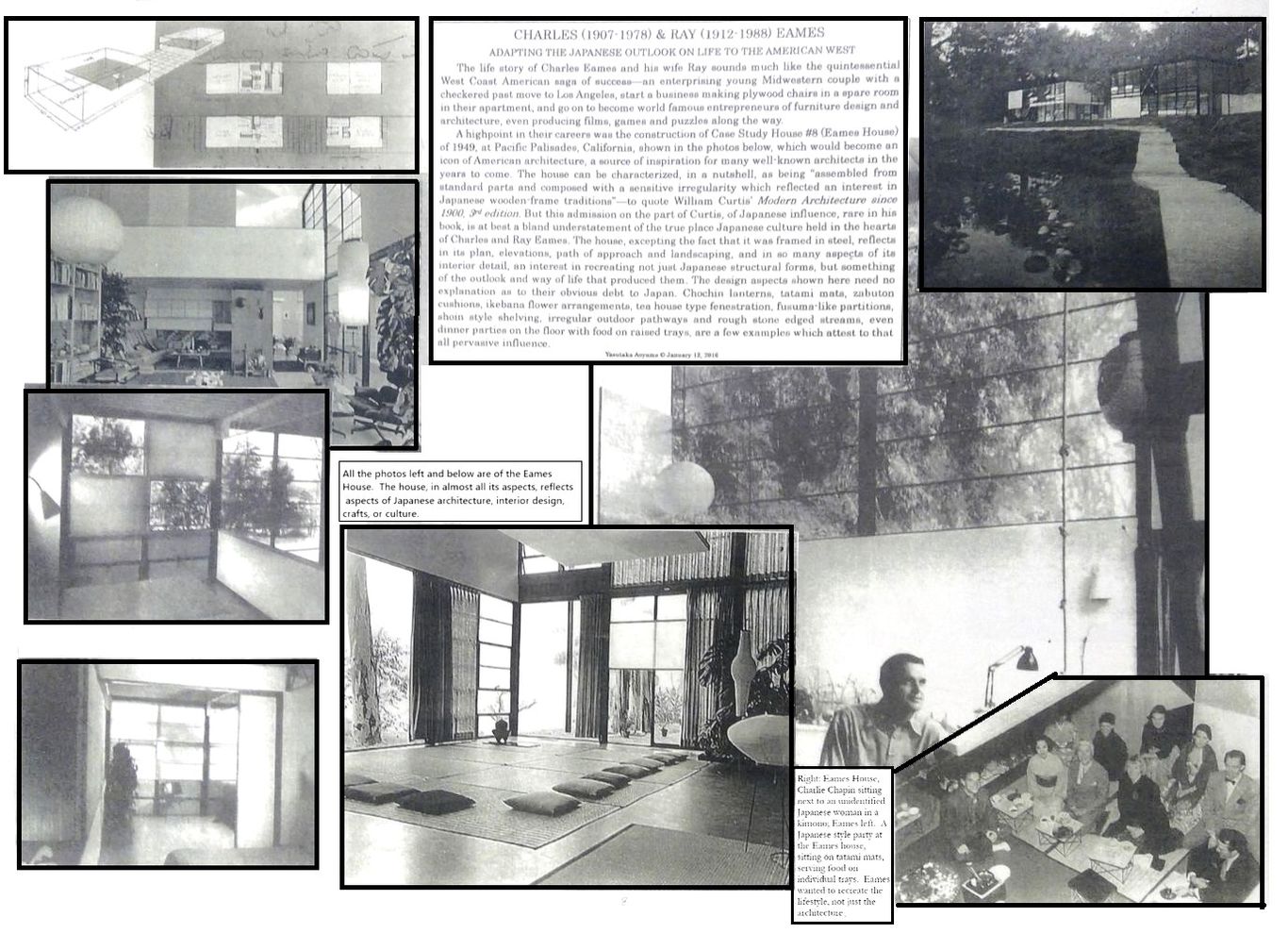
Charles and Ray Eames
A Taste for Folkcrafts and Everyday Objects in Japan
Lecture handout 2016.1.12, Architectural Juxtapositions, p. 9
Yasutaka Aoyama
Charles and Ray Eames were avid photographers possessing a huge collection of slides, of which their photos of Japan figure prominently. Many of those photos are pictures of everyday objects---food on trays, decorations for festivals, close up shots of what must be interior features of Japanese inns they stayed at, and other mundane objects (a few examples are shown below to the left). Besides pointing out their general interest in Japanese folk art and artifacts, an interesting analogy can be drawn between the Eames plywood constructions and traditional Japanese 'bentwood' crafting, such as 'magewappa' (A) of Odate; 'sashimono' (B) of Kyoto; and the 'kabazaiku' (C) of Kakunodate, among other forms of traditional Japanese woodwork involving bending, not to mention an infinite variety of bamboo crafting involving bending of one sort or another. And one might also consider traditional Japanese harnesses---cloth or leather fitted wooden saddles and stirrups (D)---for making an intriguing juxtaposition with the famous Eames lounge chair built in 1956 (show below).
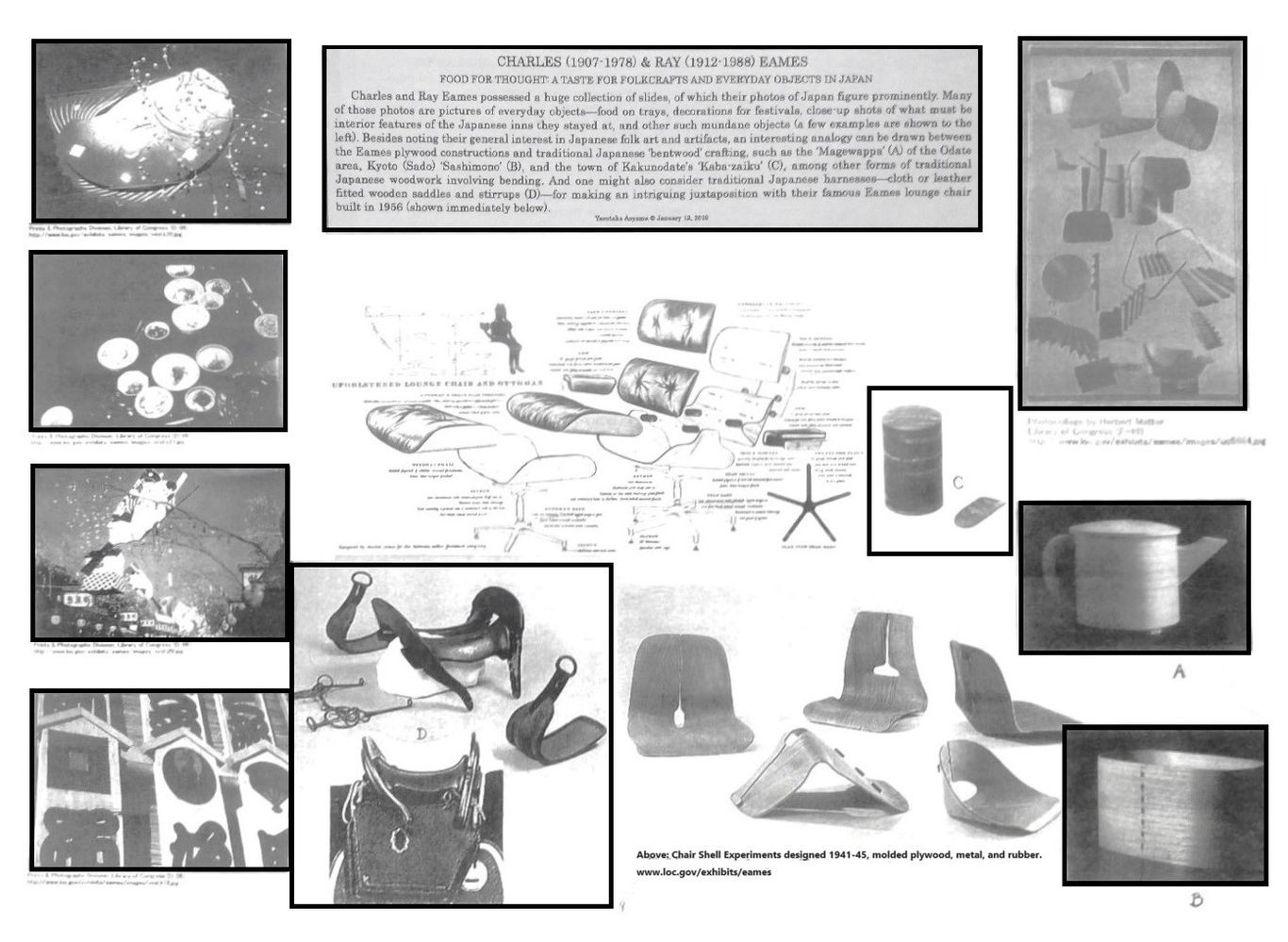
James Steele's 'The Japanese Influence' in his Eames House: Charles and Ray Eames (Phaidon Press, 1994)
The following are a few excerpts from James Steele's discussion of the history of Japanese influence upon American architecture leading up to the Eames House, and the fundamental change in the nature of that influence occurring in more recent times:
The Japanese Influence
"In a final non-parallel with high-tech dogma, there are historical references in the (Eames) house, albeit abstracted, that tie to a succession of well-established precedents in foreshortened, Los Angeles time, which are all related to the Japanese attitude toward interior and exterior space."
"The influence of the Japanese exhibition and the Ho-o-den Temple at the Columbian Exposition in Chicago in 1893 has been well documented, and the Gamble House in Pasadena by Charles and Henry Greene is the the first and most complete synthesis of its transfer to southern California. ...the Gamble House may be seen to have irrefutable roots across the Pacific, as does the Bay tradition, which is a parallel, further north."
Steele speaks at length on Frank Lloyd Wright and Rudolph Schindler, as well as Richard Neutra, as incorporating Japanese architectural concepts and components into their work from the 1920's to the post WWII period, and from there moves on to the contemporary scene:
"While the Japanese equation is still an important aspect of many of the most well-known architects practising in Los Angeles today, such as Frank Gehry, Thom Mayne of Morphosis, Erik Owen Moss and Frank Israel, it is significant that the transfer has changed around completely to an emphasis on artificial rather than natural similarities. Paradoxically, these architects, who are considered to be trendsetters elsewhere, now regard Japan as the origin of innovation, the place to watch for new ideas, an urban soul mate beleaguered by similar problems, and subjected to comparable growing pains, which forces it to be equally creative in attempting to find solutions."
"The Edo ideals of purity, humility and oneness with nature that captivated the Greene brothers and Frank Lloyd Wright are distilled in the Eames House for the last time making it a bench-mark of that tradition in the city. From that point forward, it is the mastery of technology alone, rather than mystical notions about submission to natural laws that has been the envy of Los Angeles architects; and yet it has continued to captivate successive generations there, not because it is a modular re-interpretation of the Tatami generated palaces of Japan's classic period, but because it is built in steel, and improbably and almost magically balances strength with lightness."
________________________
Adolf Loos (1870-1933)
Part I: Japan from the Inside
Lecture handout 2015.11.20 and added material 2023 summer, Architectural Juxtapositions, p. 10, last revision 2024.7.30.
Yasutaka Aoyama
Adolf Loos is considered one of the pioneers of modern architecture whom Le Corbusier imitated in some respects, in terms of both design features and philosophy, which in turn have parallels to architectural practices and ideas in Japan. While Loos left only a few recorded references to Japan, once we take a look at the full range of his work, it becomes clear that Japanese architectural forms and principles are present throughout his designs, an unavoidable conclusion reached for those that know both his work and Japanese architecture, such as Yoshio Sakurai, who has devoted his life to recreating the complete opus of Loos's works in models with painstaking, detail with his students (See Radio Prague International, 'Japanese professor brings ‘Raumplan’ of visionary architect Adolf Loos to life in models' 3/20/2019 at https://english.radio.cz).
Besides plentiful books and prints available in Europe and America by the late 19th century to gain knowledge of Japanese design, Loos also had the opportunity to experience Japanese architecture first hand through his visit to the Hooden at the World Columbian Exposition of 1893, held in Chicago; and was in frequent contact with members of the Chicago School, for whom Japanese architecture, in part due to the Hooden's presence in Chicago for half a century after the fair, was an ongoing subject of interest.
Despite the stark contrast from the outside of his designs with those of Japanese architecture, and his ample use of concrete and marble, Loos employs traditional Japanese forms in his window designs, his ceiling treatments, his built-in cabinetry, his sliding screens, lighting fixtures, and in his approach to asymmetry. Loos' idea of minimizing ornament, going one step further than Voysey in his 'zen'-like austerity, resonates with Japanese architectural values; and his stated respect for the natural condition of materials and local sourcing is also akin to the culture of building in Japan---however different his stated line of reasoning in arriving there. Should one take the time to evaluate the parallels of his actual design features to those of Japan, along with his concepts of 'ornament as crime', or his attitude toward construction materials, or his 'Raumplan' with its focus on interlocking volumes and not only planes in the making of plans, it would become apparent to the unprejudiced observer that there is a need to re-consider Loos' specific designs and general philosophy within the context of their Japanese precedents. Loos himself wrote in 1898:
"The Orient was the great reservoir from which fresh seed constantly poured into the West. It almost seems as if at present Asia has given us the last vestiges of its inherent strength. We have had to reach out to the farthest corners of the Orient, to Japan and Polynesia, and that is where it finished." (in Stewart, 2000, p. 71)
Here, in the comments of the young Loos, we have an admission of the tremendous influence of the Orient, including that of Japan, upon European art; and at the same time an aversion, an attitude of 'enough is enough' towards such exotic influences. Indeed, as Janet Stewart in her Fashioning Vienna: Adolf Loos's Cultural Criticism (Routledge, 2000) discusses, Loos was worried Japan would overtake and lead Austria in reaching the "heights of Western civilization" (p. 67)---in perhaps a somewhat similar mindset to that of Europeans and Americans in the 1980's facing the economic juggernaut of Japan.
Loos' generally pessimistic comments and stereotyping of Japanese design have been one of the reasons the influence of japonisme on his work has been underplayed, despite the striking parallels to be found. The lack of an open admission of influence and inspiration, however, does not prove that a link does not exist; the best criteria of that lies in his designs themselves, and in the direction the circumstantial evidence points---that is to apply the same criteria of art history in tracing streams of influence and styles between Europeans, and otherwise around the world. For reticience, regarding japonisme, is most notable in modern architecture more so than in other areas of art, both by the architects themselves, and by historians of modern architecture, who hardly ever mention the torrent of interest in Japan which was engulfing European artistic circles at the time. A good example of japonisme is found, for instance, in the paintings and folding fan art of the painter Oskar Kokoschka, (1886–1980), a close friend of Loos.
Having started his career with redesigning interiors, and being known as a strong advocate of design from inside out, where the outside is merely a skin-like shell for the inside, it is best we begin with Loos' interior principles---which are most evidently Japanese.
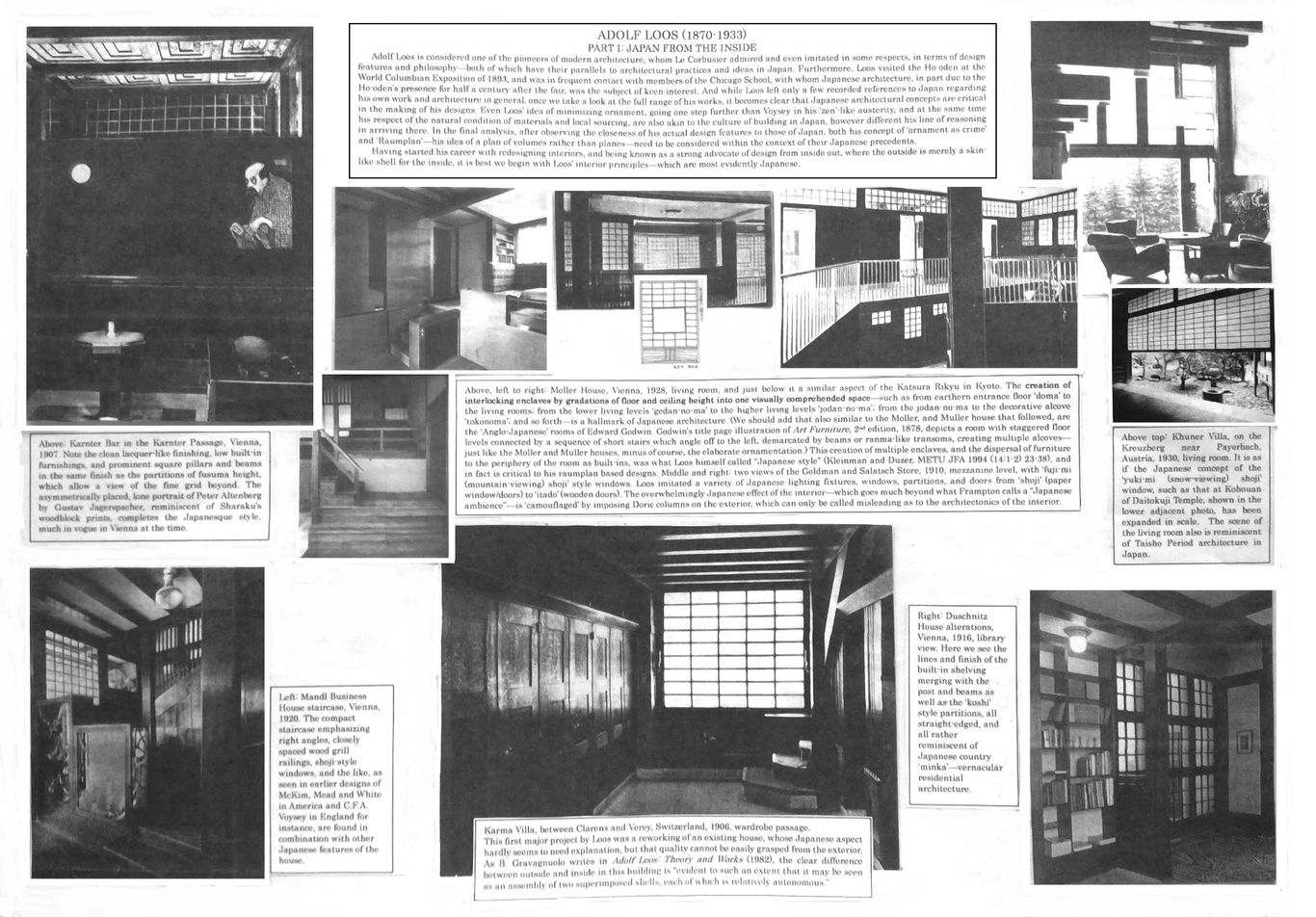
Hugo Semler Apartment, Pilsen, Czech Republic, 1930
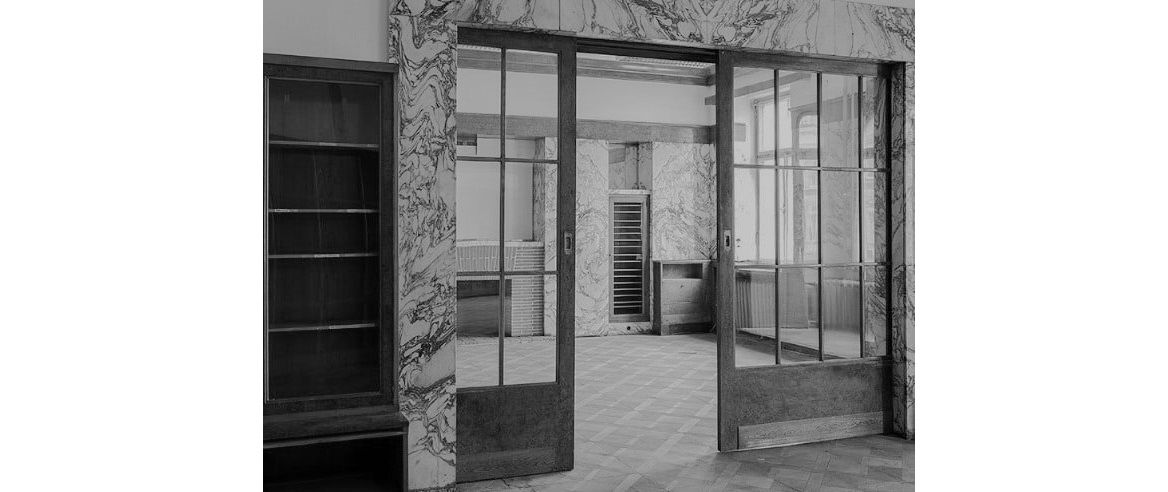
Above is the Adolf Loos interior designed Hugo Semler Apartment, Pilsen, Czech Republic (1930), interior sliding doors. A marble surround replaces what would be wood in Japan, glass replaces paper, the screens are hung without rails below, and a lock is added---a case of material conversion and design elaboration, but the basic form and functioning, the conception and the aesthetic, is the same as its Eastern prototype. In fact, this type of framed glass sliding screen was already common in Japan, both in newly built or renovated Japanese style houses, as well as in mixed European-Japanese style houses, since the late 19th century.
A closer look at the interior of the Loos designed Villa Khuner
Descriptions of the Villa Khuner in biographies and architectural histories portray the villa as being one influenced by Swiss chalet architecture. Be that as it may, it does little to explain its unique quality. The important question is not that it takes from Swiss chalet architecture; but rather, why is the result so different, and what makes it different, from traditional Swiss chalet architecture?
The answer, as the reader is surely already expecting, is the Japanese element. It can be argued that the Villa Khuner can be better understood by seeing its origins in Japanese architecture that was built in the years preceding his design of the Villa, that is during the Meiji and Taisho periods.
Interior photos of the Loos designed Villa Khuner, Payerbach, Austria, built in 1930 shown below. Around this time, Loos' preoccupation with Japanese interior effects is quite evident.
The first two photos of Villa Khuner (1 and 2) look as if directly from the interior of a late Meiji or Taisho period (c. 1875-1925) Japanese hotel lobby and stairway.
The ceiling light in (3) is very much like that found in Japanese hotels, inns, & private residences from the latter Meiji period onward; the reason such fixtures were often quite flat is not only stylistic, ceilings were often much lower in Japan than in the West, and where traditionally there was no ceiling lighting but only floor andon, ceiling fixtures naturally developed horizontally rather than vertically. Even the outdoor view seems to have been inspired by the Japanese example; a low rocky landscape has been created with an irregular flight of steps, reminiscent of a Japanese garden.
In the last photo (4) note how the bed is virtually on the floor, the closest one can get to a futon without becoming one. The whole room is outlined by straight, thick exposed woodwork in the typical fashion found in Japanese hotels and homes. The small alcove in which the bed is placed, is approximately of the dimensions of a 'oshiire' in an average Japanese bedroom, where the sleeping futon mattress is stored. The Japanese hotels shown further below catered to Western visitors and Japanese visitors wishing to stay at a Western style hotel, and thus beds are provided, though still at a much lower level and with low headboards compared to a traditional western bed. Seating levels of chairs and couches, as in the Villa Khuner, are also much lower than what was typical in the West until well into the 20th century.
Now if we look at some Japanese examples it becomes clear as to just how similar Loos' approach was to Japanese architectural design around the turn of the century. Below we have in the first row, Nara Hotel, 1909. Second row, Manpei Hotel, 1894. In both cases, the general interior design is preserved in essentially in its original state, and hotel room interiors have been renovated closely to the original look, excepting of course modern amentities and appliances.
Nara Hotel, 1909
Manpei Hotel, 1894
Adolf Loos
Part II: Japan from the Outside
Lecture handout 2015.11.20, added material 2023 summer, Architectural Juxtapositions, p. 11
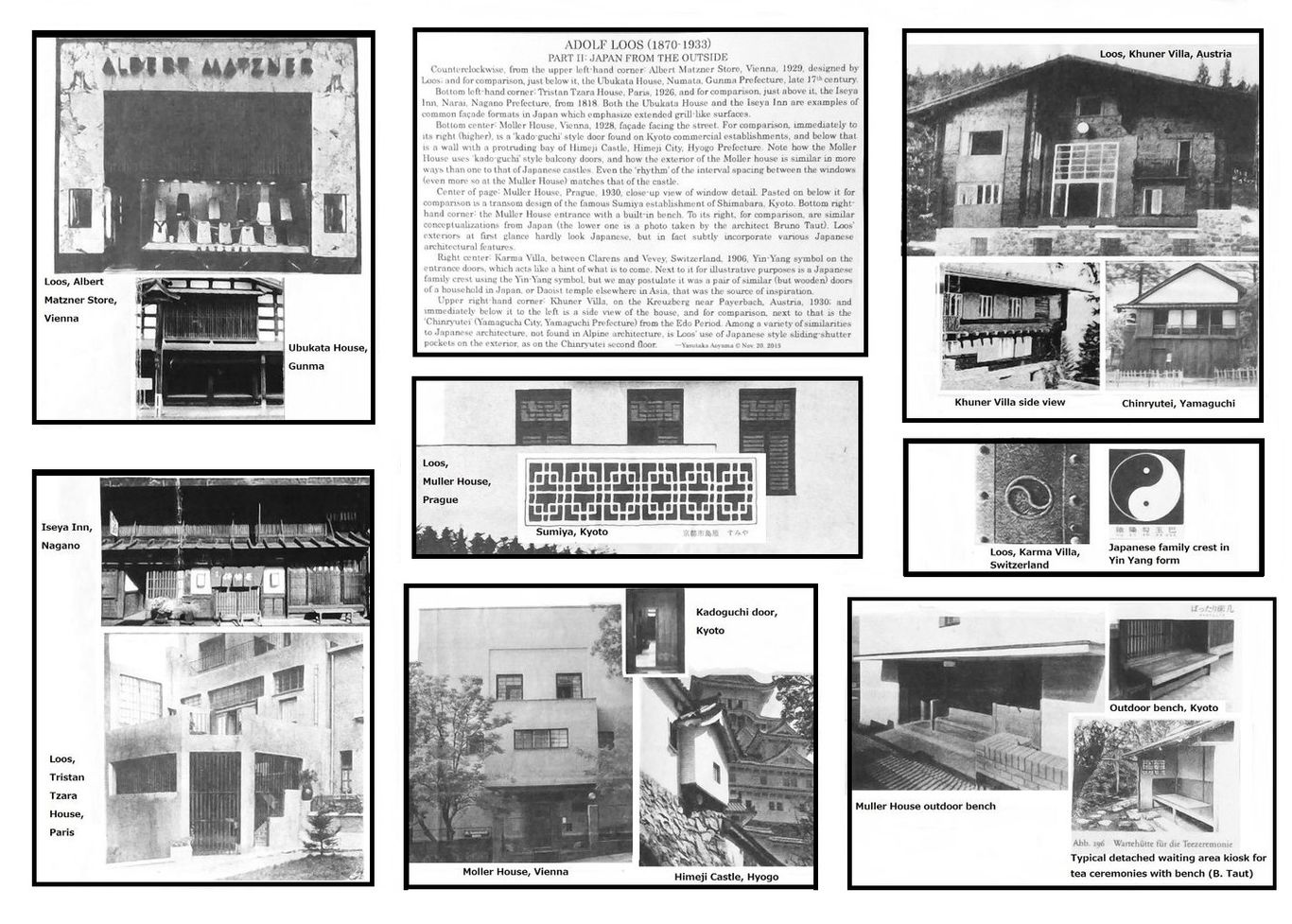
On the second floor of the Albert Matzner store (in the above upper left corner), though looking like a dark, uniform surface in the photo, actually it is a rectangular block of closely spaced vertical grillwork, similar to the Japanese house below it.
A closer look at the exterior of the Loos designed Villa Khuner
Note in the photo of the exterior to the left the sliding 'amado' (Japanese rain shutter) style panels over large windows, jutting out over the ground level with rafter ends painted, the variation in ground level fenestration sizes, and the style of landscaping with rocks and trees/shrubs, all which are characteristics of Japanese architecture. To the right is the front facade, with its conspicuously accentuated asymmetry of windows and door placement and sizes, and changing depth of the facade, also found in Japanese architecture. And below a close-up of the Villa Khuner sliding 'amado' equipped large windows and for comparison to its right the Chinryutei sliding shutters over contiguous windows.
Moller House, 1928
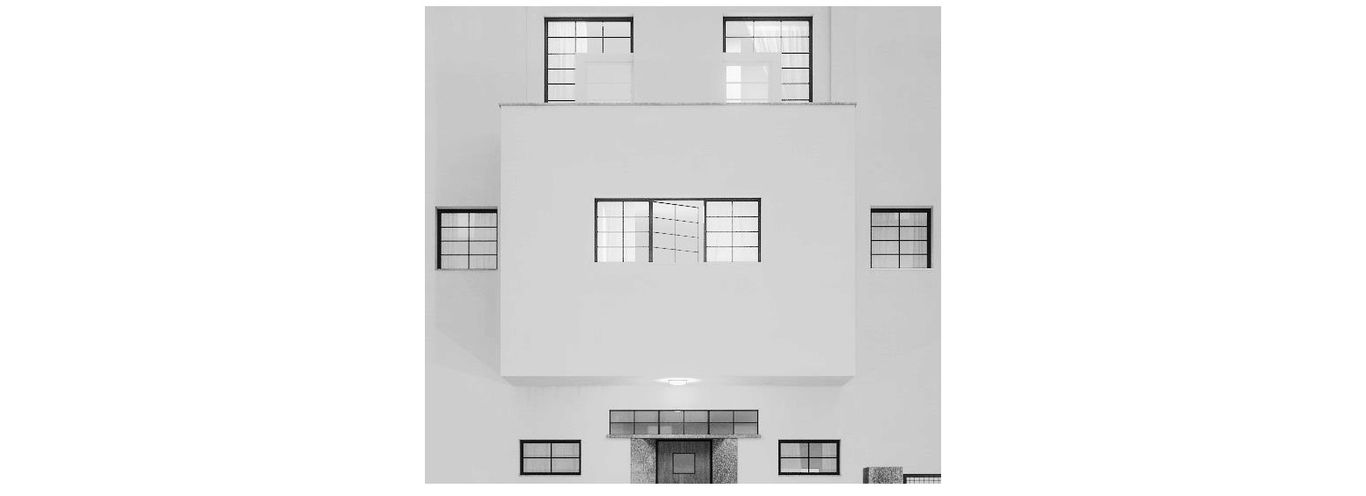
Aspect of Loos' Moller House facade with shoji reminiscent windows.
________________________
De Stijl Japonisme from Doesburg to Rietveld
Piet Mondrian (1872-1944)
Japan within the Artistic Foundations of De Stijl
Lecture handout 215.11.23, Architectural Juxtapositions, p.12
Yasutaka Aoyama
"...the true prehistory of Mondrian after 1919 must be sought in the traditional architecture of Japan. Structure, division of space, mood, certainly; but also the precision with which the wall unfolds like a musical score..."
Decio Gioseffi, eminent Italian art historian, quoted in Maria Grazia Ottolenghi, L'opera completa di Mondrian, 1974
"Mondrian's works after his breakthrough to abstraction suggest a new kind of Japanese reference, unconscious on Mondrian's part: it does not relate to woodcuts but to the basic idea of Japanese domestic architecture. The rhythmic use of standard components--squares, vertical or horizontal rectangles, narrow and wide proportions, standardized floor mats related to wall surfaces, the black 'sticks', vertical and horizontal, in 'suspended equilibrium' (Piet Mondrian, Neue Gestaltung, Bauhausbucher no. 5, Munich, 1925), and the avoidance of curves and ornament: all these are already present in the Bosen Tea-Room (Daitokuji Temple) in Kyoto..."
Klaus Berger, Japonisme in Western Painting from Whistler to Matisse (1980, translation 1992)

Japanese designs from Kawashima Choji, Nihon Minka Design Shusei. Tokyo: Nihon Tosho Center, 2013.
Theo van Doesburg (1883-1931)
Vilmos Huszar (1884-1960)
Frederick Kiesler (1890-1965)
De Stijl and Japan as the 'Empire of Lines'
Lecture handout 2015.12.5, Architectural Juxtapositions, p.13
Yasutaka Aoyama

Japanese designs primarily from Kawashima Choji, Nihon Minka Design Shusei. Tokyo: Nihon Tosho Center, 2013.
Gerrit Thomas Rietveld (1888-1964)
Part I: The Schroder House and the Okoshi-e Design Process
(Lecture handout 2015.12.5, Architectural Juxtapositions, p.14)
Yasutaka Aoyama

Gerrit Thomas Rietveld, Part II
De Stijl Composition, Color, Detail--and the Japanese House
Lecture handout 2015.12.5, Architectural Juxtapositions, p.15
Yasutaka Aoyama

Below are some more Japanese interiors done in the latter 19th century, juxtaposed with a De Stijl style interior. As already shown in the examples above and another offered below right (Iwashina School, Matsuzakicho, Shizuoka, 1880), traditional room interiors often had surface sections that were contrastingly colored, which was made easy by the fact that wall and ceiling surfaces were never continuous, but always clearly demarcated by thick exposed wooden pillars and beams, and often of varying depth. This was not so easily done in traditional Western interiors, where walls, ceilings, and floors were often continuous and uninterrupted across wide surfaces. In Japan, all six surfaces of a room were clearly divided into sections, whether by sliding partitions, walls, cabinets, and tokonoma; the ceiling in exposed wood panels or squares with crosswise beams; and the floor too of course, in tatami mats. And with the coming of the Meiji period, there was a trend towards incorporating glass windows into architecture, at times colored, sometimes in bright geometrical patterns, often covering extensive surface areas, as they took the place of shoji sliding panels, as the example shown below left (Oyama Shrine, Shinmon third floor, Kanazawa, Ishikawa, 1875). In the center is an illustration of a Doesburg (interior) and Rietveld (furnishing) collaboration, from De Stijl, 3e Jaargang (3rd Year), No. 12., Bijlage (Appendix/Supplement) XIV.
An accessible source of Japanese interior designs were ukiyoe prints of such interiors. Most of the Meiji era print artists produced scenes of rooms with bright, clearly sectionalized multi-colored walls and thin partitions/sliding panels, and these were especially popular from the 1870's to the 90's, among whom Tsukioka Yoshitoshi was particularly adept at illustrating (discussed in Architectural Japonisme III), though many other artists drew such pictures including Toyohara Kunichika and Yosai Nobukazu. Below are examples from Nobukazu and Yoshitoshi, juxtaposed with the 'Spatial Color Composition' by Gerrit Rietveld and Vilmos Huszar at the Juryfreie Kunstschau (Unjuried Art Show), Berlin, 1923.
As the japonisme researcher Anna Basham notes, "The similarity between Japanese architecture and modernist Dutch architecture is noted in Balbus, or the future of architecture (1926) in which the author and architect, Christian Barman discusses a modern Dutch house which has no fixed internal walls; rooms are created by the use of movable screens and compares this to the Japanese house: 'This is, of course, how houses are mostly constructed in Japan, but it should be remembered that, though the Japanese house is built entirely without walls, whether internal or external, it yet exhibits the utmost complexity and formal refinement in the general lines of its design. The plan is there, though only its skeleton is permanent, and wall-divisions are made movable ...' " (From Victorian to Modernist: the changing perceptions of Japanese architecture encapsulated in Wells Coates' Japonisme dovetailing East and West, doctoral thesis, University of the Arts London, 2007, pp. 196-7).
Left: chair in black lacquer with gold-yellow painted flat cut ends, by Gerrit Rietveld, 1917; right: chair in black lacquer with gold finished flat cut ends, the 'Sekishitsu Tsukinokinokosho' of the Shosoin storehouse in Nara, 8th century. While the Shosoin chair does not use red, other such Nara and Heian period chairs did; the more recent (but according to ancient tradition) Emperor's chair in the Shishinden, Kyoto Imperial Palace, for instance, does. Black, red, and gold are a classic color combination in Japanese lacquered furnishings.
J. J. P. Oud (1890-1963)
Jan Wils (1891-1972)
Vilmos Huszar
Frederick Kiesler
De Stijl: The Wider Circle and Eclectic Japonisme
Lecture handout 2015.12.5, Architectural Juxtapositions, p.16
Yasutaka Aoyama

________________________
Walter Gropius (1883-1969)
Japan as Another Rome (or Greece), Part I
Lecture handout 2015.12.12, Architectural Juxtapositions, p.17
Yasutaka Aoyama

Walter Gropius
Japan as Another Rome (or Greece), Part II
Lecture handout 2015.12.12, Architectural Juxtapositions, p.18

Walter Gropius
Japan as Another Rome (or Greece), Part III
Lecture handout 2015.12.12, Architectural Juxtapositions, p.19

Walter Gropius
Excerpts from his essay 'Architecture in Japan'
Additional class reading material, Kyoto University, 2015.12.12

Walter Gropius
Japan as another Rome (or Greece), Part IV
Project Clubhouse, Buenos Aires, Argentina (1931–1932)
Originally uploaded 2023, revised 2024.5.31

Above: Walter Gropius (with Hanns Dustmann and Franz Möller), Project Clubhouse sketch, for a Buenos Aires resort, with Japanesque gridded geometric facades, thin and long extending wings along or out onto the water, and curved, extending roofs. Japanese architecture, when sketched in outline form, often yields similar impressions, as with the example of by Kawahara Keiga of Kiyomizu-dera Temple, shown below.

Kawahara Keiga, Kiyozumi-dera, Siebold Collection
Gropius' sketches of the Buenos Aires Clubhouse project---the concepts contained within the plans and elevations echo in various ways the architectonics of Itsukushima Shrine, Hiroshima Prefecture, including a monument placed far out in the water, for viewing from the building.
Photos from Tokyo National Museum et al., Von Siebold and Japan (1988) and Harvard Art Museums, 'Displaying Latin America' (2019).
________________________
Johannes Itten (1888-1967)
of the Bauhaus
Japan in his Art and Pedagogy, Part I
Lecture handout 2016.1.7, Architectural Juxtapositions, p. 20
Yasutaka Aoyama
No history of early 20th century architecture or art education be complete, nor as colorful in more senses than one---without mentioning Johannes Itten from Switzerland, a central figure at the Bauhaus in Germany, and founder of his own school nearby, the Itten Schule. A photo of him dressed in the robes of a neo-Zoroastrian cult, or quotes from his book on art and color asserting that the most profound chromatic truth reveals itself only to 'devotees' wth the proper spiritual preparation, add spice to otherwise turgid textbooks of architectural theory.
But such talk diverts us from more important influences from the East that had a meaningful impact on the content of art production at the Bauhaus, at the Itten Schule, and that by Itten himself. The 'Mazdazan' cult he adhered to was more of a health and dietary lifestyle program than an ancient religion possessing a concomitant artistic tradition, and the actual role model for his approach to art was more East Asian than Persian, more Daoist and Zen than Zoroastrian. He was interested in the writings of Lao-tse and Buddhism since his youth; and as he would write in his latter years, as it it is so in Chinese painting, "heart and hand must be one" and that to study Japanese panting is to "master the perception of objects to the heart and from the heart to the hand" (Mein Vokurs am Bauhaus, 1963). In fact, the Nanga style Japanese painter Shonan Mizukoshi and Yumeiji Takehisa, a pioneer of modern watercolor painting in Japan, both taught at Itten's school---Mizukoshi in 1931 and Takehisa in 1934. "Brush drawing with sumi-ink" for instance, became part of the Itten Schule curriculum by 1932. During the morning, a 30 minute gymnastic and singing session, (reminiscent too of 20th century Japanese custom), was followed by 30 minutes of free drawing with sumi-ink and brush. Yoshimasa Kaneko of Kochi University has written valuable papers on the subject, and Eva Streit (2015) has followed with a section on Yumeji in her book on the Itten School.
Shown below, together with plausible Japanese artistic models, are a few examples out of many that reflect Japanese influence in Itten's own work (and his art instruction, included is a student work done in his class)---some of which he even signed in Japanese "一天", phonettically equivalent to "Itten", which translated means "One Heaven".
Note: The two lower illustrations with Japanese captions are: left, a section of a painting of the goddess Kichijoten (8th century), and right, a section of the painting 'Yashokurodaizu' (18th century) by Yosa Buson, depicting Kyoto's Higashi-yama area, both from the The Art Museum of Japan published by Shogakukan.

Johannes Itten
Japan in his Art and Pedagogy, Part II
Lecture handout 2016.1.7, Architectural Juxtapositions, p. 21
The Japanese influence seems to come from a variety of sources, not infrequently from the north-western seaboard of Japan, where a rich tradtion of arts and crafts thrives in the prefectures of Niigata and Yamagata. Sometimes Itten's work follows the Japanese model closely, such as in the case of his hammered brass bowl, dating back to 1914, which is almost identical to octagonal bowls and pots of Tsubame beaten copperware ('Tsubame-tsuiki doki'). At other times, he has transferred the design of a certain medium, such as that of a kimono textile, to a different artistic medium---for instance, to a watercolor painting.

An article on the Bauhaus and Japan: Keshav Anand, 'How Japan’s Imperial Architecture Influenced The Bauhaus', Something Curated at somethingcurated.com. Visited May, 2024.
________________________
C. F. A. Voysey (1857-1941)
Part I: Exteriors
Perhaps Best Described as a 'Tibeto-Japanese' Melange
Architectural Juxtapositions, p. 22
Yasutaka Aoyama
Voysey's creative sources have not been sufficiently investigated. While his interiors can be evaluated within the context of the general trend of japonisme, his exteriors, while exhibiting elements of Japanese architecture, also exhibit commonalities with Tibetan, or more widely, Himalayan architectural forms, available, for instance, in the 1783 paintings of Bhutan dzongs by Samuel Davis.
The Tibeto-Bhutan parallels aside, circumstances and relationships of Voysey point to a link with Japanese art. For instance, Voysey, on the recommendation of his friend Arthur Heygate Mackmurdo (known for his involvement with Japanese interiors most notably that of the Mortimer Mempes House discussed later in this section), tried his hand at designing wallpaper, carpets, and textile designs, often using motifs which were very likely taken from katagami designs, an example of which is shown in Katagami Style (2012, supervised by Mabuchi Akiko, Director of the National Museum of Modern Art, Tokyo) of a poppy flower motif for a decorative fabric (c. 1894, exhibit #2033). The 1890's was a time when publications on Japanese design became readily available, and the astonishing diversity and dramatic visual impact of katagami attracted designers in all fields, including architects.
The following added 2024.9.14
Robert Schmutzler, a leading historian of Art Nouveau in the English-speaking world, in his classic Art Nouveau (1962,1977), after commenting on how Voysey was influenced by Arthur Heygate Mackmurdo, writes:
“However, for Voysey as an architect, Japanese influences were perhaps even more important, though they are scarcely recognizable as such in his work. One of his most interesting works, the tower-like house in Bedford Park [shown below, center] that he finished in 1891, is an exception. The light roof with its low gradient, the concave curved roofing of the oriels, the thin metal supports that seem to raise the roof over the body of the building, the unusually small windows, and the one stressed bull’s-eye window are not outright Japanese forms; but the graphic, abstractly ornamental, and asymmetrical character of the surfaces, the contrast in black and white between the apertures and the white-washed walls, not to mention the frieze-like disposition of various groups of windows under the thin horizontal ledges, all clearly reveal the relationship to Japanese architecture, easily recalling Japanese teahouses and small temples, as for example Voysey’s similar but lower and longer country houses, which are a particular national achievement of English art.” ---Schmutzler, Art Nouveau, 1977 abridged edition, pp. 128-9.
Yet we should add that those elements which Schmutzler categorizes as not obviously Japanese forms, as a low gradient roof, concave curved roofing, thin supports that raise the roof over the body of the building; or the bull’s-eye window---are in fact common features of traditional Japanese architecture, though not necessarily found together in one building. Even the small windows could be considered so, if we think of Japanese castle architecture. Indeed, the whole structure resembles a Japanese castle in various respects, including the frieze-like disposition of various groups of windows under the horizontal ledges, the white washed walls and their thick appearing aspect, and the contrast of black and white, though this is shared with Tibetan and Bhutanese architecture as well.
As to which inspired Voysey, Japan or Tibet/Bhutan in this case, either or both are possible; but as so much of his other architectural work reflects Japanese elements, both in his exteriors and interiors, as well as in his other designs, with hints such as “Tokyo” (wallpaper, 1893), the former seems more likely. Furthermore, models of Japanese castles were exhibited in Britain and on the Continent in world expositions and privately collected, and paintings and prints of castles abounded in England by the time of Voysey’s designing the Bedford Park house. On the other hand, Tibetan/Bhutanese models were scarcer though existing in sketches and paintings by a few, but we would not like to close the door on the possibility. It is an intriguing parallel, and at the very least it deserves mention as enriching our global perspective on modern architecture, even if there is no causative connection.

Below: An example of early Meiji era architecture, the Tsukiji Hotel, Tokyo, 1868. This was a hotel built for Western visitors. There are aspects of its design reminiscent of Voysey. Novel architectural forms were being produced in abundance in Japan from the late 1860's onward to the early 20th century, that precede the appearance of similar forms in the West. It might be said that much of the reputation for originality of certain architects in Europe or America in those days depends on an ignorance of the building activity going on in Japan at the time.

Below: Photos pasted side by side from the author's scrapbook, on the left is a Voysey designed house, on the right a Japanese castle 'yagura' (a corner tower and storehouse/sentinel quarters combination). Despite obvious differences, there is an affinity of general conceptualizations between Japan's and Voyseys' architecture.

C. F. A. Voysey (1857-1941)
Part II: Interiors
Architectural Juxtapositions, p. 23

________________________
Greene and Greene
Charles Sumner (1868–1957) & Henry Mather (1870–1954)
Part I: The Physical and Spiritual Presence of Japan
Lecture handout 2015.11.5, Architectural Juxtapositions, p. 24
Yasutaka Aoyama
The Greene brothers, Charles Sumner and Henry Mather, are considered the primary representatives of the American Arts and Crafts Movement of the early 20th century, with Charles Sumner, the elder brother, being the principal creative force behind their work; and it was Japan in turn, more than any other artistic source, that fed his creative imagination.
In the words of Charles Robert Ashbee, of English Arts and Crafts renown, "I think C. Sumner Greene's work beautiful; among the best there is in this country (meaning the USA). Like Lloyd Wright the spell of Japan is on him, he feels the beauty and makes magic out of the horizontal line, but there is in his work more tenderness, more subtlety, more self-effacement than in Wright's work."
Vincent Scully, the pre-eminent historian of 19th century American architecture wrote: "Their use of materials---rough wood, cedar shakes, and cobblestones---also grows out of the use of natural materials of the shingle style [a Japanese influenced style according to Scully] but in a sense exaggerates it, insisting obsessively upon the total articulation of each element. Also significant in their work is a strong oriental influence, the apotheosis of that insistent relationship with Japanese framing and spatial techniques which had been important since the 70's [1870's]." (The Shingle Style and The Stick Style, Revised Edition, 1971, p.157)
While Henry-Russell Hitchcock, usually sparing in his comments regarding the role of Japan in his Architecture: Nineteenth and Twentieth Centuries (The Pelican History of Art), considers the Greene's houses "most interesting for their successful assimilation of oriental influences", writing: "Shingled walls, low-pitched and wide-spreading gables, and extensive porte-cocheres and verandas of stick-work surpassing in virtuosity those of the Stick Style, were combined by the Greenes in rather loosely organized compositions. Less formal and regular than Wright's Prairie Houses, theirs are executed throughout with a craftsmanship in wood rivalling that of the Japanese, whom they, like Wright, so much admired." (1977, p. 452)
Other architectural historians have characterized it in various ways; but whether it be the 'structural expressionism' of their designs which derives from English half-timbering and Japanese 'cage' construction; the roofs which are said to be based on Swiss chalet and Japanese prototypes; the Italian and Japanese conceptions of gardens deriving from their love of the outdoors; or the philosophy of craftsmanship and materials;---in all of this and more, in plan, elevation, and spatial progression---the one constant thread which weaves and binds it all together into something new---is Japan; and without that (but with all the rest) we would be not missing the soul of what makes Greene and Greene's work special?

Greene and Greene
Part II: Interiors
An Eclectic Adaptation of Manifold Japanese Arts
Lecture handout 2015.11.5, Architectural Juxtapositions, p. 25

Below: Close up of the Daitokuji Temple Jukoin fusuma (sliding door panel) by Kano Eitoku (left) and the Gamble House entrance door with the 'Tree of Life' design in leaded glass (right). Note how the correspondences extend to the finer details (e.g. A=A', B=B', C=C') not only in the pronounced way in which the tree bends and extends horizontally known as 'magari' but even to the way the branches cross and the pattern of root bumps know as 'nebari'. In Japan the aesthetic appreciation of the details of garden tree shape, like bonsai, especially their sideways extension was a matter of high connoisseurship.

Bottom two photos from Wikipedia.
________________________
McKim, Mead and White
Charles Follen McKim (1847–1909), William Rutherford Mead (1846–1928) and Stanford White (1853–1906)
The Samuel Tilton House, American 'Minka Style'
Lecture handout 2015.10.30, Architectural Juxtapositions, p. 27
Yasutaka Aoyama
The work of McKim, Mead and White falls into basically two distinct categories: thoroughly classical, European based designs vs. Japanese influenced ones---or to be more specific, Japanese residential architecture ('shoin', 'sukiya' and 'minka') influenced designs. And it is with the later, such as the Isaac Bell House, the Newport Casino, the Casino at Narragansett Pier, the H. Victor Newcomb Hall (Elberon, NJ), and especially the Samuel Tilton House (Sunnyside Place, Newport, RI), where we find some of their most modern expressions of architectural form.

The text for two of the caption boxes (center bottom and right side middle) have been reproduced below for better legibility.
McKim, Mead and White
The Isaac Bell House and Japan in the Shingle Style (1880's -1900's)
Lecture handout 2015.10.5, Architectural Juxtapositions, p. 26
Yasutaka Aoyama

The following text added 2024.6.18:
The above are but a sampling of the Japanese influences seen in McKim, Mead and White, and various other designs could be raised as examples:
Regarding the "remarkable" Casino at Newport, Rhode Island (1879-81), Vincent Scully writes: "The differentiation in scale here between the framing members and the grilled panels between them recalls Japanese wooden architecture---with the post, the kamoi, and the ramma---and reveals McKim, Mead and White's important amalgamation of influences from that source with indigenous American framing habits. ... It combines a sense of order by no means academic with a variety of experiments in picturesque massing and spatial articulation. More over, it combines Japanese and American stick-style sensitivities with that sweep of design which is typical of the shingle style." (The Shingle Style and Stick Style, revised edition, 1971, pp. 132-133) Even the "experiments in picturesque massing and spatial articulation", as well as the "sweep of design", however, have their precedents in Japanese architecture, which perhaps Scully is not fully aware of.
As for the Victor Newcomb House at Elberon, New Jersey (1880-81), "a building which exhibits qualities more peculiar to McKim, Mead, and White at their original best", we will quote Scully at some length, for it contains some very important observations:
"The hall is paneled in vertical wood siding, with battens, up to door height, where a strip molding passes around the wall. This molding is continuous above the dorrway openings. It is a decorative and nonstructural derivation from the Japanese kamoi, the bracing beam below which the screens slide in a Japanese interior. The space between molding and celing in the Newcomb House is filled by a latticework screen, derived from the Japanese ramma; this creates a continous flow of space, partially screened, between the hall and the other rooms, as well as a constant sense of scale. The Japanese use of the continuous beam or molding with open work above had been clearly described in the American Architect in 1876... As a concession to American living McKim, Mead and White eliminate here the movable screens, but they are obviously experimenting with the continuous frame and open work to give an impression of movability and spatial continuity. ... The elegantly rectangular floor pattern, probably derived from the Japanese mat and looking much like 20th century De Stijl work, also functions to enforce scale and spatial direction. ... The architecture itself is straightforward and decisively interwoven. The ceiling overhead, emphasized by the subtly varied exposed timbers---which are crisscrossed in patterns a little like a Japanese mat system---slides visually through from room to room; the continuity of human scale is kept by the molding. The spaces do not merely open widely into each other they actually penetrate each other; and the whole space thereby expands horizontally with absolute, not relative, continuity. While the toal space thus expands, each unit of space continues to keep its own individuality through the passage of molding and screen. Consequently, space is at once integrated and articulated. This spatial concept, representing a creative assimilation of Japanese influences, appears as a basic principle in the work of Wright; indeed it has been erroneously believed that Wright was the first to achieve it in America." (1971, pp. 134-136).
Concerning the Cyrus McCormick House at Richfield Springs, New York (1881-82), which Scully rates as "their best cottage building in the early 80's" thanks to its "lightness of scale and its creative combination of gable front, porch pavilions, and structural and textural vitality" with "its interwoven basketry of skeletal elements" he says: "Here again there is much of the Japanese and much of the later Wright." And adds that rooms in the house, "are equally distinguished and use delicately scaled details partly colonial, partly Japanese, and wholly proto-Art Nouveau." (p. 137)

From Vincent Scully, The Shingle Style and the Stick Style, Revised Edition (1971), where he includes a photo of the Nakamura Villa of Nara for comparison with various shingle style houses.
Further Examples of the Shingle Style
and
Diversity in Japanese Regional Farmhouse Architecture
The Japanese influence upon the Shingle Style has been discussed by Vincent Scully in his classic work of the same name; we should add here that within the Japanese influenced exterior elements, not uncommonly the original interiors had rooms also of a Japan-conscious style.
Note below how the shingles of the Stroughton House resemble the overlapping, down to earth effect of the straw-like fiber walls of the Japanese farmhouse, and how the rounded house corners and staggered walls of the latter are also recreated in the former by the roundish turret and house extensions which likewise are made to blend together without sharp corners.
________________________
Queen Anne Style in America (1870's to 1890's)
The Japonisme of Unpredictable Complexity and Full-Color Ornateness
Lecture handout 2015.10.5, Architectural Juxtapositions, p.30
Yasutaka Aoyama
"The style of architecture dubbed Queen Anne was Japanesque in a different way. Here the move away from the traditional rectangular box, a standard of Western housing for centuries, was finally taken to its logical extreme. ... Think of the controlled-accident effect in the design of Japanese ceramics or the conspicuous avoidance of repetition in most Japanese arts, and you can see how the Japan idea relates to American Queen Anne architecture. It is especially apparent in the work of the architect Stanford White and the firm of Peabody and Stearns. The Opera House built in Norfolk, Connecticut, in 1883 and the Goodwin Building, a mix-use office and apartment complex built for Francis and James Goodwin in Hartford, Connecticut, in 1881... are rich in Japaneseque detail. ... The Japan craze affected the look of rural villages throughout New England through the growing popularity of new architectural forms, such as libraries, opera houses, and town halls."
William Hosley, The Japan Idea: Art and Life in Victorian America (1990, p. 105)
The Queen Anne style in the United States is often characterized as an eclectic mix of cultural styles--which it is, and the Japanese element is blended into that mix so that it often goes unrecognized. But many of the features of the style--the bold exterior coloring, the ornamental pattern details, the prominent roofs and complex intersecting rooflines, the asymmetric floor plans, the bay windows and other protrusions from the exterior wall surface--are prominent features of Japanese architecture. Of particular importance in the Queen Anne style seems to be Japanese shrine architecture, such as the Nikko Toshogu shrine-masoleum, dedicated to the Tokugawa Shogun Ieyasu, in Tochigi, Japan. Nikko was an extremely popular site for western tourists and visiting artists in the late 19th century, and many praises and depictions of it followed. It has not however, been sufficiently recognized as an inspiration for the Queen Anne style in discussions of Japonisme.
It is certainly at least possible that it did have an influence upon the Queen Anne style; there is no question that Japanese architecture in general did, as Vincent Scully, in his classic The Shingle Style and the Stick Style, wrote, regarding the formation of the Queen Anne style and the general direction of American architecture in the late 19th century: "other sources of inspiration and direction also began to be explored; Japanese architecture, for instance, had an important influence." (revised edition, Yale University Press, 1971, p. 4)
Below is an example of that influence in the work of the architect Francis Kimball.

Regarding these kinds of carved or plaster moulded exteror decorations and panel work, Vincent Scully writes: "Queen Anne shingles, panel work, and open interior space were reinforced by the architectural influence of another country represented by wooden buildings at the Centennial: that is, Japan. The Japanese buildings, a 'Bazaar' and a 'Dwelling' were of frame construction with overhanging eaves, and their structural articulation in some ways recalled the American stick style. The American Architect wrote of the 'Dwelling,' 'A bird is handsomely carve in bas-relief on the wooden panel between the top of the front door and the overhanging porch.' This feature relates to Queen Anne decorative motifs, as, for example, to its carved barge boards and plaster panels." (The Shingle Style and the Stick Style, Revised Edition, 1971, p. 21)
Here we have focused upon the ornamental aspects of the Queen Anne style; we must add as a concluding note that this does not preclude other fundamental Japanese influences.
That influence extended to Queen Anne interiors, and is more apparent in contemporary writings of the 19th century. Take George Sheldon's description in his Artistic Country Seats---Types of Recent American Villa and Cottage Architecture (1886) of the Millbank House at Greenich, Connecticut, designed by architects Lamb and Rich---whose other designs, by the way, also exhibit Japanesque qualities: "The parlor, twenty by forty-four feet, is in Japanese style, in a deep-red lacquer, with a bamboo ceiling, and walls covered with Japanese embroidery. A semicircular bay-window is at one end of the room and an octagonal at the other. Standing at the mantel, which faces the entrance to the hall and is Japanese in spirit, you look across the parlor, across the hall, across the library, and across the dining-room, out of the latter's bay-window, and on to the lawn---an unusually extensive view." (p. 65)
This leads us to an even more critical point: the influence of the Japanese free and flexible floor plan. As Scully comments on this topic, "More importantly, of Japanese interior spatial organization, the Architect stated: 'Thus at any moment any partition can be taken down, and two or more rooms, or the whole house, be thrown into one large apartment, broken only by the posts which marked the corners of the rooms. Doors and windows, as we use them, there are none.' Consequently, Queen Anne materials and general spatial direction received, by 1876, the support of influences from similar aspects of Japanese domestic architecture. These had already been allied, through comparable---though in Japanese hands more sensitive and integral---handling of the wooden frame, to the American stick style itself." (1971, p. 22)
________________________
Louis Sullivan (1856-1924)
Selected Aspects of his Japonisme:
Perhaps more Japanese than Islamic in Style
Lecture handout 2015.10.12, Architectural Juxtapositions, p. 28
Yasutaka Aoyama
There are definitely Islamic decorative elements in Louis Sullivan's designs, such as his National Farmers Bank (Owatonna, MI) interior, or his Garrick Theater (Chicago, IL) or his Prudential Building (Buffalo, NY) exteriors, among other works, as pointed out by biographers and architectural historians in terms of geometry, color, motif, and level of intricacy. But a key characteristic of most Islamic art, even floral art, is symmetry and a sense of perfect balance. However there are less tame and more wildly asymmetric lines in Sullivan's designs, and also a great amount of near full sculptural relief, that is alien to the Islamic tradition and much closer in spirit to the type of ornate Shinto religious architecture (with carvings by master sculptors such as Ishikawa Uncho), that was to be found flourishing in every region of Japan from the 18th century onward.
Therefore, given his blend of Islamic and Japanese aesthetic qualities, his ornamental style, might be described as 'Islamo-Japanese', though leaning more heavily toward the Japanese in form and spirit. That Sullivan was interested in Japanese design is testified by the fact that he had several books on Japan and Japanese art, and that furthermore, he occasionally asked Frank Lloyd Wright, who worked for him, to bid at auctions on his behalf for Japanese art objects (Sullivan bio by Yamabana Nami, in Katagami Style, 2012, edited by Mitsubishi Ichigokan Museum et. al., supervised by Mabuchi A, et. al.)
A few further comparisons between Sullivan's designs and those of Japan (and China) follow the lecture handout immediately below.

Below: Japanese shrine and festival wagon carvings compared with exterior detail of Sullivan Center, Chicago (center)
Below left: Louis Sullivan sketch 16 of 'Impromptu' (1922). Right: Japanese eave carvings (19th century)
Below left: Louis Sullivan sketch 14 from 'Impromptu'. Right: Chinese style ivory carving, Japanese private collection, 19th or 20th century. Done in a style well developed by the mid 19th century, these intricate balls are known as a form of Chinese craftsmanship, but numerous pieces of the most elaborate kind are held in Japanese collections. Those at the National Palace Museum of Taiwan are the best known.

________________________
Arthur Heygate Mackmurdo (1851-1942)
Japonisme in a Pioneer of Art Nouveau
Architectural Juxtapositions, p. 29
Yasutaka Aoyama
Arthur Mackmurdo's early designs such as his cover for Wren City Churches or Hobby Horse are considered precursors to the 'Art Nouveau' style. His characteristic thick wavy lines are of a type very much characteristic of ukiyo-e use of line found in woodblock prints. In Japan, from the earliest of times, reaching back to Jomon prehistory and carried on into the Edo period up to the 19th century, the bold and unpredictably curving line, whether representing water, fire, tree branch, wood grain or smoke has been a favorite theme for artists, cherished for its qualities of 'iki (stylish verve) and 'ikioi' (lively momentum).
Robert Schmutzler, one of the foremost historians of Art Nouveau, writes of the web of relationships that existed among artists involved with that movement, and the thread of Japanese design that was woven into it:
“Just as between Whistler and Rossetti, there also existed a relationship between Mackmurdo and Whistler and the Japanese style, and another one between Mackmurdo and Morris and the Pre-Raphaelites.” ---Schmutzler, Art Nouveau, 1977 abridged edition, p. 40.

.
Below left, a Japanesque folding screen by Mackmurdo, 1884, and right, another image of the Mackmurdo designed Mempes house. Scanned images by George P. Landow, at victorianweb.org and The Royal Borough of Kensington and Chelsea, at rbkclocalstudies.wordpress.com.
Below, 1st row: Mackmurdo's cover for the book Wrens City Churches with waving vegetation filling the picture from end to end (left), and a tryptych center panel of Mackmurdo's depicting wavy flames (right).

An Utagawa Kuniyoshi woodblock print of kabuki actors. The dynamic waves of billowing smoke are the real interest of the print, rather than the actors in front, which rise up and transform into Mackmurdo's wavy lines. This print is but one example of the Japanese genre depicting a variety of forceful waves and lively curves.
________________________
Hector Guimard (1867-1942)
Émile André (1871-1933)
Followed by brief comments on Henri Sauvage (1873- 1932),
Lucien Weissenberger (1860-1929), and Paul Charbonnier (1865-1953)
Art Noveau as Japonisme in Paris and Nancy
Lecture handout 2015, Architectural Juxtapositions, p. 31, comments added 2023 August
Yasutaka Aoyama
Hector Guimard is well-known for his Paris metro entrances, of which the Metropolitan Station, Porte Dauphine, built in 1900 (shown top right) and the Metropolitan Station Place de la Bastille, built in the same year (center top) are fine examples of his work showing clear indications of Japanese influence.
His use of case iron was masterful, and "...it was in this field that Guimard was to realise his most startling imaginative work---the natural world suggested fantastic forms of animals or human masks, akin to those of Japanese art, of a disquieting strangeness..." (Frank Russell, ed. Art Nouveau Architecture, 1979, p. 114).
And regarding one of Guimard’s celebrated architectural designs, the Castel Béranger, Robert Schmutzler, perhaps the foremost authority on Art Nouveau, writes that it was clearly Japanese art that was the driving force behind it:
“The most remarkable detail of the Castel Béranger consists in the surprisingly freely conceived asymmetrical ironwork of the main entrance, where Rococo blends with flamboyant Gothic. However, the decisive force, the stimulus that sets everything in motion, again springs from the flowing lines of the curves of Japanese woodcuts in particular and Japanese surface ornamentation in general. In the application of the characteristic features of these smooth and gliding lines, Guimard outshines even Horta, whose furniture basically appears knotted and cramped as if riveted together.” (Schmutzler, Art Nouveau, 1977 abridged edition, p. 100)
The Place de la Bastille station's 'karahafu' style shaped entrance, with its roof extending from a closely layered, multilevel roof, and the flat band of windows whose lines are integrated into the clearly demarcated rectangular sections of the wall, are reminiscent of Japanese temples (though the design seems to incorporate aspects of Nepalese religious architecture as well). Guimard was interested in a variety of Japanese art forms, which he transformed from paper or wood into metal and glass, thus incorporated them into his designs, as can be seen with the metal frame encasing a Japanese ukiyo-e print (top left), and the 'uchiwa' fan style roof, made of metal and glass jutting out over the Porte Dauphine station entrance (top right).

Below: Close up of Hashikuraji Temple in Tokushima prefecture with a typical carved bird with wide spread wings under a karahafu entrance (left) and the Emile Andre designed house in Nancy with an extremely similar painted bird under a karahafu style arched entrance roof (middle), with a close up of Andre's bird design with the Japanese example inset (right). Unfortunately, Andre's lovely japoniste bird design has disappeared--white washed--simply painted over. As in so many cases of famous works of architecture, traces of Japanese influence are eradicated by later generations, less cosmopolitan.
Nancy as a Center of Japonisme
(The following text and illustrations added August 2023)
It seems Nancy was a particularly active center of japonisme, especially among the architectural community there. The famous Henri Sauvage (1873-1932), also an architect at Nancy during this time, reveals an underlying Eastern inspiration in various aspects of his design for Villa Majorelle (1902). His prominent and multiform gables, and the loggia on the west facade for instance, suggest Japanese influences that had already been at work in the Stick Style in America decades earlier (see the following section on the Stick Style).
Japanese forms can also be seen in Lucien Weissenberger (1860-1929), who collaborated with Sauvage on the Villa Majorelle, and designed a detached stone garden kiosk-like structure, which is topped with what distinctly looks like a Japanese-type parasol.
In the case of Paul Charbonnier, while his architectural designs show less prominent indications of Japanese influence, his other artwork, such as the poster below, is clearly in the japonisme style, following the example of Hokusai's famous print.
Paul Charbonnier's 'Salon des Cent, Exposition d'ensemble' (1895) Hokusai's 'Hodogaya on the Tokaido Road' (1832).
The following added 2024.9.15
That there was in Nancy a general and keen interest in Japanese art among those involved with design is suggested by the activity of those in other fields besides, but related to, architecture and interior design. As Robert Schmutzler writes:
“It was not in Paris but in Nancy that French Art Nouveau achieved its greatest independence, reaching the highest quality in the glassware of Emile Galle (1846-1904)). … In the South Kensington Museum [London], he was fascinated most of all by Japanese glassware displayed there after the World Exposition of 1862. Chinese and Japanese glassware, above all the coloring techniques used in and complicated method of production and inspired his artistic style. In Nancy (where he settled in 1874 and founded his own glassworks) Gallé later became acquainted with a Japanese student, who had come there in 1885 to study botany. …
... It is difficult to establish a chronology of the productions of his own workshop, so that we cannot distinguish with any certainty when his Art Nouveau period started and when he actually arrived at High Art Nouveau. But a Far Eastern touch can always more or less be felt and must certainly have already been noticeable in the works he sent in 1889 to the World Exposition in Paris. E. de Vogue writes about Gallé in his Remarques sur l’Exposition de 1889, 'Let us praise the whims of fate for having allowed a Japanese to be born in Nancy.' " (Art Nouveau, 1977 abridged edition, p. 97)
---Reflecting, by the way, not only the strong influence of Japan upon Gallé, but also just how much good design was associated with Japan by the aesthetically inclined readership in France at the time.
Unfortunately, as in many such cases, we are not given the name of the Japanese student who seems to have been instrumental in Gallé’s endeavors. Schmutzler writes also of Gallé‘s collaboration with Prouvé in Nancy, creating furniture pieces of elaborate marquetry; these too show aspects of Japanese marquetry and lacquerware design which Schmutzler seems unaware of, which he attributes solely to a Rococo resurgence. That aside, it seems clear that the example of Japan loomed large in the hearts of those at the forefront of design innovation in Nancy, in architecture, and the crafts which furnished it.
________________________
Stick Style, Part I
Incorporating Japanese Jinja (Shrine) Woodwork in American Style
Lecture handout 2015.10.5, Architectural Juxtapositions, p. 32
Yasutaka Aoyama

"The Japanese pavilion in Philadelphia (at the 1876 Centennial Exposition) helped to stimulate a popular craze for things Japanese... At a deeper level its influence soon appeared in the American house in a predilection for the open plan, latticework, extended eaves, a craftsmanlike assembly of parts, and the integration of the building with its landscaped setting ... "
Frederick Koeper, American Architecture, Vol. 2: 1860 to 1976, MIT Press, 1983.
"Japanese influence in Victorian American architecture is demonstrated in the content of specific styles and in subordinate ornament, both inside and out. Most of all it was communicated through moveable furnishings and wall and window treatments, without which the architecture appears barren and confusing. One of the most intriguing arguments in favor of Japanese influence in American architecture is Scully's stick style, the most radical, modern, and explicitly American of the reform styles."
William Hosley, The Japan Idea: Art and LIfe in Victorian America, Wadsworth Atheneum, 1990.

Uploaded 2024.6.19
Japanese Motifs in Stick Style Ornament
The following photos of stick style ornament are from Ben Karp's Wood Motifs in American Domestic Architecture (1966), of exteriors dating from 1850-1900, from primarily the east coast of the United States, centered on New York State, though examples can be found across the United States. As Vincent Scully, one of the foremost authorities on the Stick Style wrote, ''the builders of the stick style broke with the grand styles of the past and absorbed influences from the comparable wooden styles of Switzerland and Japan.'' (The Shingle Style and the Stick Style, Revised Edition, 1971, p. 3)
True, Switzerland was a factor; but a look at the fine details of the more distinctive design characteristics of American stickwork points to the influence of Japan. Just as Japanese ukiyo-e awakened English artists and artisans to find comparable inspirational sources in gothic traditions closer to home but nevertheless mirroring Japanese designs and taste, so too, did American architects claim precedents in Swiss architecture, while in fact often incorporating specific patterns and decorative conceptions from Japan.
Text be added and individual photos to be captioned.
The Uzu and Wakaba Motif in the Stick Style
Examples of the Uzu Wakaba Motif in Japanese Shrine Eaves and Archways
Juxtapositions of the Stick Style and the Japanese Uzu Wakaba Motif
Stick Style Ranma-type Woodwork
Stick Style and Japanese Gegyo-type Gable Ornaments
Stick Style Design Elements from Japanese Temple/Palace Doorways to Eaves
The stick style reproduced various Japanese architectural forms freely on its exteriors; even gates and doors might be replicated on the facade of a building as in the example below left. The Daitokuji Temple karahafu-roofed mon (gate) is shown to the right for comparison. Sometimes there is a chrysanthemum emblem in the center panel of the temple gate doors, corresponding to the roundrel on the stick style facade, though not on the Daitokuji gate doors shown here. Nevertheless, the similarity is still quite apparent. The stick style facade includes other details of mon doors, such as the 'I' bar bracing boards situated between the three panels on each side.
Stick Style, Part II
Incorporating Japanese Style Symmetry and Asymmetry into American Design
Lecture handout 2015.10.5, Architectural Juxtapositions, p. 33
Asymmetry is a common but not a necessary condition of the Stick Style, no more so than in Japanese architecture, where some of the most renown shrines and temples exhibit a marvelously proportioned symmetry, not only of elevation and plan, but multiplanar in its complex woodwork. In fact Japanese influence can be found in the Stick Style's use of both symmetry and asymmetry. In its symmetry it often follows that of various Japanese shrines, and in its asymmetry that of the 'Sukiya Style' which evolved from tea houses; though we frequently find a very eclectic mix of architectural principles, Japanese and otherwise in Stick Style designs.

Sections on Mark Twain from Stick Style, Part II

Twain House Eave Details

Low sloped, extended eaves with taruki-like boards, ranma-like woodwork on wide open engawa or tsukimi type porches.
Katagami Patterns and Traditional Japanese Motifs throughout the Twain House
Restoration of the original wallpaper clearly shows the Japanesque influence in the decorative approach at the Twain House.
Japonaiserie objects scattered throughout the Twain House

Typical mid-19th century style Japanese cloisonné and wallpaper designs as well as Japanese temple-reminiscent carvings of the fireplace mantle, blend with classical figures, paintings and books.
Japonaiserie in the Indoor Garden/Greenhouse of the Twain House

Note in this old photo how numerous oriental objects some Japanese and others possibly Chinese, were nonchalantly placed here and there in a very eclectic style: Japanese chochin lanterns above, and a frog on the rim of the indoor pond below, porcelains in cabinets and on a Chinese style displaying stand, mixed with classical Greco-Roman style sculptures. Among the indoor plants, it looks as if there are some of Japanese origin, such as the morning glory (朝顔)and aspidistra (ハラン). Alongside the japonisme of Japanese visual and plastic arts, was a well-documented interest and importation of Japanese plant varieties and gardening ideas, including philosophical / poetic concepts associated with them. See for instance, Hashimoto Yorimitsu, 'Asagao wo meguru eigoken no japonisumu---gadeningu kara zen made' [The japonisme of the morning glory in anglophone countries---from gardening to Zen] in The Japonisme Association edited Japonisme Reconsidered: The Other and the Self in Representations of Japanese Culture, Tokyo: Shibunkaku Publishing, 2022.
This caption uploaded 2024/3/17.
The Yumedono of Horyuji Temple, Nara, and Twain's writing hut in Elmira, New York
The top and middle (postcard) photos on the right show the hut in its original location on Quarry Farm in Elmira, New York, with splendid views of the surrounding countryside. The last photo shows it in its present location on the campus of Elmira College in Elmira, New York.
________________________
Henry Hobson Richardson (1838-1886)
Part I: Beyond those Thick Romanesque Walls
Lecture handout 2015.11.5, Architectural Juxtapositions, p. 34
Yasutaka Aoyama

Henry Hobson Richardson, Part II
The Robert Treat Paine House, 'Stonehurst' (Waltham, MA)
Lecture handout 2015.11.5, Architectural Juxtapositions, p. 35

________________________
Philip Speakman Webb (1831-1915)
The Red House and the Arts and Crafts Movement in England
Lecture handout, 2015.3.17, revised 2015.10.12, Architectural Juxtapositions, p. 37, with added material, 2023
Yasutaka Aoyama
Above center is a settee designed by Philip Webb at Kelmscott Manor (but originally made for the Red House), that is remarkably similar in impression to the form and designs on 'gotenjo' (格天井) ceilings found in temples, shrines, palaces and castles in Japan, such as in Nijojo Castle, Kyoto, shown on both sides of Webb's settee.
The Arts and Crafts Movement is often discussed--strangely enough--in isolation from other contemporary artistic movements, such as the Aesthetic Movement at the time, and certainly not in relation to japonisme. Perhaps because William Morris (1834 – 96), its leading spokesman, never admitted to any Japanese influence. Yet in so many respects, the Arts and Crafts Movement--from the espousal of a general raising of the level of artistry in British craftsmanship, down to the specific textile designs Morris himself produced, show a strong affinity to the ideas and designs of Japan. A variety of Japanese artwork, artifacts, depictions, and accounts had been trickling into Britain particularly after Commodore Perry's expedition to Japan in 1853 and the Anglo-Japanese Treaty of Amity and Commerce in 1858. Such plausible influences however, are often met with disbelief, due in part to modern surveys of western civilization and art history which tend to minimize certain trends--even if they were once an incontrovertible part of everyday life. This holds especially true in the case of Japanese influence. As Elizabeth Aslin in The Aesthetic Movement: Prelude to Art Nouveau (1969, p. 79) writes:
"The impact of Japan on the decorative arts in England in the second half of the nineteenth century has never been fully explained though the influence itself passed through three clear phases each of which conveniently falls into a decade. In the eighteen-sixties it was a matter for individual collectors and enthusiasts, both in England and in France, and in that period Whistler produced his earliest Japanese-inspired paintings, Rossetti designed a Japanese bookbinding and a few amateurs began to collect lacquer, porcelain, glass and prints. In the 'seventies, the fashion was in full swing amongst informed people and Japanism and the Aesthetic Movement were virtually synonymous, while the Philistines scoffed. Interior decoration and furniture design were based on what were believed to be Japanese principles, rather than on the superficial forms and ornament which were the hallmark of the 'eighties when what had been a movement became a mania. Every mantelpiece in very enlightened household bore at least one Japanese fan, parasols were used a summer firescreens, popular magazines and ball programmes were printed in asymmetrical semi-Japanese style and asymmetry of form and ornament spread to pottery, porcelain, silver and furniture."
The Japanese artistic influence upon those associated with Morris or his wider circle, such as Edward Burne-Jones, Ford Madox Brown, Dante Gabriel Rossetti, and William Burges has been repeatedly documented. If William Morris himself did not admit to a general Japanese influence, those intimately associated with him did. Even Warrington Taylor, Morris’ business manager, in a letter to the architect Edward Robert Robson (1835–1917) who associated with the Pre-Raphaelites, clearly recognized Japan as a major force in shaping English art, architecture, and crafts, writing in praise of Japanese styles: "Japanese spirit of early Worcester china is good" and the "painted cabinets in Japanese style of Queen Anne time are good" and he considered English Gothic as being "Japanese" in its small, picturesque, and homely nature. (Warrington Taylor to E. R. Robson, in Mark Girouard, Sweetness and Light: The “Queen Anne” Movement, 1860– 1900. Oxford: Clarendon, 1977, p. 15.) One only has to dig a little below the surface, and around Morris, to find Japan firmly intertwined in the roots of the Arts and Crafts Movement.
The Red House below designed by Webb is a solid example of the early phase of japonisme in Britain.

Below: Close-up of cabinet detail in the upper right hand corner of the lecture handout above. Note the squarish shaped indistinct pattern, very much like 'kinpaku' or gold leaf coverings pasted in similar squares, on Japanese walls/ceilings and byobu screens, whose divisions gradually become apparent and grow sullied over time. The main part of the cabinet, though not show here, is also very much in the style of Japanese box-like lacquer cabinets, adopted for Western style use, in vogue from the 17th century onward among elites in Holland and Germany.

Japonisme added color, verve, refinement, and diversity to English arts and crafts. Below, from left to right: Ford Madox Brown chooses to paint himself in front of a Japanese, or Japanesque screen (1877). Using Gothic motifs, William Burges has all but re-created the Nikko Shrine of the Tokugawa Shogun in his 'Summer Smoking Room' design for Cardiff Castle (1870). Recall that Burges, upon seeing the Japanese Court at the International Exhibition of 1862, declared "if the visitor wishes to the see the Middle Ages, he must visit the Japanese Court" (Ashmolean Museum, www.ashmolean.org/article/east-meets-west-in-the-victorian-colour-revolution). Walter Crane, well researched for his Japanese design proclivities, here creates a book binding (1901) that without the English words might easily be mistaken by anyone familiar with traditional Japanese patterns as being from that country. Edward Byrne-Jones, inspired by Japan to advance English aesthetics based on home grown sources, merges Japanese lacquer case and vegetal design into a discoidal object in 'Days of Creation--The Third Day' (1870-1876).
Though we will not delve deeply here, ceramic dishes by William de Morgan, while many are clearly influenced by Persian and Turkish ceramics, an equal number of other pieces are likely to have been influenced by Japanese Kutani ware, such as his blue, green and yellow colored plates with dragon or beast motifs (corresponding to 'ryu' and 'shishi' / 'komainu') or his all red on white ceramics reminiscent of red Kutani plates (some with fish motifs corresponding to swimming carp and jumping 'tai' sea breams), while his richly multicolored peacock plates (one shown below) may be considered part of the same stream coming from Japan that gave birth to Whistler's Japanesque peacock room. Besides being a common traditional motif in 'kacho-zu' (bird combined with flower designs), peacocks have been drawn and sculpted in painstaking detail for approximately a millenium as the vehicle of the Buddhist deity, 'Kujaku Myo-o'. Regarding furniture, Charles Robert Ashbee's designs at times shows similarities to those typical of Tohoku (northern) Japan, box-like with oversized drop-handle pulls against large back plates and elaborate escutcheons; while there are other pieces by him, more light and airy, that seem influenced by Edward Godwin's 'Anglo-Japanese' style or examples of thin, straight-legged laquered Japanese table and desks. And finally, some of William Morris's woodblocks at Kelmscott Manor for making prints on fabric, indicating the analogous nature of his approach to that of Japanese woodblock printmaking; and as in Japanese woodblock prints, it is said that sometimes a dozen or so blocks were used to complete one design.
________________________
Norman Richard Shaw (1831-1912)
A Confluence and Congruence of Japanese and English Taste
Furniture and Interiors
Lecture handout 2015.10.12, Architectural Juxtapositions, p. 39
Yasutaka Aoyama

Regarding Cragside's interior design, Andrew Saint writes of the subtlety with which Shaw incorporates Japanese taste, before becoming obviously oriental looking in the years to come: "In the movable furniture weight and nimbleness respond to one another in fresh guise, llike the second subject in a symphony. Mass of table and density of carpet form a backdrop for a superb set of ebonized chairs made by Gillows, presumably from Shaw's own pencil though touched by the impact of the lighter early pieces made by the Morris firm. They stand for a moment of equilibrium in English furniture design, before the Japanese taste dissolves into the spindliness of aestheticism. Their neatly turned legs and cane seats are spiced up with discreetly exotic small back panels in gilt leather, parading pomegranates and picking up the tones of the frieze." (Richard Norman Shaw, revised edition, Yale Univ. Press, 2010, p. 84)
Regarding Shaw's designs for Meerbrook church in Staffordshire, Saint comments, after describing various decorative details and fittings of the chancel: "The Japanese taste, well subordinated in these fittings, comes out strongly in a masterly frontal in blues and greens, the first recorded piece to be worked by the ladies of the future Leek Embroidery Society." (2010, p. 303)
Richard Norman Shaw
A Confluence and Congruence of Japanese and English Taste
Architecture and Exteriors
Lecture handout 2015.10.12, Architectural Juxtapositions, p. 38
Yasutaka Aoyama
Text below added 2023.7.19
While the Japanese influence upon Shaw's interiors is straightforward, and of a decorative aspect, the influence of Japanese architecture upon his exteriors is likely to be met with greater skepticism. Yet the fact that the creators of the Queen Anne style, led by Norman Shaw and Edward Godwin, had a strong interest in Japanese art is undisputable, and and at times reveals itself in earlier proposals for houses, which are then modified to accustomed tastes (that might even be said of J.J. Stevenson, when one looks at his design for T.H. Green's house in Oxford, in its subtle asymmetric rendering of the exterior coloring).
Consider the basic concept and imagery of Bedford Park, as visualized in Shaw's sketches of the place, such as his 'St. Michael and All Angels' (1879). It has an unmistakable ukiyo-e feel to it, for one who is familiar with Japanese prints. The single, slender, dominating tree, which extends to the top of the picture, is somewhat reminiscent of the compositional technique that impressionists and post-impressionists are known to have adopted from Japanese prints. Colored expansively in consistent tones of light green and orange, with touches of yellow and pale violet in clear outlines, with certain areas left unpainted, and with hardly any shadowing (as if high noon were a device to minimize shadowing), it calls to mind mid-18th century ukiyo-e prints such as those of Suzuki Harunobu, sharing the same quiet softness of his images, despite the obvious difference of setting. The small child holding a Japanese style parasol in Shaw's watercolor---has she been placed there almost as if a reminder---to evoke the imagery of a far away land transposed to comfortable England?
Much the same can be said of other better known images of Bedford Park, such as the cherry blossom or the very cherry blossom-like apple blossom filtered lithograph 'Bedford Park' (1882) by Manfred Trautschold.
There is no insistence that each and every correspondence below be considered one of cause and effect. Rather, they are pointed out to show a growing congruence of Shaw's designs with Japanese architectural forms in many respects, and not substantially in another direction. And that as a whole such a convergence, whether conscious or unconscious, makes sense given the exposure to images of Japan in published photos or pictures as those in the Illustrated London News (see Japan and the Illustrated London News: Complete record of Reported Events 1853 - 1899, publ. 2006); and in ukiyo-e prints, inevitably filled with architectural forms, which were also to be found on porcelains, lacquerware, fans and the like, the sort of things Shaw collected and enjoyed. In Harunobu's ukiyo-e, just to take one example of devices reminiscent of what Shaw would come to employ with frequency, large round windows near gridded shoji panels (light passing and thus like translucent windows) are a favorite backdrop.


Below: From the author's scrapbook, the Shaw designed Hitherbury House (1882), Guildford, England on the right, next to an old Japanese teahouse 'chashitsu' on the left. Perhaps the most outstanding example of Shaw's incorporation of Japanese style architectural asymmetry, juxtaposition of elements of different scale, and textural variation for a facade.

For more on Shaw, see Architectural Japonisme II, 'William Eden Nesfield: An Unassuming Japonisme'.
________________________
Charles Rennie Mackintosh (1868-1928)
Part I: Functional Readaptations of Japanese Designs
(with Observations on an Interior by Sir William Reynolds-Stephens)
Lecture handout, scrapbook form 2015.6.30, Architectural Juxtapositions, p. 40, note on Reynolds-Stephens added 2024.9.17
Yasutaka Aoyama
"To those with eyes to see, however, and especially to Mackintosh, the Japanese house presented a new challenge. Could the delightful freedom and spaciousness of the open plan be translated into Western terms; could its remarkable flexibility and exciting aesthetic potentialities be exploited under the climatic conditions prevailing here? These questions Mackintosh attempted to answer in his own way by the use of openwork screens, balconies, and square post and lintel construction. The influence of Japan is evident throughout his work, especially in the Cranston Tea-Rooms, and in the library at the Glasgow School of Art--even the boldly cantilevered galleries of Queen's Cross Church have at least one counterpart in the Far East, the balcony of an old inn at Mishima, illustrated by Morse."
Thomas Howarth, Charles Rennie Mackintosh, p. 225.
Mackintosh's first major biographer, Thomas Howarth, pointed out early on in his 1952 award-winning book, Charles Rennie Mackintosh and the Modern Movement, the importance of Japan as an artistic influence on Mackintosh (see also Andrew MacMillan, 'Charles Rennie Mackintosh: A Mainstream Forerunner' Architectural Association Quarterly, vol. 12 no.3, 1980). There are many aspects of Mackintosh's Hill House, as well as his other creations such as the Willow Tea Rooms and his 78 Derngate house, that reveal an eclectic array of Japanese motifs. Those influences range from the kimono (e.g. his well-known 'kimono cabinet') and ikebana flower arrangement, to Buddhist temple design and ornament. Even his watercolor botanical sketches are reminiscent of sumi-ink painting, and are at times signed in a vertical, oriental fashion, with the words framed (boxed in) as in Japanese prints (e.g. his sketch 'Japonica'). That Mackintosh had an interest in Japanese art from his early days can be gleaned in a circa 1890 photo of Mackintosh's studio bedroom at Dennistoun, Glasgow, where an unidentified ukiyo-e print can be made out above the mantlepiece, though the Japanese lettering is indiscernible. Glasgow's relationship with Japan was closer than most might think in those years, thanks to the shipyards at the River Clyde where there was much contact with those related to shipbuilding, such as Japanese navy engineers.
Below are some examples of Mackintosh's 'functional re-adaptations' of Japanese, especially Buddhist, architecture and ornament. A temple for instance becomes a library or a shoji window the back rest of a chair, for instance.

Below left: the Willow Tea Rooms, first two floors. Right: typical Japanese merchant house of the Edo period, with the 2nd floor walls in white with the quintessentially Japanese grilled window and first floor in dark wood, also with continuous windows with the lower half cut out towards the end.
Below: Comparisons of various aspects of Mackintosh's interiors and exterior decor to the left, vis-a-vis elements of Japanese Buddhist temples and other buddhist paraphernalia to the right. Note the prominent use of black lacquer furnishings and hanging golden ceiling ornaments, and white silk panels or white plaster walls, abstracted in Mackintosh's 78 Derngate, Northhampton house, but still recognizable. These are but a few examples; not shown for instance, is a comparison of the large metal, somewhat bean-shaped ornaments that hang from Jodoshinshu sect temples of which an almost exact duplicate existed in Mackintosh's Willow Tea Rooms.
We might note as an aside that the interest in Japanese religious architecture was not limited to Mackintosh. Echoes of sacred Japanese architectural elements are found early on in the American Stick Style, discussed earlier, as well as elsewhere in Britain in Mackintosh's time. A good example is William Reynolds-Stephens' (1862-1942) design for the interior of St. Mary the Virgin, Great Warley, Essex (1904), shown below, which was completed just before the building of Mackintosh's Glasgow School of Arts Library (1905-1909). The elements blocked in red reflect various aspects of Buddhist temple or Shinto shrine structures and ornament.
In the foreground of the picture to the left is a minature tower-like structure, which looks as if made of metal, whose form is much like that of a temple or shrine 'toro' (stone or wood lantern). To the right is a close up of the upper part of the photograph (from R. Schmutzler, Art Nouveau, 1977). In it is a hanging, roofed, plaque-like object much like a 'zushi' (minature, portable reliquary) in form, and to the right of it running horizontally is a metal ornament with a floral design, reminiscent of temple or shrine eave decorations.

Charles Rennie Mackintosh & Margaret Macdonald Mackintosh
Part II: Transmutation, Intertwinement, and Overlay
Lecture handout, scapebook format, 2015.6.30, Architectural Juxtapositions, p. 41
Revisions, editing, and added commentary 2023.9.16 -28
It appears that the Mackintoshs took inspiration from a variety of Japanese art forms including ukiyo-e bijin-ga (pictures of beautiful women, often courtesans), sumi-e (charcoal painting) or suiboku-ga (landscape ink wash painting), and ikebana flower arrangement, especially its mixed use of flowers and edamono (tree branches) or tsuru (vines, e.g. fujizuru or kokuwazuru) in the traditional Japanese convoluted and whimsical manner. They may also have discovered the Japanese art of packet wrapping and decorative tying known as mizuhiki with its complex loops and long streaming threads. These sources were combined and 'transmuted' into art of different media, namely paintings and sculptures, their forms reflected in the strong and multitidinous lines found in their works, those lines often overlaid or fused with bijinga type figures.
The following is an attempt to illustrate the idea, taking a decorative wall hanging (1902) by Charles Rennie Mackintosh as an example, on the right. On the left is the ukiyo-e print 'Unryu Uchikake no Oiran' by Keisai Eisen (1790-1848), the courtesan print that Van Gogh modeled his painting 'The Courtesan' upon. She is in a classic ukiyo-e pose, depicting a female figure in flowing robes with her hair bunched up in the back, poised in a way where she is somewhat sideways with her shoulder accented, jutting towards us, her face at an angle partially hidden.
In the center, this author has taken the liberty of creating a quick, kakejiku (hanging scroll) type painting using Mackintosh's picture, making some modifications but relying very much on Mackintosh's original design. More bamboo twigs and leaves are needed, but enough is there to show how close Mackintosh's wall hanging is to sumi-e hanging scroll compositions, including aspects of detail (as the bamboo segmenting or leaves silhouetted by the moon). It seems highly probable that Mackintosh was inspired by sumi-e / suiboku-ga scroll imagery depicting bamboo in moonlight, a common motif in that type of painting. In Mackintosh's picture the bamboo trunks have become outlines of the woman's robe-like dress; a large rose or other flower-like shape sits where usually a mass of bamboo leaves would typically be painted; or otherwise where the bold, focal element of a kimono or uchikake (long overgarment) might be displayed in a bijinga---in Eisen's print it is the face of a dragon, but a large flower or other round shape would not be uncommon.
It is not difficult to see how Mackintosh's image is an amalgamation and entwining, or otherwise an overlaying of imagery, to create something new, which draws from the artistry and emotional content of those very disparate artworks.

Though barely discernable in the bijinga image above (bottom right corner), in the background of the three women is a ikebana display of curving, interwined branches. In Japan flower arrangements have traditionally incorporated the branches, twigs, vines, and leafs of plants much more so than in the West (where flower arrangement until then was basically making a bouquets of flowers) and it was this more primal, vegetative aspect that must have caught the attention of the Mackintoshes, and the complex and convoluted formations that were actively pursued by ikebana artists.
Below: left--his watercolor 'Japonica'; center--a sketch signed a labeled horizontally in Japanese fashion; right--a juxtaposition of a Mackintosh sketch and a Japanese traditional sketch of lilies.
Living with ikebana
It seems ikebana was a heartfelt passion for the Mackintoshes, and not just a device for designs. The Mackintosh studio flat, 120 Mains Street, Glasgow (1900) was overflowing with multiple ikebana-type flower arrangements it seems, as captured in the photo below (from Howarth, 1952). Note the tall, rectangular 'kaki' (flower arrangement container) style vases, peculiar to ikebana in Japan. On the mantlepiece, not visible here, were ukiyo-e prints (See Erin McQuarrie, 'Ma, Mon, Tori-i: The Influence of Japanese art and design on Charles Rennie Mackintosh's masterwork, The Glasgow School of Art'. Glasgow School of Art dissertation.)

The influence of suiboku-ga, or Chinese style ink wash painting in Mackintosh
Below: 1) Sesshu, 'Winter Landscape',15th century (Univ. of Michigan); 2) Mackintosh, 'The Rocks', 1927 (in Howarth); 3) Mackintosh, 'Le Fort Maillert', 1927 (in Howarth); and 4) Ike no Taiga, 'Mountain Landscape and a Waterfall', between 1750-1776 (Univ. of Michigan).
Regard the striking similarities, particularly between the first two images. Sesshu (1420-1506), the most renown of Japan's suiboku artists (acclaimed as the greatest painter alive during his stay in China by his contemporary Chinese painters), was prominently featured in books on Japanese art by the early 20th century in Europe and America, thanks to men like Ernest Fenollosa.
The idea that 'rocks' were a worthy subject of painting on their own, that they might be allowed to fill a canvas with little else, and that they were objects of immeasurable aesthetic value, in fact of religious veneration, was of course new to Western painters, and must have been a significant aesthetic revelation. The techniques of painting rock formations was an ancient and well-developed technique in China, and carried on by Japan, whose artists leaned towards either extremely soft (e.g., Uragami Gyokudo and Hasegawa Tohaku) or more sharply formed outlines (e.g., the Kano school and Hokusai's painted landscapes) as found in Mackintosh. The numerous suiboku techniques of painting rock formations, each with a name, and the manner in which Mackintosh has attempted to assimilate them, requires a paper of its own and will not be delved into here in depth; suffice it to say that even to an untrained eye, various aspects of form, shadowing emphasis, over all composition and detail, and what one might call 'directionality' and 'presence', take from suiboku models.
Just to point out a few specific points of interest, observe in Mackintosh's 'The Rocks' how 1) the smaller foreground rocks on a flatter ground surface paralleling those Sesshu, and 2) the creation of open spaces toward which the rocks lean, 3) the various similarities in the grouping of rocks, and of course 4) the similar layering technique of the rock surfaces.
The second pair is a comparison of Mackintosh and Ike no Taiga (1723-76), one of the great 'bujin-ga' (literati painting) painters of the Edo period along with Yosa Buson. While Mackintosh's 'Le Fort Maillert' rock textures might resemble other suiboku works better, the fundamental compositional equivalence of squat, massive, squarish rocky formations, filling up much of the picture space, one taller with a waterfall between them, is worth noting. In Mackintosh's work, the waterfall has been transformed into a vein of the rock itself, but its fluvial origins can be discerned. The classic example of this type of squarish rock formation is Fan Kuan's (late 10th to early 11th century) iconic scroll painting 'Travelers among Mountains and Streams' (谿山行旅図) at the National Palace Museum in Taipei, and which is also characterized by broad, flat rock surfaces.
Some further observations regarding Mackintosh's spouse, Margaret Macdonald
Mackintosh's wife Margaret also incorporated various Japanesque qualities into her art, as discussed earlier, and can also be seen in her painting 'The Opera of the Seas' (between 1903-15, whereabouts unverified) shown above. This may be fruitfully compared to the design of Edo period lacquer picnic boxes, such as the one at the Suntory Museum of Art (Tokyo) to the right, for instance. Note the parallels in bold contrapositions of rectangular sections and curving lines; and motifs such the use of bands of scattered flowers and hanging screen-like forms. Regarding the picnic box: "The tiered picnic box was a set of picnic utensils with a handle used on outdoor excursions such as flower viewing parties. ... The design is rich in allusions to Japan's aristocratic court culture including images of court screens used by aristocratic women, the bugaku dance and paulownia combined with phoenix motifs." (Suntory Museum of Art, Iwai: Arts of Celebration, 2007) Both Charles Rennie Mackintosh and Margaret Macdonald looked to Japan as a rich store of inspirational ideas, and as has been emphasized elsewhere on this site, from the early 20th century onward Western artists utilized an increasingly diverse array of Japanese arts and crafts in their work.
Two other examples of her use of Japanese imagery and the possible Japanese sources are offered below. Left to right: 1) Margaret Macdonald's 'The Story of a River'. 2) Ando Hiroshige's 'Yotsugi dori yosui hikifune' from his series 'Meisho Edo Hyakkei' (hundred views of Edo). Hiroshige's Mount Fuji afar in the background, represented as one higher peak and a lower peak to its right, is transmuted by Macdonald into an enormous resting giant, with bent knee; but the schema is still recognizable as that of Hiroshige's. The title of Macdonald's work is prominently displayed within the picture to the right in a vertical box, a la japonaise. 3) Macdonald's wall plasters for the Willow dinning area look very much like 4) the outfit of a traveling Buddhist monk, to the far right (there are more precisely paralleling priestly outfits, but of which no images were available).
________________________
Otto Wagner (1841-1918)
Japonisme as the Epitome of Elegance in a Pioneer of Modern Architecture
Lecture handout scrapbook format 2015.6.30, Architectural Juxtapositions, p. 36
Yasutaka Aoyama
"...our sense must already tell us that the lines of load and suppport, the panel-like treatment of surfaces, the greatest simplicity, and an energetic emphasis on construction and material will thoroughly dominate the newly emerging art-form of the future."
Otto Wagner, 'Concluding Remarks' in Modern Architecture, 1896
Otto Wagner's Modern Architecture was a prophetic statement of modernist ideas, and would be echoed in the writings of Adolf Loos and Le Corbusier and in other proclamatory tracts on modern architecture. In Wagner's lines above, it is clear to anyone with a knowledge of Japanese architectonic and constructional principles that those comments are also a perfect description of the fundamentals of traditional architecture in Japan. Otto Wagner was immersed in the japonisme influenced milieu of the Vienna Secession, and his works reflect, albeit in a a masterfully subtle way, the aesthetics of Japanese art and architecture.
As curator of the MAK (Austrian Museum of Applied Arts) Johannes Wieninger writes (in the superbly organized Japonisme in Vienna, 1994), regarding the impetus away from classical styles in Viennese design in the late 19th century, Wagner "is most likely to have been the first one to aim a pointer in the direction of Japanese art. Indications of an artistic nature exist to document this. In his first villa in Hutteldorf, built in 1886, Otto Wagner used Imari vases for the exterior, and put heavy, Meiji-period bronze vases in two large facade niches, which had in fact been intended for sculptures. ... To see in Otto Wagner the first great Japoniste is certainly to exaggerate. But his freer treatment of the European historical vocabulary of forms brought about a drastic atmospheric change, which instilled the young generation of artists in his vicinity with their creativity." ("A Europeanised Japan" Reflections on "Japonisme in Vienna" in Japonisme in Vienna, p. 205.) We might add that to see Otto Wagner as the first great Japoniste is to exaggerate; but to see him simply as a great Japoniste is not at all---and quite apropos.

Postal Savings Bank
The Postal Savings Bank (1903-1912) conference hall. Here Wagner artfully blends 'japanned' built-in cabinets with a byobu screen style painting of Emperor Franz Joseph wearing an almost kimono-like robe in rich golds and starkly contrasting red and black.

Let us recall that connected, extended cabinetry, part and parcel of the walls, was an adoption of Japanese interior ideas, and that lacquering furniture black was, like the practice of creating jet black lacquered pianos, also a result of the study of urushi techniques. That influence extends back to the 17th and 18th centuries, when lacquered cabinets were imported into Europe and graced the halls of the German speaking aristocratic and wealthy, as elsewhere in Europe.
Villa Wagner I and Wagner's Kostlergasse Residence
Other aspects of what we might call the 'discreet japonisme' of Otto Wagner. Left: Villa Wagner I (1886) with its shallow sloping and extended eaves with painted undersides characteristic of Japanese Edo period buddhist temple architecture. The four ornamental roof supports over the entrance area also echo Japanese religious architecture. Right: Wagner's city residence, Kostlergasse 3, bedroom wall paper, in classic Japanese style outward 'groping' twigs with ample empty spaces between them. Wagner may be said to be one of the most successful architects in creating an elegant blend of Japanese and Western (and at times Persian) architectural elements.
Shown below is Villa Wagner, extended and painted eave undersides with the four ornamental supports, followed by the painted eaves and four ornamented supports of the 'sanjunoto' (3 level pagoda) of Shinshoji Temple, Chiba prefecture (1712). The style became popular in Japan from the early 18th century, as Buddhist temples sought ways to attract more believer visitations as state patronage waned. This kind of decor was called the 'nokimiage', or literally 'looking up at the eaves'. Wagner also followed the concept in making sure that the visitor would naturally look up at the eaves as he approached, climbing the relatively steep stairs facing the house, making sure the visitor would repeatedly view the painted eaves by angling the next set of stairs parallel to them.

Above Villa Wagner, below Shinshoji Temple.

Vienna Osterriechisches Museum fur angewandte Kunst
Left: one of Ando Hiroshige's most famous prints, also at the Vienna Osterriechisches Museum fur angewandte Kunst. Right: Court Pavilion interior, Vienna. A possible case of image 'inversion', a standard technique of modifying the original image by European japoniste artists.
Majolikahaus
Left, Majolikahaus, Vienna, 1898. Right, Old Imari porcelain, Drick-Messing Collection, c. 1700. Note the extending floral design guided by diagonal lines and smaller budded stems extending diagonally outward (in Wagner upward, in the Imari downward) from the larger flower blossoms, and even the interspaced 'railing poles' ending in bulbs (in Wagner it takes the form of a real rail beneath the wall design) in both. Such patterns were typical of both kimonos and porcelains from Japan, prized by German princes in the first half of the 18th century.
Wagner designed stool
left to right: Two examples of traditional Japanese 'taka-ashi zen' or 'ai-seki zen', followed by a Wagner designed stool, an opened up Japanese picnic box. These sorts of items were often displayed at the world expositions of the 19th century. A photo by M. Moser of one of the Japanese exhibits at the Vienna Exposition of 1872 is shown last extreme right. Though the photo is rather damaged, one can clearly make out the same kind of taka-ashi zen upfront, centrally placed.
The method of connecting the legs and lacquering them black is standard Japanese furniture construction, prevalent because eating, sleeping, etc. was on raised, clean floors, as opposed to Europe, where furniture was raised high away from the ground, and minimal furniture contact with the floor preferred. A classic case of what I call 'functional re-adaptation', from table to stool (just as chopsticks have been used as a hair pin in the West), one of the standard techniques employed by japonisme influenced artists.
________________________
Peter Behrens (1868-1940)
Early 20th Century Japonisme in Architecture and Industrial Design in Germany
Lecture handout 2015.6.30, Architectural Juxtapositions, p. 43
Yasutaka Aoyama
”Peter Behrens (1868-1940) was another of the more important Munich artists to draw inspiration from Japanese objects. The founder of the Vereinigten Werkstätten (United Workshops) in 1897, Behrens, like Eckmann, had also started his career as a painter and designer, then turned to the applied arts, where he chiefly designed carpets and furniture, and at last arrived at architecture, a field in which his work carried him far beyond Jugendstil into the realms of what can be called the modern art of building. His earliest works in Jugendstil are ornamental drawings like the delicate sketch of butterflies alighting on lily pads framed by rushes [shown below left], and in this design his affinity with Japanese art is obvious. ... The color lithograph, The Brook [shown below right], shows a highly abstract stream in the flat Japanese style flowing between tree trunks and framed by large leaves.”
---Robert Schmutzler, Art Nouveau, 1962, 1977 abridged edition, p. 153
Photos from R. Schmutzler, Art Nouveau, 1962, 1977.
Note also the signing in the Japanese ukiyo-e print style of lettering within a block, barely visible in the lower center of the water lilies sketch, and more distinct in The Brook, found in the lower left of the lithograph, nestled among the leaves. The butterfly sketch looks very much like it was based on a Japanese lacquer 'o-bon' tray; while one of the brook appears to be a melange of katagami-type patterns and a central image that once again is reminiscent of lacquerware iconography.
Peter Behrens surely must be included among those German architects influenced by Japanese design including that of lacquerware, but especially monsho crests, katagami patterns, and metal crafts. His interest in Japanese arts and crafts was especially strong in the 1890's during his years in Munich, and he himself owned ukiyo-e prints. (Behrens bio in Katagami Style, 2012, Mitsubishi Ichigokan Museum, eds., supervised by Mabuchi A.)

_______________________
Auguste Perret (1874-1954)
Lecture handout 2015.6.30, Architectural Juxtapositions, p. 44, revised 2024.5.23
Yasutaka Aoyama

The following text added 2024.9.17.
The same kind of Japanese architectural characteristics of the repeating grid, whether reminiscent of the shoji (the gridded sliding screen door) or gotenjo (ceiling with gridded with interlocking framed square panels) or tatami (interlocking rectangular floor mats), in combination with finer inconspicuous Japanese decorative elements, is seen also in his façade design for the Garage rue Ponthieu, Paris (1905), one of his best-known buildings.
At first glance, from a distance, the large, dominating central cathedral rosette-like window does not give a Japanesque impression to the viewer. But that is the same with his apartment house on rue Franklin, Paris (1903) as well; it is only when one looks at the details of it close up that one sees distinctly Japanese decorative motifs embedded into the design (e.g. the example above of the sunflower/chrysanthemum motif that is distributed on the exterior of the rue Franklin apartment). The central rosette-like window glass panels of the rue Ponthieu facade, on closer examination, each section varying in the glass texturing, is analogous to Japanese kumiko (extremely intricate geometrically patterned wood fretwork) that is fitted into shoji screens, where the larger, thicker koshi (framing wood pieces) section off different types of kumiko patterns.
In other words, the whole front façade design is analogous to a giant shoji screen in which one fourth or so is often devoted to complex kumiko. Particularly in the early Meiji period, shoji designs started to veer off in varied directions in terms of composition and patterns though these are unfamiliar to most Westerners as well as to present day Japanese. Shoji came to be designed with a variety of whimsical motifs or shapes such as spiderweb designs, more centrally placed in the screen. While the intricate design of Perret's stained-glass windows of his Notre-Dame du Raincy may seem more Islamic or Indian in its ornamental style, and either may have been the greater influence there, for the works discussed here, and in his other works besides the church of Raincy, the composition of the gridwork along with other aspects of his designs are more akin to that of Japanese architecture.
Below is a limited sampling of shoji and ranma designs. These sorts of grids and patterns covered extensive 'wall' surfaces, with a wrap-around effect reminiscent of Perret's designs. Note that these pattern variations, numbering in the hundreds, if not thousands, usually had established names. This is something that indicates the traditional and widespread nature of this type of designing in Japan; what was commonplace in one culture may be celebrated by its novelty and rarity in another as modern and avant-garde.

Photo captions and sources to be added.
________________________
Edward William Godwin (1833-1886)
Anglo-Japanese Precursor to De Stijl
Prepared 2015.11.23, Architectural Juxtapositions, p. 45
Yasutaka Aoyama

Key Points of Comparison
Left: Japanese traditional furniture, with 'chigaidana'. Right: Godwin furniture, in chigaidana style.

Below left: Kinkakuji upper level vs.top section of Godwin cabinet. Right: Japanese outdoor tea furniture with top section of Godwin desk.
Godwin's Art Furniture Designed by Edward W. Godwin
Title page of Art Furniture Designed by Edward W. Godwin, second edition, 1878. Note on the left (the back cover) the lady in the kimono, the chochin lamp from the ceiling, the 'koshi' gridwork high above, the 'karahafu' style arch, the thin 'hikido'-like walls (next to the kimono clad woman) and the gradations of floor height as at the Katsura Villa of Kyoto. To the right (the front cover) Japanese fans, cranes, and bamboo branches create a japonaiserie effect.

________________________
Uploaded 2023/5/10
Dante Gabriel Rossetti (1828-1882)
Kitagawa Utamaro (1753-1806) and the Pre-Raphaelite Discovery of a New Feminine Ideal
(The Wider Aesthetic Context of Architectural Japonisme)
Lecture handout 2015.10.12, and in Architectural Juxtapositions p. 36, site material added 2023 May, and 2024.5.26
Yasutaka Aoyama
"Rossetti was equally astonished and delighted with Japanese designs; their enormous energy, their instinct for whatever savours of life and movement, their exquisite superiority to symmetry in decorative form, their magic of touch and impeccability of the execution, carried him away."
William Michael Rossetti (Dante Gabriel's brother, in Some Reminiscences, vol. 1, London 1906, pp. 276-7)
While it is well-known that Dante Gabriel Rossetti and his circle of fellow aesthetes were keenly interested in Japanese art, in exactly what manner they incorporated those artistic principles is often left unmentioned. Indeed, British and Japanese discussions of Rossetti's japonisme usual conclude that the influence of Japan was limited to merely superficial aspects of his work, such as depictions of kimono fabrics in "The Beloved" or his Japanese style book bindings. Part of the reason is due to his brother William Michael, who, after recounting his brother's passion for Japanese art, was quick to add detracting comments and deny any serious Japanese influence:
"Assuredly, he did not suppose that the facial angle of the 'eternal feminine' of Japan, as represented (and very untruthfully represented) by her admiring countrymen, is to be accepted as the line of beauty; nor were his previous impressions revised as to how a human leg or arm or torso is constructed...Upon the colouring of the prints he looked with great satisfaction, as having qualities of force and saliency which no other nation could bring into play with equal effect; he said, however that the colouring is somewhat harsh -- which is true of a large number of Japanese works, though not of all."
William Michael Rossetti, Some Reminiscences, pp. 276-7)
Let us take a more considered look at that seemingly knowledgeable appraisal, which in fact is rather rhetorical in tone and somewhat contrived (if one knows a thing or two about ukiyo-e prints). Does not one receive the distinct impression he is trying to make light of any Japanese influence, even mocking what he calls "very untruthfully represented" female faces drawn by Japan's own "admiring countrymen"?
His point about Gabriel Rossetti's ideas of how to construct a human leg, arm, or torso being unaffected by Japan--yes this is most likely true--but how relevant is it? What about the emphasis on the neck and especially the female hand--which he leaves out--that came to play a prominent role in Rossetti's paintings? As for the rest of the body, since his figures were often richly draped, thus hiding (as in ukiyo-e prints) those other bodily constructions anyway, why bother to mention what doesn't really matter? And as for the harsh coloring, that is also misleading. The darker and brighter coloring was a latter trend of ukiyo-e art, from the mid-19th century onward due in good part to the introduction of European inks. In any case, everything indicates that Rossetti was interested in earlier prints, especially those of Utamaro, whose colors are softer and subdued--indeed, it might be said more so than those of Rossetti himself.
Thus there seems to be something of a mismatch here: on the one hand, unrestrained enthusiasm for Japanese art expressed by Dante Gabriel Rossetti and conveyed to us by his brother William Michael, an admiration so exuberant as to be still fresh in his brother's memory; and on the other hand, attempts, now many years later, at subtle mockery and contrived arguments against that object of admiration, with the effect of casting cold water on any notion of possibly meaningful influence.
Utamaro's 'Yoshiwara Suzume' (c. 1793-94) and Rossetti's 'Il Ramoscello' (or The Twig, 1865)
A prolonged look at the two pictures below should dispel any doubts as to whether Rossetti's enthusiasm for Japanese prints extended to their compositional features as well as to the expression of aesthetic ideals. Quite clearly it did. Regard first the peculiar, soft, languid depiction of the crossed hands, not only the pose and the fingers, but in the fleshy lengthened palms relative to the fingers, and without much surface detail. Just as important is what cannot be seen--the cutting out of view of the elbows and arms in the same manner and at the same locations in typical ukiyo-e fashion. Next note the delicate, intricate flower patterns in yellow-gold emphasized on the left shoulders, one on a fan, the other in a filagree ornament. Chromatically, it is clear how the schema of olive greens, golden yellow, black, and orange-reds in Utamaro are shared with Rossetti, if in different proportions for different features. (In fact, olive green, yellow, orange-red and black were the standard colors used in the earlier benizuri woodblock prints.) Both figures fill much of the picture in ukiyo-e style, with near monochrome backgrounds which enhance a sense of singularity and closeness of presence. Even small details have their parallels; Rossetti has a Japanese 'inkan' style stamp in the upper left-hand corner, and writing on both edges of the picture;--it was not until the introduction of Japanese art that Western artists would conceive of signing or labeling their paintings in that way, boldly at the top of the canvas. There is even something of Utamaro (as found in his other 'bijinga' pictures) in the manner of Rossetti's lips here. The keen observer will note further parallels. The fan has been replaced by a twig, but one wonders, why a twig? It does seem somewhat odd does it not (that perhaps, an infrared scan of the painting might reveal traces of a folded fan sketched, but then considered too much of a give away and painted over as a twig)?

Utamaro's 'Tosei-odoriko-zoroe: Yoshiwara Suzume' (当世踊子揃: 吉原雀) and Rossetti's 'Il Ramoscello' (The Twig)
There are affinities between Rossetti's woman and those of other Utamaro bijin as well. His picture is in one sense, though relying fundamentally on the Suzume above, a composite of Utamaro style femininity. Note, for example, in the comparison below the similar loose hold of the lips and the hands, both conveying a peculiar lack of muscle tension and strength...

Utamaro's 'Hyakkaen Suzumi' (late 1780's), other Bijinga, and Rossetti's 'The Beloved' (1865-6)

Rossetti's 'The Beloved', surrounded by various Utamaro bijinga prints for comparison of hand and neck poses. Clockwise from the upper right hand corner: 1) Toseijo Fuzokutsu, Edo Geisha (当世女風俗通, 江戸芸者); 2) Seiro-niwakaonna Geisha-no-bu: Ogiuri, Uchiwauri, Mugitsuki (青楼仁和嘉女芸者之・ 扇売, 内扇売, 麦つき); 3) Shichifuku Bijin Kiryokurabe (七副美人器量競); 4) Seiro-niwakaonna Geisha-no-bu, Chasenuri, Kurokiuri, Saimon (青楼仁和嘉女芸者之部: 茶せん売, 黒木売, さいもん); 5) Seiro-nanakomachi, Tsuruyauchi-shinohara (青楼七小町・鶴屋内篠原).
Compare A to those marked A'; B to those marked B'; and so forth. Note how Utamaro often has, among his clusters of beauties, one woman slightly to the back with an angled neck holding some object as in C' and D' just as Rossetti has his beauties C and D, standing similar placed a shoulder behind, each holding a stem of flowers. Dozens of other examples could be provided of Utamaro poses analogous to those of Rosetti's. The Twig and The Beloved are simply two examples of what can be found in other Rossetti portraits of women, where parallels like the ones discussed here, as well as other correspondences with Utamaro are to be found. There are other aspects of japonisme in his work, and even the original picture frames for Rossetti's pictures often have monsho (Japanese crest)-like patterns on them.

Utamaro's 'Hyakkaen Suzumi', again in greens, yellows, orange-reds and black, with some brown in the branches; necks bent in various directions; a boy presenting them with tea on a tray, his head at a much lower level (sections and illustrations modified from Aoyama, Architectural Juxtapositions, 2016). While the figures in the Hyakkaen Suzumi are distributed along three panels of a triptych, the various figures often mirror the kind of hand and neck poses that we have been highlighting in this discussion. Both paintings are of floral gardens, though only plucked flowers and stems are visible in Rossetti. Other Utamaro prints may be of interest when considering 'The Beloved', such as 'Furyu-uta-no-kayu Hagidera (late 18th century).
Below: Close-up of the corresponding section of 'Hyakkaen Suzumi' and 'The Beloved' pointed out above.
Like the green kimono which The Beloved wears, the Japanese element has been sufficiently modified so as not to be readily recognized. Yet like the kimono, those elements can be discerned, if scrutinized carefully.
Text to be added.
The following added 2024.9.14
In his section 'The Japanese Style from Rossetti to Beardsley', speaking first of Whistler, Robert Schmutzler, well-known historian of Art Nouveau, writes:
“Rossetti’s interest in Japanese art, not being quite so one-sided, attracted less attention. Yet, in 1865, Rossetti also dressed one of his voluptuous feminine figures, The Beloved, in a rich gown embroidered with Japanese bamboo leaves; moreover, this fair and utterly English bride illustrating the Song of Songs wears in her hair a fantastic Chinese ornament made of gold and red enamel. Stimulated by Whistler, Rossetti, in the sixties, also began to collect Chinese porcelain and Japanese woodcuts. Long before Whistler and Morris thought of illustrating books, Rossetti thus designed in 1865 the binding for Swinburne’s drama, Atalanta in Calydon, in Japanese style, so that by virtue of its striking binding alone the book would attract the attention so greatly needed by the still unknown poet.
The balance of this design, its effective use of space, the circular ornaments arranged near its edges, the theme of the two disks partly covering each other, and of the peacock feathers with their contrasted curves, are all inspired by Japanese lacquerware.
Did this bookbinding have an immediate influence? It strikes one as too alien to its period, though not to Rossetti’s art. With the frame for Ecce Ancilla Domini, Rossetti had indeed come surprisingly close to the Japanese style on his own, even though the specific flavor of the latter was still lacking. But this binding design has such a flavor, as well as the delicately worldly elegance that belongs to all English creations in the Japanese style which later influenced the more cosmopolitan or metropolitan style of Art Nouveau.”
---Robert Schmutzler, Art Nouveau, 1977, pp. 25-26
Anyone with lingering doubts about Rossetti's japonisme should also read Tanita Hiroyuki's papers: 'A Note on Rossetti's "Hoxai", ' The Journal of Pre-Raphaelite Studies, Nov. 1985, vol. 6, no. 1; 'An Introduction to the Study of Japanism in Great Britain, 1851-1862' (Japanese), Hikaku bungaku nenshi (Waseda Univerisity), 1986, no. 22; and 'Ancient Greece and Japan---An Aspect of Japanism in Great Britain' (Japanese), Sansai, 1988, no. 494.
________________________
Transferred 2024.3.20 to '17th and 18th Century Japonisme'
Observations on the River Wye
by William Gilpin
The Case for the 18th Century Sino-Japanese Origins of the 'Picturesque'
The End
Of delivered lectures and Architectural Juxtapositions I
________________________
________________________
Undelivered Lectures
&
Material for Architectural Juxtapositions, Vol. II
Uploaded 2023.5.6, transferred 2024.3.20 to '17th and 18th Century Japonisme'
Constantijn Huygens and William Temple
The 17th Century Japanese Origins of the Picturesque in Garden Design
________________________
Undelivered lecture handout, Kyoto University, prepared 2016.6.17, web presentation under construction
The Japanese Origins of Axonometric Projection
in the Fukinuki-yatai Depiction Technique
Yasutaka Aoyama


________________________
Uploaded 2023/5/5, under construction
Peabody and Stearns
Shingle Style 'Castles' and Byobu Painted 'Castles in the Sky'
Kragsyde vs. Jurakudai
Probing the Possible Sources of Architectural Whimsy
With Additional Examples from W. R. Emerson, Lamb and Rich, and John Rex
Yasutaka Aoyama
Idyllic Japanese farmhouses were probably not the only Japanese inspiration for the American Shingle Style. A fine comb comparison of Peabody and Stearns' 'Kragsyde' mansion (1883-1885) with byobu screen depictions of the 'Jurakudai' palace/castle of 16th century Osaka reveals intriguing correspondences adds spice to our appreciation of architectonics across space and time.
Besides the Isaac Bell House by McKim, Mead, and White and the Mary Fiske Stoughton House by H. H. Richardson, Kragsyde, by Peabody and Stearns (the leading architectural firm of its day alongside the aforementioned), is one of the most well-known examples of what Vincent Scully of Yale University coined 'The Shingle Style'. The growing freedom of plans and sometimes exaggerated asymmetry not only in plan but in elevation, with offset entrances, wide covered porches or walkways ('engawa' or 'fukinuki roka') was a continuation of a process that started with Stick Style homes, also influenced by Japanese architecture. And once again, as in the Isaac Bell House, we find the use of paired sliding doors ('hikido') which when retracted allow the rooms to become unified llarger spaces following the age old principle of entertaining in Japanese reception rooms ('zashiki'). In the case of Kragsyde, the abundant parallels in terms of conceptions and detail with Toyotomi Hideyoshi's 'Jurakudai', a combination of palace and castle, makes for great food for thought.
Robert S. Peabody, of Peabody and Stearns, once read what Vincent Scully called "a revealing paper" at the Boston Society of Architects entitled 'A Talk about Queen Anne’ but which was really meant to be about the broader movement of American architecture at the time. The paper ends with a paragraph of which we will quote the first sentence: "Thus I have meant to show that this movement is very strong and well established in England, and consequently of importance to our designers; that bric-a-brac, and Japan, and India, and classic mythology, and odds and ends, inspire it quite as much as Queen Anne; and that after all it is a curious support to our American eclectic notions." (in The Shingle Style and the Stick Style, revised edition, 1971, p. 42). Scully's footnote regarding this statement starts with: "The 'Japanese' reference is also important, as indicated earlier."
Among the various architectural sources of Peabody and Stearns, it is the Japanese element which Scully singles out for re-emphasis. For while India (not without reason 'the crown jewel of the British Empire'), was of influence in England, as seen in Brighton Pavilion, Japan loomed larger in the American architectural imagination, the land which America was the most instrumental in opening to Western nations. As for 'classic mythology', of course familiar, and thus lacking in stimulative power as a novel design source, except in combination with other things different. And 'bric-a-brac' was simply a catch-all phrase for a miscellaneous array of ornamentation, like 'odds and ends' which supplied little in terms of motivating inspiration; it was a term to characterize the look of things after they had been completed, rather than a wellspring source of design ideas.
It was thus Japan in particular that provided a truely new aesthetic ideal in architecture, as it did for the rest of the arts at the time. And in the case of Kragsyde, that impression is not limited just to the 1) Japanesque helter-skelter of intersecting roof lines or 2) the general 'bending' of the plan, but also 3) the large diagonally placed 'double-decker' roofed bridge-like feature on a solid stone wall formation; 4) the existence of another extending, but more lighter raised walkway, at an off-angle to the more ponderous arched edifice, with also 5) a major and minor protruding bays situated in-between the two bridge-like extensions; as well as various minor details, such as 6) the castle window shutters jutting straight out above the windows; ---all are repeated with similar effect to a Japanese castle by somewhat different means in Kragsyde---excepting (speaking only somewhat tongue in cheek) 7) Kragsyde's 'tenshukaku' or high tower, while also rimed with a balcony, takes a polygonal, rather rectangular form.
For perspective on this idea, it may be of help to compare Kragsyde with other American houses with Japanese castle-like designs of the same period.
Perhaps closest to Kragsyde in many respects of plan, elevation, construction material, and site, is William Ralph Emerson's W. B. Howard House (1883-84) on Mount Desert, an island in the state of Maine. As Scully describes it, "High on one of the wooded hills of that island, it echoed with its light, shingled masses and pointed gables the forms of the mountains and pine trees around it. Eminently pictorial, it was a 19th-century romantic landscape painter's ideal of an upland dwelling, perched lightly above misty valleys, its rough texture and warm colors in harmony with the colors and textures of its terrain. ... As many of the best houses under consideration, there was a great sense of openness to the vista, of a plunge into the voids of space. In this the Howard House is similar to Peabody and Stearns' Kragsyde, but looser, less Richardsonian. It is playful in such features as the porch above the billiard room section, covered by an open gable roof supported on shingled piers and with lattice work in the open gable. The undercurrent of influence from Japanese frame construction, which had been present ever since the midcentury, gave this porch a vaguely Oriental aspect." (The Shingle Style and the Stick Style, Revised Edition, 1971, pp. 110-111) The Howard House also shares with Kragsyde the Japanese castle-like qualities in its 'stacking' of structures of different shape one on top of the other at different angles, on a base of stone; and the open gable roof with its lattice work plays the counterpart to a tenshukaku.
Just to mention one more example, Lamb and Rich's House at Navesink Park, NJ (1882) is also reminiscent of Japanese castle architecture, with its solid, sloping stone base and gables of different sizes facing in various directions and its extensive, outward extending porchways and extensive latticework. Japanese castles were also distinguished by extremely solid, sloping stone bases upon which more delicate structures were built, unlike traditional European castles where stonework of similar nature rose from bottom to top. Most castles in Japan had free plan, sprawling wooden palaces on the massive stone platform as well plastered keeps with grilled windows and latticework, crowned by a relatively small tenshukaku.
Text to be added.
John Rex (with unidentified Japanese architect), Wyle House, Madera County, CA, 1961

"The Modernist design of the house, tinged with a Japanese-esque influence possibly from one of John Rex's draftsmen, features expansive floor-to-ceiling windows and a distinctive umbrella-shaped roof." (Open Space, 'Mid-Century Modern Glass House on a 3,000-Acre Ranch | House Tour', Premiered Jan 18, 2024, Youtube). While cut off in this image, the Japanese castle style curving of the stone wall can still be made out on the extreme right. Even without it, the stacking of irregular stonework, the use of it as a platform for a structure with extending eaves gives it a recognizably Japanese look. The stone sculpture to the left in the foreground is also reminiscent of stone monuments placed on castle grounds; also cut off from view to the left are more rock formations recalling zen rock gardens. There is much about the interior which also echoes Japanese architecture, such as the exposed wood framing of the ceiling combined with round chochin like lamps, for example.
Text to be added.
Undelivered Lectures and Material for Architectural Juxtapositions II continued in Architectural Japonisme II - V.
_______________
2023/9/13
_______________
2023/9/23
_______________
美術を見比べる面白さ、
自分なりの発見の楽しみ
画像に語らせるジャポニスム
Silent Juxtapositions
_______________
2021/10/19
画像に語らせるジャポニスム
その一
Silent Juxtapositions I
https://www.impressionism.nl/pissarro-1879-expo. "Hiroshige est un impressioniste merveilleux. Moi, Monet et Rodin en sommes enthousiasmés. Je suis content d'avoir fait mes effets de neige et d'inondation, ces artistes japonais me confirment dans notre parti pris visuel." ---Camille Pissarro, 3 Février 1893 ('Les Estampes Japonaises de Monet à Giverny', Beaux Arts Magazine, Février 2000).
______________
2021/10/18
画像に語らせるジャポニスム
その二
Silent Juxtapositions II
詳しくは館内の展示をご覧ください。
More on Andy Warhol in the Museum exhibit 'The Japonisme of Variation within Repetition'
_____________
2021/10/10
画像に語らせるジャポニスム
その三
Silent Juxtapositions III
モネ・国貞の画像:Wikimedia Commons
_______________
2023/4/10
画像に語らせるジャポニスム
その四
Silent Juxtapositions IV
______________
2023/4/18
画像に語らせるジャポニスム
その五
Silent Juxtapositions V
___________
2023/7/15
画像に語らせるジャポニスム
その六
Silent Juxtapositions VI
_____________
2023/8/31
画像に語らせるジャポニスム
その七
Silent Juxtapositions VII
______________
2023/9/2
画像に語らせるジャポニスム
その八
Silent Juxtapositions VIII
Andrew Wyeth「Berry Picker」 (gravure print PCの場合は上中央、スマホは左下となる)ちぎり絵西本願寺本三十六人家集 (石山切など)12世紀
_______________
2023/9/13
画像に語らせるジャポニスム
その九
Silent Juxtapositions IX
_______________
2023/9/23
画像に語らせるジャポニスム
その十
Silent Juxtapositions X
_______________
George Braque
"The gospel of elimination preached by the [Japanese] print came home to me in architecture as it came home to the French painters who developed Futurism and Cubism. Intrinsically, it lies at the bottom of all this so-called Modernism. Strangely unnoticed, uncredited."
Frank Lloyd Wright, The Japanese Print -- an Interpretation (1967), p. 91

Duchamp's Diversification of Japonisme Sources
Echoes of More Ancient, Classic Structures of Japan
Duchamp's Diversification of Japonisme Sources
Duchamp and the Siebold Collection
ジャポニスム・ミュージアム右展示パネルから/Japonisme Museum right panel of exhibit
左:小説家川端康成と抽象画家マークトビー。1960年、ニューヨーク市マンハッタン、57番ストリートで美術品を見ながら語り合う二人。
左上写真の川端先生の隣に座る女性は、ニューヨークにおける日本人最初のオートクチュールデザイナーの一人である青山昭子。ファッションでは当時随一のパーソンズ美術大学を首席で卒業し、数々のファッションアワードを旧姓塚本で受賞、ニューヨークタイムズなどに載る。
写真は青山哲爾による。京都出身、旧制第三高等学校から京都大学法学部、在学中にアメリカのミシガン大学に留学、同大学院で修士号取得。戦後の知られざる同時通訳の先駆者。教え子に國弘正雄などがいる。
左下と下中央:マークトビー(1890年-1976年)の作品、作品名と制作年は各図の下に。トビーは抽象画家の中で日本の影響を認めた稀なる一人。中国で書道を学び、日本の禅寺で修行する。彼の作品に「Space Ritual」(1957年)という墨絵のシリーズもある。パフォーマンスアート*の発明家とされるフランスのジョルジュ・マテューは、トビーを讃えて、「ヴォルス(ドイツの抽象画家)とトビー(の登場)によって全ての芸術的記号は、作り直さなければならない」と断言した(Colette Roberts, Mark Tobey, 1959)。これは最上の賛美といえる。
美術評論家のミシェル・タピエは、彼を抽象絵画の発展にとって不可欠な存在であったとする(Un Art Autre, 1952)。トビーの重要性を物語る一例として、後に抽象芸術界を席巻したあのジャクソンポロックは、まめに彼の画を画廊に見に行き、1944年 にトビーによる「Bars and Flails」 を見せられて「Blue Poles」を制作したとされ、そのテクニックに大いに感銘を受けたことを、ポロック自身が言い残している。(Priscilla Long, Mark Tobey paints the first of his white style paintings in November or December of 1935, 2002)。
トビーは面識も広く、作曲家ジョンゲージや陶芸家バーナードリーチを含め、視覚芸術にとどまらず多くの芸術家と親しかった。1940~50年代、トビーこそがアメリカ抽象芸術の筆頭だと考える者は少なくなかった。また『抽象絵画辞典』(Michel Seuphor, Dictionnaire de la Peinture Abstraite, 1958)には、「クレーやトビーの、内に秘めたるものが、他のアーティストよりもわれわれの奥深くまで届く・・」と記してあるのも、そうしたクレーのようなモダン絵画の巨匠の一人と肩を並べる、芸術界に名声が轟いていたトビーであったからだ。
その彼が、芸術の発展のために今までヨーロッパの虜となっていたアメリカの芸術家たちに、アジアに目を向けるように説いたのである。「トビーの伝記作者全員が、彼の創造過程において、東洋が果たす役割を強く主張する」と、『マークトビー』の作者コレットロバーツは言う。だがそのトビーでさえ、「茶道具」の抽象芸術との関係には、触れてないようである。
*日本のアヴァンギャルド芸術グループ「グタイ」のパフォーマンスアートも、実は日本の伝統的な芸術といえる大筆書道に遡るものとして見据えることができよう。
Note: Photos of Kawabata Yasunari and Mark Tobey at the Aoyama residence, as well as those of Tobey's paintings juxtaposed to tea bowls in the hard copy version of the
Addendum
What we have seen here, and repeatedly elsewhere, is a case of scholars tailoring the history of architecture to their background knowledge, rather than tailoring their education to what is required to understand the true background of the architecture they are studying. Thus, most academics, in universities whether in America and Europe, having only been responsible for studying architecture in the West, are singularly unqualified to understand and appreciate their ‘own’ architecture in the 20th century, no less than anyone writing on Orientalism in the 19th century could not properly do so without at least some knowledge of the Middle East. But the in the case of modern architecture, the link with the external factor is much more pervasive and fundamental. Japan has become a vital part of the West's heritage, and there needs to be a change from efforts to intellectually minimize it, to actively appreciating and understanding it.
A true program of preparation for the study of 20th century architecture would require a minimum of 1 semester of Japanese history, 2 semesters of Japanese art history, and two semesters of Japanese architecture (traditional and modern), and the reading of at least a dozen books on the topic of japonisme. Furthermore, a study trip to Japan, with visits to at least one hundred temples, one hundred shrines, and one hundred traditional homes, both urban and minka farmhouse, in various parts of Japan, not simply Tokyo and Kyoto, but further north and south, would be the very minimum of exposure required to consider oneself cultivated in an architectural sense, and a definite necessity to deliberate as to whether any particular architectural design in the 20th century is or is not related to Japanese aesthetics in someway. Naturally, if at all possible, he or she should also visit China and see for himself the architectural differences between Japan and China as they have existed for the past 4 centuries or more.
From Shoji/Architectural Evolution
For perspective, this is a process more peculiar and most marked in Japan, vis-a-vis the rest of Asia, even if similar trends in the rest of Asia can be found, due to pan-Asian parallels in traditional architecture, as well as the influence of Japanese architecture/Japanese influenced Western architecture having permeated widely in the East. If we look at architecture in East Asia in the late 20th century (and we could do this for Southeast Asia as well), for instance Taiwan as an example, Taiwan's leading architects, such as Lee Chu-Yuan (e.g., his Tung-wang Palace Housing in Taiwan, 1987; or Hung-Kuo Offices, Taiwan, 1989; or his Grand 50 Offices in Kao-Hsiung, 1992) or Wong Wing-Hung (Hsing-An House, 1994 or his Park Place, 1995, both in Taipei), while sharing elements with architecture both in Japan and Western nations, we might observe that there is something about their designs, in the impression they convey, which reflects traditional Chinese architectural sensibilities. Take Wong's use of large round windows for example, which, even when considered in relation to Japanese designs employing similarly large round windows, they simply feel different. Likewise with Lee's structures, in their peculiar style of monumentality, stacking, and window formations---they are more in tune with traditional Chinese architectural sensibilities than that of Japan. Of course the example of two architects cannot possibly encompass the repertoire of styles and ideas of numerous architects working in Taiwan; but they do give an inkling of the qualitative differences that exist on a wider scale, that are discernable when looking at projects by better and lesser known architects there, and by surveying the city streets of Taipei or Kao-Hsiung. There are as a whole tendencies, spatial, chromatic, decorative, and otherwise, that do exist between not only Taiwan and Japan, but between various different areas of Asia. The case of Hong Kong is separate, having become more truly international, perhaps too international so as to become bland in style; as for China, it was perhaps closer to Taiwan in the late 20th century in terms of reflecting traditional Chinese aesthetics; and while design there has become much more diversified in the 21st century, often it has a particular flair reminiscent also of architecture in Singapore, a yearning for iconicity and leaning toward the ostentatious, of a different grain from that of Japanese or Japanese inspired architecture.
Free Plan to Free Form Architecture
筧 菜奈子 (Nanako KAKEI) “Oriental Calligraphy in Jackson Pollock: A Study on Formation of Black- Paintings”. pp. 45-54 2018. Aesthetics, No.21 The Japanese Society for Aesthetics
Jacques Villon (1875-1963)
Origami Insights
Origami Perspectives
Origami Conceptions
Yasutaka Aoyama
Origami as generator of abstract art.
The example of Jacques Villon, Cubist painter and printmaker. Younger brother of Marcel Duchamp part of the artistic family of talented family his other siblings Raymond and Suzanne Duchamp were also artists in their own right. His early works as a graphic artist for magazines and newspapers in Paris are very much in the japonisme tradition of poster art taking from Lautrec and others discussed in surveys of japonisme in the 1890's and first years of the 1900's. Emphasizing clear divisions of color and lines he is known for his abstraction of form from observation of from life, of landscapes, still lifes, and figures. He became friends with Fernand Leger and other avant garde artists in taking part in the artistic cross pollination going on at that time.
Chirigami Conceptions
Chirigami Insights
Origami as generator of abstract art.
__________________________________________________________
Designing for Typologies
10 Examples where Origami meets Architecture
www.re-thinkingthefuture.com
1. Bilbao Health Department Location: Bilbao, Spain Architects: Coll-Barreu Arquitectos. The building is located in the crossroad of two important streets of the Ensanche. The streets were designed in 1862, so they have a lot of restrictive city rules. The building has a folded façade that generated multiple visual directions from inside the building to the streets below.
2. Origami Office Building Location: Paris, France Architects: Manuelle Gautrand Architecture. The building is located in a luxurious neighbourhood of Paris, which is within the sightlines of beautiful city views. It is designed in such a way that its orthogonal volume perfectly embraces the high-level office program.
3. Bengt Sjostrom Starlight Theater Location: Rockford, United States Architects: Studio Gang This theatre is a popular design within the campus of Rock Valley College. Its origami-like roof provides an intimate social setting. Also, the distinctive central space of the theatre forms an unusual vertical axis to the sky. There is also an observatory through the kinetic roof that opens in fair weather.
4. Chapel for the Deaconess of St. Loup Location: Pompaples, Switzerland Architects: Daanilo Mondada, LOCALARCHITECTURE The designers generated this origami shape using computer software that determines the dimensions and transmits this information to the machine. The chapel interprets the traditional layout of protestant churches and the design creates a space where the horizontal and vertical dimensions vary via a series of origami-like folds. This gives rhythm and harmony to both the interior and exterior of the building.
5. Embedded Project Location: Shanghai, China Designers: HHD_FUN This temporary pavilion is composed of triangles which are continuously divided in some places, creating a fractal pattern. It was designed to house an installation that projected imaginary buildings and images from Google Earth. The faces of the structure were designed using a recursion algorithm, a triangular fractal pattern.
7. Tel Aviv Museum of Art Location: Tel Aviv, Israel Architects: Preston Scott Cohen The triangular site posed a serious threat to fulfill the requirements of reducing the tension between the light and the need for a series of large, neutral, and rectangular galleries. Preston Scott Cohen came up with the solution of subtly twisting the geometric surfaces to disparate angles between the galleries and also refracts the natural light even into the innermost parts of the building.
8. Nestle Chocolate Museum Location: Toluca De Lerdo, Mexico Architects: Rojkind Arquitectos. It was the first chocolate museum in Mexico. This origami architecture is designed with surprising twists and folds throughout the building. The structure has a 300-meter long façade that follows along the motorway as the new image of the factory.
10. Park Pavilion Location: Cuenca, Spain Designers: Moneo Brock Studio. This steel and glass pavilion is composed of 23 pentagonal modules that together form a structural network. The geometrical form of these pentagonal modules was born of a search for equilibrium between the repetition of a unit element and a composition of a whole.
______________________________________________________________
Origami Design: 10 Projects Inspired by the Japanese Art of Paper Folding
architizer.com
Using traditional origami techniques, designers can experiment with shifting planes and hard edges to push formal boundaries. Zoe Cooper
1 Healthcare Center for Cancer Patients by NORD Architects Copenhagen, Copenhagen, Denmark. Sharp lines and triangular shapes set this cancer center apart from the typical, antiseptic hospital. The stylized geometry of the roof casts shadows off the white façade during the day time.
2 Origami House by OAB Carlos Ferrater, Barcelona, Spain. The Origami House’s folding planes create the illusion of movement. Rectangular glass planes let natural light pour inside.
3 Foyn-Johanson House by Harrison and White, Northcote, Australia. The digital model of this Australian home was designed using origami techniques. The angled planes open up to a garden space, creating better fluidity between the interior and exterior.
4 Library in Anzin by Dominique Coulon & Associés, Anzin, France. From far away, the façade of this origami-inspired library appear to be two dimensional. As we step inside, the space opens up to zigzagging white walls highlighted with artificial light.
5 Zigzag House by cobaleda & garcia arquitectos, Pozuelo de Alarcón, Spain. Zigzagging concrete slabs come together to form this remarkable Spanish home.
6 Temporary Chapel for the Deaconesses of St-Loup by LOCALARCHITECTURE, Pompaples, Switzerland. Made of timber panels, this Swiss chapel uses origami design to rethink traditional religious architecture. Light reflects off the many folds to create a sense of spirituality inside.
7 De Candido Express: an origami as a free-standing building by NMD | NOMADAS, Maracaibo, Venezuela. Made of steel plates painted white, this Venezuelan supermarket is clearly influenced by Japanese origami. The space gradually opens up to customers as they walk inside and start shopping.
8 Origami Peace Dove by AR+TE, Saint-Germain-en-Laye, France. Painted green and white, this modern pavilion greets visitors to the historic castle of Hennemont just beyond the gate. Inspired by origami doves, the building is meant to communicate a message of peace.
_________________________________________________________________
Architecture Inspired by Origami
origami.org
1 Water Cube, Beijing, China: One of the most iconic structures from the 2008 Beijing Olympics, the Water Cube, or the National Aquatics Center, draws inspiration from the concept of “water molecules in a state of flux.” The building’s facade is a stunning example of biomimicry and origami-inspired design, featuring a translucent ETFE (ethylene tetrafluoroethylene) bubble structure reminiscent of soap bubbles. The bubble-like cells create an energy-efficient building envelope, allowing natural light to penetrate while maintaining optimal temperature and humidity levels inside.
2 Metropol Parasol, Seville, Spain: Designed by the German architect Jürgen Mayer, the Metropol Parasol, also known as the “Mushrooms of Seville,” showcases a series of large timber parasols that resemble folded paper plates. The organic, fluid shapes of these wooden structures are a testament to the influence of origami in modern architecture. They provide shade, house an archaeological museum, and offer panoramic views of the city from elevated walkways.
3 Origami House, Valencia, Spain: Designed by the renowned architect Fran Silvestre, the Origami House lives up to its name. The house’s distinctive folding facade, made of white concrete, creates a visually striking effect, akin to folded paper. This residential masterpiece demonstrates how origami’s principles of folding and geometry can be applied to create unique and dynamic architectural forms.
4 Felix Nussbaum Haus, Osnabrück, Germany: The Felix Nussbaum Haus, designed by architect Daniel Libeskind, pays homage to the Jewish artist Felix Nussbaum, who perished in the Holocaust. The building’s design draws inspiration from the idea of a torn and folded Star of David, with angular and intersecting forms that evoke folded paper. This architectural masterpiece serves as both an art museum and a poignant memorial.
5 Paper Dome, Taomi Village, Taiwan: While not a traditional architectural marvel, the Paper Dome is a shining example of how origami can inspire sustainable and disaster-resistant structures. This temporary church was constructed after the 1999 Chi-Chi earthquake using recycled paper and cardboard tubes. Its ingenious folding and dome-shaped design not only withstood the elements but also served as a symbol of hope and community resilience.
6 Louvre Abu Dhabi, Abu Dhabi, UAE: Designed by Pritzker Prize-winning architect Jean Nouvel, the Louvre Abu Dhabi features a striking geometric patterned dome that appears to float above the museum. The “rain of light” effect created by the lattice-like dome is reminiscent of folded origami paper, and it allows natural light to filter through while maintaining a comfortable climate inside. The interplay of light and shadow further enhances the museum’s aesthetic appeal.
7 Serpentine Pavilion 2016, London, UK: The 2016 Serpentine Pavilion, designed by Bjarke Ingels Group (BIG), showcased an impressive structure composed of extruded fiberglass boxes arranged in a complex geometric pattern. This temporary pavilion, inspired by the concept of an unzipped wall, demonstrates how origami’s principles of folding and unfolding can be translated into architectural form. It provided a captivating space for visitors to explore during the summer months.
In conclusion, origami’s influence on architecture is evident in the way architects worldwide have embraced its principles of precision, modularity, and efficient material use to create remarkable structures. From iconic Olympic venues to innovative residential designs, origami has transcended paper to shape the built environment. These examples highlight the enduring impact of this ancient Japanese art on contemporary architecture, inspiring architects to fold, shape, and mold the future of design.
________________________________________________________
Origami architecture in six projects
Architecture and origami The Japanese art of folding paper has been inspiring the building industry for years. Its modern, minimalistic design lets architects imagine distinctive contemporary constructions.
1. Museo ABC in Madrid by Aranguren & Gallegos Architects www.arangurengallegos.com Designed by Aranguren & Gallegos Architects, this museum showcases the largest collection of illustrations and drawings in all of Spain. The origami façade, with its stainless steel look, is dotted with triangular glass windows that echo the floor of the entrance.
2. Lycée International in St-Germain-en-Laye by Ar+te Architectes www.arpluste-architectes.com The origami construction of the international secondary school’s reception building, designed by Ar+te Architectes, represents a dove, the universal symbol of peace.
3. Médiathèque d’Anzin by Dominique Coulon & Associés - Anzin (France) www.coulon-architecte.fr In an industrial landscaping undergoing a transformation, the media library for the town where Emile Zola set his novel Germinal has been amplified by the origami influences of this complex yet minimalistic building.
4. Origami Building in Paris by Manuelle Gautrand www.manuelle-gautrand.com Manuelle Gautrand’s architectural project houses the French head offices of Barclays Capital Bank. Its glass façade is decorated with marbled patterns in a chic imitation of Japanese origami.
5. AA House in Barcelone by OAB - Carlos Ferrater www.ferrater.com An impressive multi-faceted family home conceived by the avant-garde architects Carlos Ferrater and Xavier Marti Gali. The origami influences of this architectural creation mix perfectly with the lush green setting of the surrounding forest. A building that takes you outside of time!
6. Musée des Confluences in Lyon Coop Himmelb(l)au www.coop-himmelblau.at Last but not least, we have the imposing Musée des Confluences, designed by Coop Himmelb(l)au, the Austrian firm famous for its deconstructed architectural projects. Three architectural units: the Crystal, the Cloud and the Base, in which flow, transparency and modularity intermingle. Simply magical!
Origami and Maison Rouveure Marquez Thanks to the malleability of fibrous plaster, Maison Rouveure Marquez has a perfect grasp on the possibilities of origami creations. The supple material can be used to make the complex geometric shapes involved in the folding art. For 3D productions with real depth, we liven up our project sites with elegance and modernity. For example, we have created origami wall cladding and ceilings out of fibrous plaster for Implid.
_____________________________________________________
Origami House 8516 Hedges Place, Belzberg Architects —on a corner lot that serves as one of the last great promontory view sites along the Sunset Strip—the dwelling was designed and built in 2017 by (known for its work on the Los Angeles Museum of the Holocaust) Commanding Views and Outstanding Architecture Are the Calling cards of this Sophisticated, Turn-key Modern Origami House Perched High Above the Sunset Strip Called the Origami House, this contemporary West Hollywood residence resembles the decorative look of the paper folds that characterize the Japanese art form, only with a one-of-a-kind angular, other-worldly design shaped from cement, steel and walls of glass.
___________________________________________________________
The Phaidon Atlas of 21st Century World Architecture, Travel Edition, 2011.
Zaha Hadid: Maggie’s Centre, Kirkcaldy, Scotland.
Gigon/Guyer Architekten: Henze and Ketterer Gallery, Wichtrach, Switzerland.
Paleko Arch Studija: Litexpo Exhibition Pavilion, Vilnius, Lithuania.
Kirigami Works
Justo Garciá Rubio: Casar de Caceres Bus Station, Egido Bajo, Spain.
______________________________________________________________________________
Middle East Architect
ATI designs origami-inspired private school in the UAE’s Umm Al Quwain by Rima AlsammaraeJuly 18, 2019
ATI Consultants, Architects & Engineers has designed the International School of Choueifat, a new project in the UAE’s northern emirate of Umm Al Quwain. Run by the SABIS school system, the school sits on a 70,000m2 plot in a newly developed area of the emirate. Planned as a two-phase construction project, the school aimed to support 550 students in its first year and 2,000 in its second year. The first phase and part of the second phase of the project now completed and currently operational.
https://www.middleeastarchitect.com/
StarDust lamp shades by Marc de Groot Dezeen Showroom: lighting and product designer Marc de Groot has released a series of metal light shades for his eponymous brand that are punctuated by circular and linear holes designed to appear like metal origami. More Dezeen staff | 10 May 2023
Simple origami face shield can be folded from single sheet of plastic Researchers at the University of Cambridge and the University of Queensland have created the HappyShield, an origami face shield that is made by folding a sheet of clear plastic. More Tom Ravenscroft | 8 April 2020 | 12 comments
Stilride uses "industrial origami" to create stainless steel electric scooter Swedish startup Stilride has unveiled the electric Sport Utility Scooter One, which is manufactured from stainless steel using an origami-like process that reduces the amount of material used. More Nat Barker | 2 March 2022 | 5 comments
Origami crane informs Nendo's minimalist overhaul of Japan Airlines amenity kits Nendo has completed a comprehensive makeover of all of Japan Airlines' in-flight amenities, from meal trays to slippers and earplug wrappers, which draws on the lines of a paper crane. More Jennifer Hahn | 27 January 2021
"First origami tandem kayak" folds down to suitcase size Californian company Oru Kayak has designed a foldable kayak that can be carried on one's back for easy transportation and use. More Bridget Cogley | 30 November 2018 | 1 comment
AGi Architects' Rock House in Kuwait wrapped with "origami-like" stone facades This private home in Kuwait, deigned by AGi Architects, features a faceted concrete shell clad in stone that folds up and around a central courtyard. More Alyn Griffiths | 17 November 2018 | 5 comments
Carme Pinós unveils origami-inspired MPavilion raised up on grass mounds Latticed timber triangles are raised up over three landscape mounds to form this year's MPavilion, installed in Melbourne's Queen Victoria Gardens by Barcelona-based office Estudio Carme Pinós. More Amy Frearson | 8 October 2018 | 1 comment
Studio Morison wraps statue of Maximilian I in Munich plaza with origami-like pavilion Studio Morison has installed a multifaceted mesh-covered pavilion around a statue of Maximilian I in the centre of Munich, to raise awareness for the city's homeless and impoverished. More Ali Morris | 15 September 2018 | 1 comment
Studio Morison installs origami-like "pineapple" in Berrington Hall's 18th-century garden Artistic duo Studio Morison has erected a pink pavilion shaped like an origami pineapple in the centre of the 18th-century walled garden of the Berrington Hall country estate in Herefordshire, England. More Natashah Hitti | 12 July 2017 | 3 comments
France's Department of Defence headquarters features an origami-like metal roof Architecture firm ANMA has completed a new Paris headquarters for France's Department of Defence, featuring a faceted roofscape that extends to the ground around the entrance (+ slideshow). More Alyn Griffiths | 25 March 2016 | 6 comments
Rémi Bouhaniche creates origami-inspired armchair for Ligne Roset Emerging French designer Rémi Bouhaniche has unveiled a chair that he created by folding "a trapezoidal shape of foam and fabric like origami" (+ slideshow). More Jenna McKnight | 26 September 2015 | Leave a comment
Origami Pool House by Made Group features a faceted timber ceiling Australian studio Made Group has completed a pool house for a Melbourne home with a faceted timber ceiling inspired by origami (+ slideshow). More Luke Tebbutt | 22 August 2015 | 2 comments
MMX uses scaffolding and canvas to build a cluster of origami-like pavilions in Mexico City It took just three and a half days to erect this temporary 6,000-square-metre structure in Mexico City's Zócalo plaza, because architecture studio MMX chose to build it from scaffolding and canvas (+ slideshow). More Amy Frearson | 15 June 2015 | Leave a comment
Wool pyramids form origami-inspired Bloom blanket Brazilian designer Bianca Cheng Costanzo has created a woollen blanket from 180 triangles hand-sewn into tessellated pyramids (+ slideshow). More Katie Treggiden | 29 March 2015 | 4 comments
Origami-influenced umbrella "bounces back into shape" after blowing inside out American designers Justin Nagelberg and Matthew Waldman have reimagined the umbrella, replacing the traditional metal-framed canopy with a flexible structure that folds like origami. More Dan Howarth | 5 November 2014 | 2 comments
Origami Sofa by Yumi Yoshida unfolds to become a floor mat A mat that can be folded into a two-seat sofa by California designer Yumi Yoshida was inspired by the ancient Japanese art of paper-folding (+ slideshow). More Matt Hussey | 9 March 2014 | 2 comments
Origami headgear folded to resemble mythological creatures These paper headdresses have been folded into the shapes of creatures from Chinese mythology by Paris accessories designer Qi Hu for the city's Printemps department store. More Dan Howarth | 26 February 2014 | Leave a comment
DIY Lampshades by MostlikelyProduct news: Austrian design collective Mostlikely has created a set of posters that can be cut up and folded into lampshades shaped like cartoon animal heads. MoreGrace Quah | 21 October 2013 | Leave a comment
One Thousand Cranes for Japan by Anomaly and Unit9 London studios Anomaly and Unit9 are collating patterns donated by artists, which users can print out with instructions to make origami cranes in exchange for a donation to disaster relief in Japan. More Rose Etherington | 21 March 2011 | Leave a comment
Origami Chair by So Takahashi Oslo-based designer So Takahashi presented Origami chair as part of 100% Norway in London last month. More Rose Etherington | 17 October 2008 | 30 comments
Satoshi Kondo dresses models in floaty bodysuits and conjoined knitwear for Issey Miyake Japanese fashion house Issey Miyake's Autumn Winter 2020 collection features bodysuits with origami folds, multi-person rainbow knitwear and zip-off puffer outfits designed by Satoshi Kondo.
(which had spread widely in Eurasia by the latter 8th century)
Santiago Calatrava
Towards a Better Appreciation
Metabolist Echoes of Kisho Kurokawa's Helix City;
Sensu Spines, Chochin Ribs, Japanese arts of paper folding, bending, and wood weaving and bending---Bamboo Basketry
the Process of bamboo craftsmanship mid-way under-construction
The skeleton work of japanese craftsmanship;
his flaring, spiraling wood sculptures remind one of a basket in mid construction.
His modeling at the initial stages most likely involves the extensive use of pliable wood, plywood; bamboo; his need for a material that bends and can maintain that shape, possessing springiness and resiliency that suggests new forms too; or wood substitutes, not foam core or metal
He owes to Spanish and Italian predecessors in constructional beauty and complexity and extending forms, However, that is not the crux which transforms it into what it is; its unique personality is better explained by non industrial, non-mechanized, non standardized, non mass produced forms. and perhaps to Minoru Yamasaki (e.g. St. Louis Airport, 1955, McGregor Memorial Conference Center, 1958), and Eero Sarinen (e.g. Dulles International Airport 1962: TWA Terminal 1962), Tange Kenzo (e.g. Olympic Pool, 1964), in fluidity and organicity, but still, that does not capture the essential qualities of his work.
The metabolist agenda as a megaproject, as a social blueprint, as a social masterplan did not take off, but in a way Calatrava has become the most successful, quintessential metabolist architect of our time. This was indeed in the air right as he was most receptive, in the middle of forming his first aesthetic and intellectual ideals during the 1960's.
Japan in architectural conceptions of structural exposure, of what might be called the 'skeletal or anatomical look' of many 1970's designs such as the Pompidou Cultural Center Paris, 1971-1977,by Piano and Rogers; the Shanghai bank hong kong 1976-1986 by Norman Foster and Associates.
Marcel Duchamp (1887–1968)
Abstractive Japonisme
Yasutaka Aoyama
Note how the traces of Sharaku remain; the red around the eyes, though in a wider circle; the strongly pursed lips; the glance forward with the eyes at the inner edge; the hair bulging at the back;the long neck which makes straight lines into the chest and clothes--there is no adam's apple, just a smooth surface; the dark knife like shadow of the sideburns reflecting Sharaku's curved sideburns; the same tone of greyish backdrop, though red is added;
As in the case of Rossetti and Hodler, this image of Utamaro's women looking crossways to each other has somehow captured the imagination of artists in the West repeatedly. We can see traces here, not necessarily of this utamaro picture, but one of these types of pictures: the hair juttting out to the back, the long sleeves still barely discernable, though abstracted; and likewise obi like waist bulk; see how it is sandwiched between her arm and waist like the utamaro woman, bulky upfront;
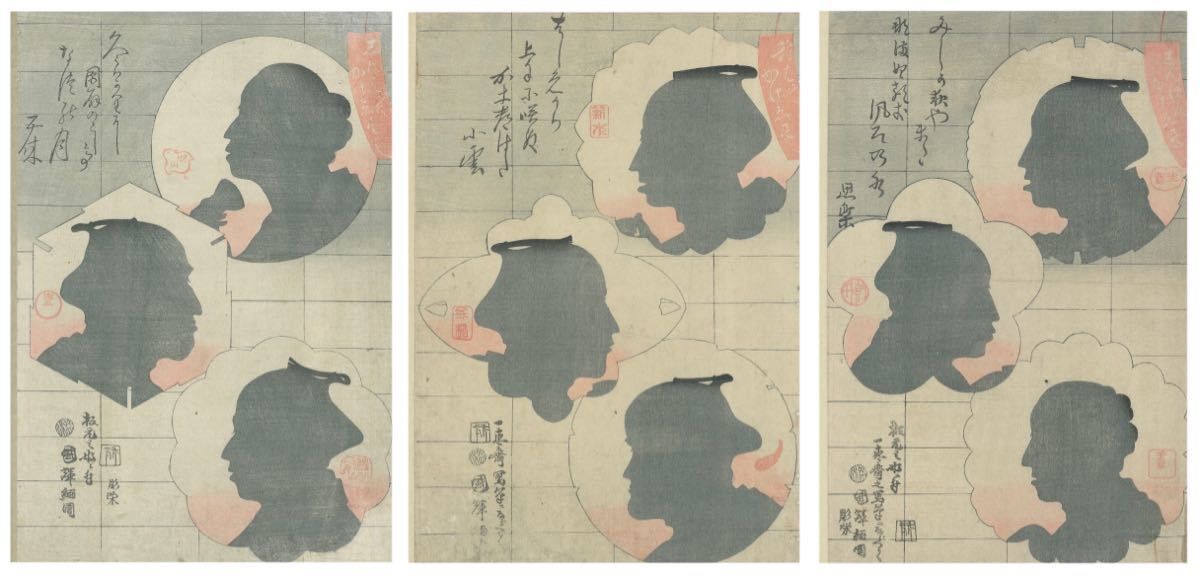
妖怪画 お岩の亡霊◆ 国貞 広重◆江戸時代 木版浮世絵 「江戸乃花名勝会」4枚続き◆お玉ヶ池 お化け提灯 化け狐 鬼火 滝沢馬琴墓
Below: Duchamp 'Network of Stoppages', 1914;
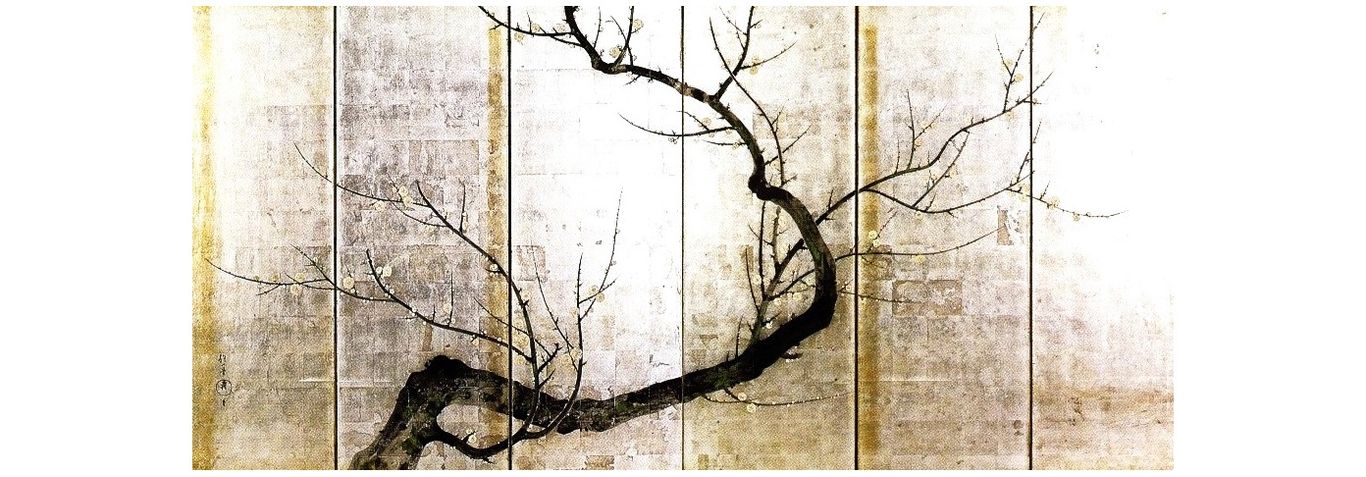
Sakai Hoitsu 1761-1829 "Red and White Plum Blossoms" 酒井 抱一 「 紅白梅図屏風」
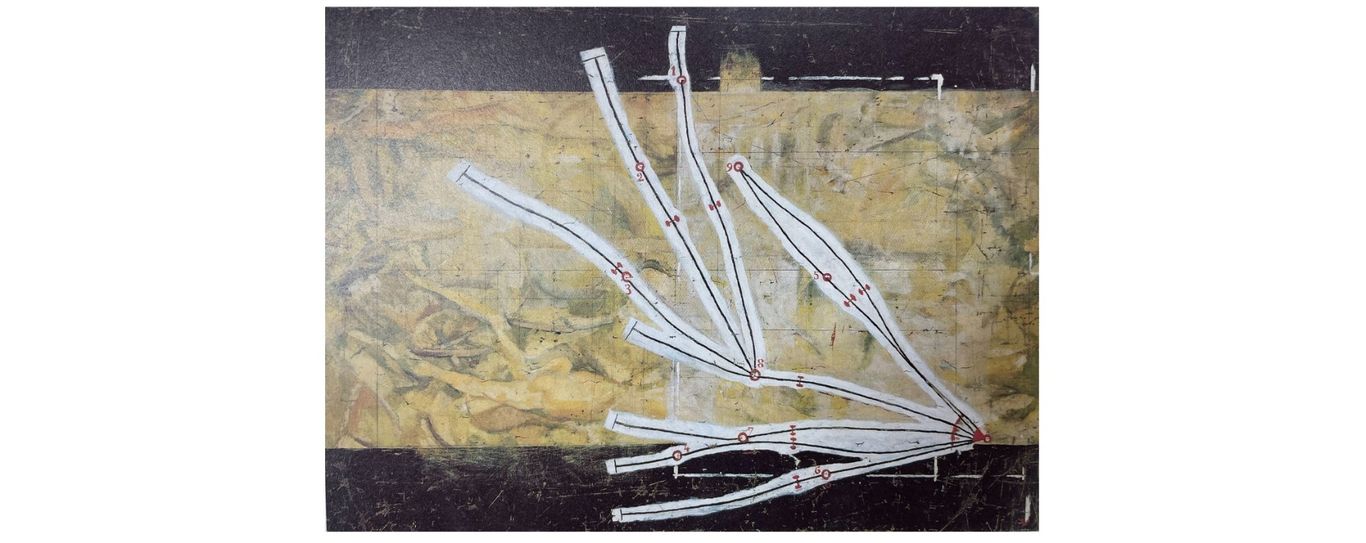
Sakai Hoitsu, Sakura-zu Byobu, Burke Collection 酒井抱一 桜図屏風(1815~20年頃)
.
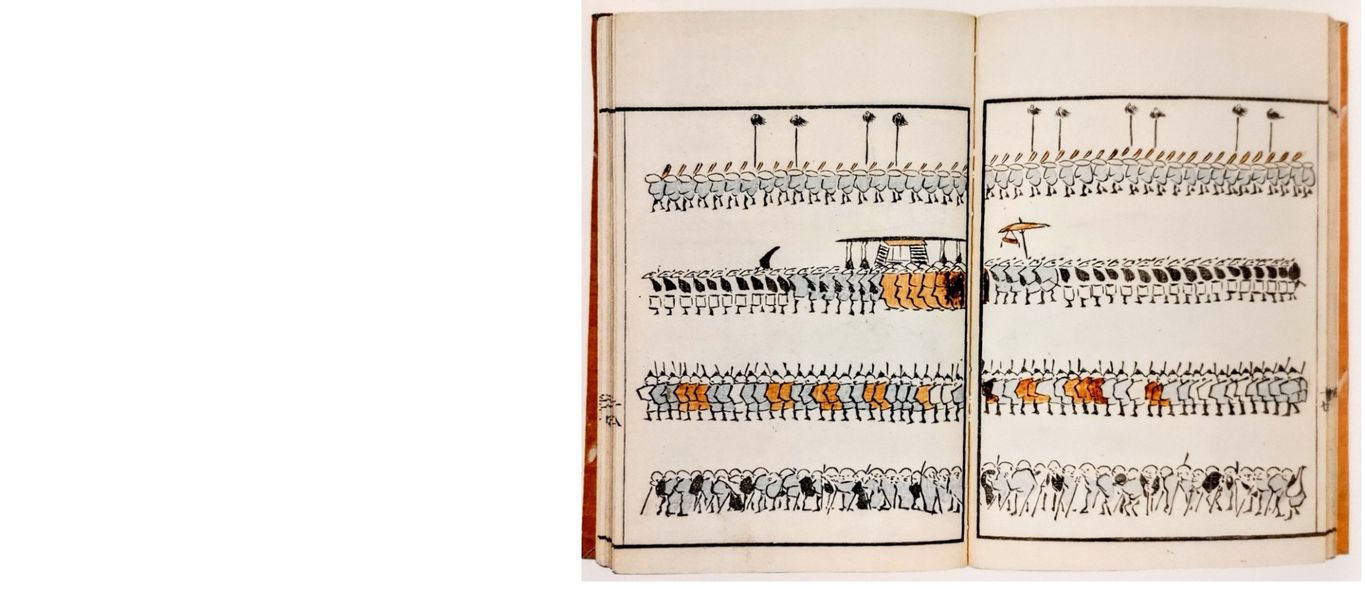
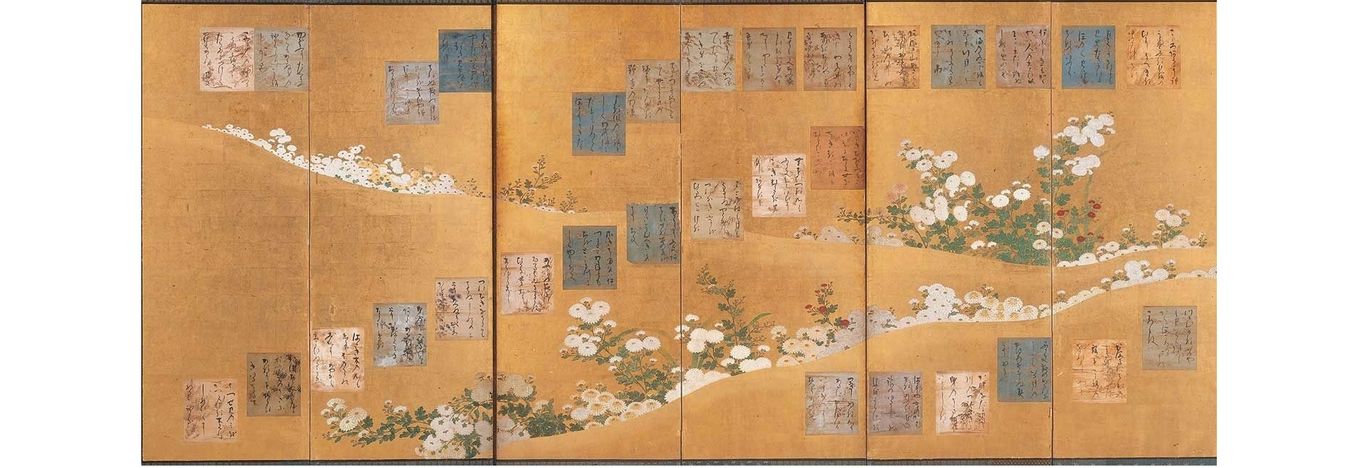

日吉将軍高吉 市川団十郎 高吉の政所 中村福助など 三枚続(役者絵)国周画 植木林之助版 大判三枚続
各紙面37・5×25センチ位 明治17年 1884年

1918
'with my tongue in my cheek' 1959 also shares a similar concept as his work below.
.
Lorem ipsum dolor sit amet, consectetur adipiscing elit. Nulla euismod condimentum felis vitae efficitur. Sed vel dictum quam, at blandit leo.
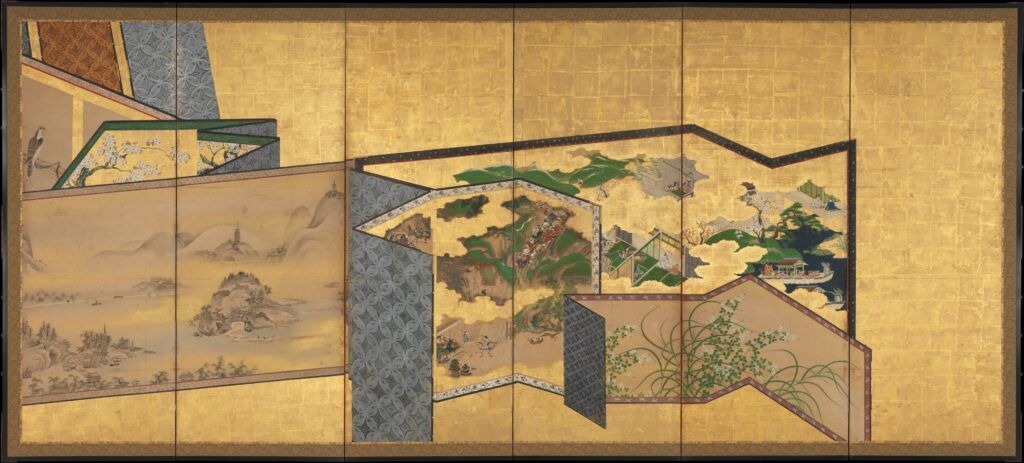
''Screens within Screens' (屏風尽図屏風) 18th century, Metropolitan Museum of Art, New York. One of the MET's screens of which the MET's description is as follows:
"folding screens painted on the screens themselves, which offer a fanciful catalogue of workshop styles practiced in Japan in the 1700s. They relate to two categories of decorative motifs seen on screens, one known as “Whose Sleeves?” and the other as “Scattered Fans.” Screens of the first type feature variously patterned kimono draped over lacquer racks; those in the latter category are decorated with fans that have themselves been embellished with pictures. In a nod to the “Scattered Fans” genre, one of the replica screens seen here features fans decorated with a range of motifs, from vegetables and insects to episodes from courtly narratives.
Lorem ipsum dolor sit amet, consectetur adipiscing elit. Nulla euismod condimentum felis vitae efficitur. Sed vel dictum quam, at blandit leo.
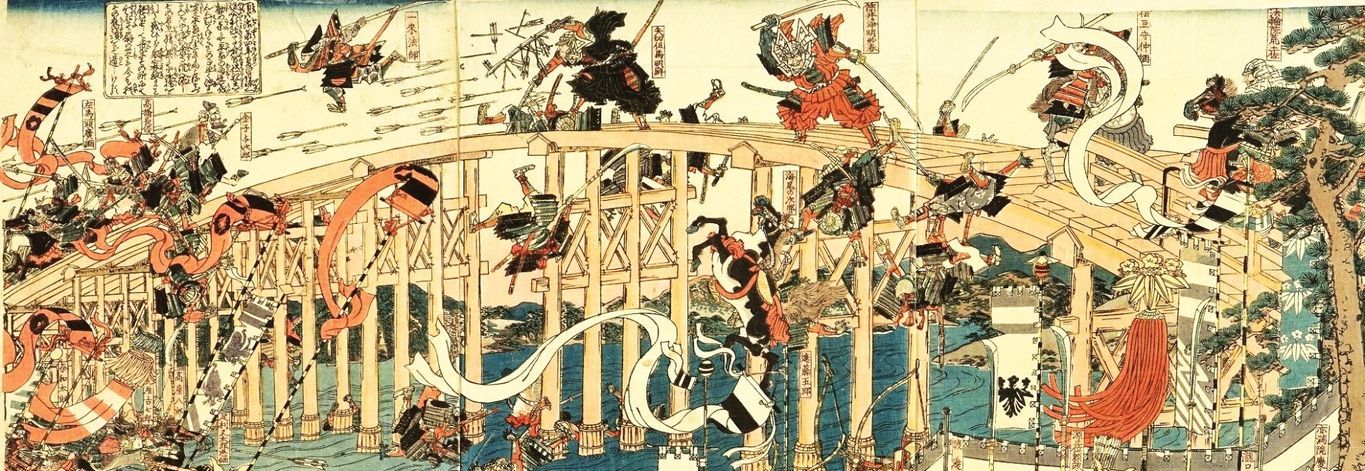
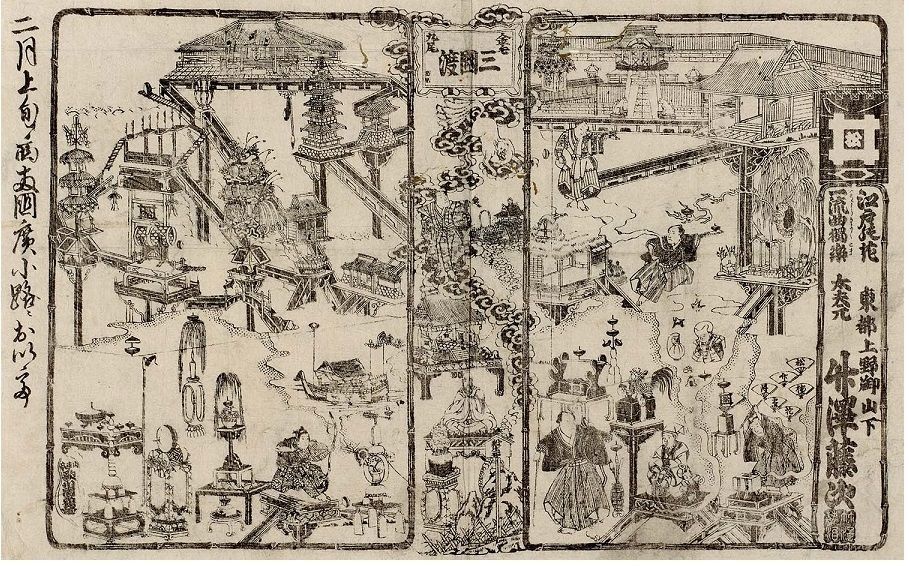
Lorem ipsum dolor sit amet, consectetur adipiscing elit. Nulla euismod condimentum felis vitae efficitur. Sed vel dictum quam, at blandit leo.
Spinning tops, spheres, wheels, umbrellas or disks, whirling apparatus, rolling balls triggering chain reactions, interconnected contraptions, ladders, balancing ropes, stacked objects, etc. Popular with the leading daidogei artists of the time, such as Hayatake Torakichi, Naniwa Matsunosuke, and depicted by the most popular Utagawa ukiyoe school artists such as Kuniyoshi, Kunisada, as well as Yoshiharu, Sadafusa, and later by Kyosai
Lorem ipsum dolor sit amet, consectetur adipiscing elit. Nulla euismod condimentum felis vitae efficitur. Sed vel dictum quam, at blandit leo.
Lorem ipsum dolor sit amet, consectetur adipiscing elit. Nulla euismod condimentum felis vitae efficitur. Sed vel dictum quam, at blandit leo.
Lorem ipsum dolor sit amet, consectetur adipiscing elit. Nulla euismod condimentum felis vitae efficitur. Sed vel dictum quam, at blandit leo.
Lorem ipsum dolor sit amet, consectetur adipiscing elit. Nulla euismod condimentum felis vitae efficitur. Sed vel dictum quam, at blandit leo.
Lorem ipsum dolor sit amet, consectetur adipiscing elit. Nulla euismod condimentum felis vitae efficitur. Sed vel dictum quam, at blandit leo.
Lorem ipsum dolor sit amet, consectetur adipiscing elit. Nulla euismod condimentum felis vitae efficitur. Sed vel dictum quam, at blandit leo.
"The gospel of elimination preached by the [Japanese] print came home to me in architecture as it came home to the French painters who developed Futurism and Cubism. Intrinsically, it lies at the bottom of all this so-called Modernism. Strangely unnoticed, uncredited."
Frank Lloyd Wright, The Japanese Print -- an Interpretation (1967), p. 91
Lorem ipsum dolor sit amet, consectetur adipiscing elit. Nulla euismod condimentum felis vitae efficitur. Sed vel dictum quam, at blandit leo.
Lorem ipsum dolor sit amet, consectetur adipiscing elit. Nulla euismod condimentum felis vitae efficitur. Sed vel dictum quam, at blandit leo.

